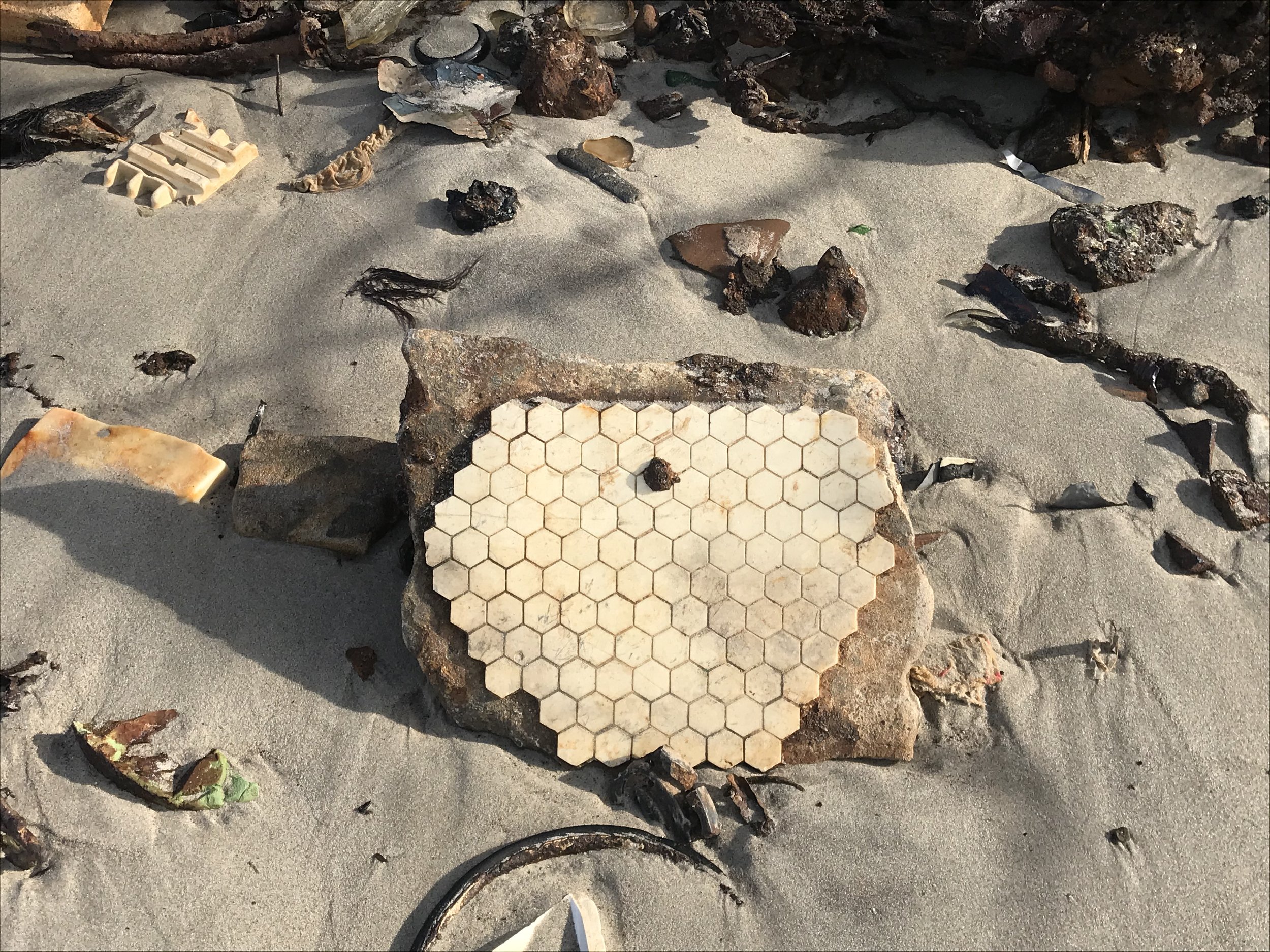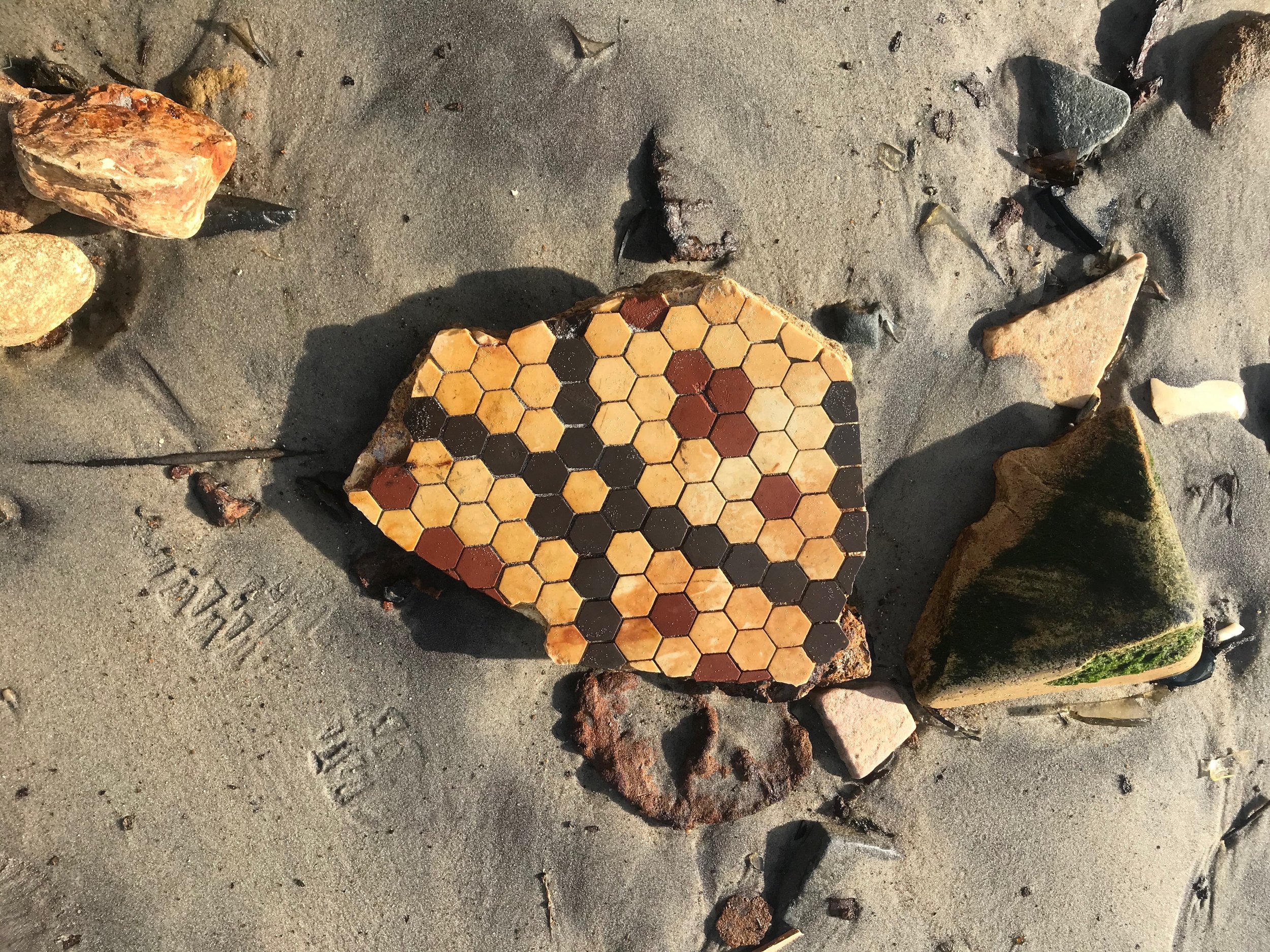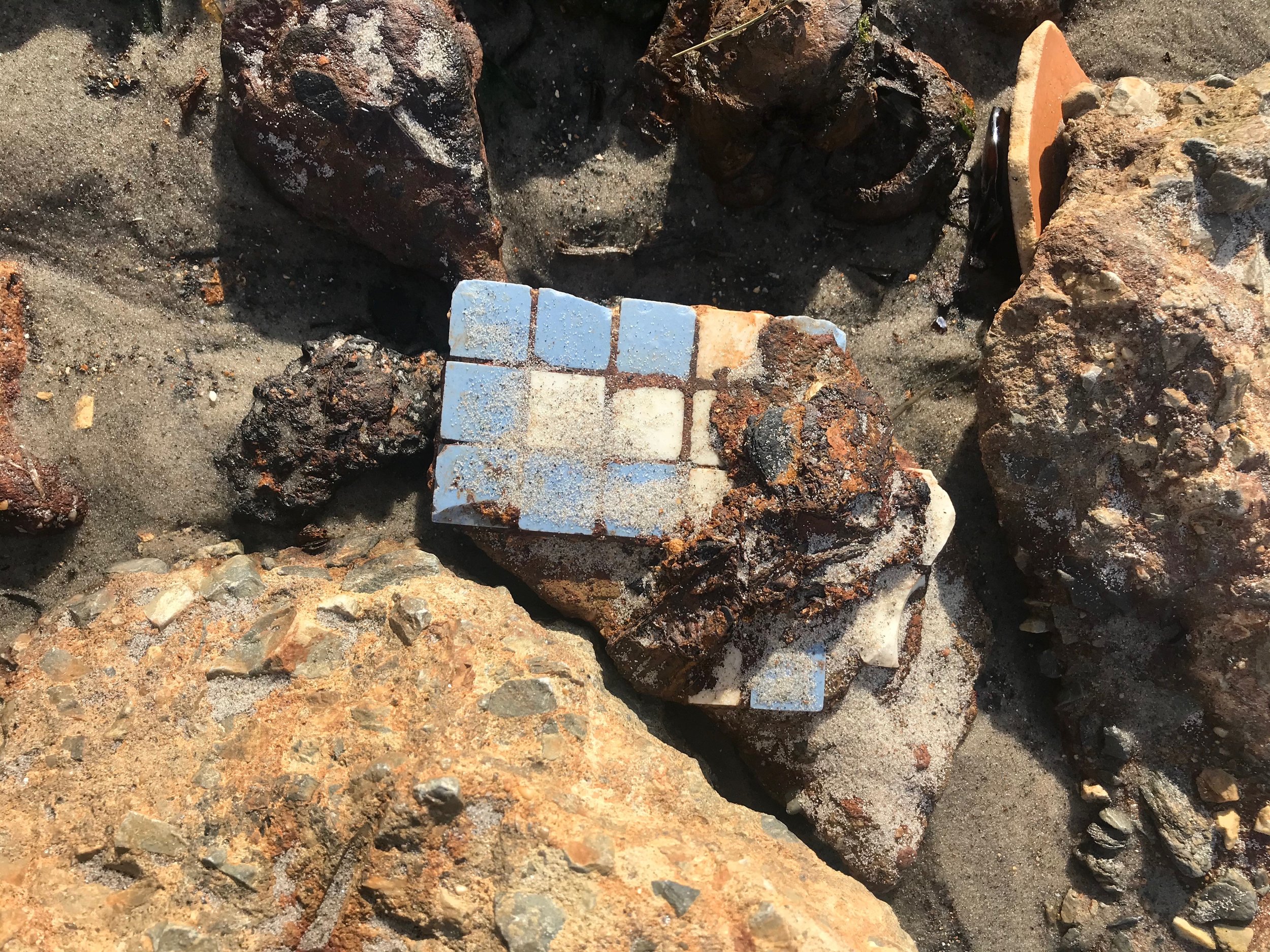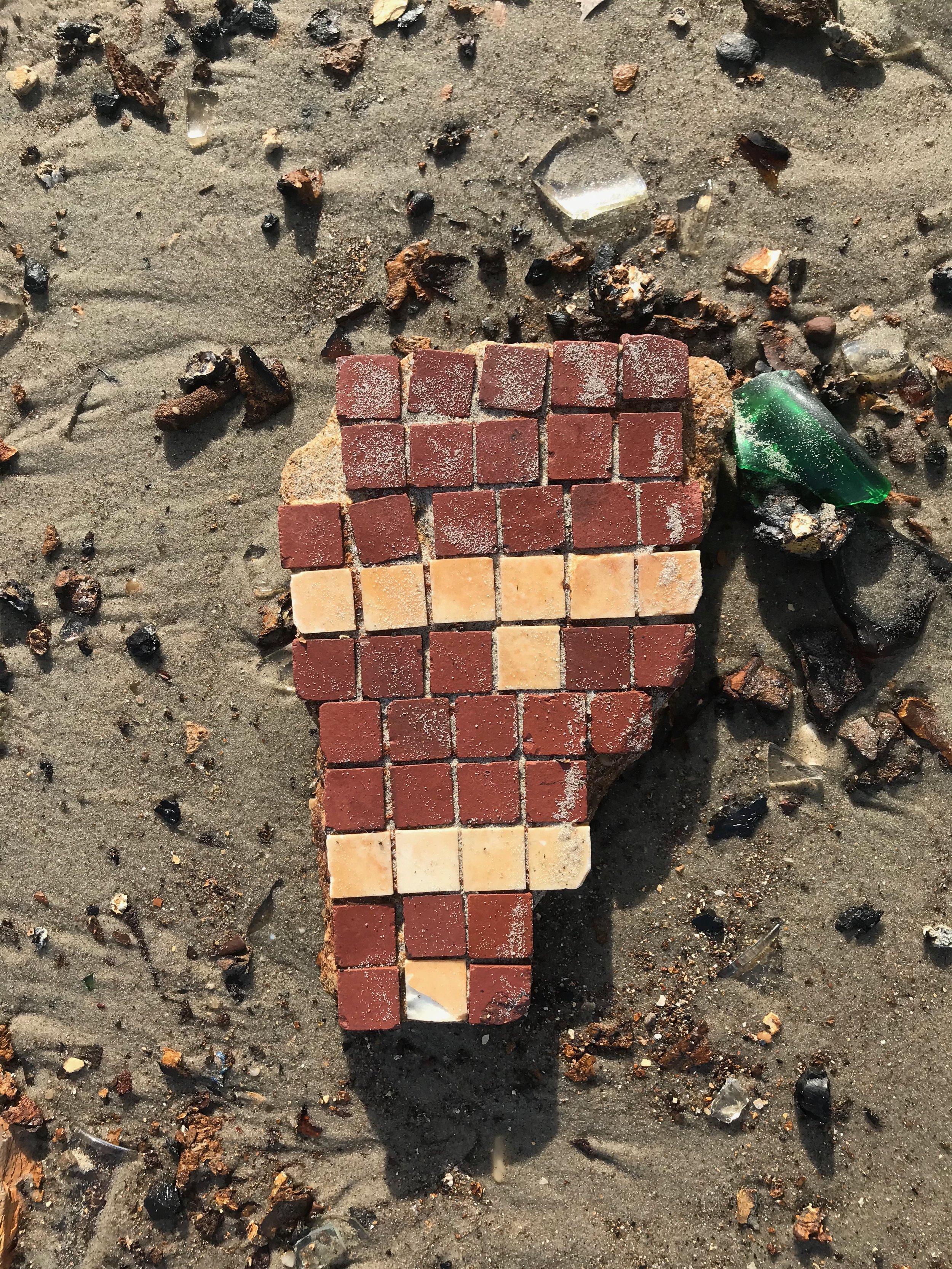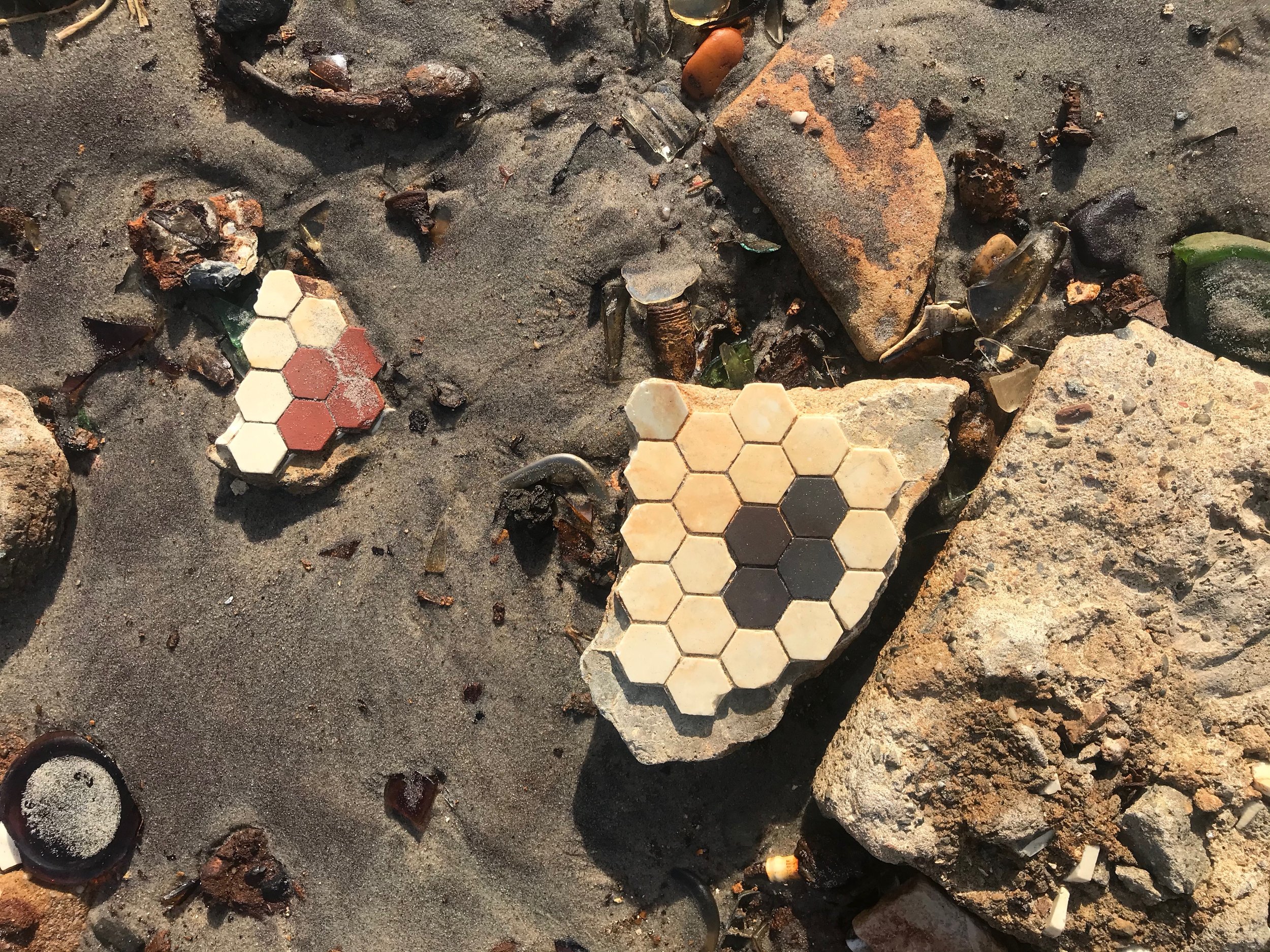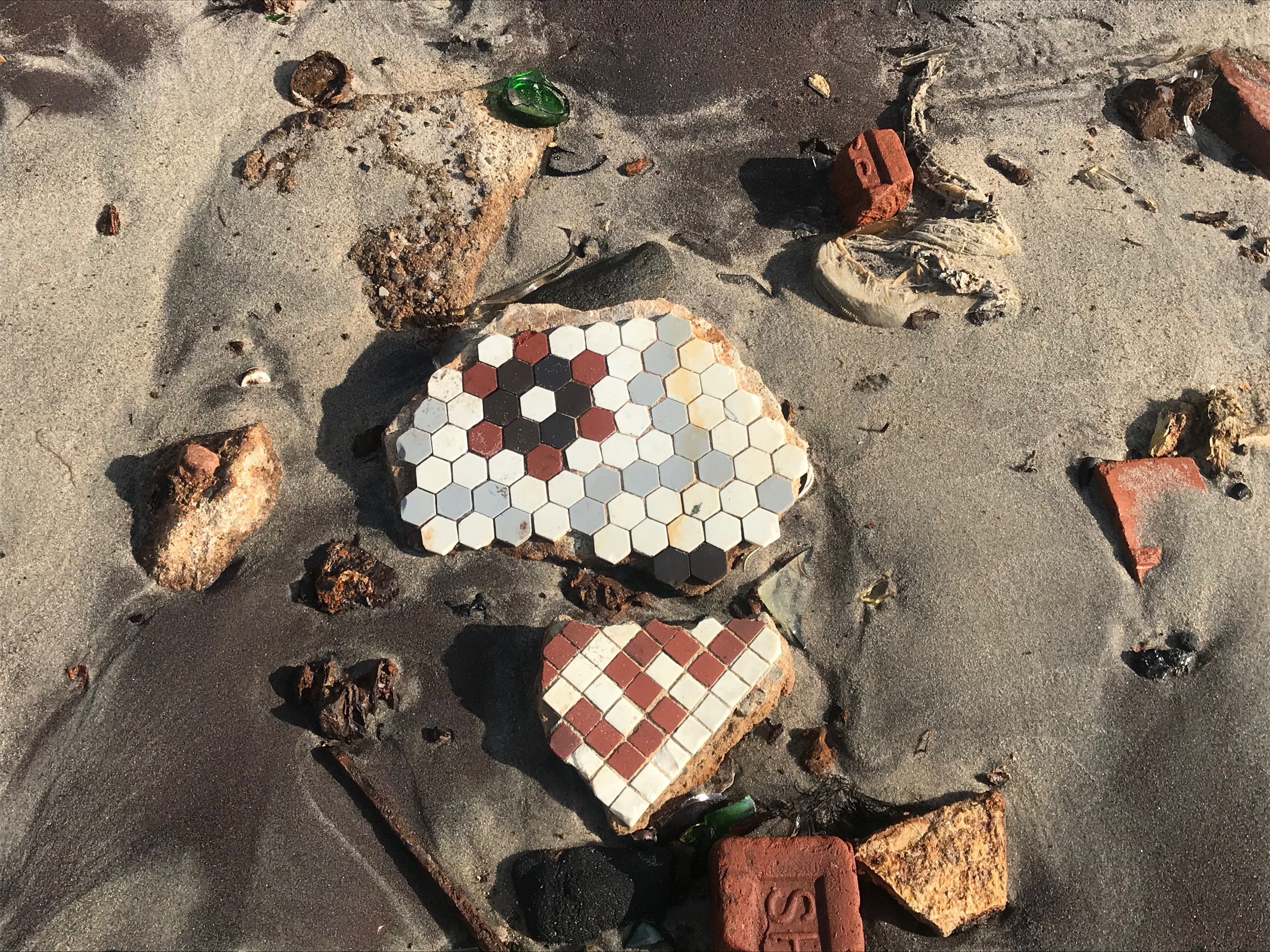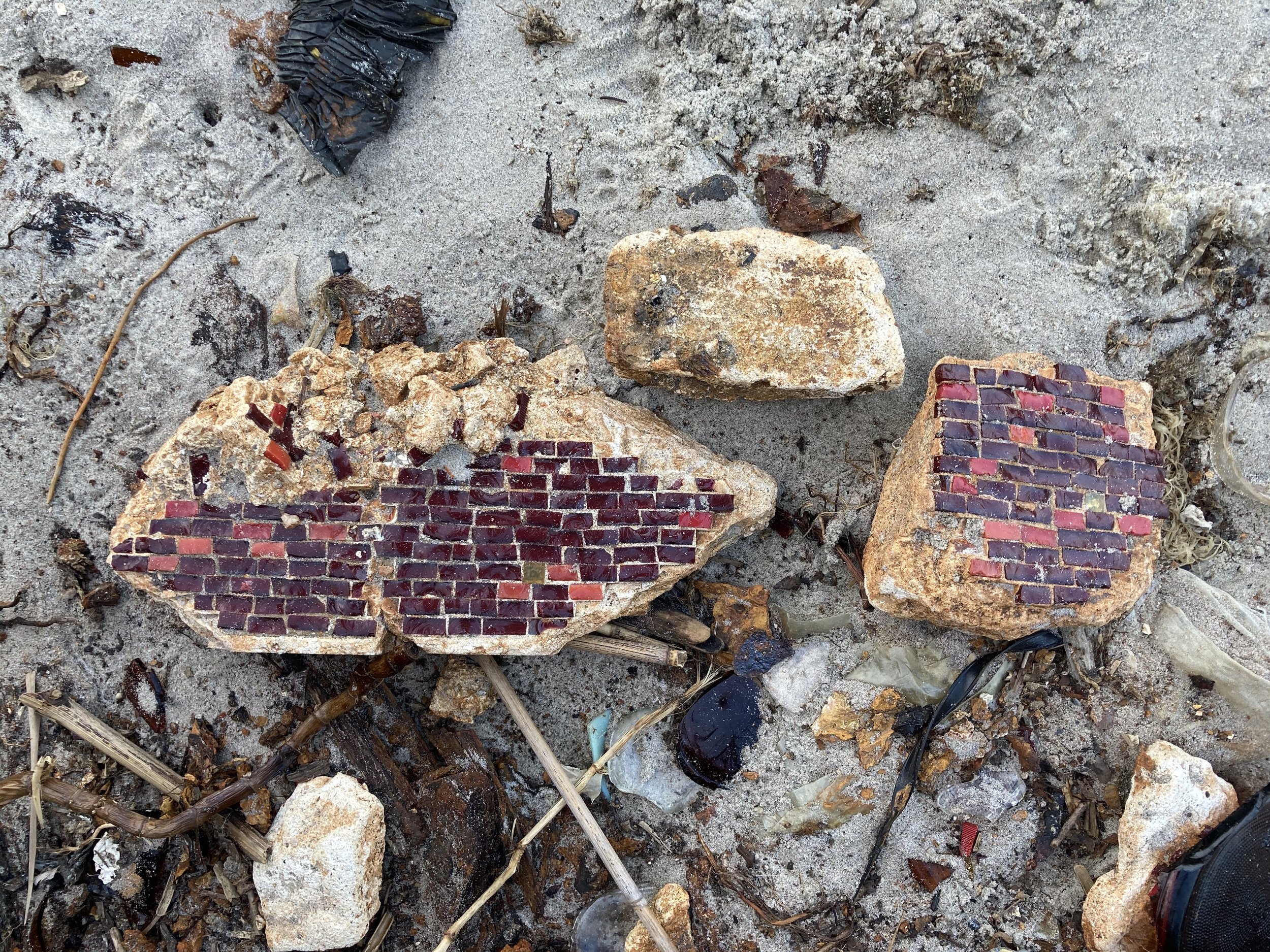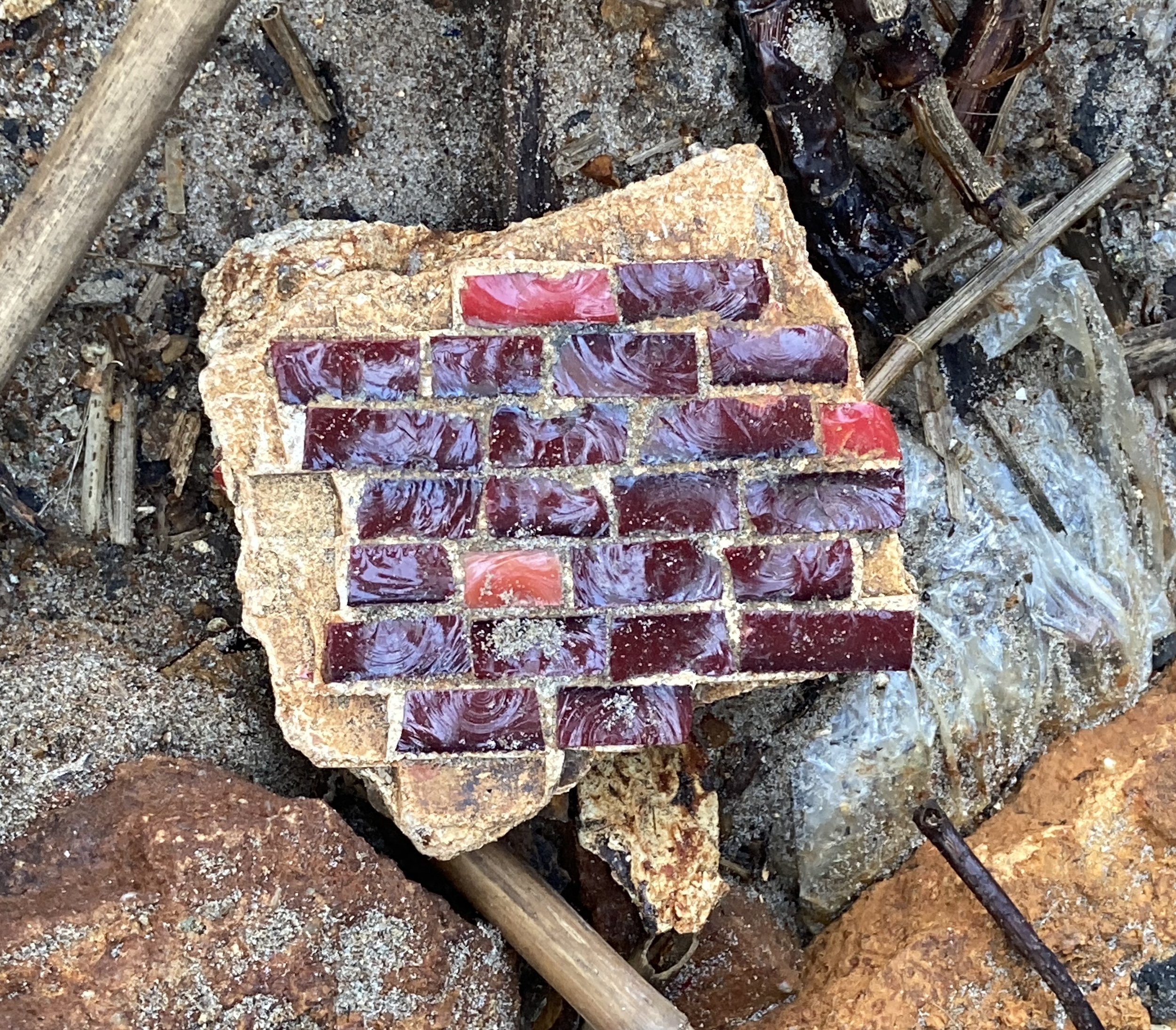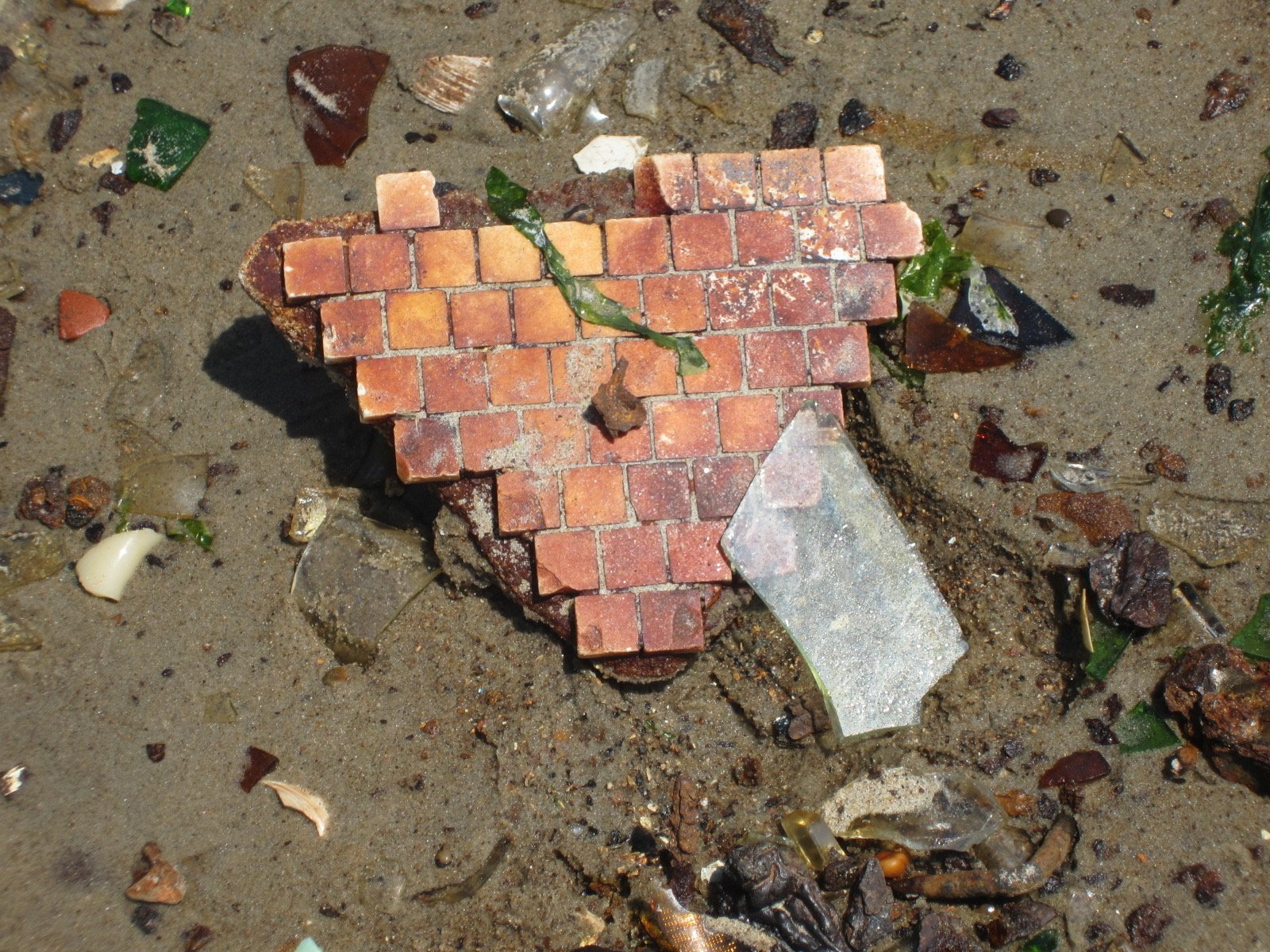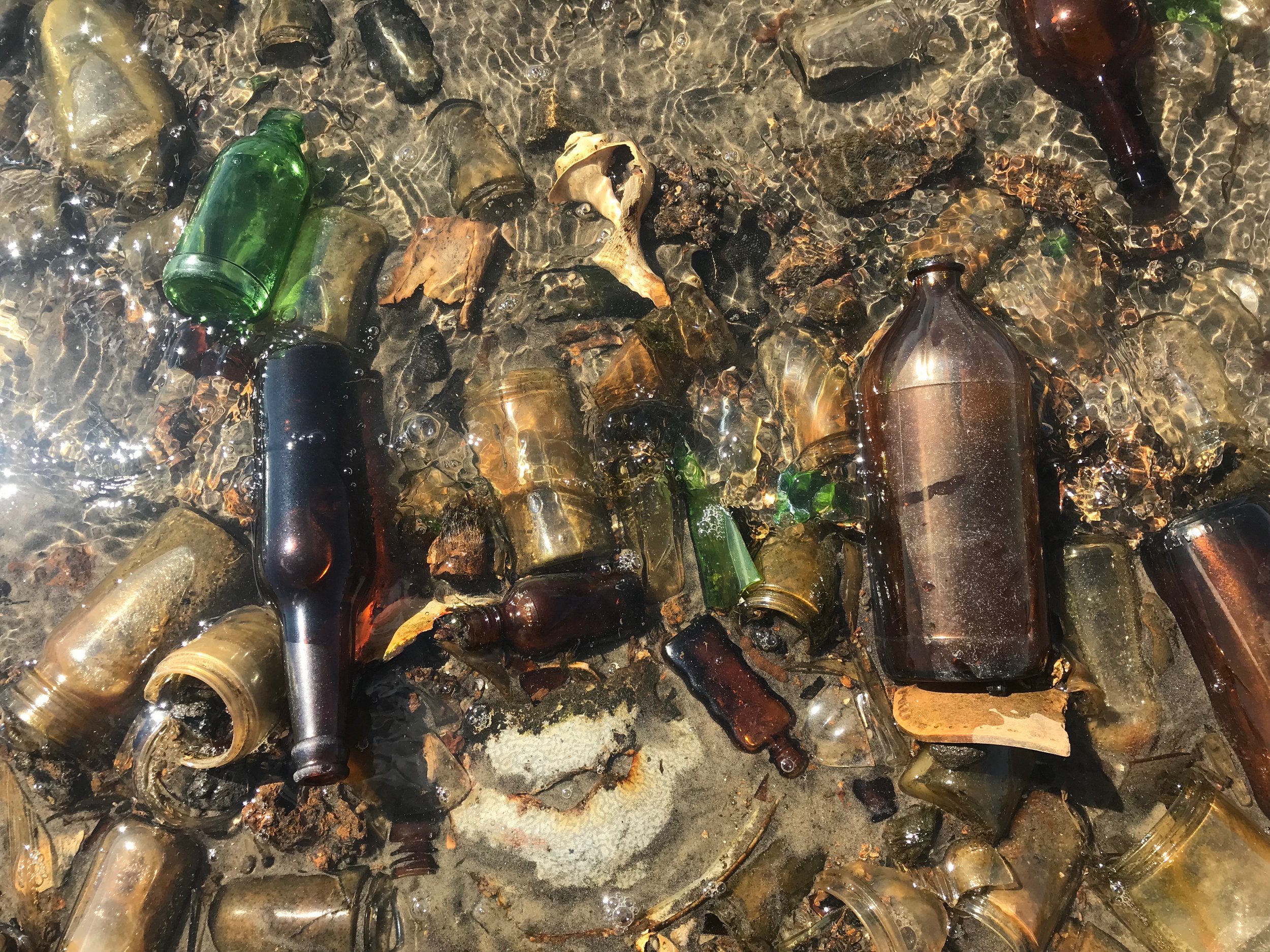
On the Brooklyn side of the Marine Parkway Bridge, a tiny wild patch of woods can be seen from Flatbush Avenue.
Until recently, you could walk on a path through these woods to a hidden beach covered with garbage. Sounds gross! In fact, Dead Horse Bay, a.k.a. Glass Bottle Beach, is a unique trove of historical artifacts that have settled (and unsettled) among snails, blue crabs, whelks, razor clams, quahogs, and seaweed, embodying the daily life of New Yorkers circa 1952.
Like many places on the edges of New York City, Glass Bottle Beach lies atop a landfill, placed there to solidify and extend the natural coastline. Unlike most such landfills, this one was not properly capped, and its contents have been rising up from beneath the surface since the 1980s. A seemingly inexhaustible supply of bottles, shoes, china, stockings, floor tile, electrical sockets, toothbrushes, newspapers, and even intact light bulbs and motor vehicles make their way slowly from underground, down the beach, and into the sea. Mixed among them are pieces of horse bone from the factories of Barren Island.
These mundane objects tell the stories of the New Yorkers of seventy years ago—their tastes in food and beverages, their shoe styles, their predilection for chlorophyll toothpaste, and the dishes they ate off. In recent years, the discovery of radioactive materials from boat deck markers has forced the closure of the beach as it awaits a Superfund cleanup.
You can explore these artifacts in my photos below, and if you feel so moved, please read a letter I have written to the authorities in charge of the cleanup, explaining why it is so important that artifacts be preserved.
Click to read the petition
Click to sign the petition
Bones
Some of the bones found on the beach date back to the days of Barren Island , when thousands of dead horses were processed into a wide variety of products. The horse factories operated from the 1850s until 1934, so these bones are old! Other bones found on the beach come from fish and other animals that have died there.
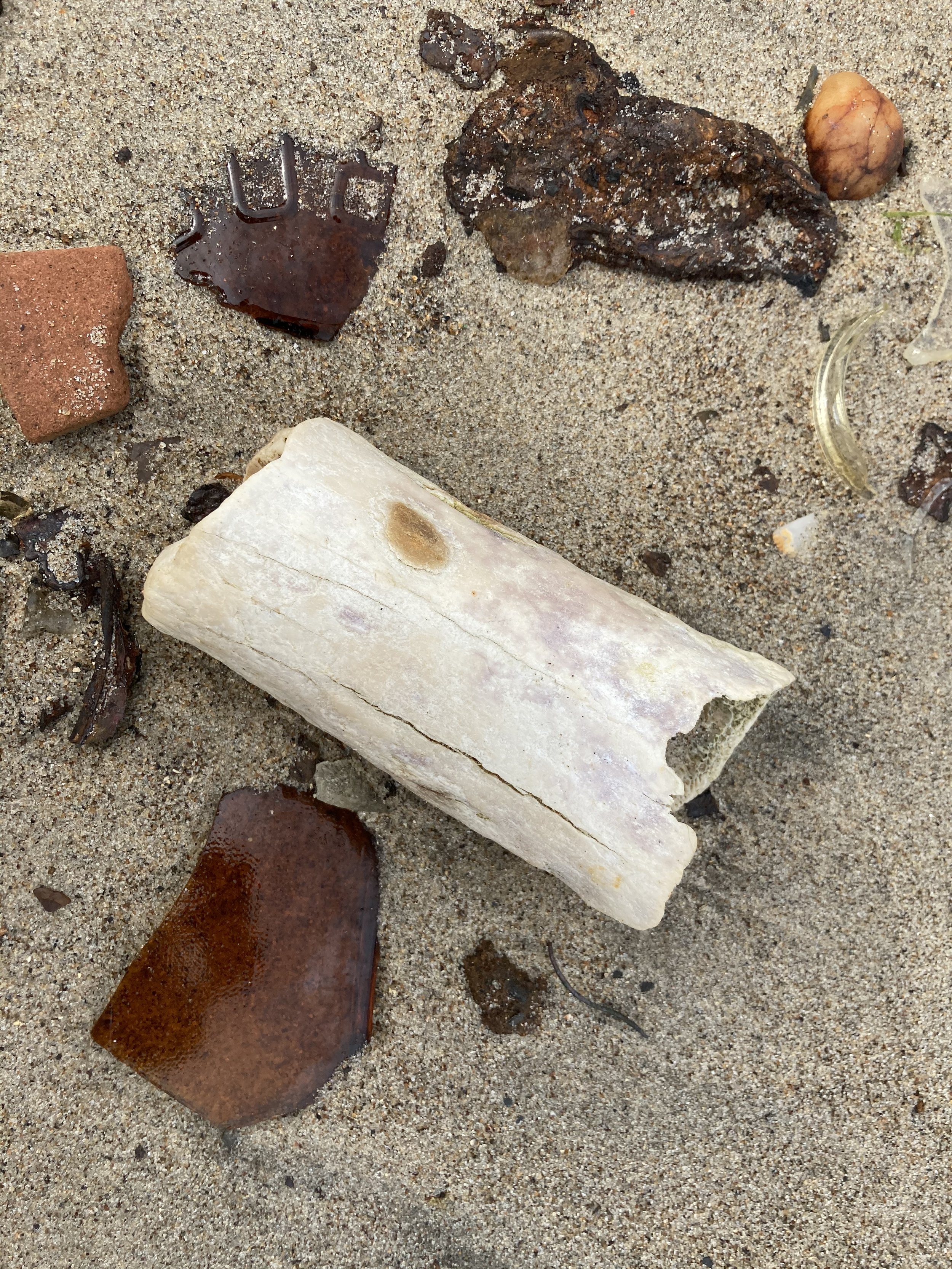
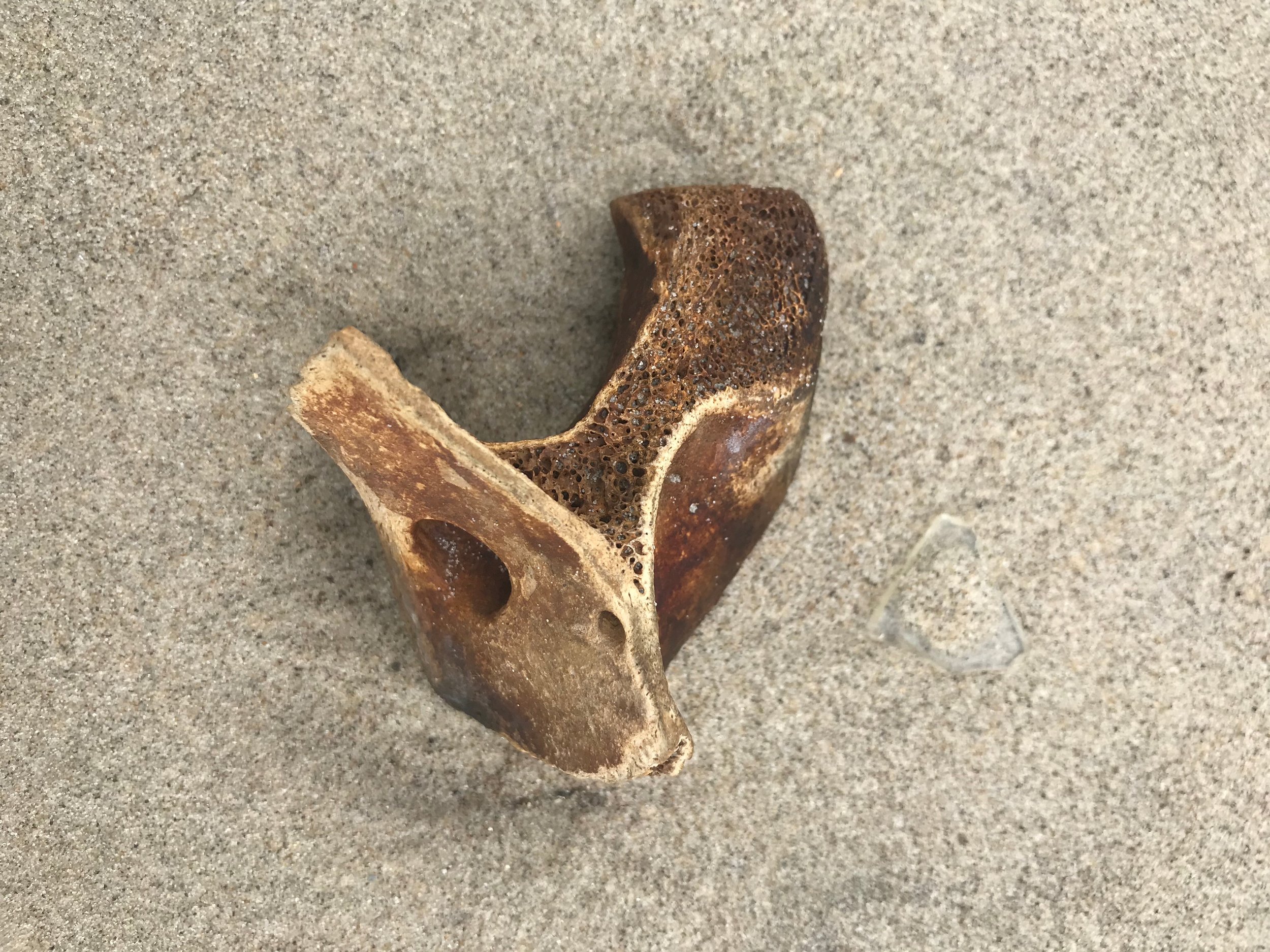
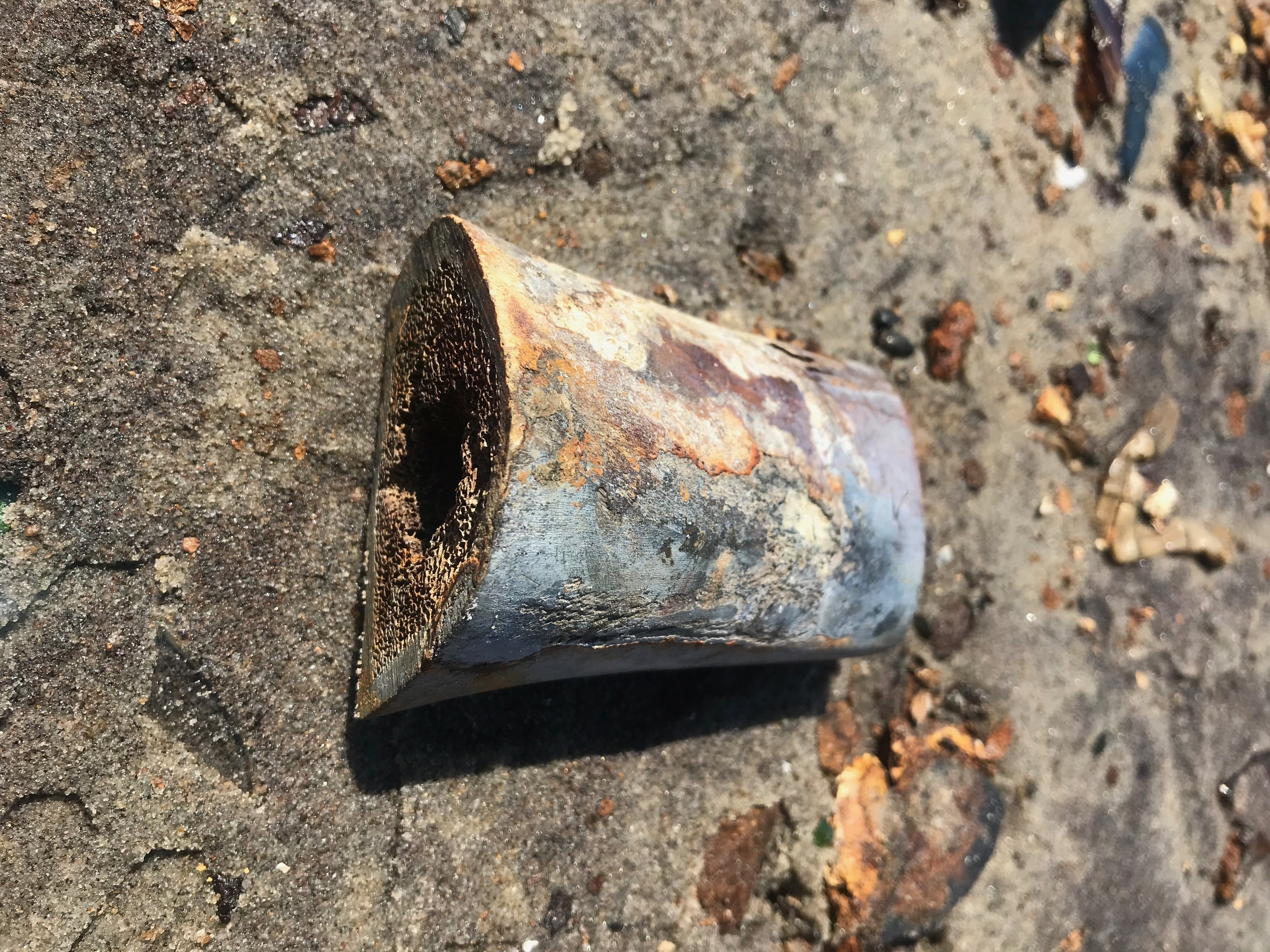
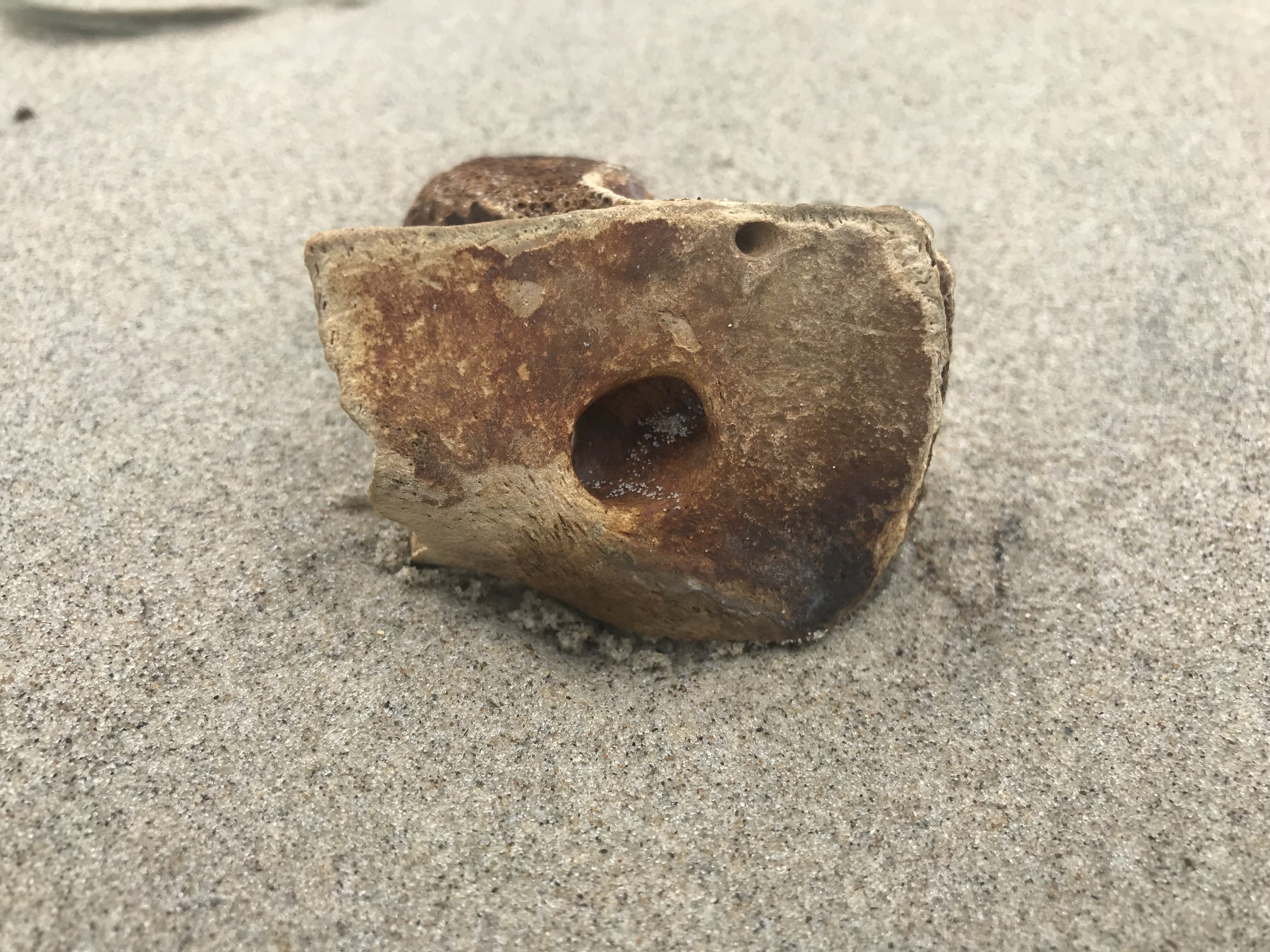

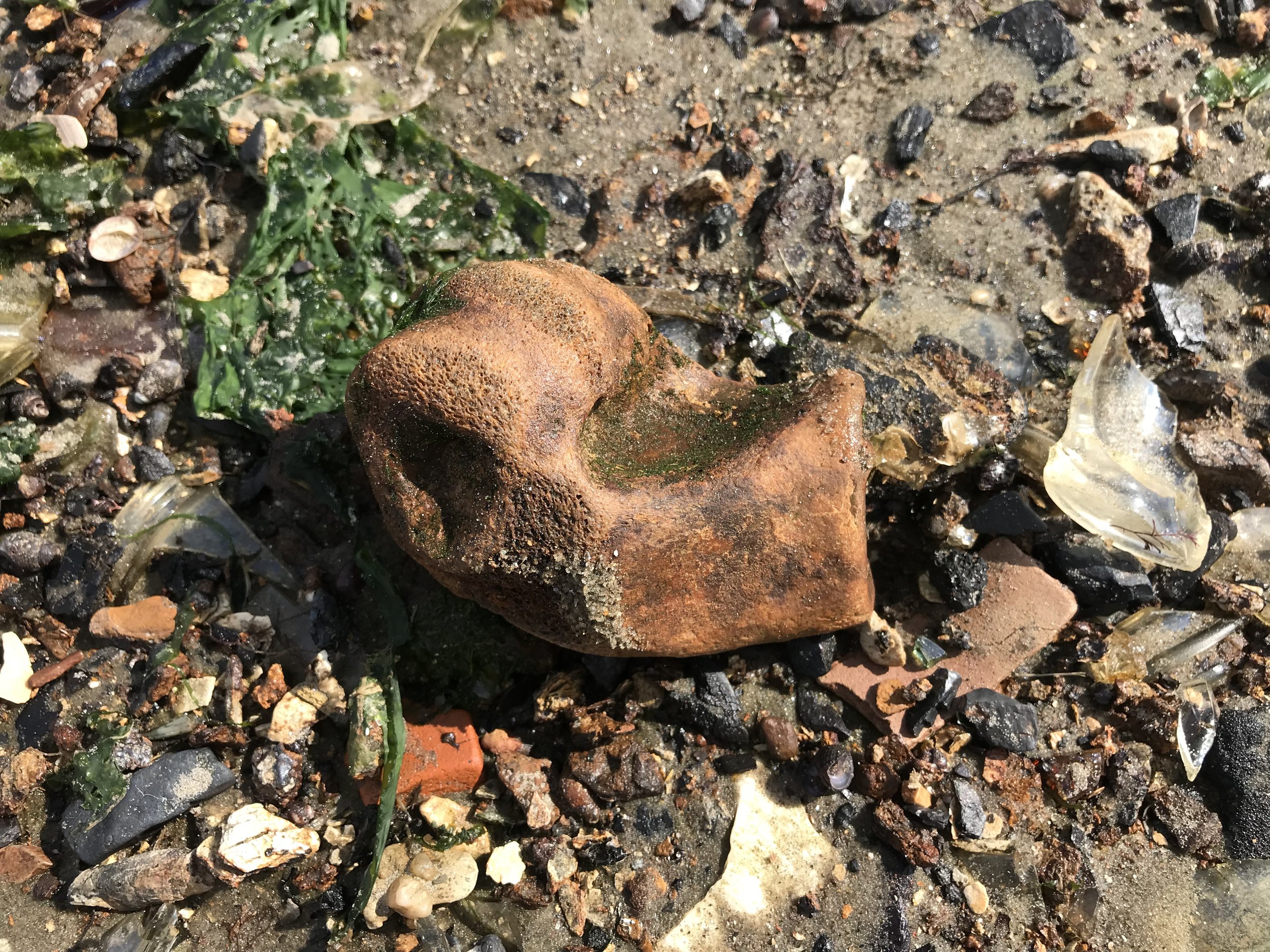
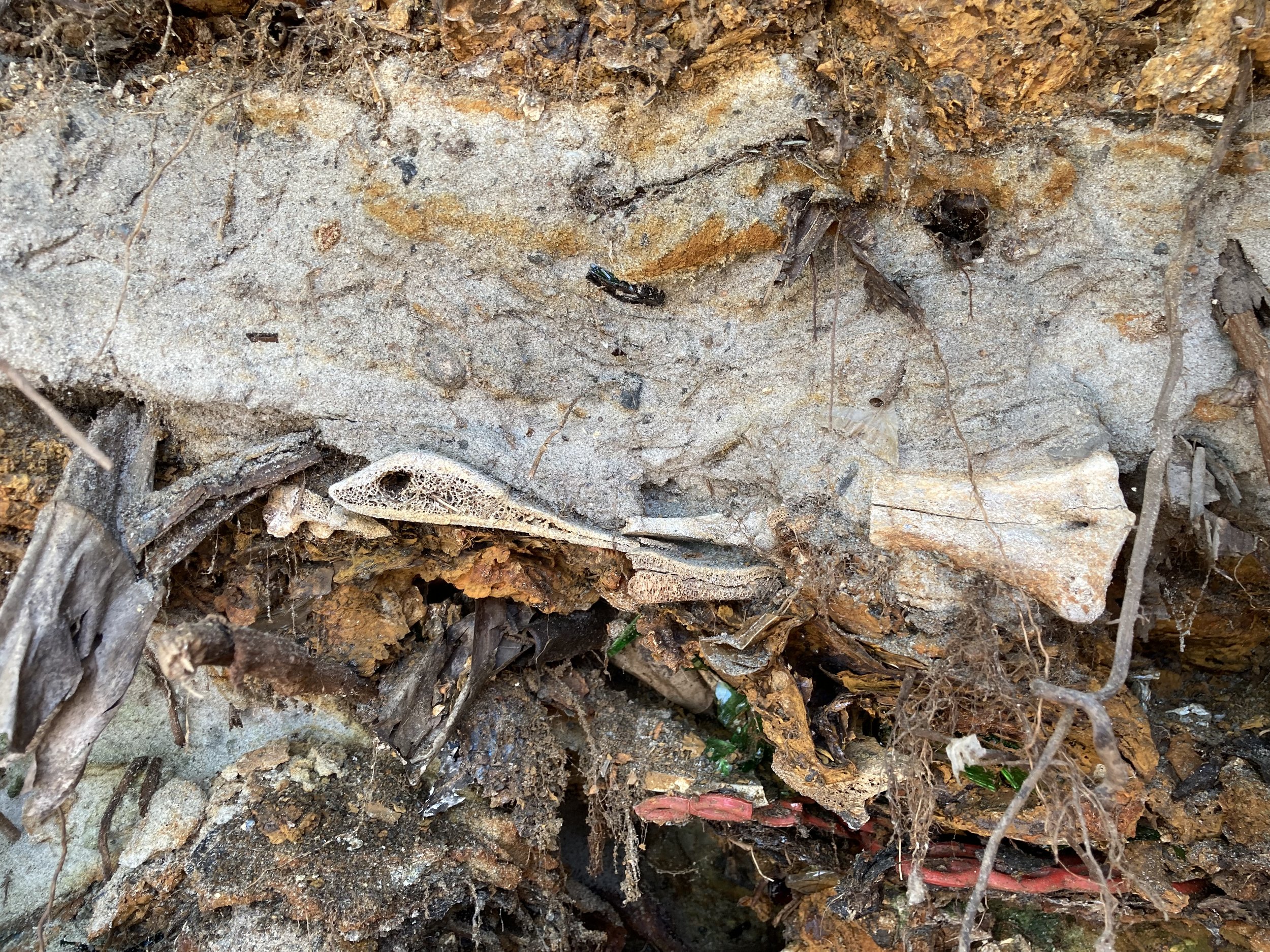
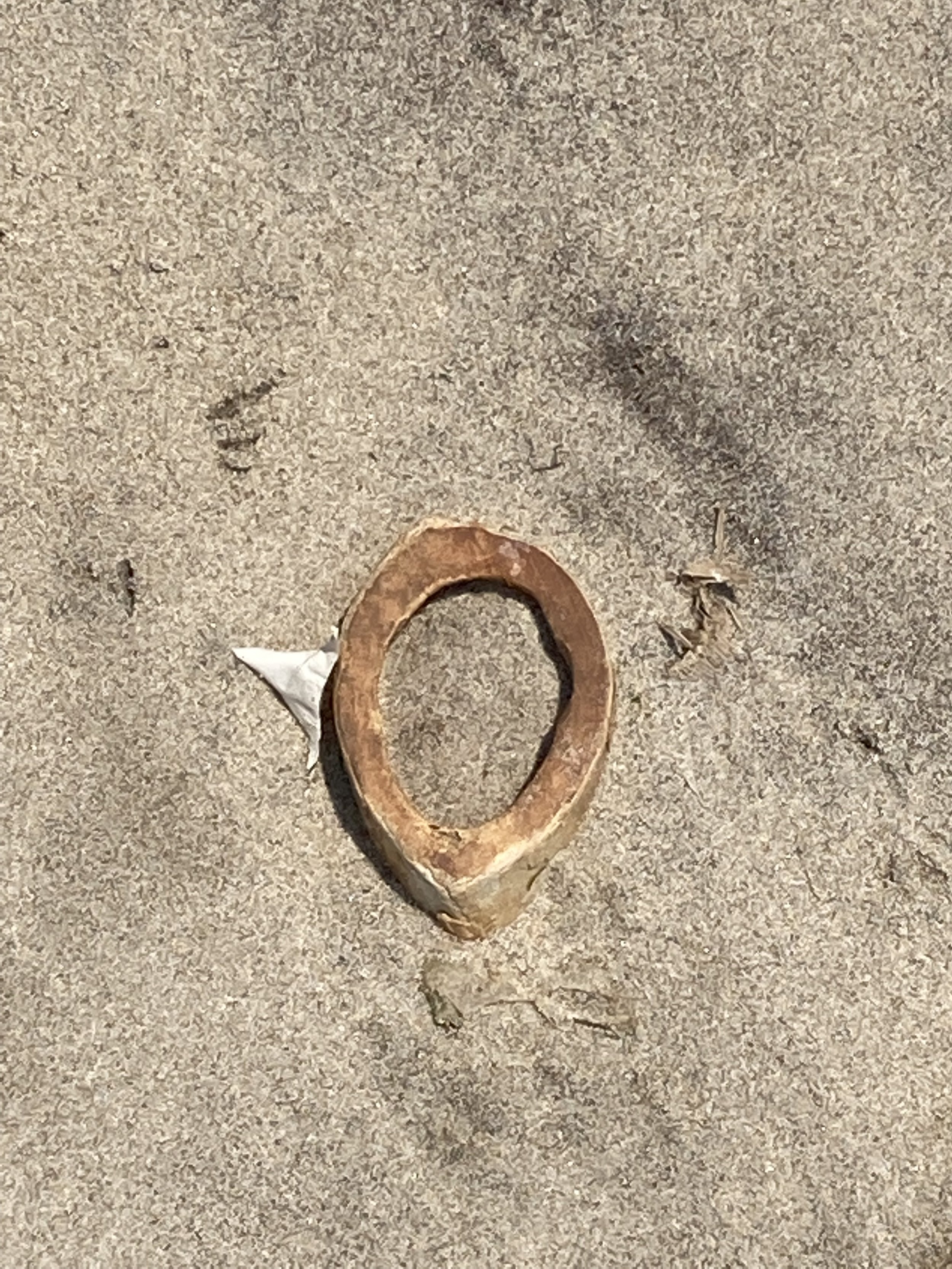
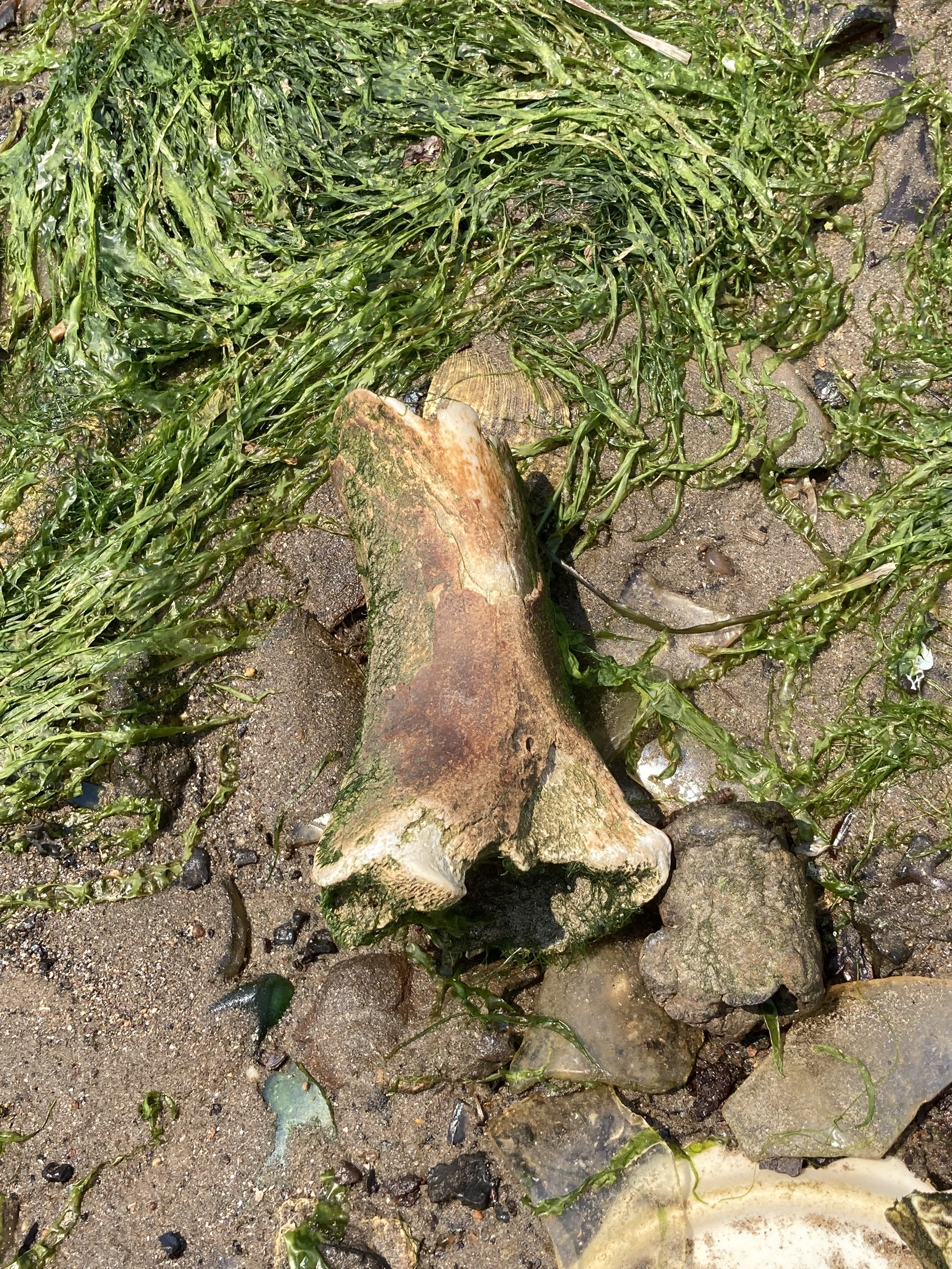
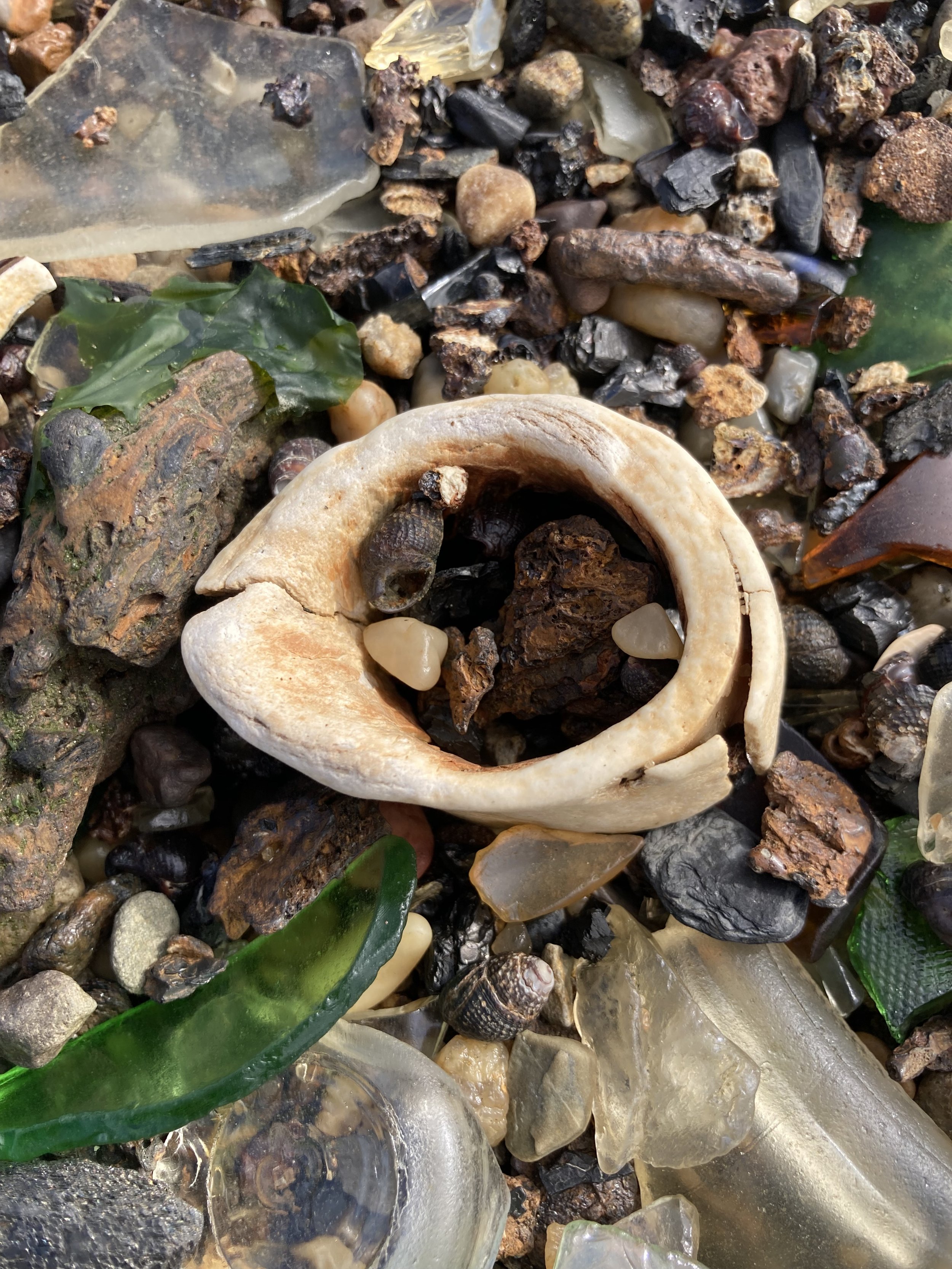
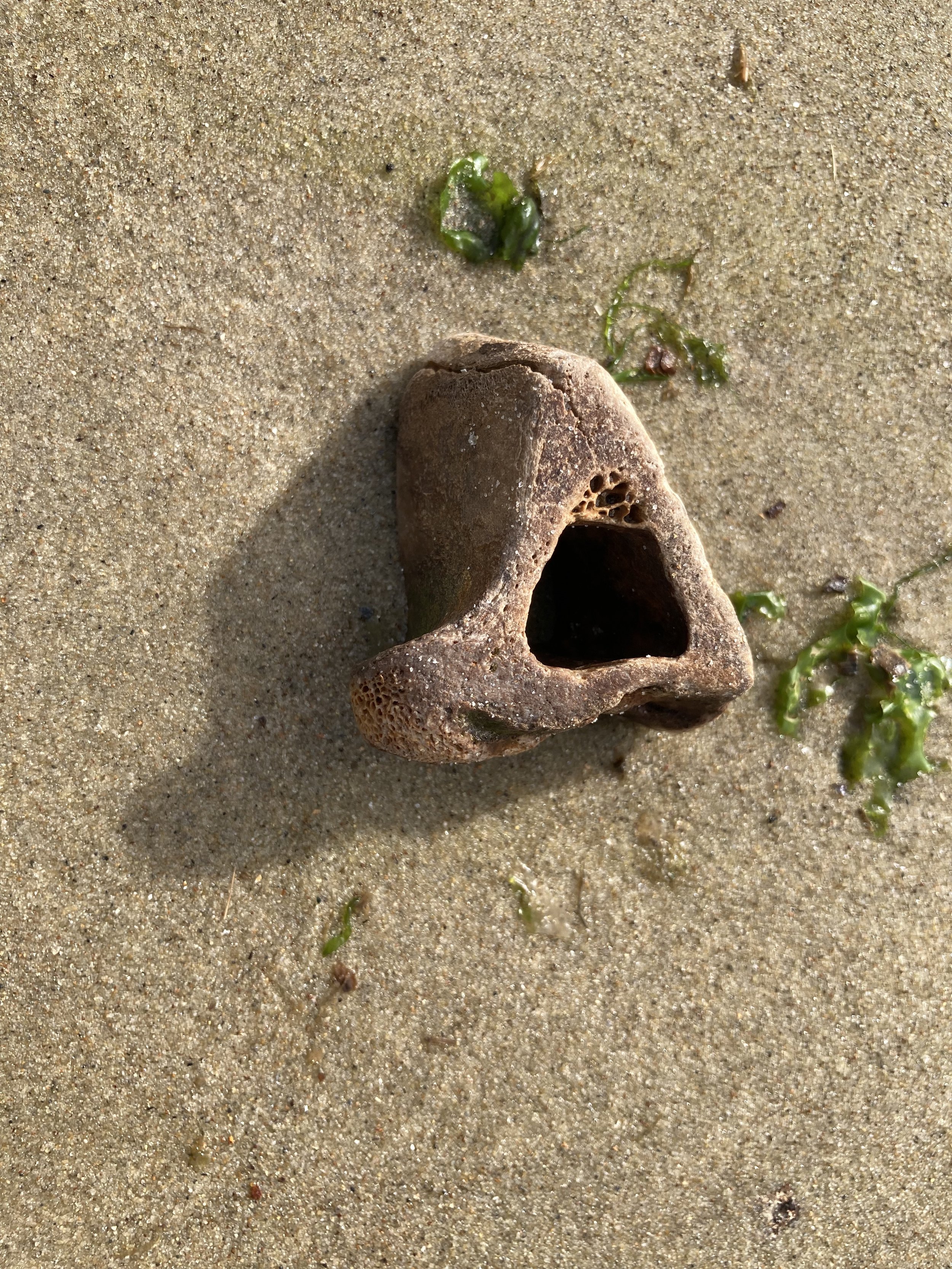

Bottles + Jars
Some people call this beach Glass Bottle Beach, and it’s easy to see why. Bottles are by far the most numerous and visible of the items on the beach. From tiny bottles that once held nail polish, to hefty containers of Clorox and Rose-X cleanser, there are bottles of every shape, color, and size, and they tend to accumulate in groups that are similar to each other. Quite a few can teach us about long-lost beverage companies, many headquartered in Brooklyn. Certain areas of the beach have little colonies of white cold cream jars. The sounds that bottles make as they clink together in the shallows can be relaxing and musical.
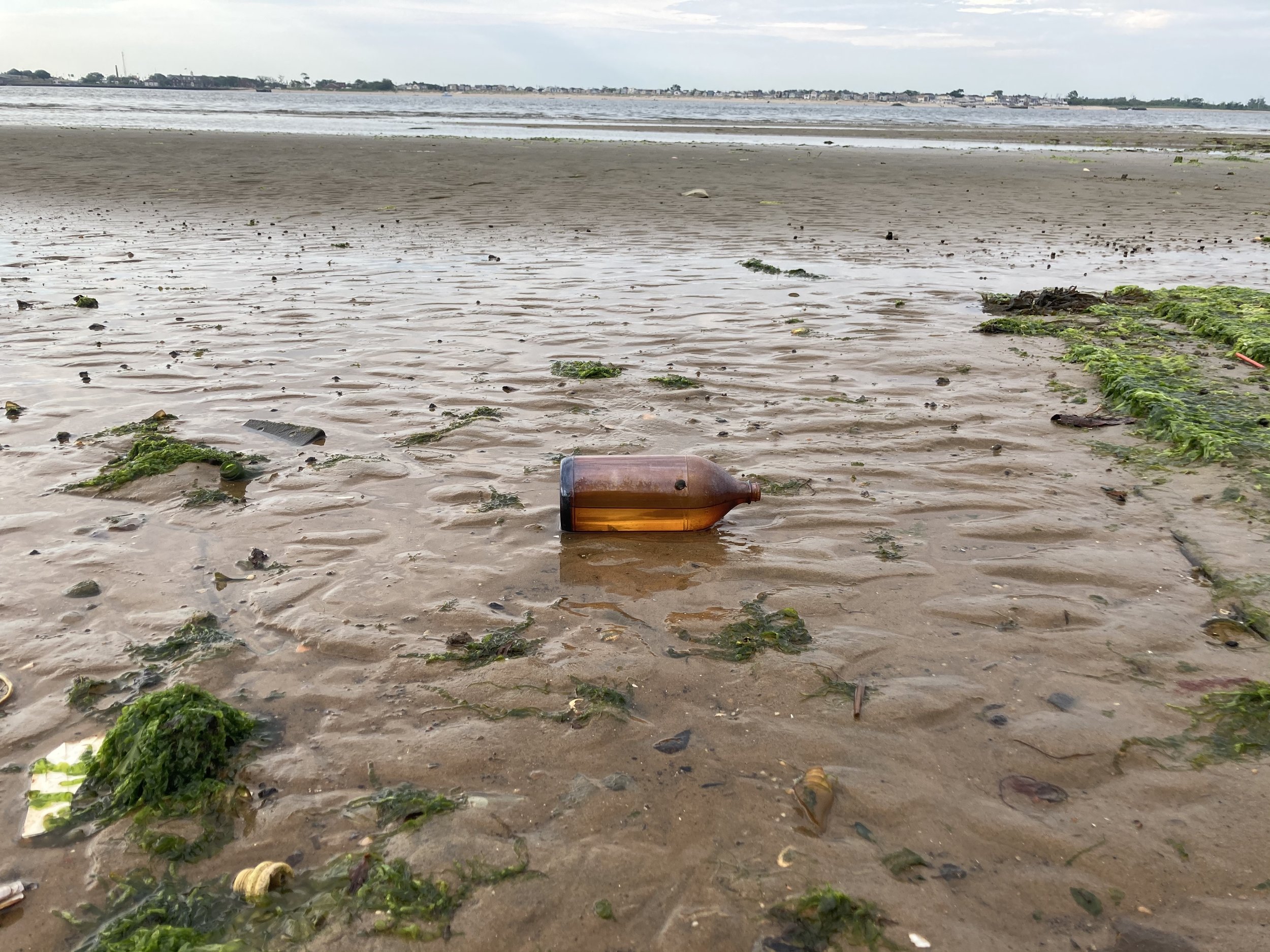

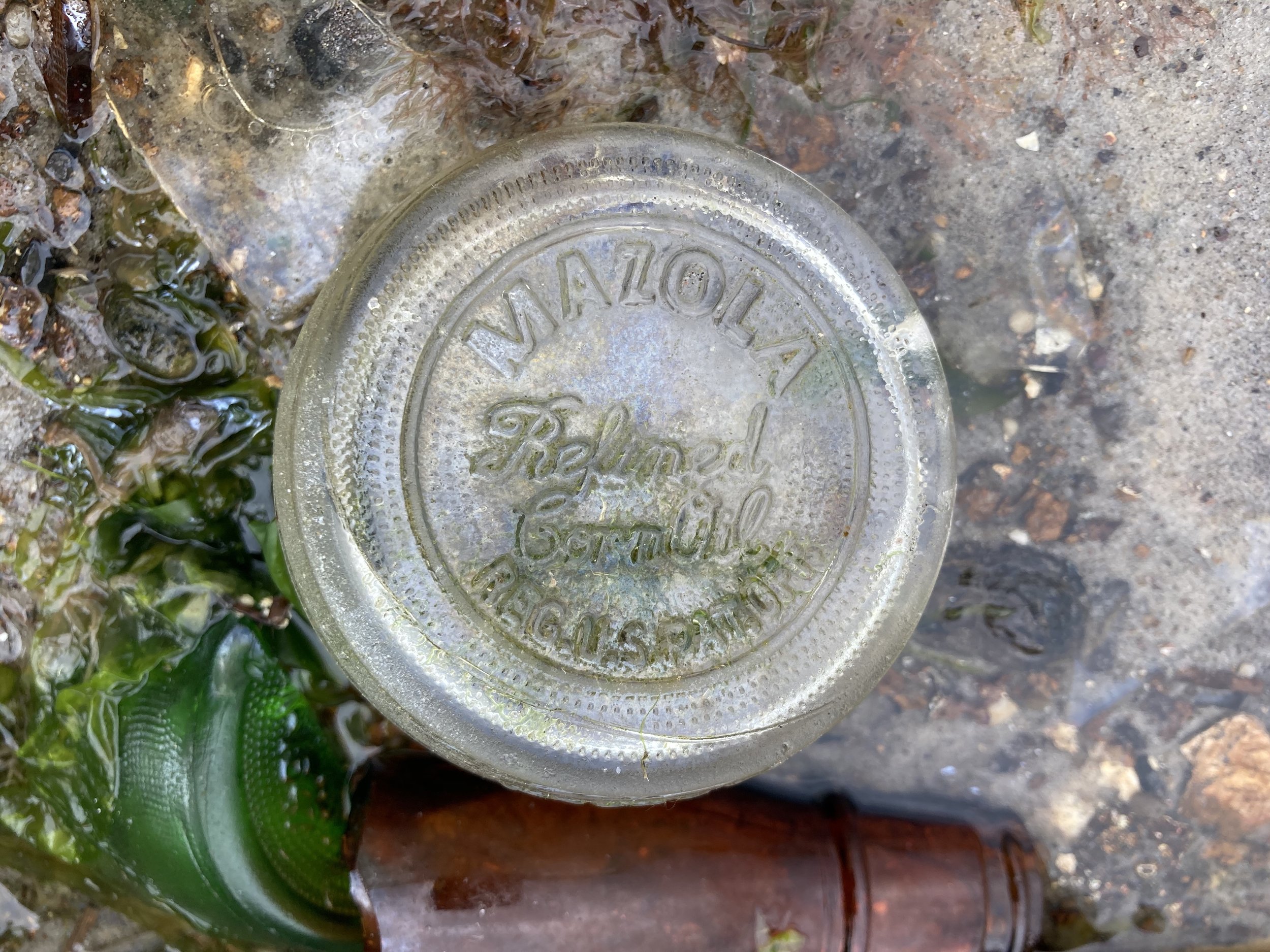

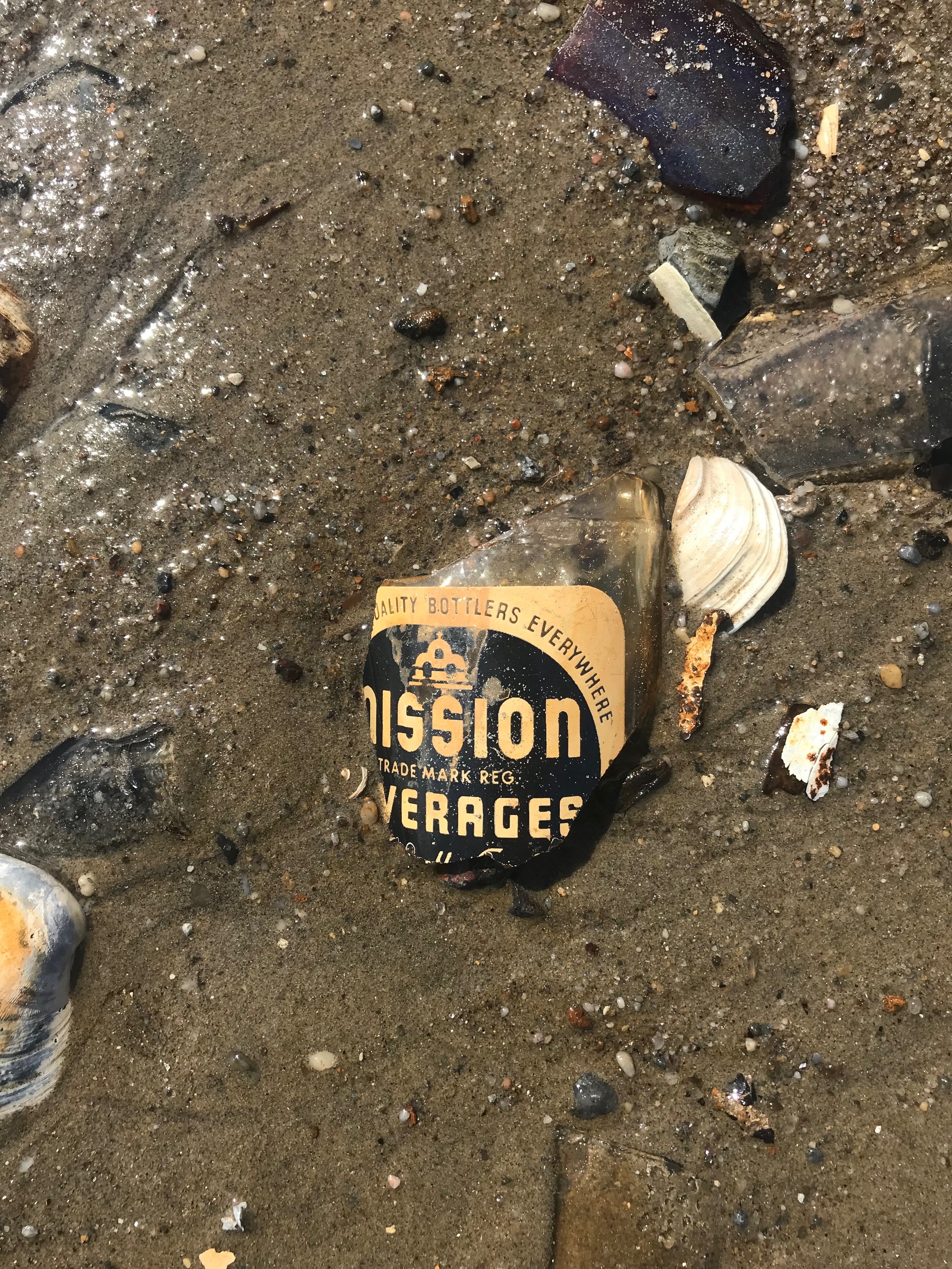
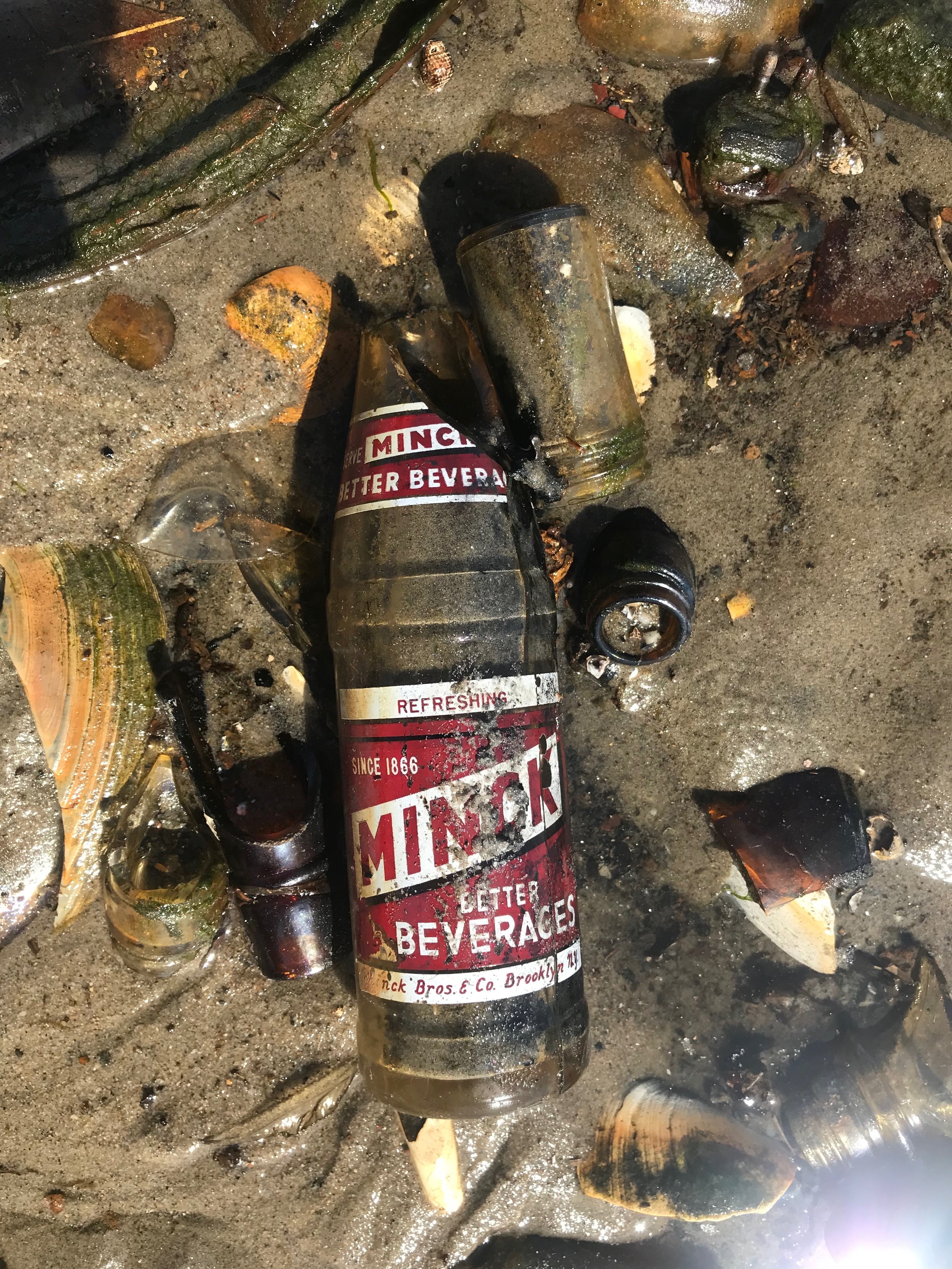
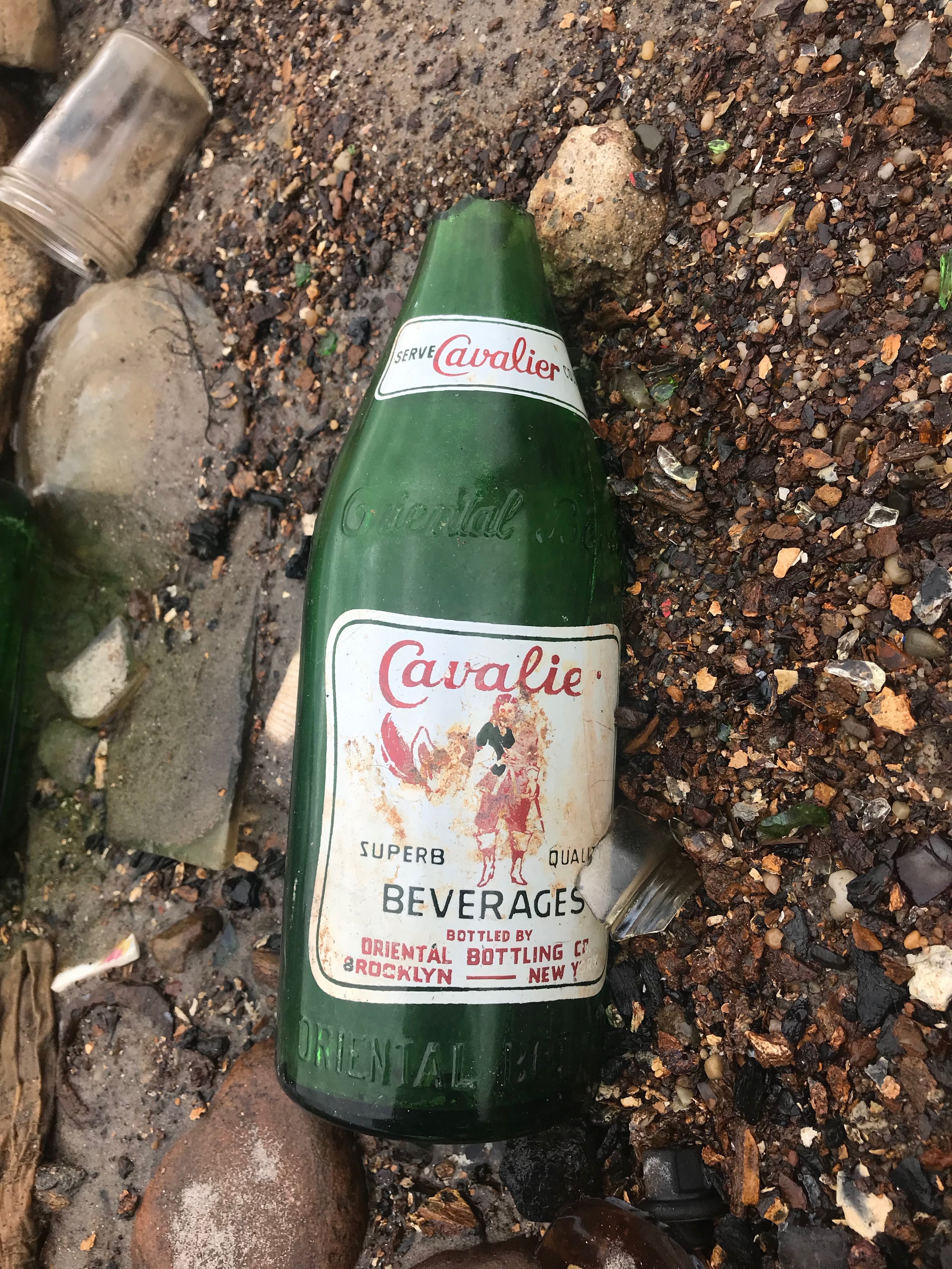
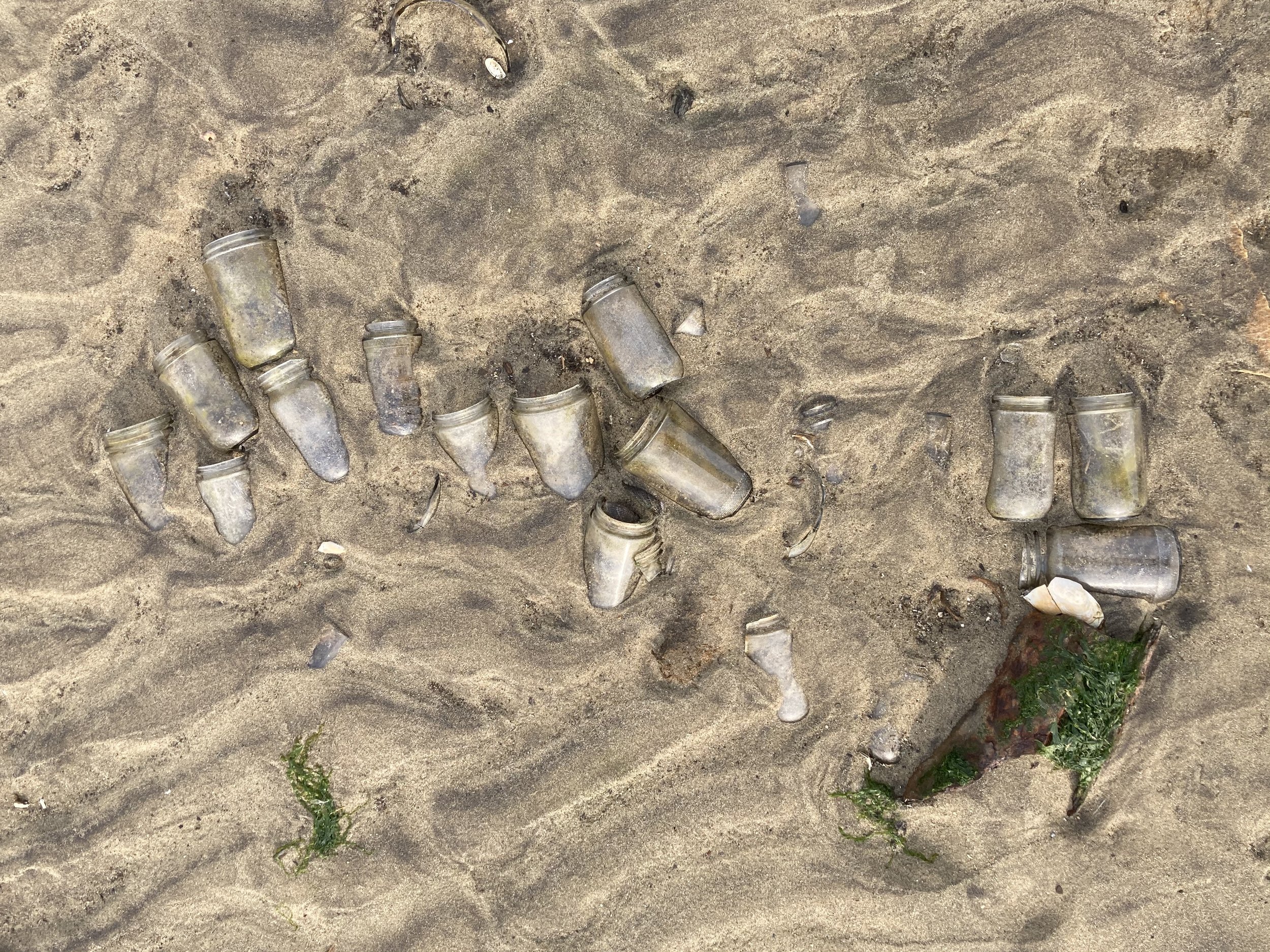
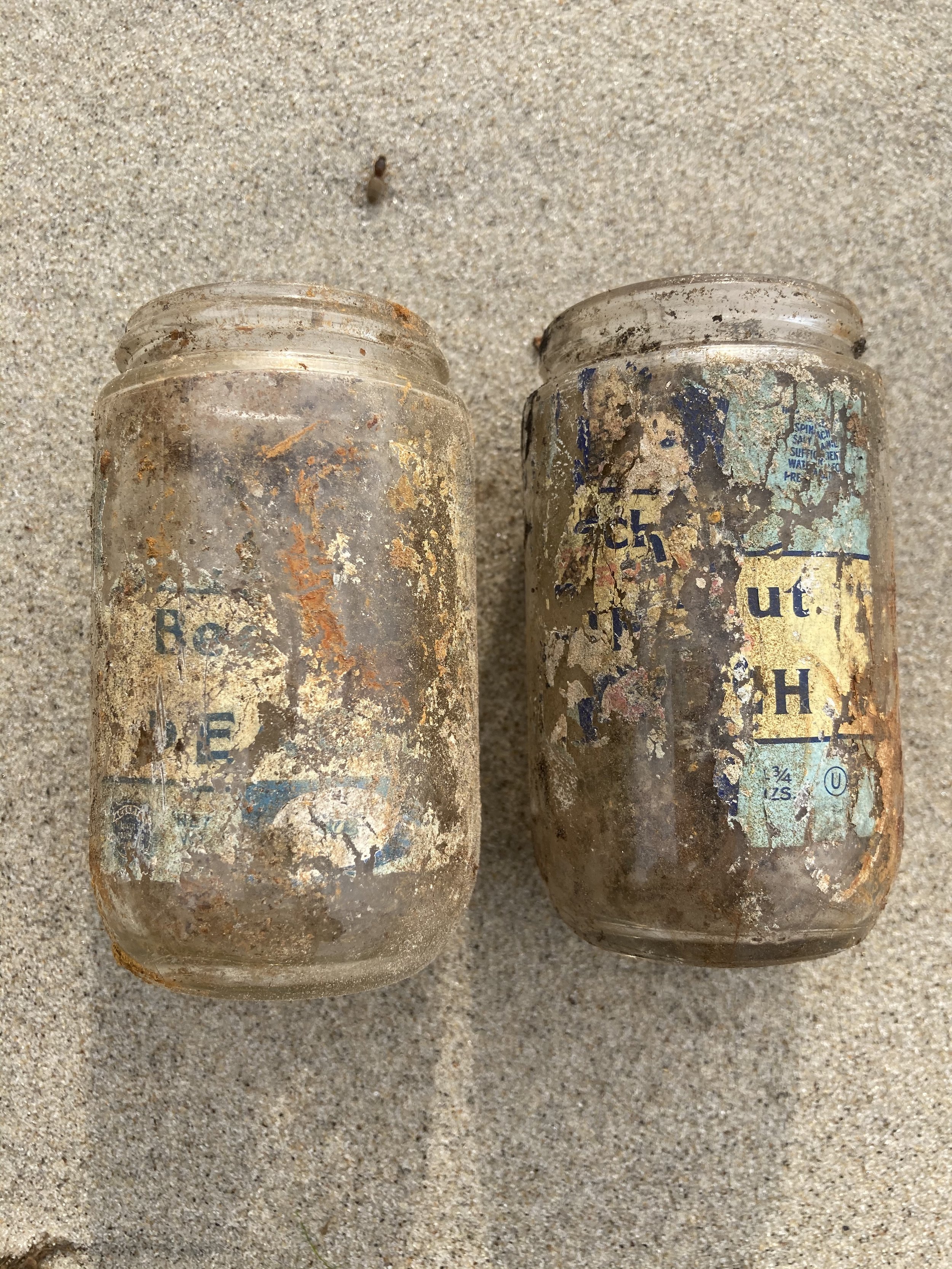
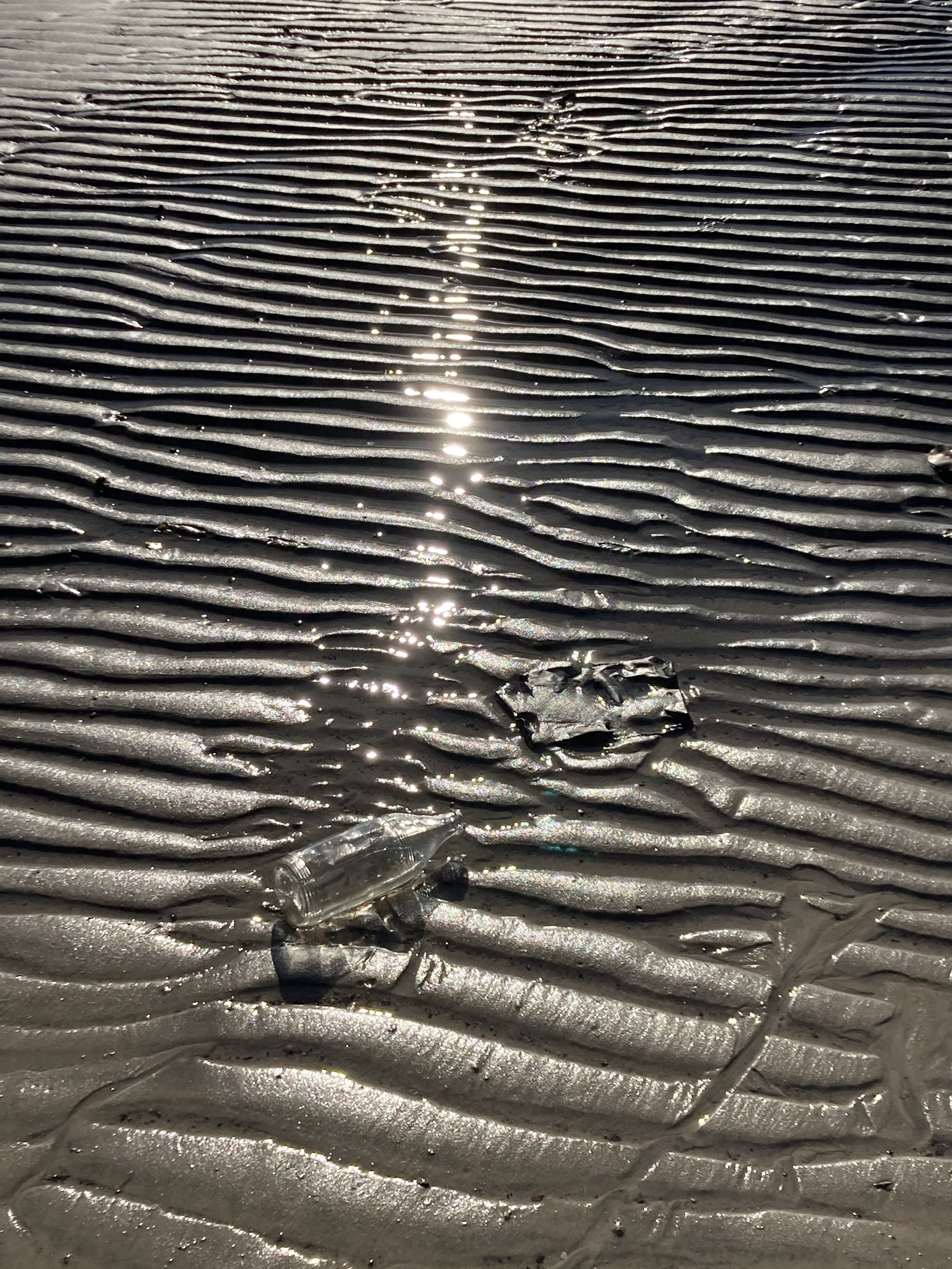
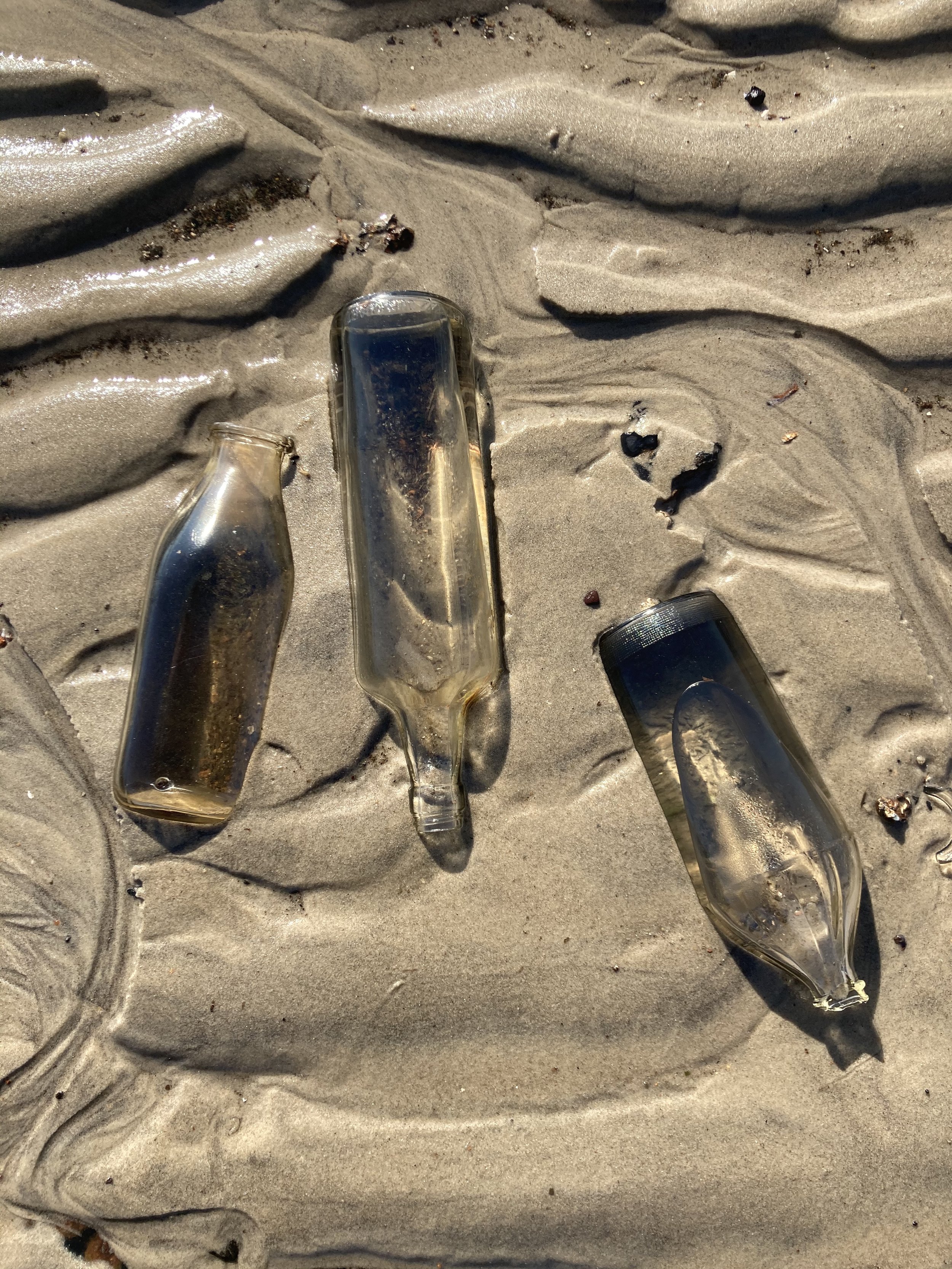
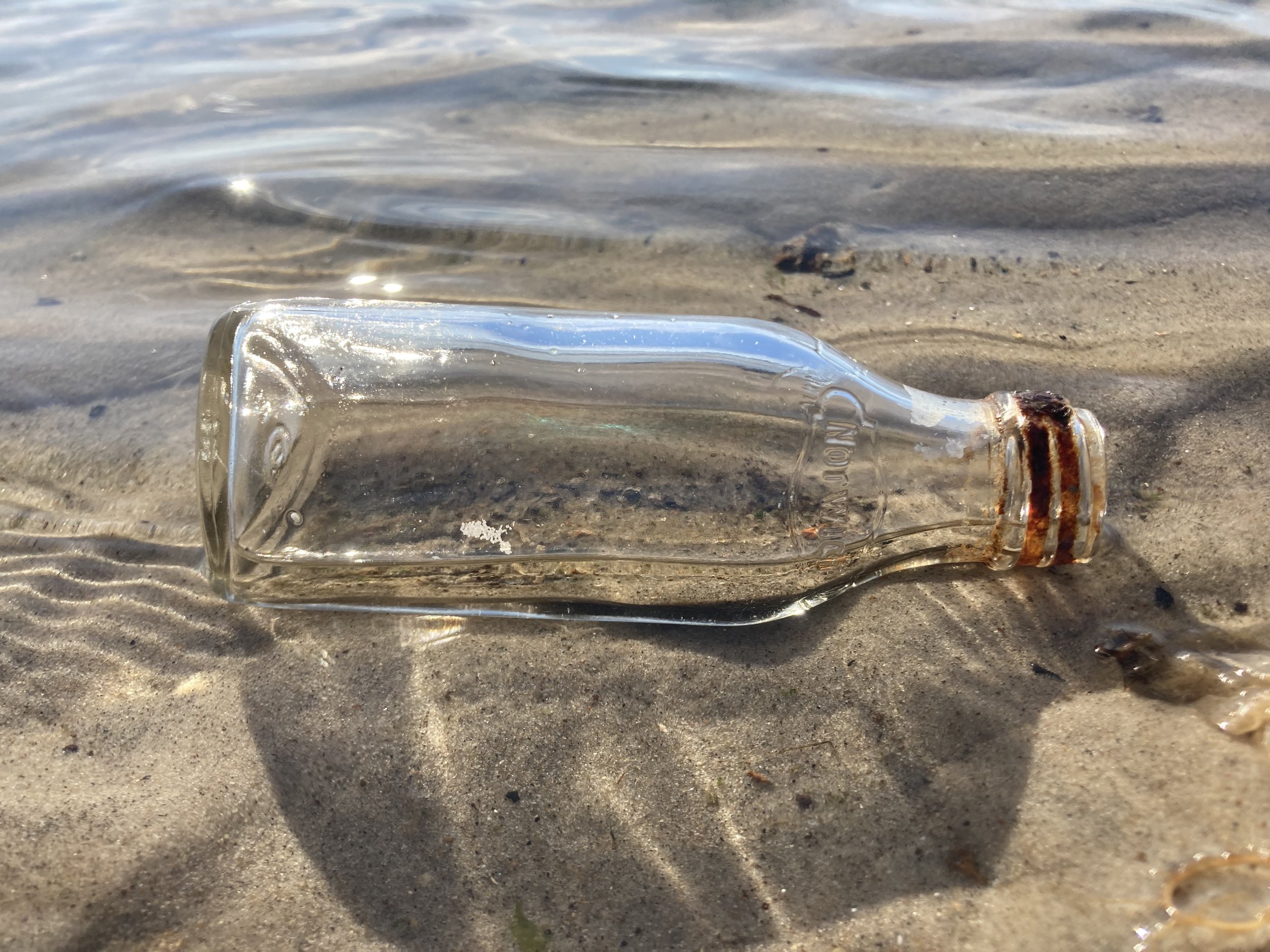
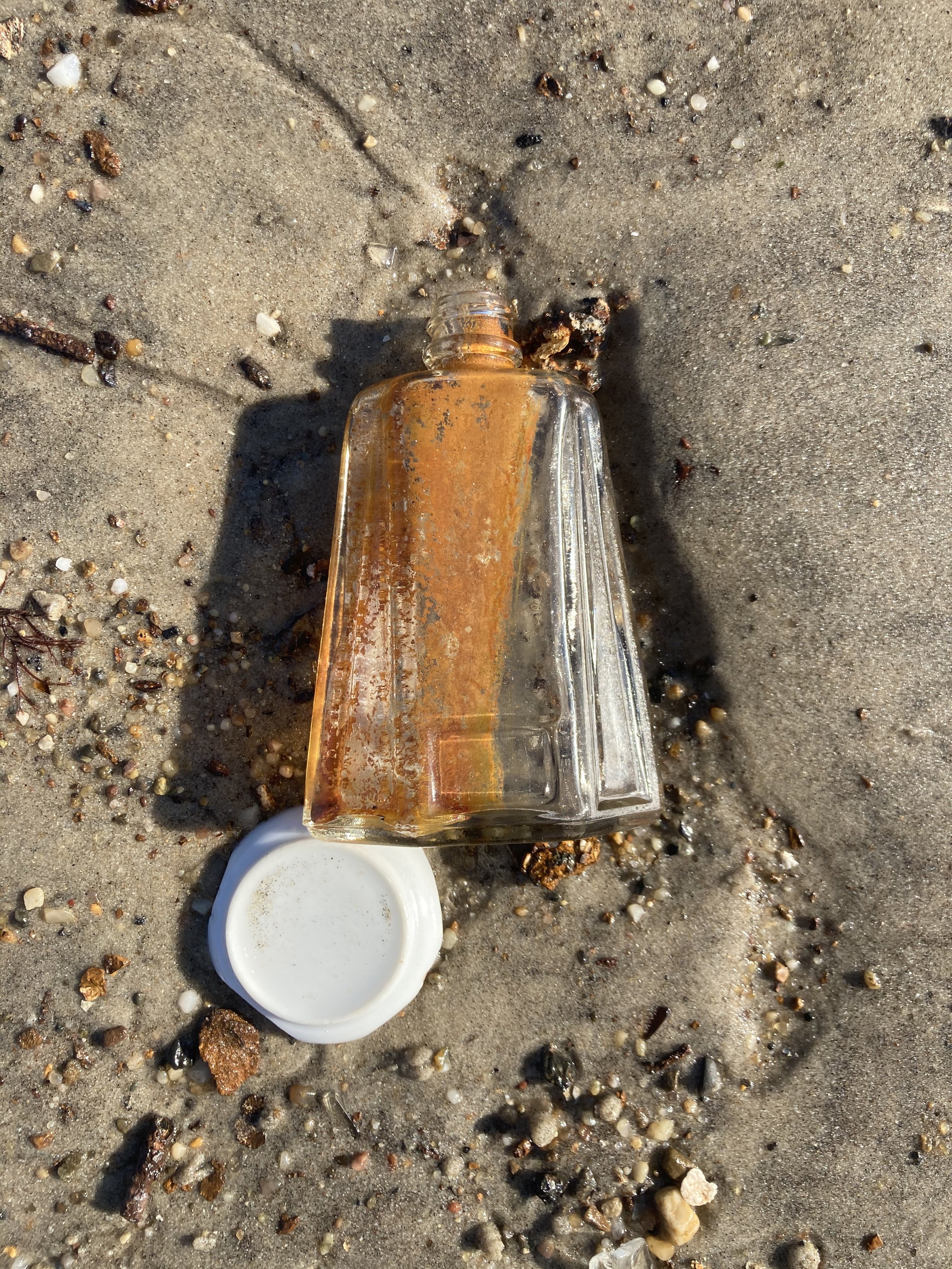
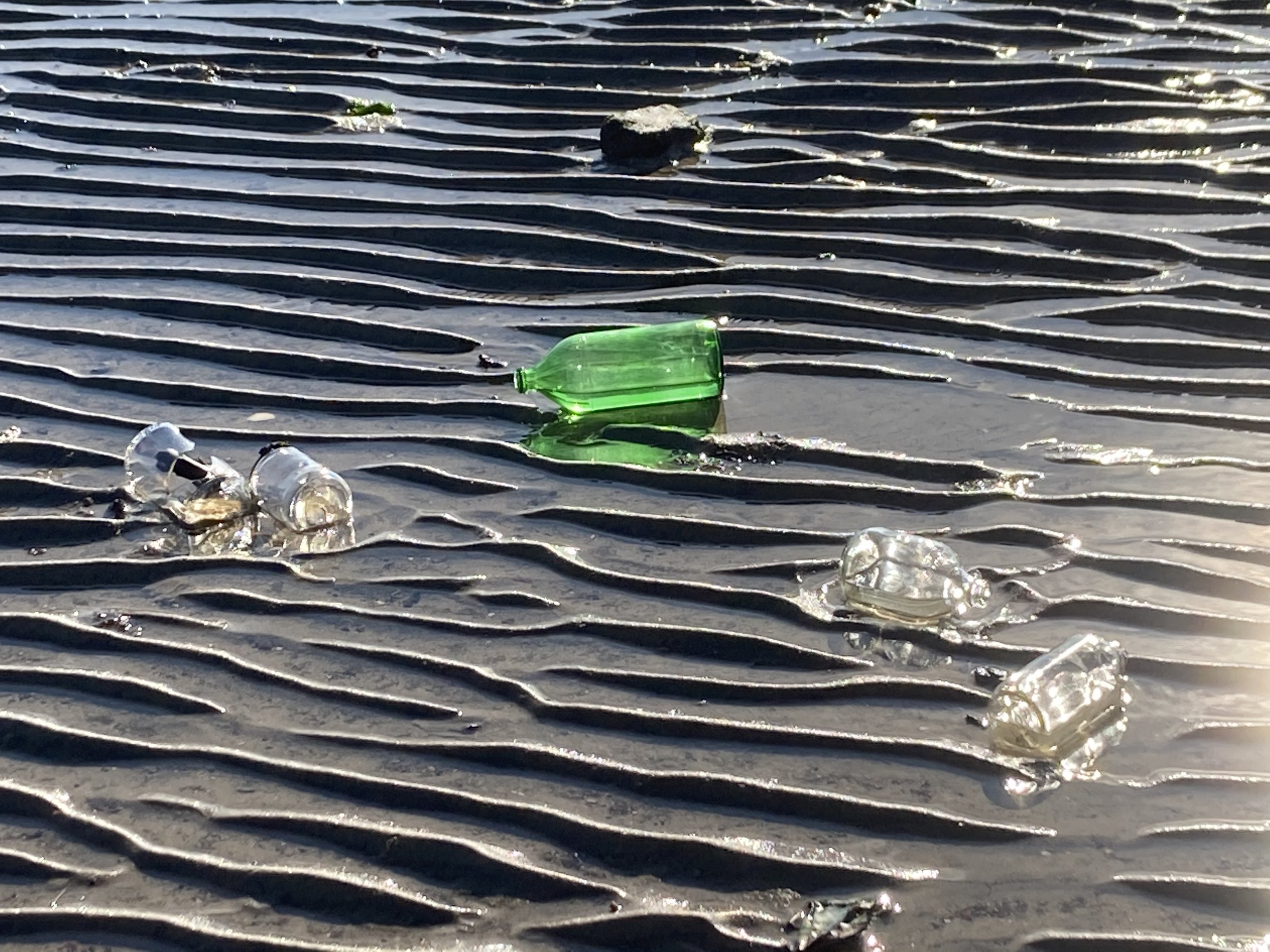
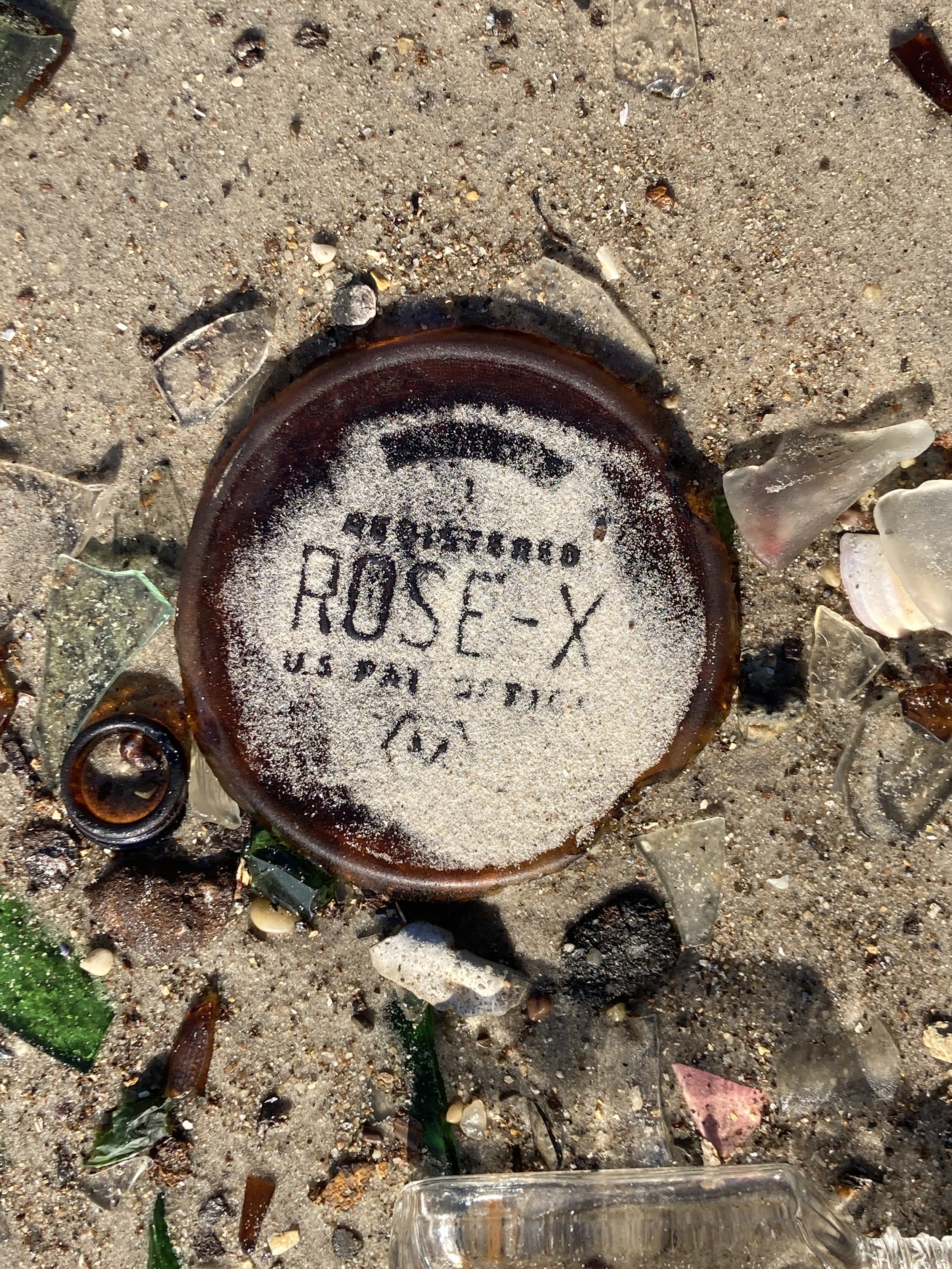
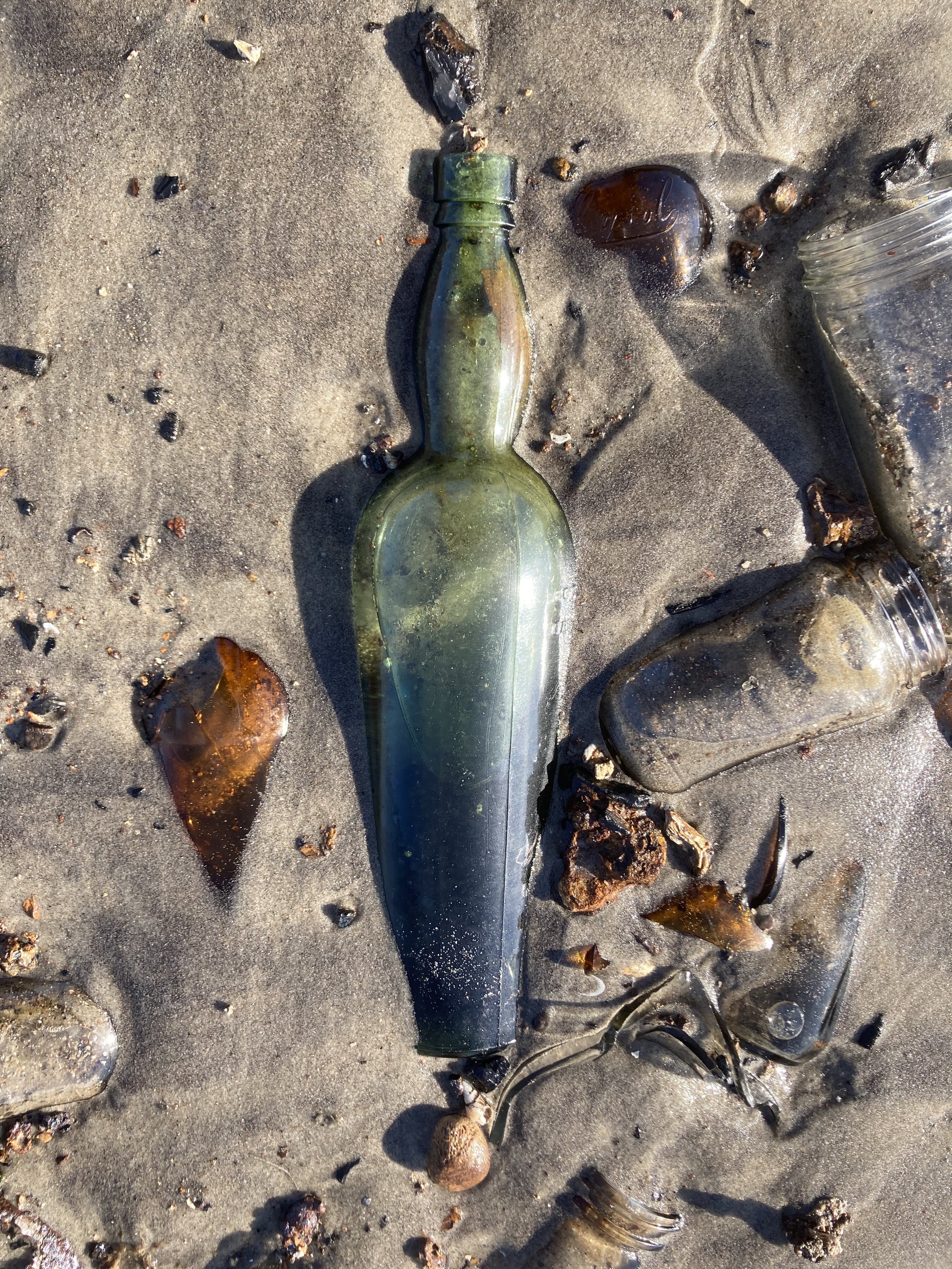
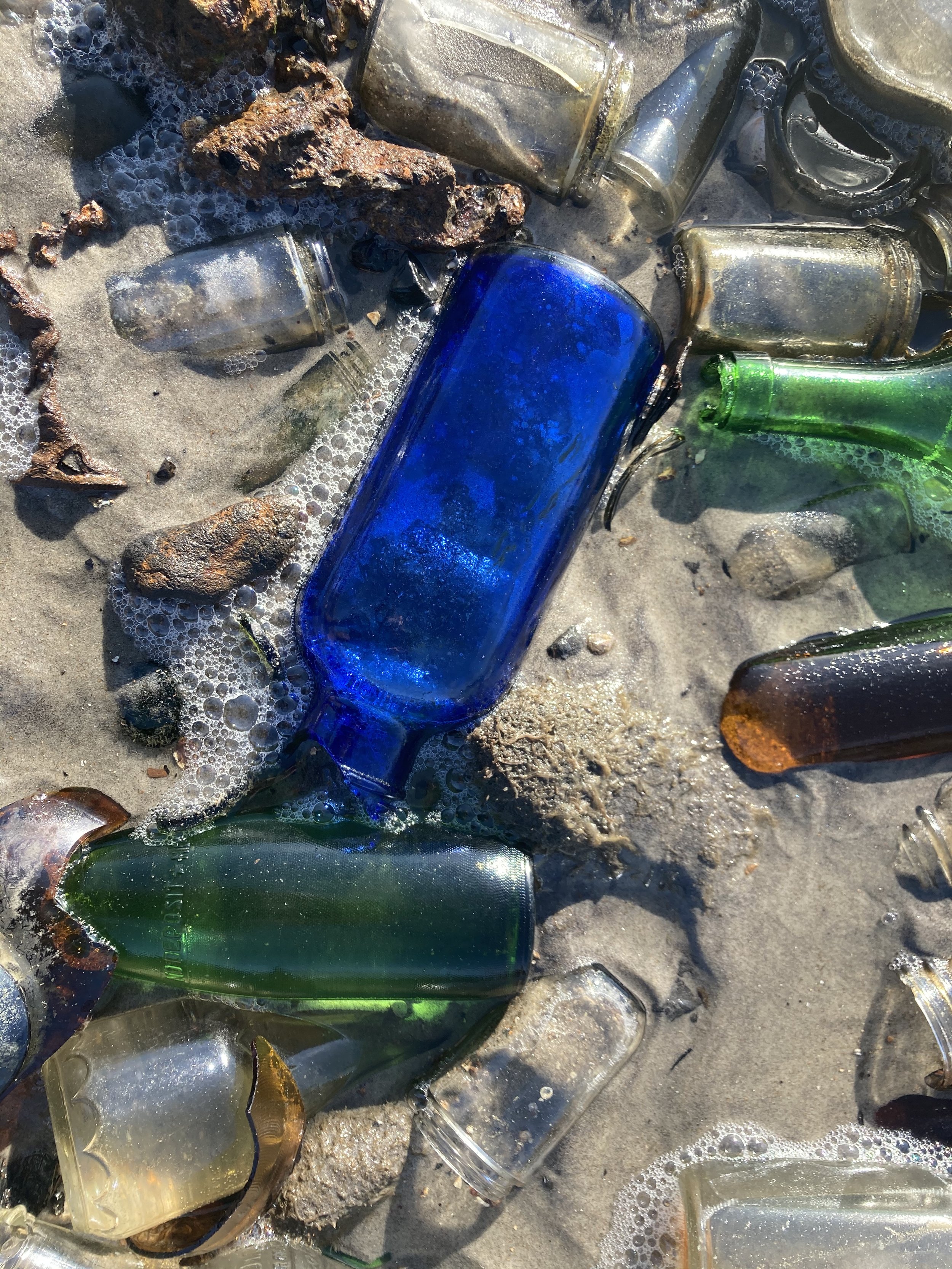
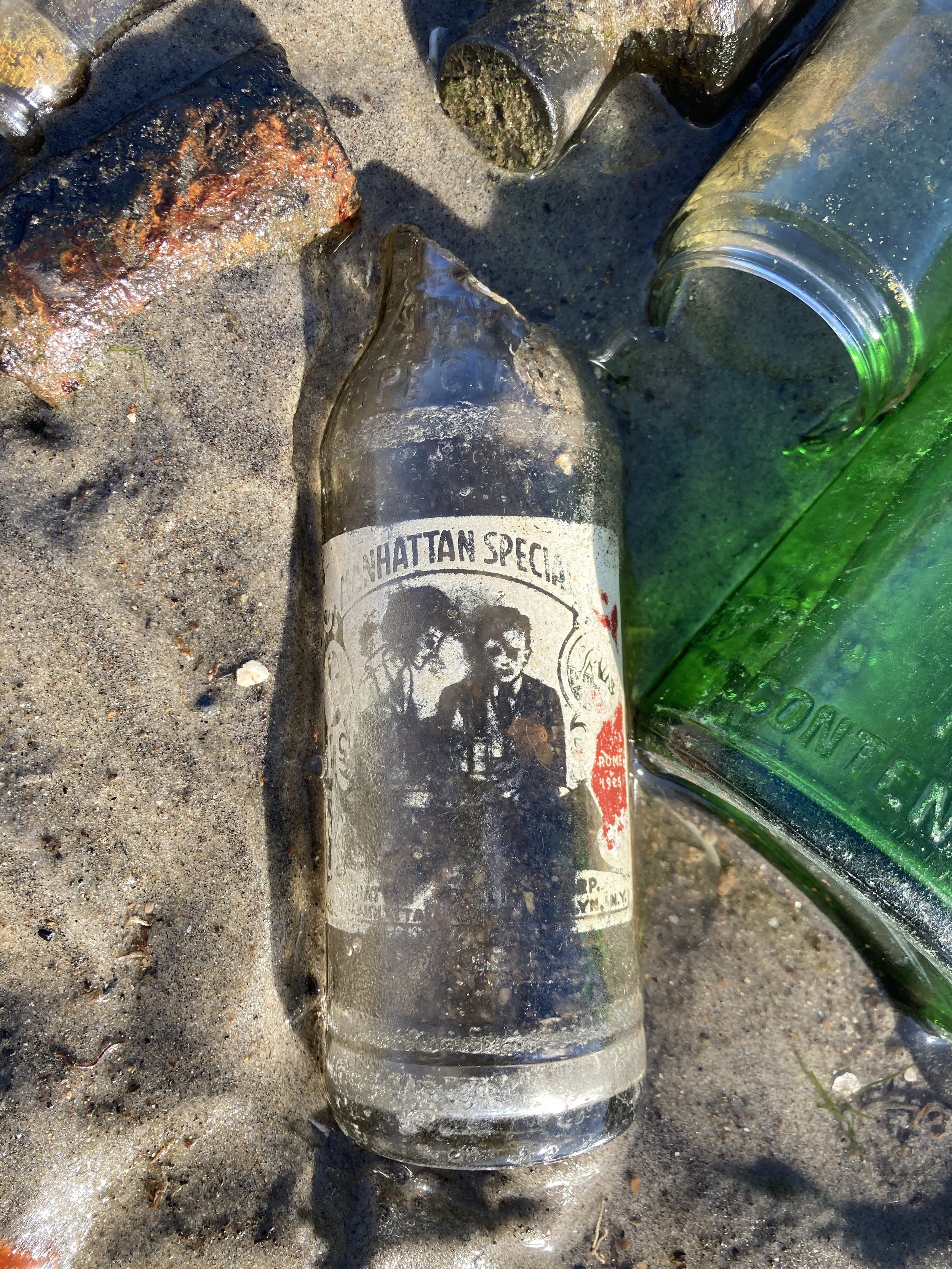

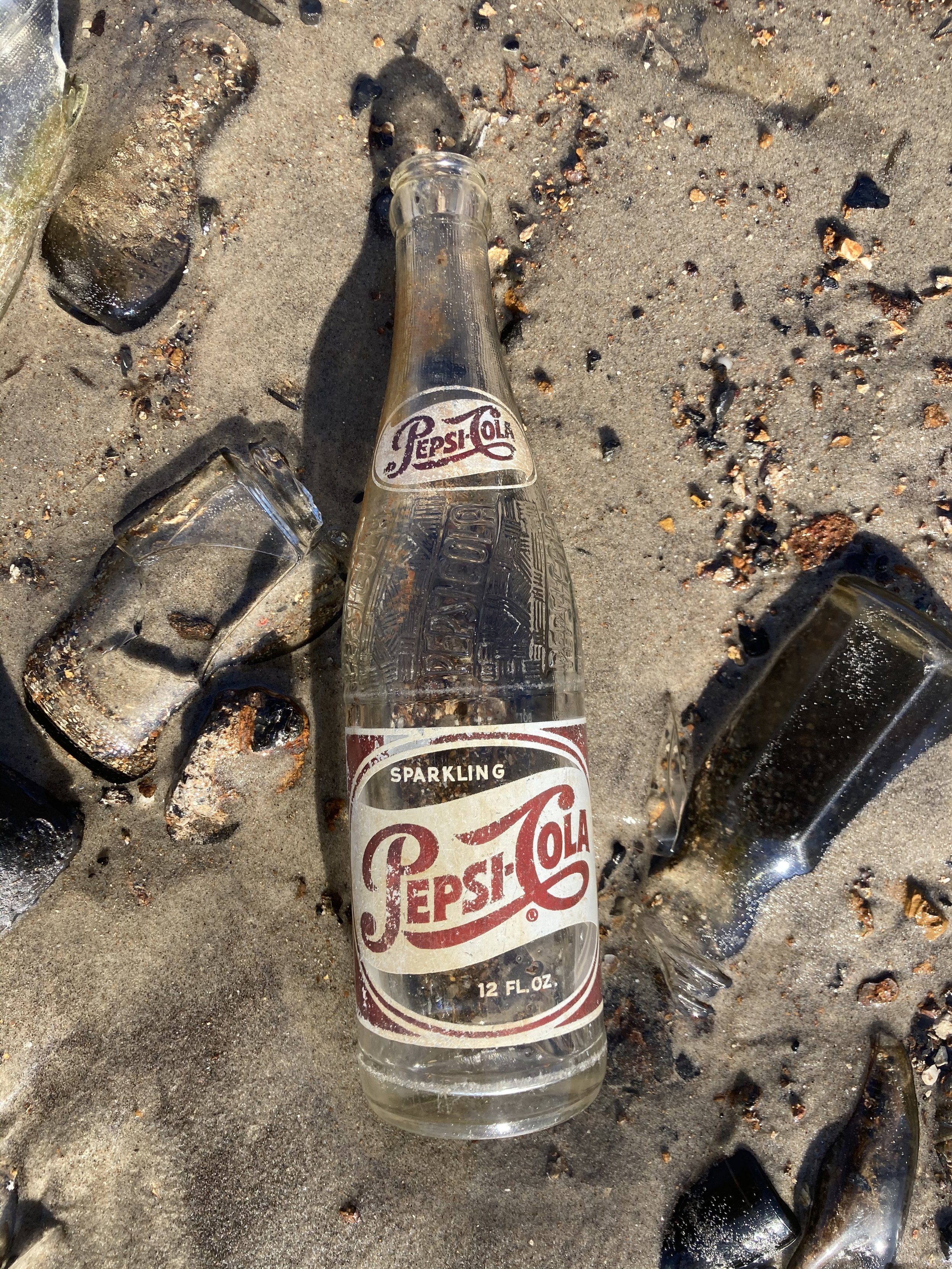
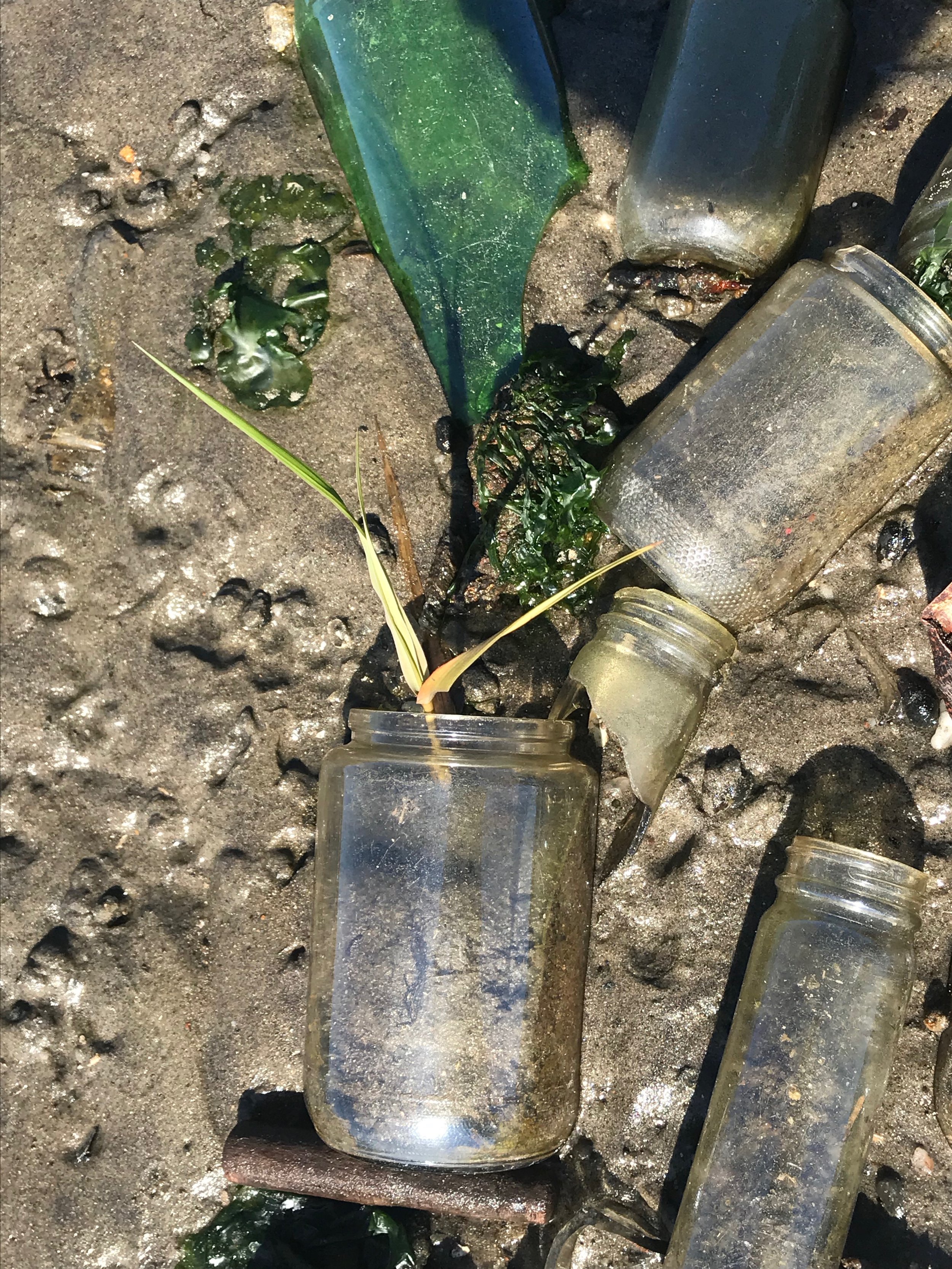
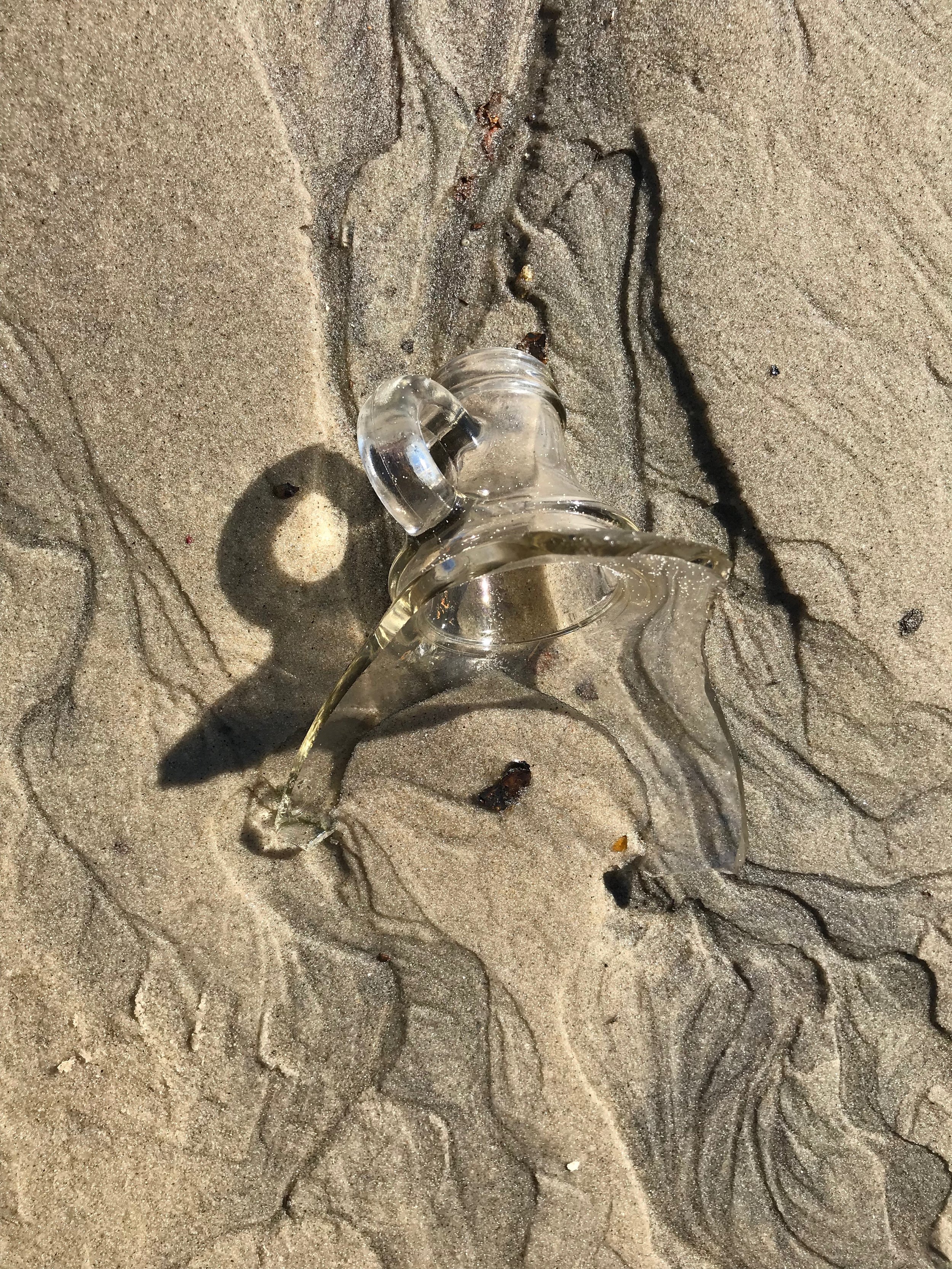
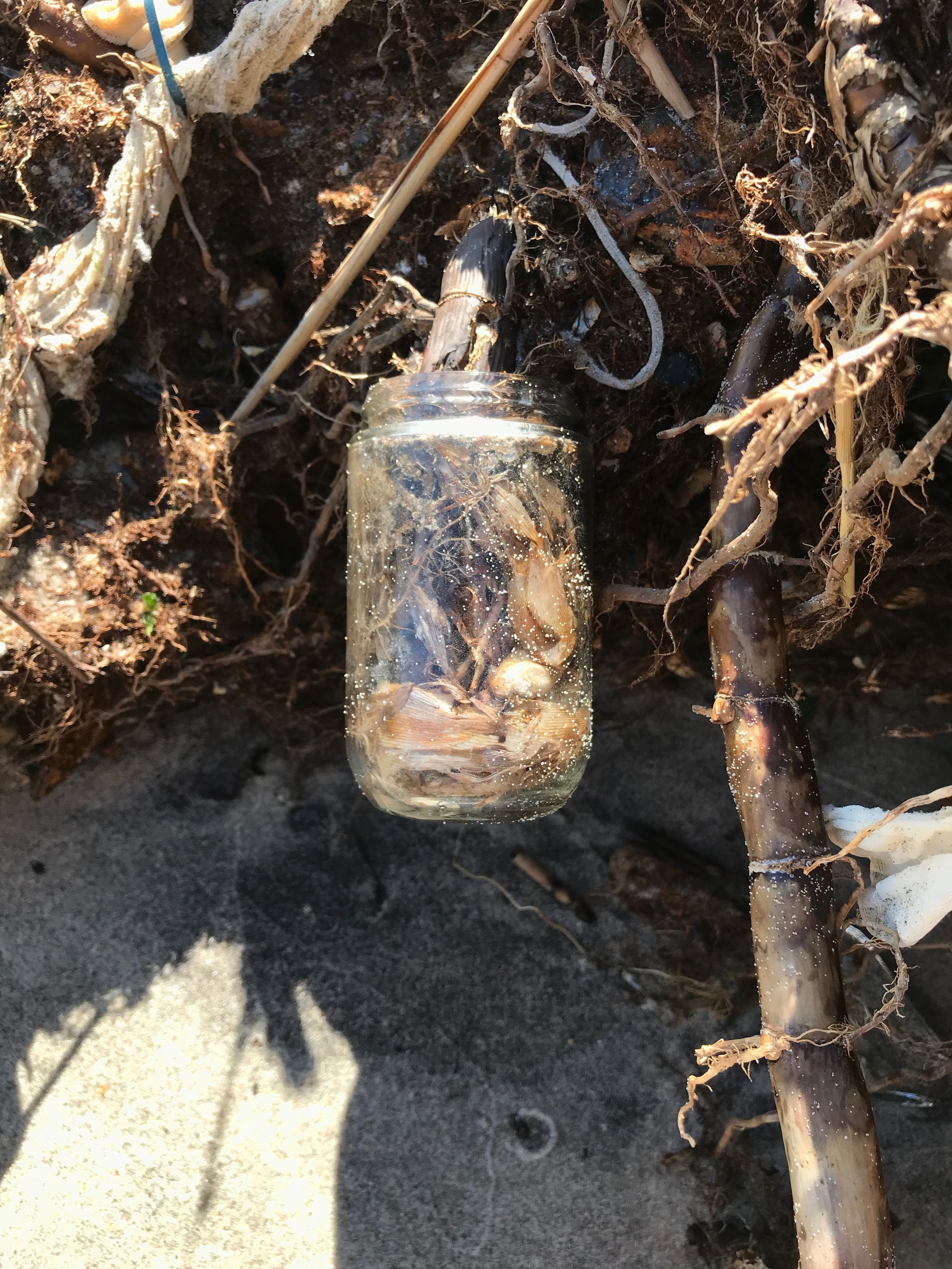


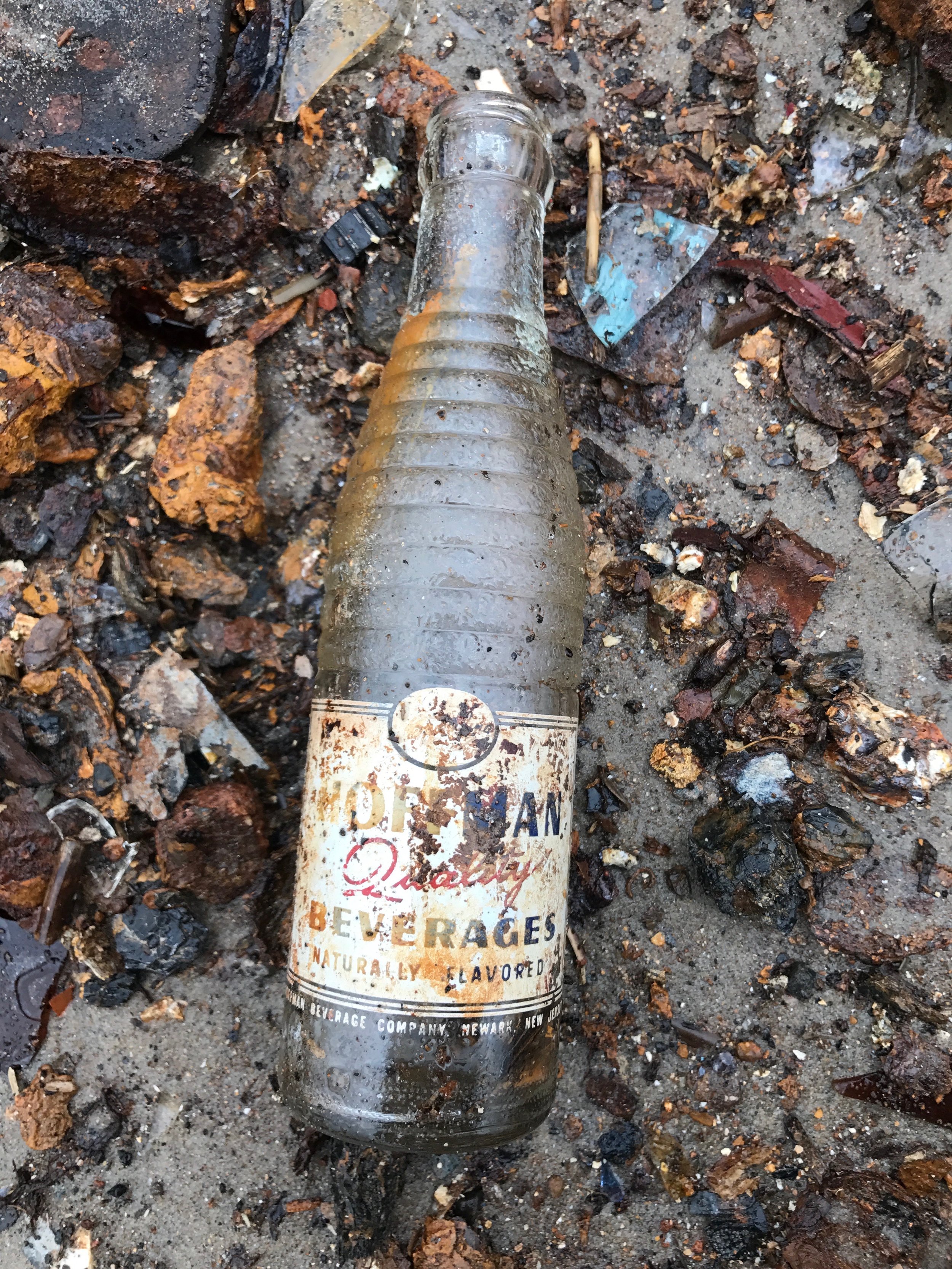

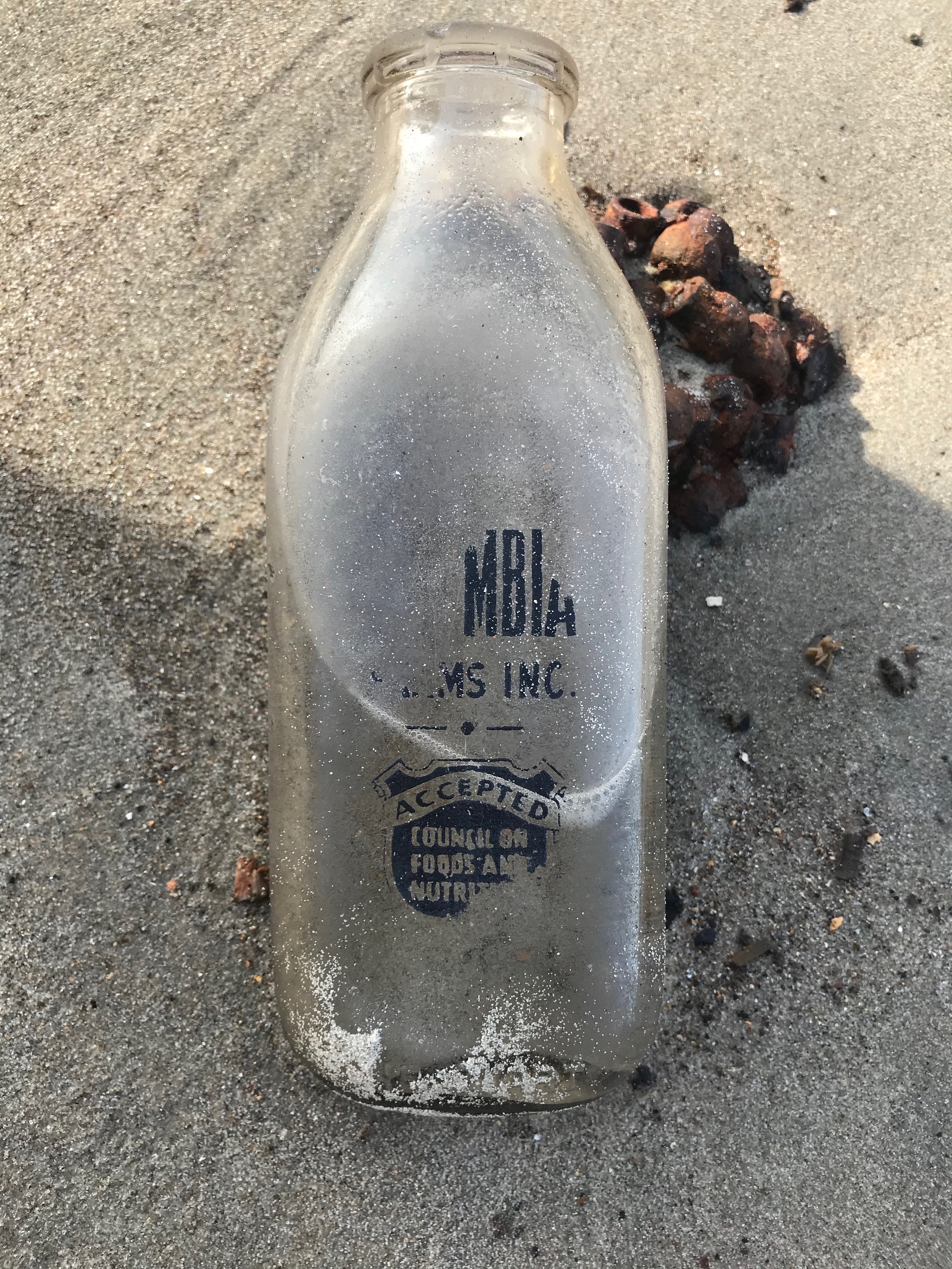


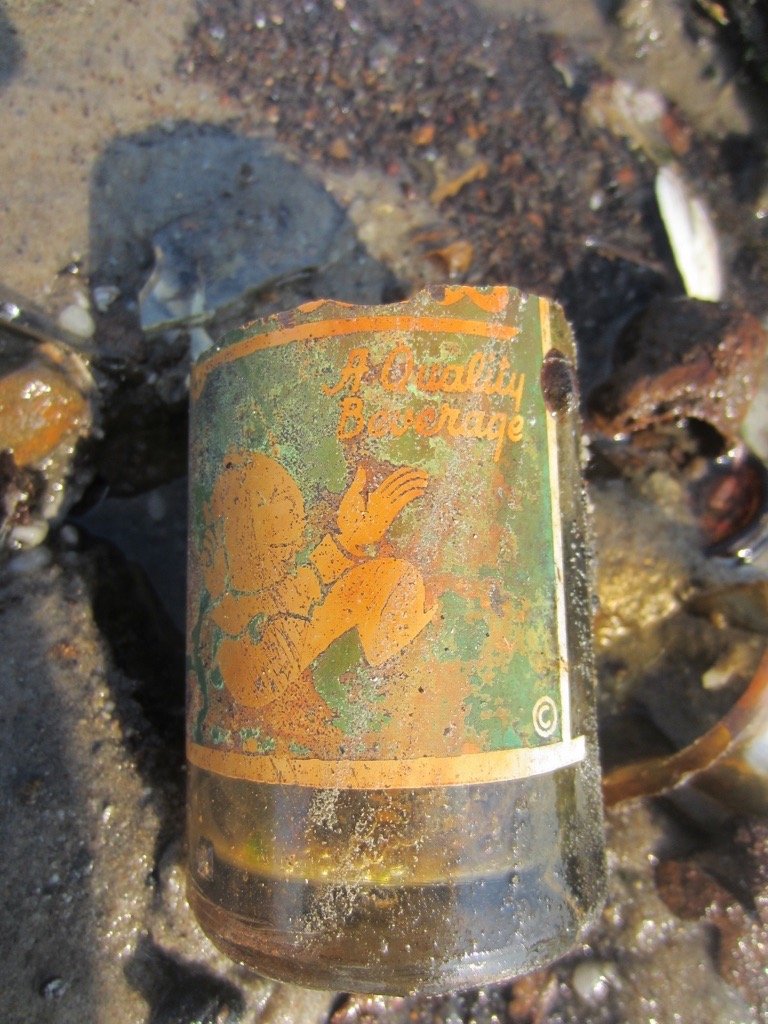







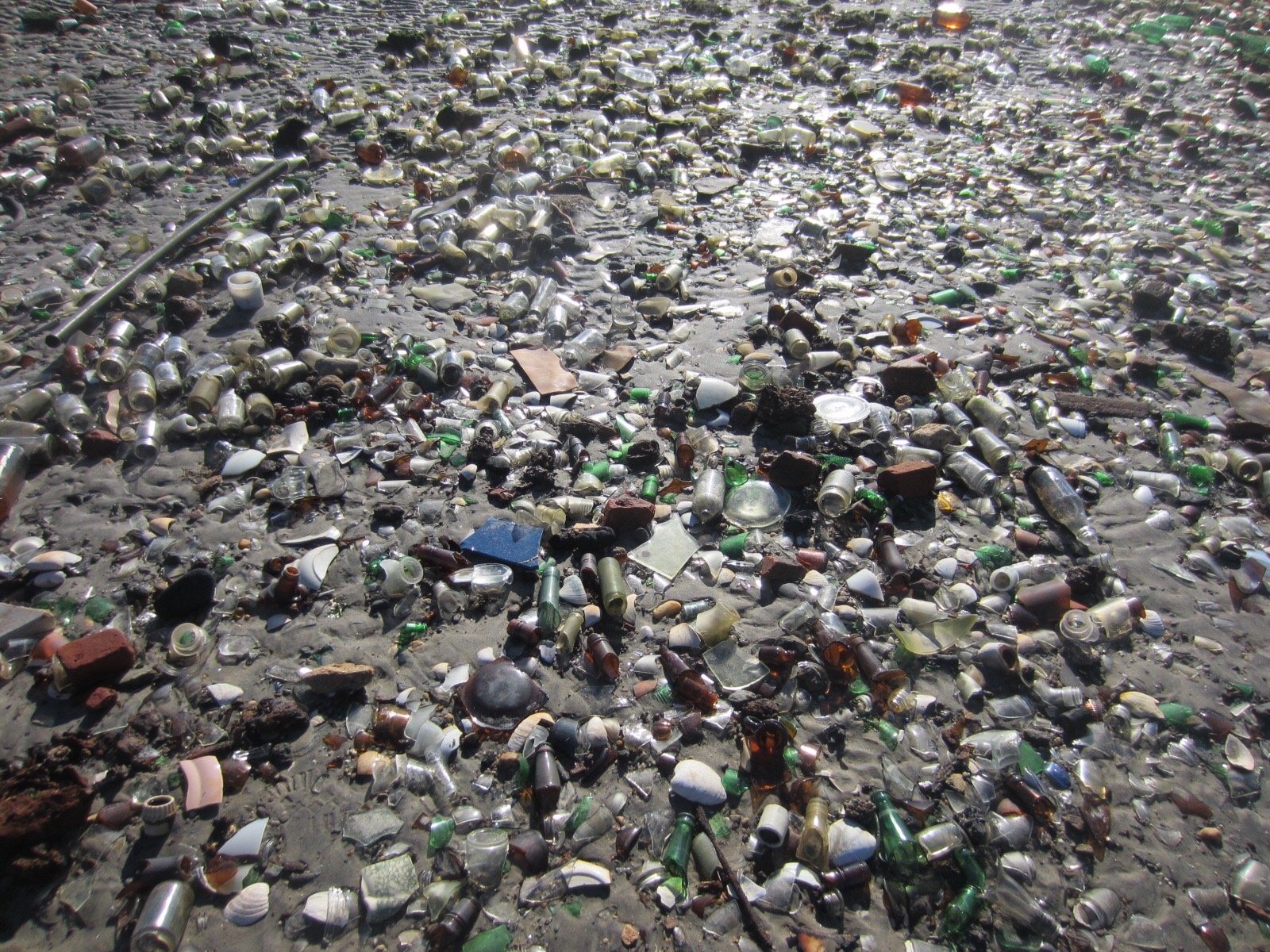
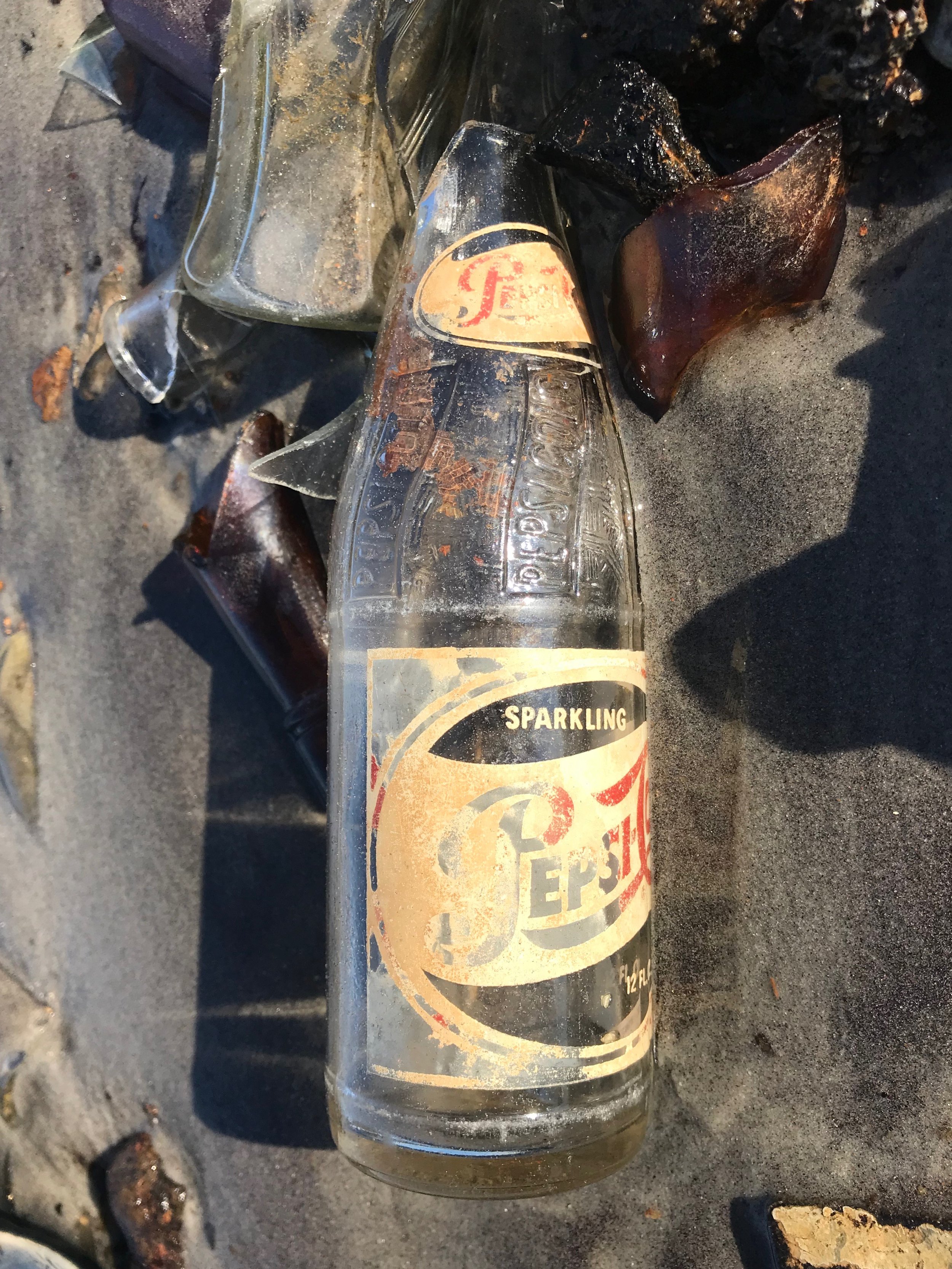
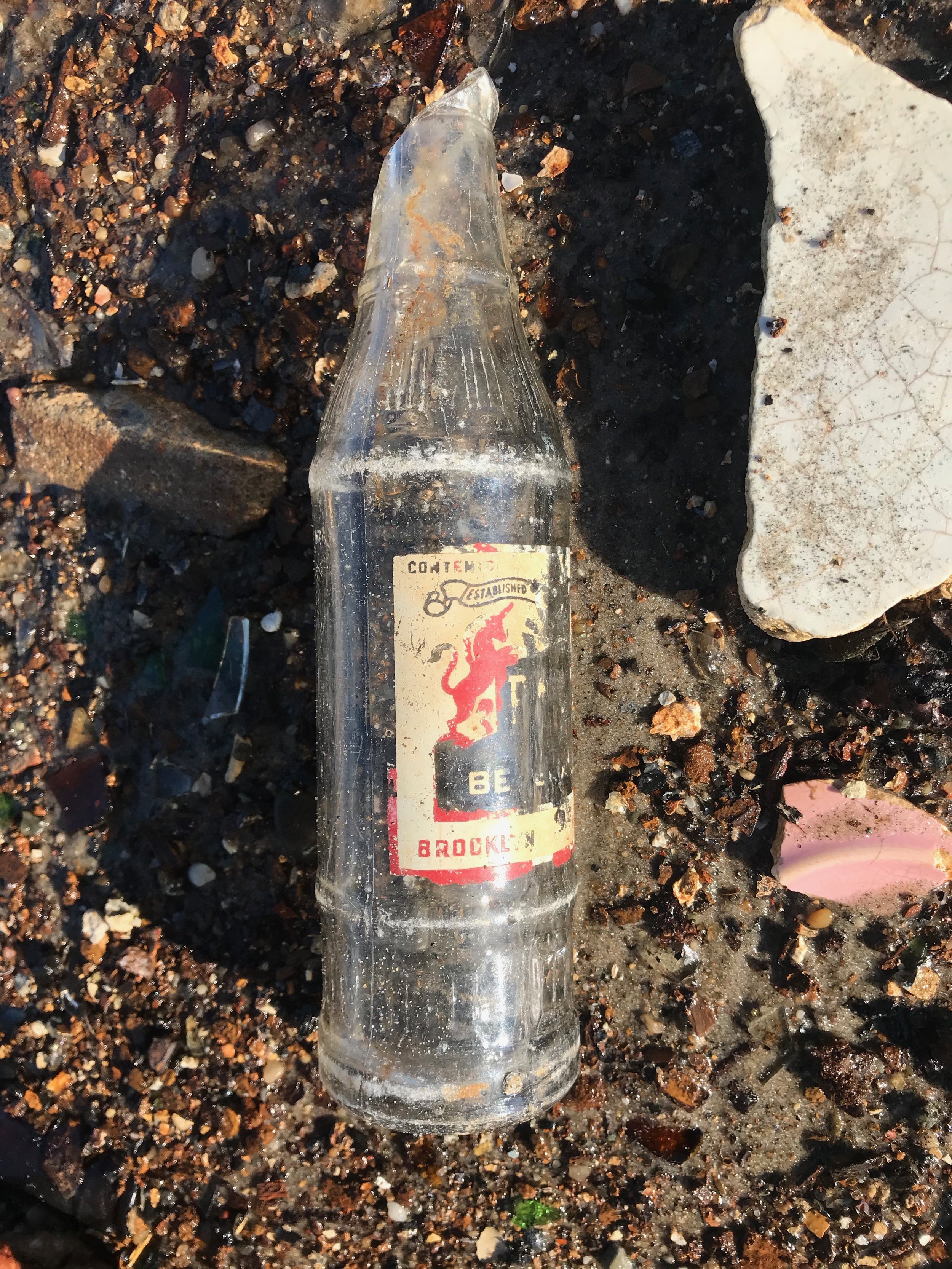



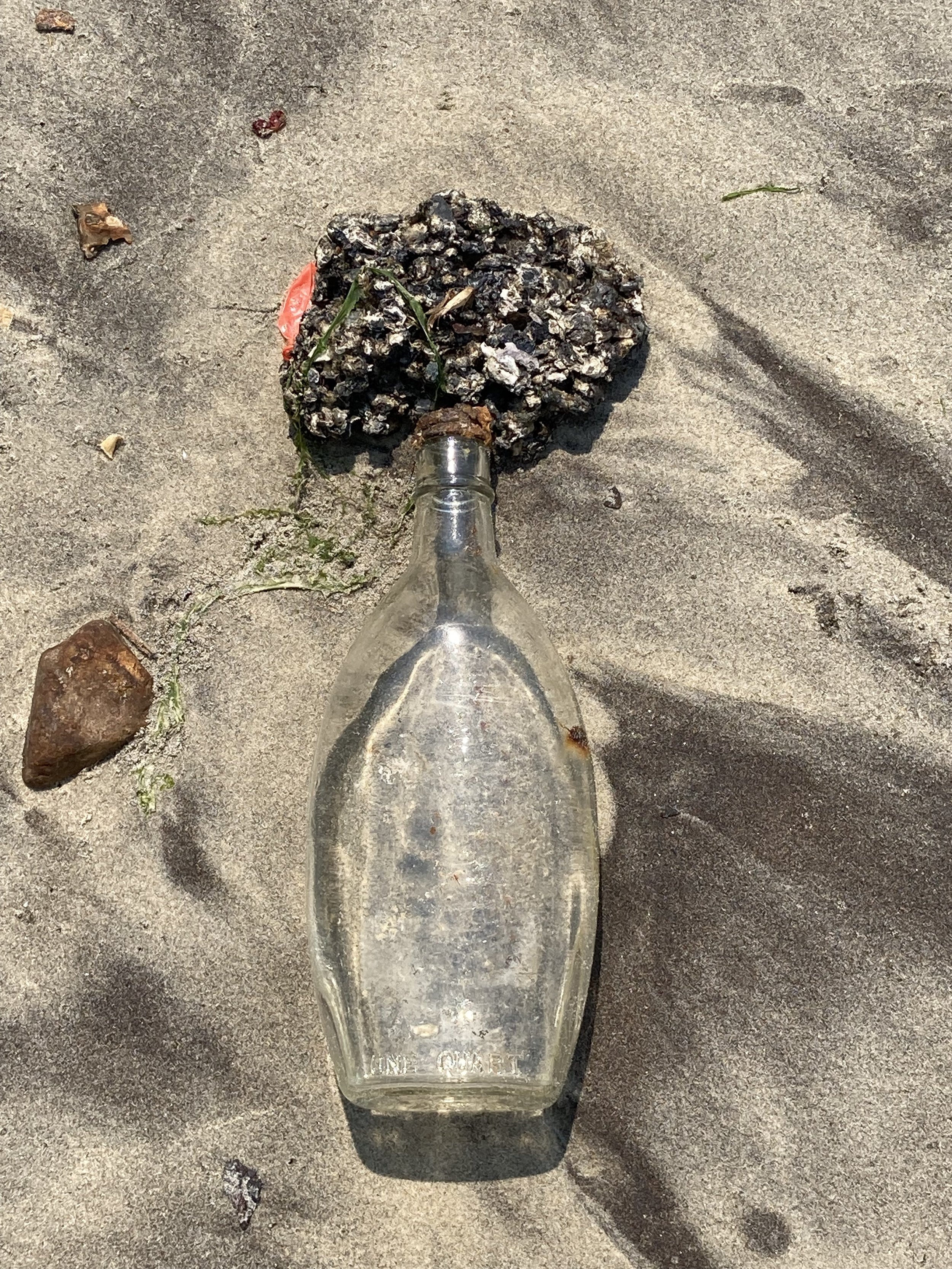




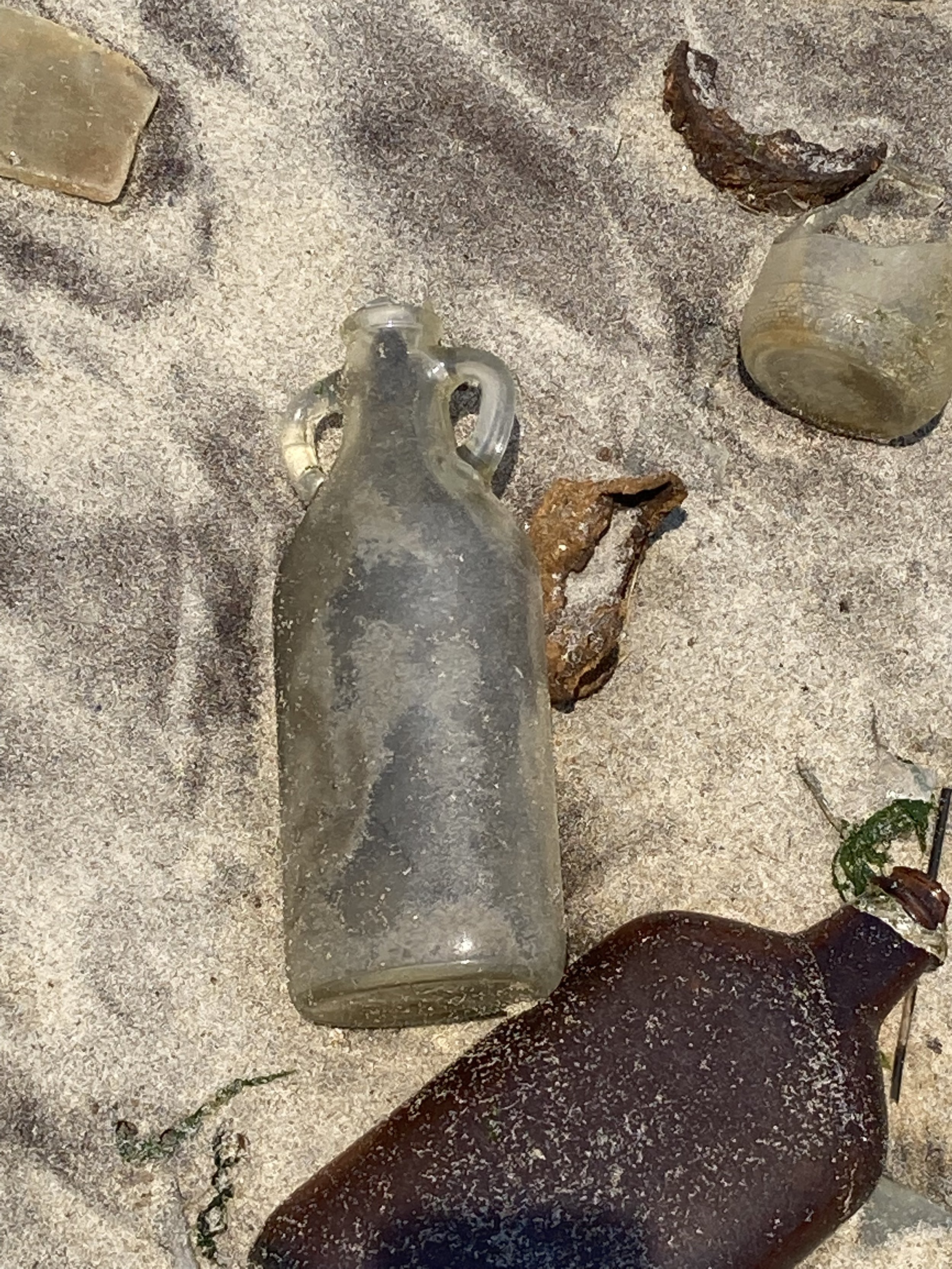
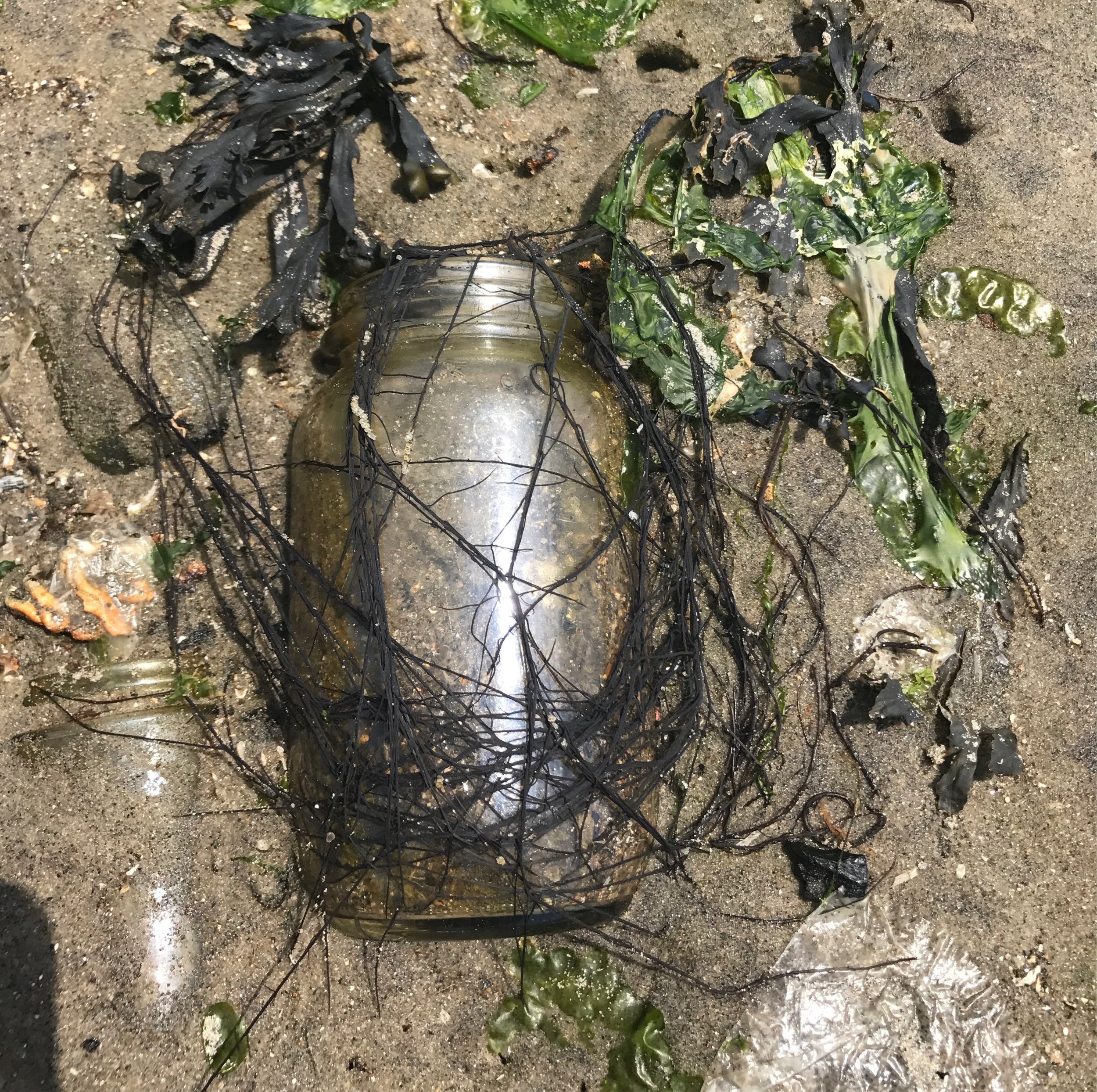
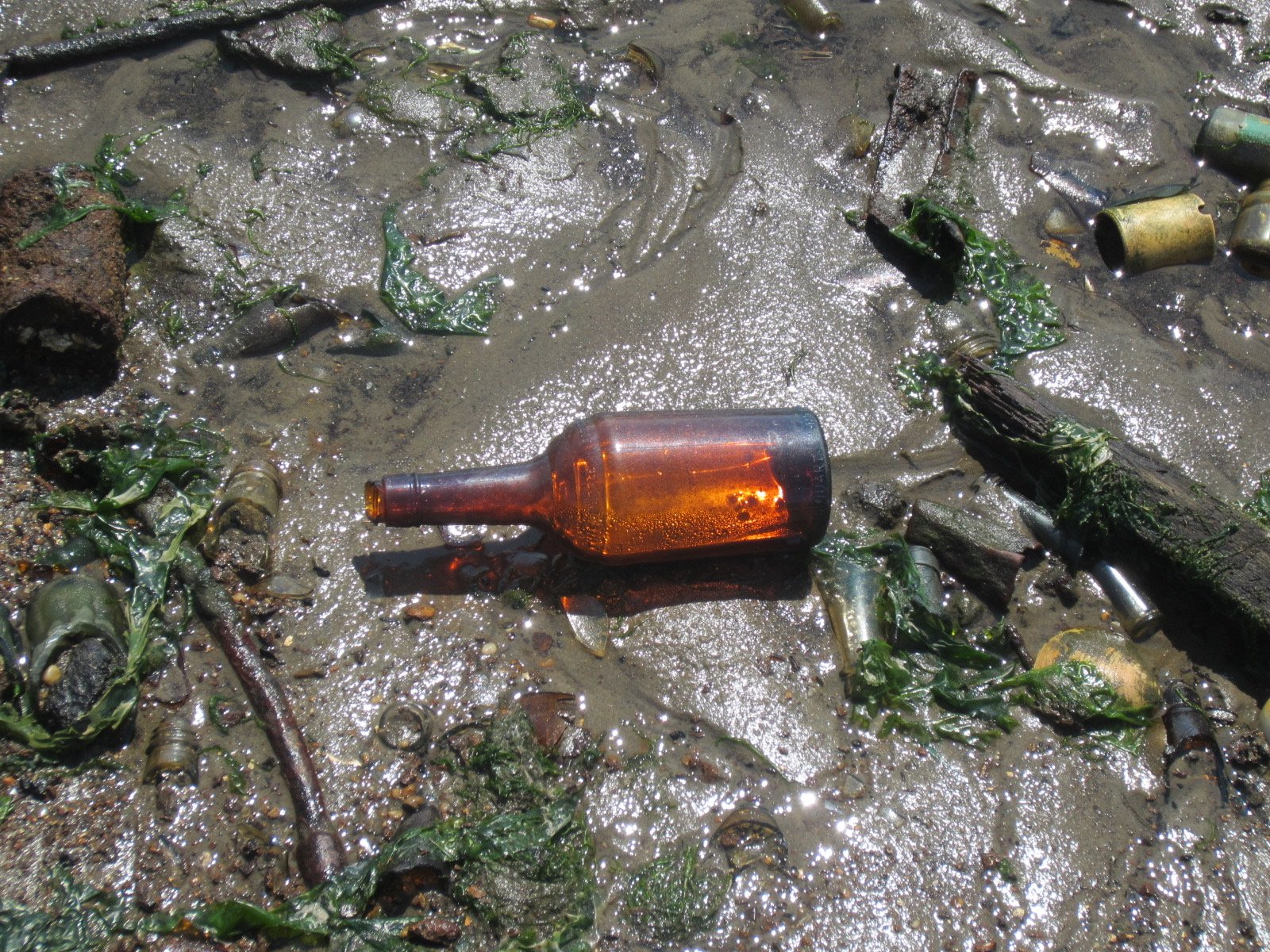
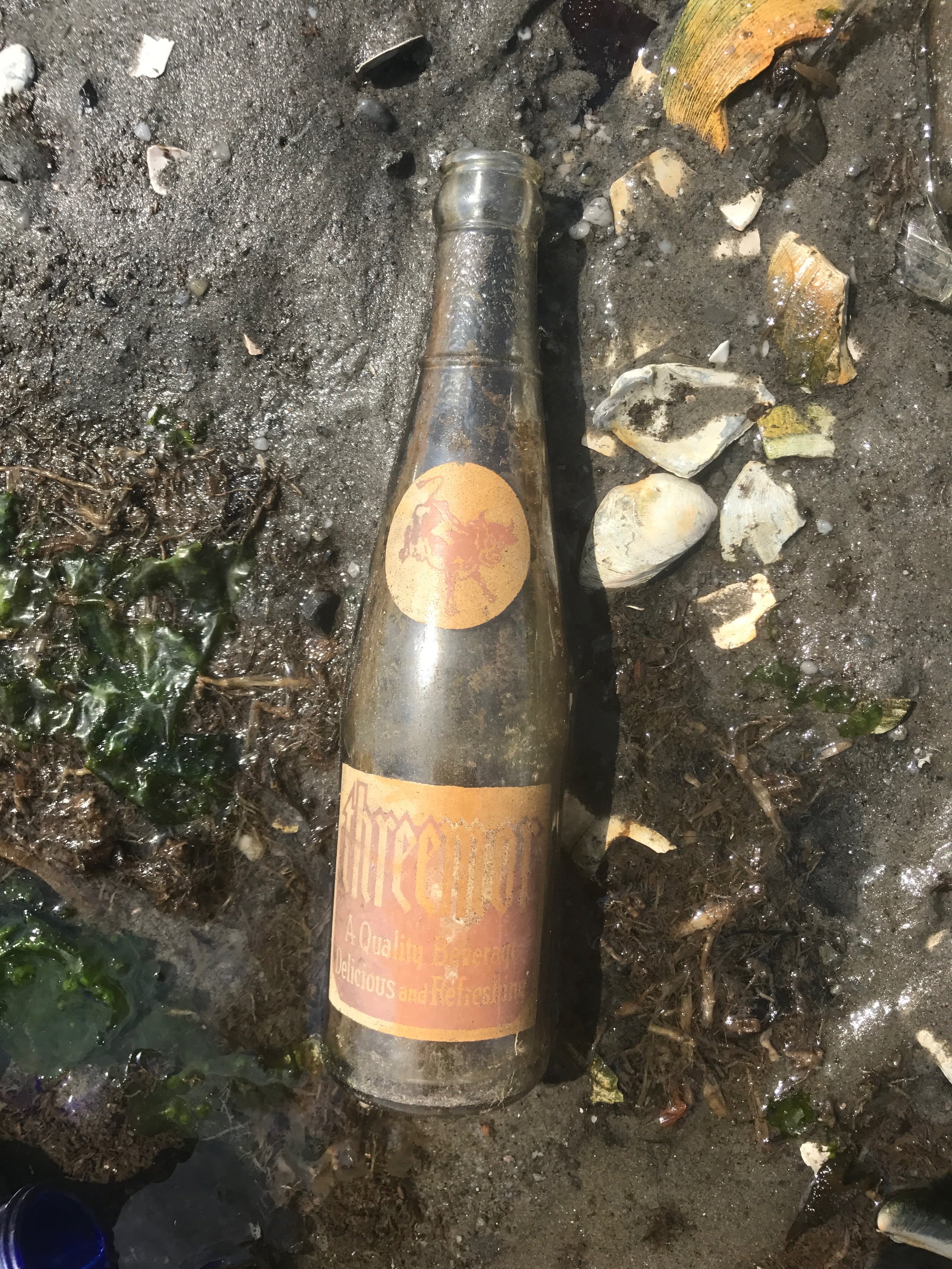
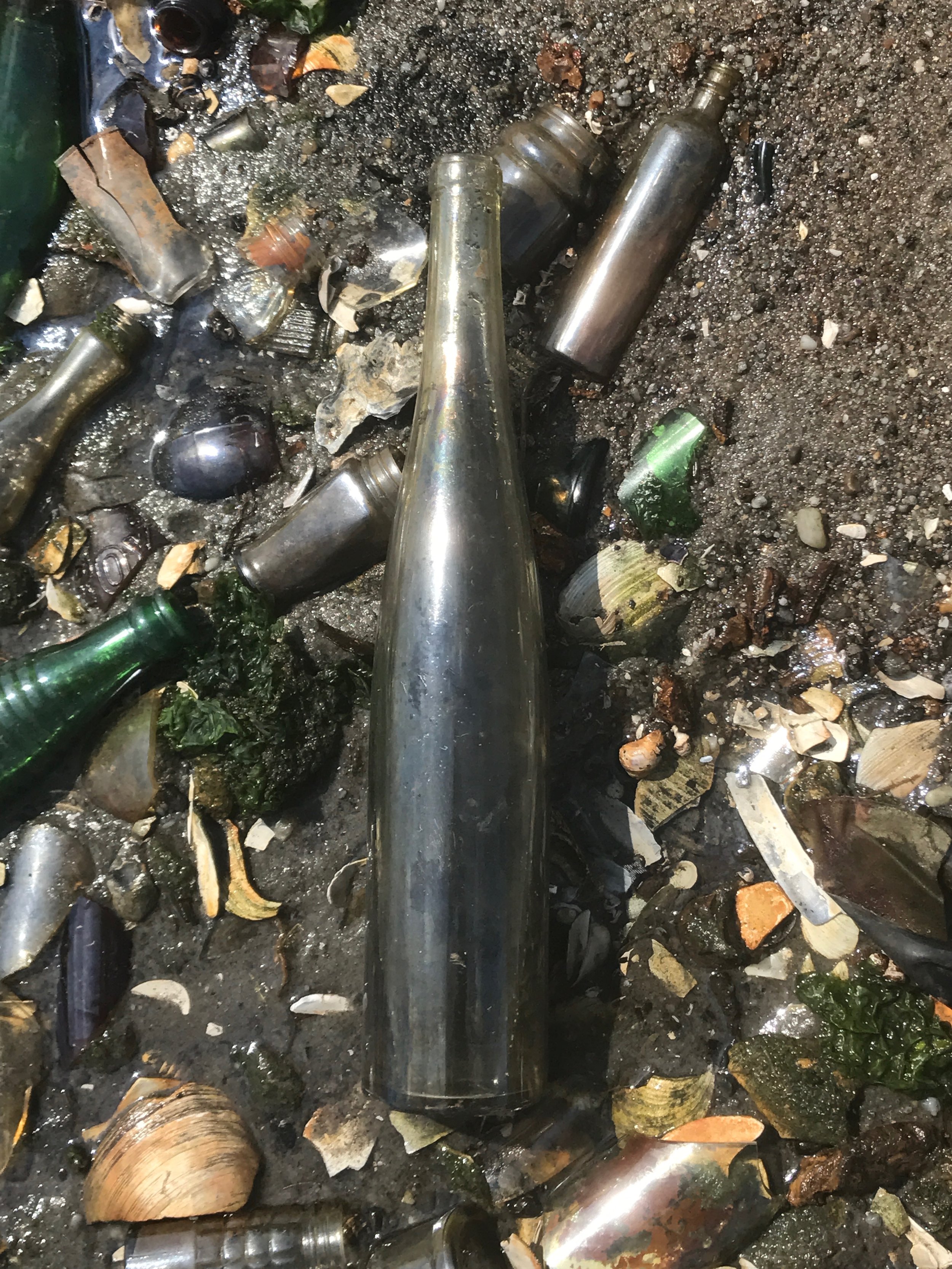
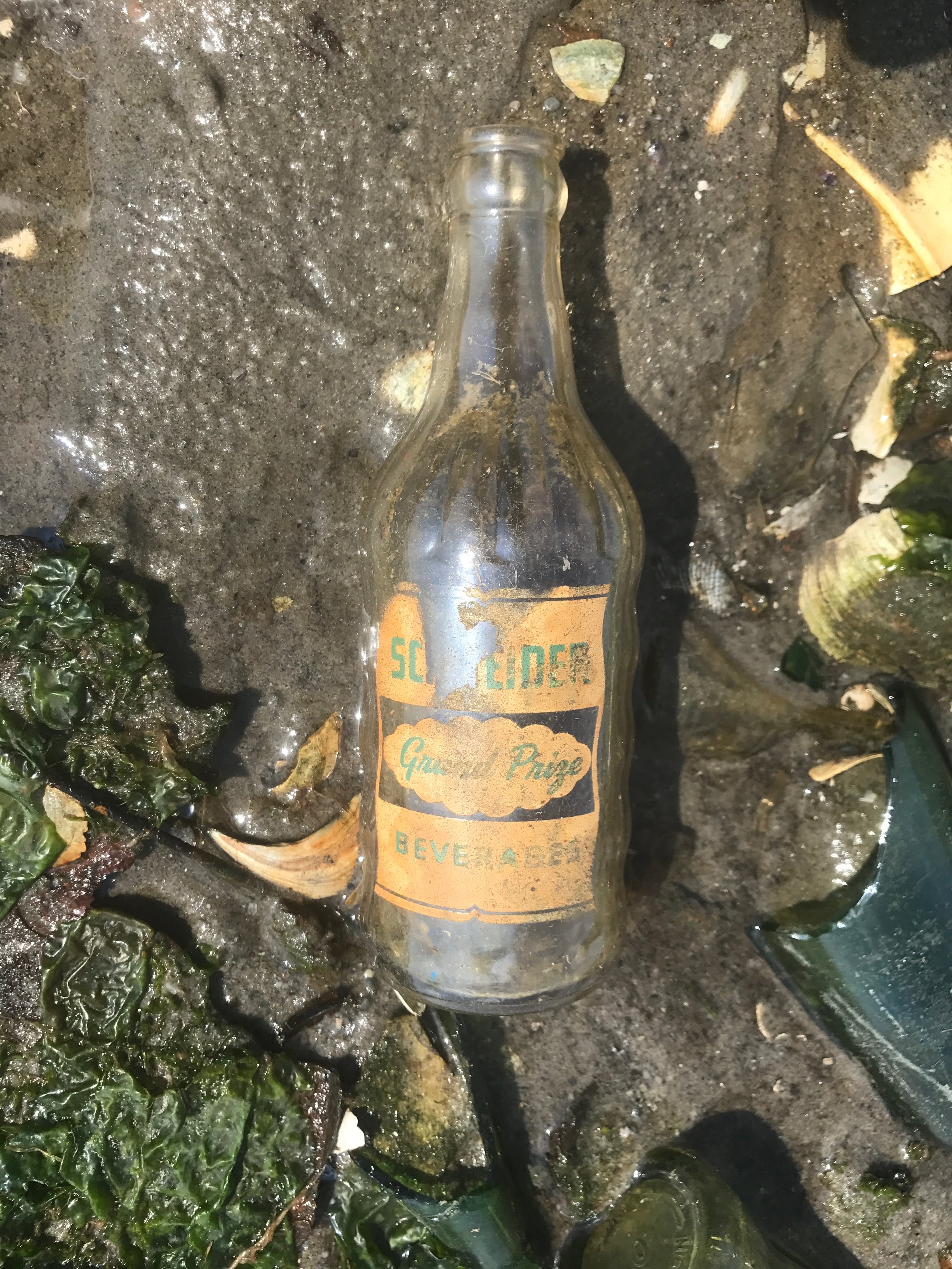
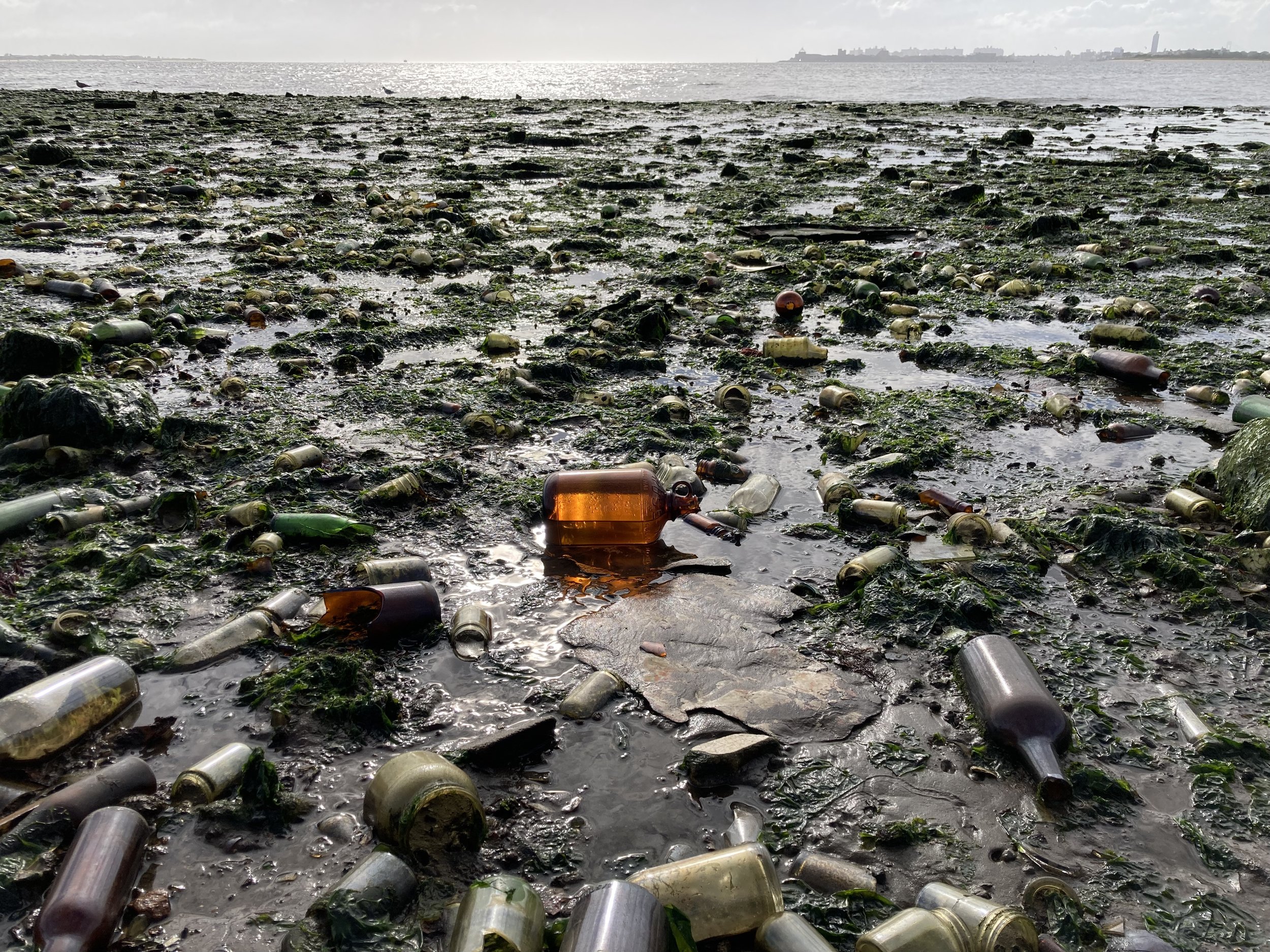
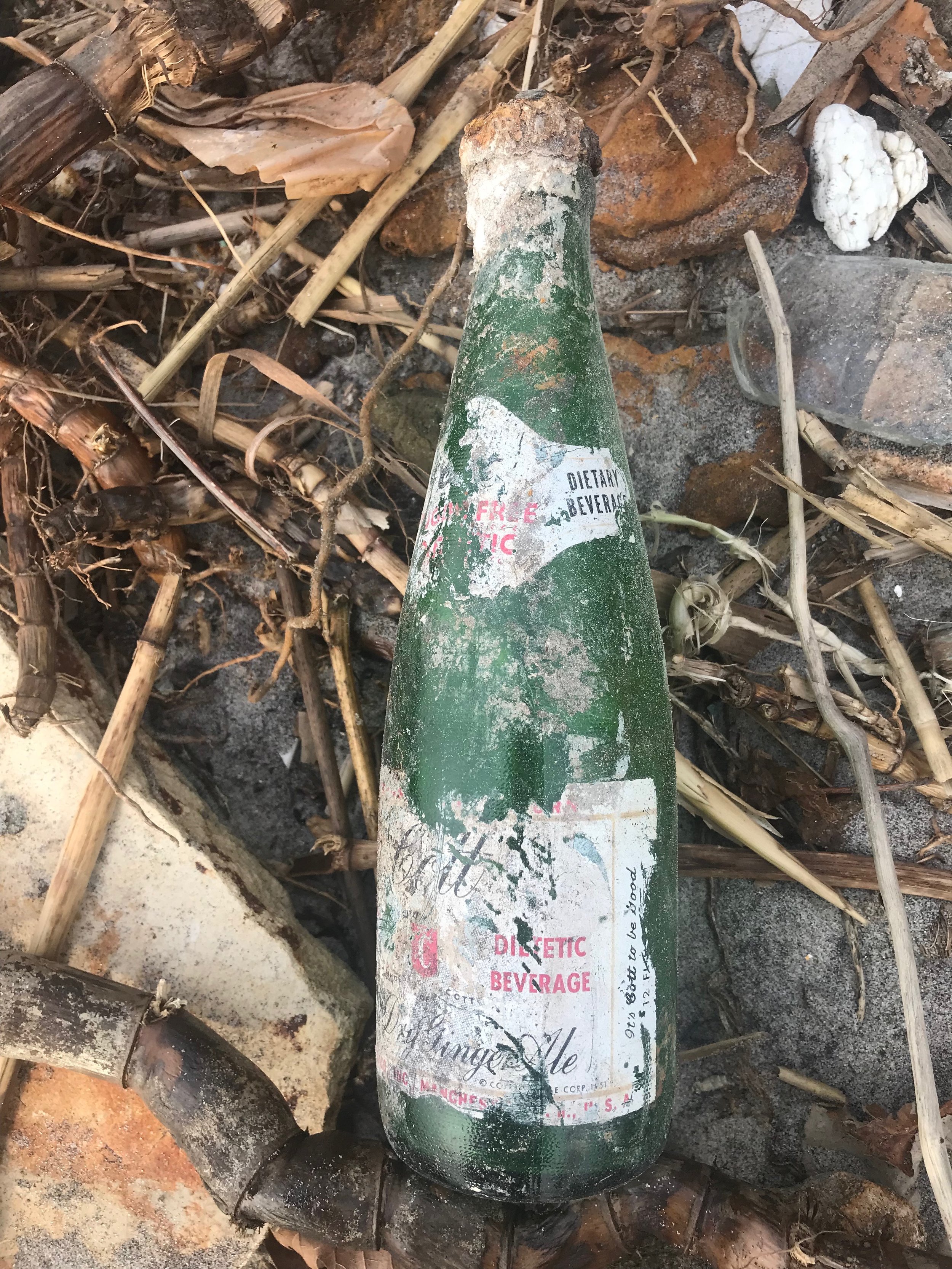
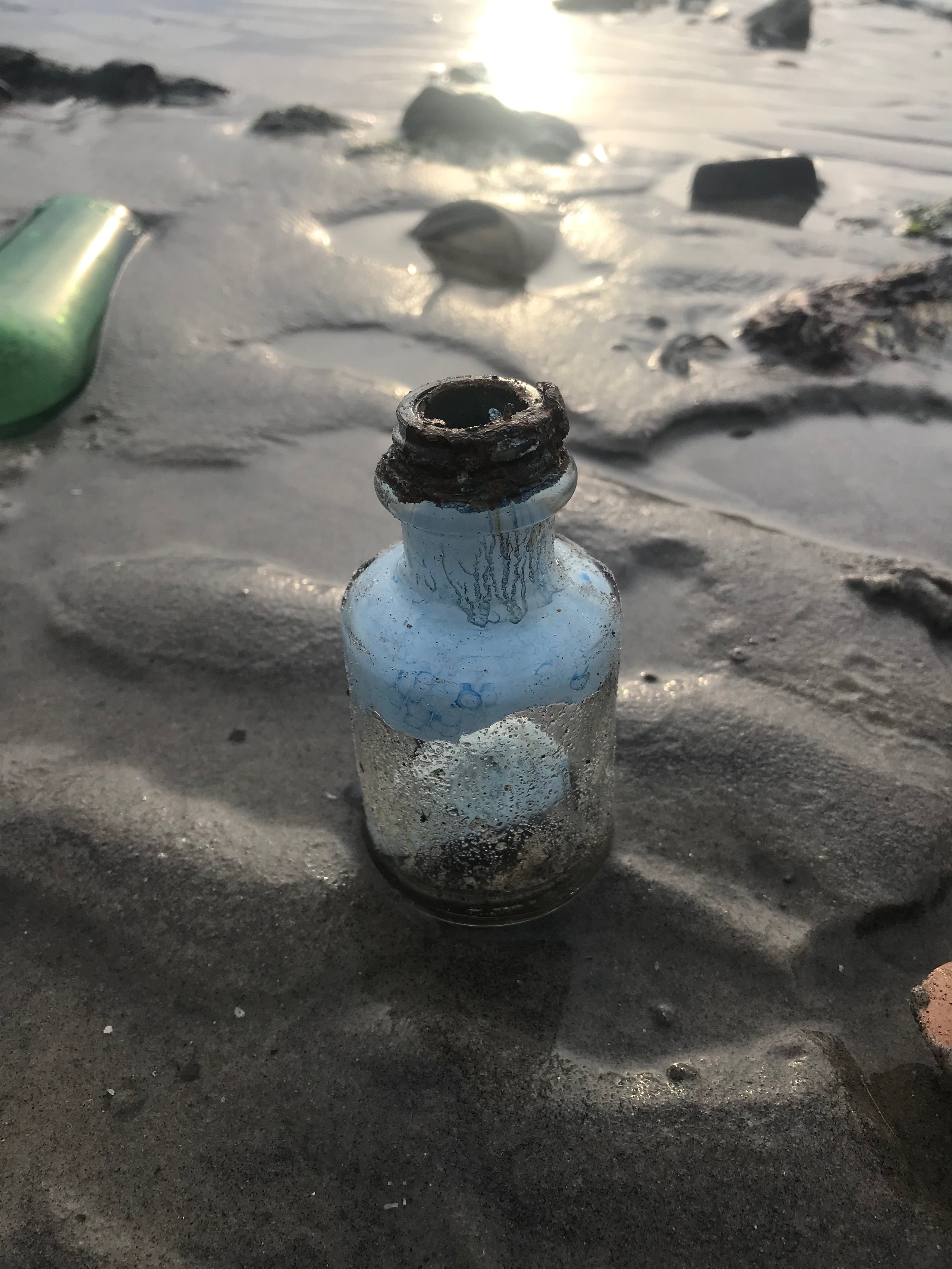
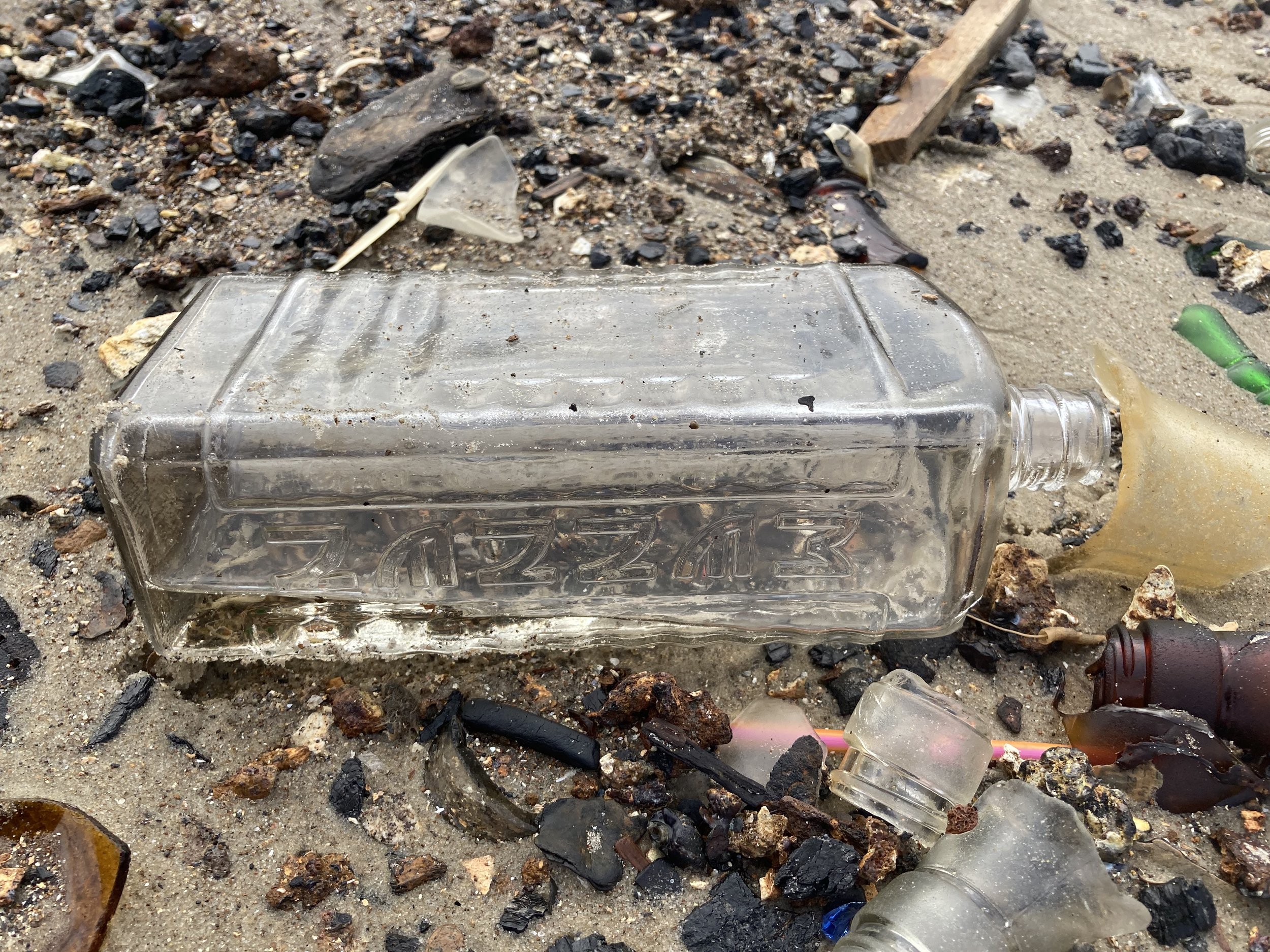
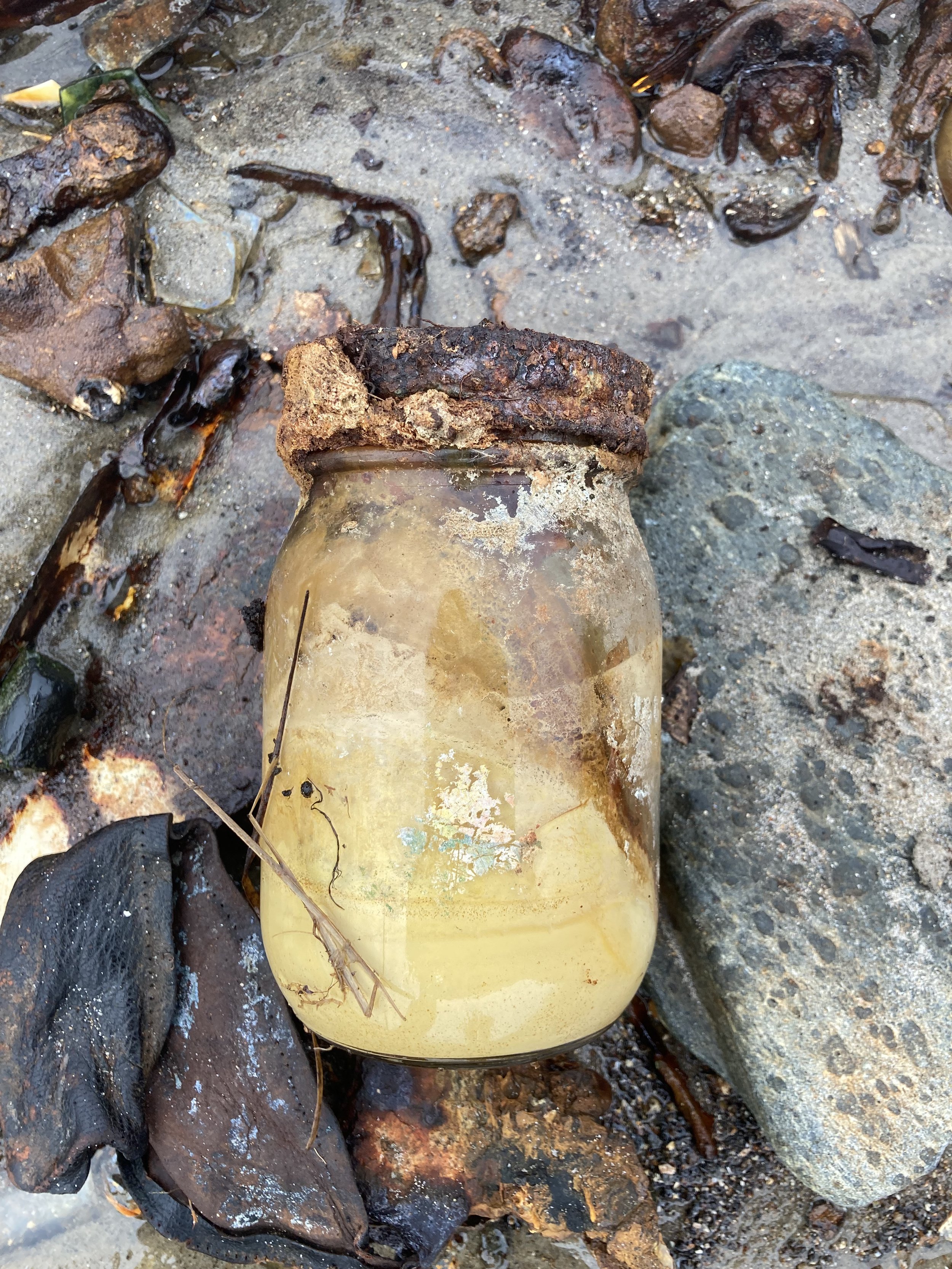
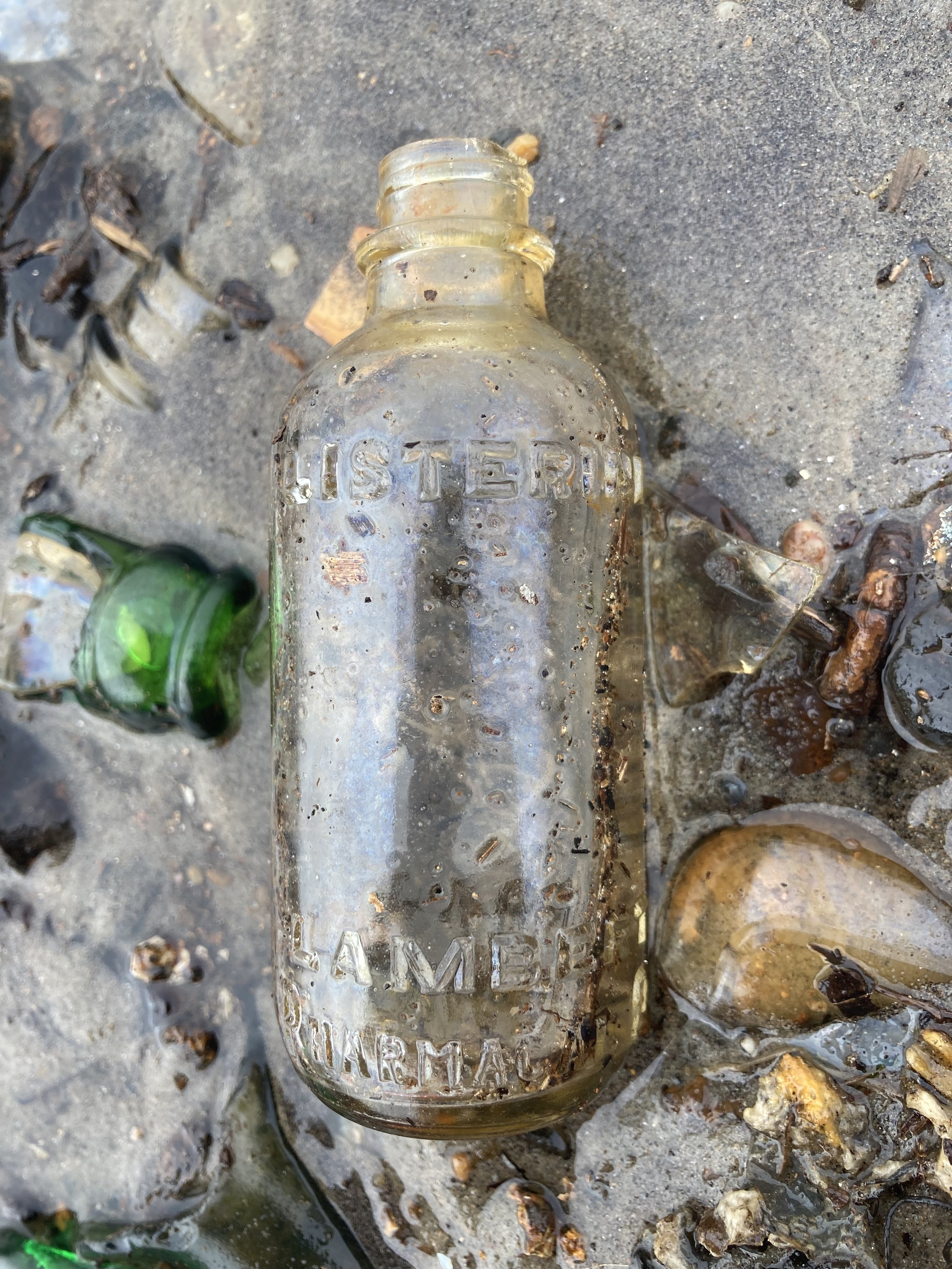

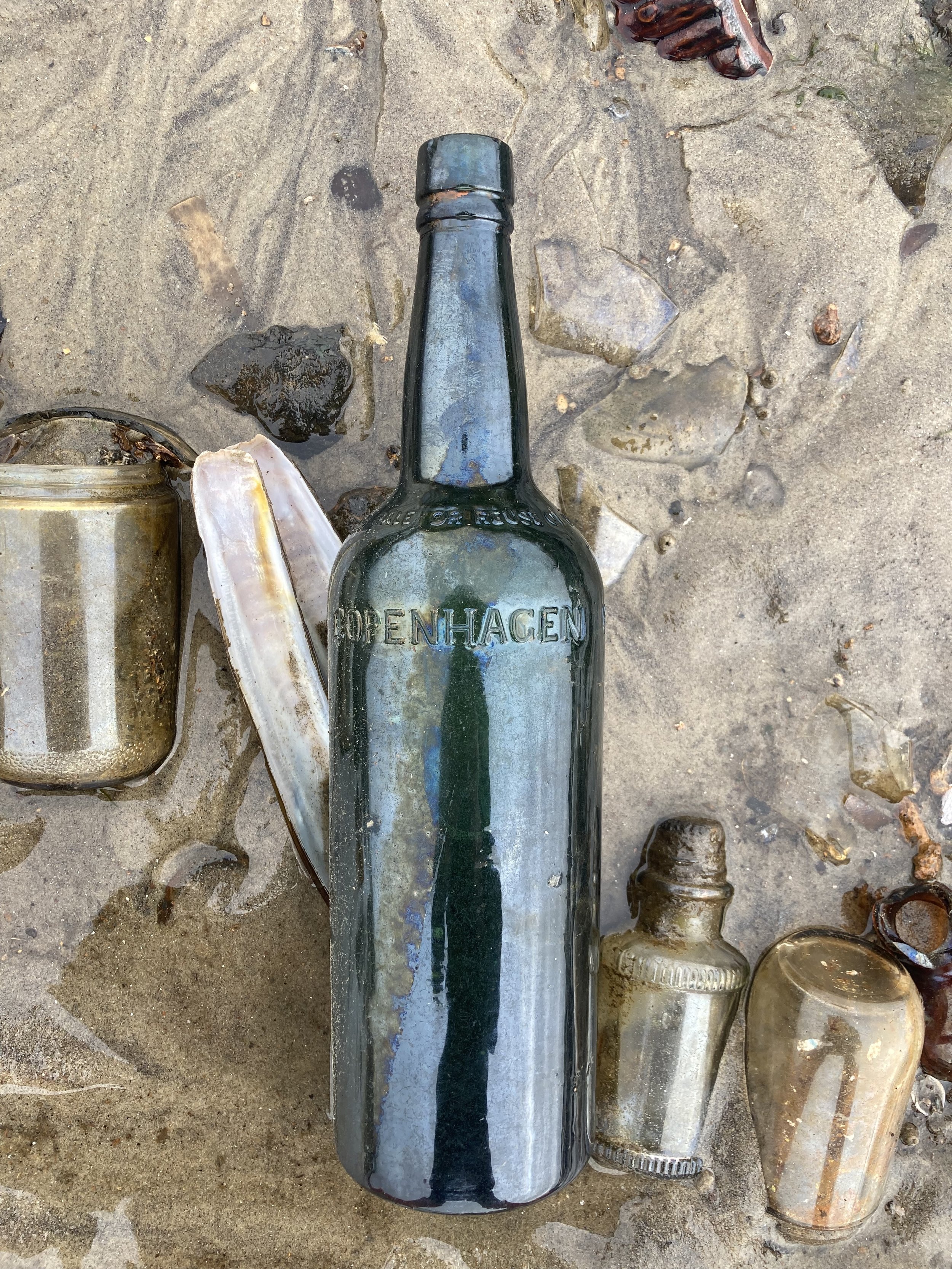
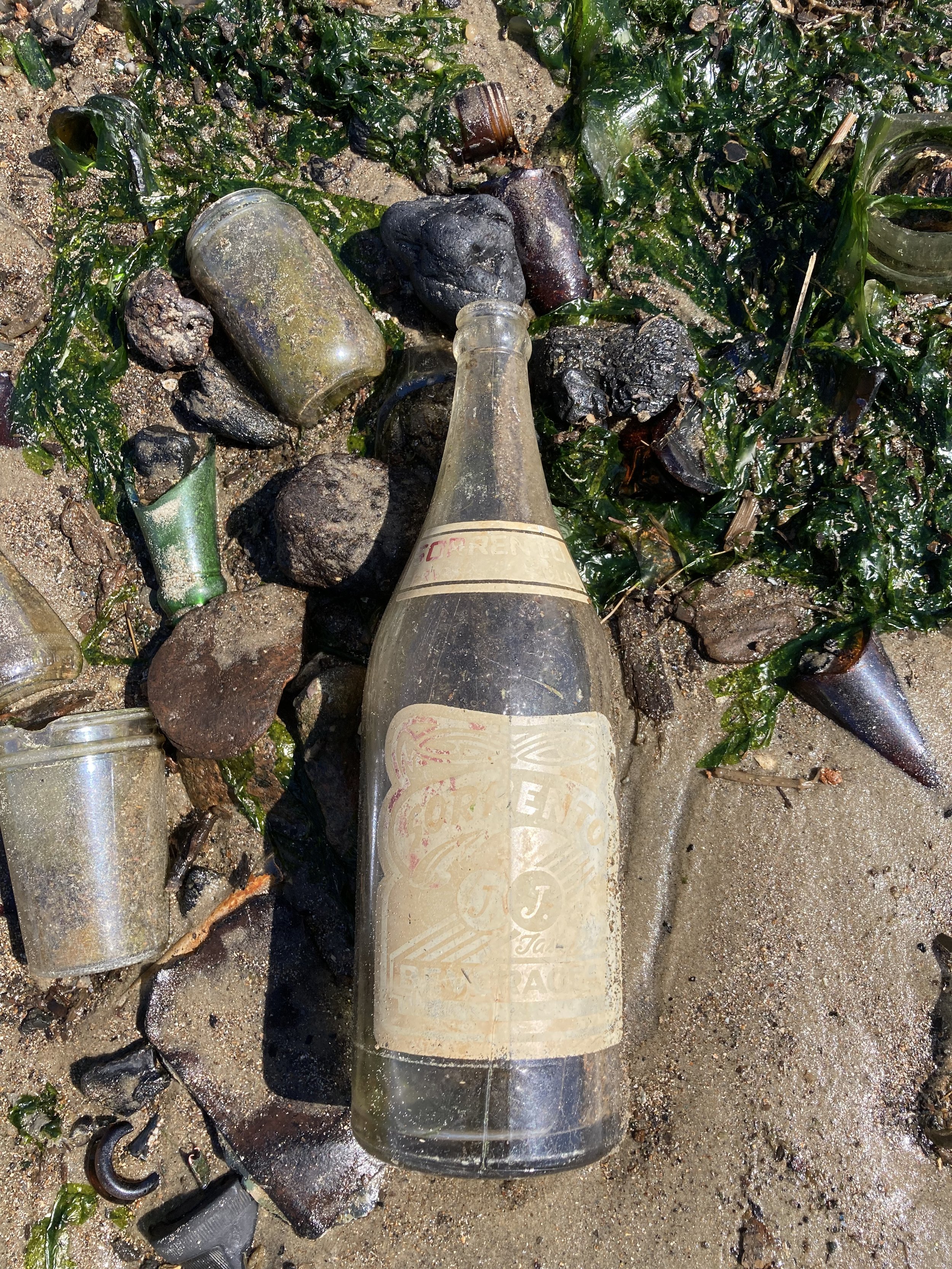
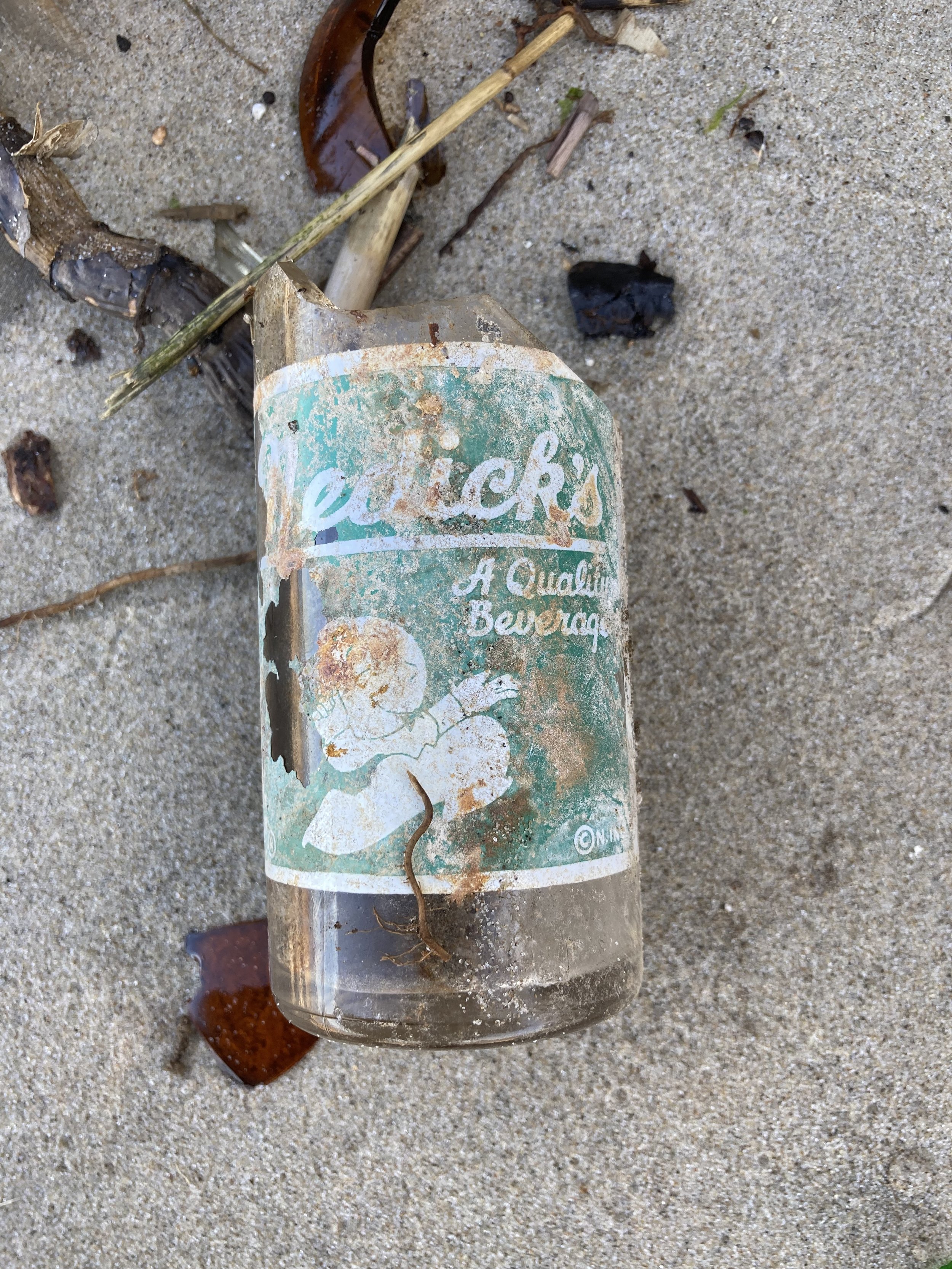
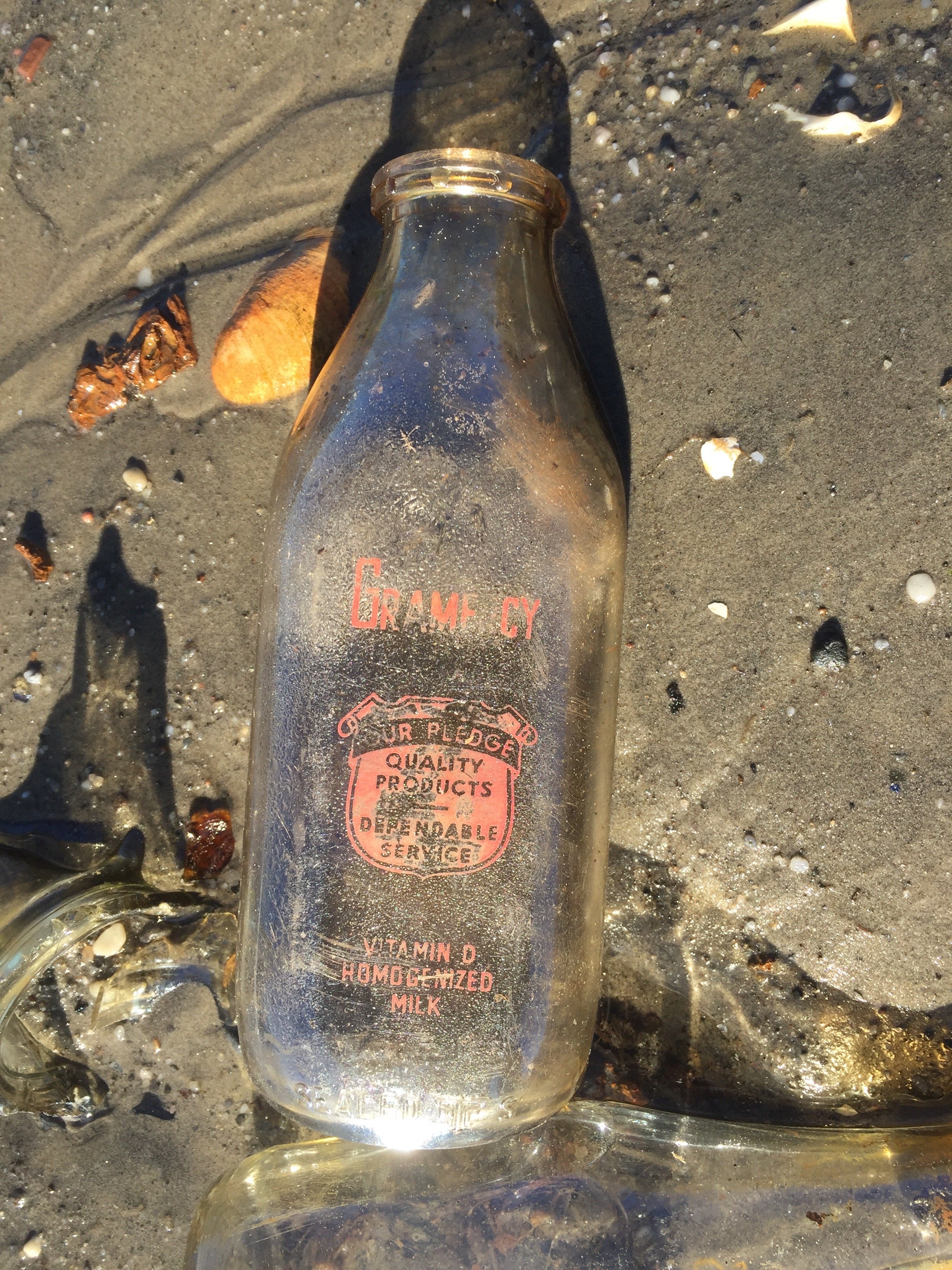
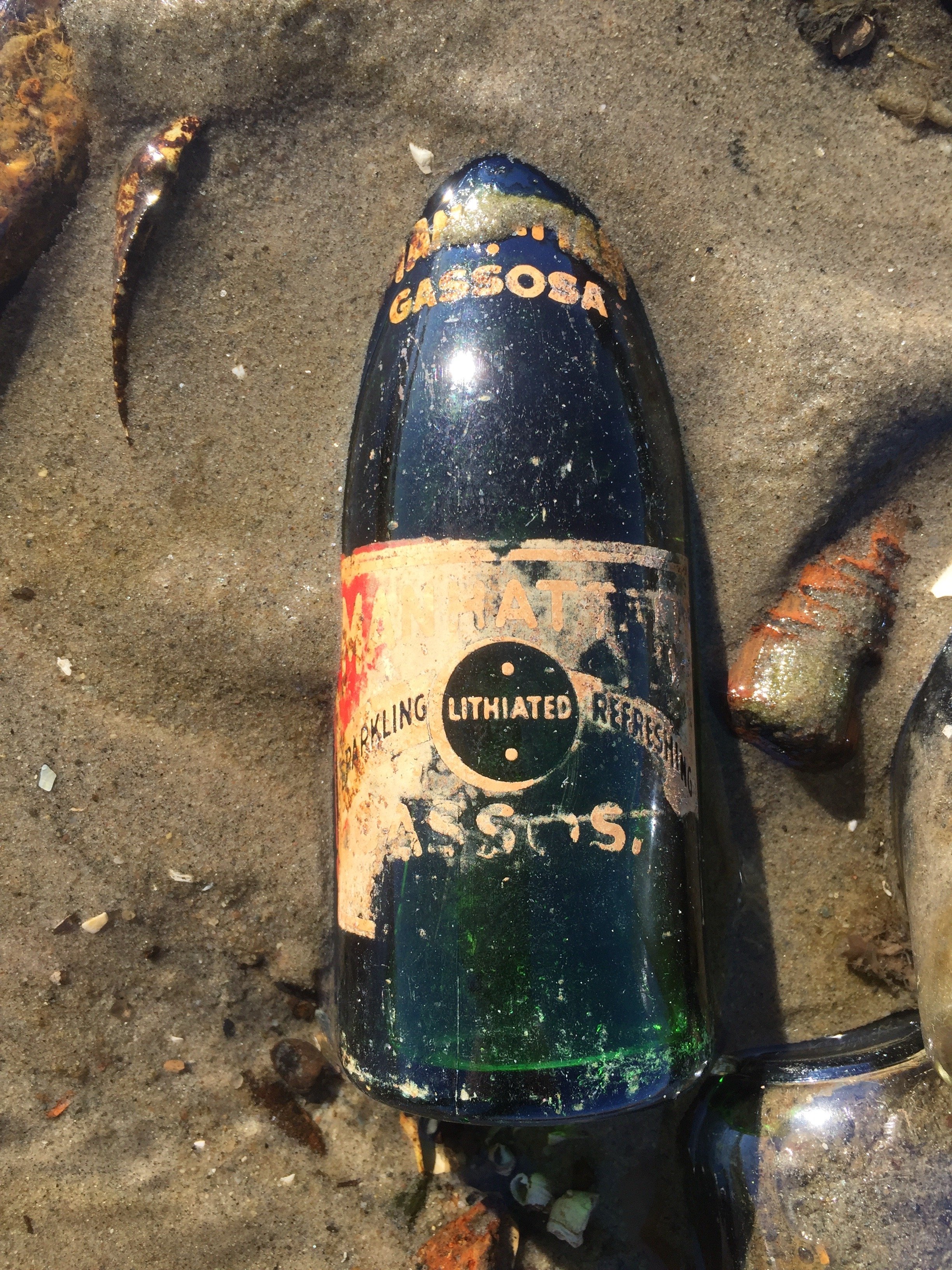

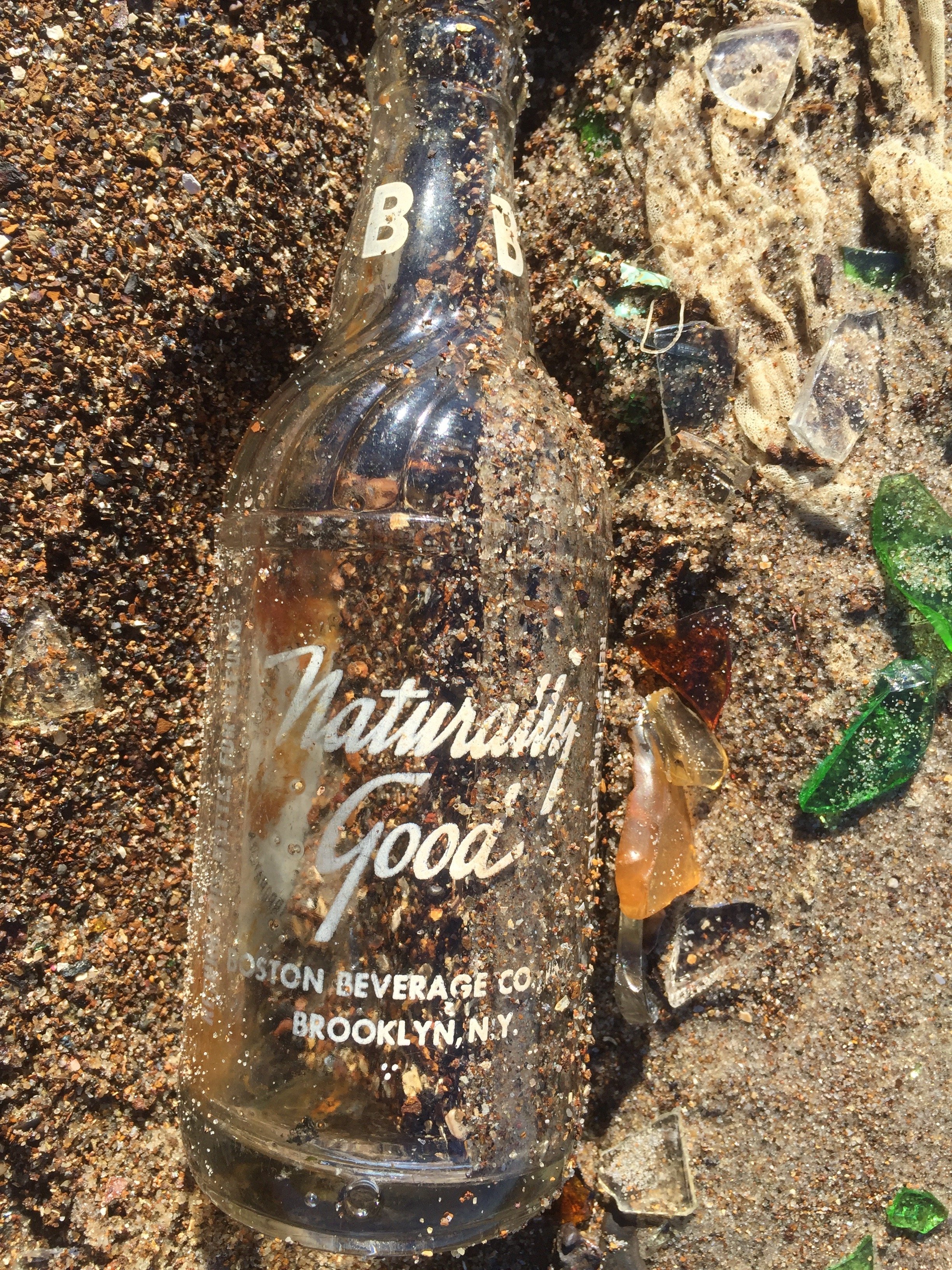
Some of the brand names in these photos can lead to interesting stories.
Here are some examples:
Bricks + Rusty Stuff
Like tiles, the presence of a lot of bricks on the beach shows us that building parts, and not just household trash, were included in the landfill. Many of them have the name of the brick manufacturer imprinted on them. For example, BUCKEY can lead us to the Buckeye Pressed Brick Company in Roseville, Ohio, which opened in 1893 and by 1901 had been absorbed by another brick company. BRIGH leads to the Brigham Brick Company in East Kingston, New York, which produced these bricks from 1922 to 1957.
“Rusty stuff,” to me, belongs in the same category as bricks because of the color, and because it often doesn’t consist of ordinary household trash, but rather parts of machines and the like; giant screws or masses of wire whose functions I can’t even guess at. Seeing an old, decaying metal roller skate brings back a different time, before Rollerblades, when skaters put their skates on over their shoes and used a key to loosen and tighten them.
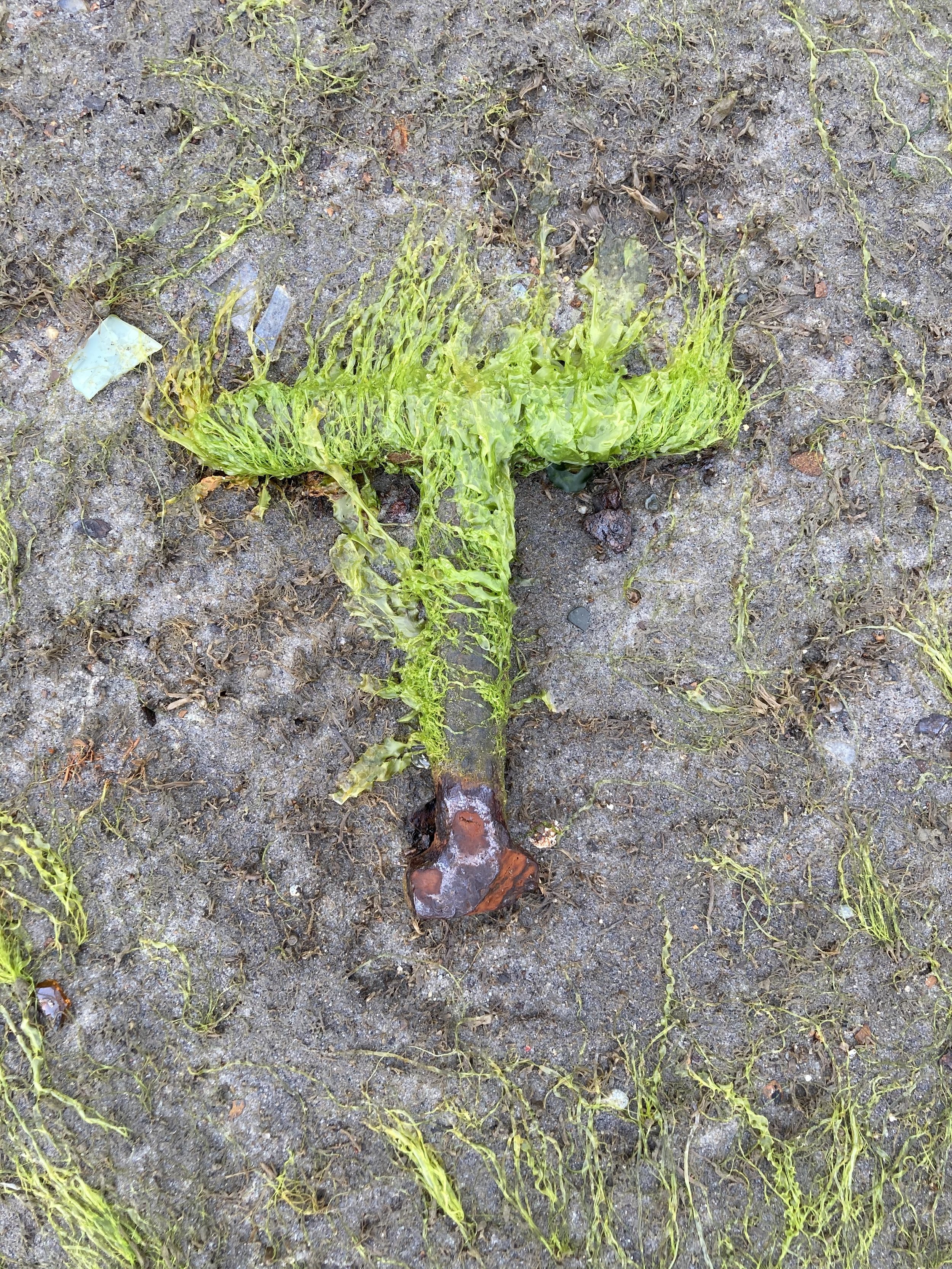
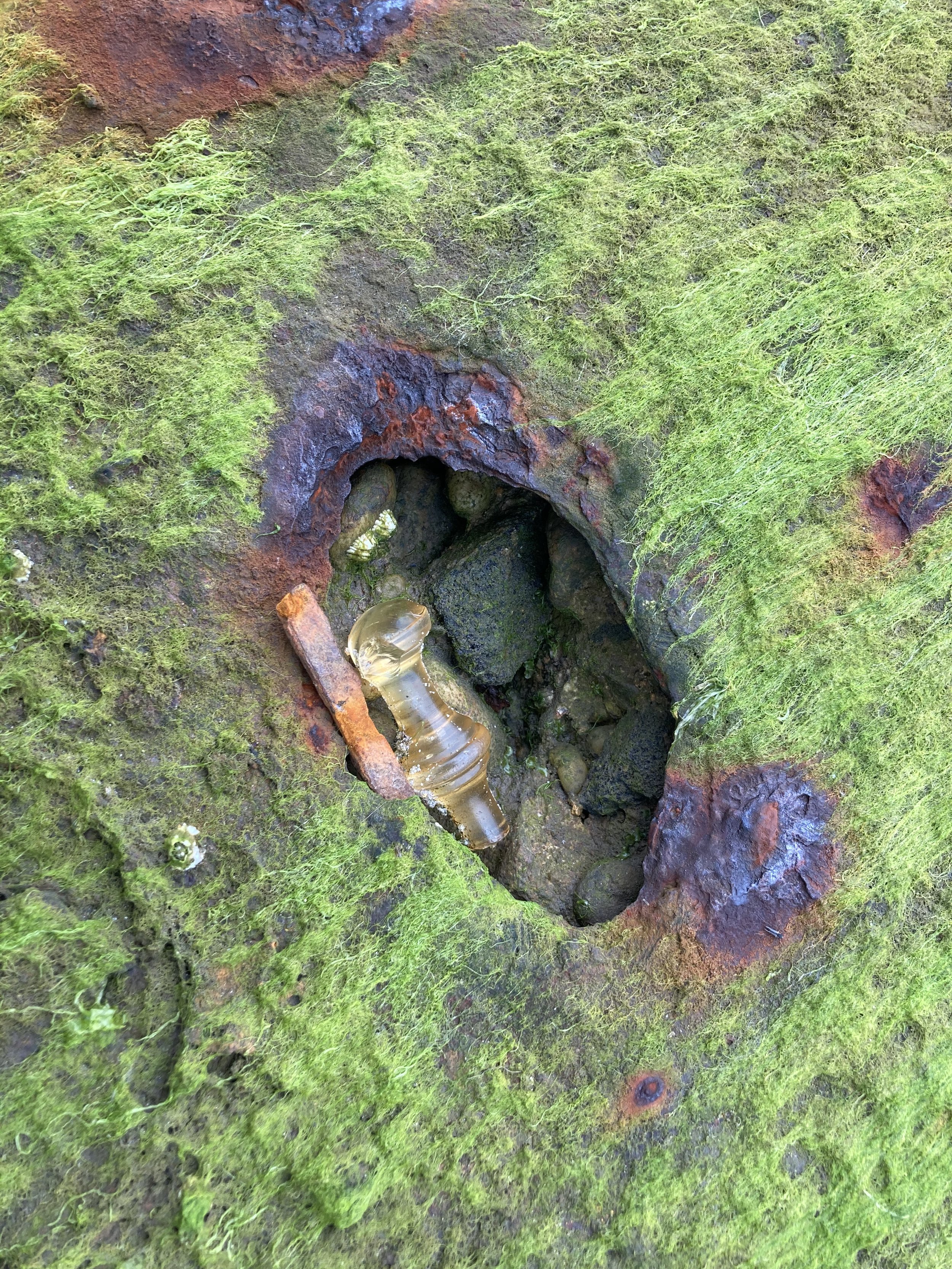
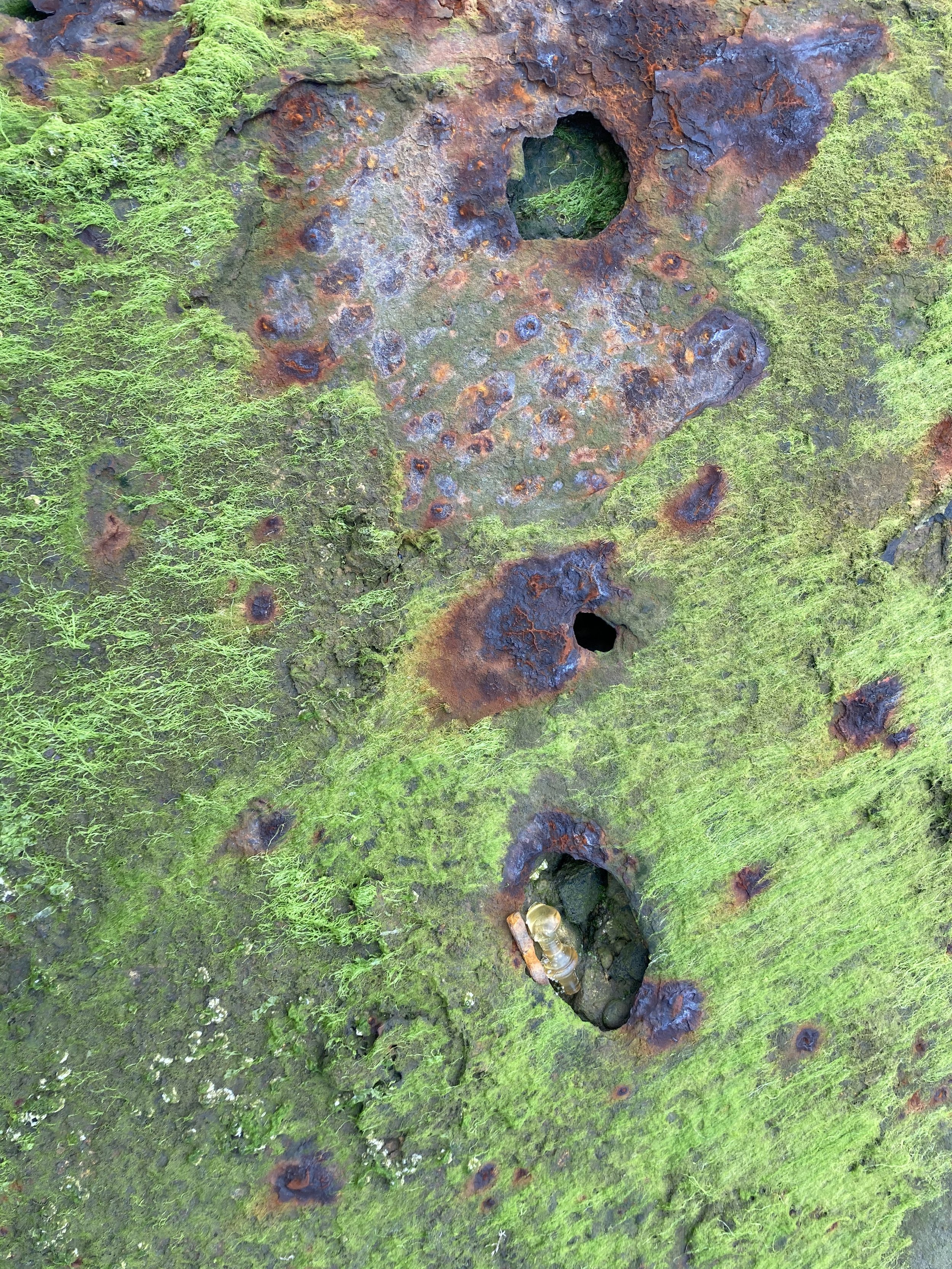
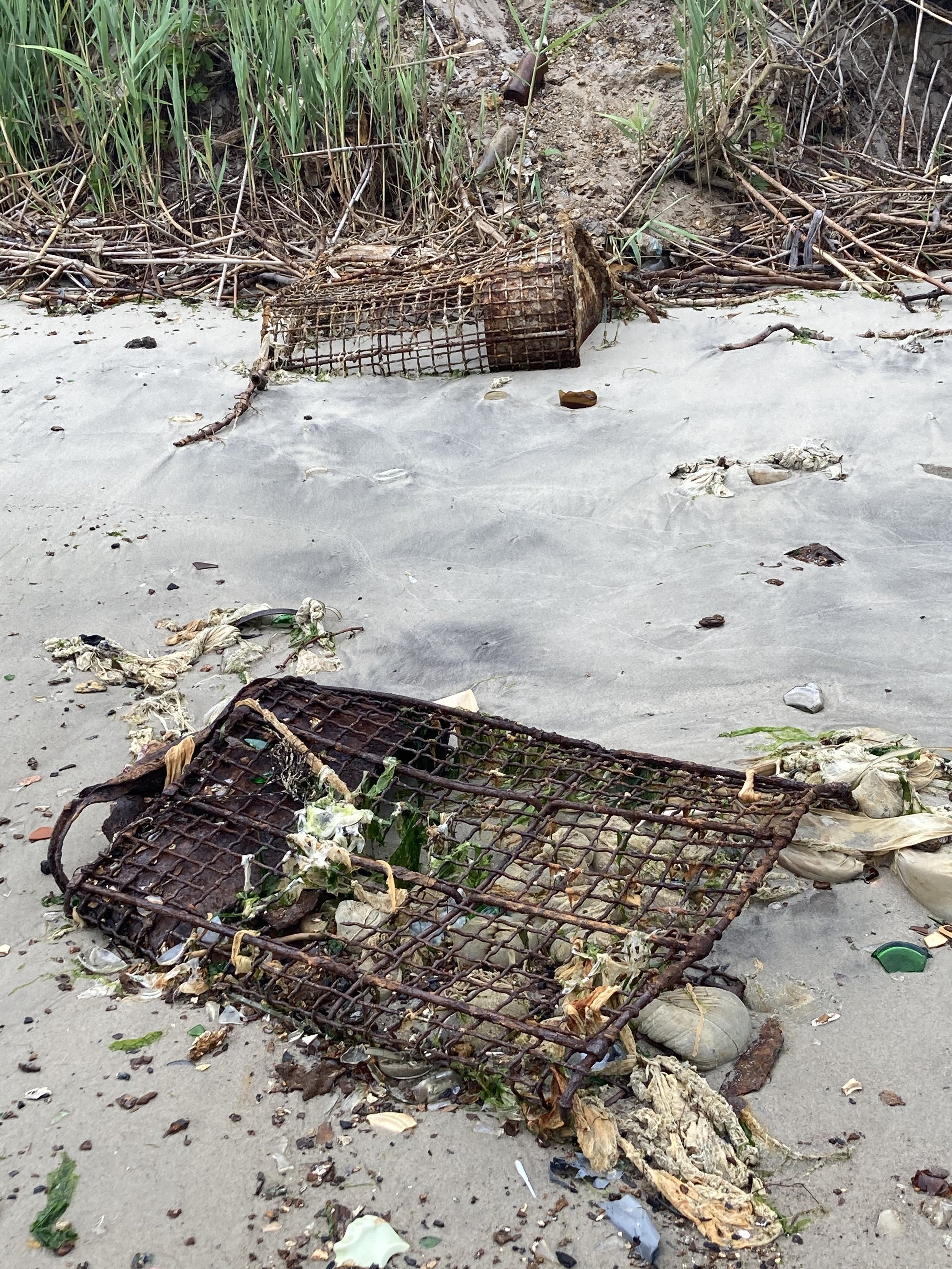
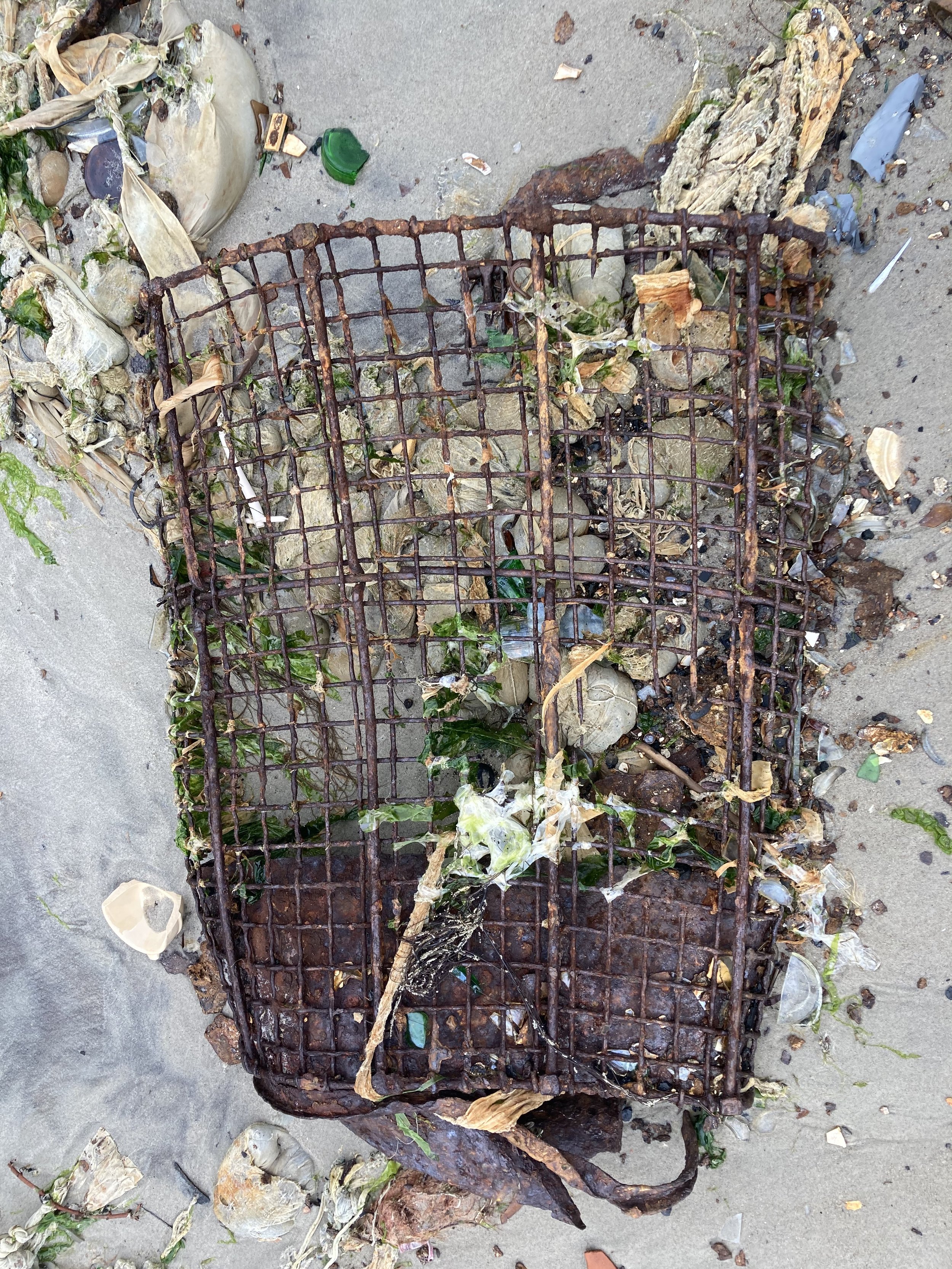
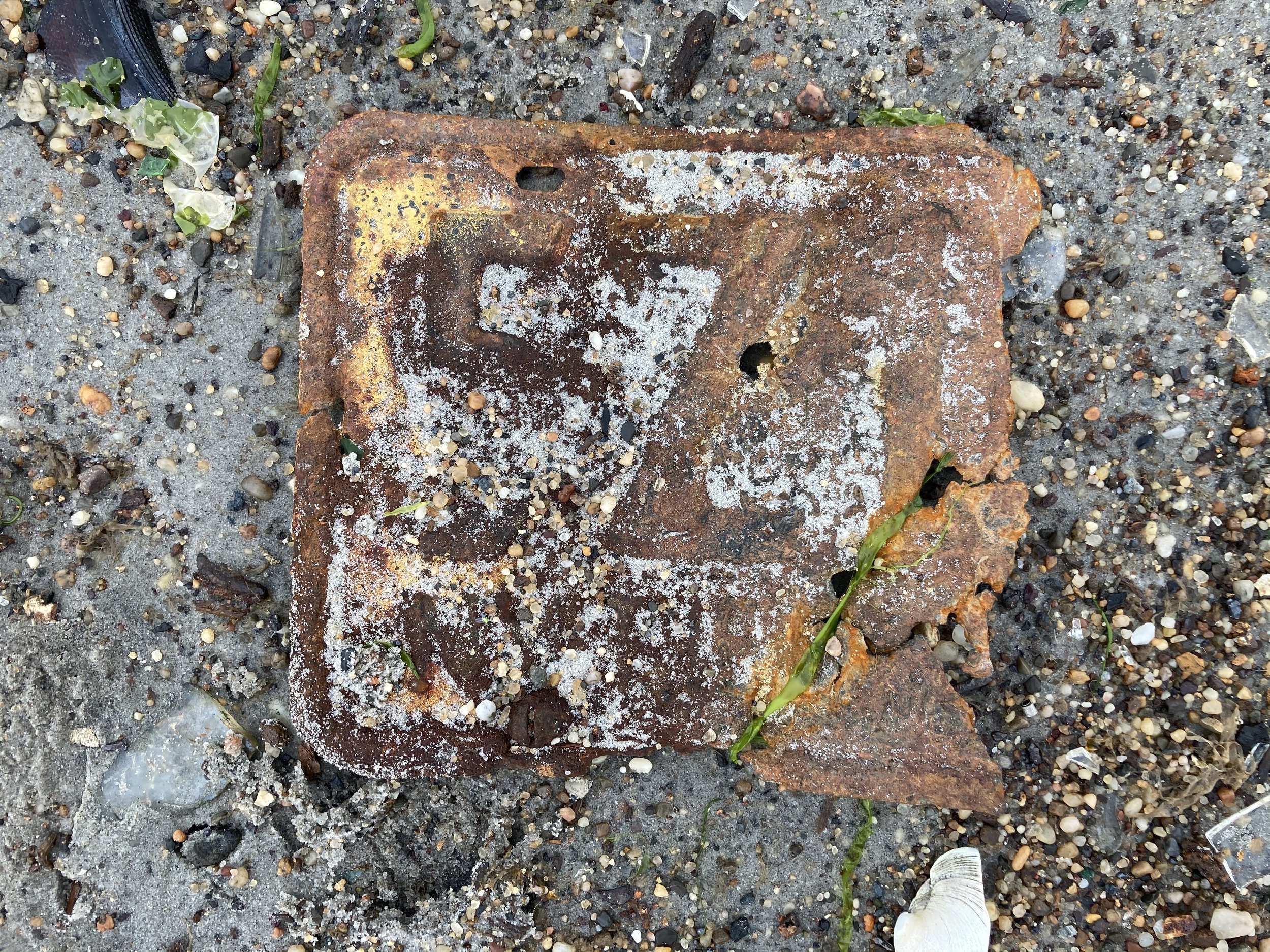
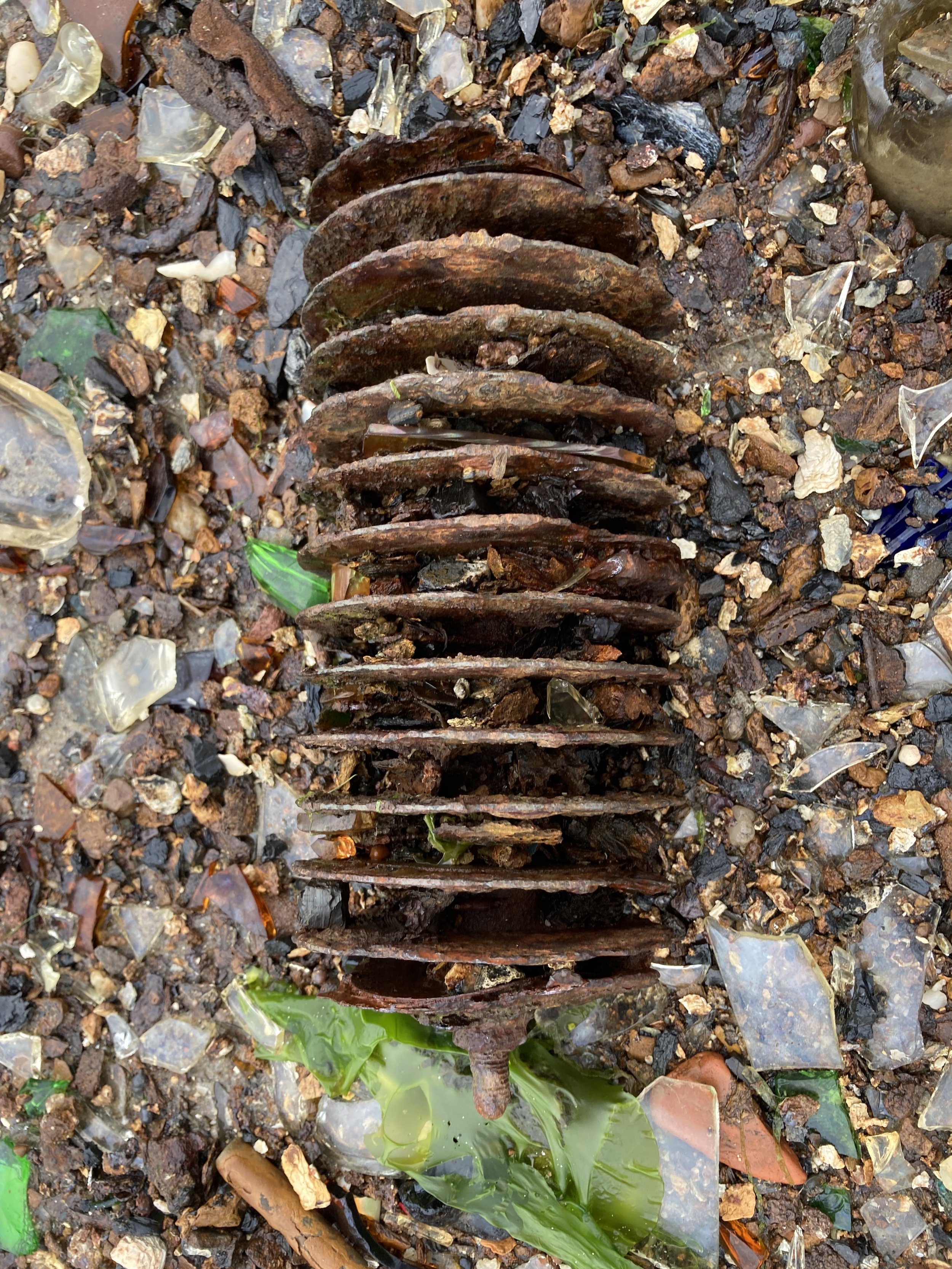
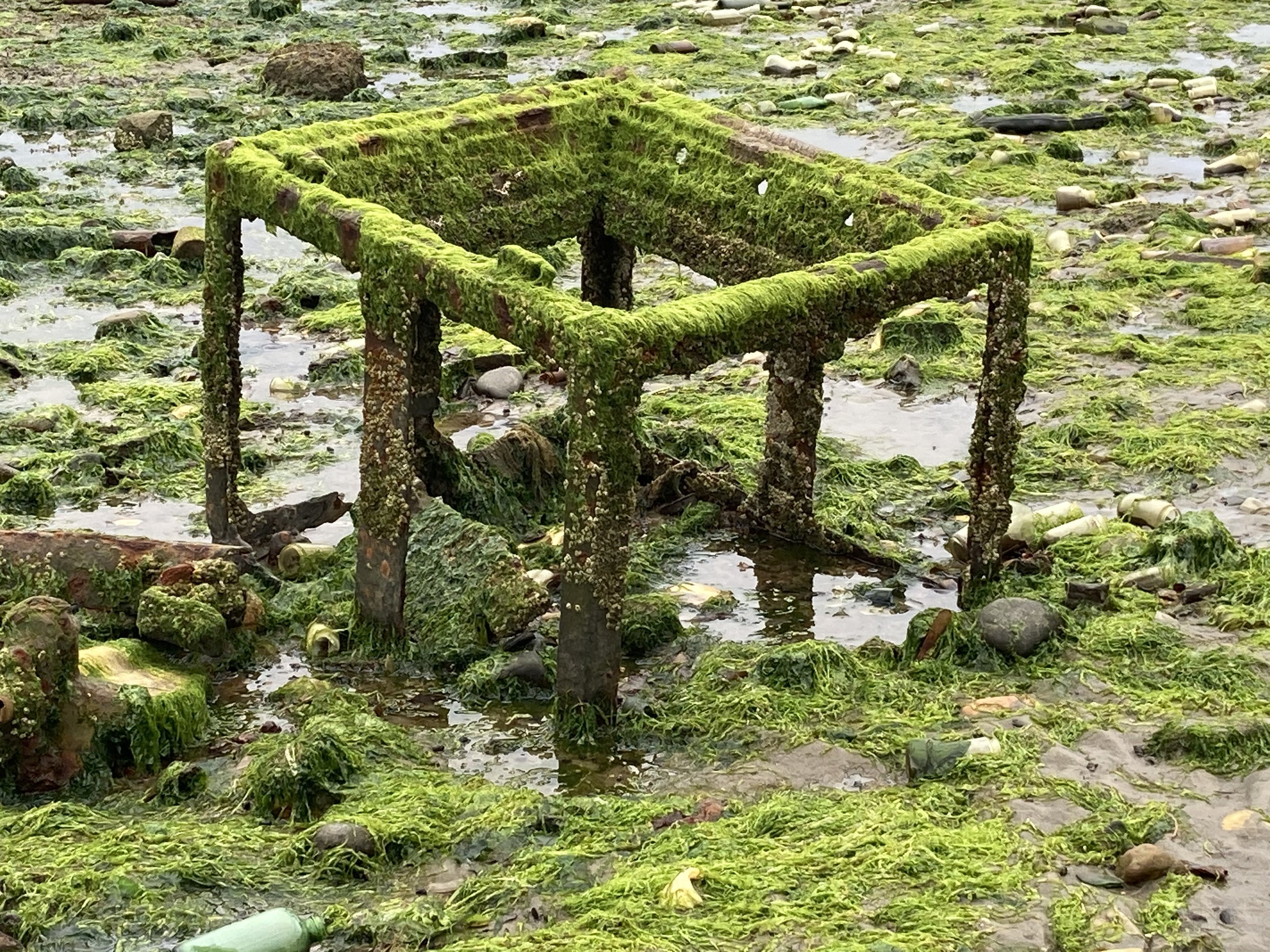
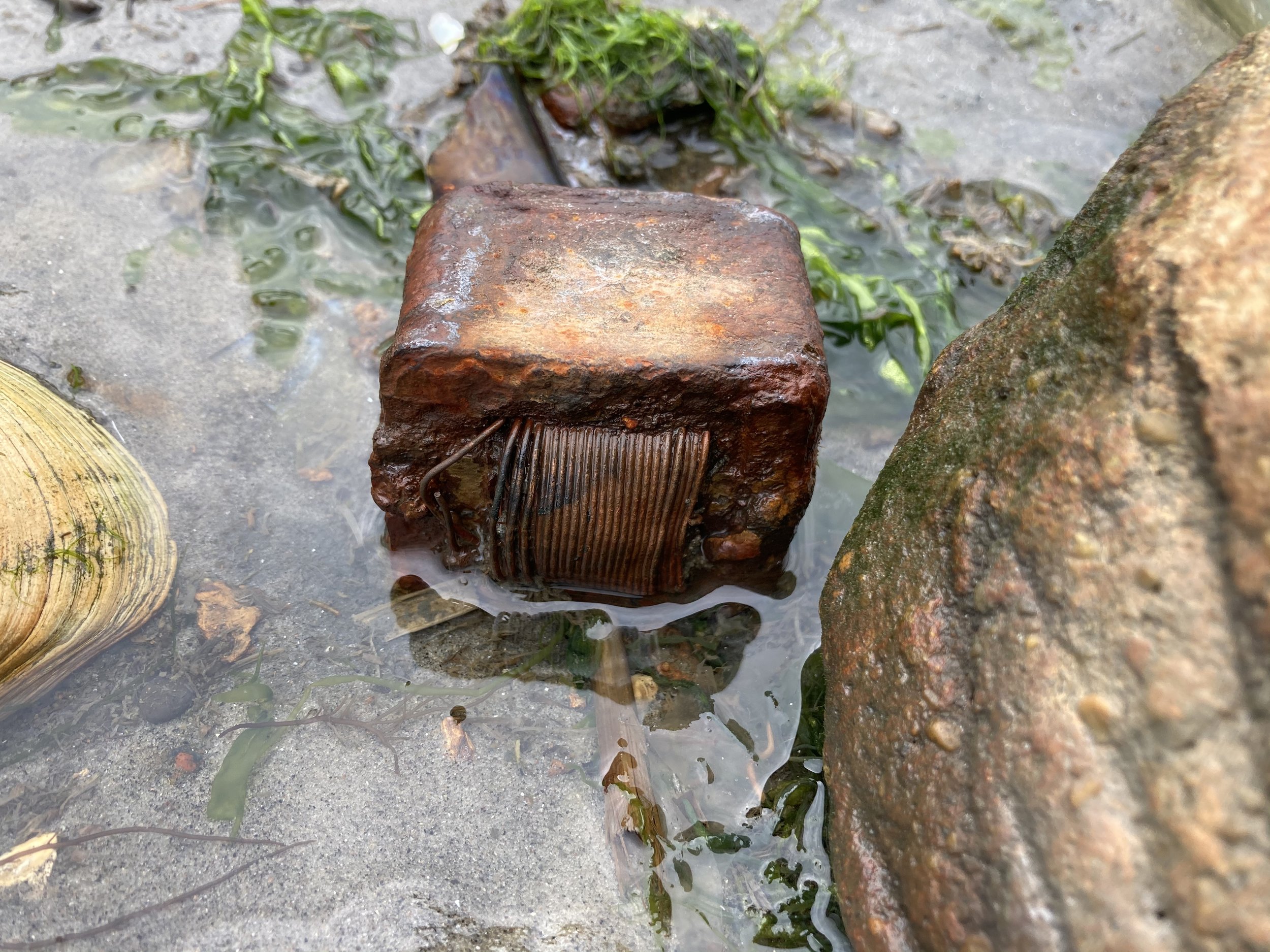
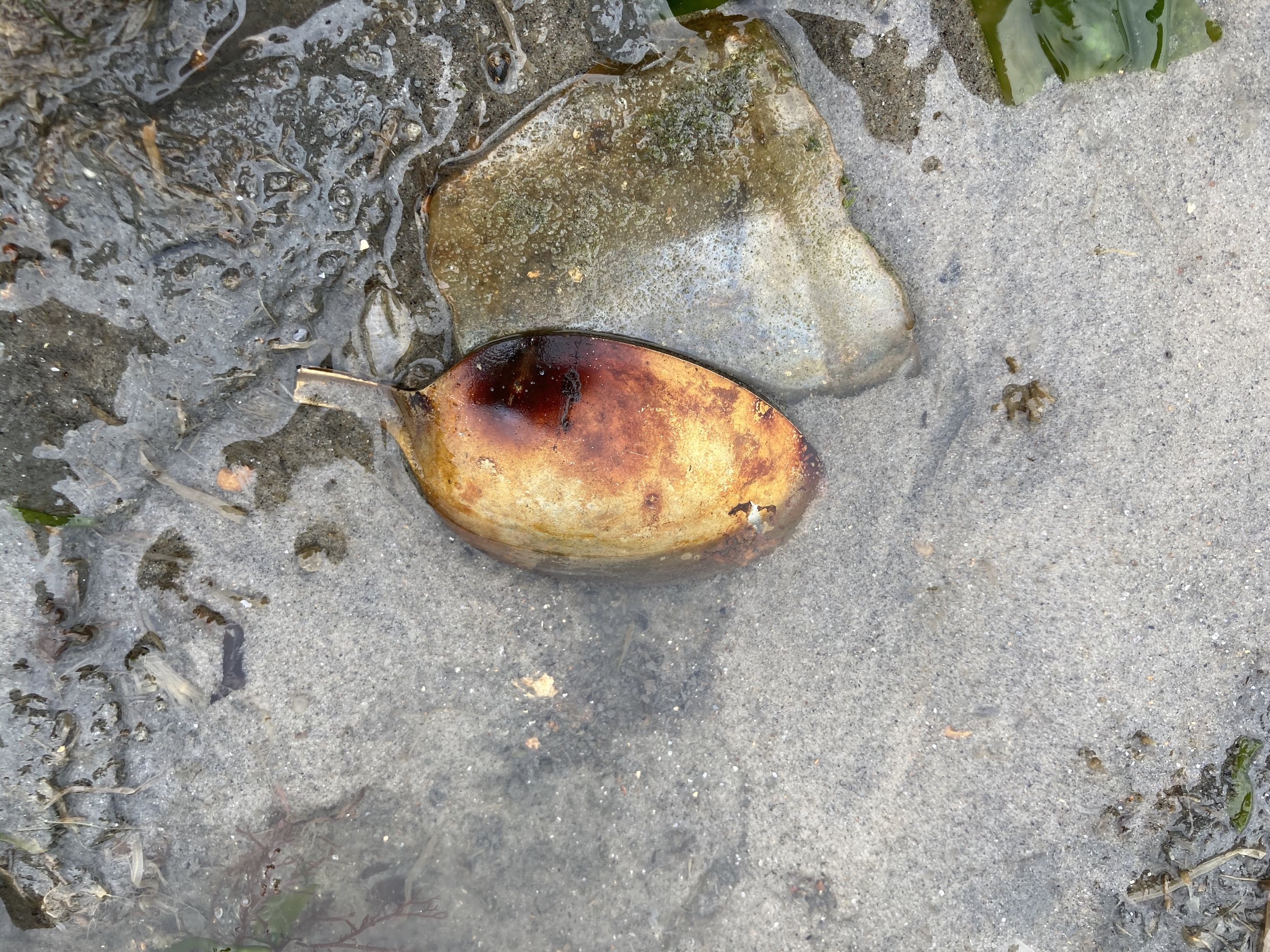


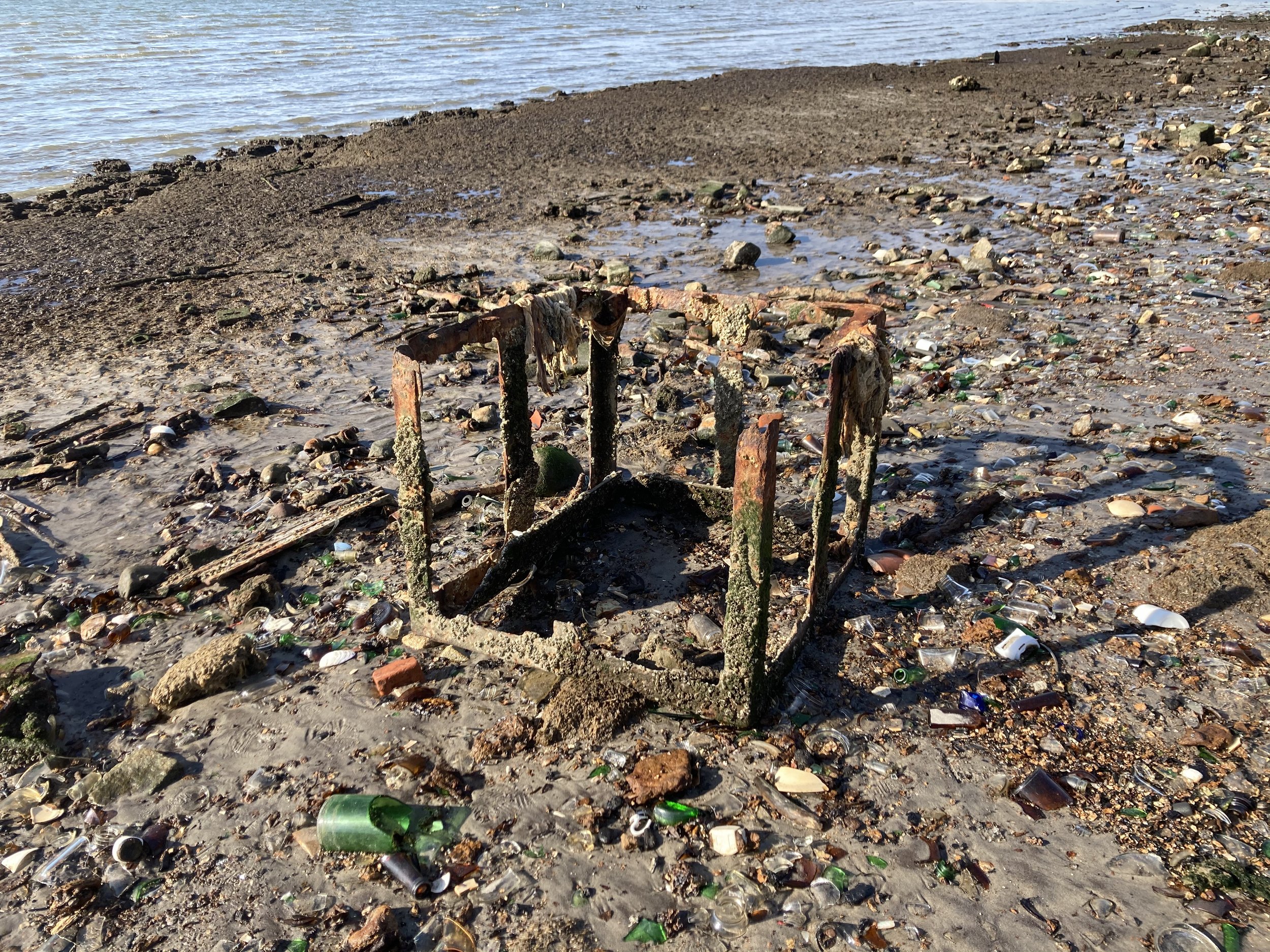
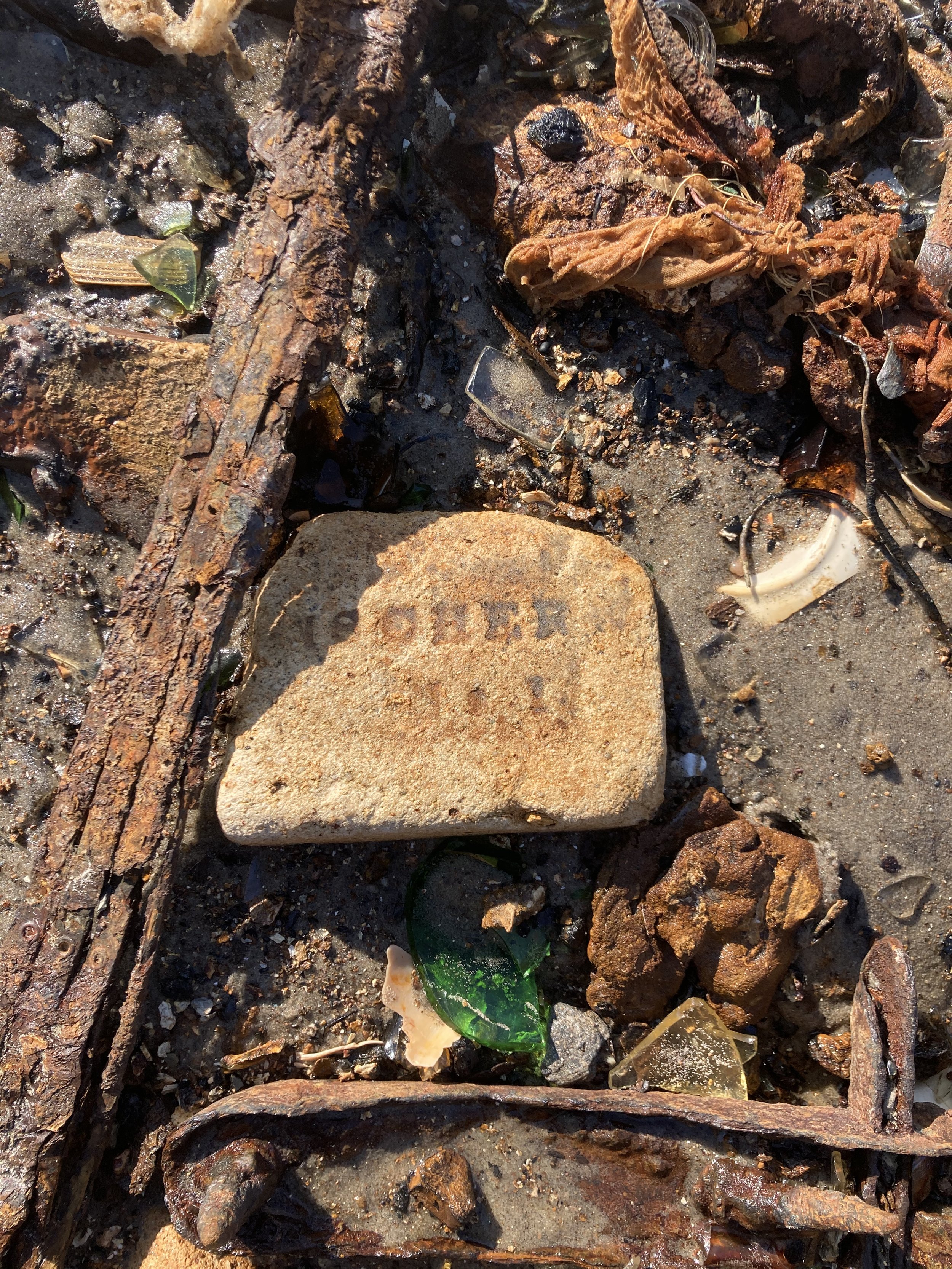
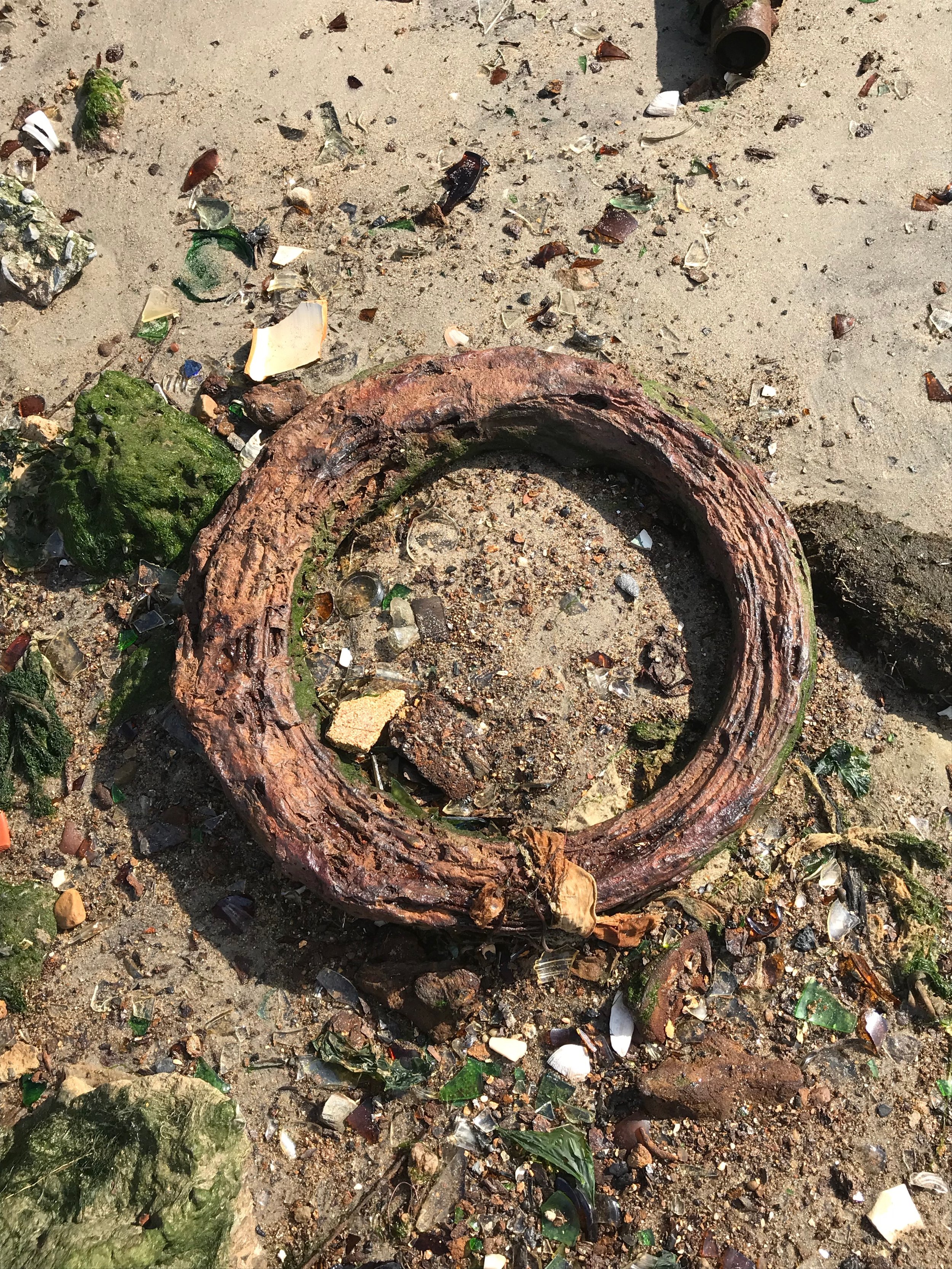
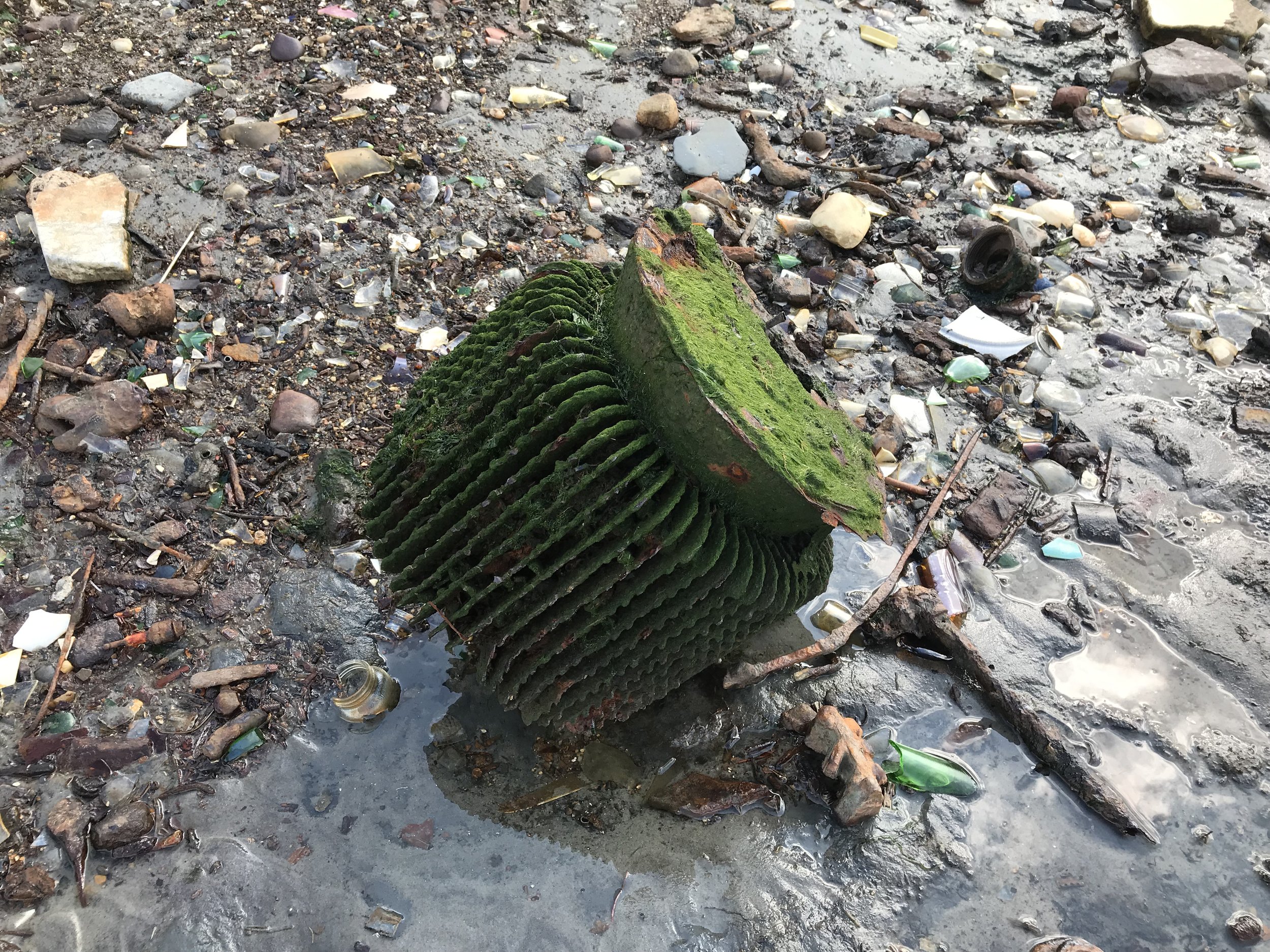
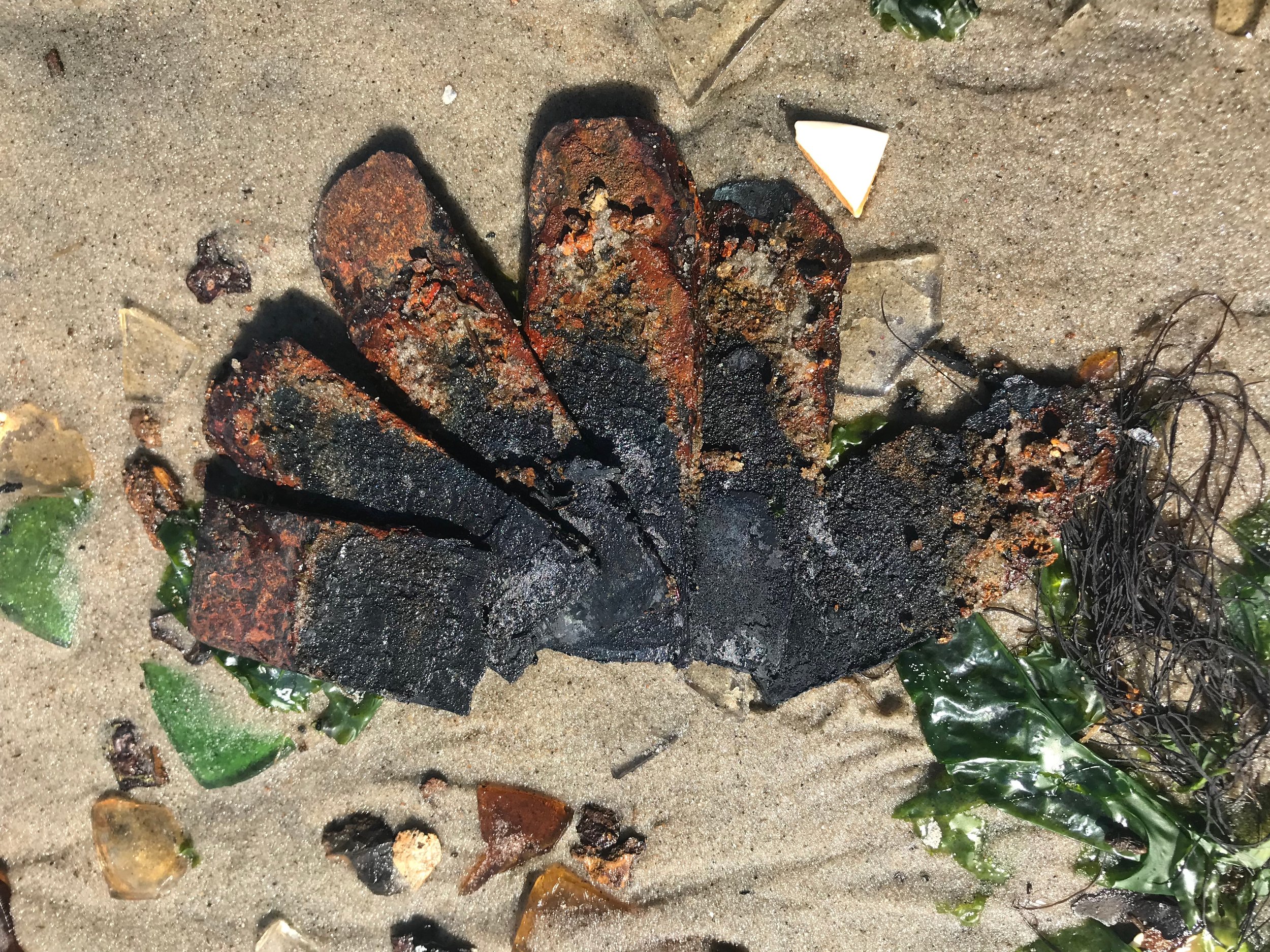
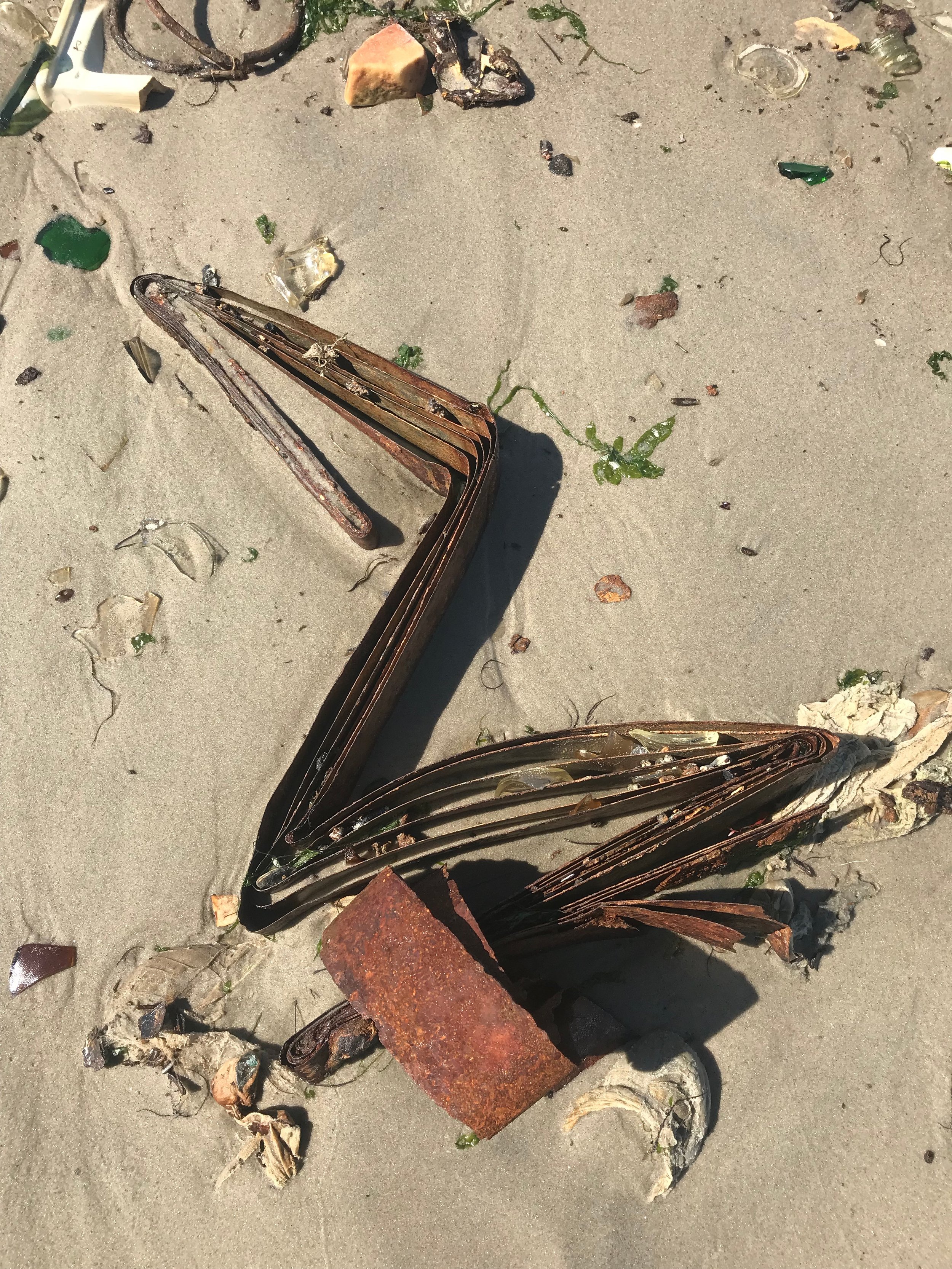

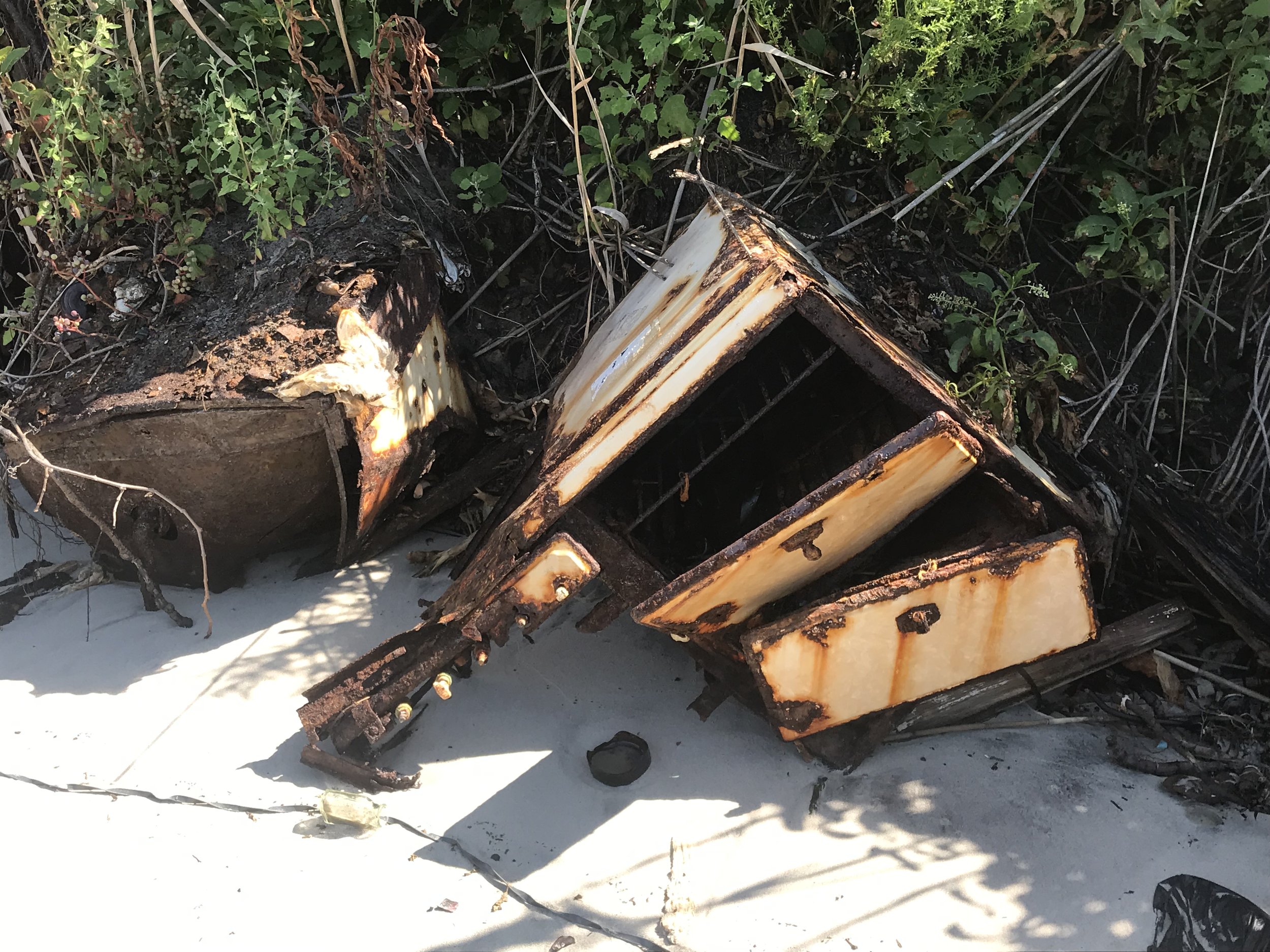

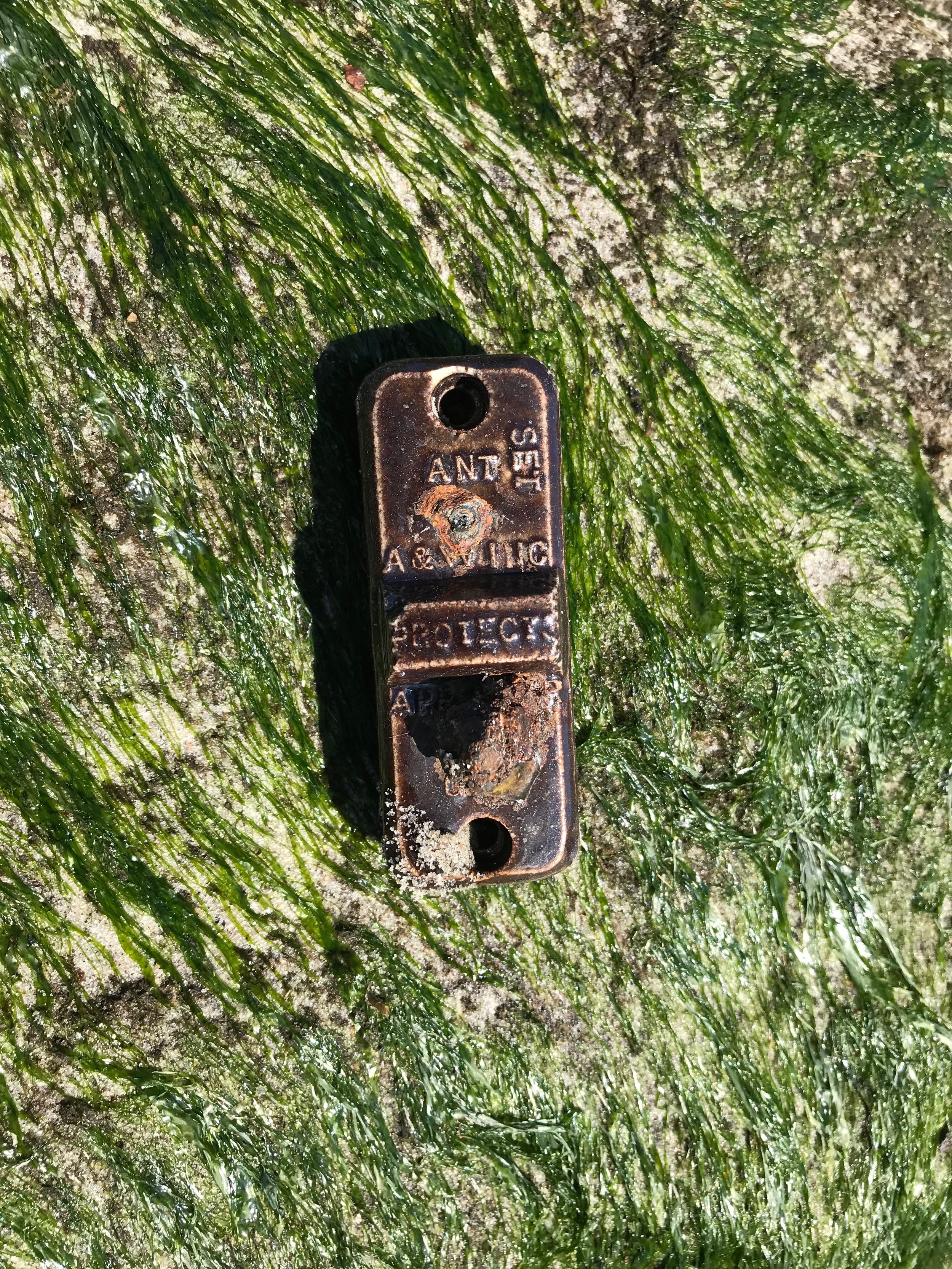
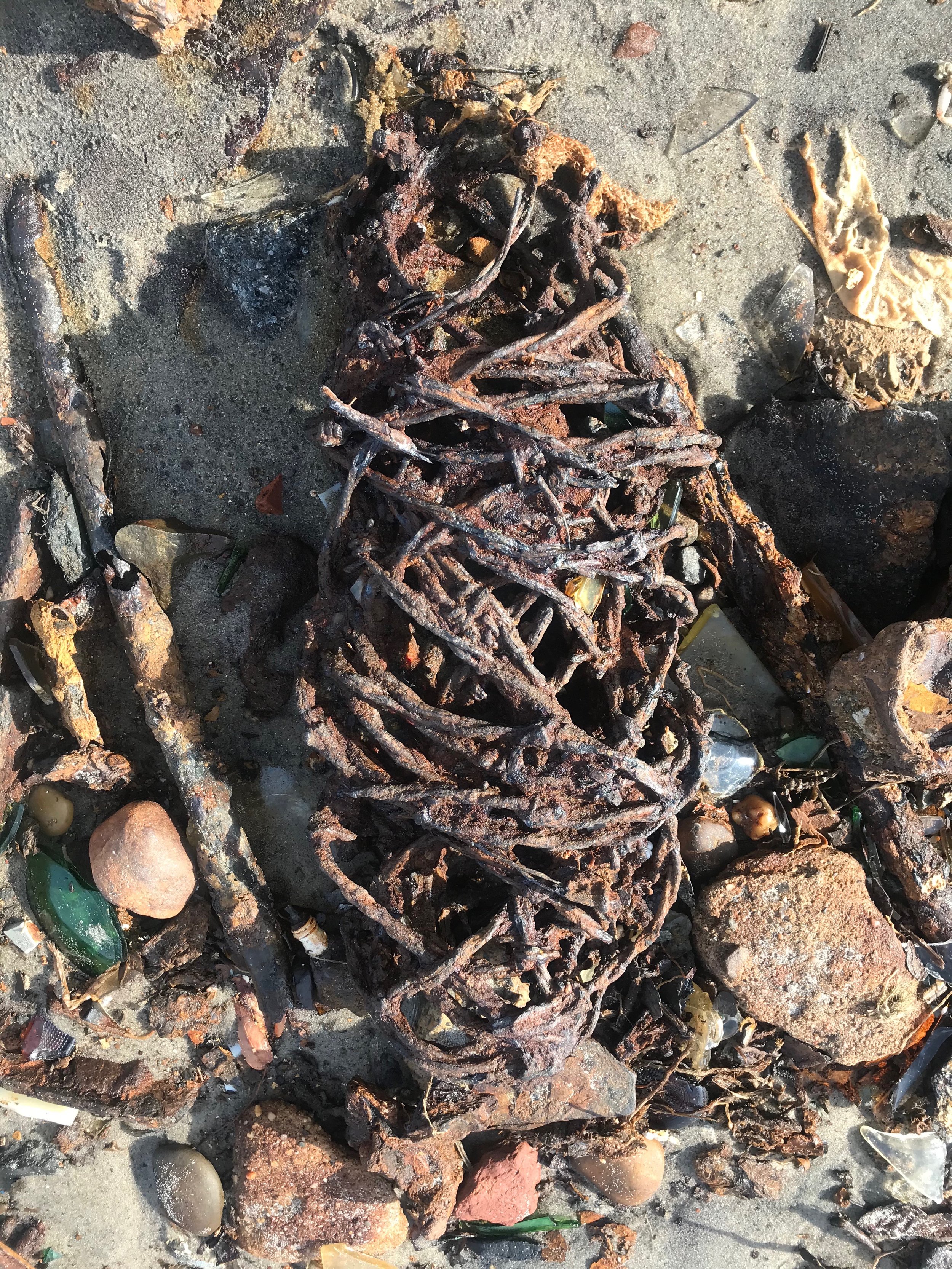
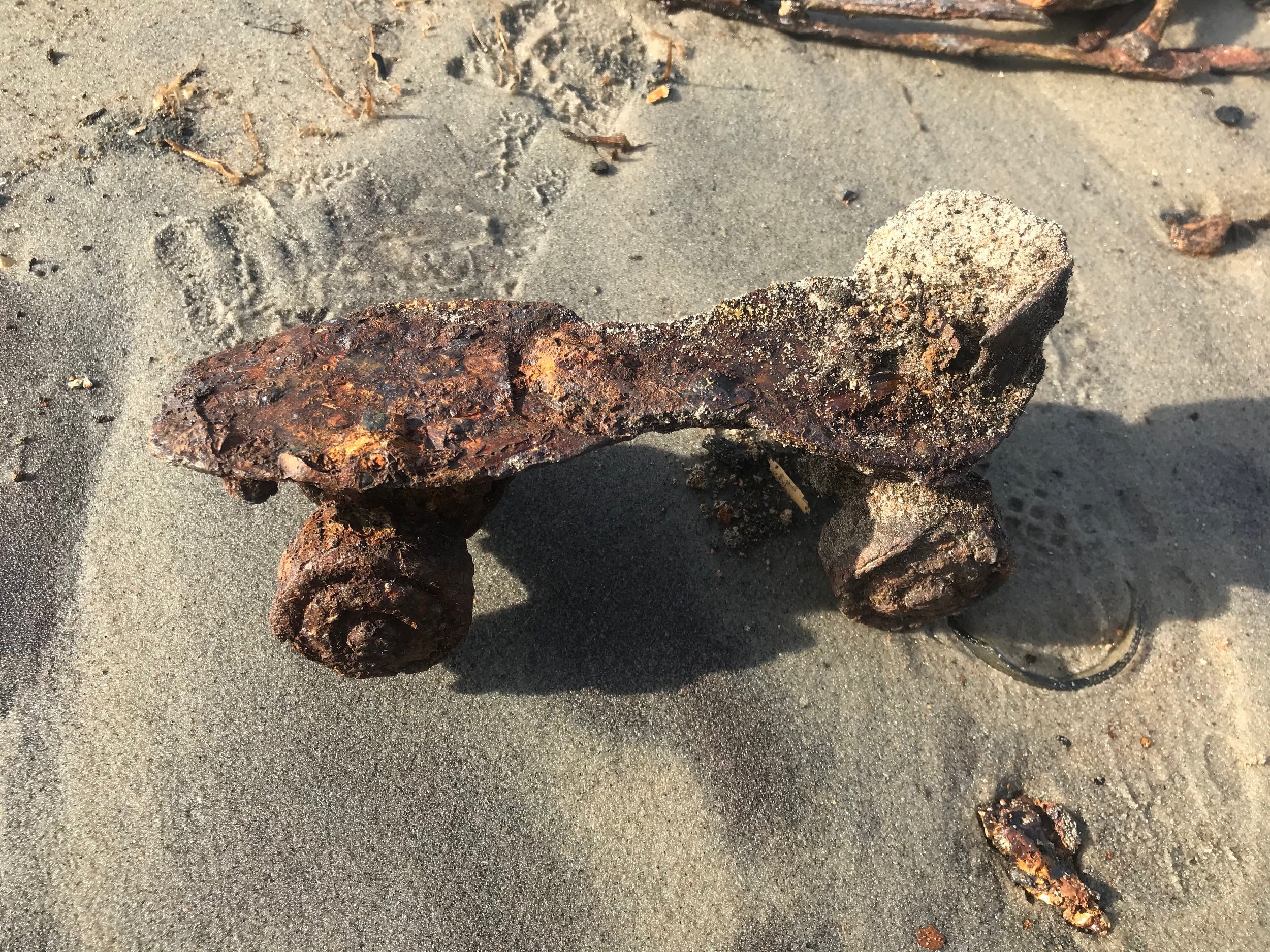
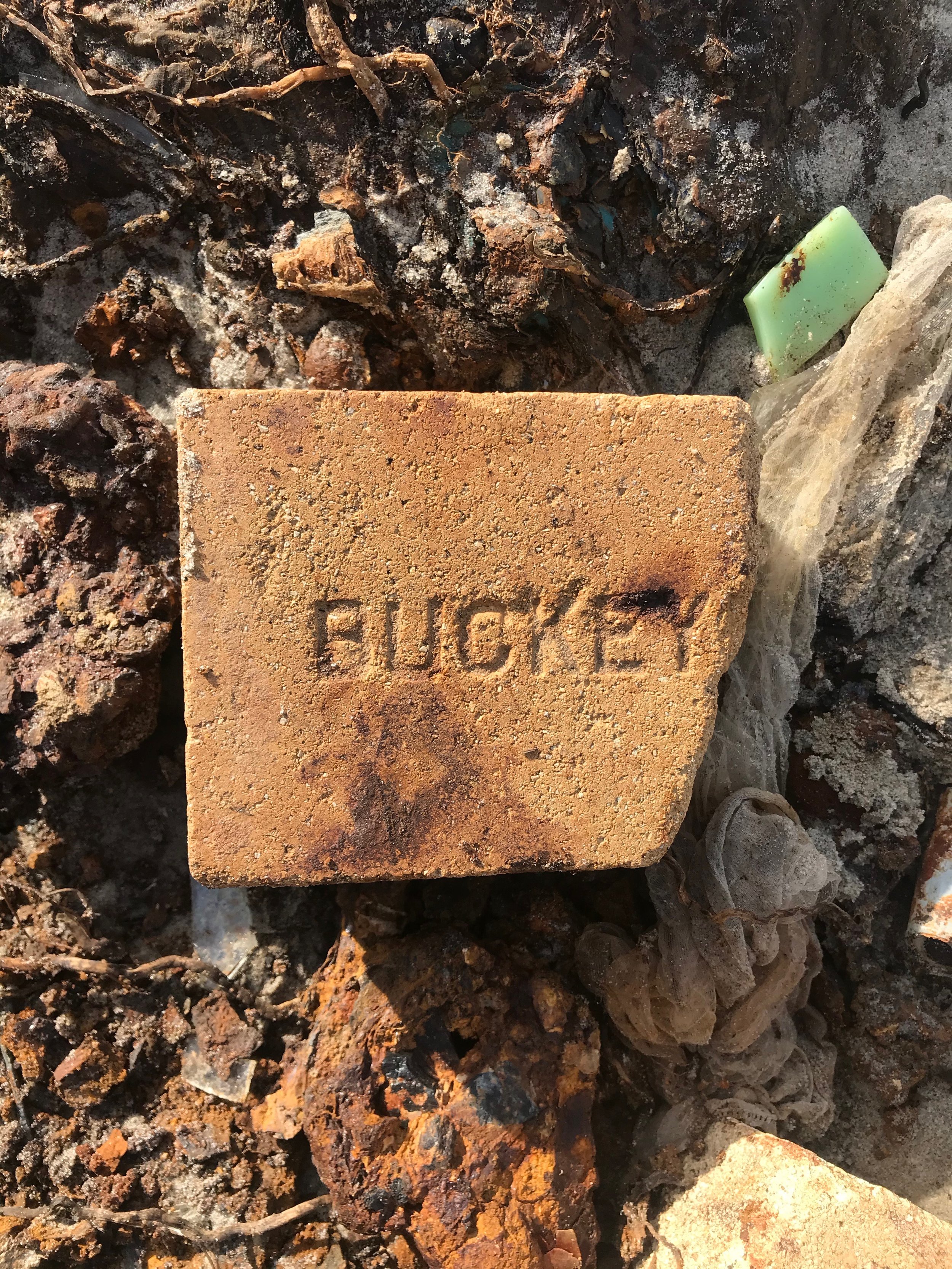
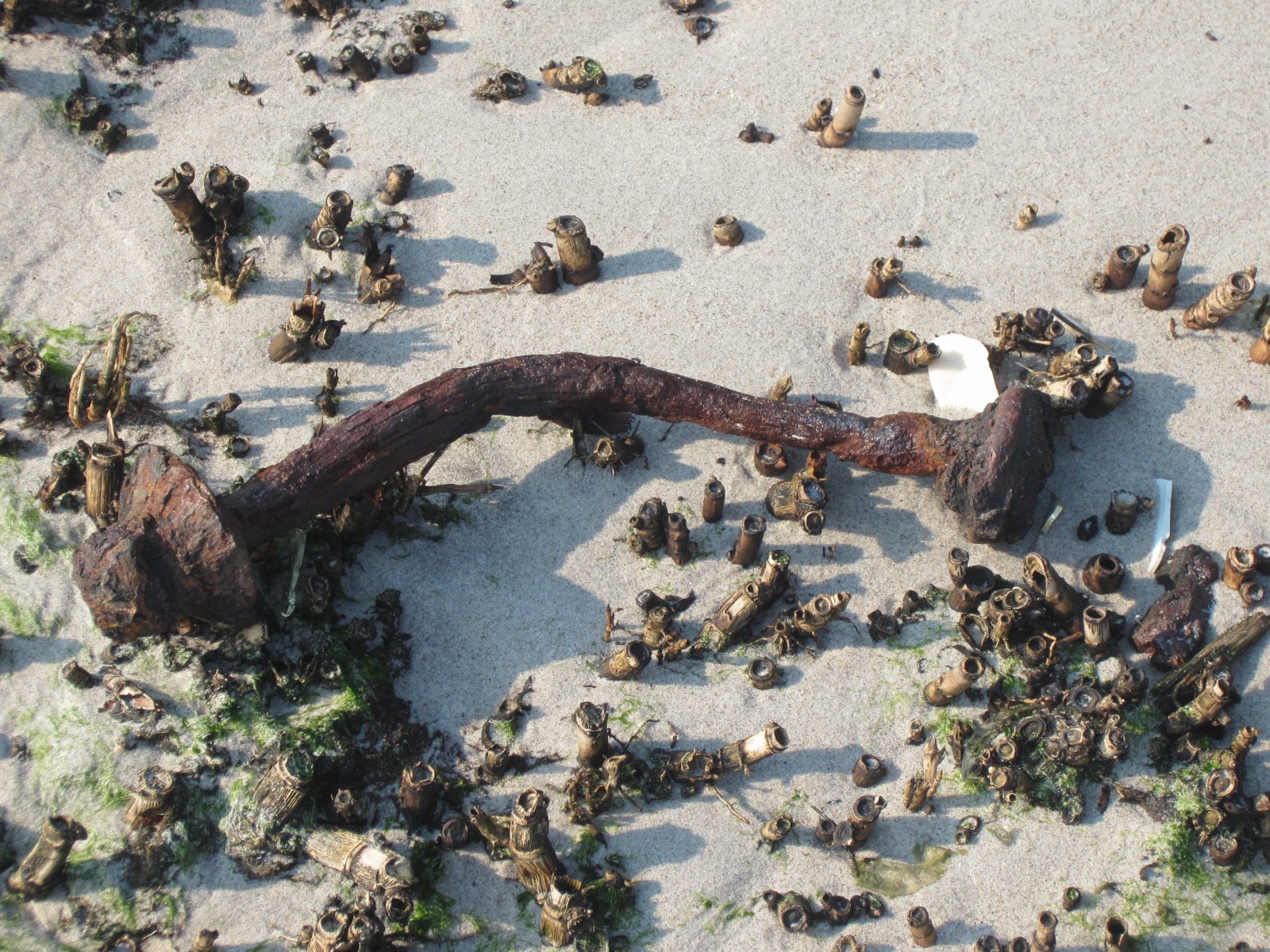


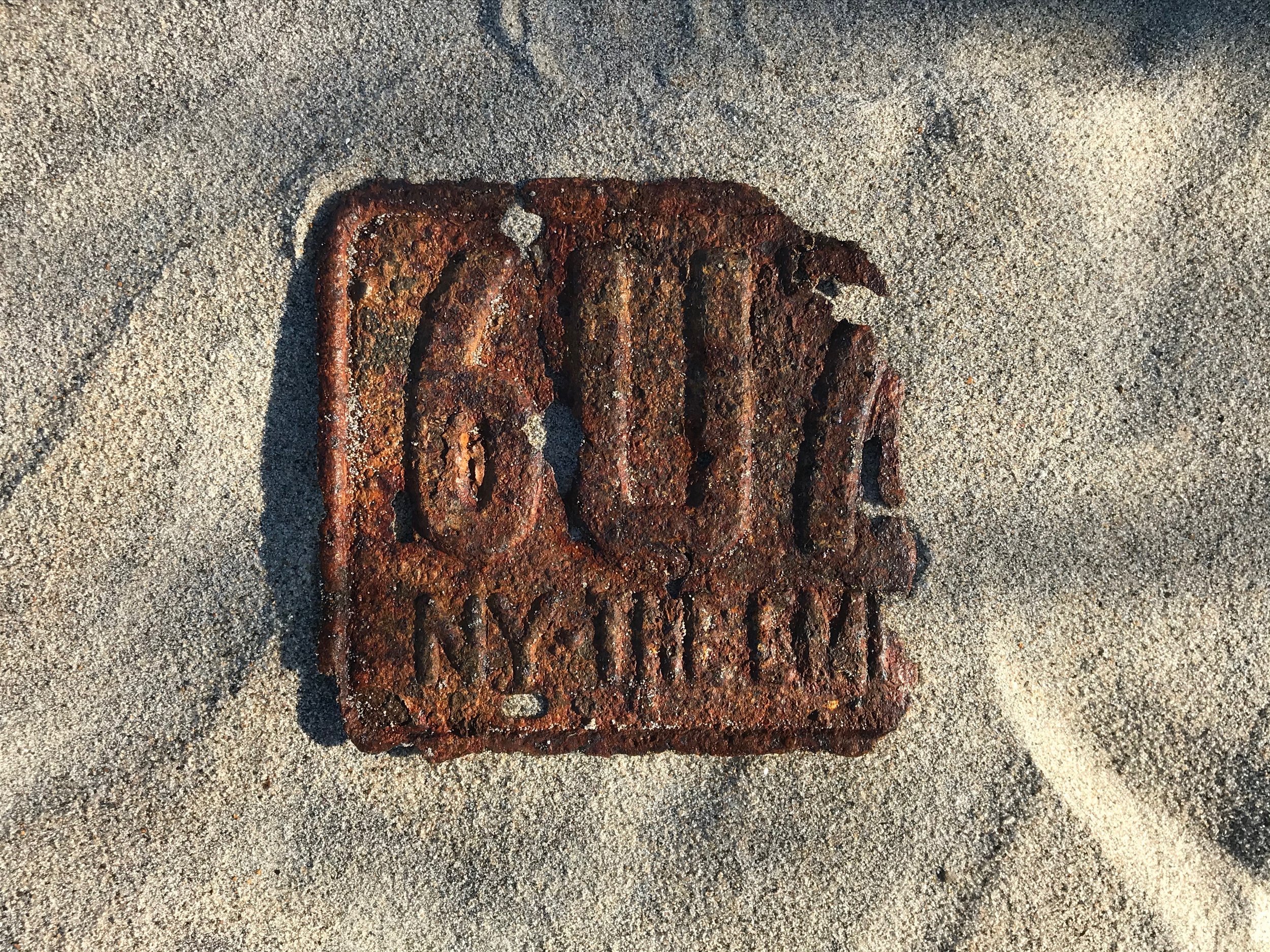
Car
This car (or some sort of vehicle) has been emerging from the landfill for at least several years and is presently host to innumerable stockings. I’ve been photographing it since 2019.
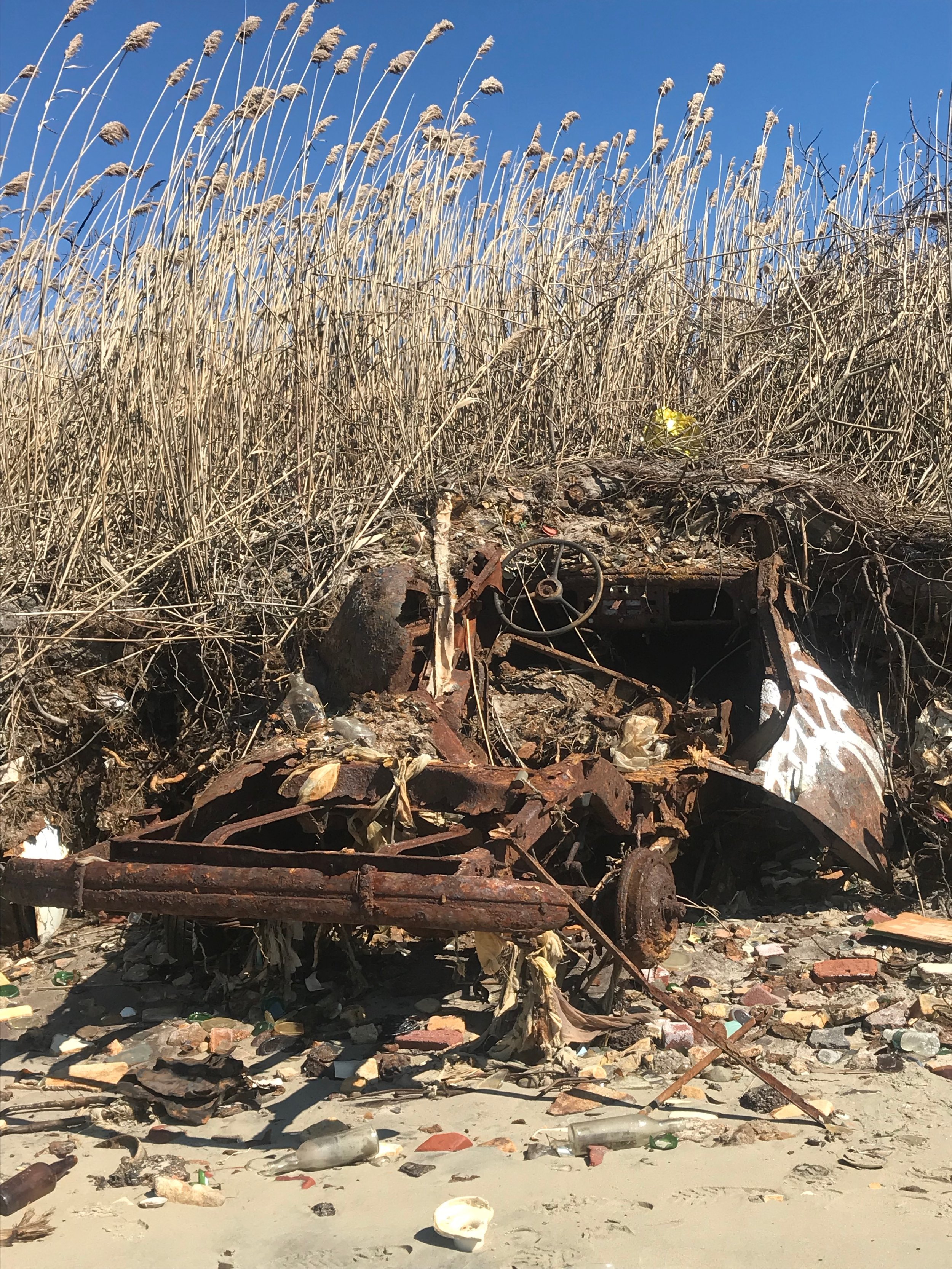
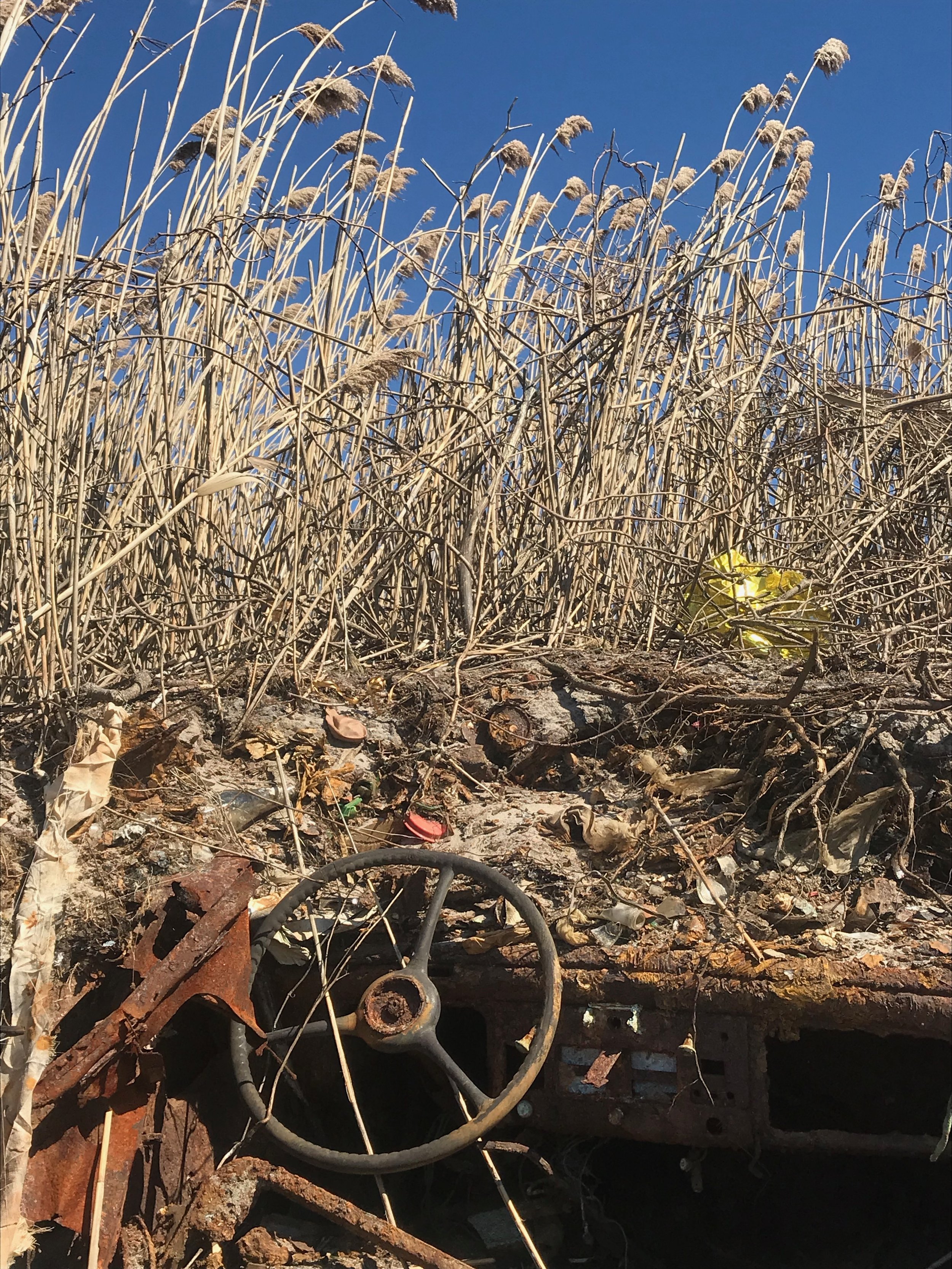
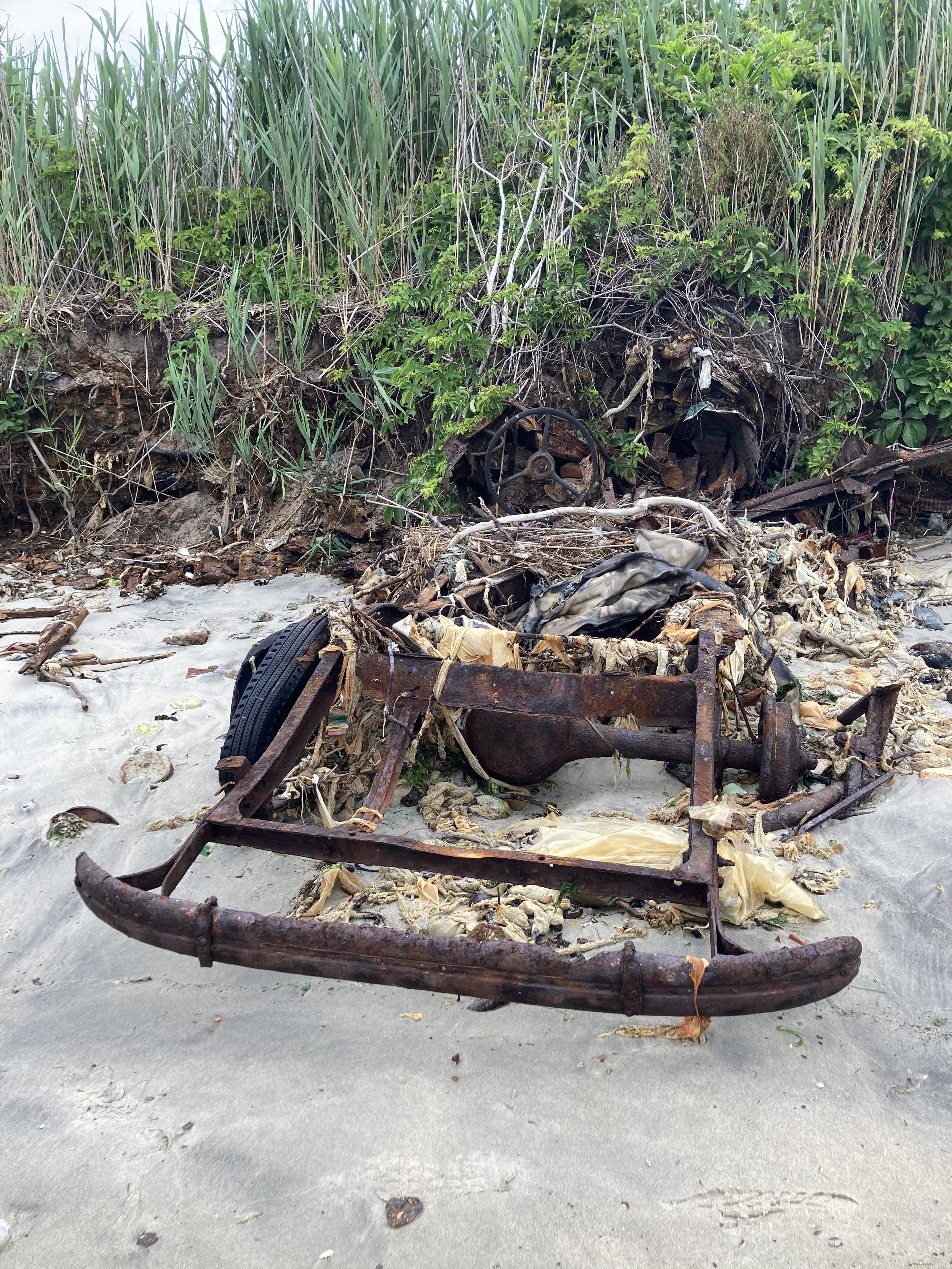
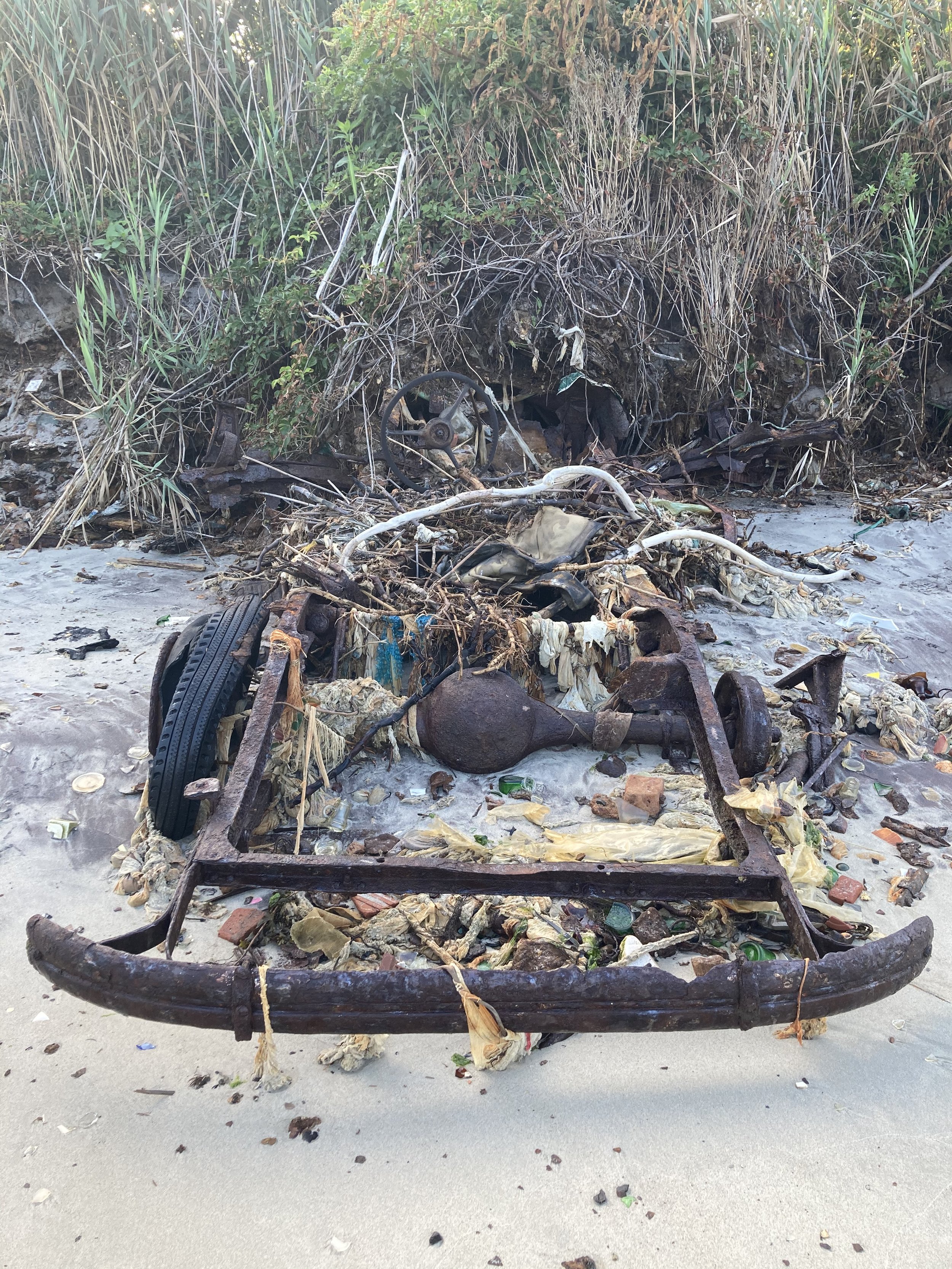
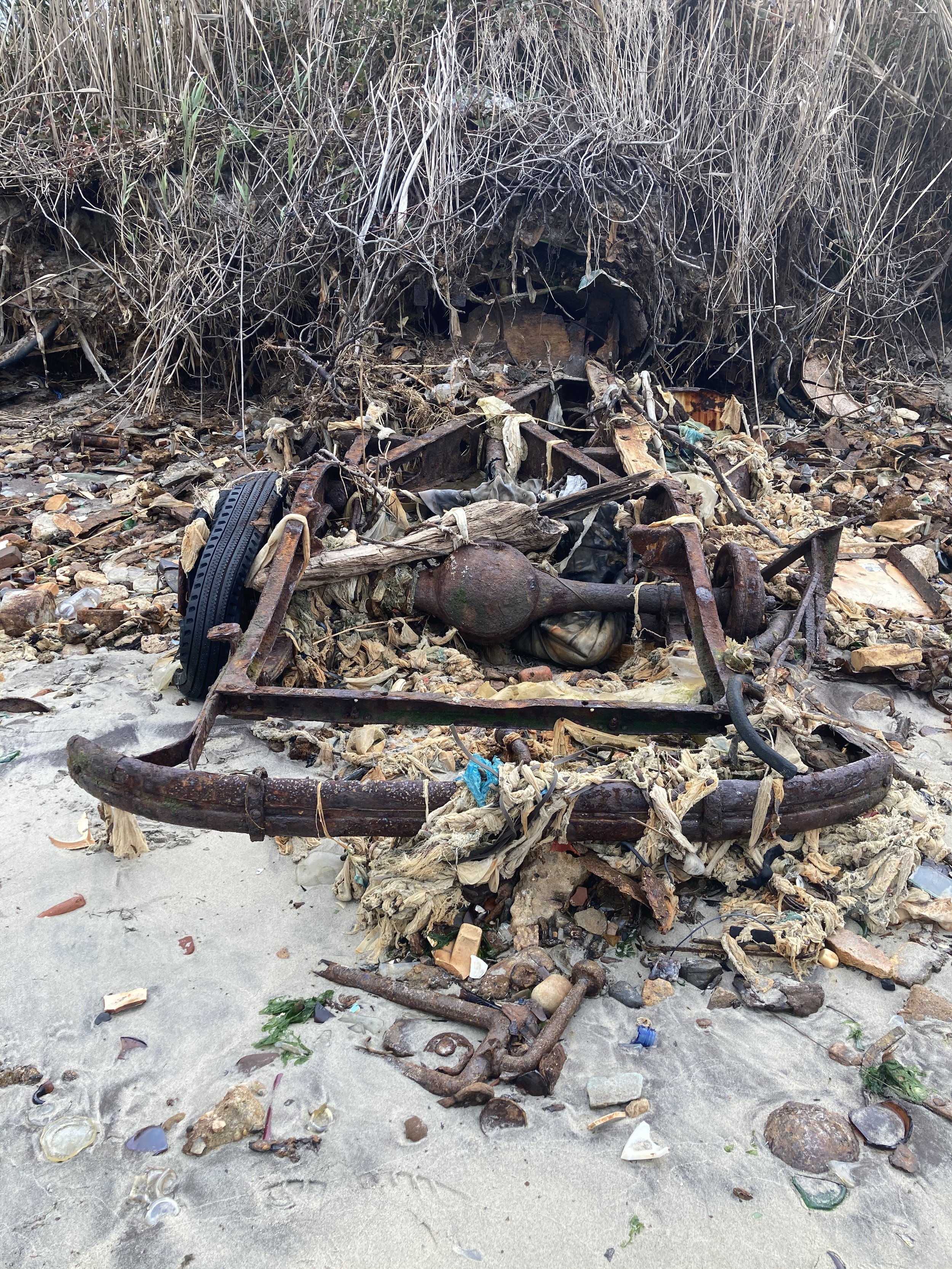
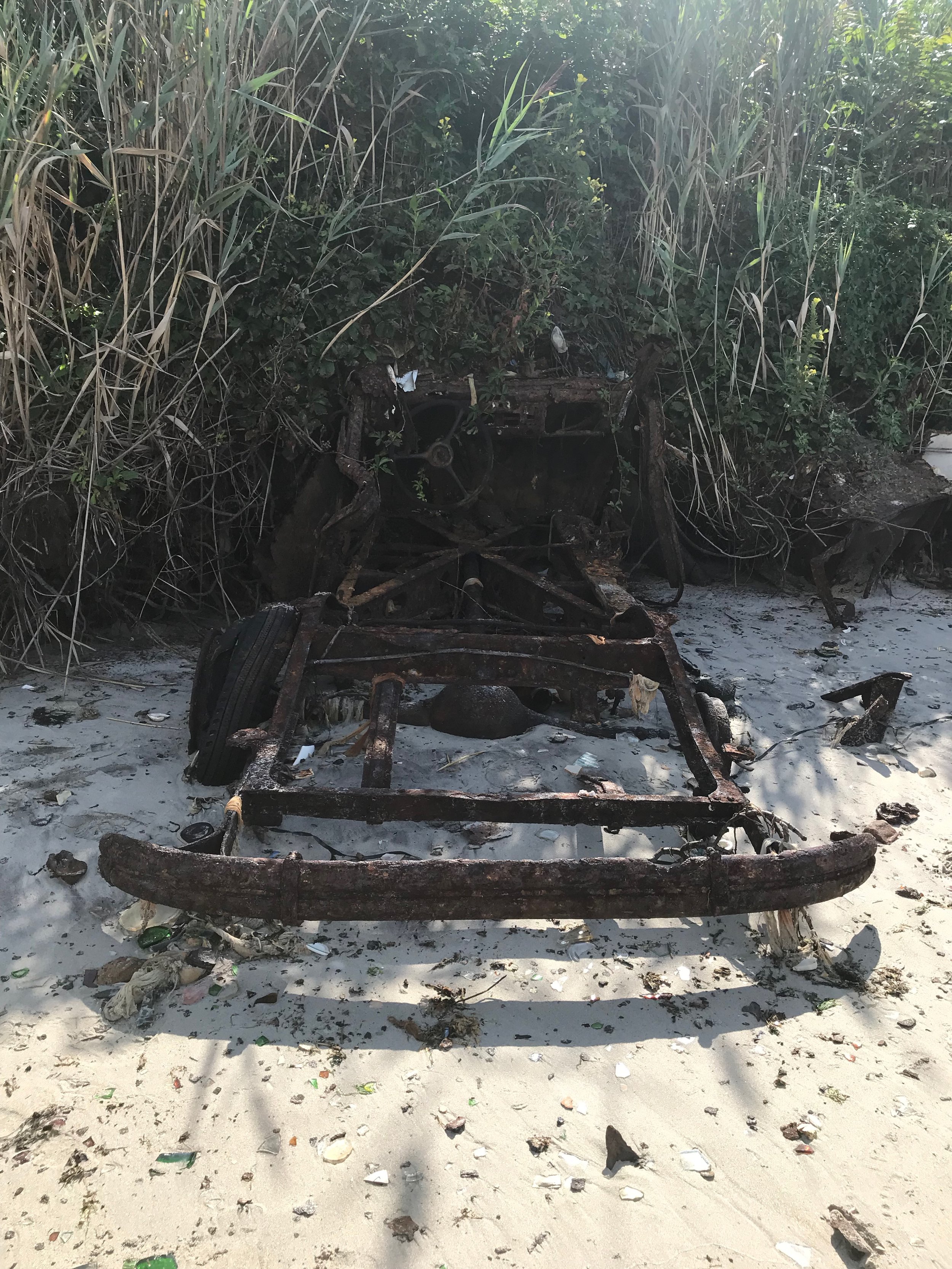
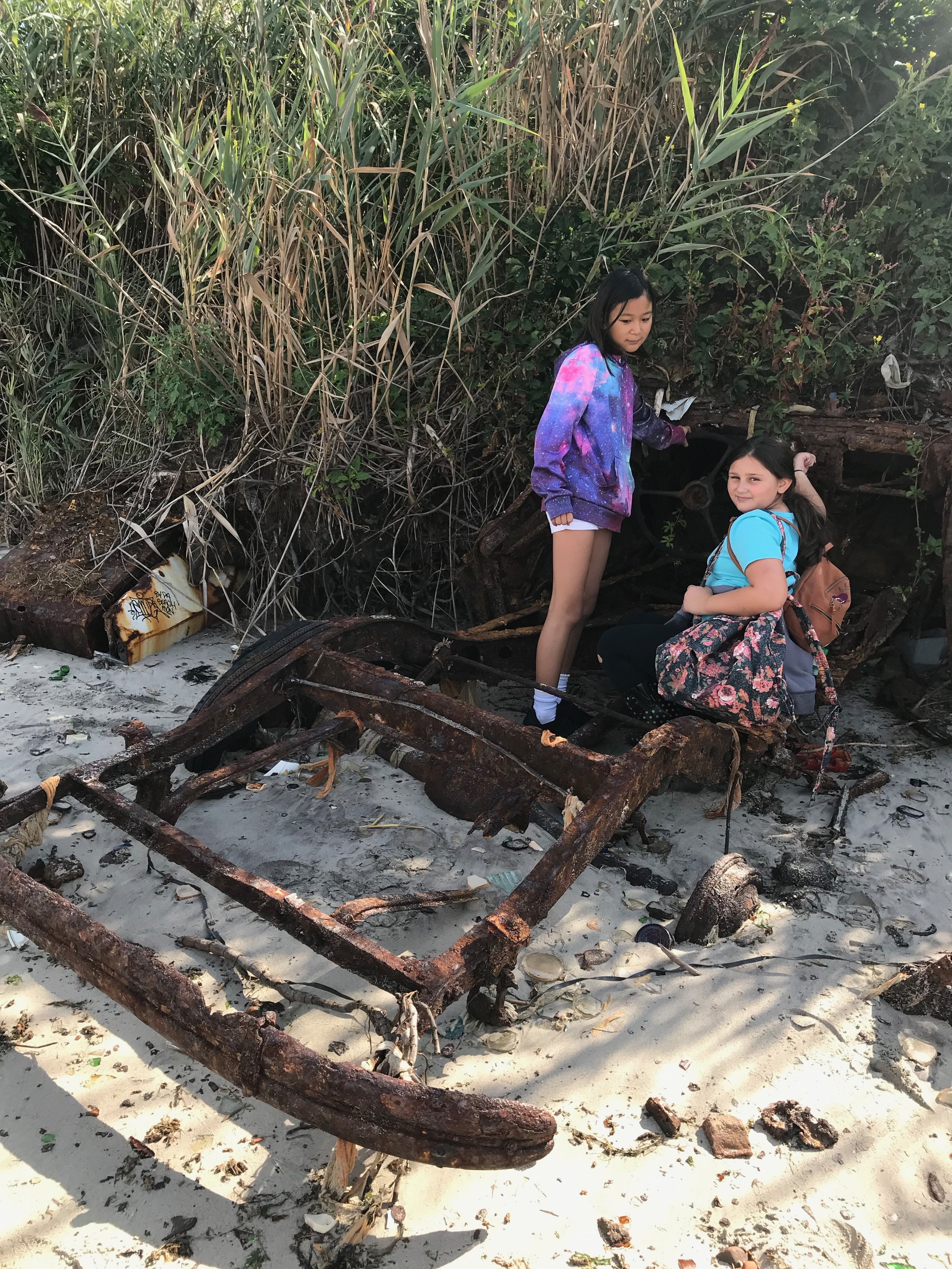
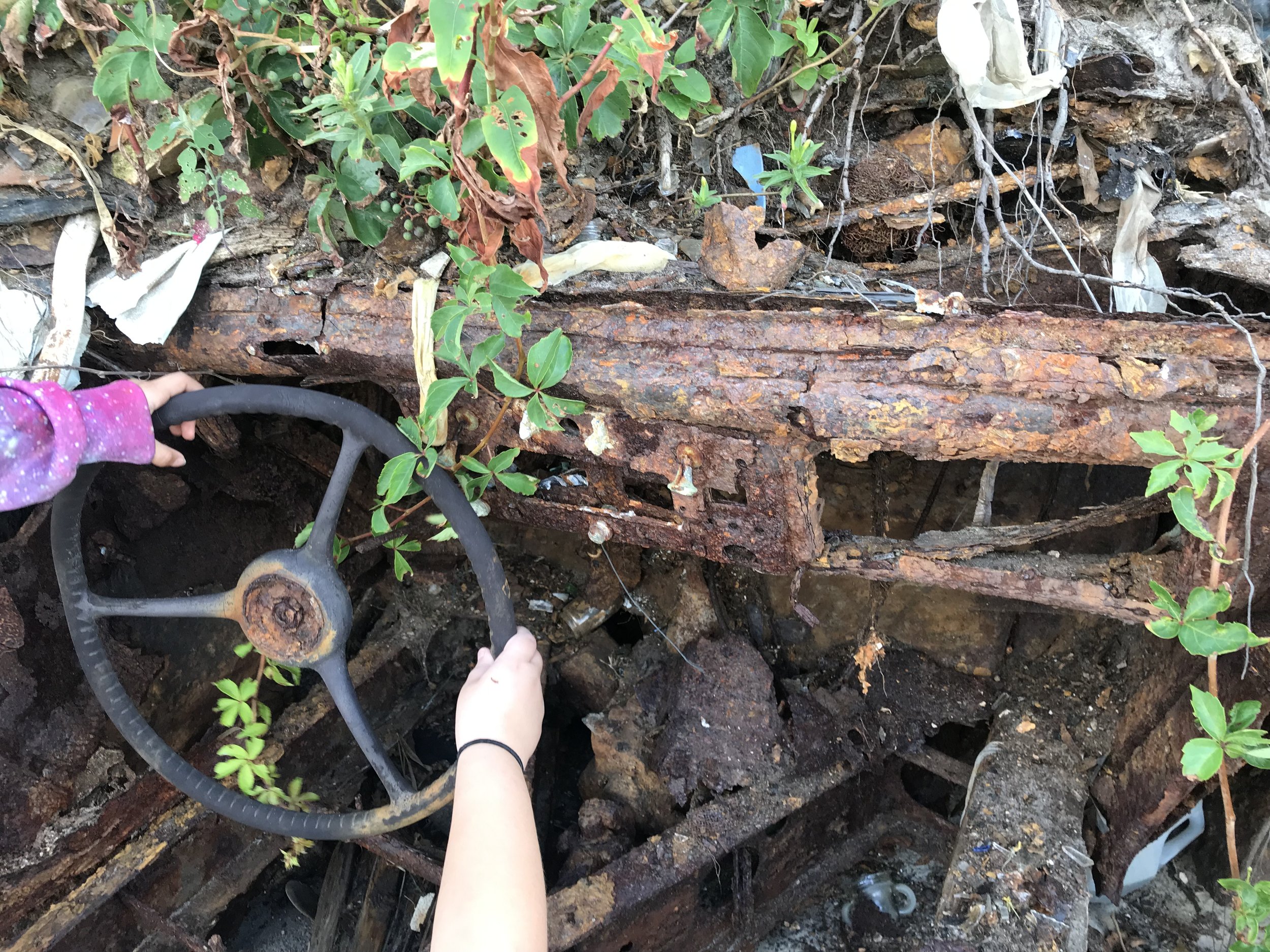
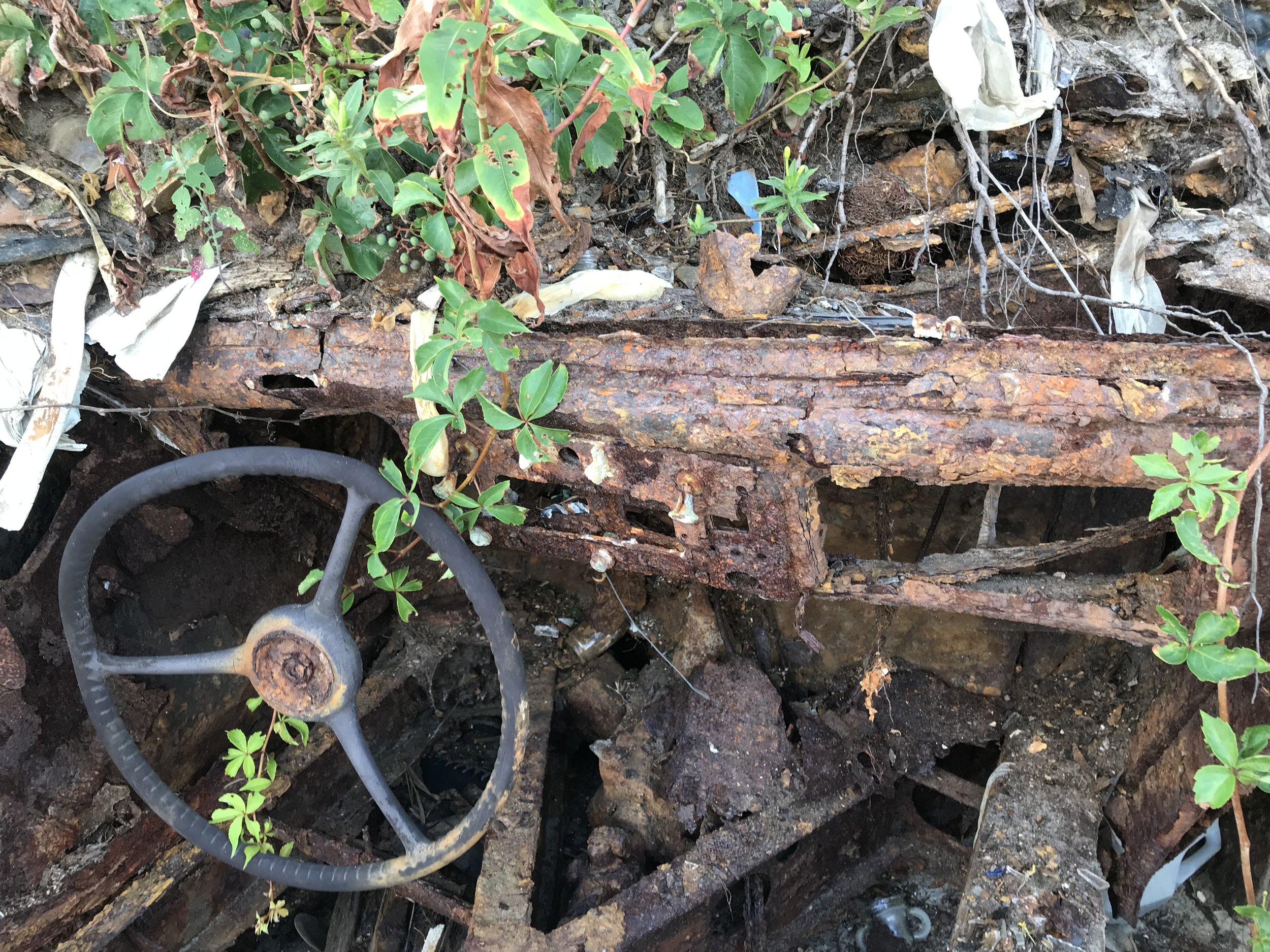
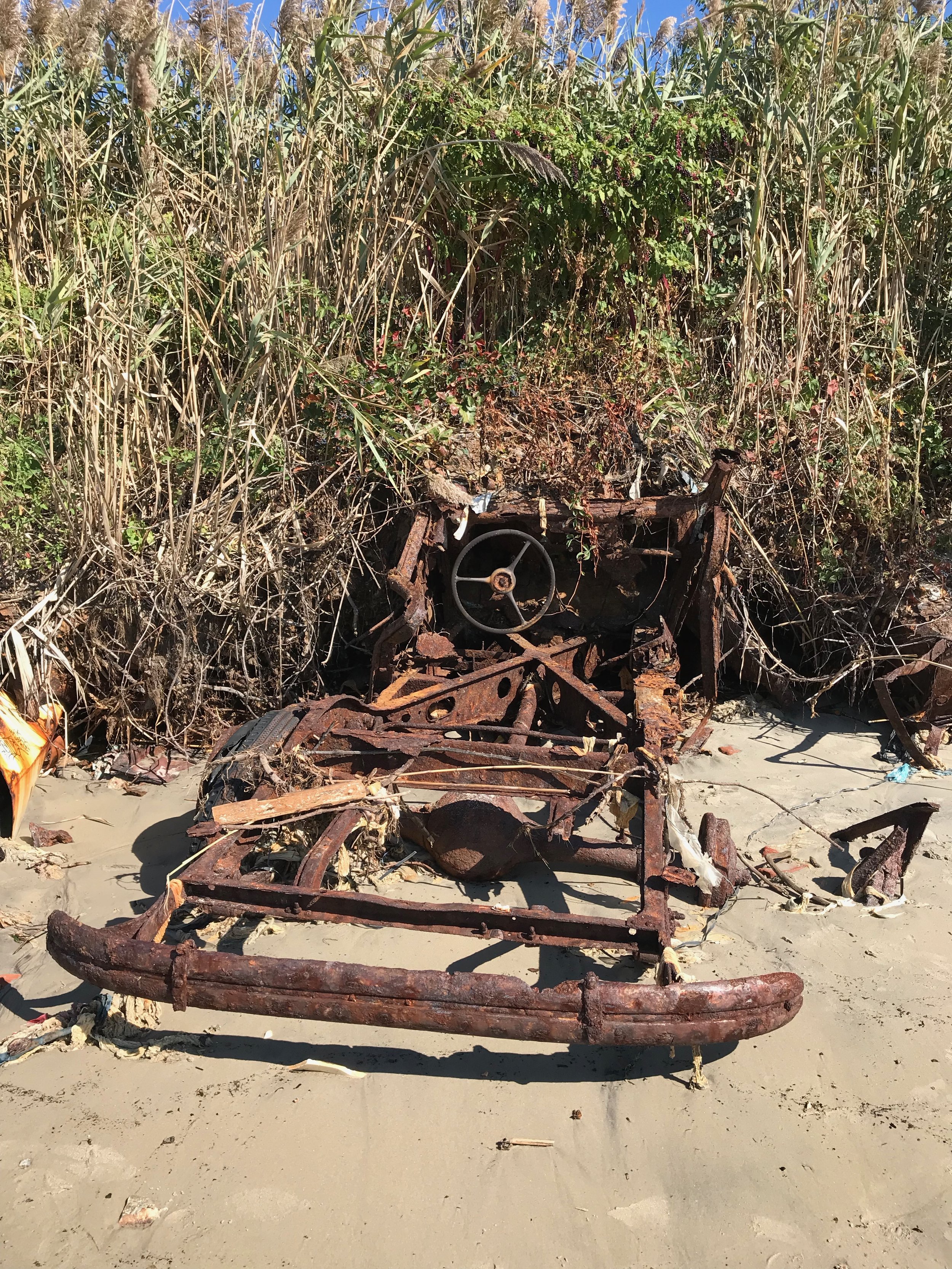
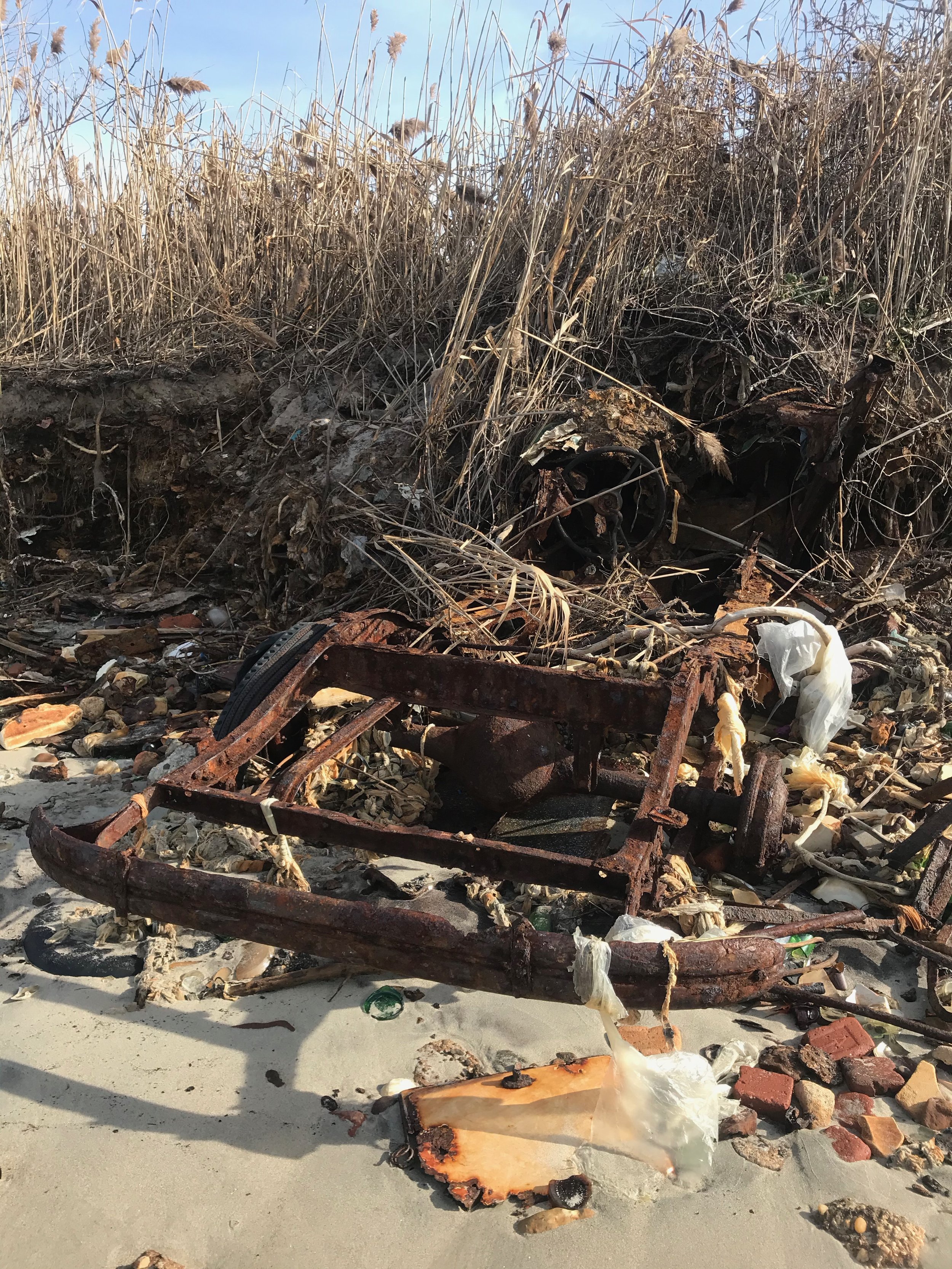
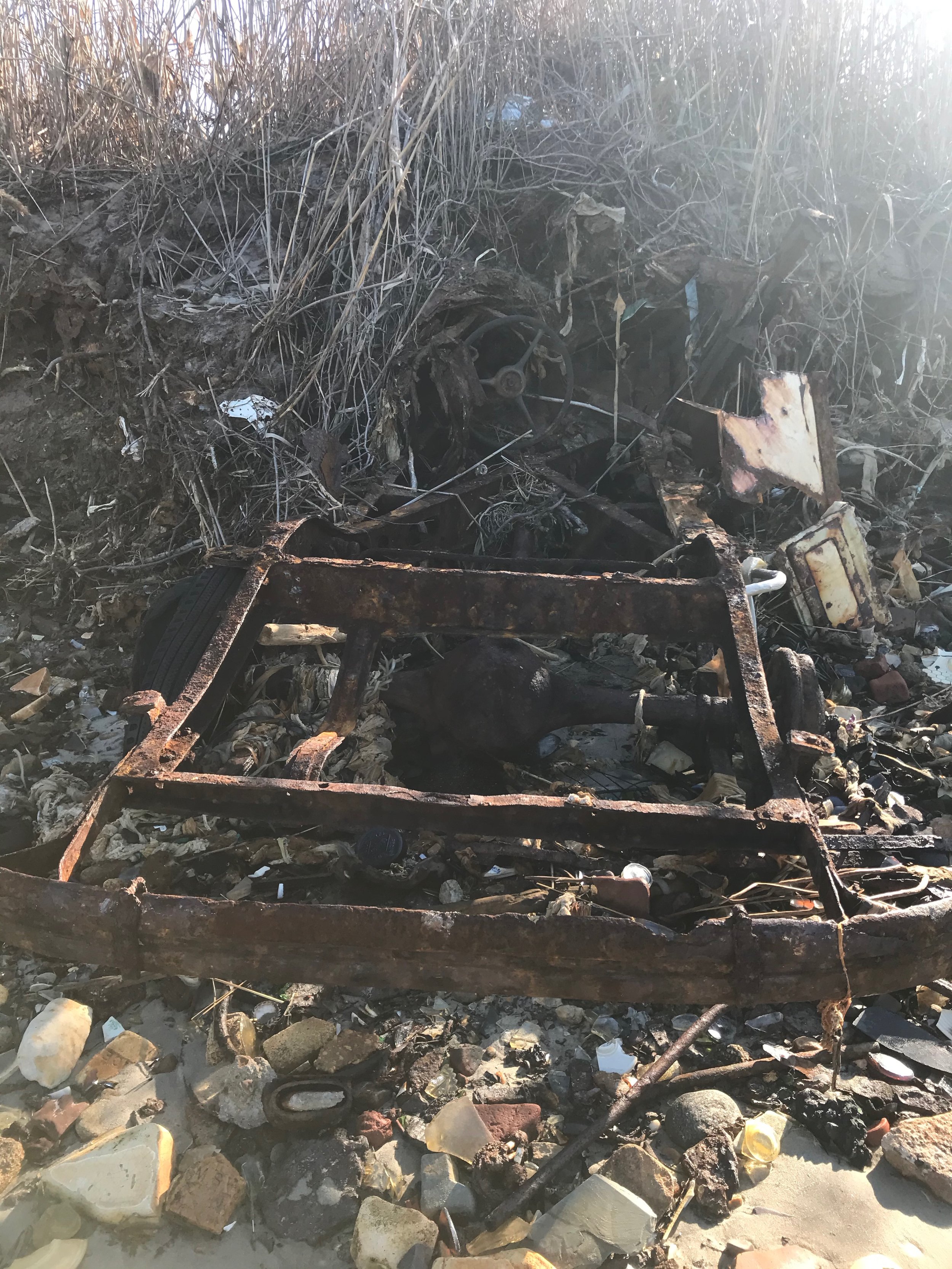
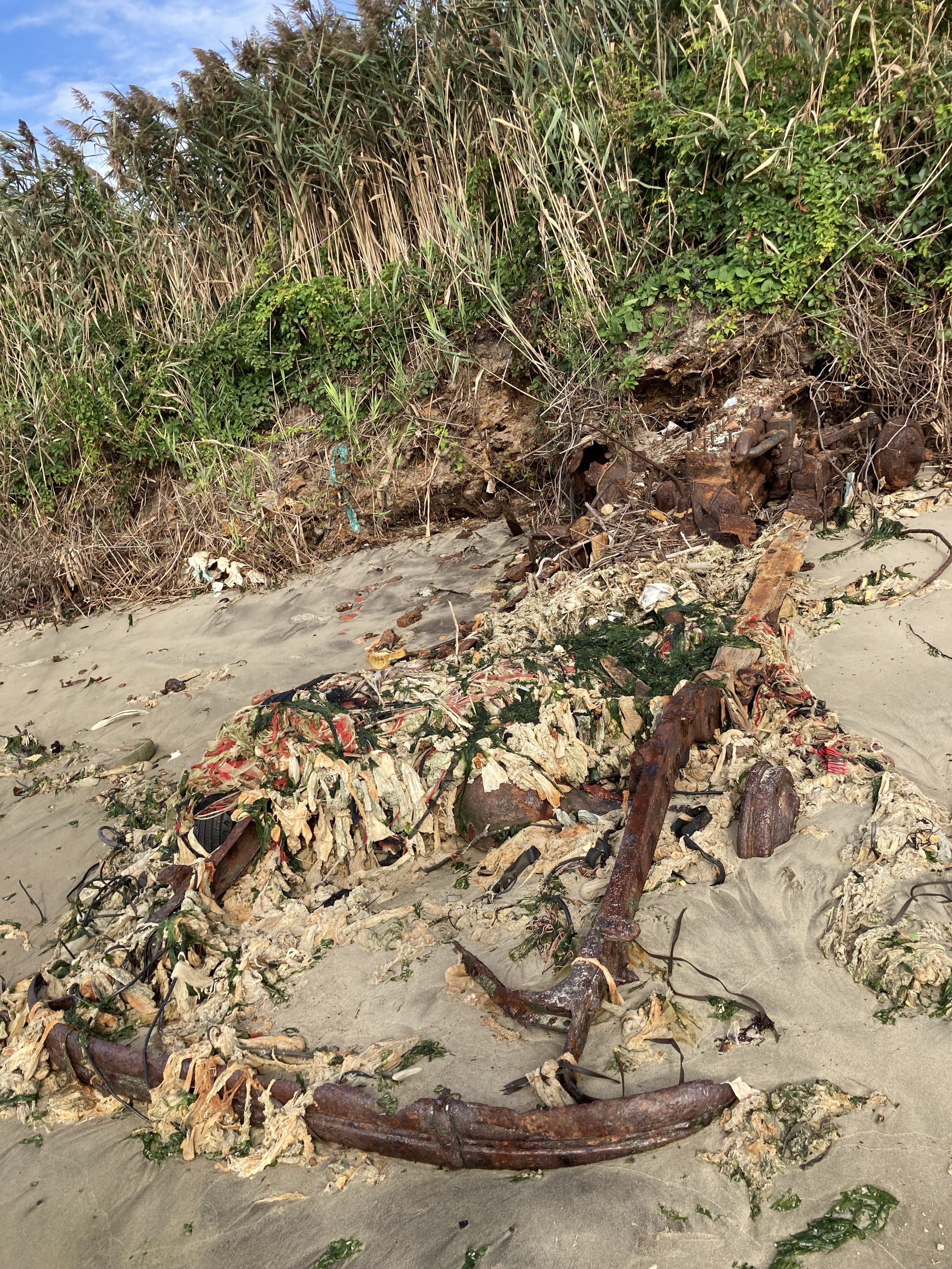
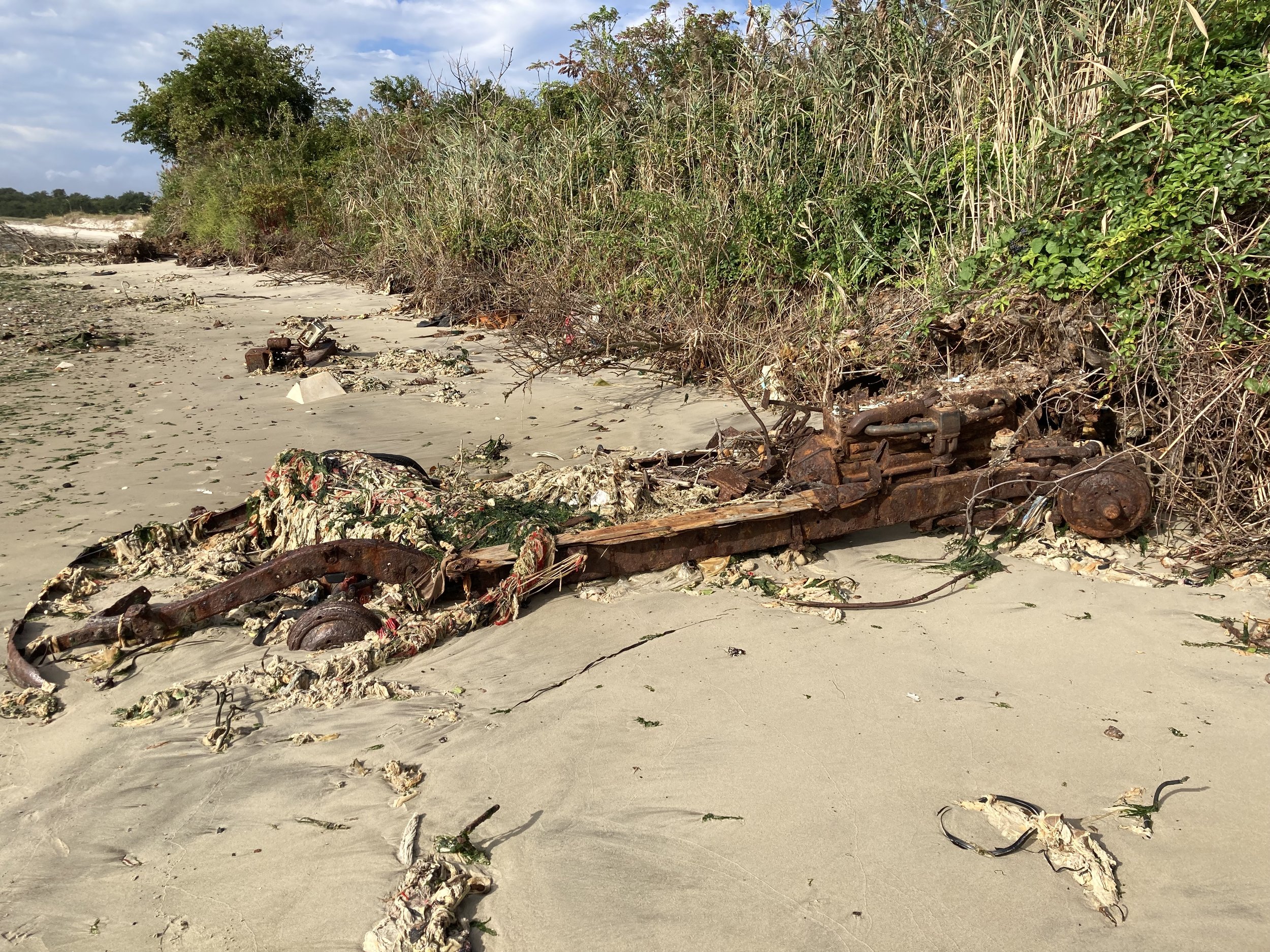
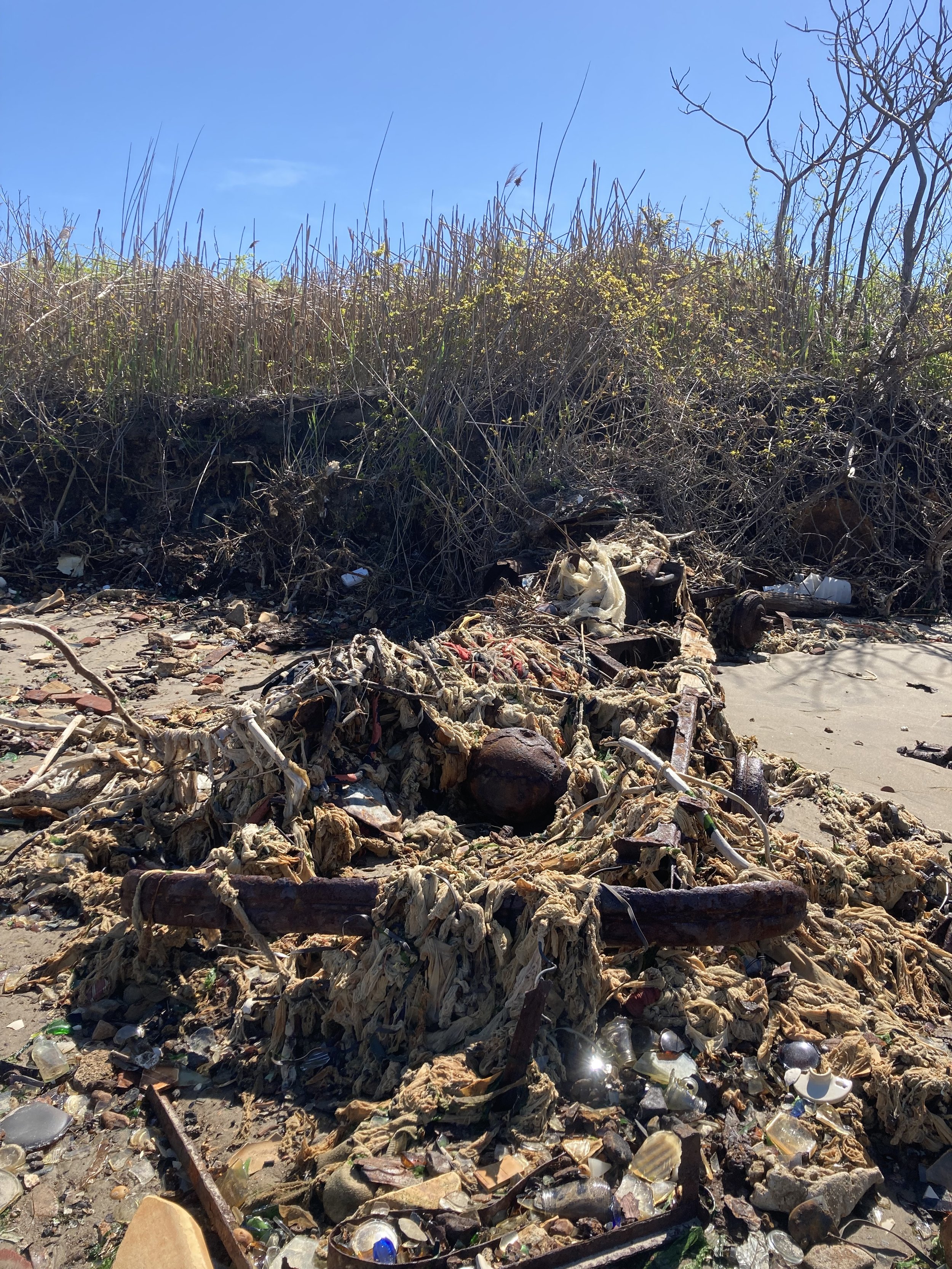
China + Ceramics
There are loads of ceramic shards all over the beach, with few intact items. When text is visible, it can be interesting to trace the plate, cup, or mug to its source. For example, a shard with a partial logo saying F.W. Lundy leads us to F.W.I.L. (as in Frederick William Irving Lundy) Lundy Brothers Restaurant in Sheepshead Bay, Brooklyn, open from 1926 to 1979. Originally the seafood restaurant was on a pier, and then moved to a building on Emmons Avenue that is now landmarked. The NYC LGBT Historic Sites Project reports that Lundy (who was known as Irving) lived above the restaurant part-time for many years with his partner, Henry William Linker, who worked at the restaurant. This is one of the amazing things about Dead Horse Bay—a tiny bit of china can end up teaching us about a semi-out gay male couple in a fishing community in New York City in the middle of the twentieth century. People with greater knowledge than I have may also be able to identify china patterns on pieces that have no text.
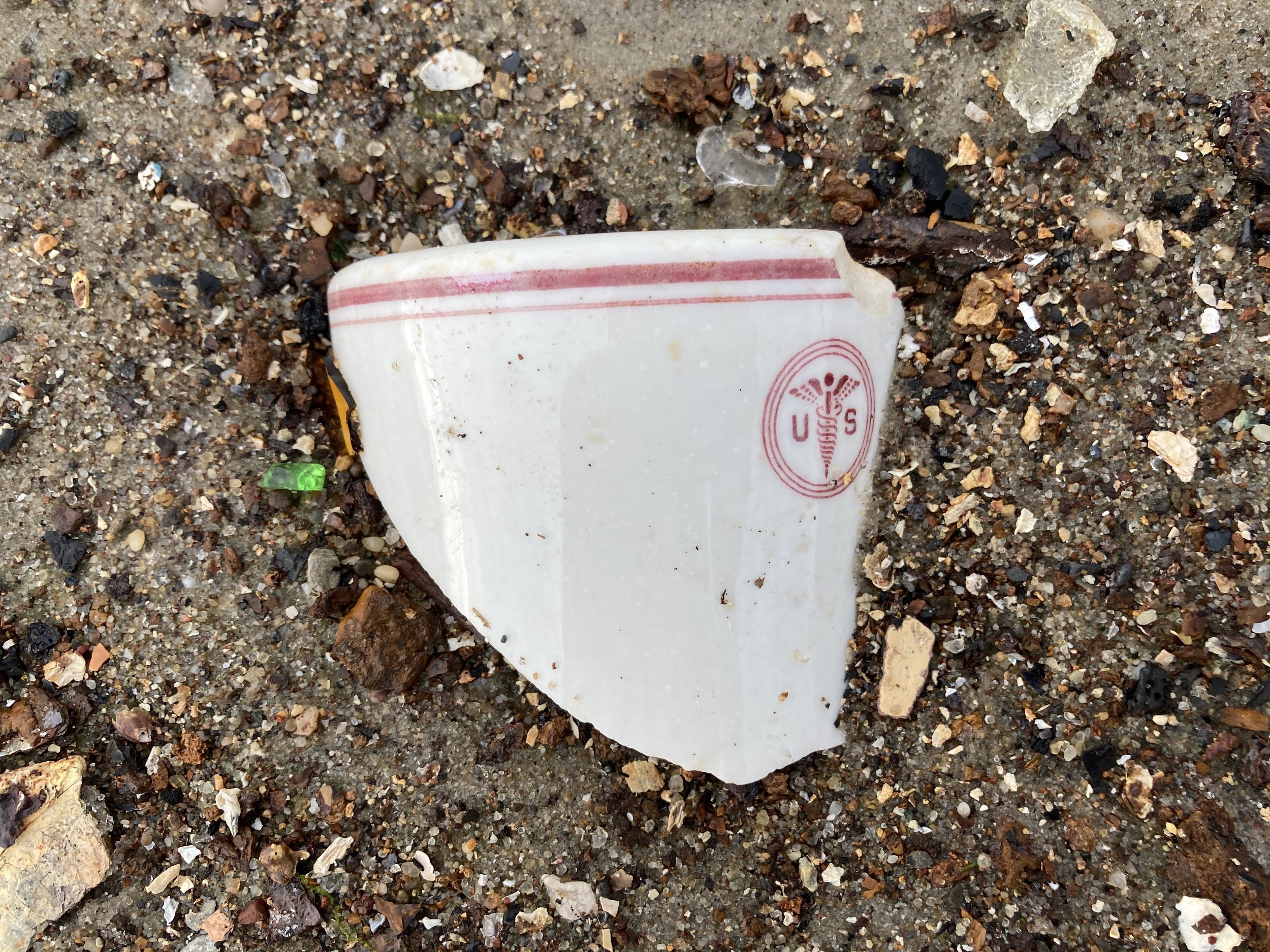
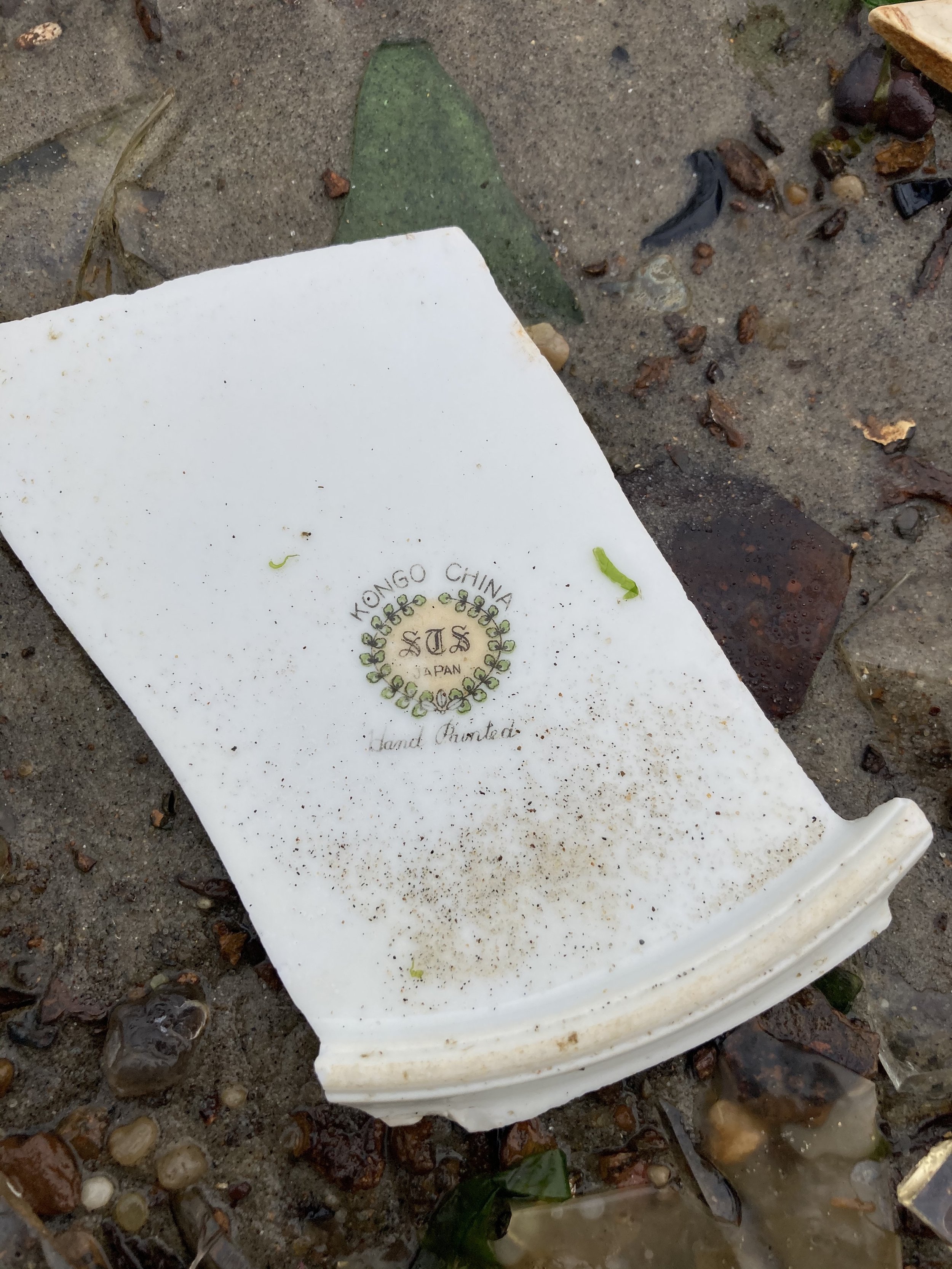

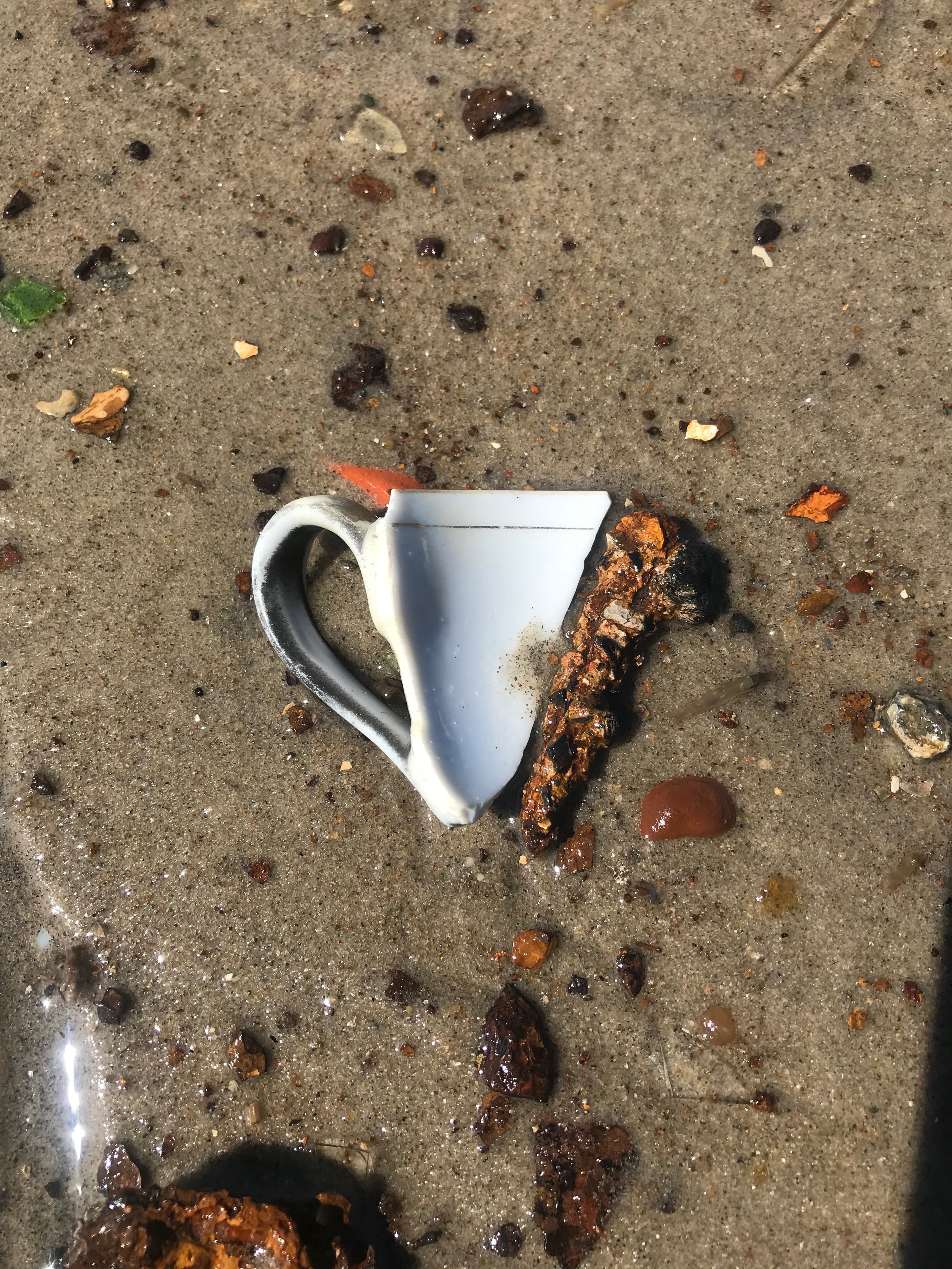
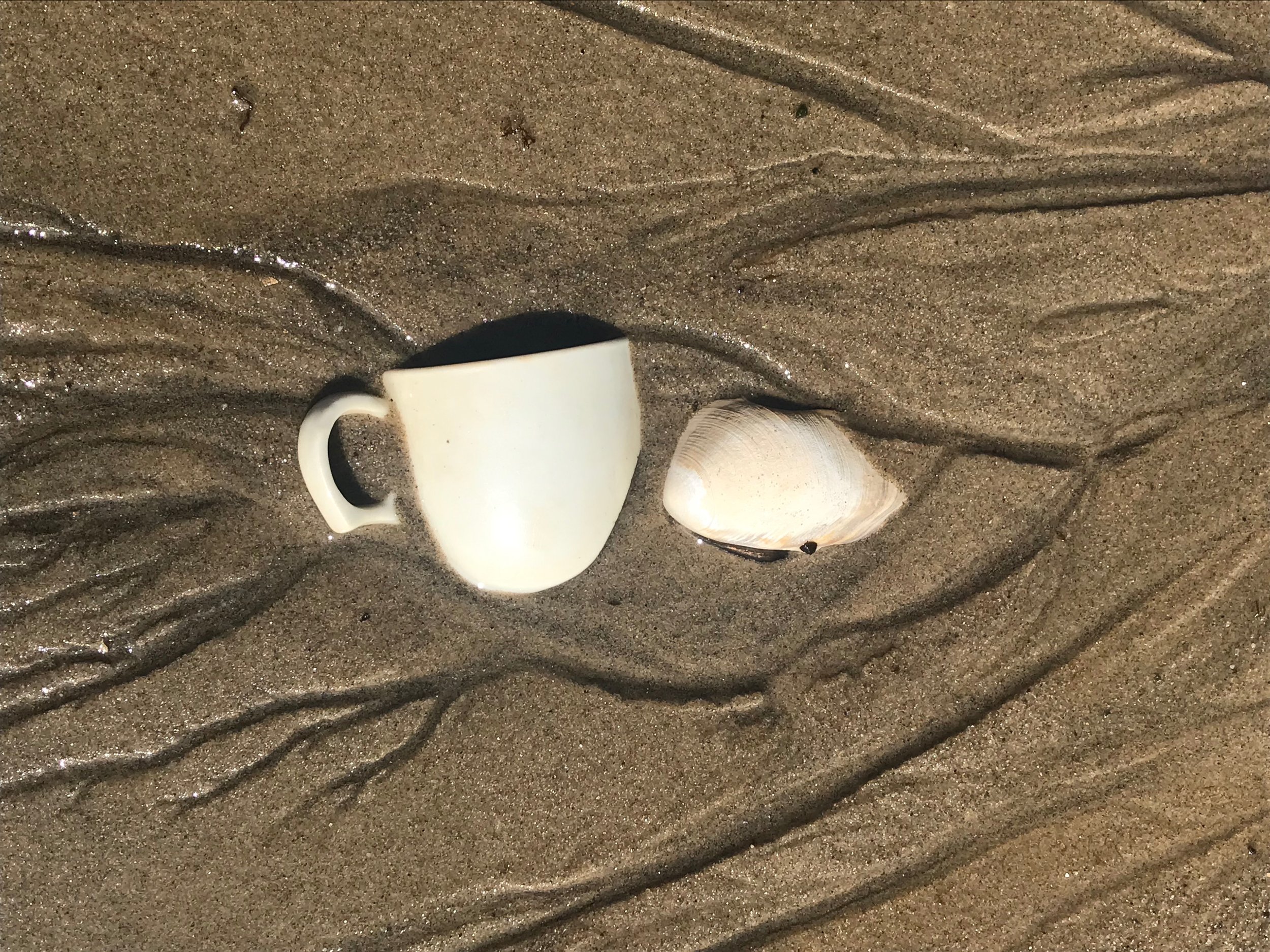
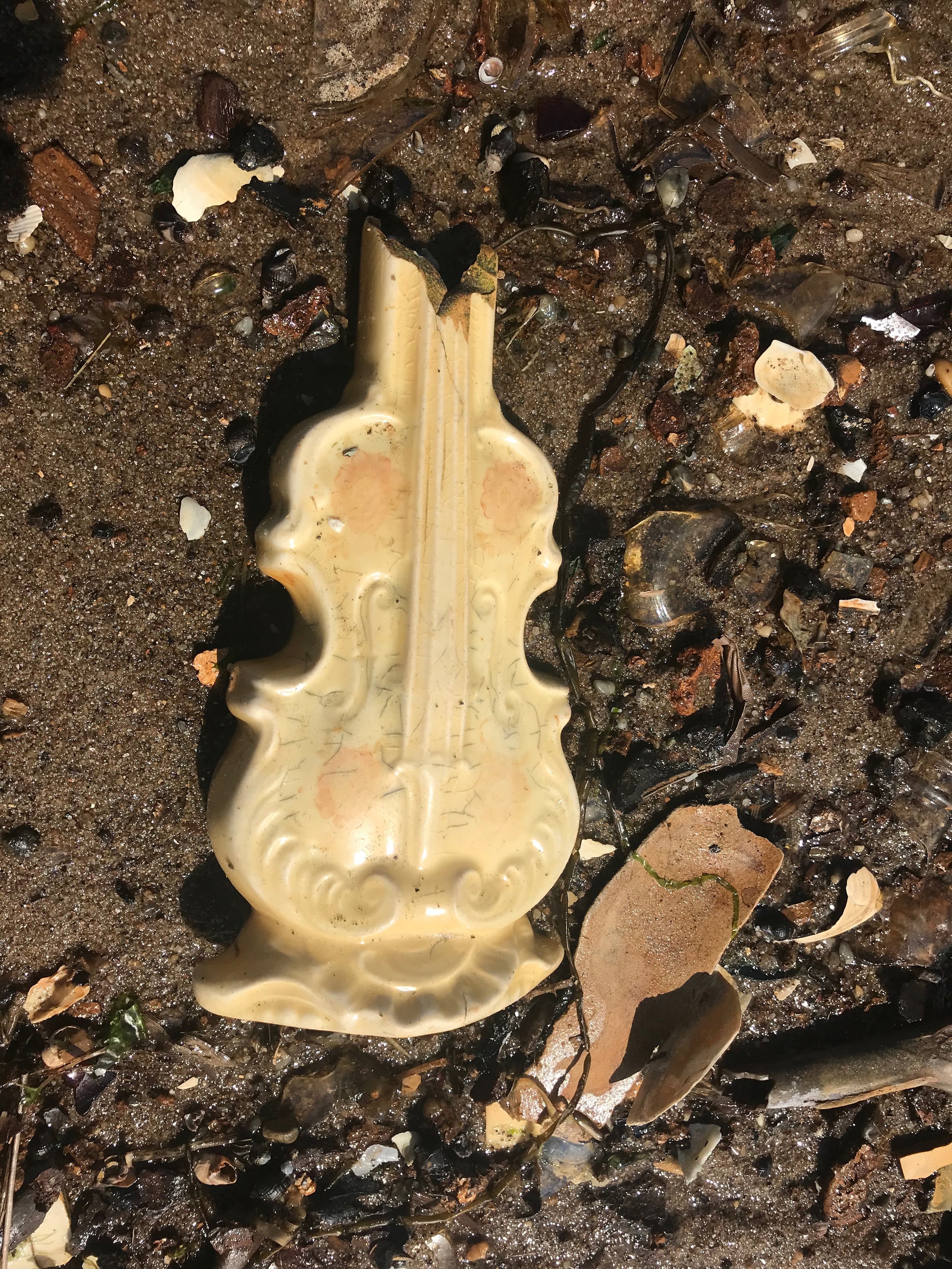

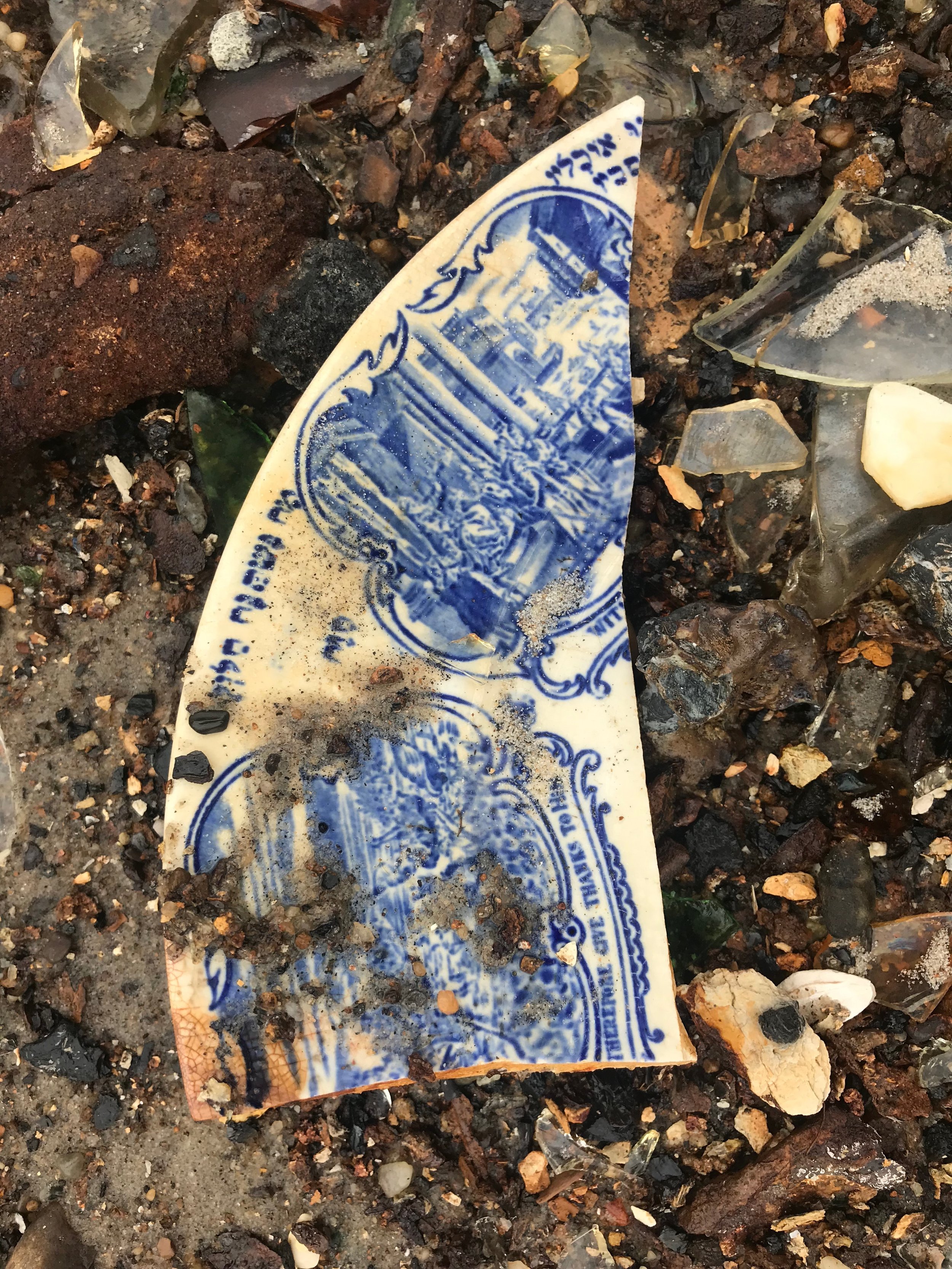
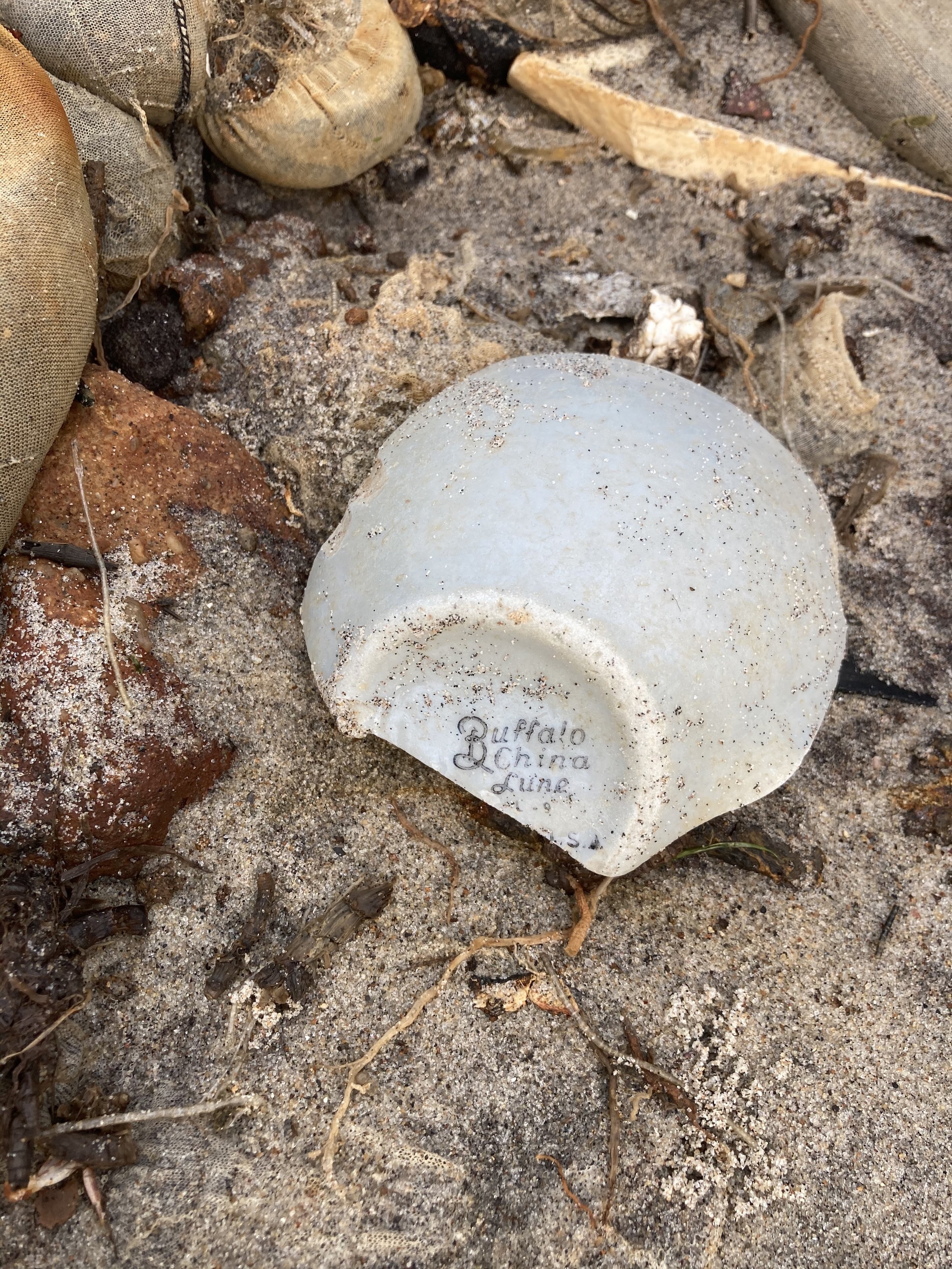
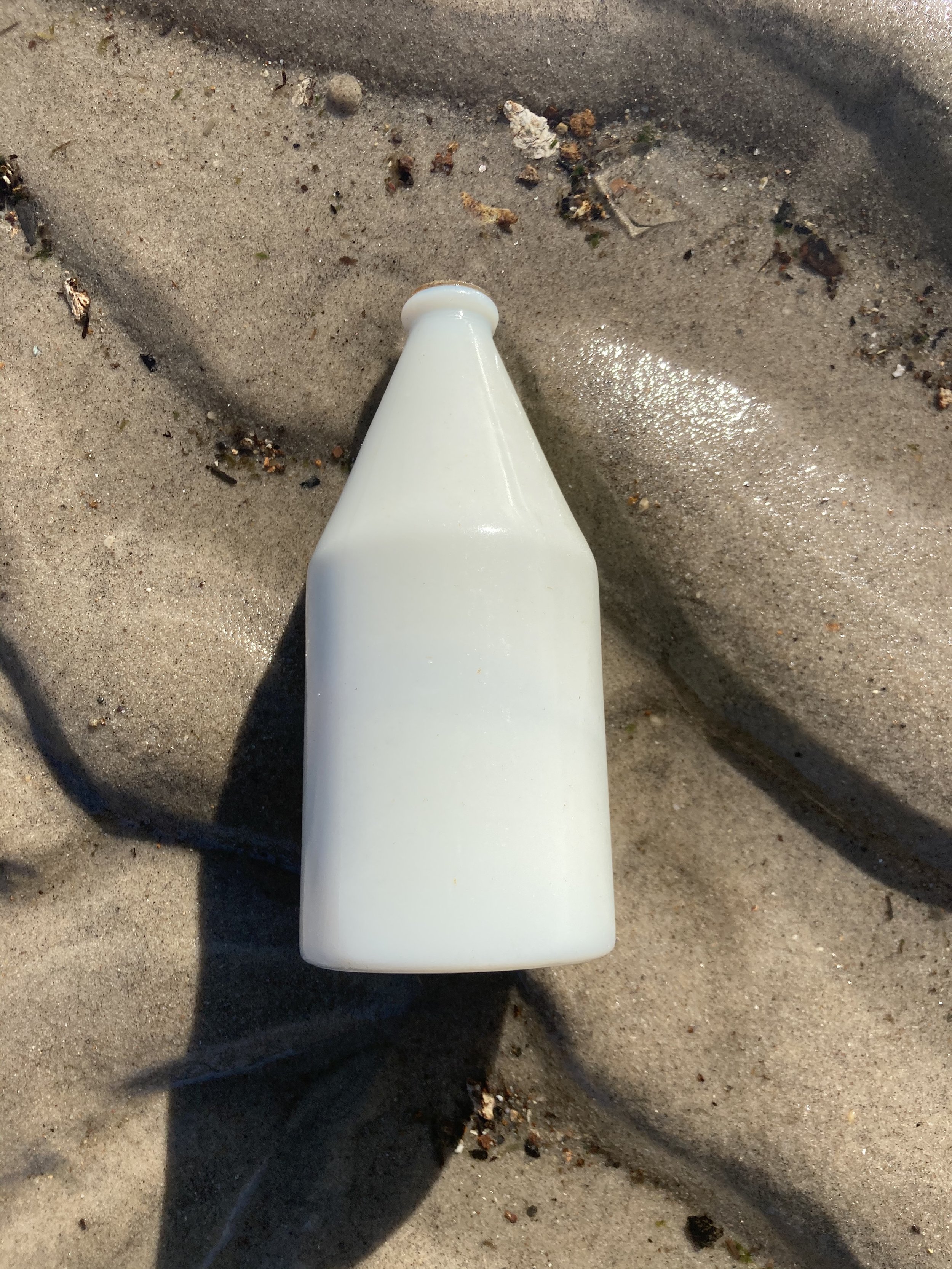

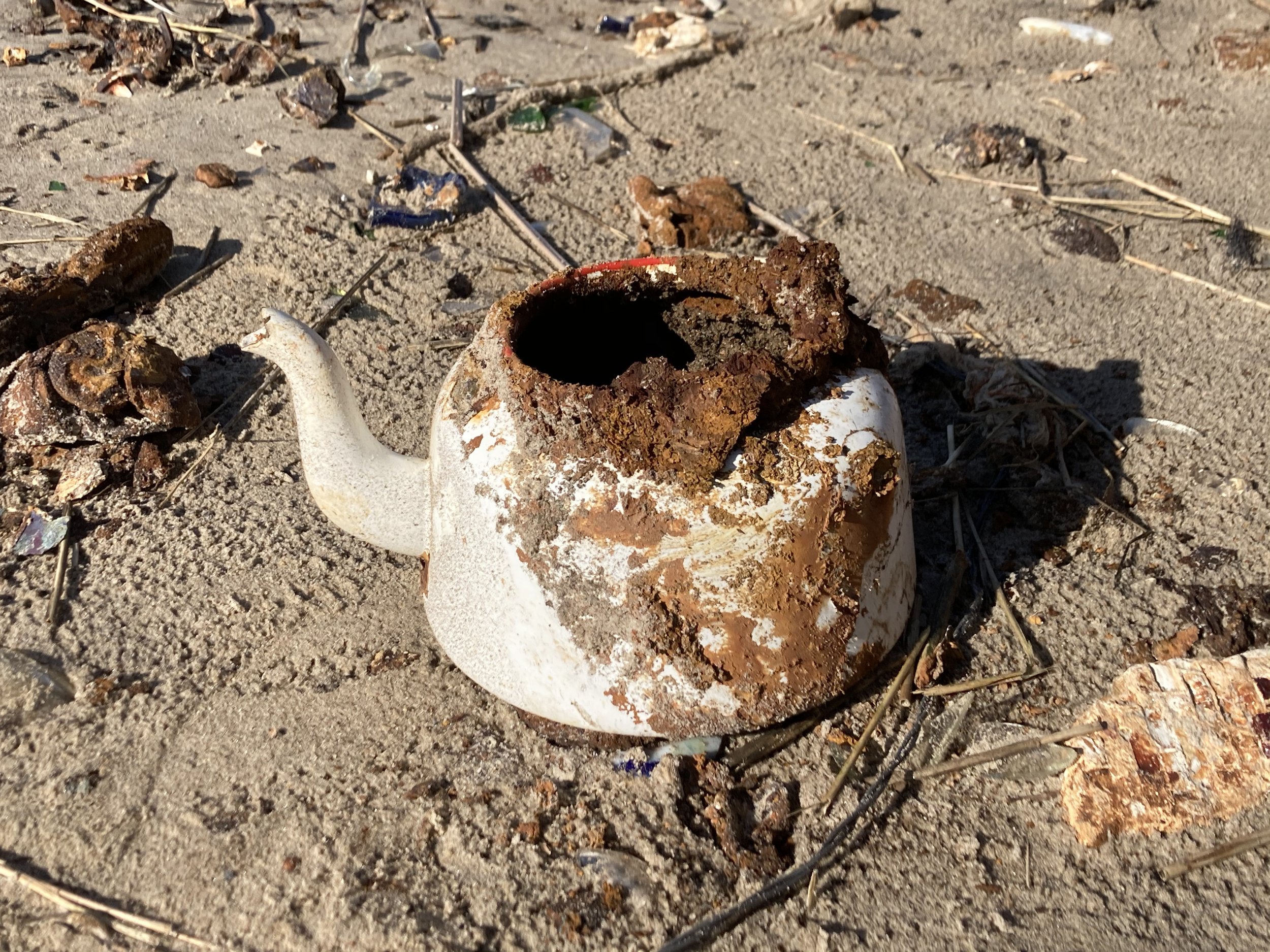

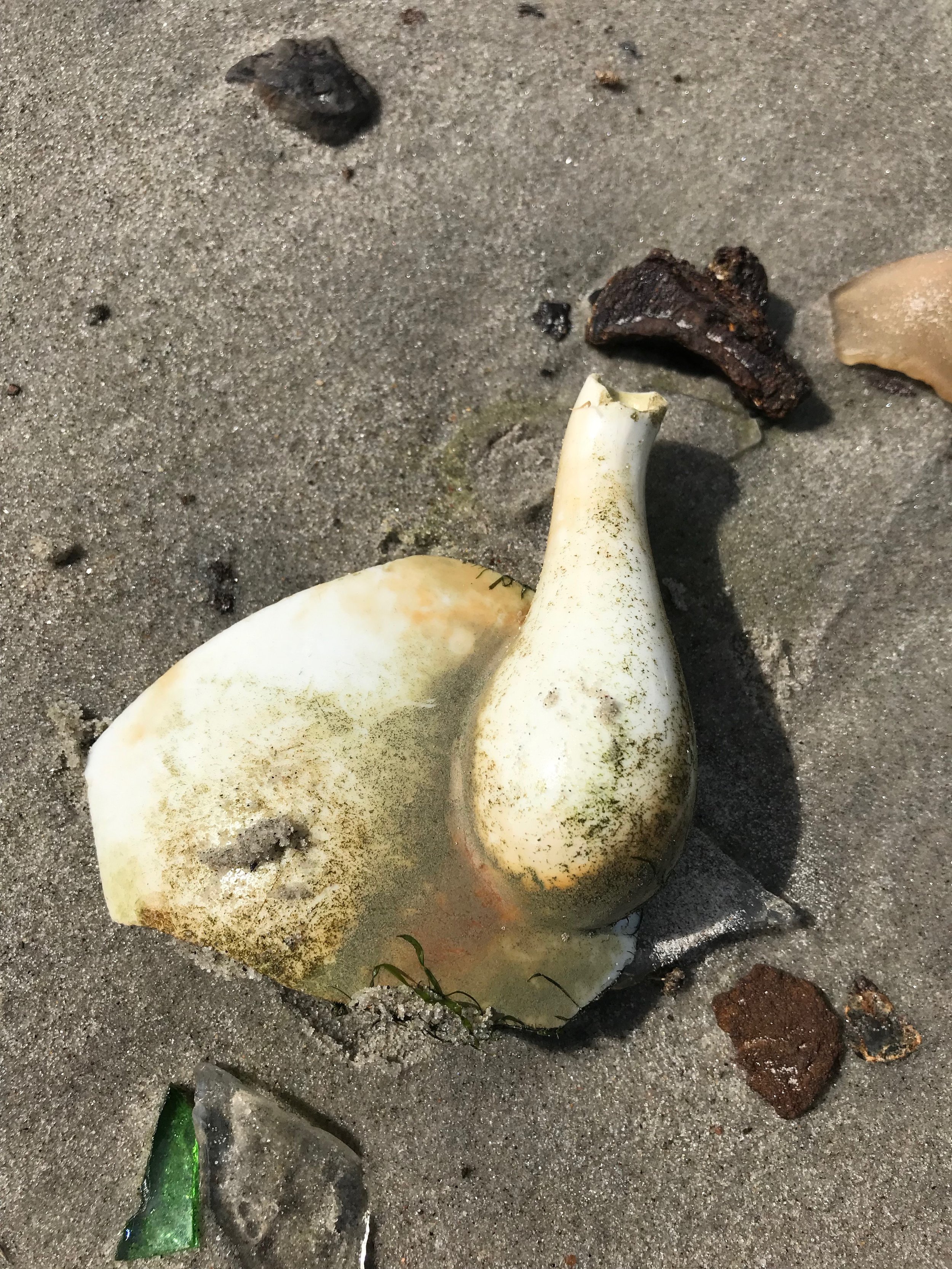
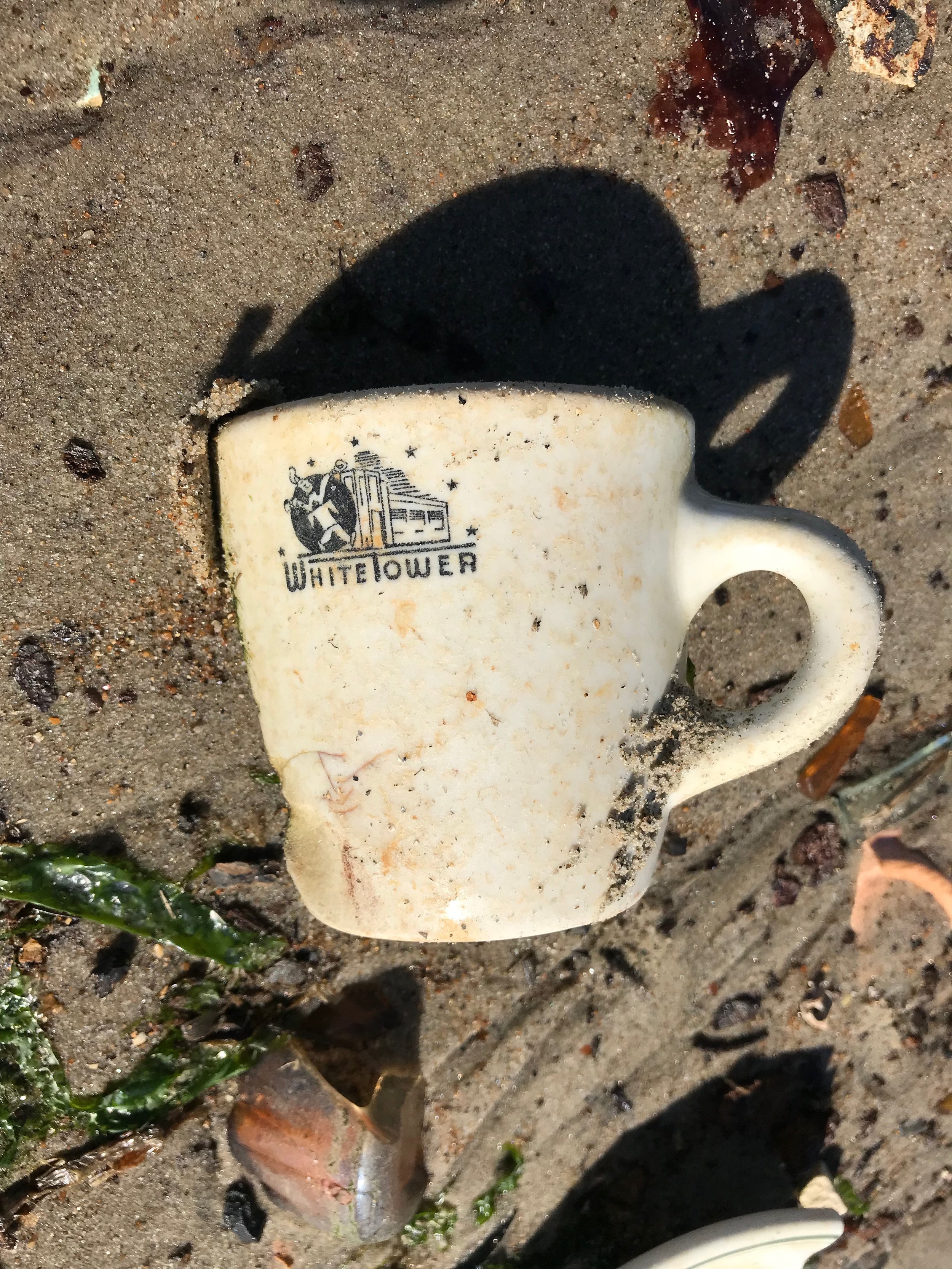
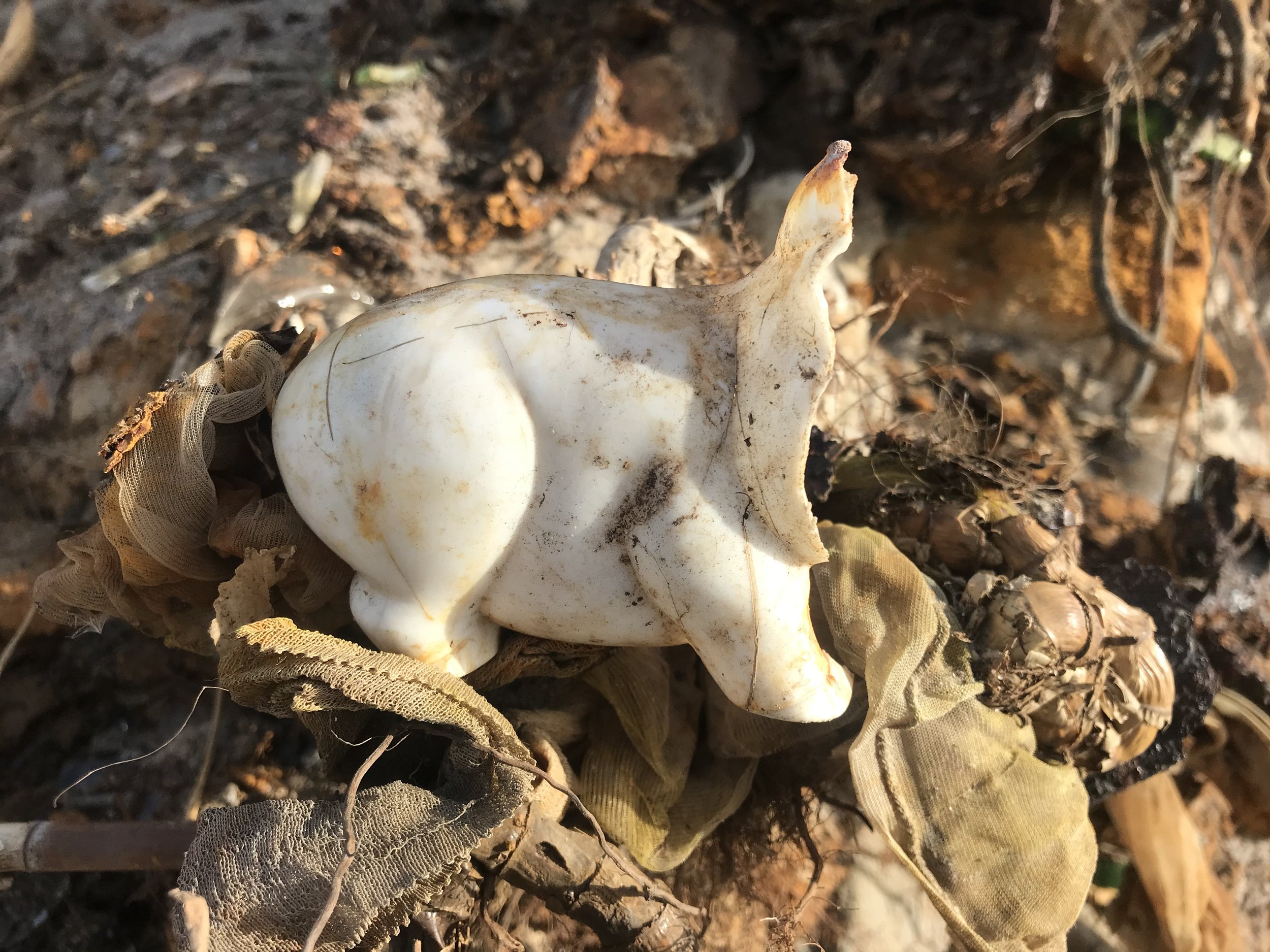
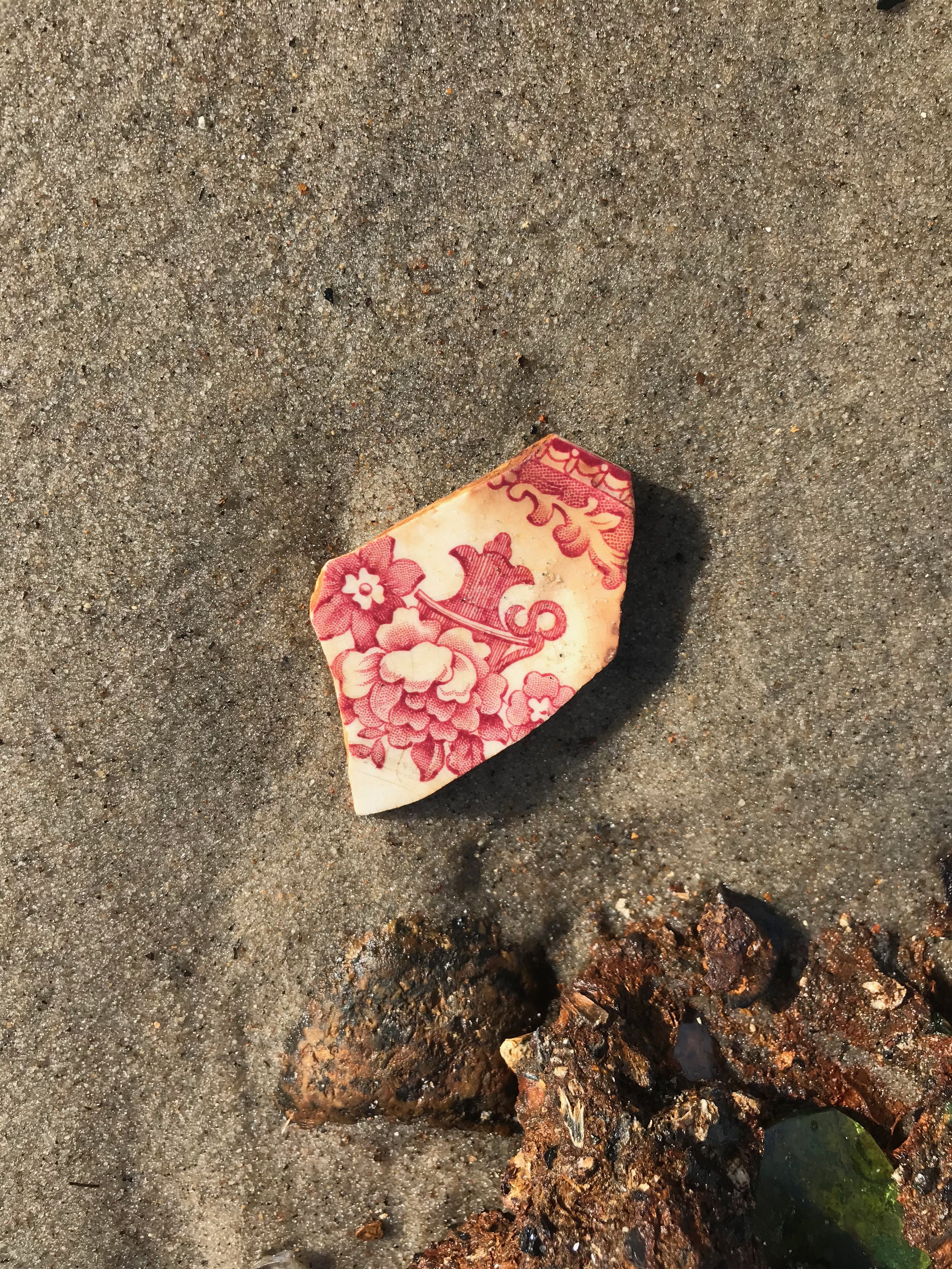
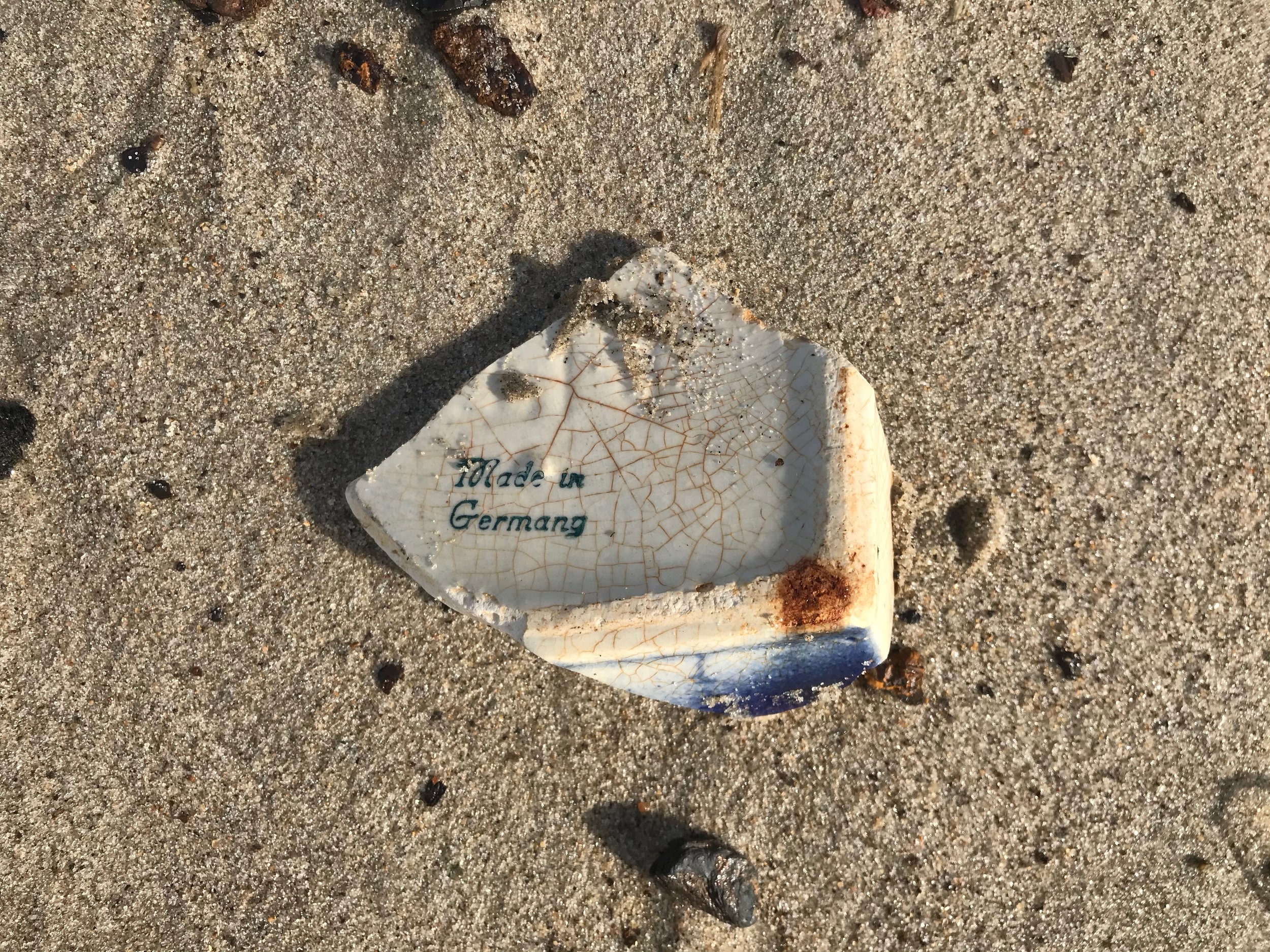




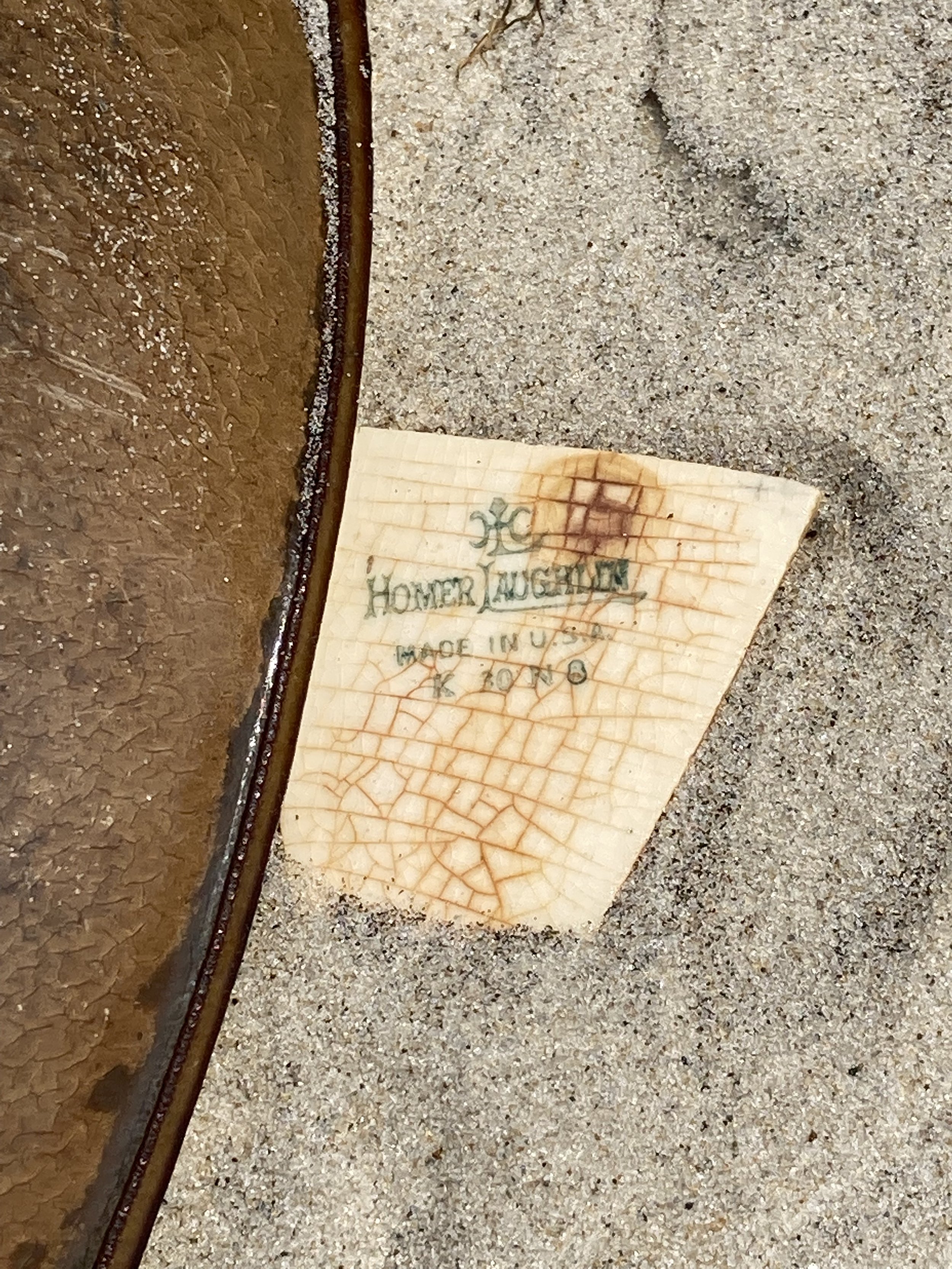

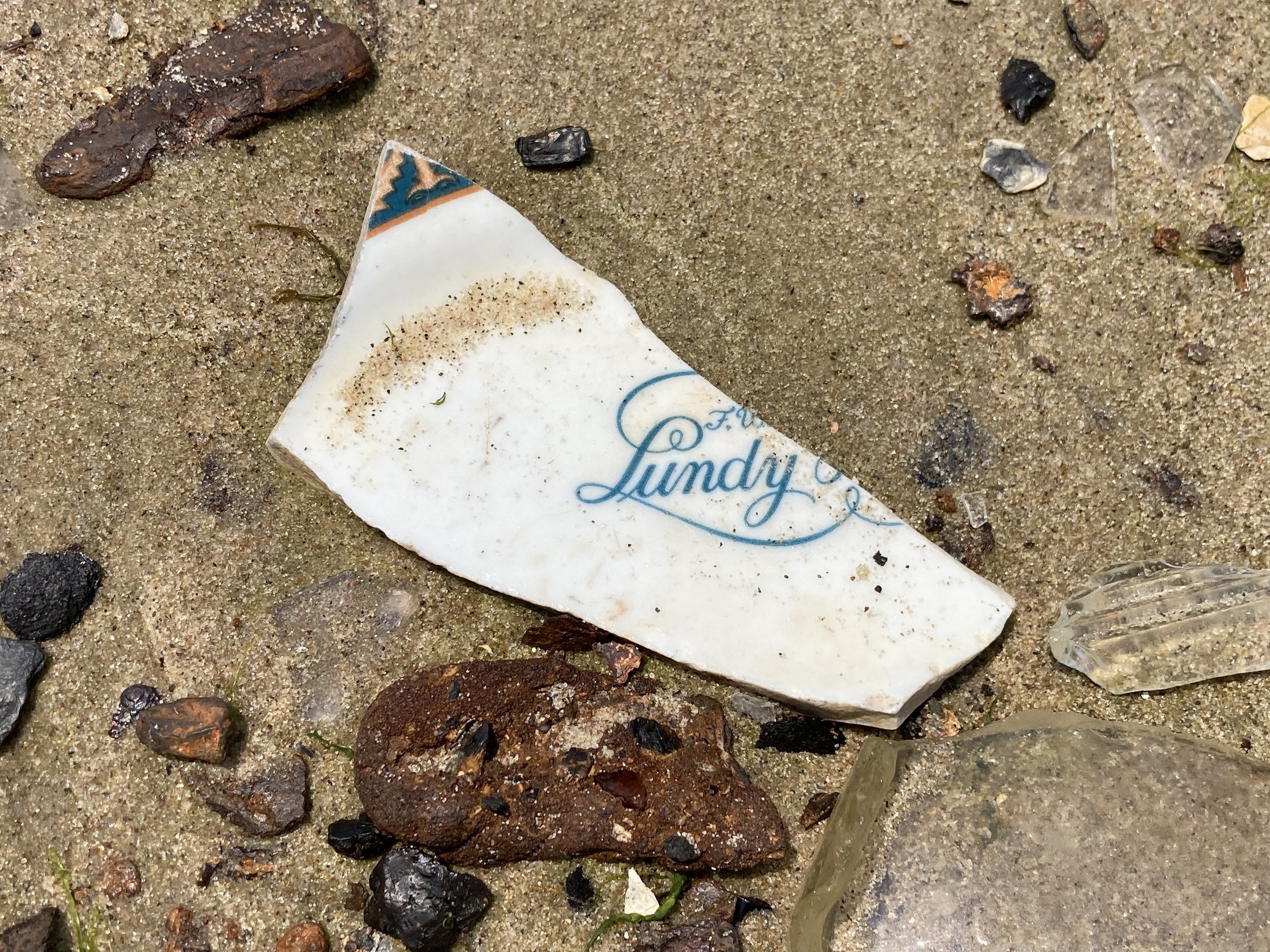
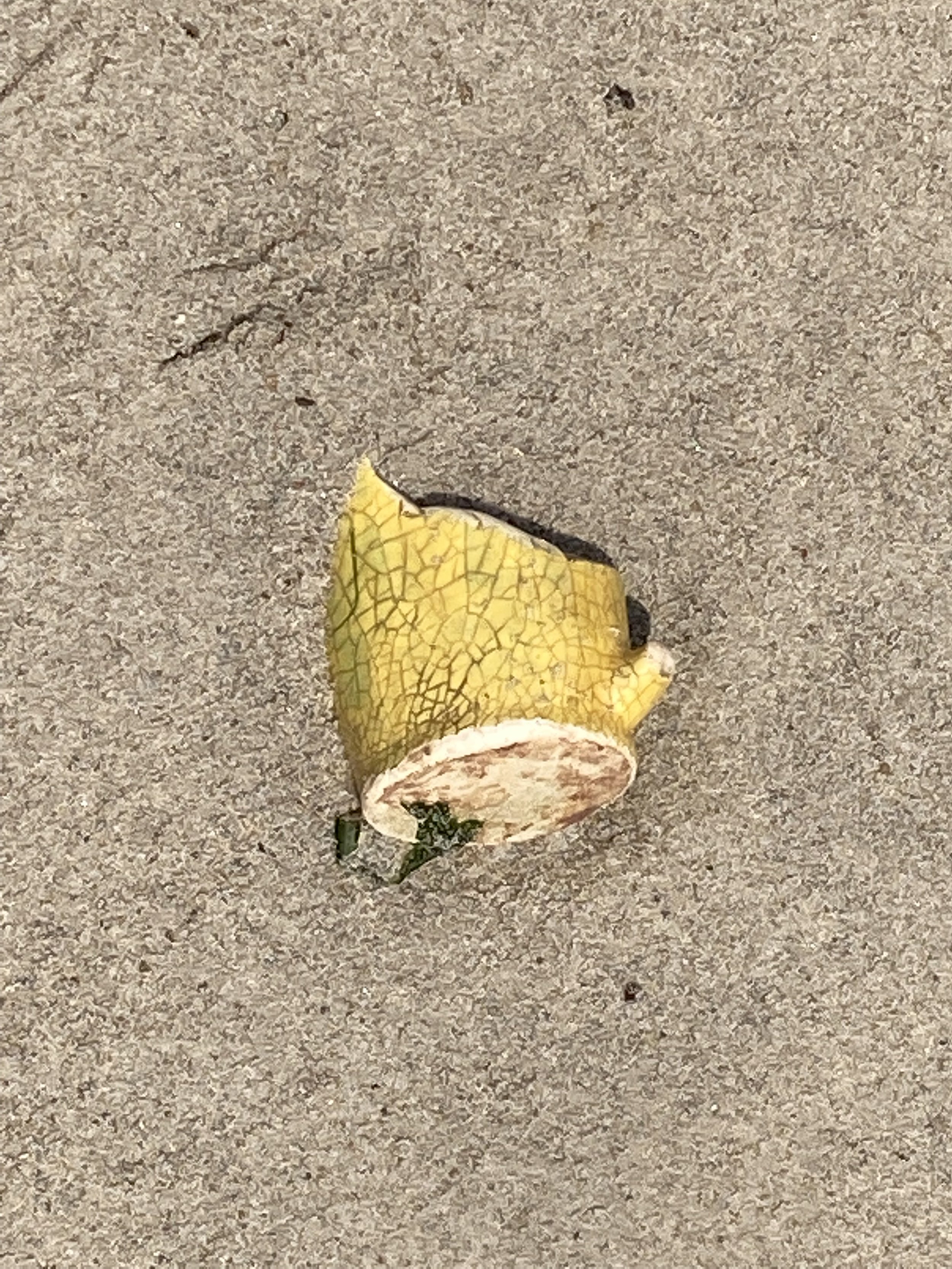



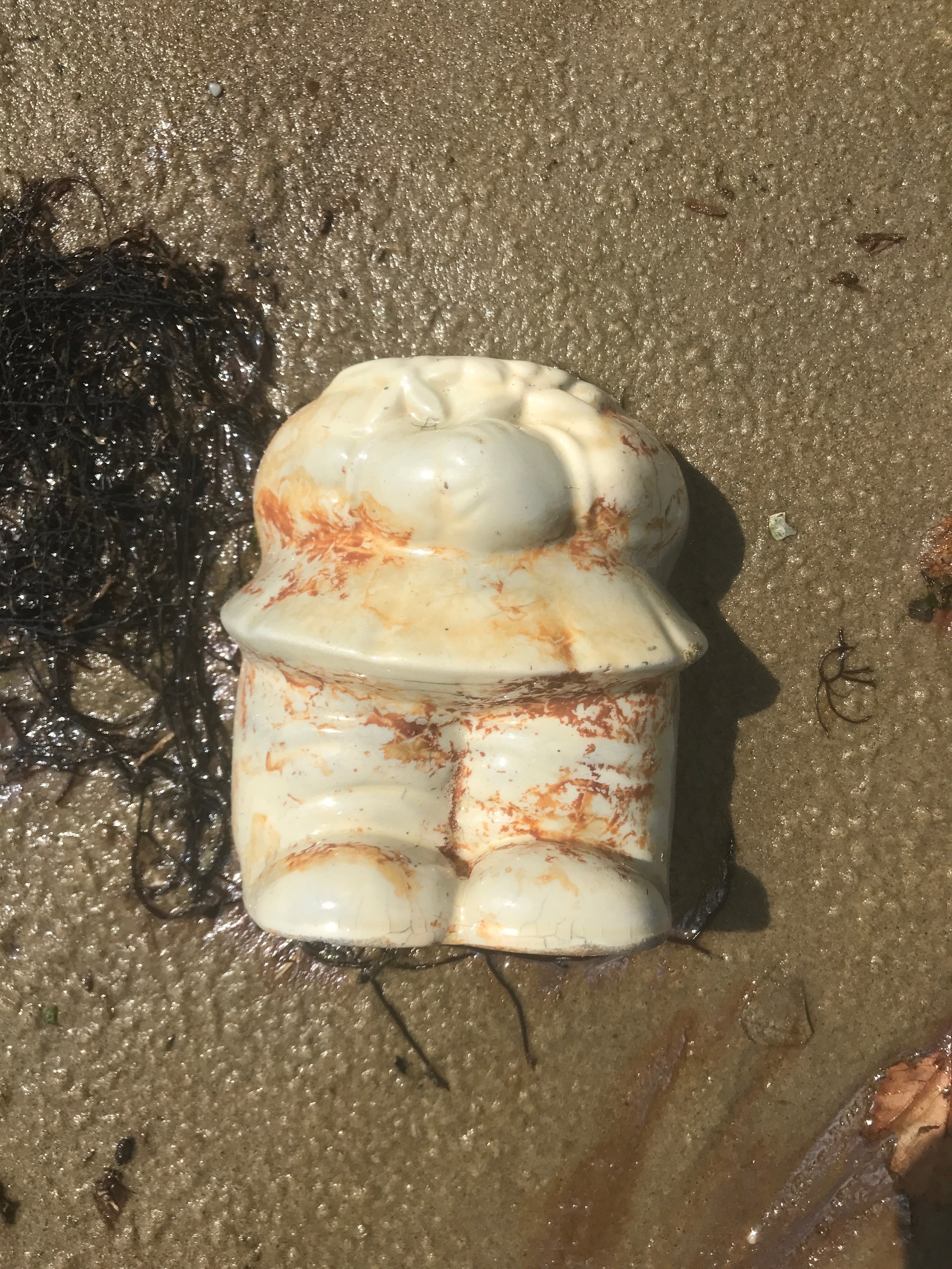
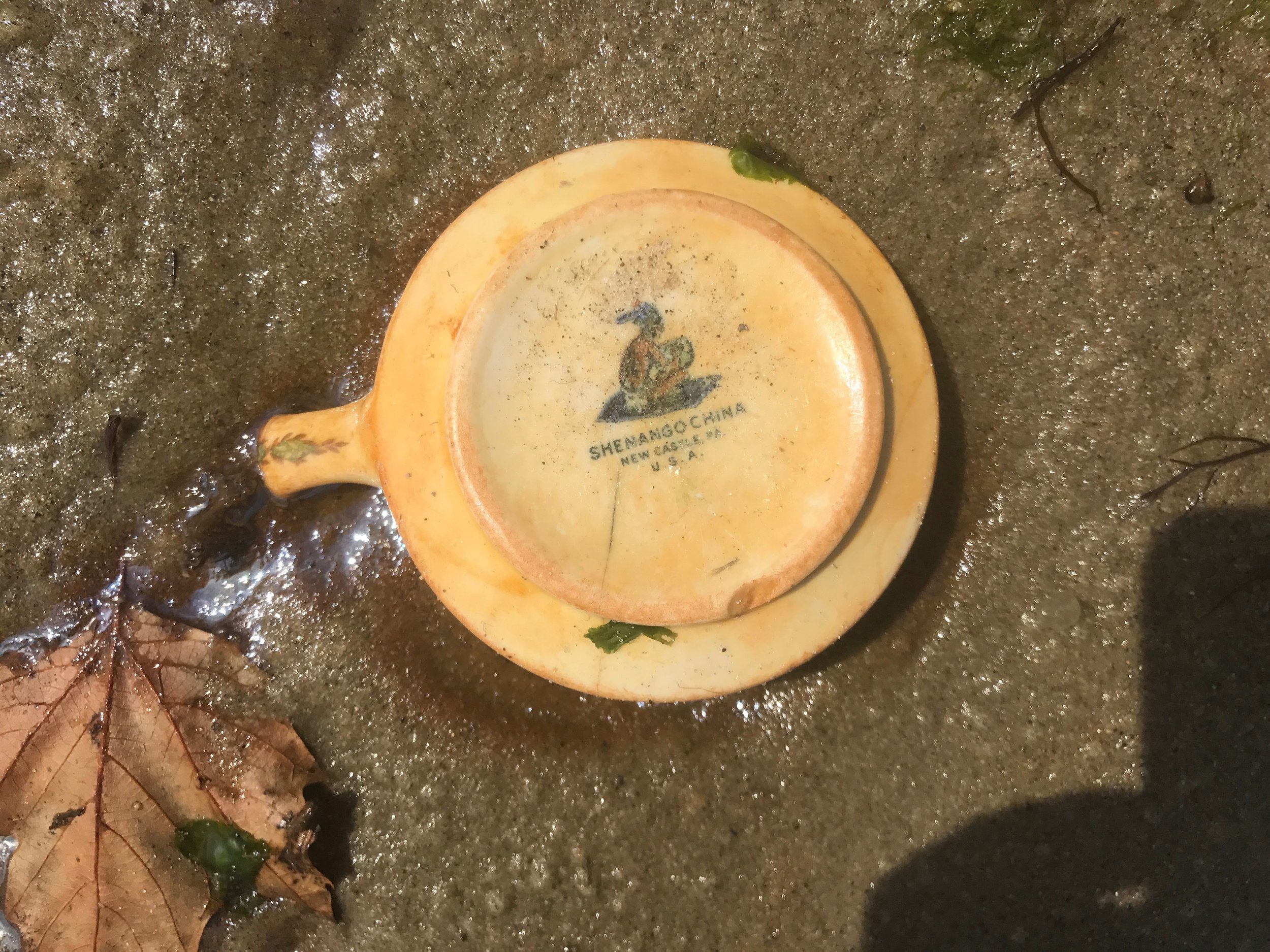

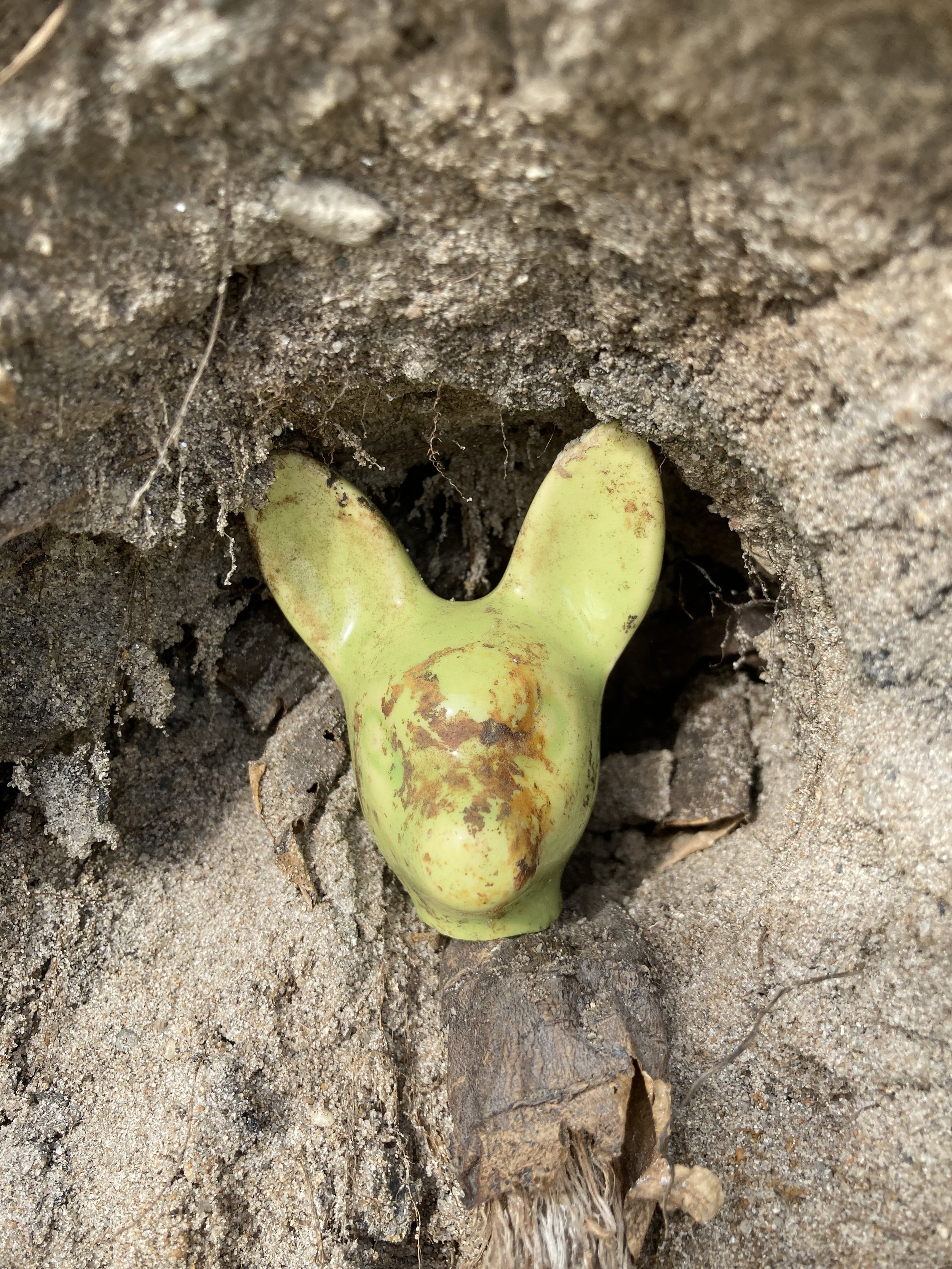
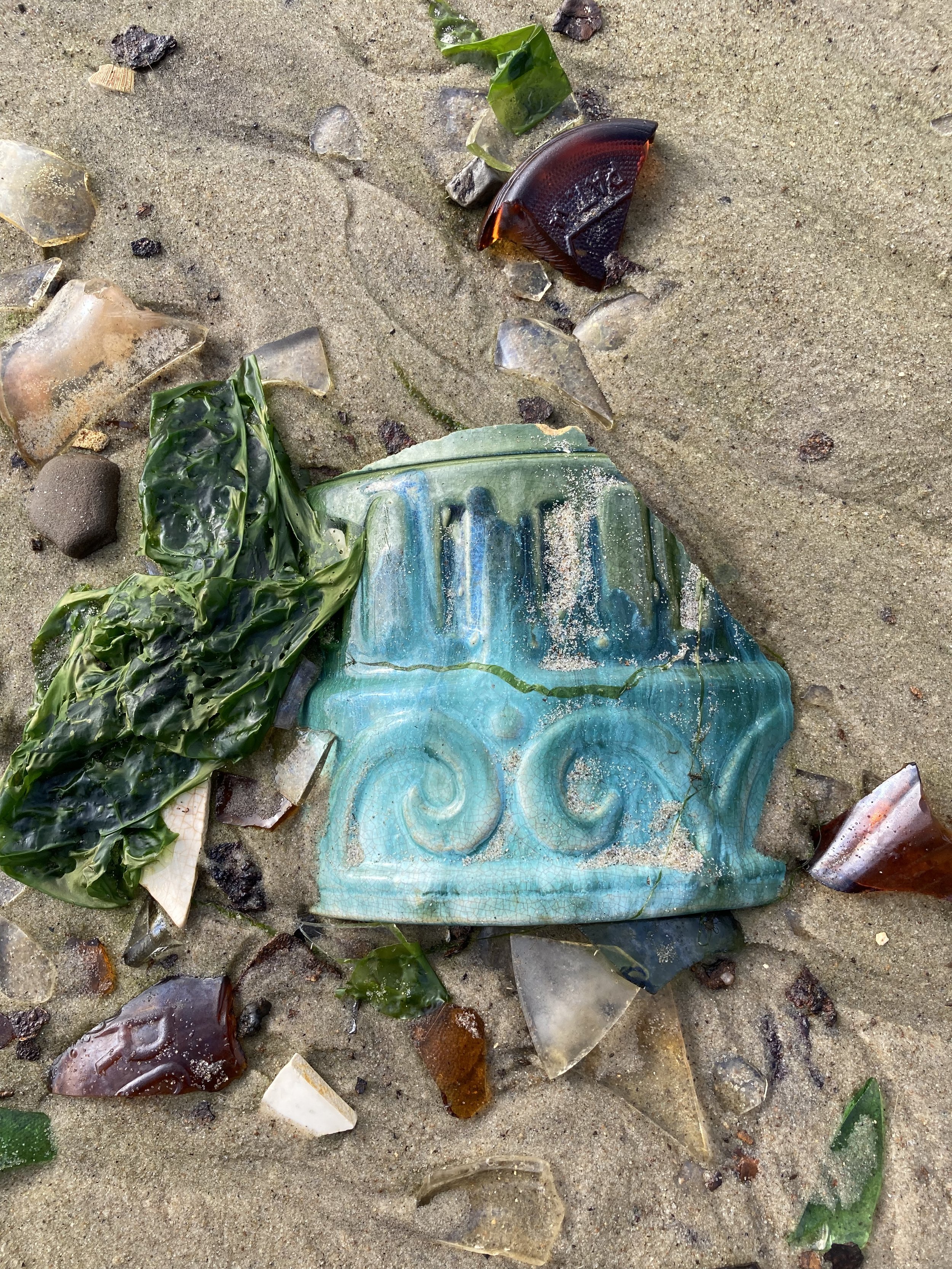
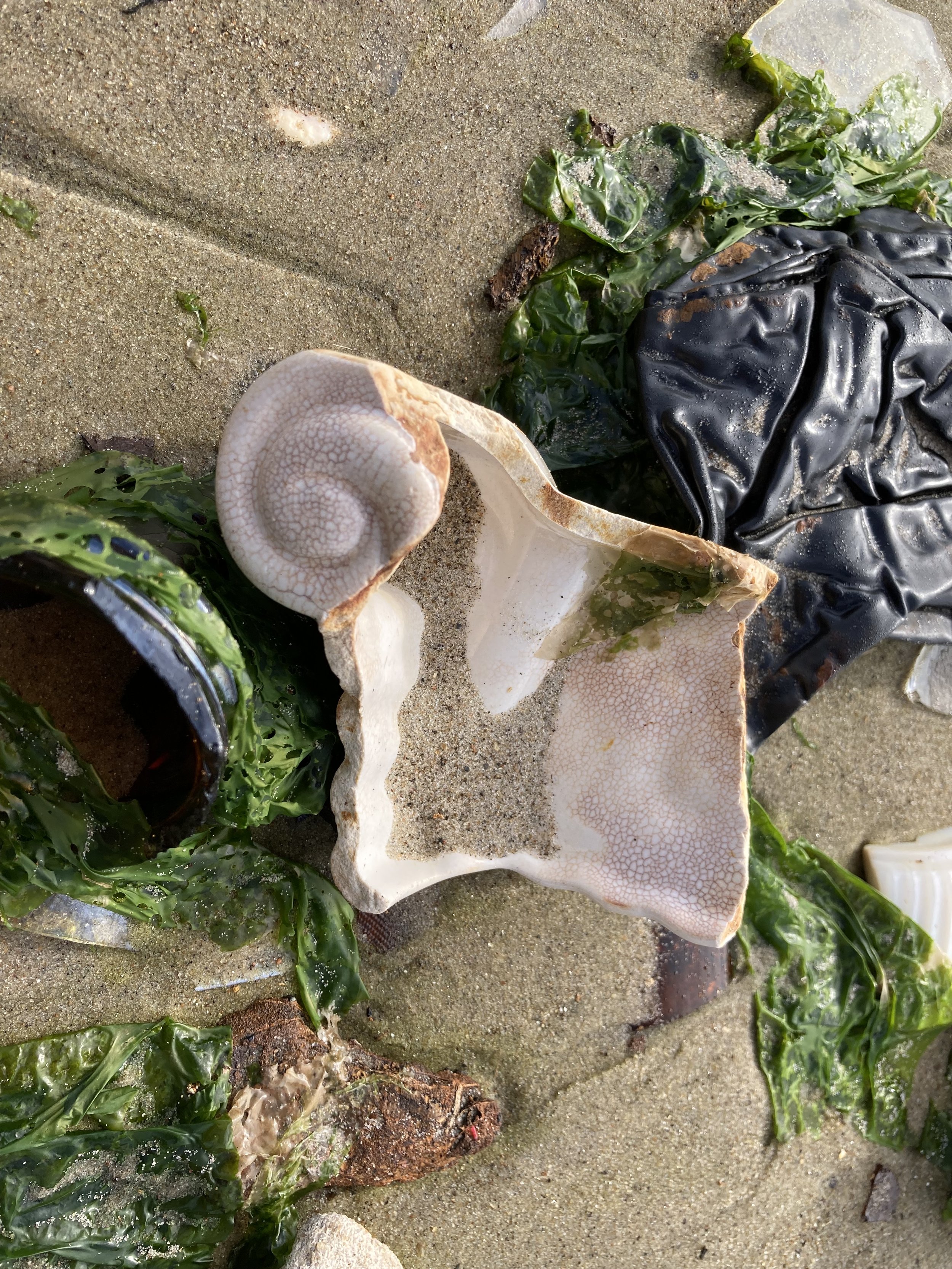
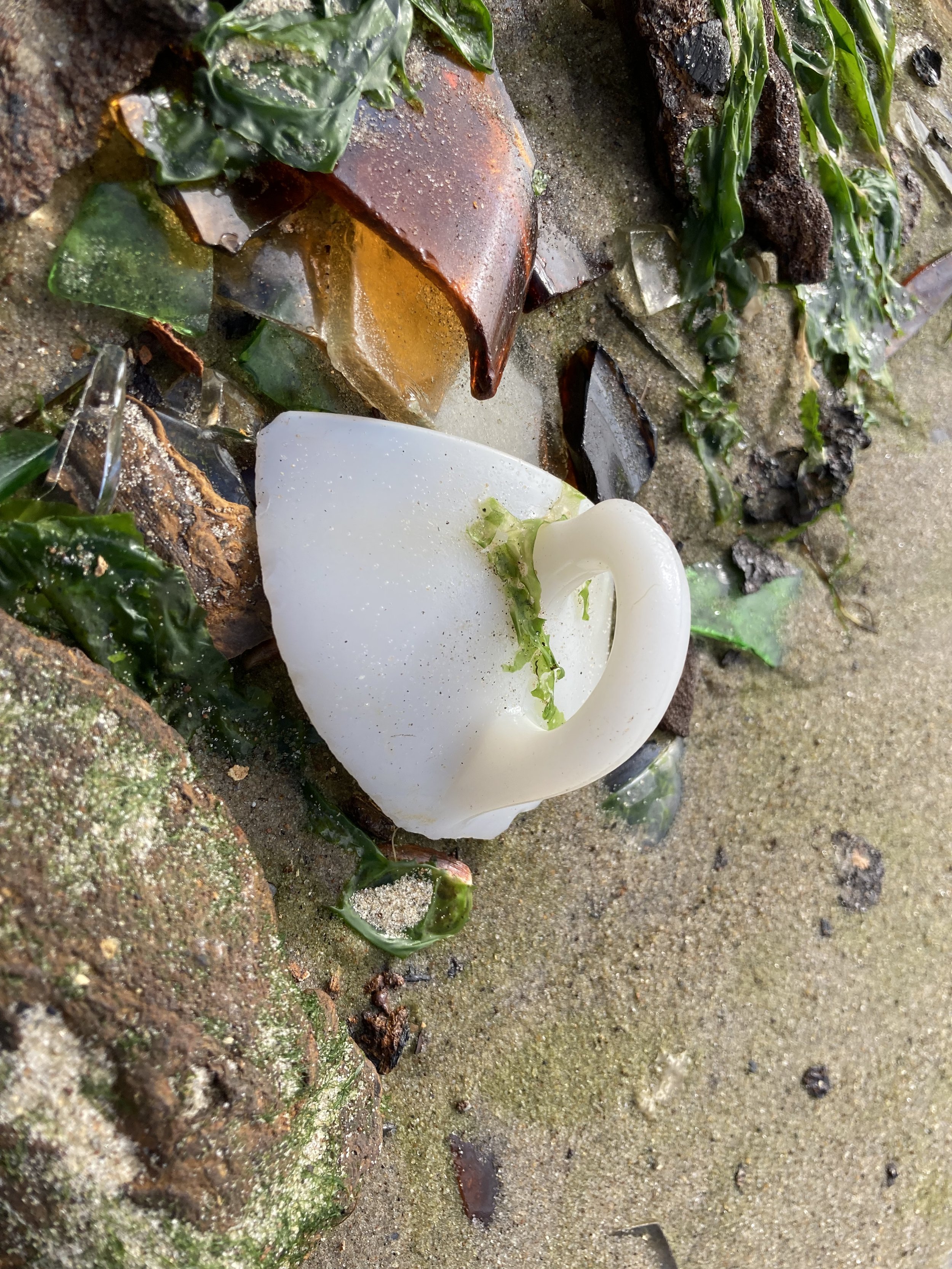
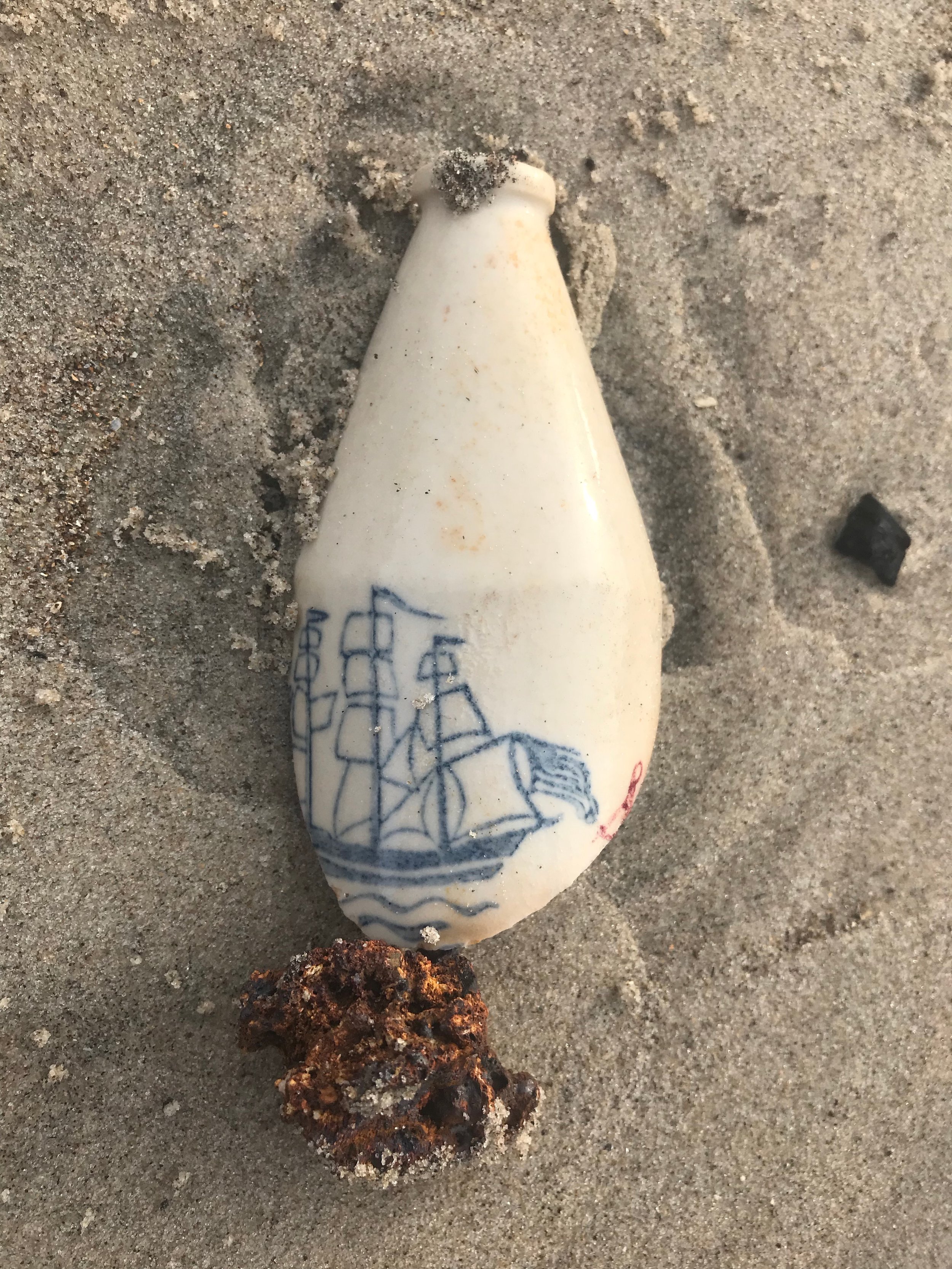
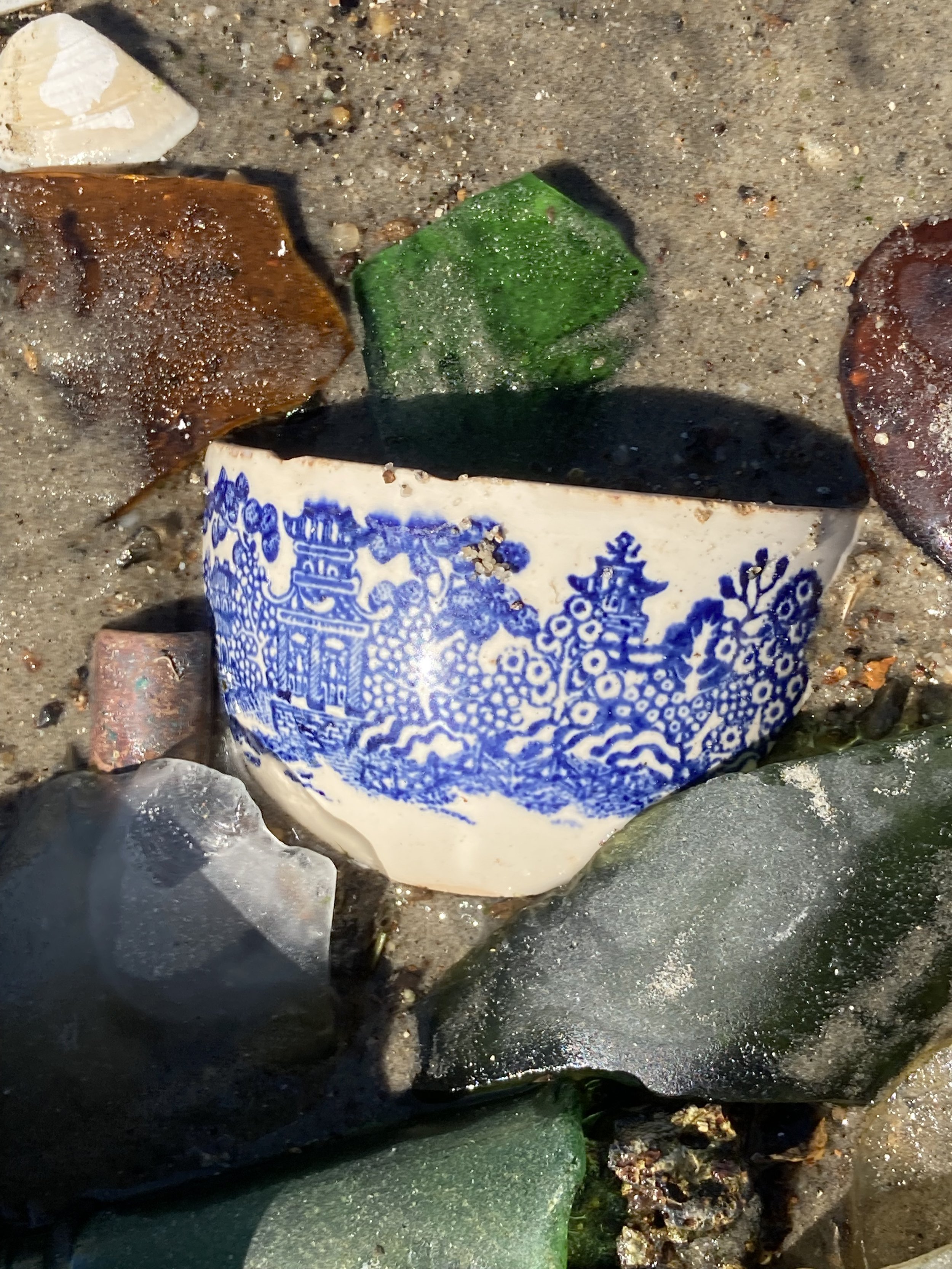


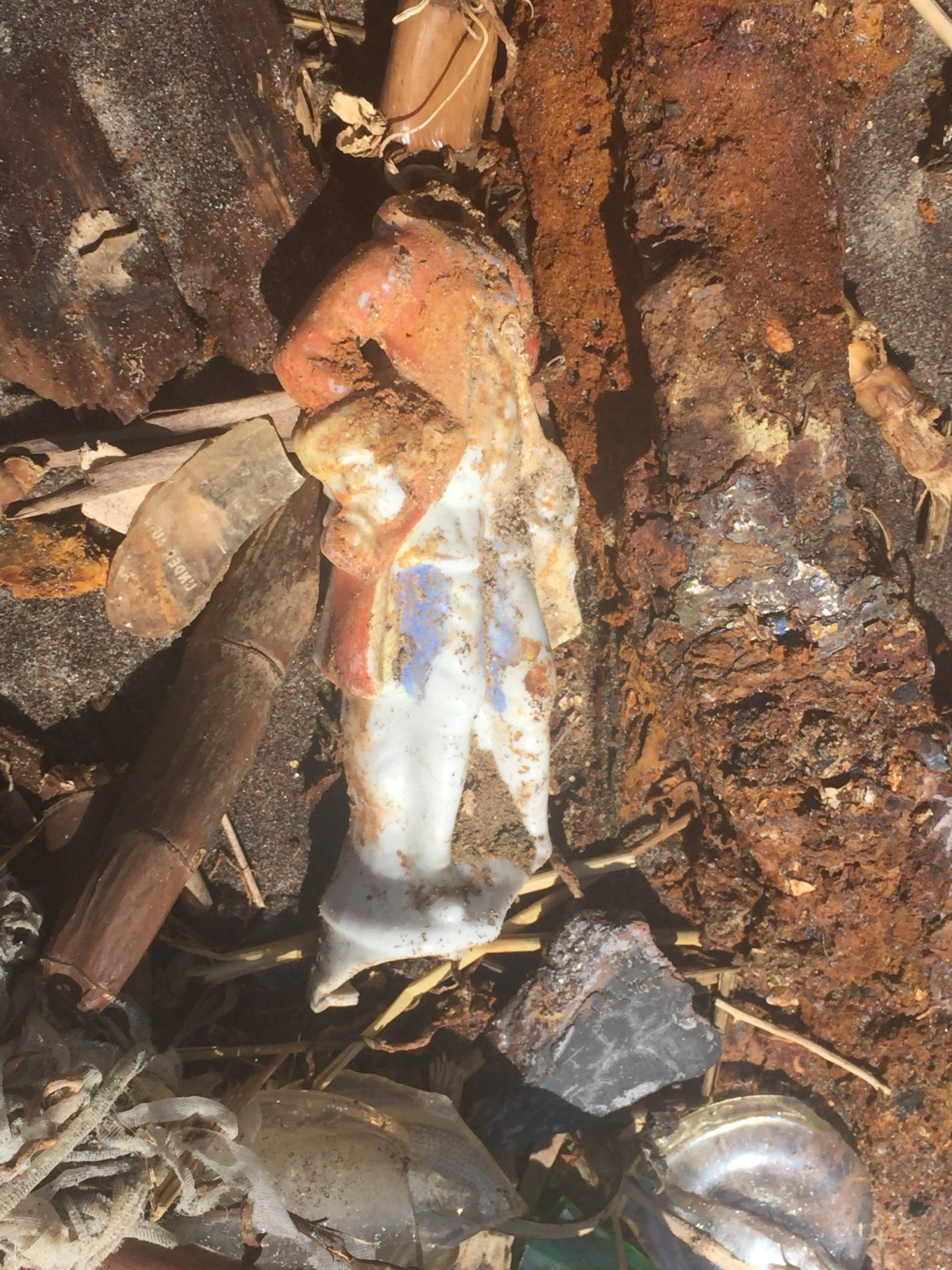
Light Bulbs
Yes, there are intact light bulbs from many decades ago on the beach at Dead Horse Bay. I’ve only ever seen them at the top of the beach, where they have just emerged from the landfill. As they roll down, unlike the bottles, they must easily get blown around and crushed. It’s a mystery to me how they have survived under the pressure of all the other garbage for so many years.
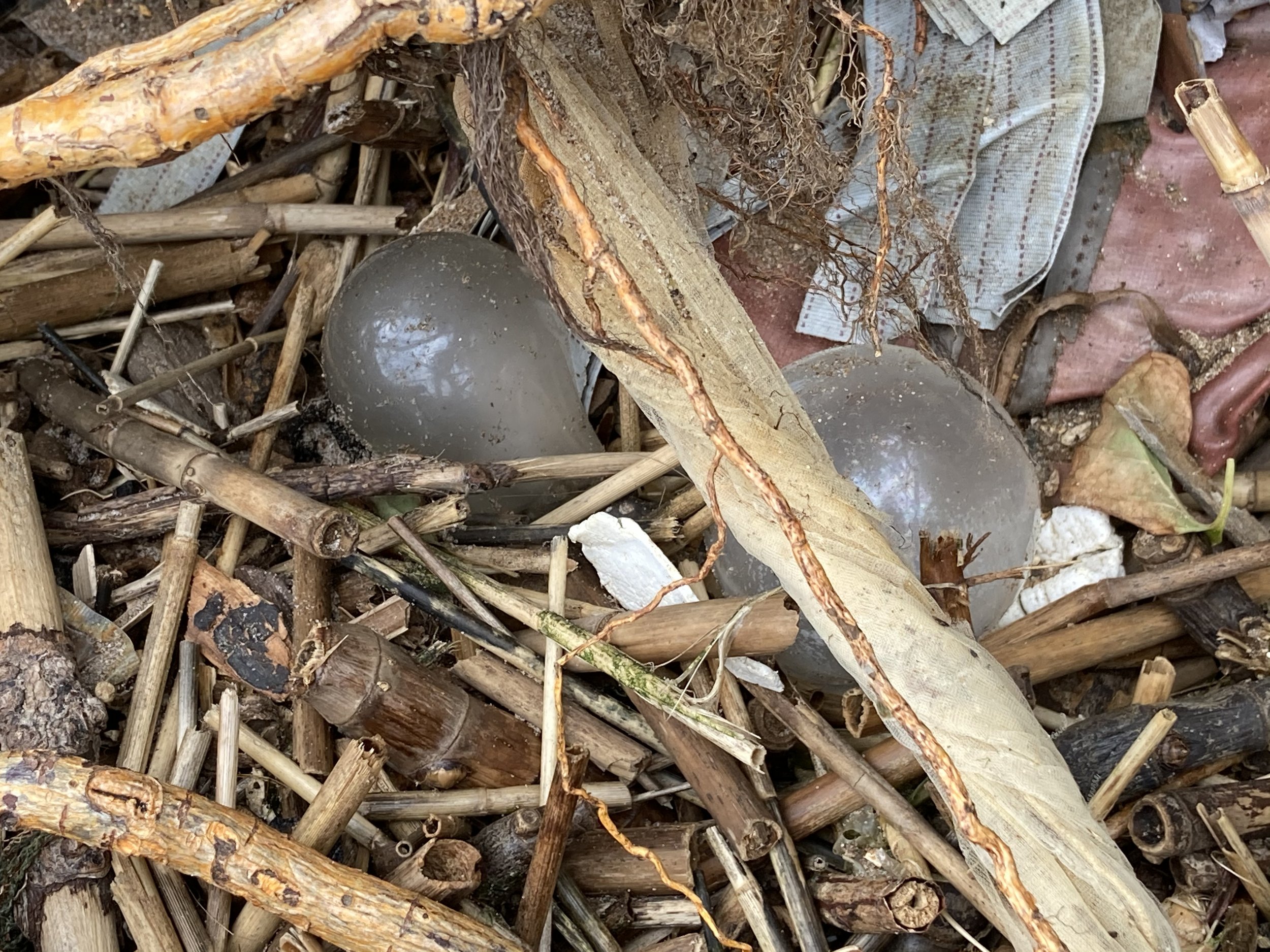
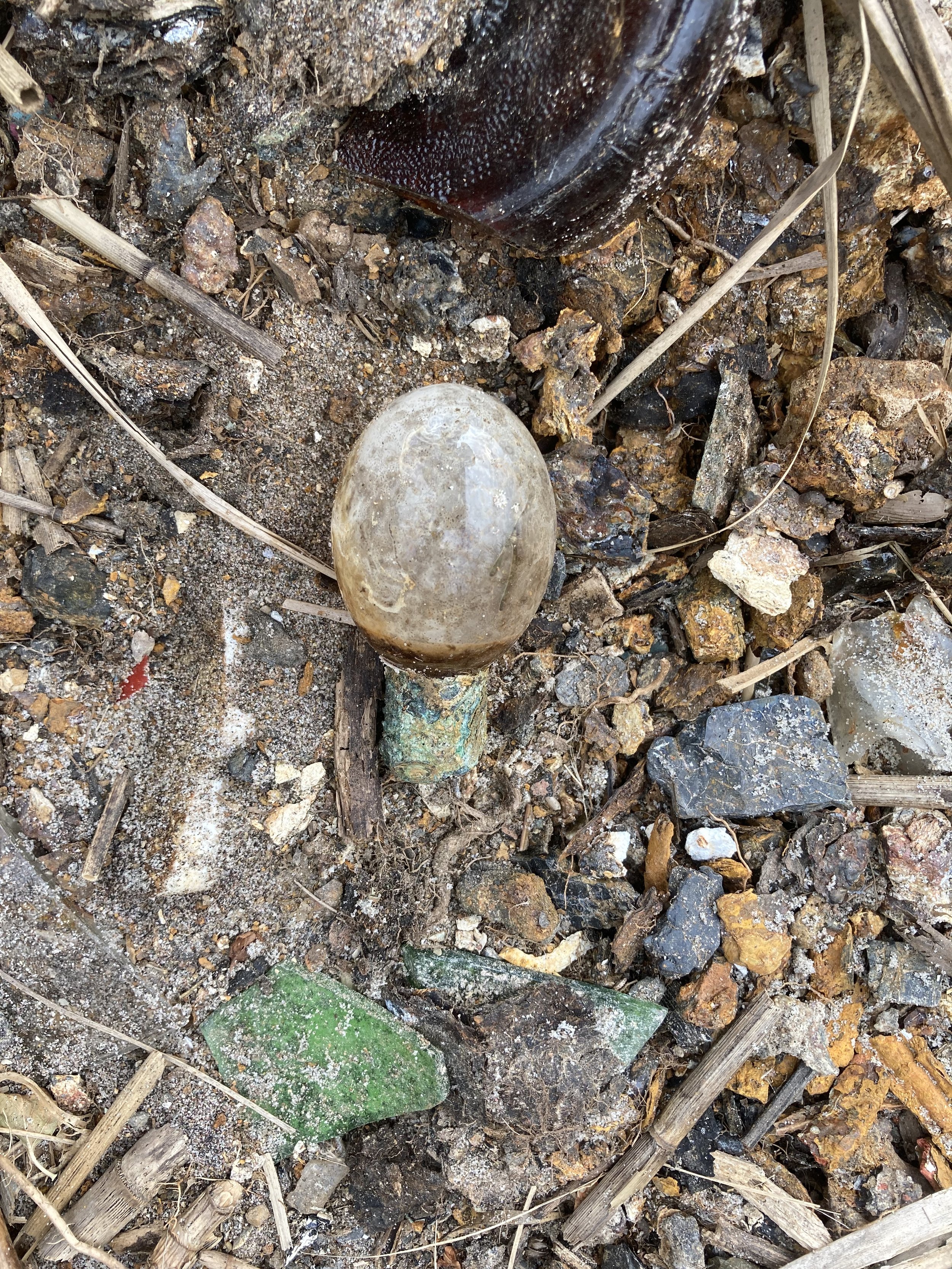
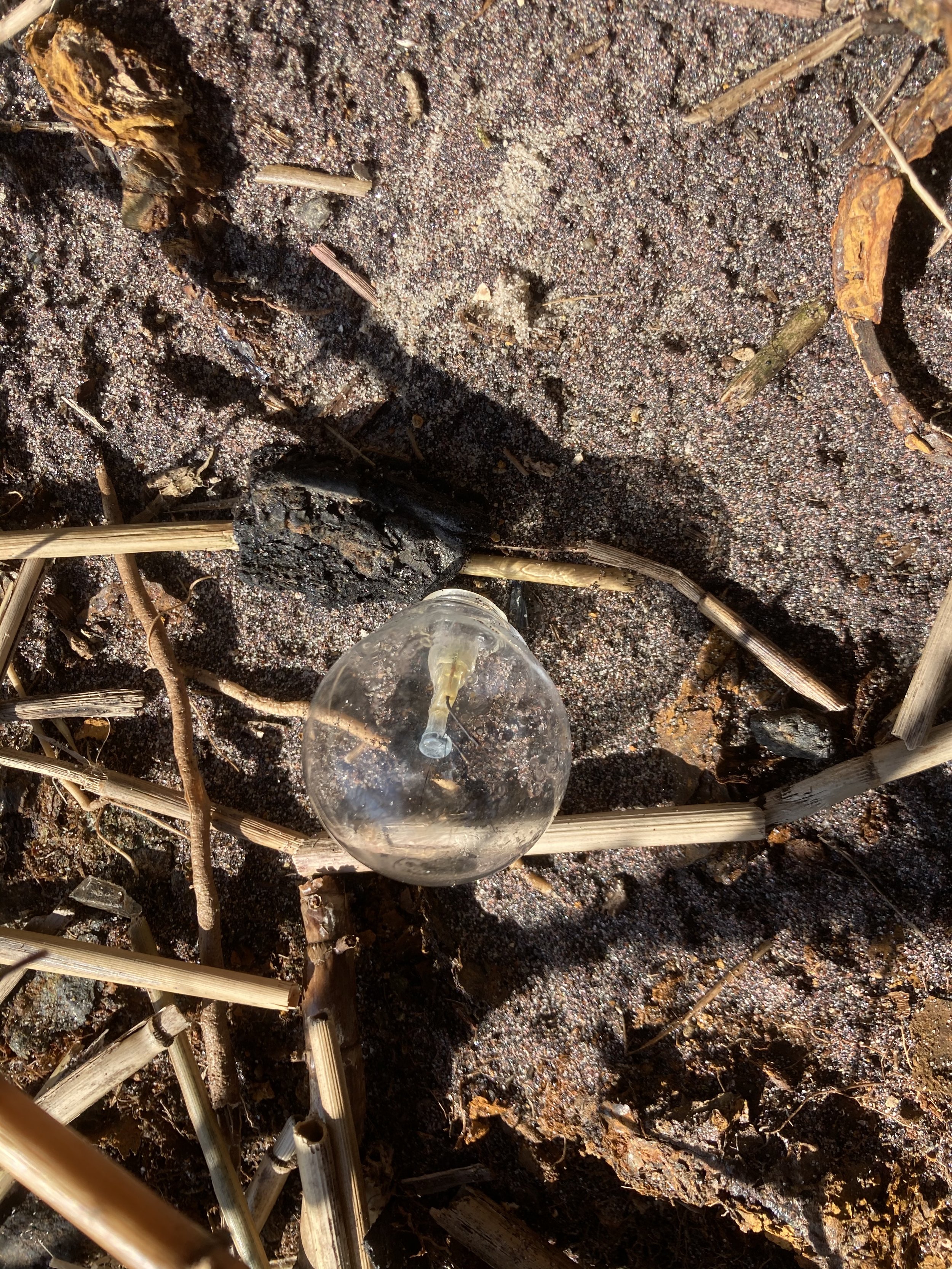
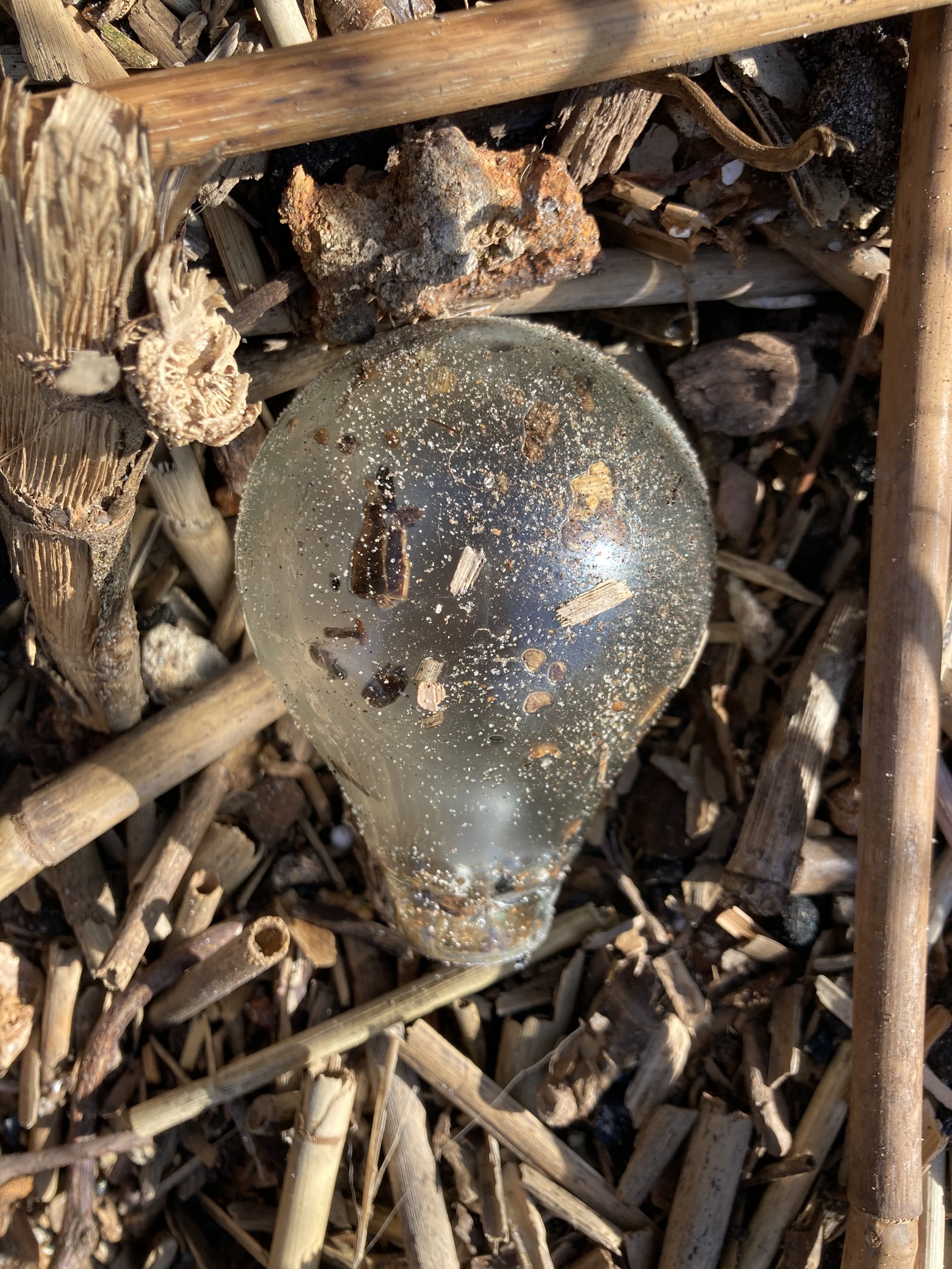
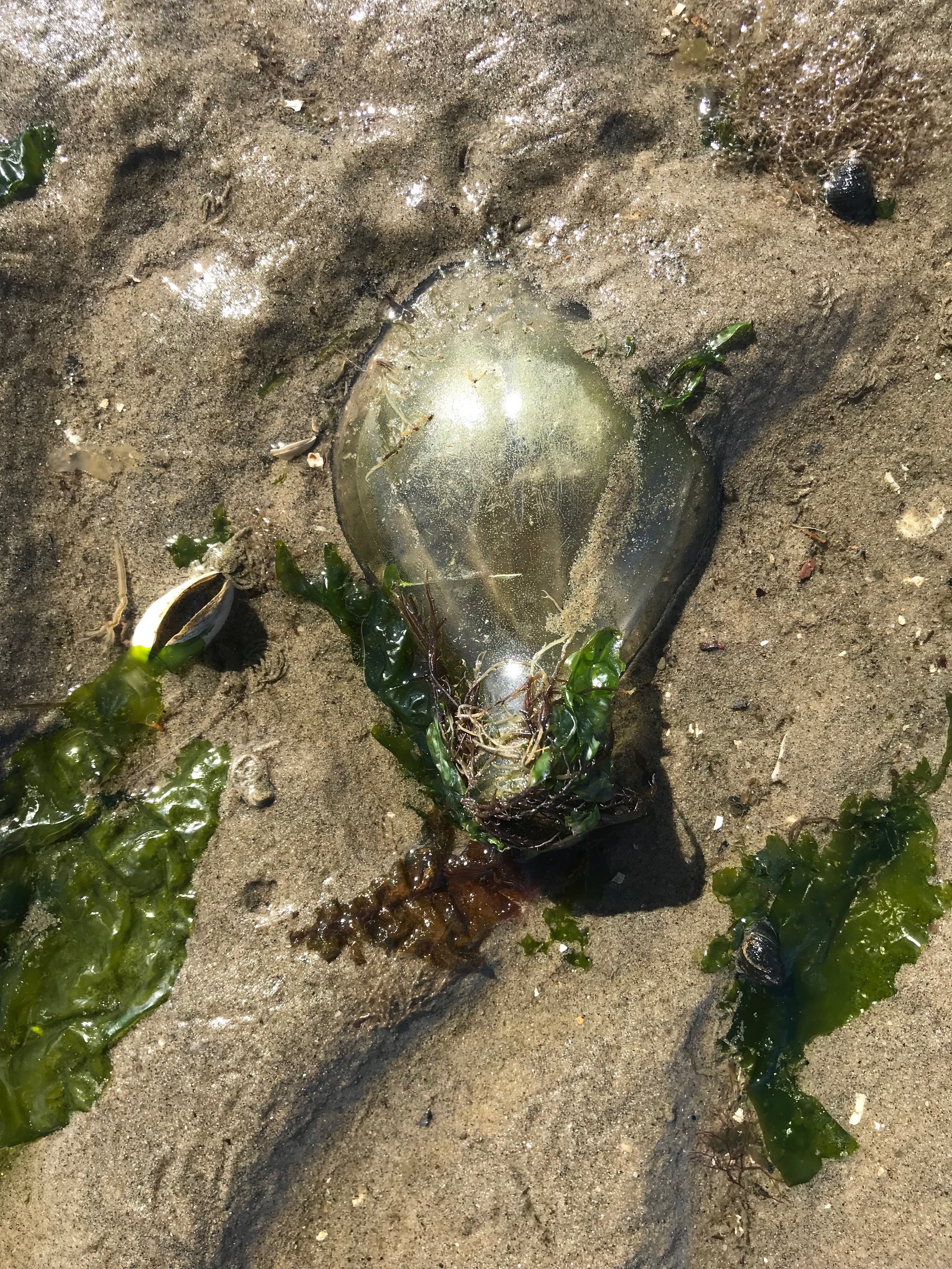
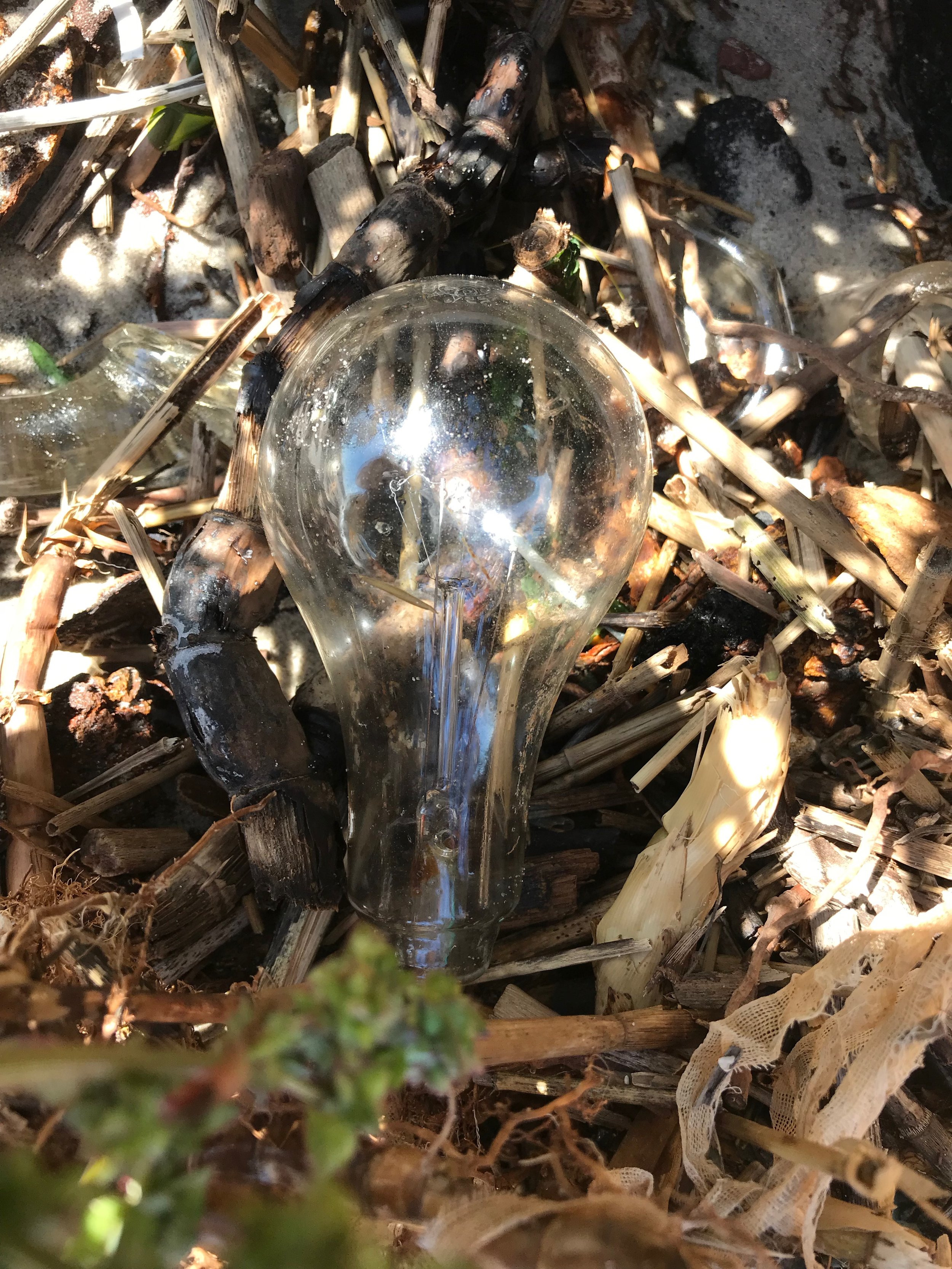

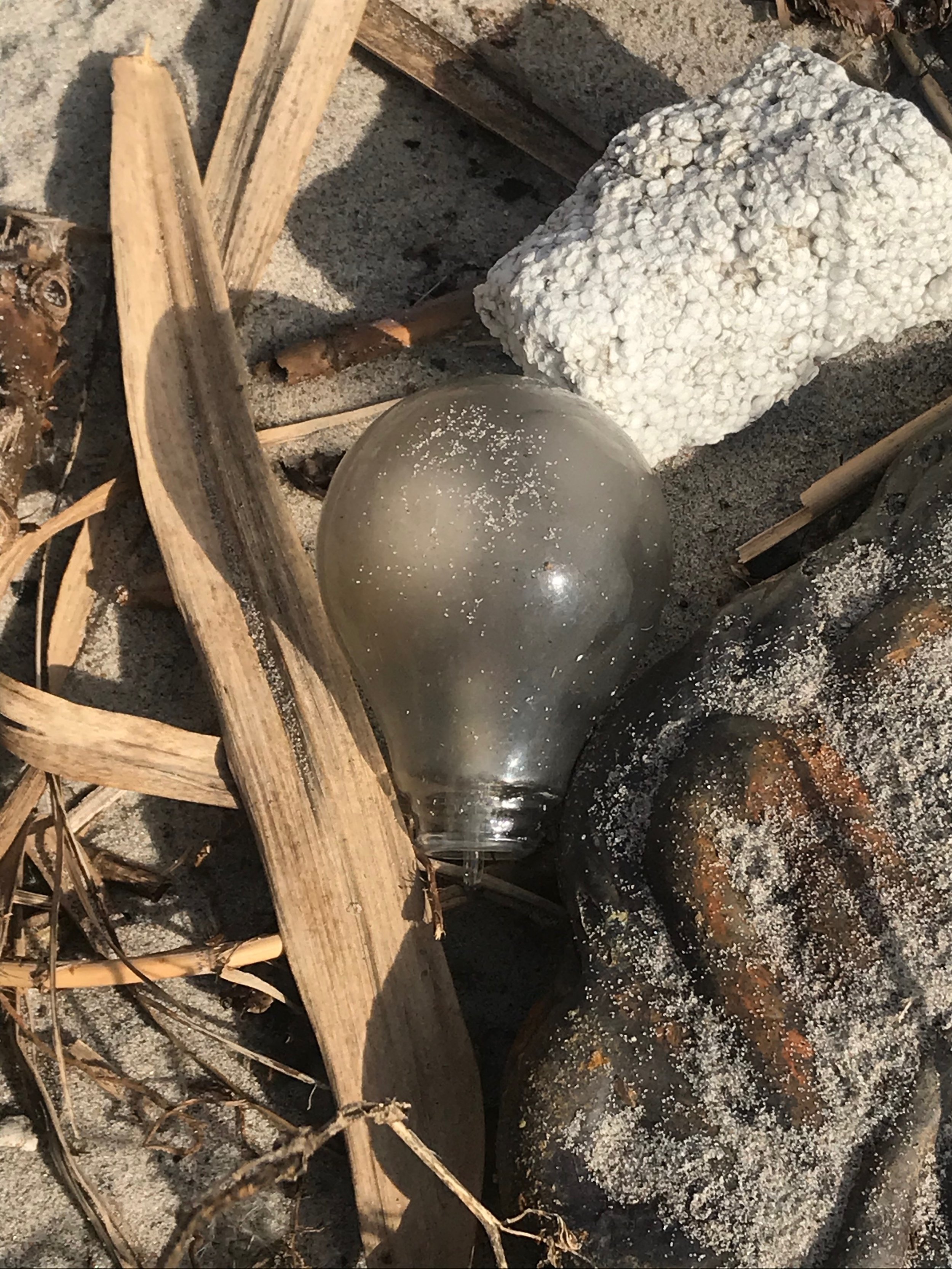
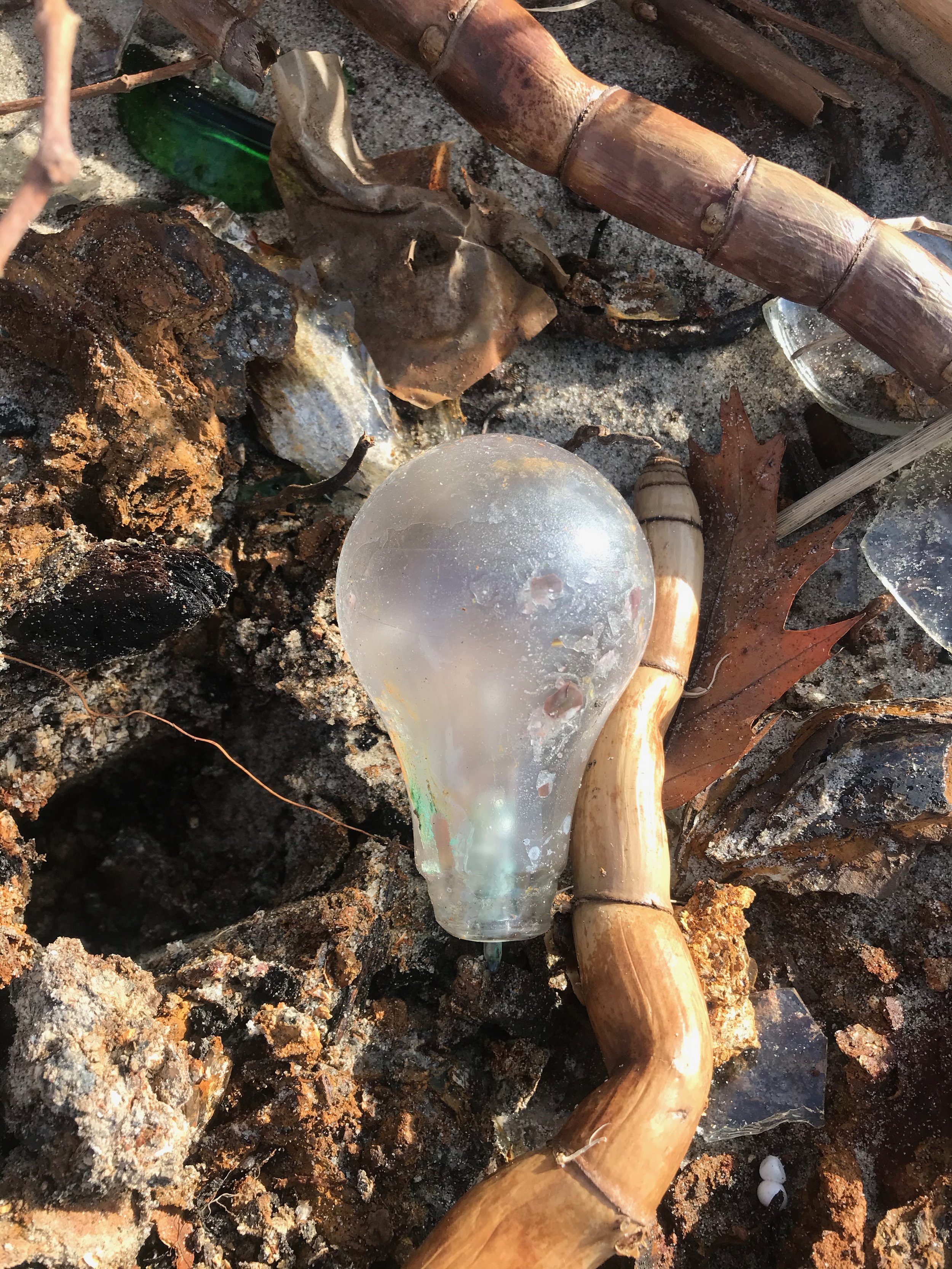
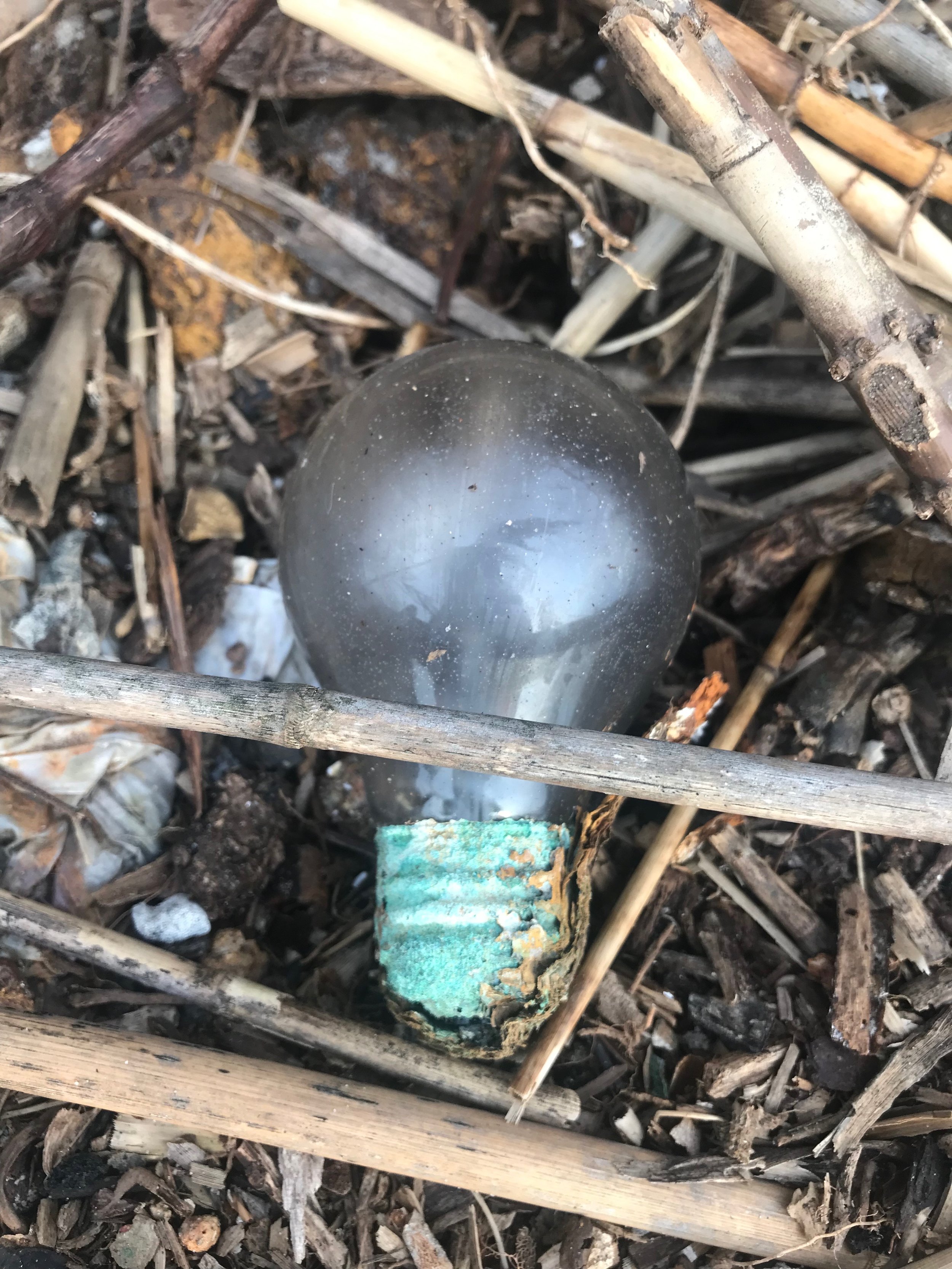
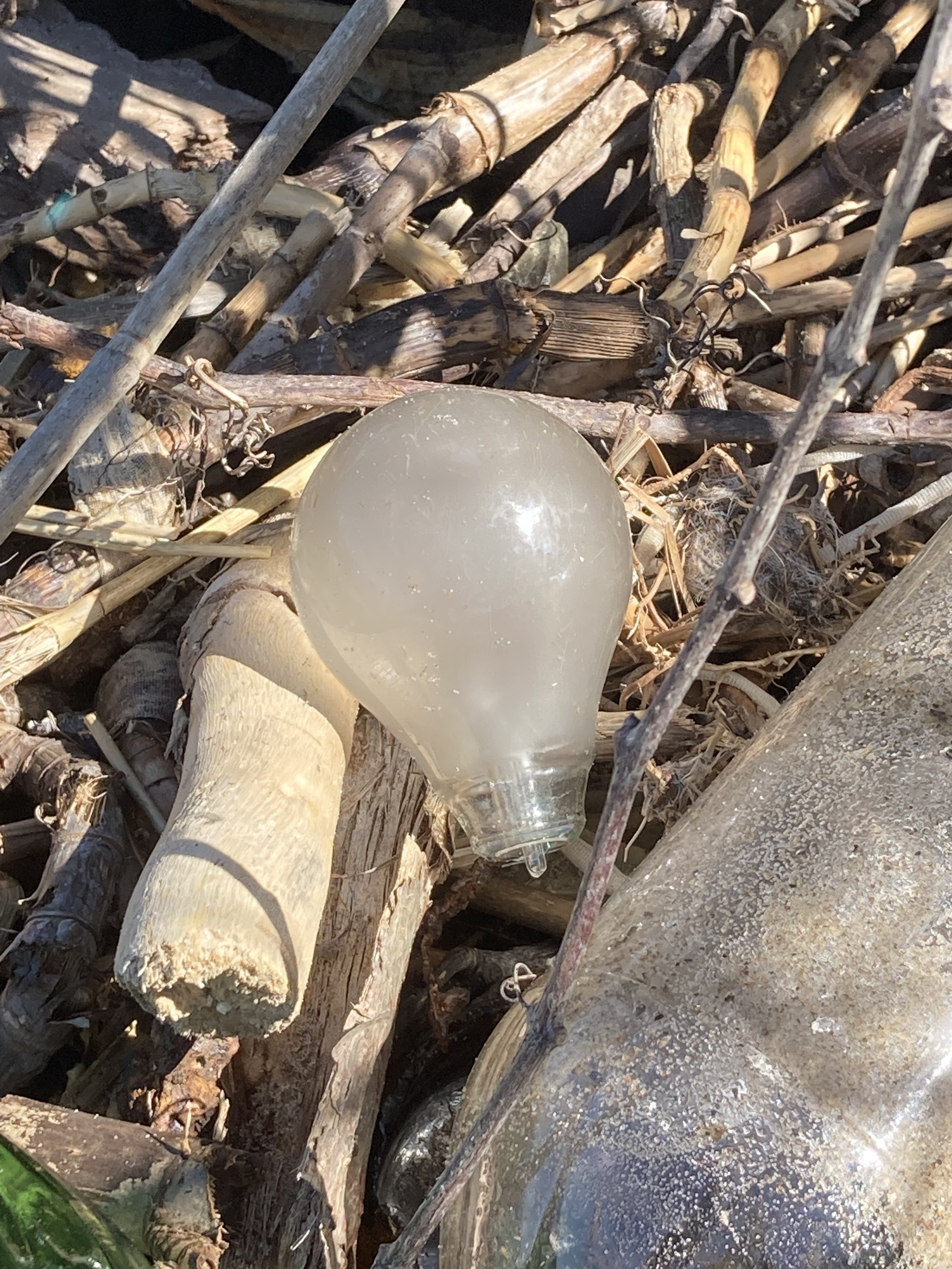
Mixed Objects
One of the joys of Dead Horse Bay is seeing completely unrelated objects juxtaposed to each other. Whether it’s baby Phragmites reeds growing from a discarded bottle, a piece of metal covered in barnacles, or a shoe and a bottle that look like friends, these items somehow enhance or sharpen each other’s details. A bone next to a jar both look more distinct when they’re right up next to each other. A shoe almost completely overtaken by seaweed reminds us how long it’s been in the garbage, even though it was once new-bought from the store and needed breaking in.
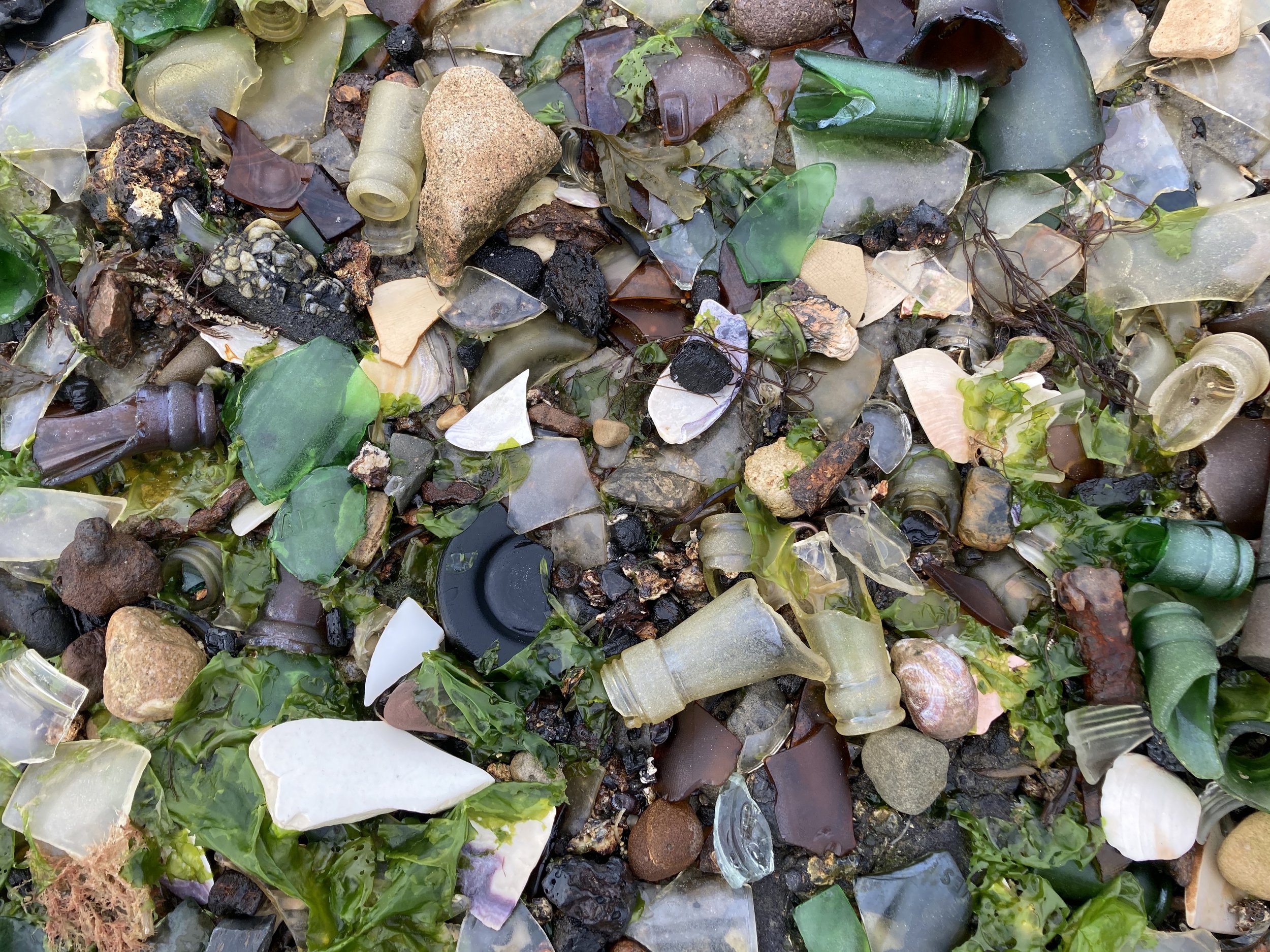
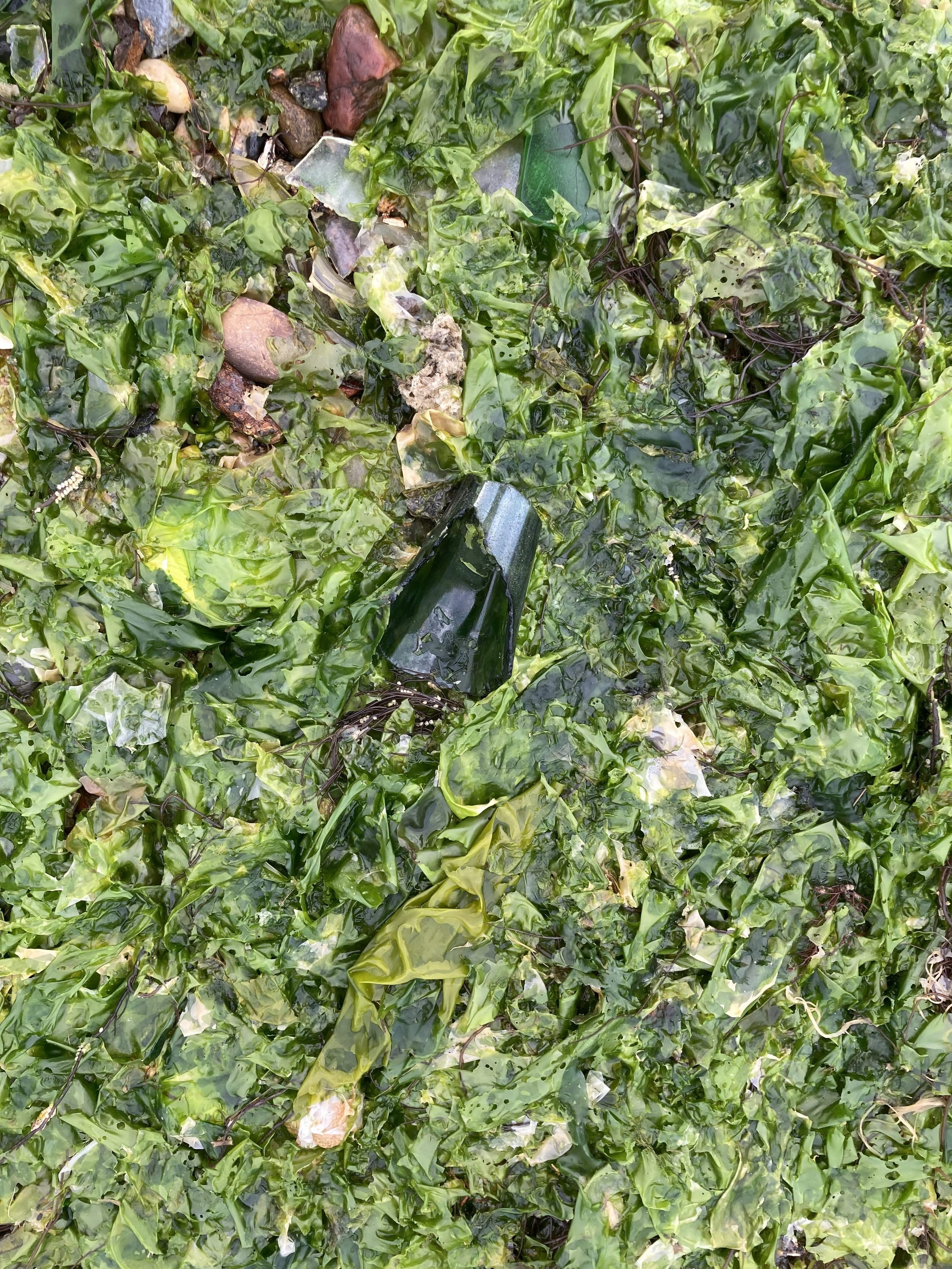
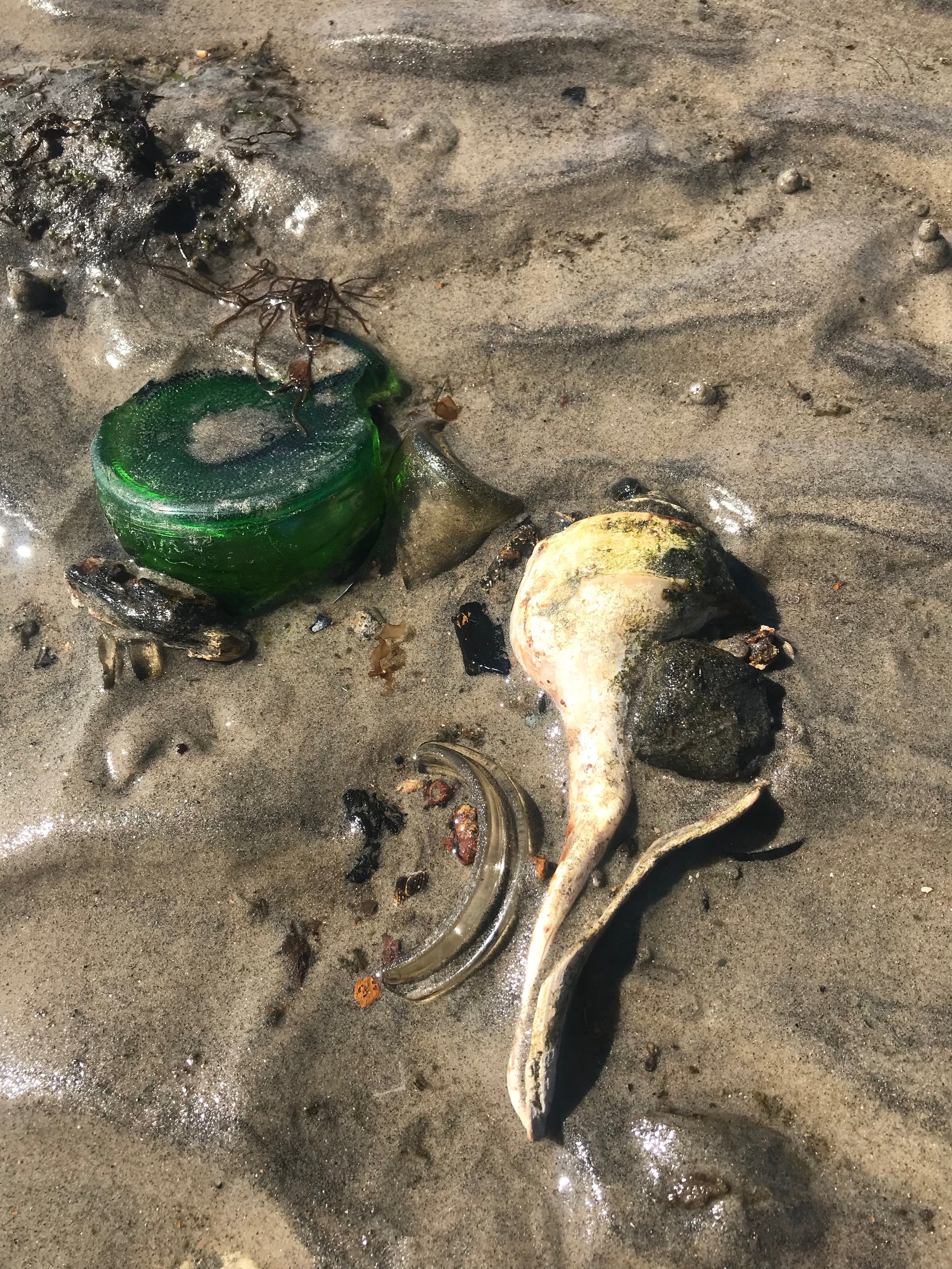


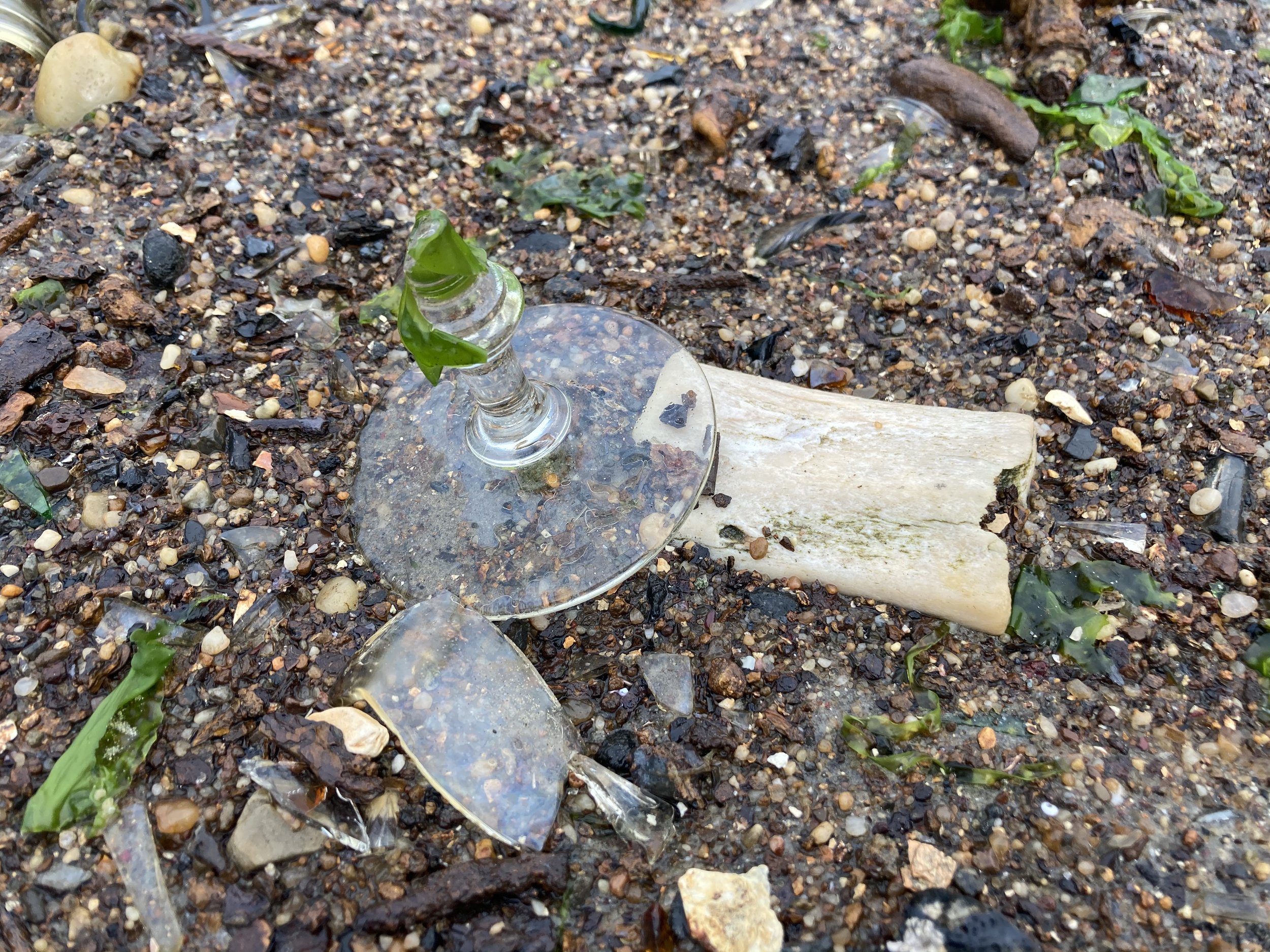
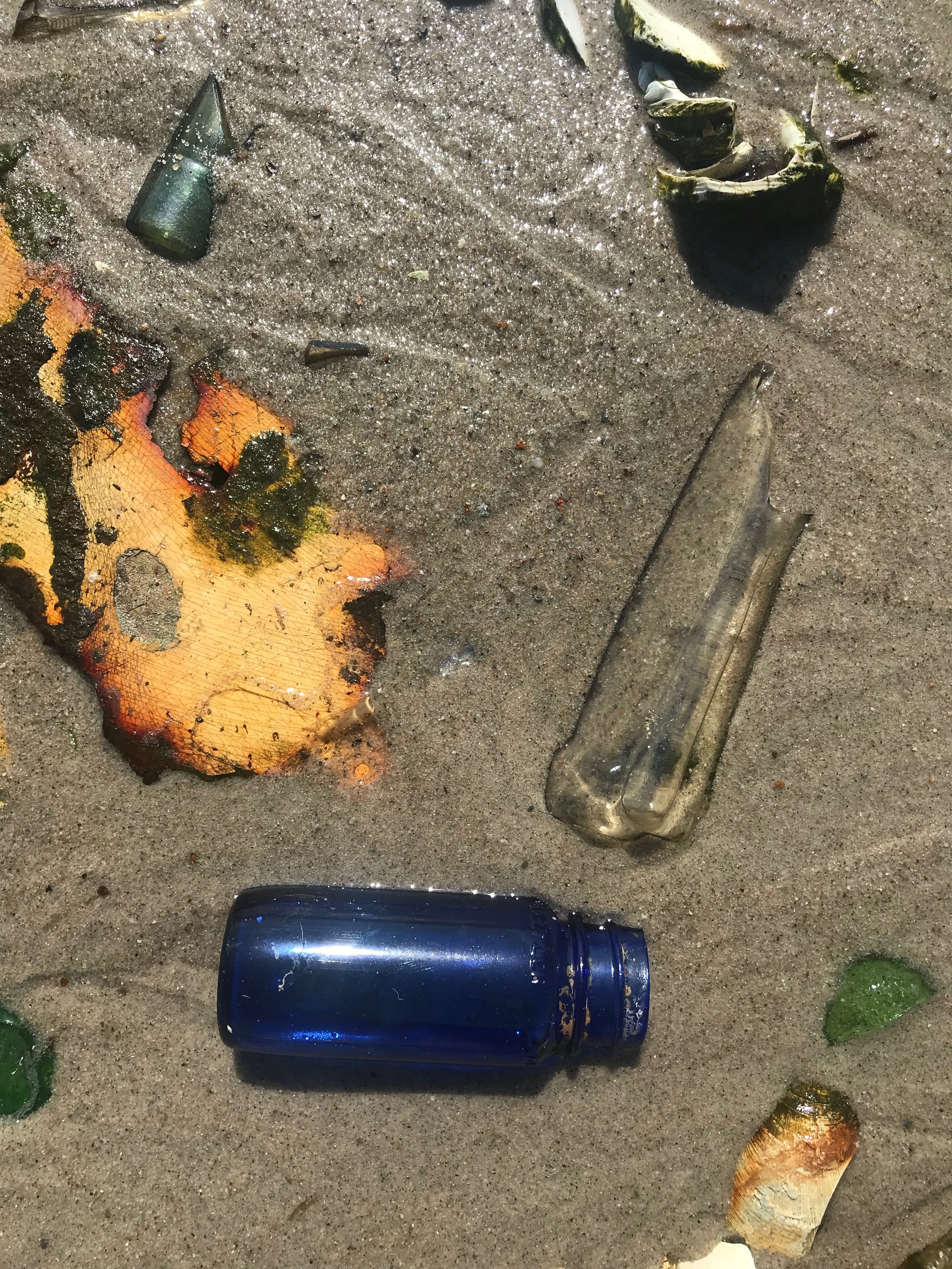
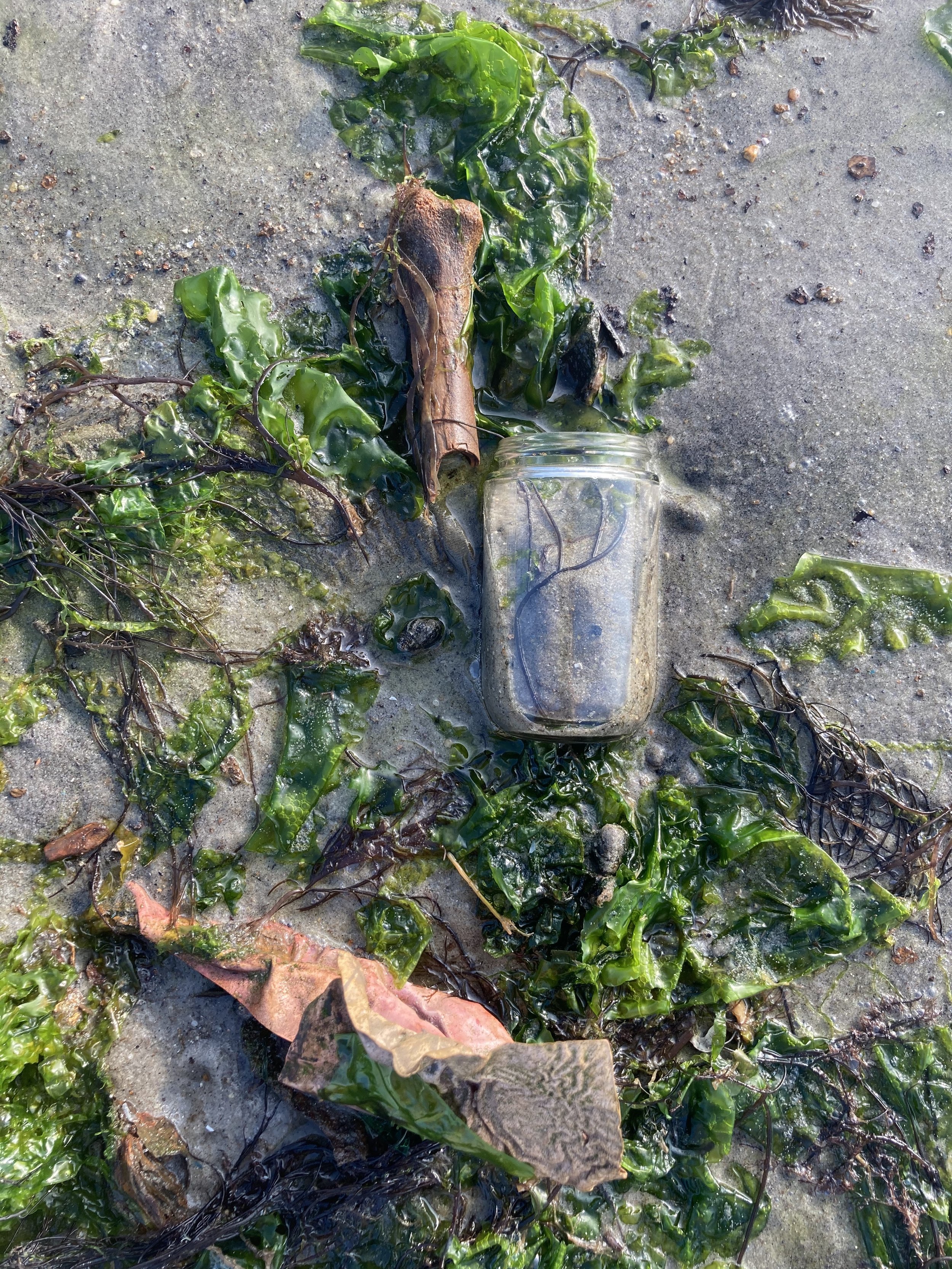
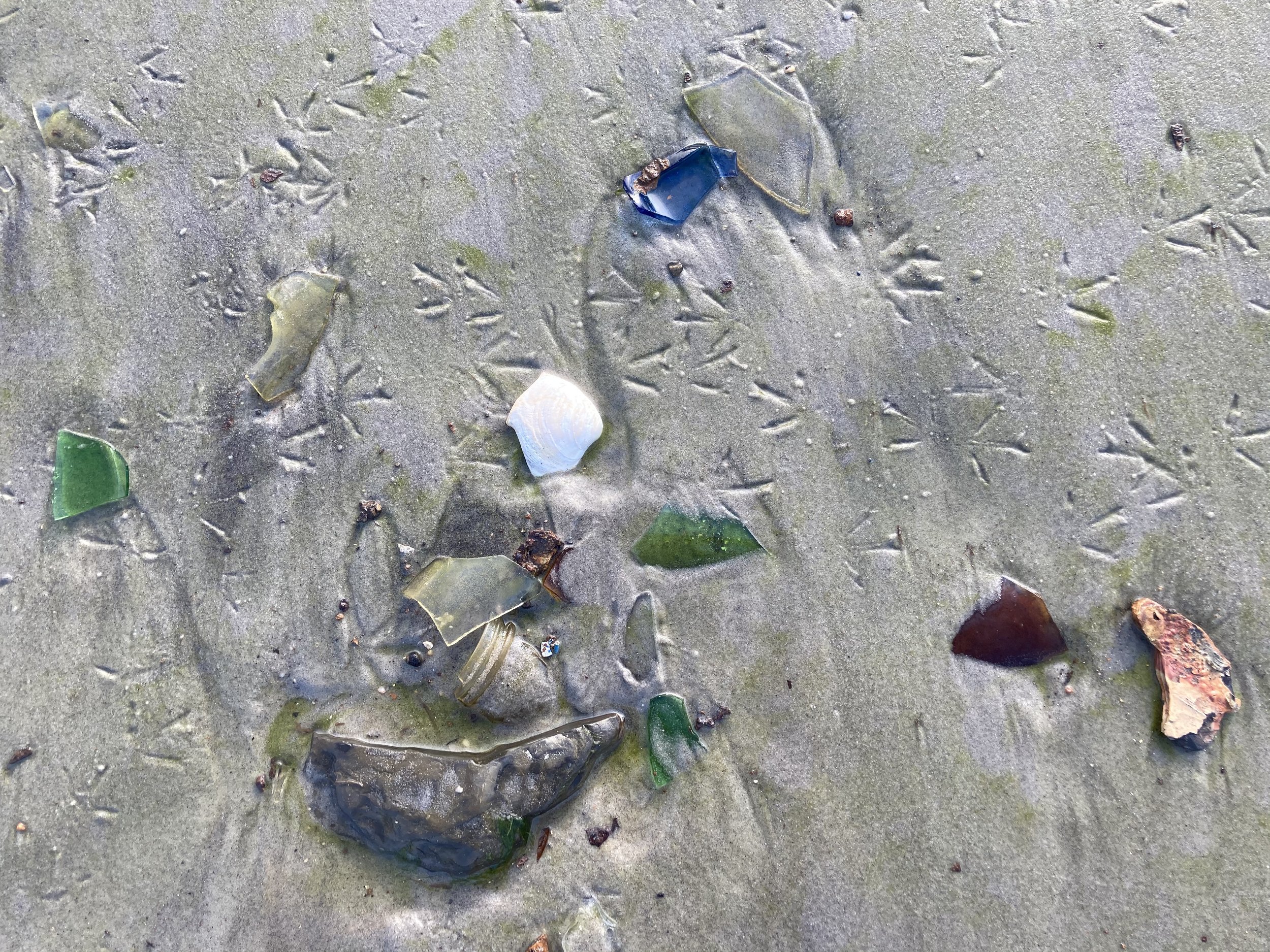
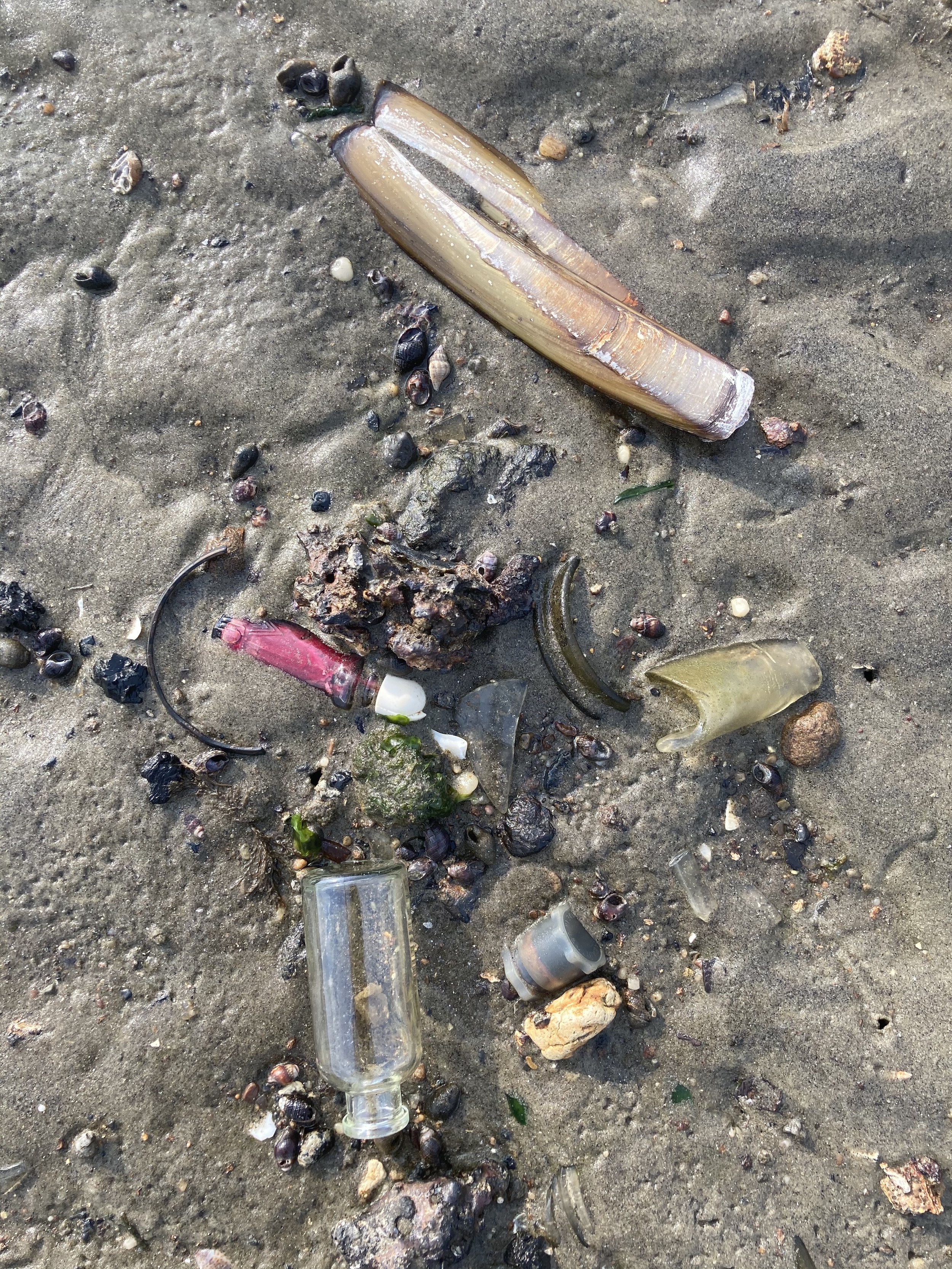
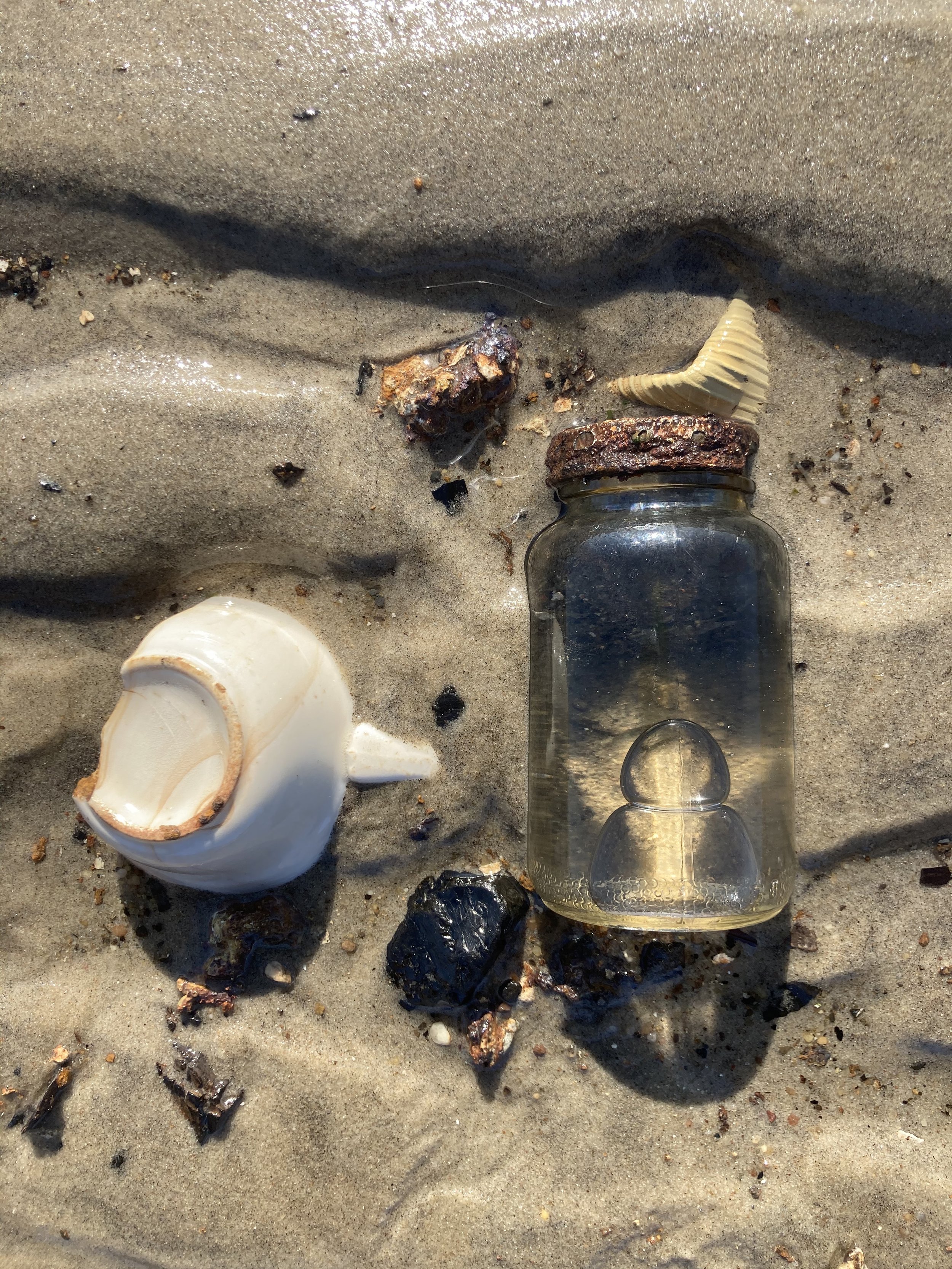
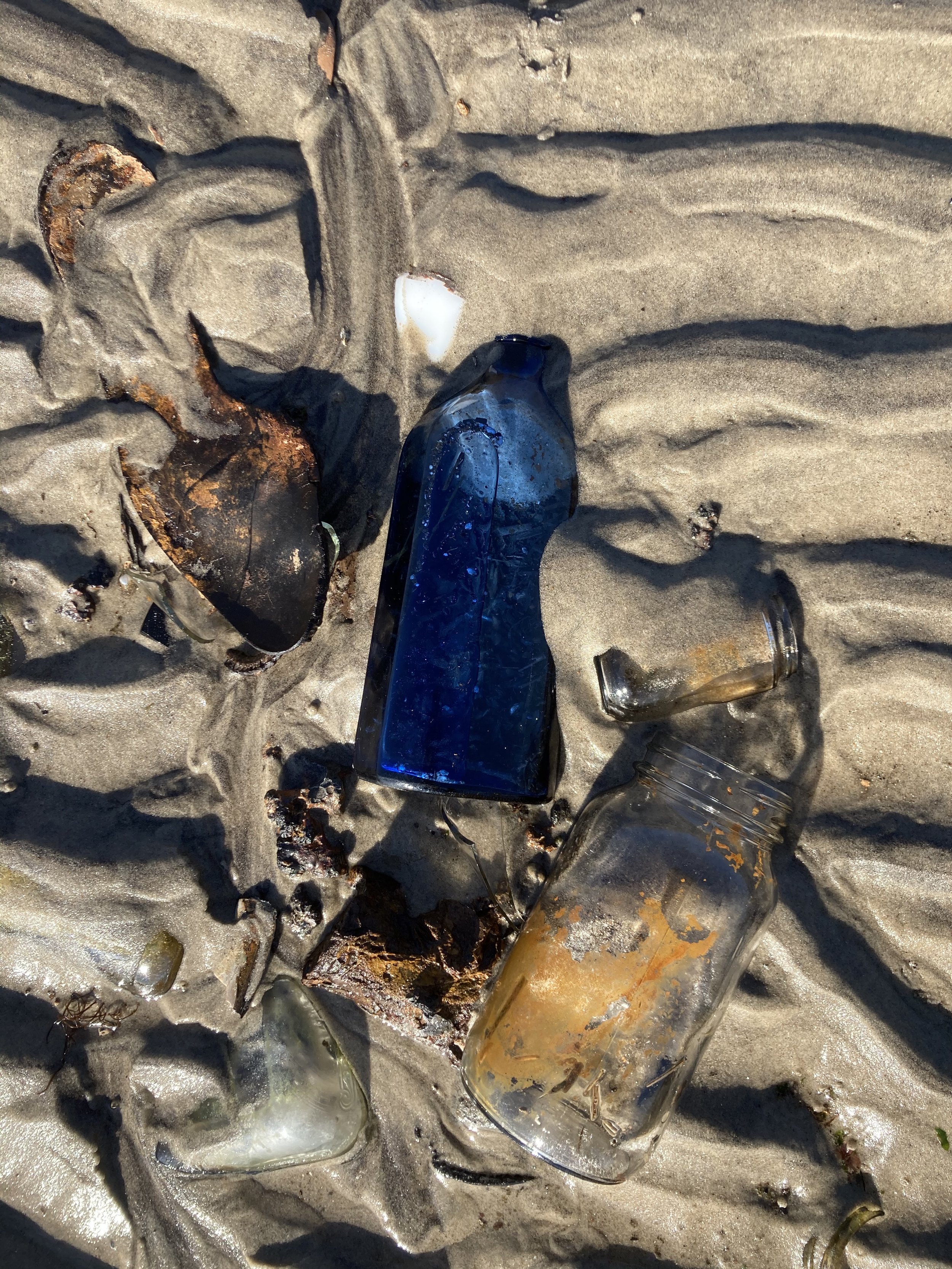


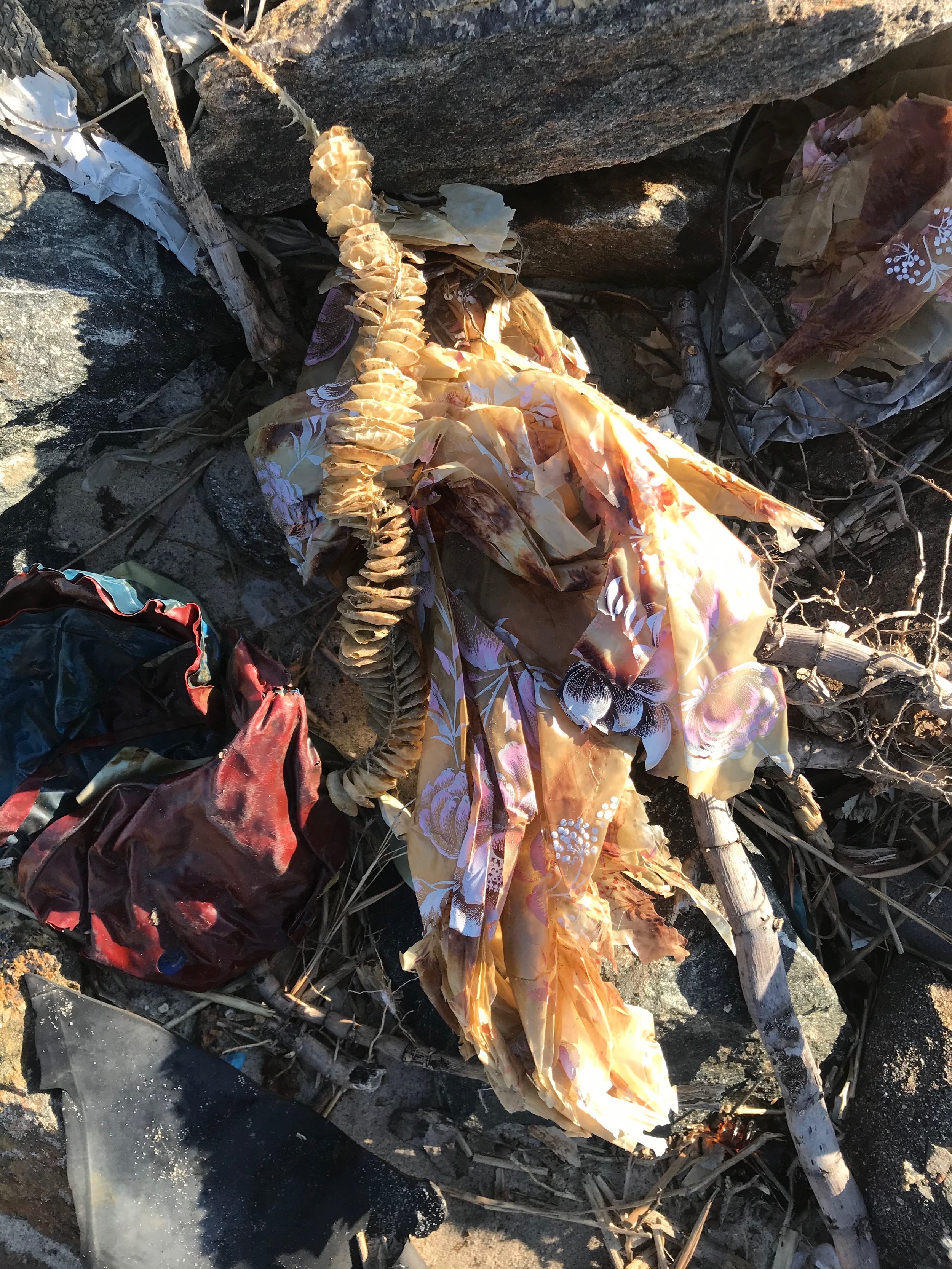

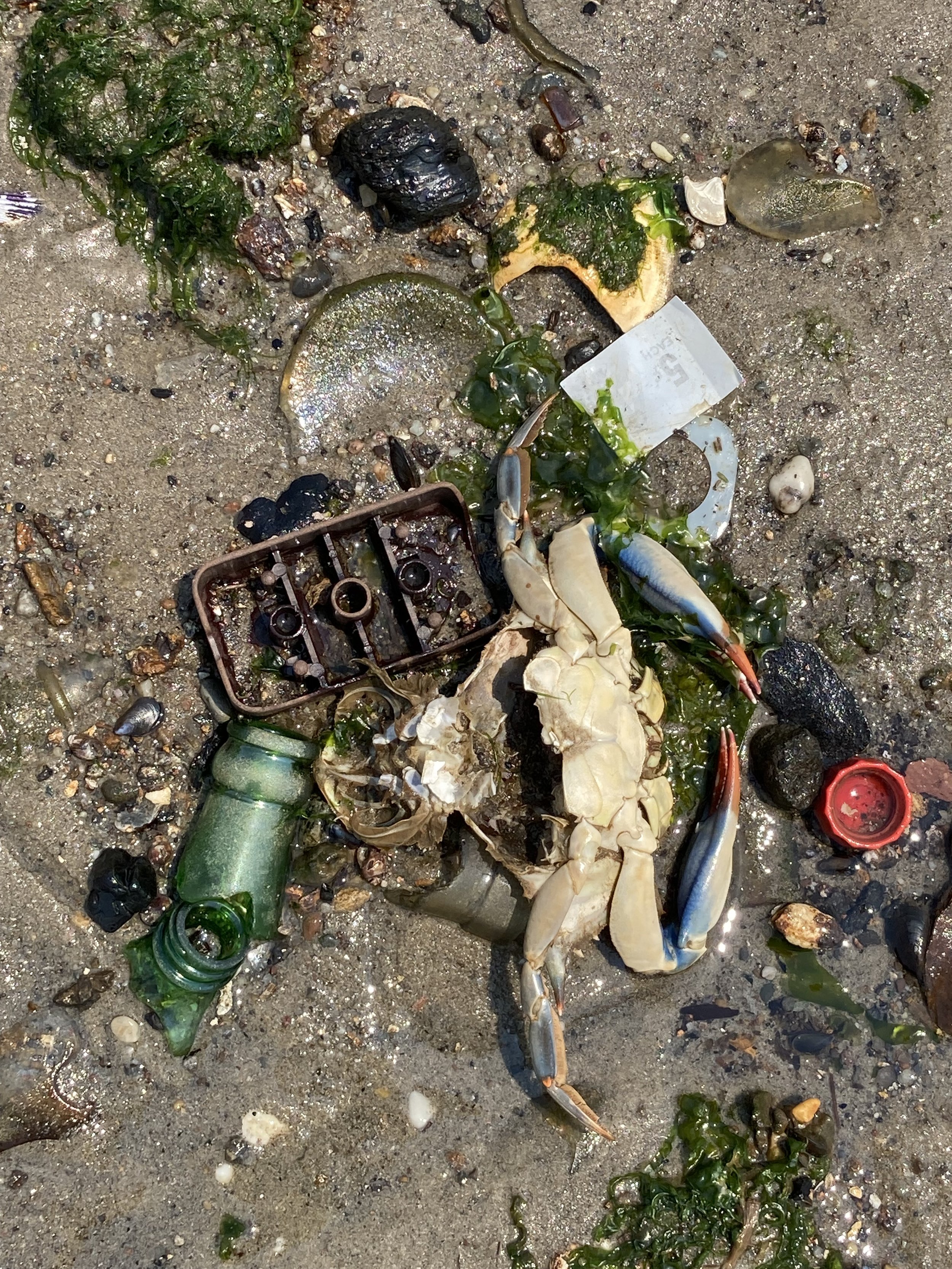
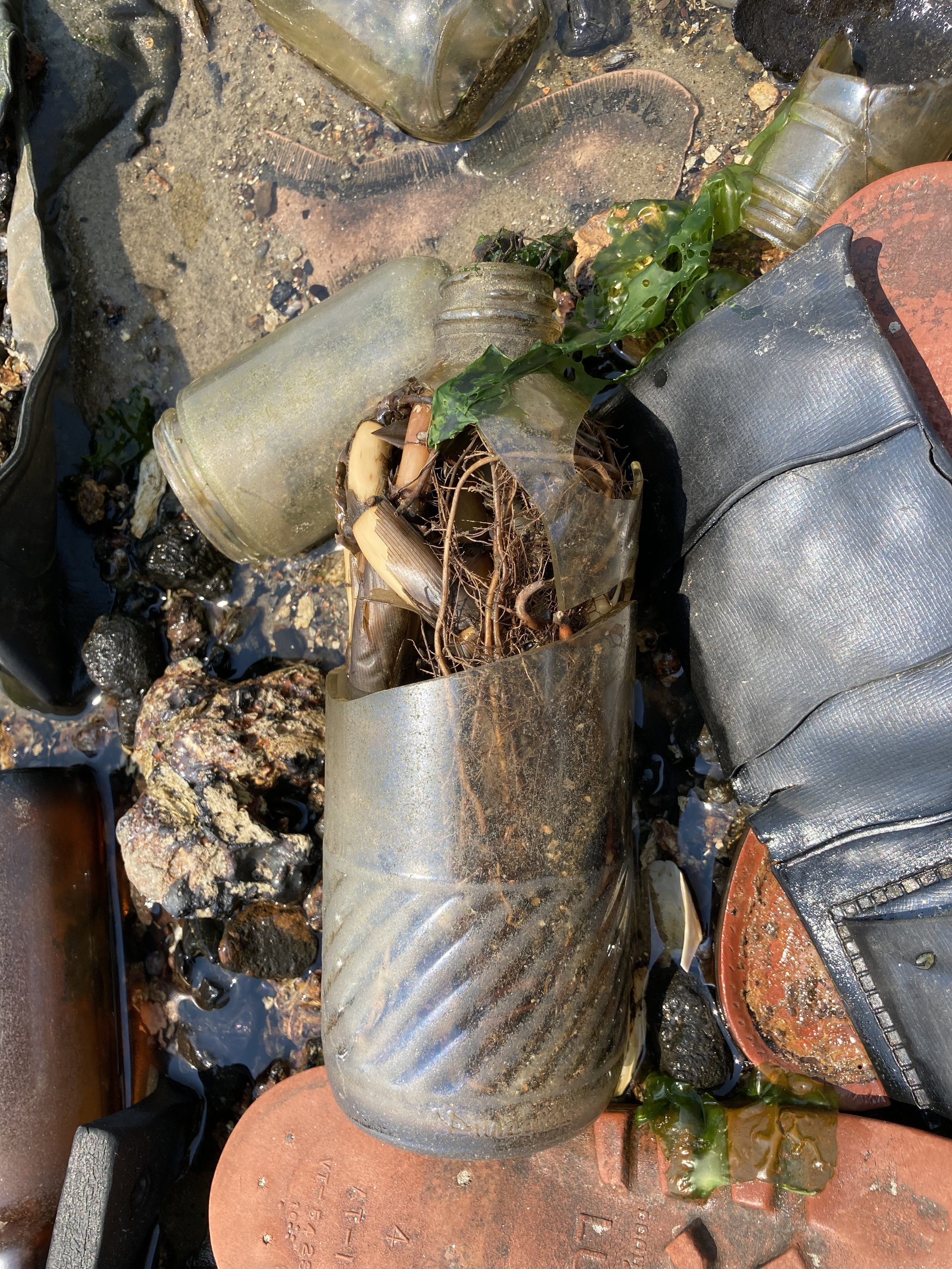
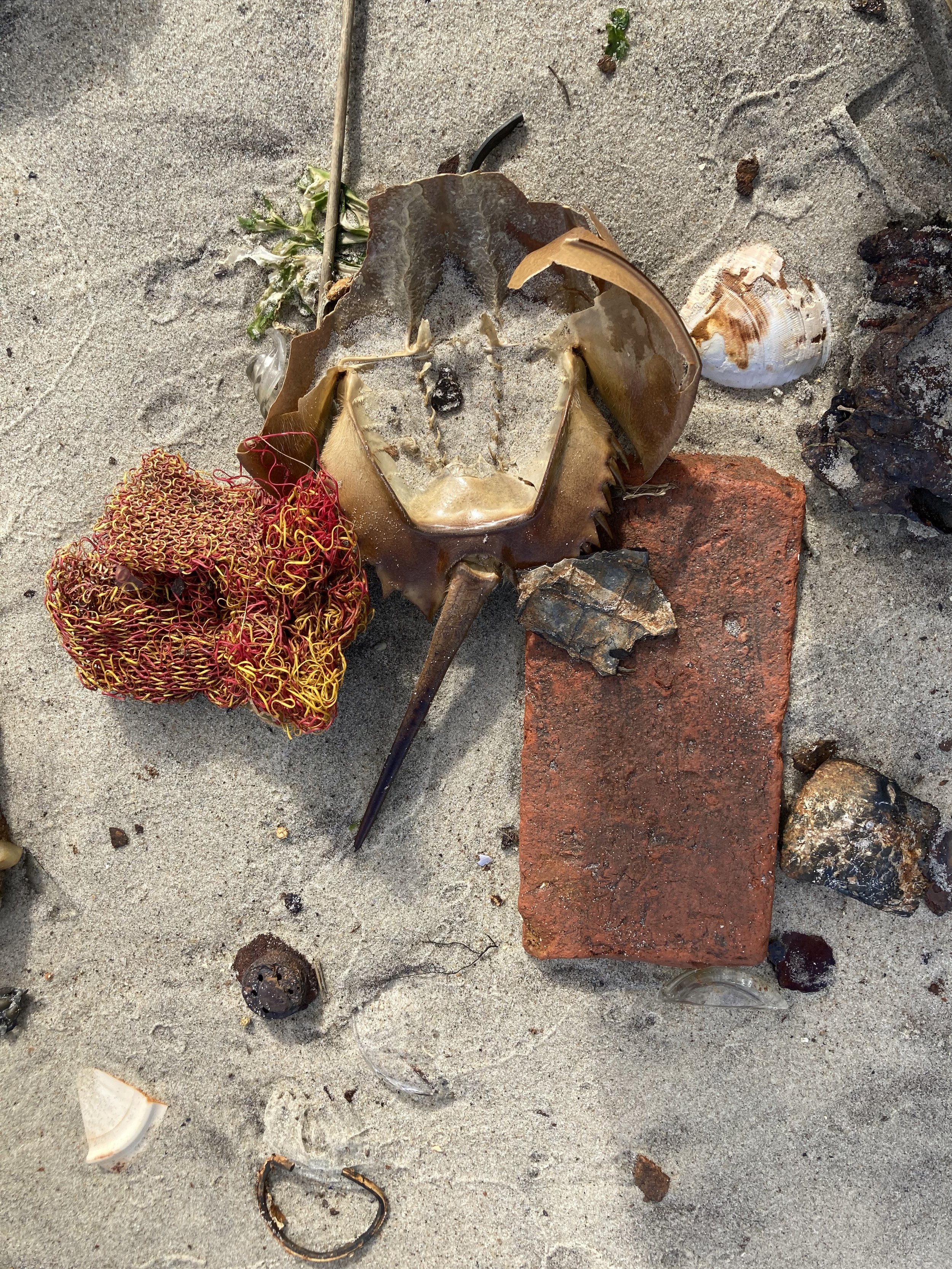
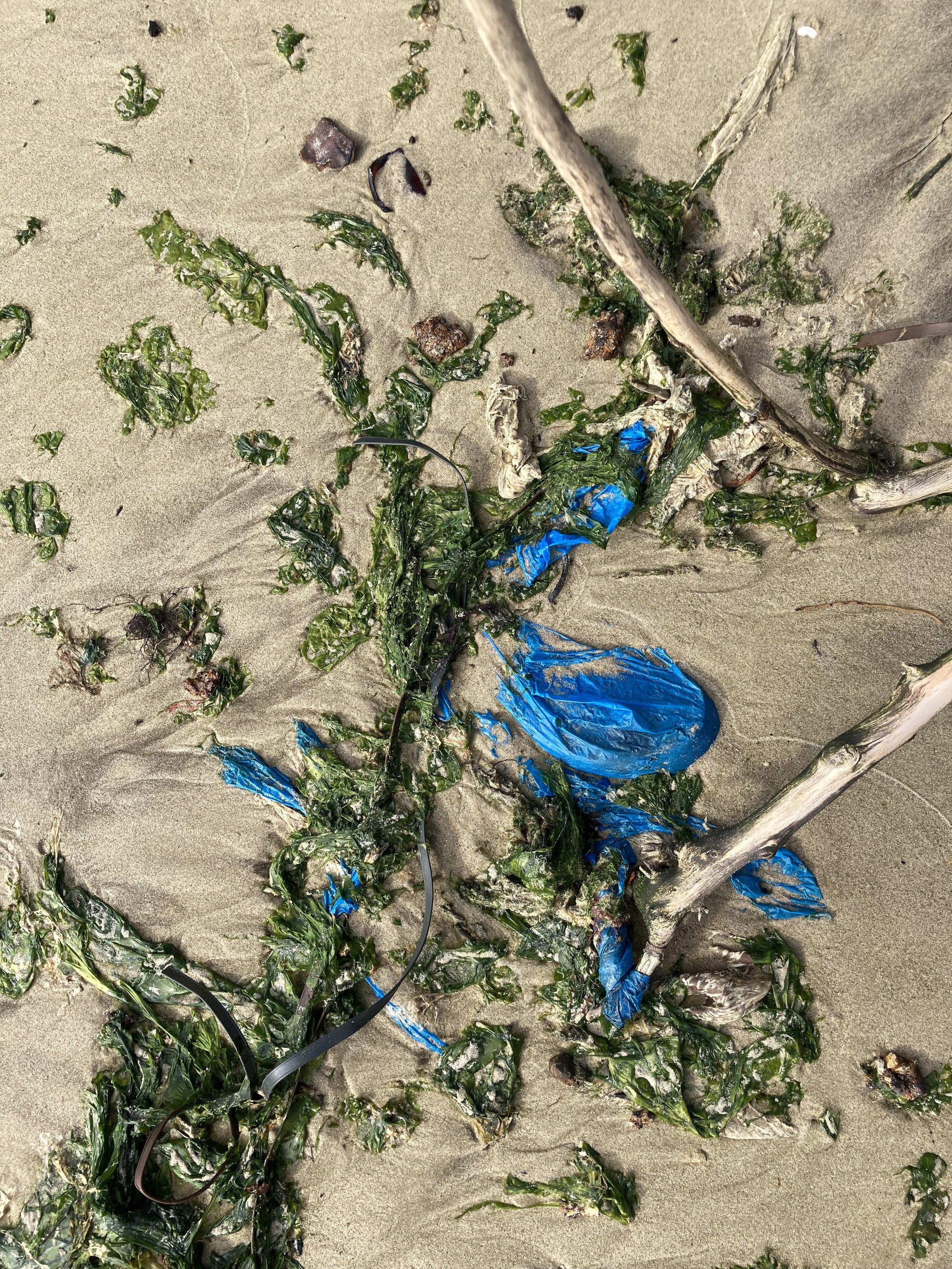
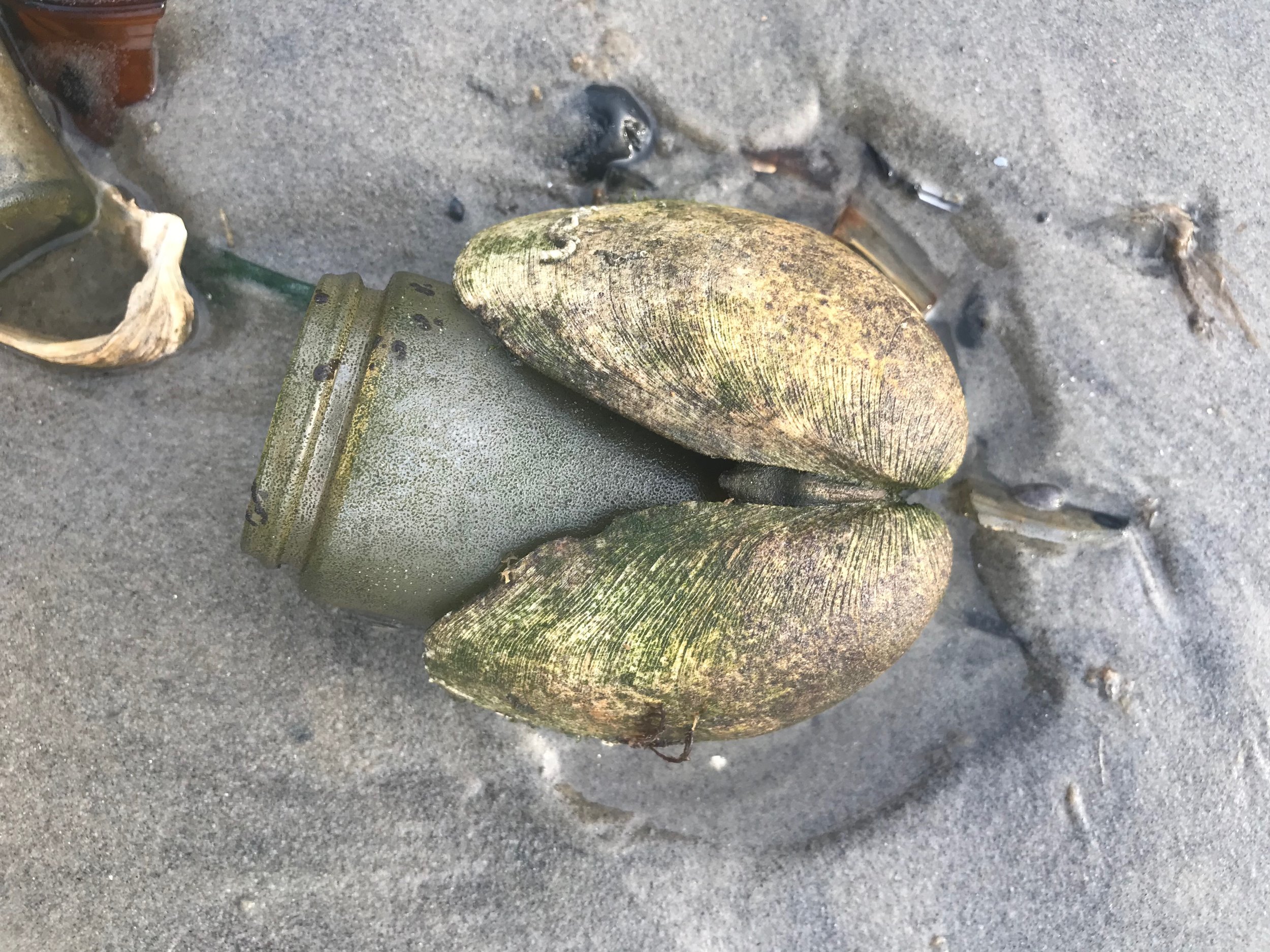
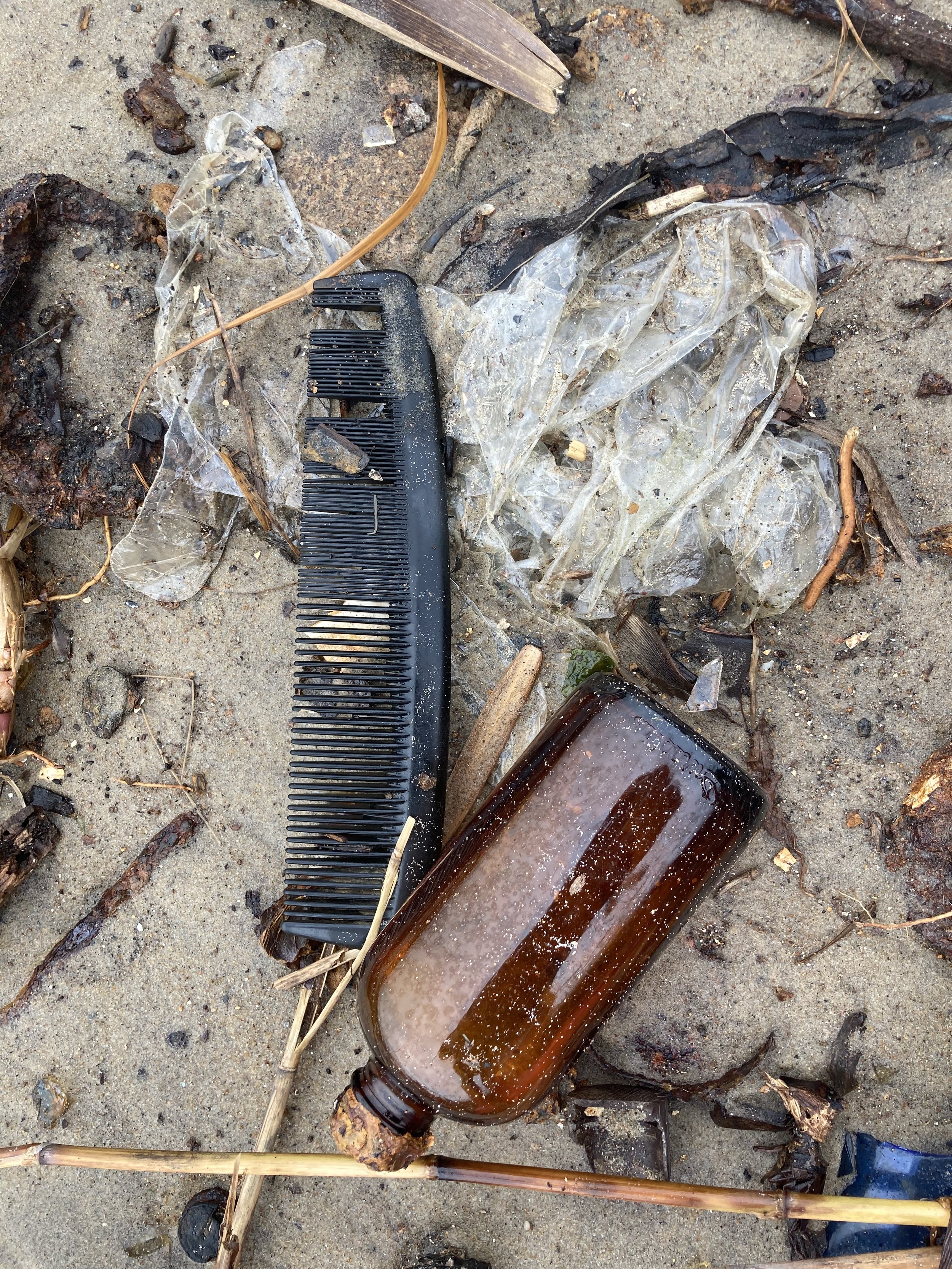
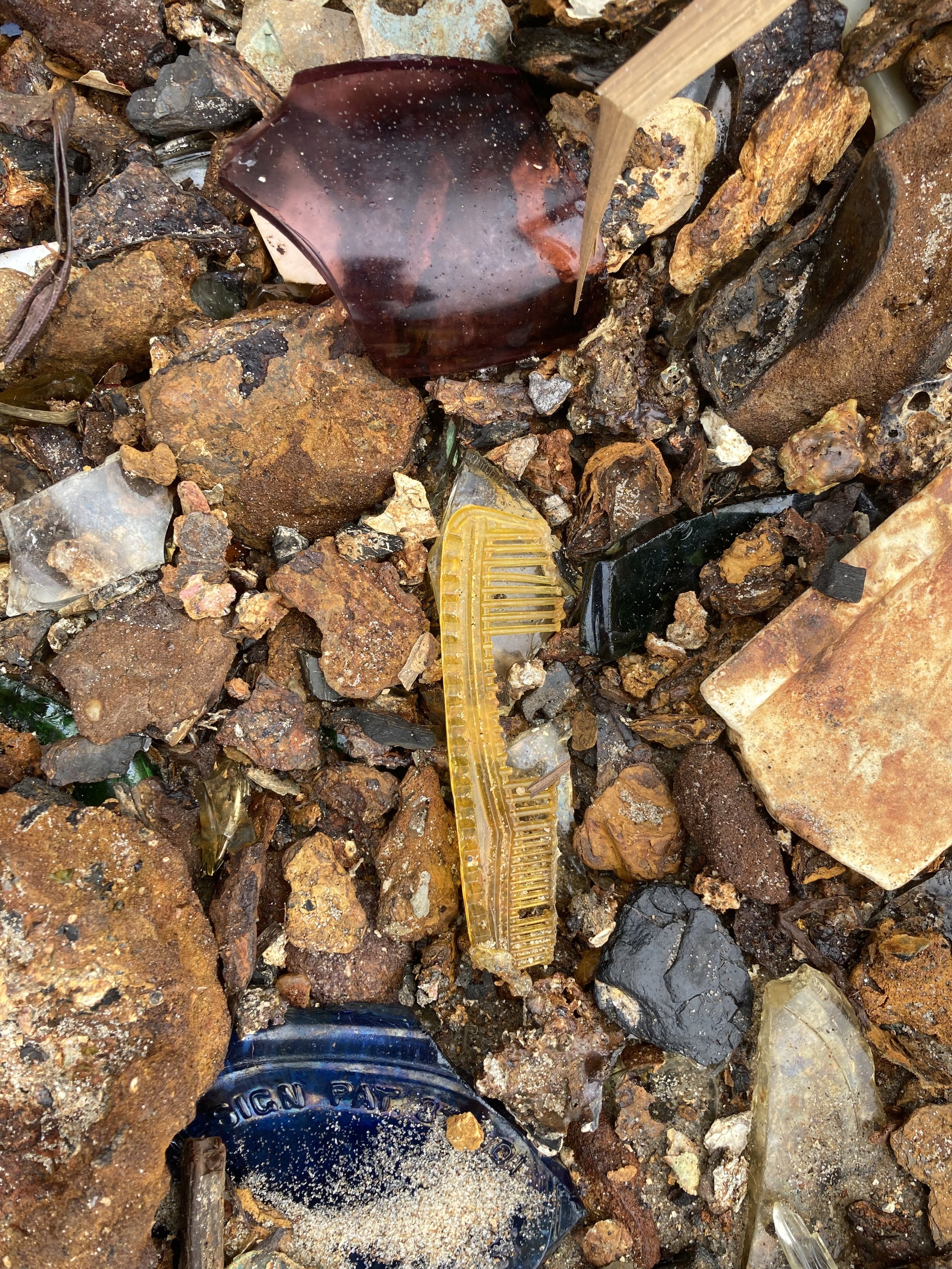
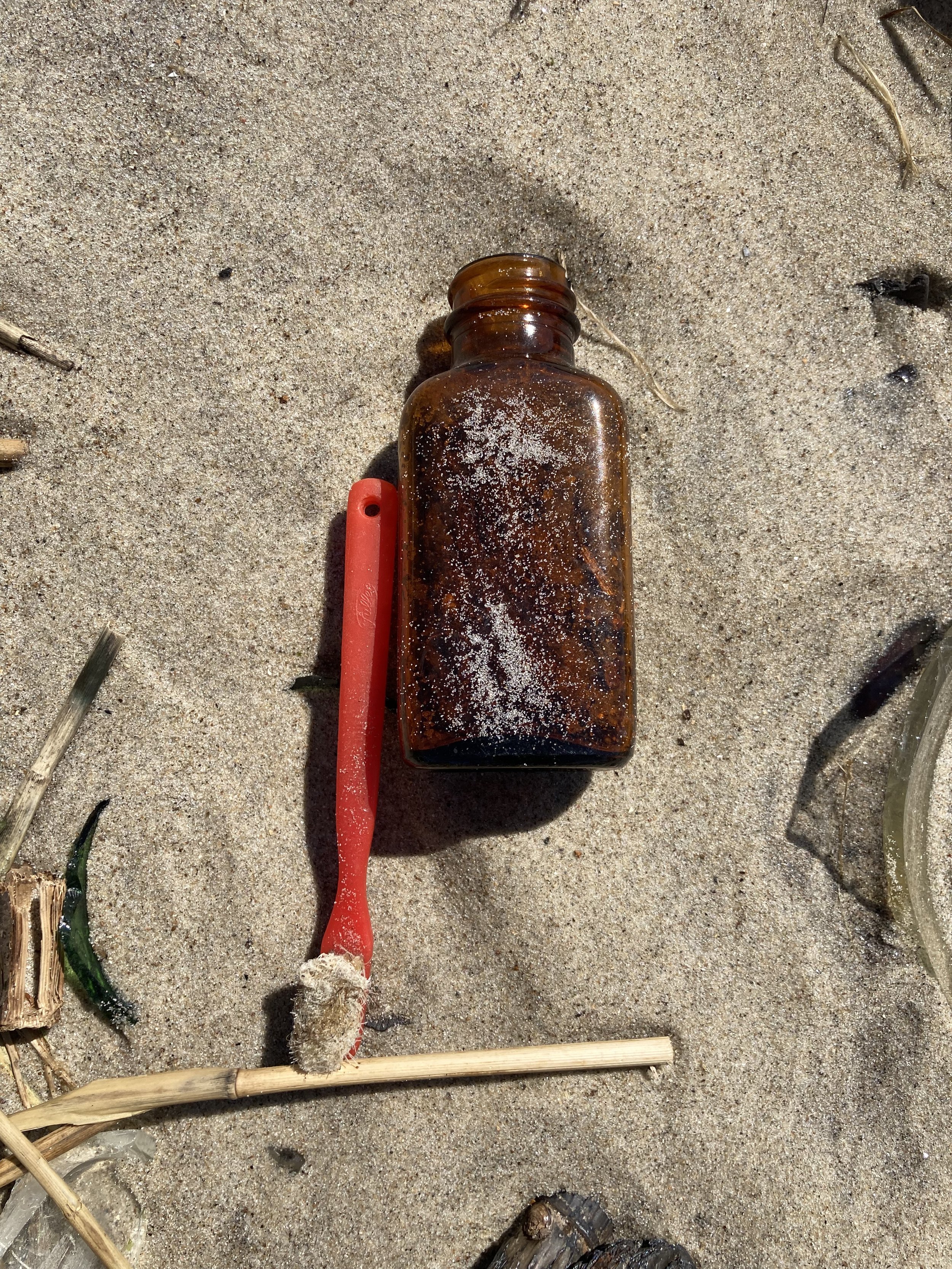

Mystery Objects
There are lots of objects on the beach that are quite difficult to identify. One type of mystery object is a sort of compressed pile of different materials, including metal foil, paper, material with circles punched out of it, and more, with various natural organisms colonizing the outside. These are obviously not normal piles of household garbage. Perhaps they come from a factory. Watching these piles emerge from the landfill under the sand, and begin to host plants and algae, is fascinating.

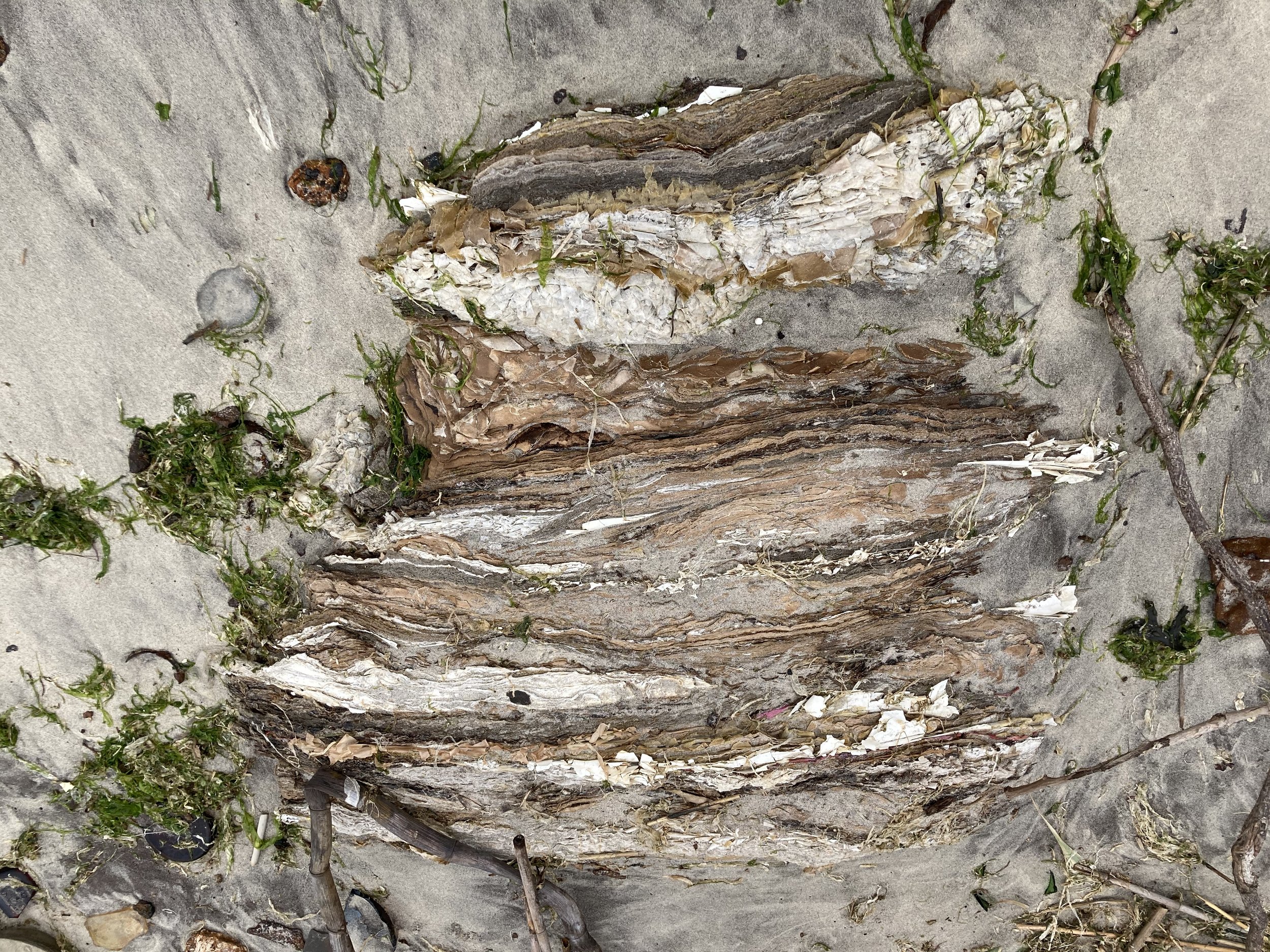
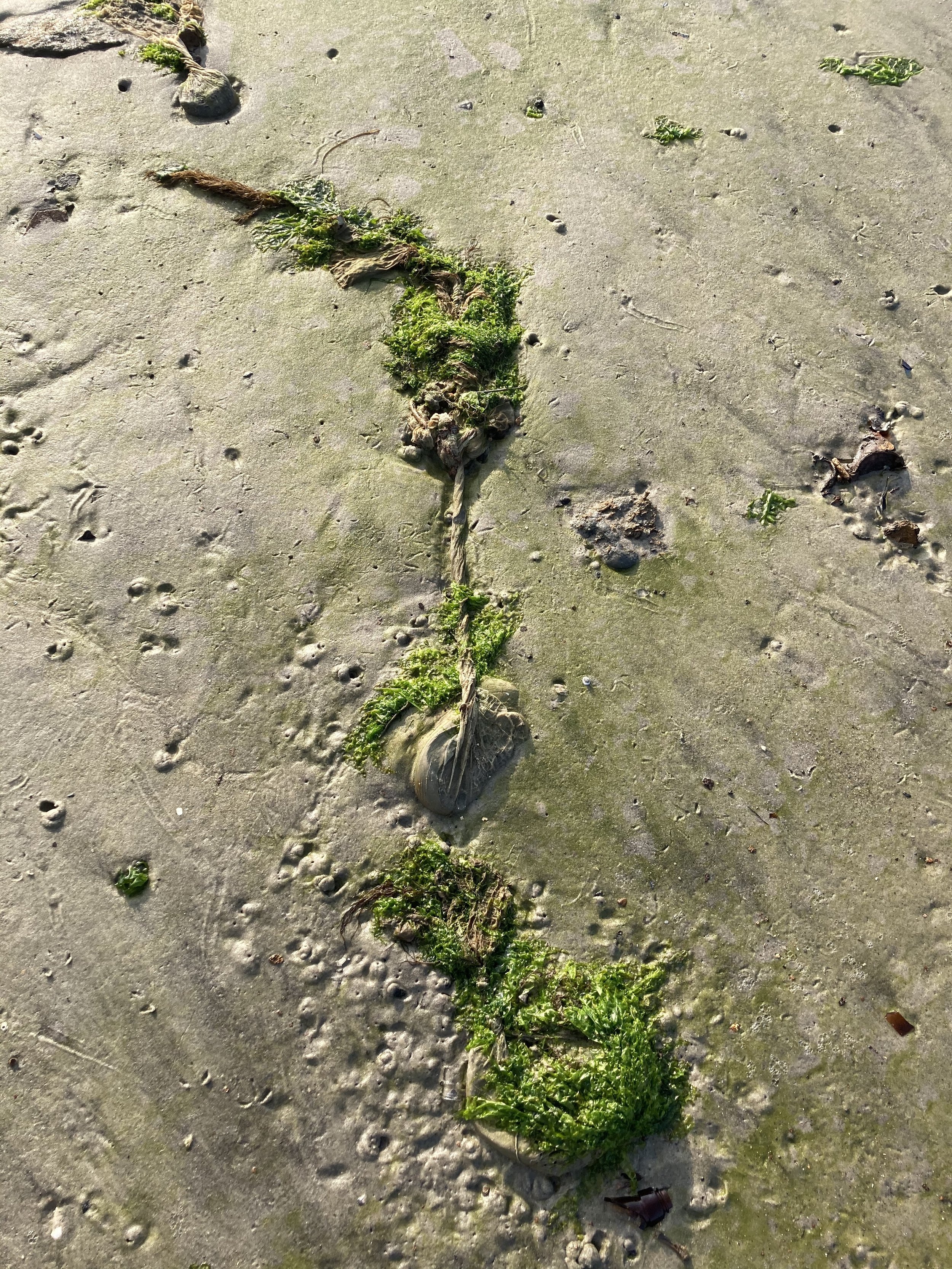
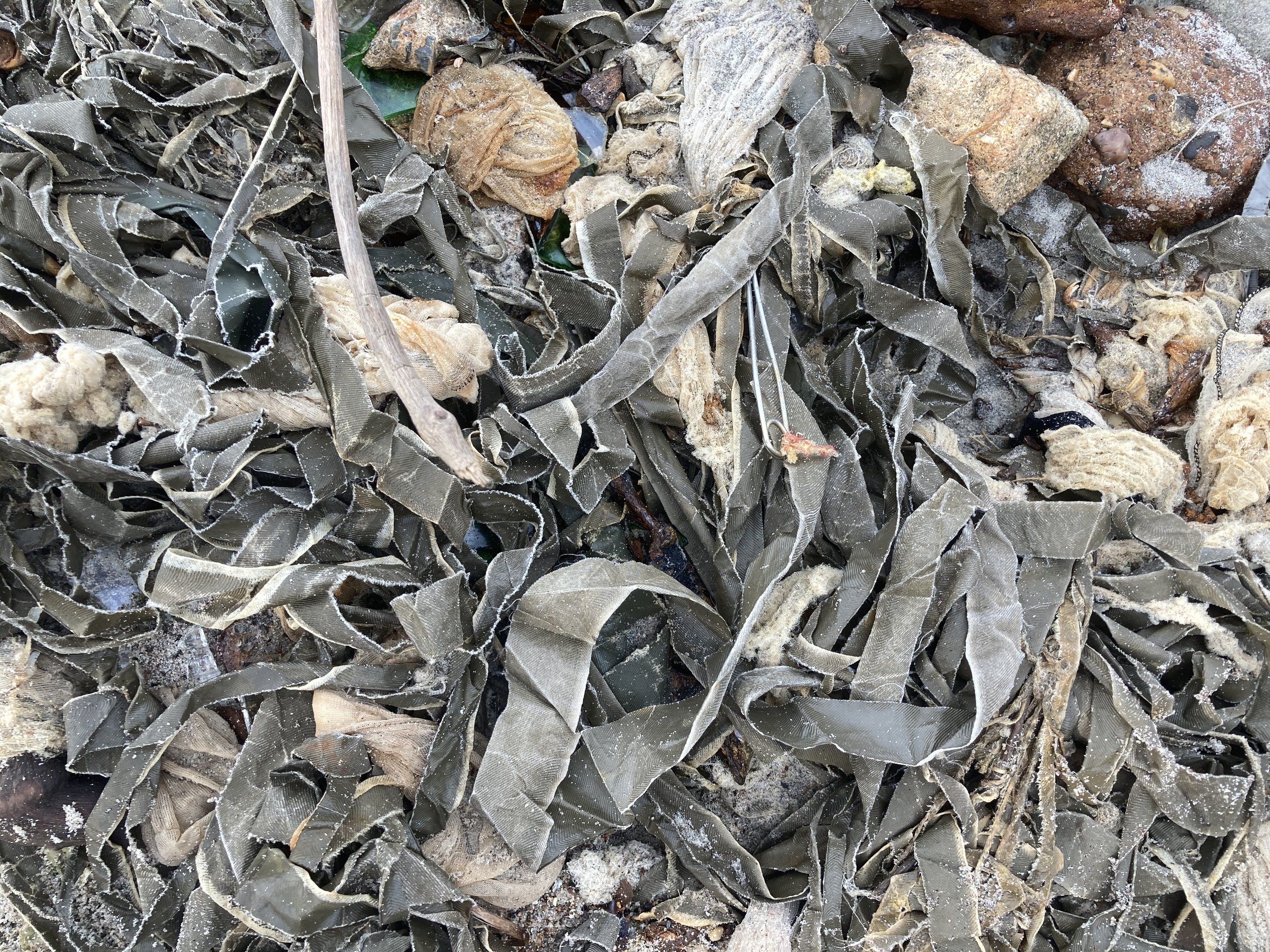

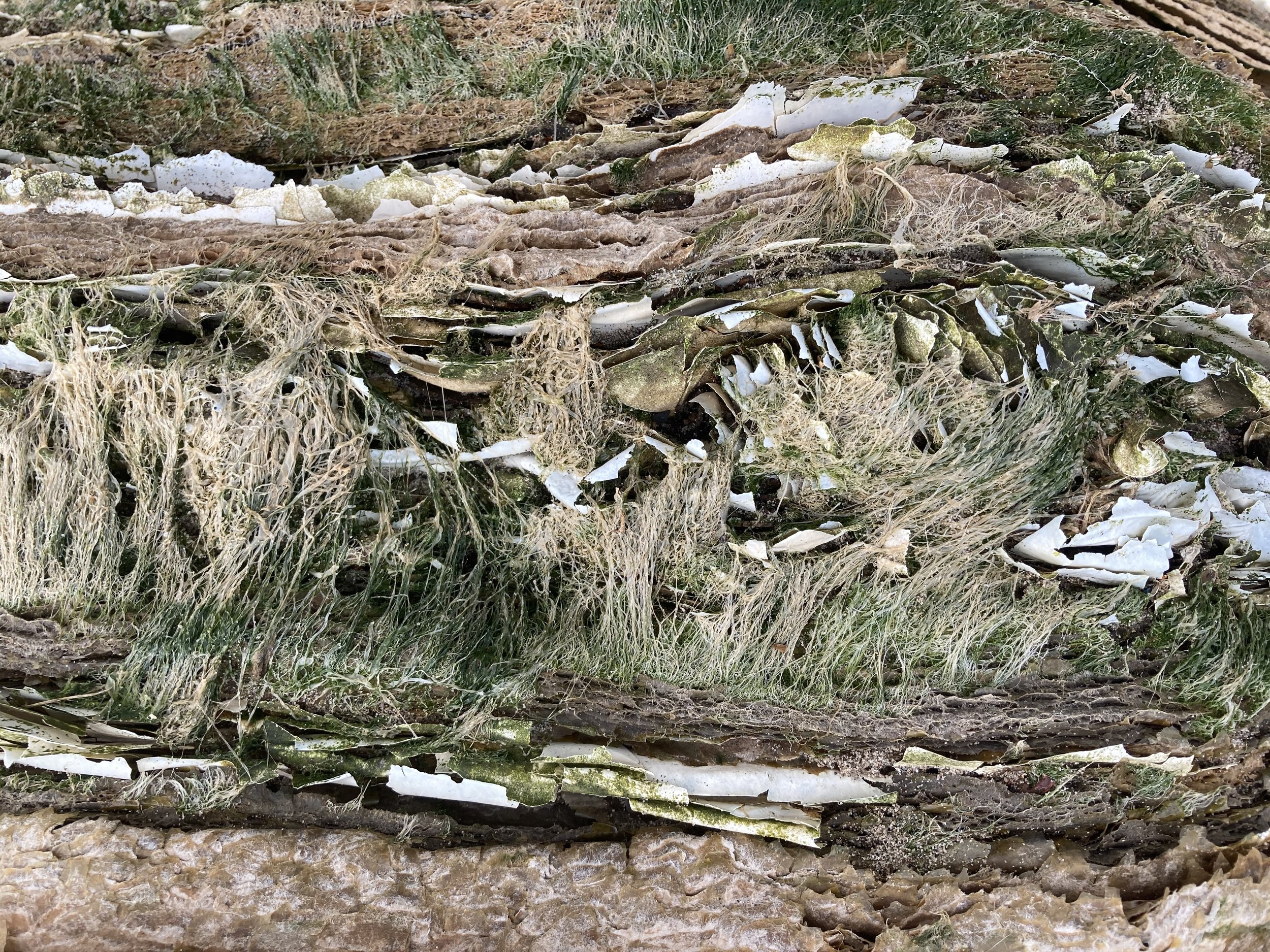
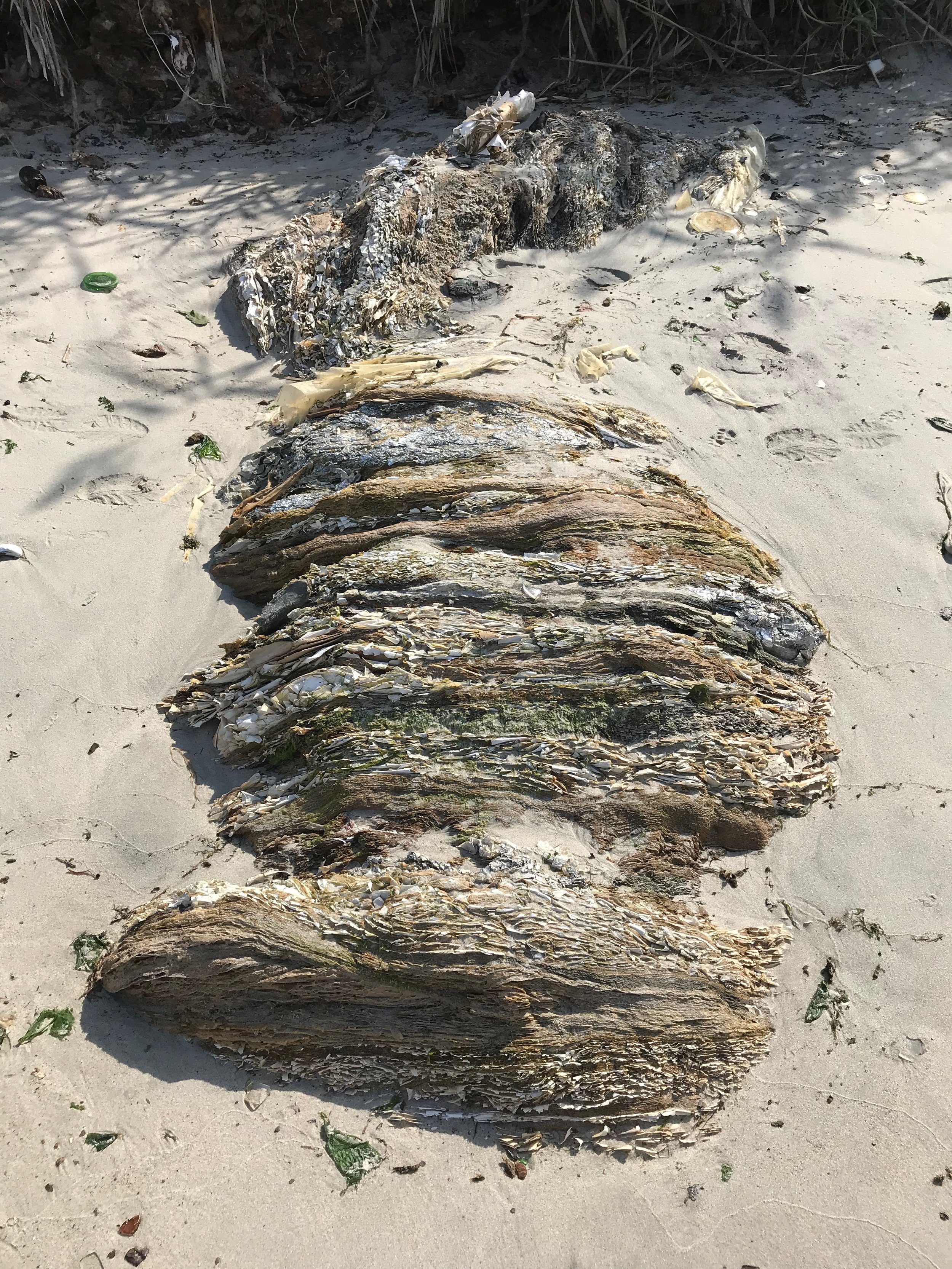
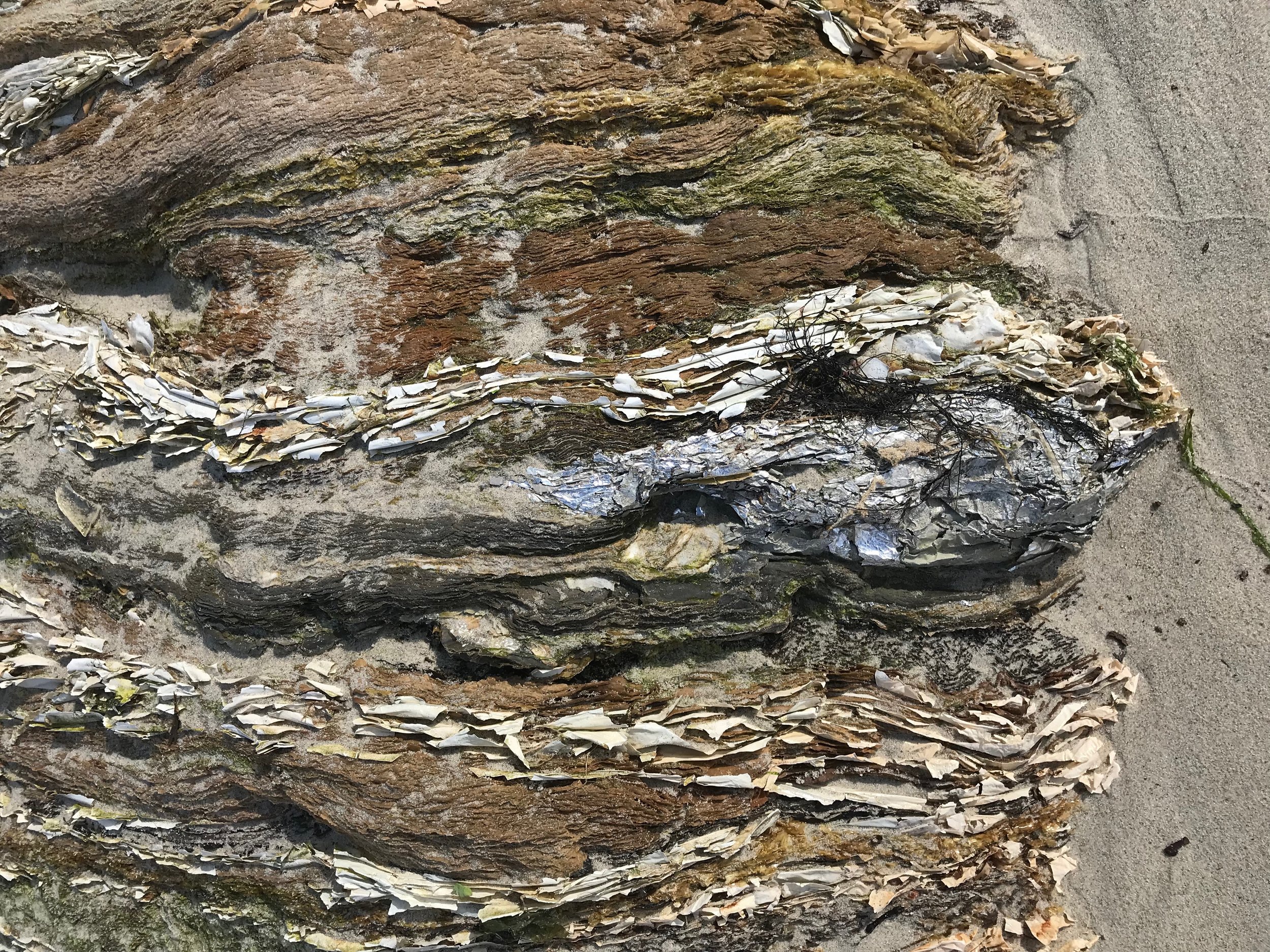
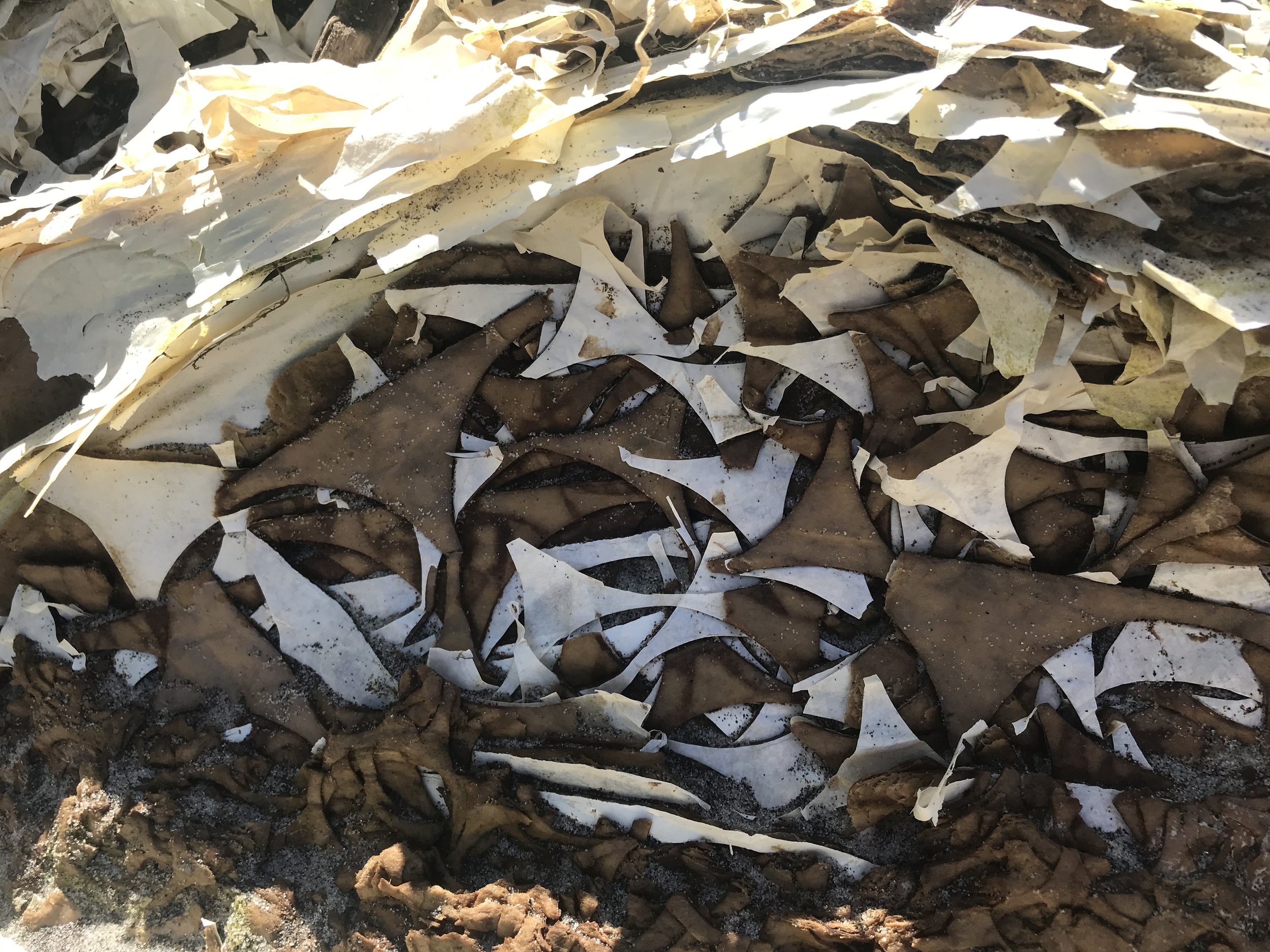
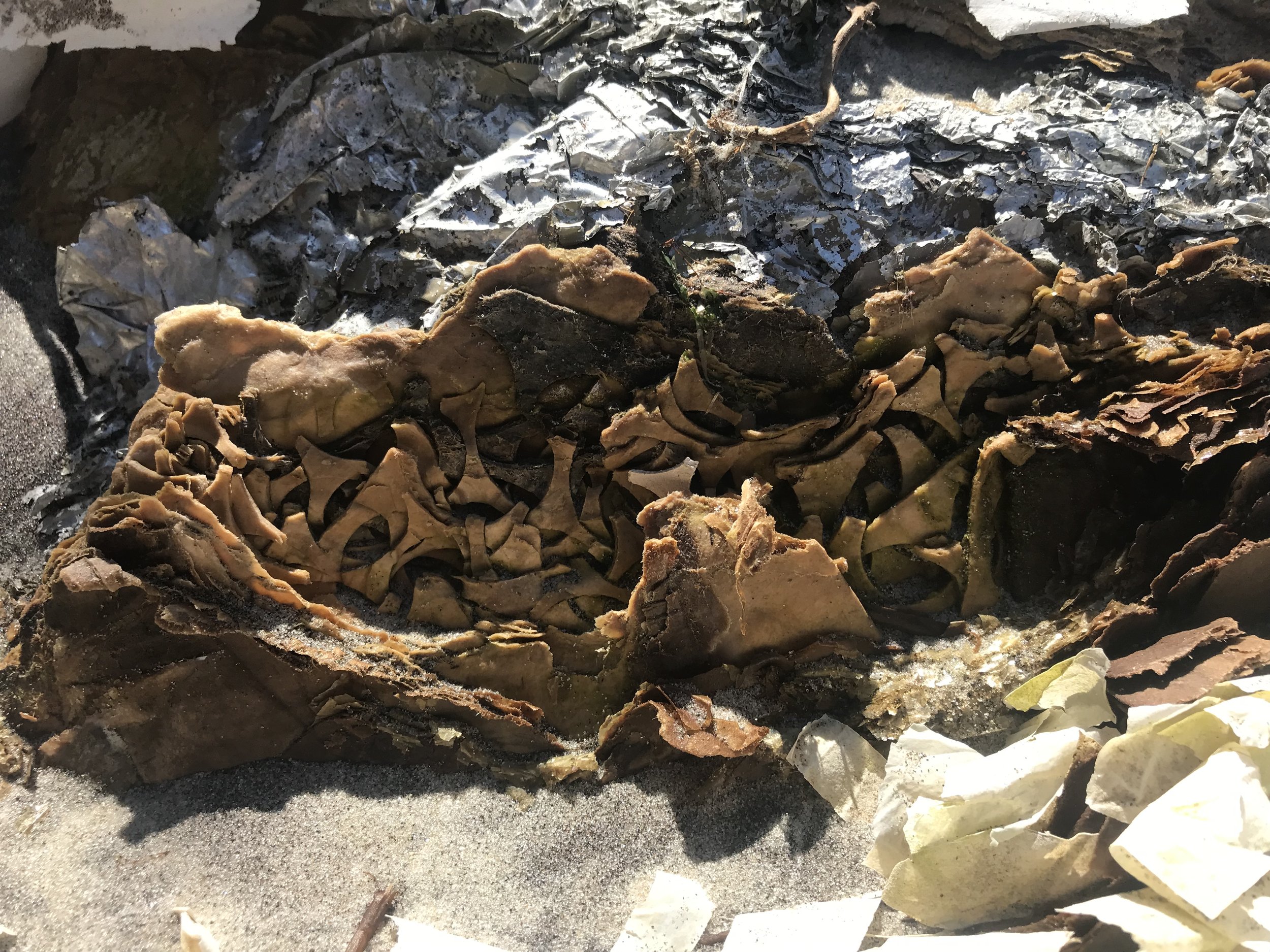
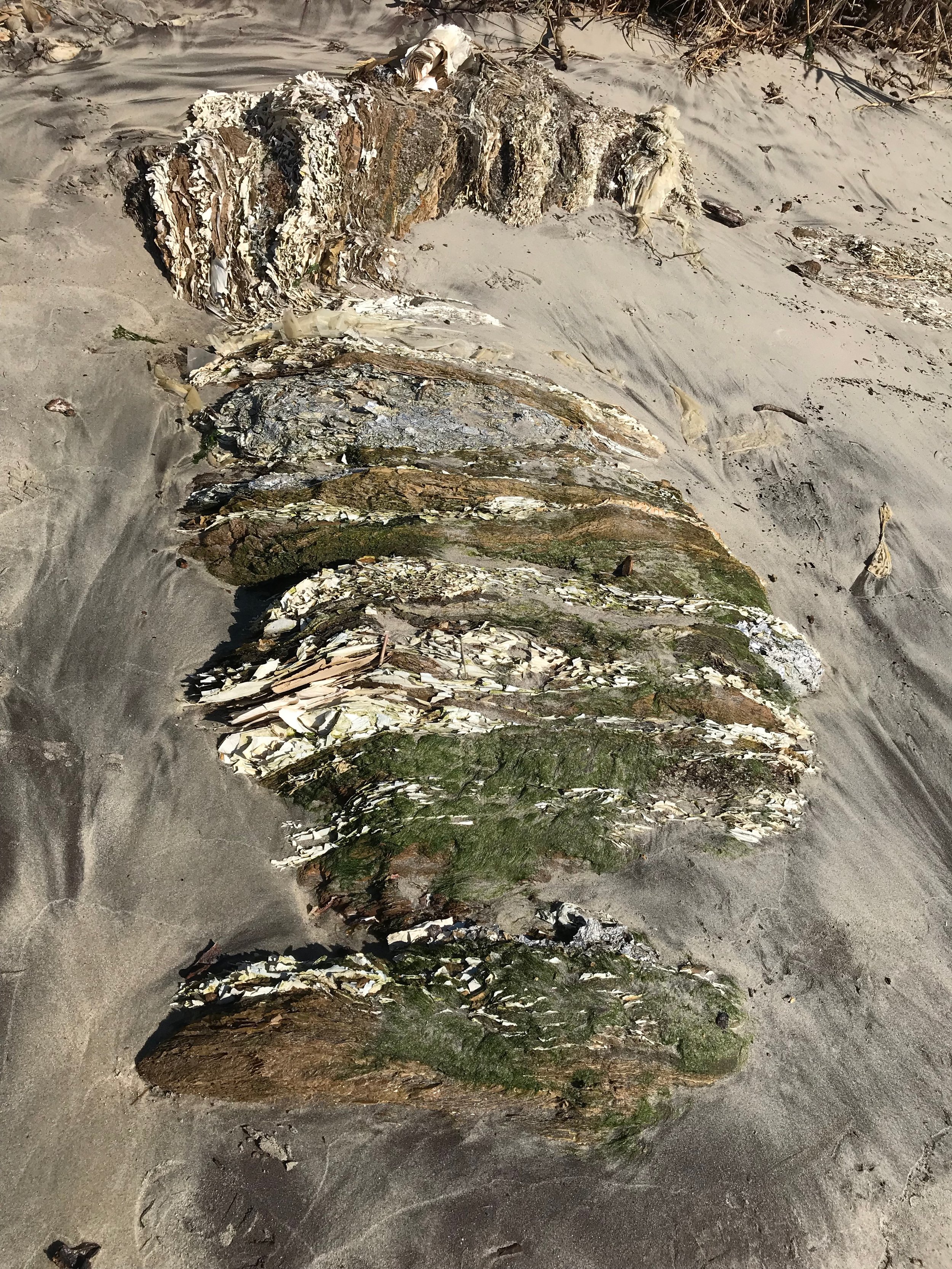
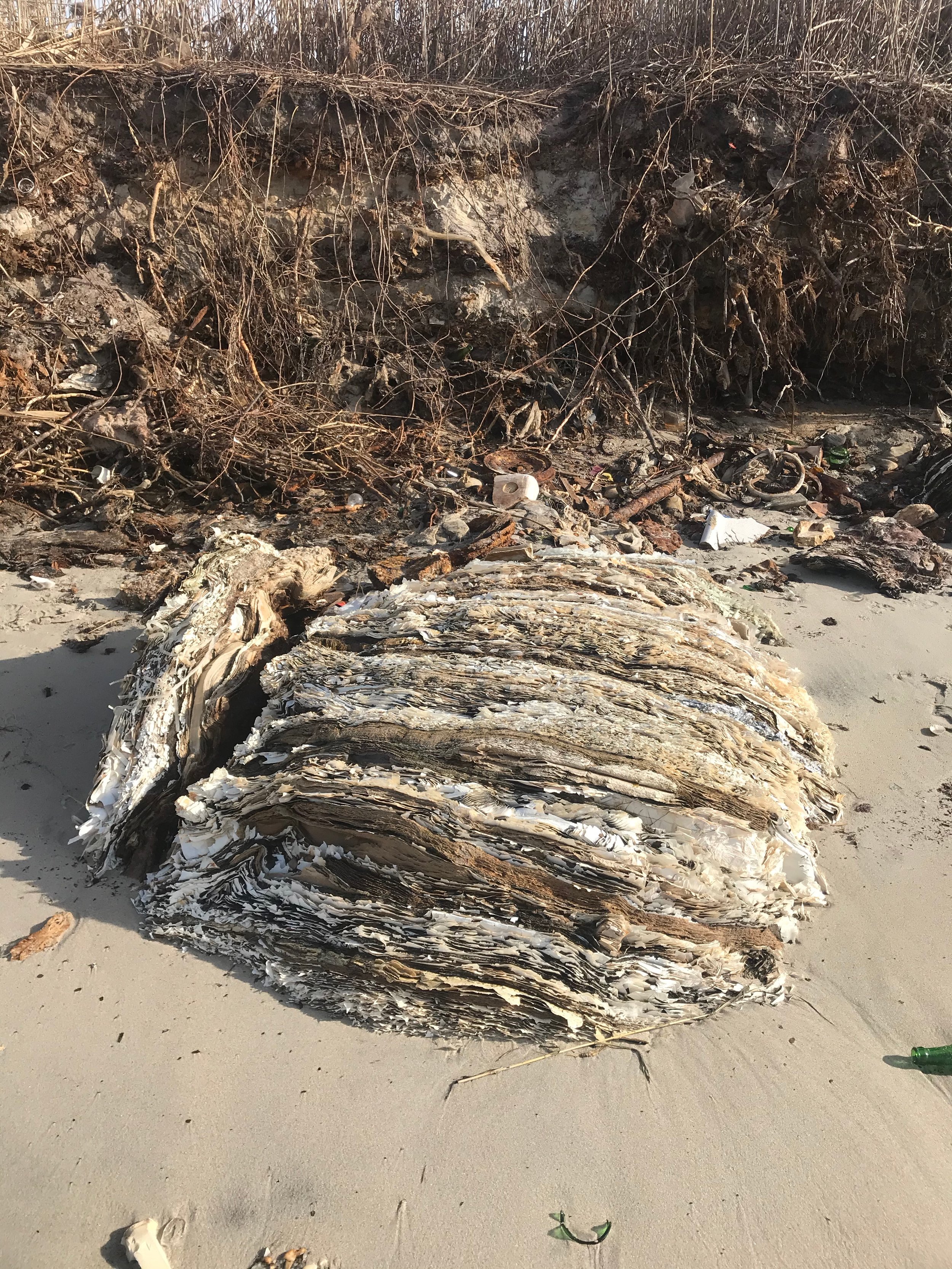

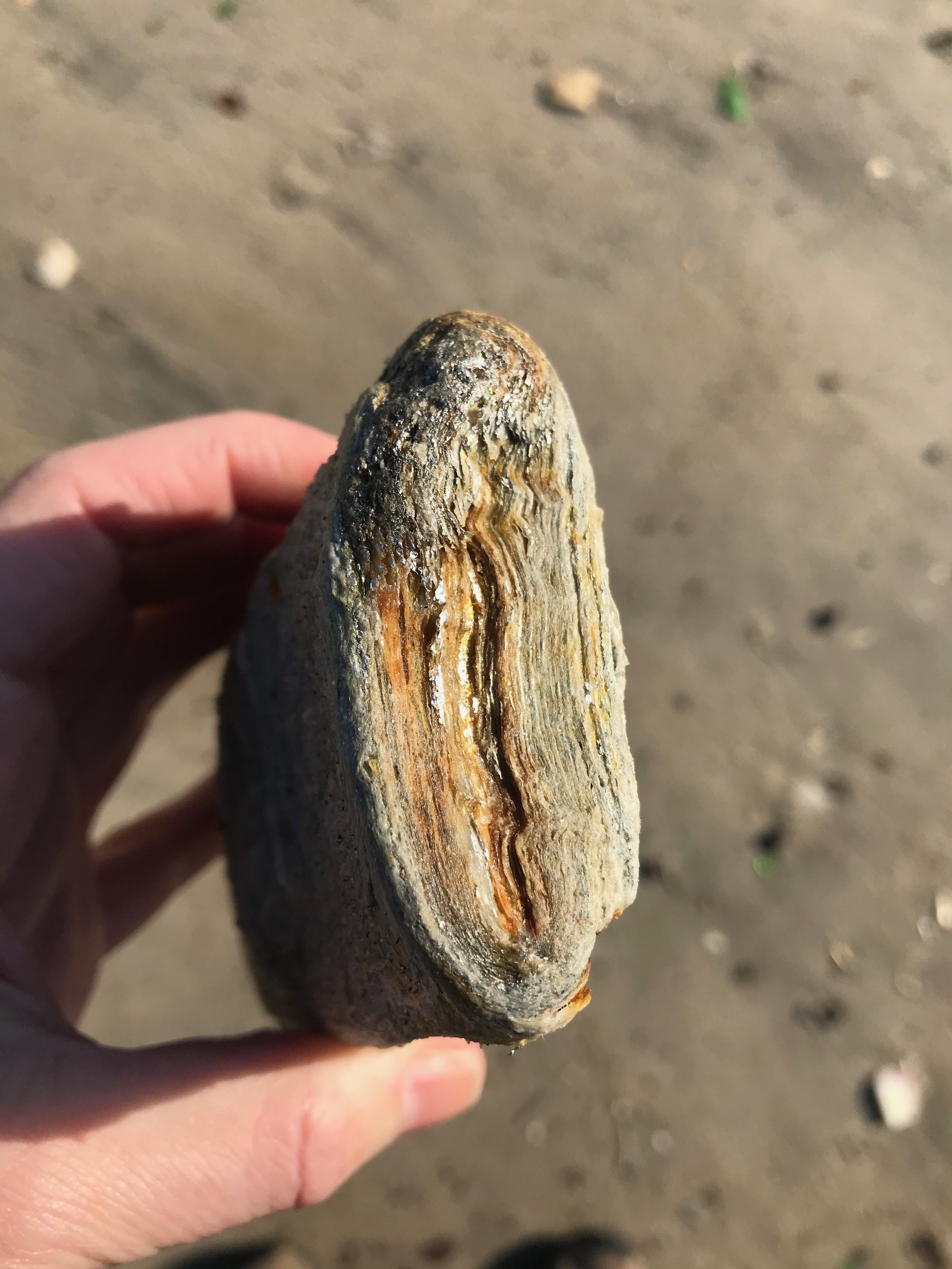
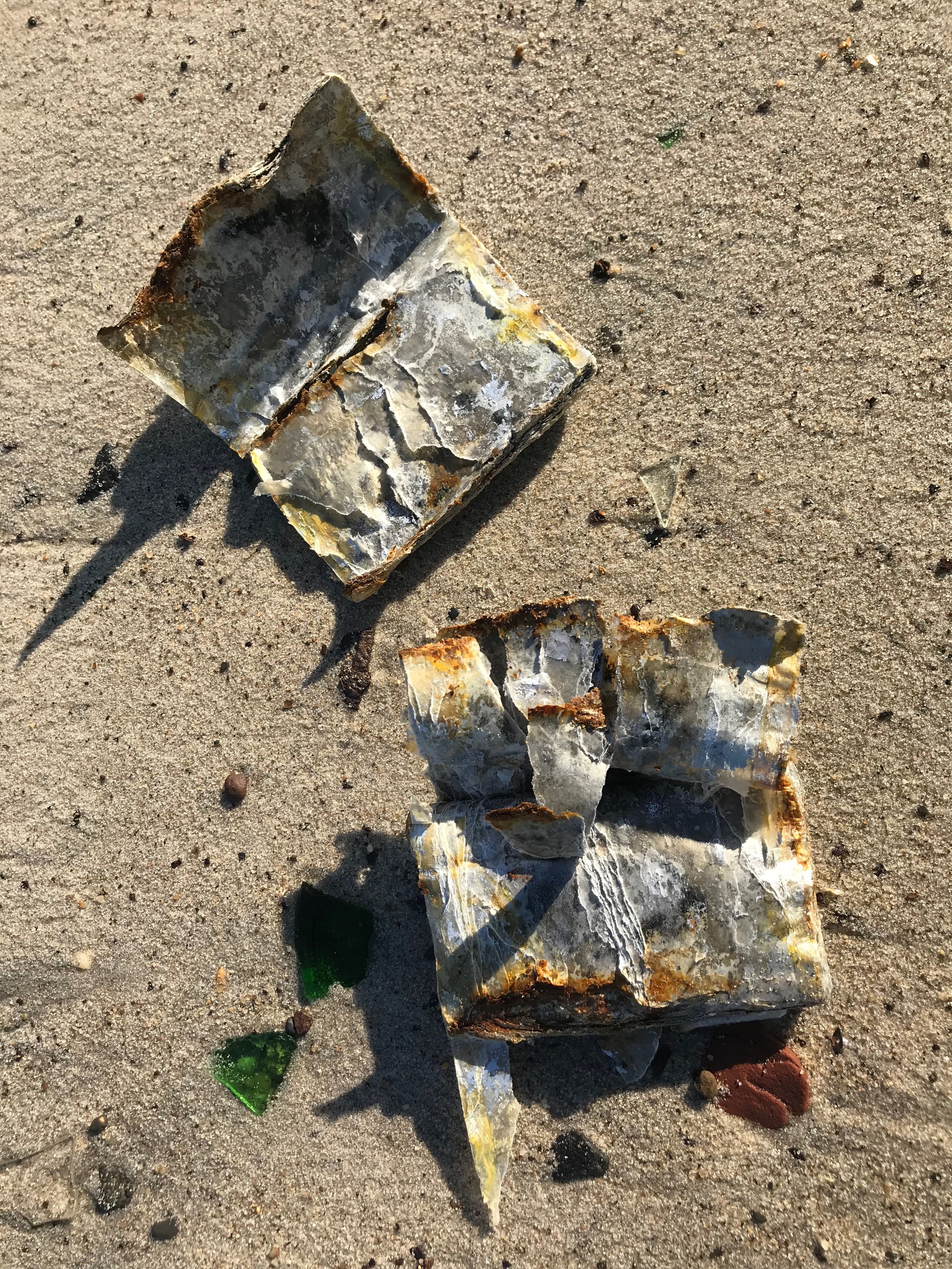

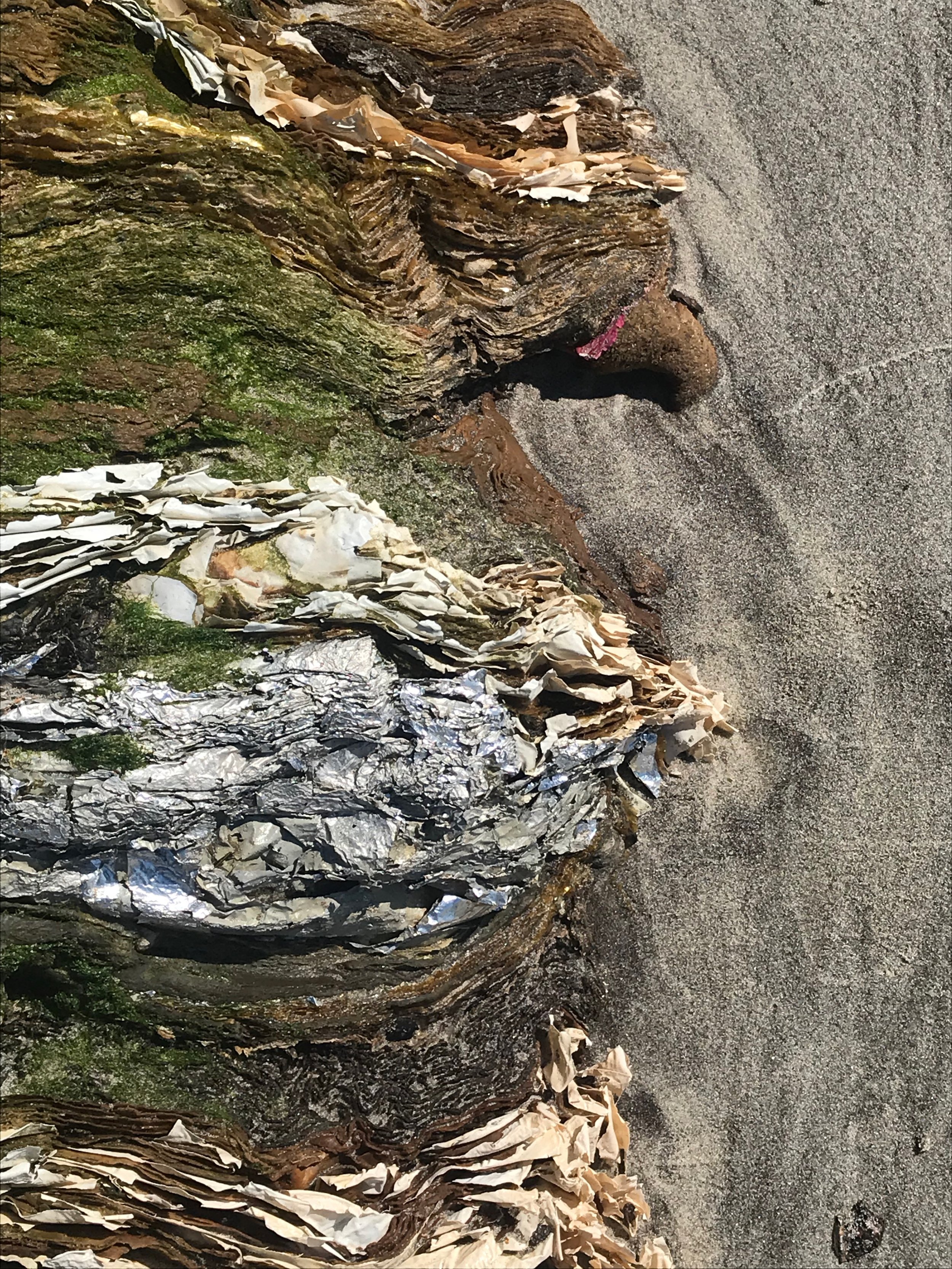
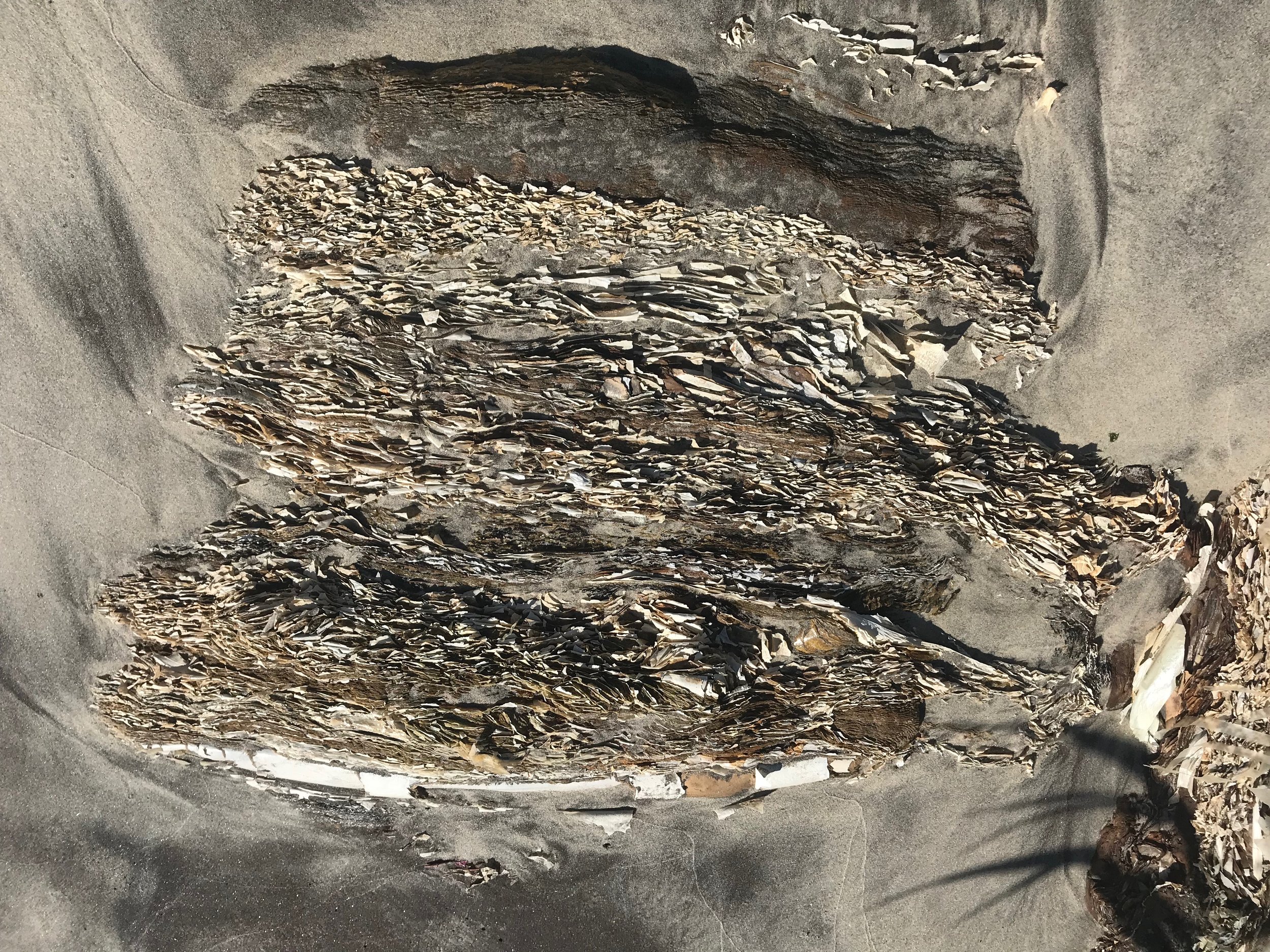
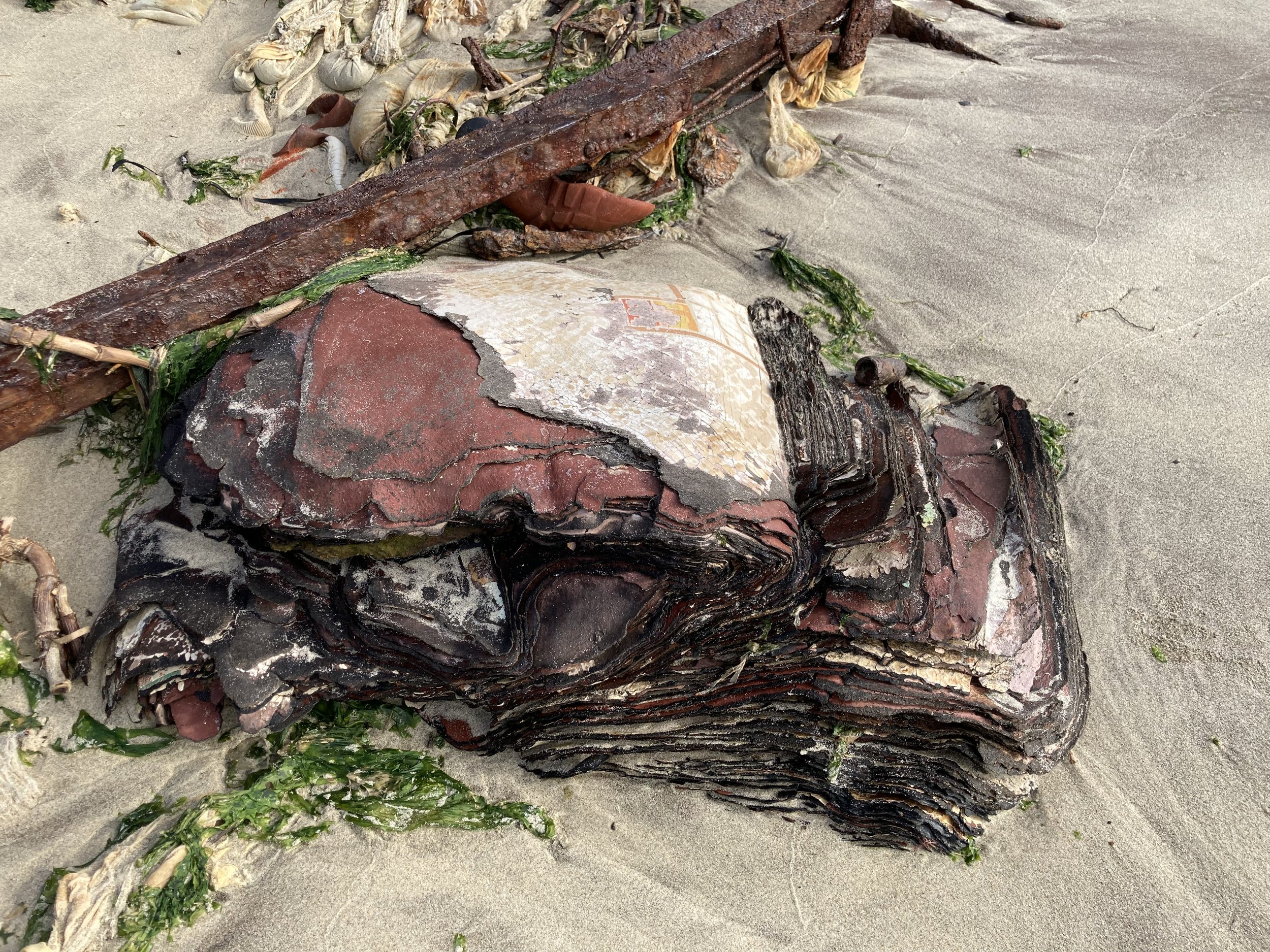

Nature + Scenery
Amongst all the garbage and pollution is a variety of marine and coastal life. The beach is backed by ubiquitous Phragmites grasses, which are quite picturesque and very invasive. Clamshells, razor clams, snails, and horseshoe crab shells are everywhere. Seagulls, red-winged blackbirds, oystercatchers, brants, Canada geese, and many other birds visit the beach. There’s all sort of seaweed. Whelk egg cases are a treat to find! And there are great views of the Rockaways and the Marine Parkway Gil Hodges Memorial Bridge.
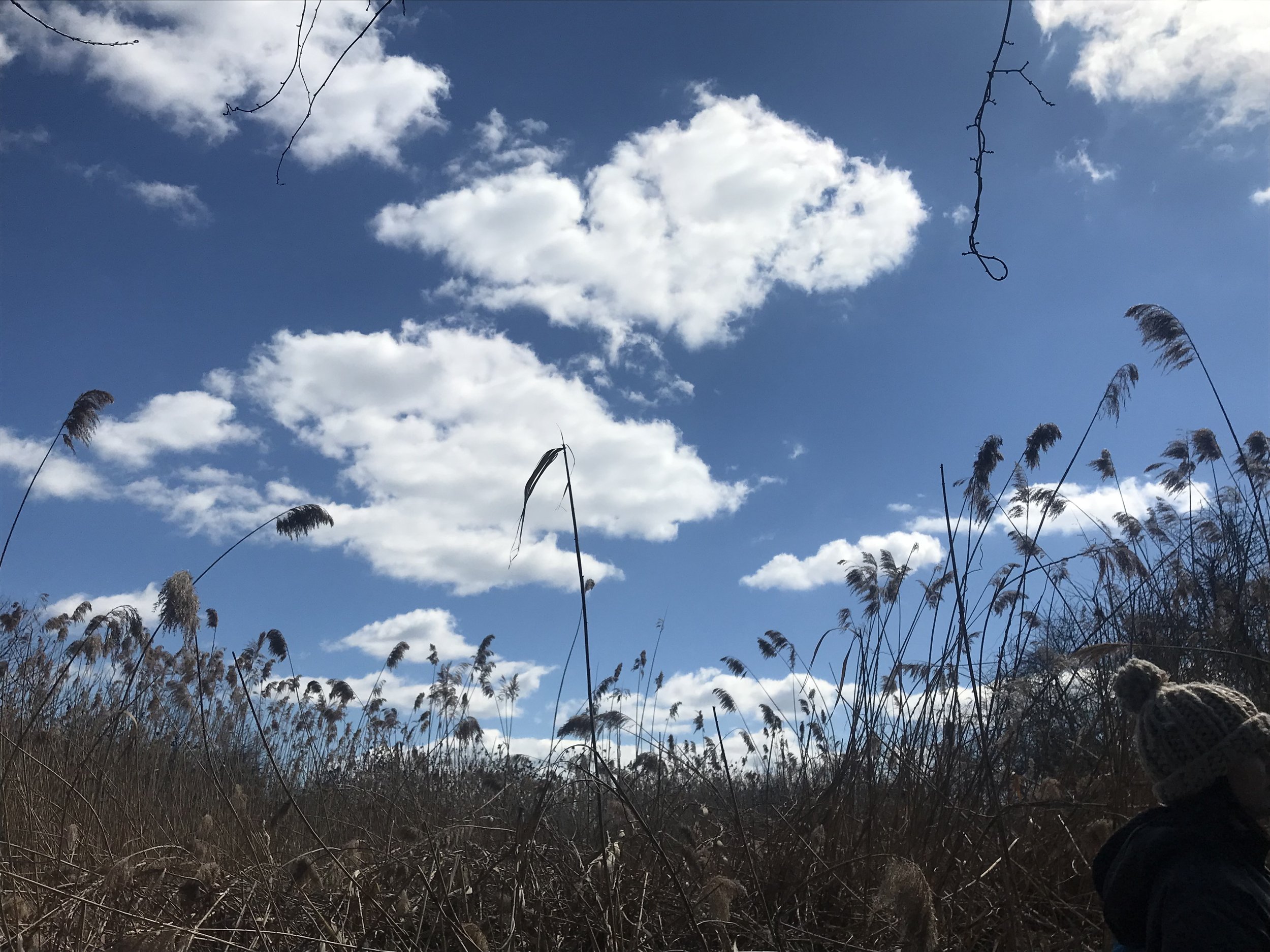

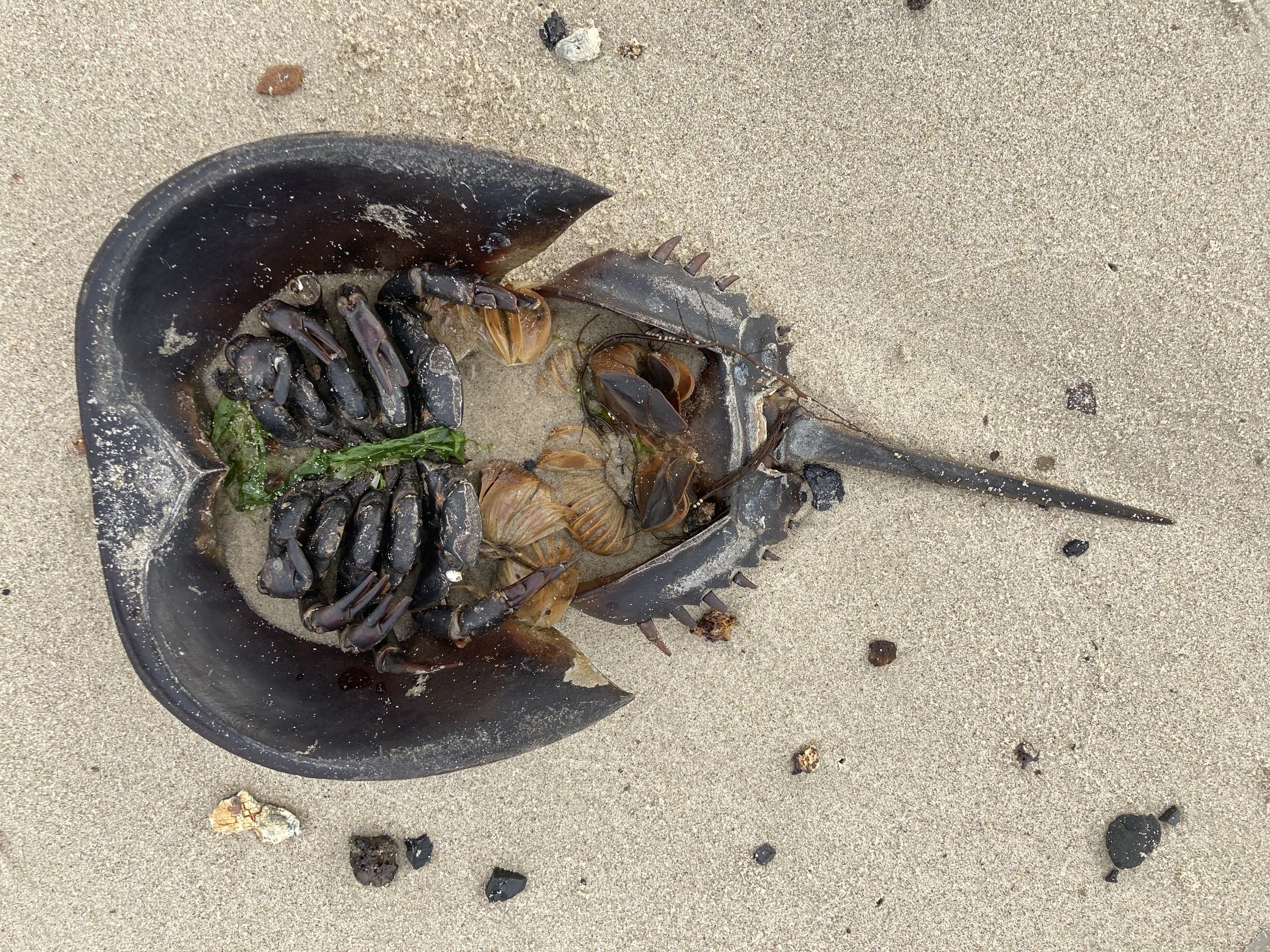
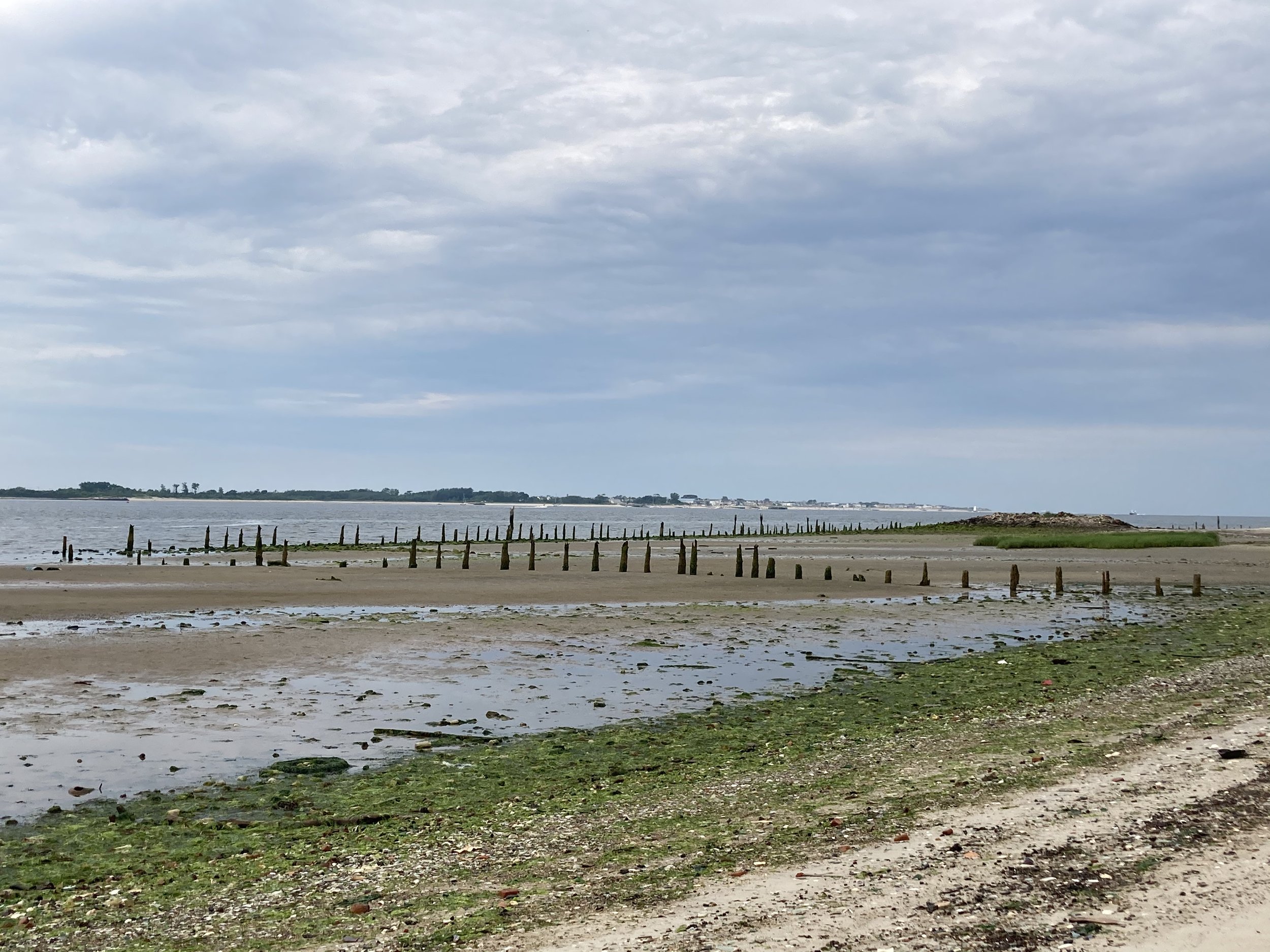
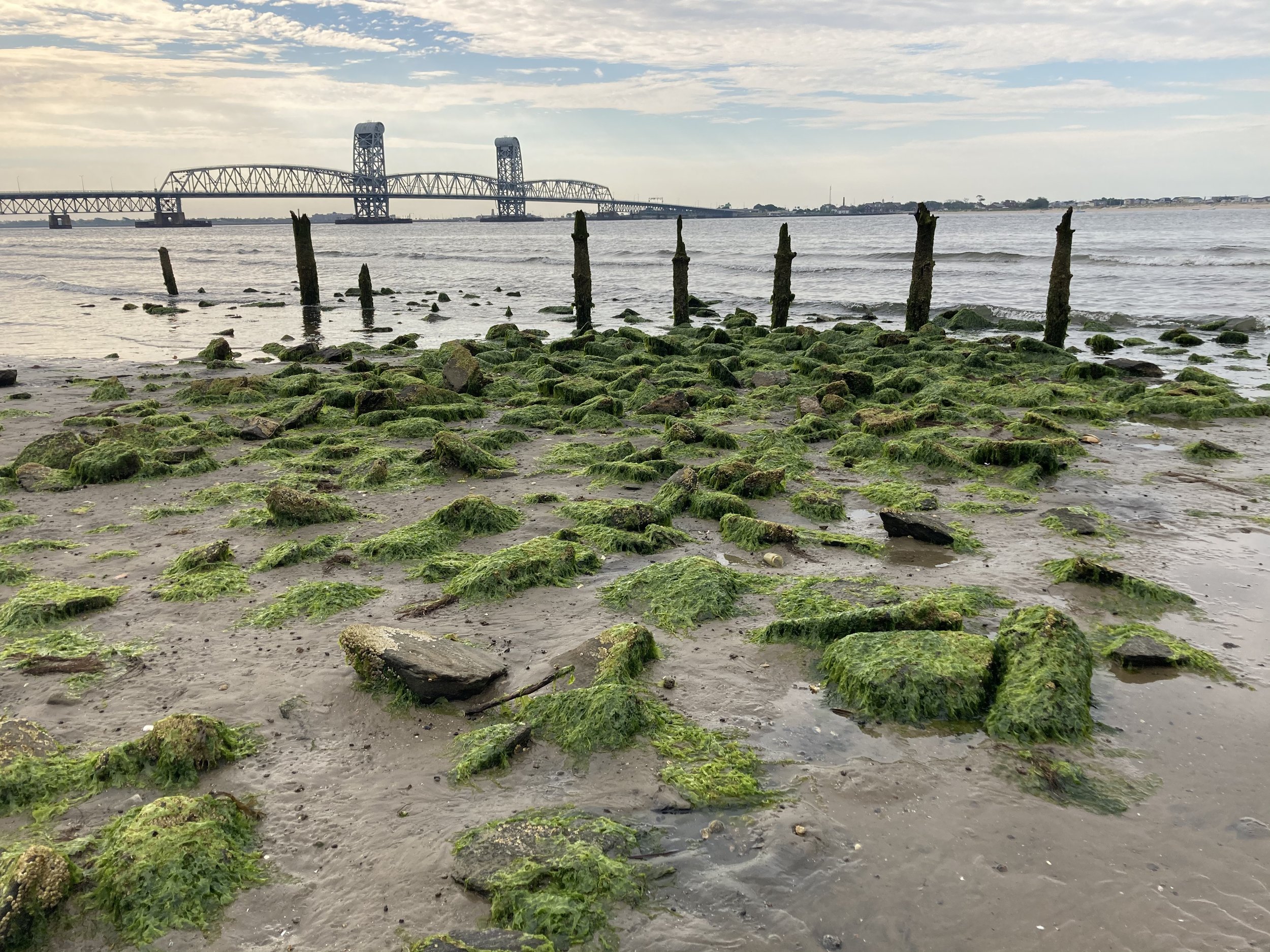
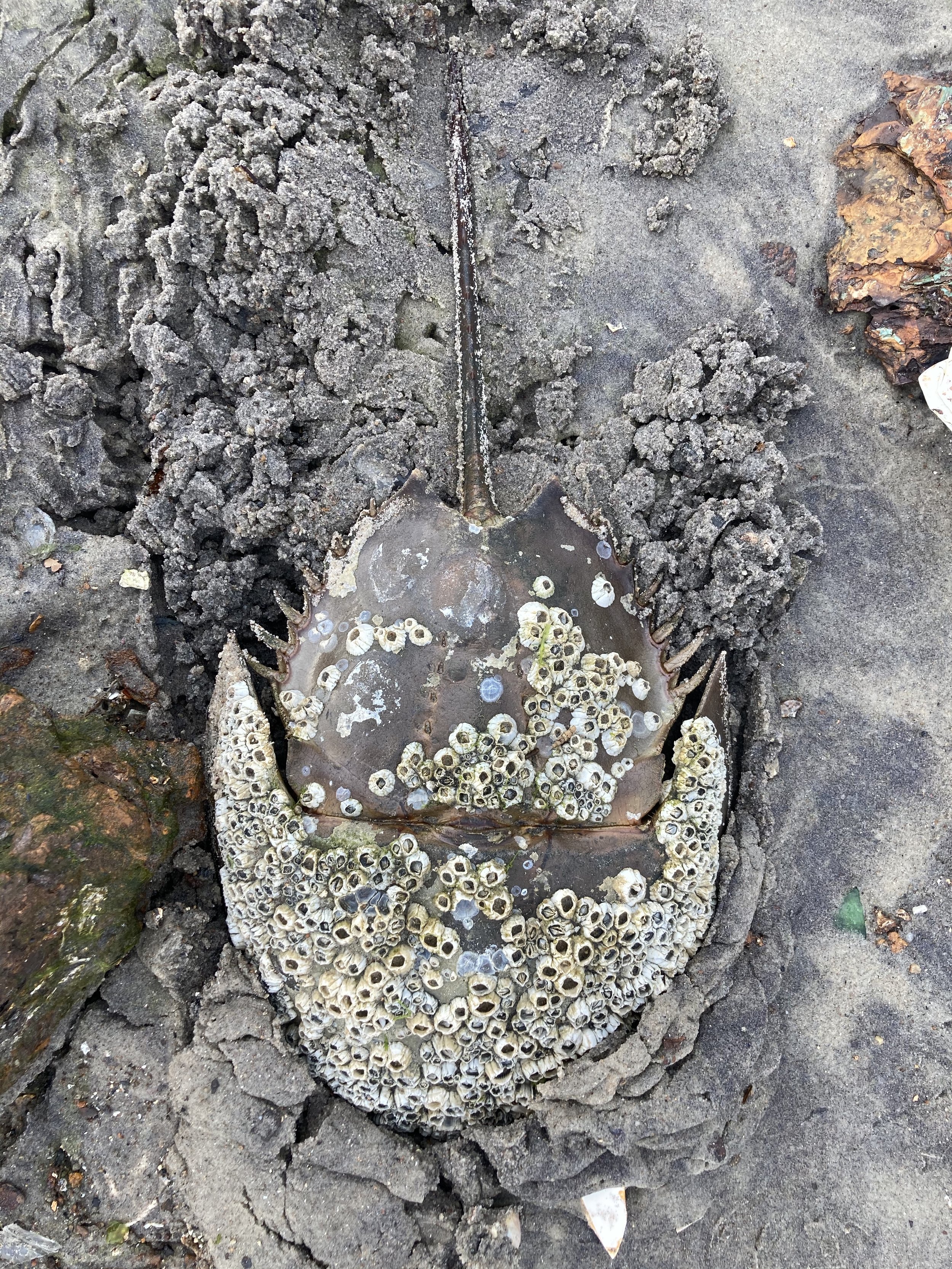
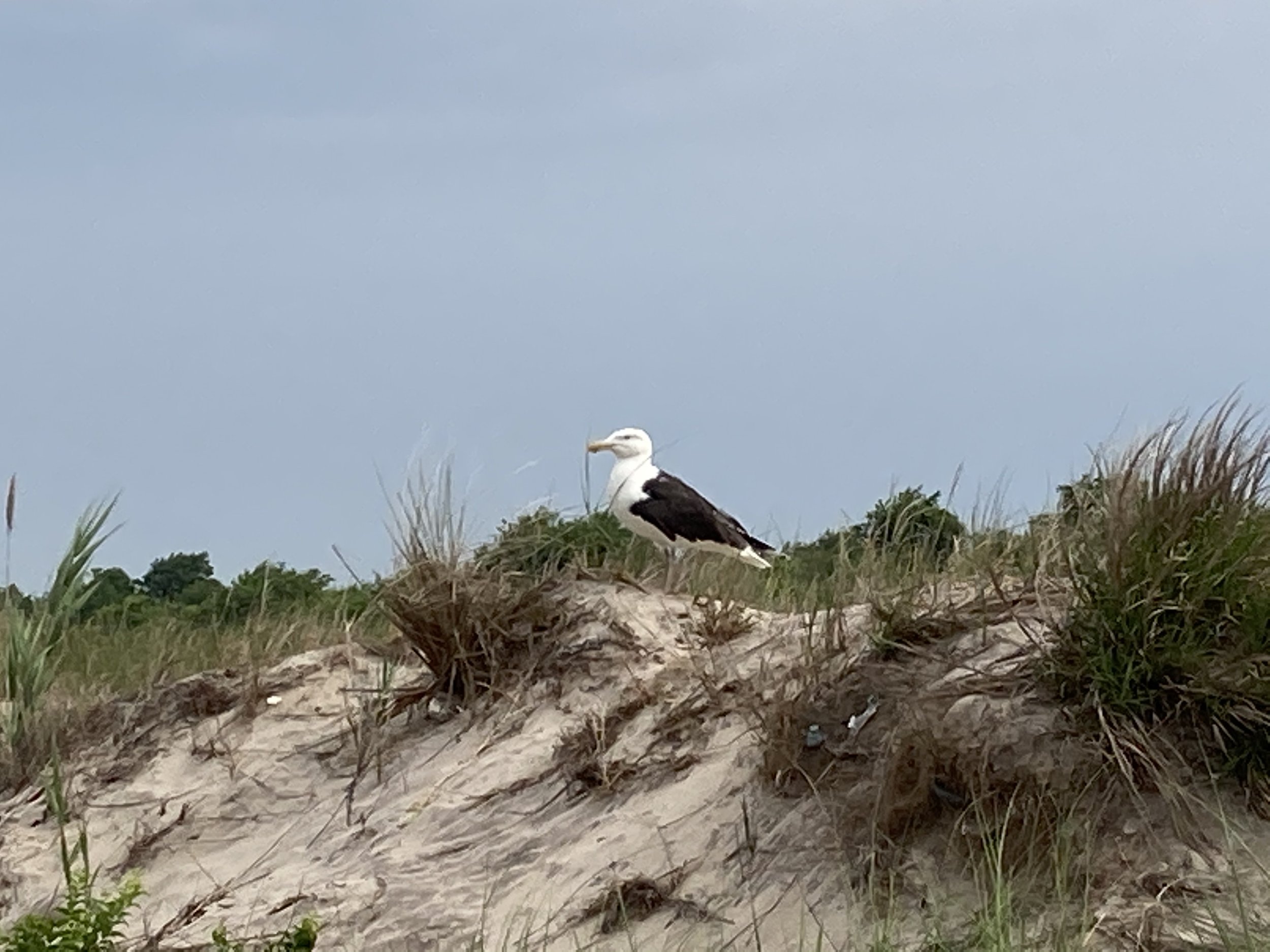
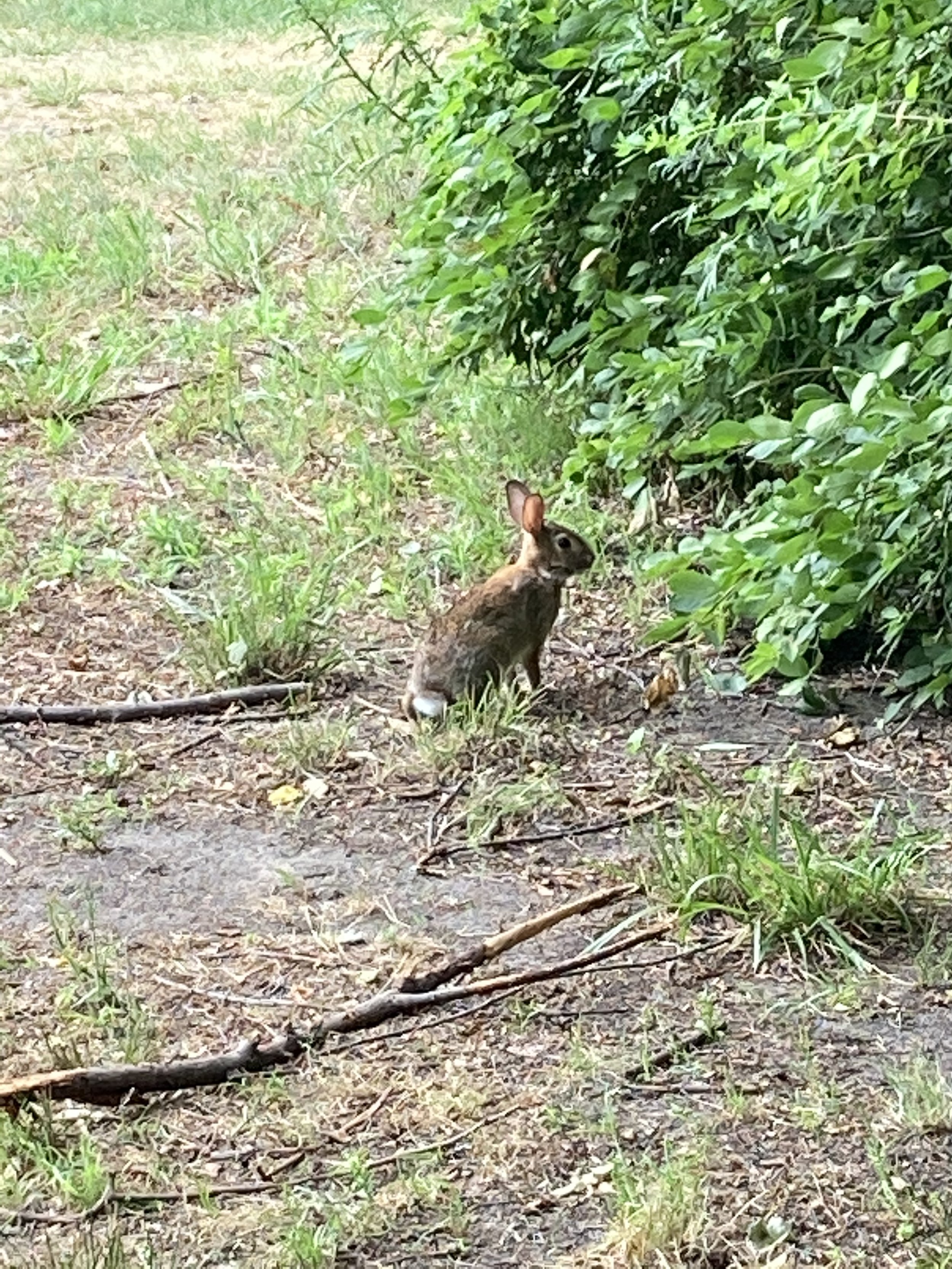

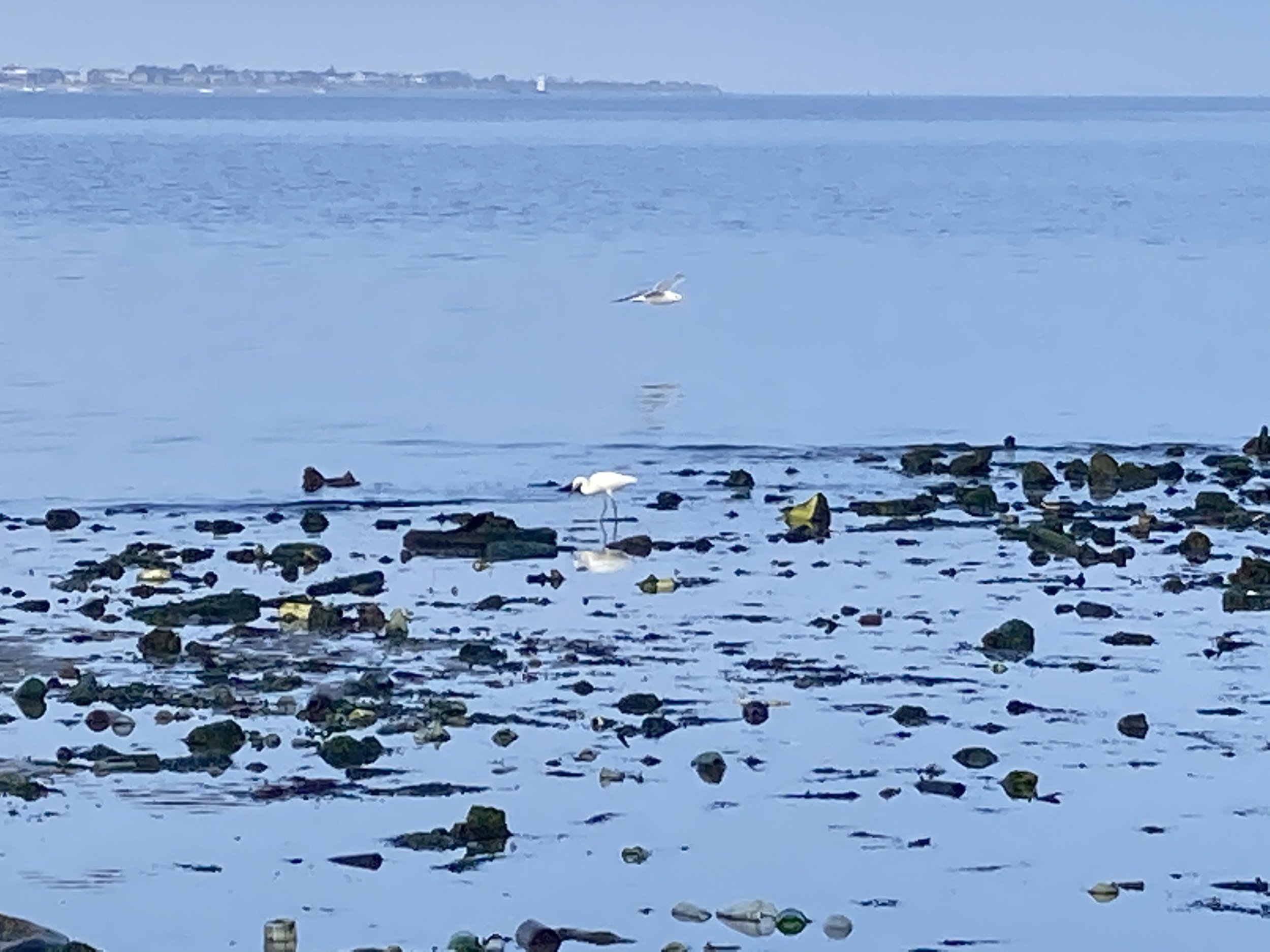
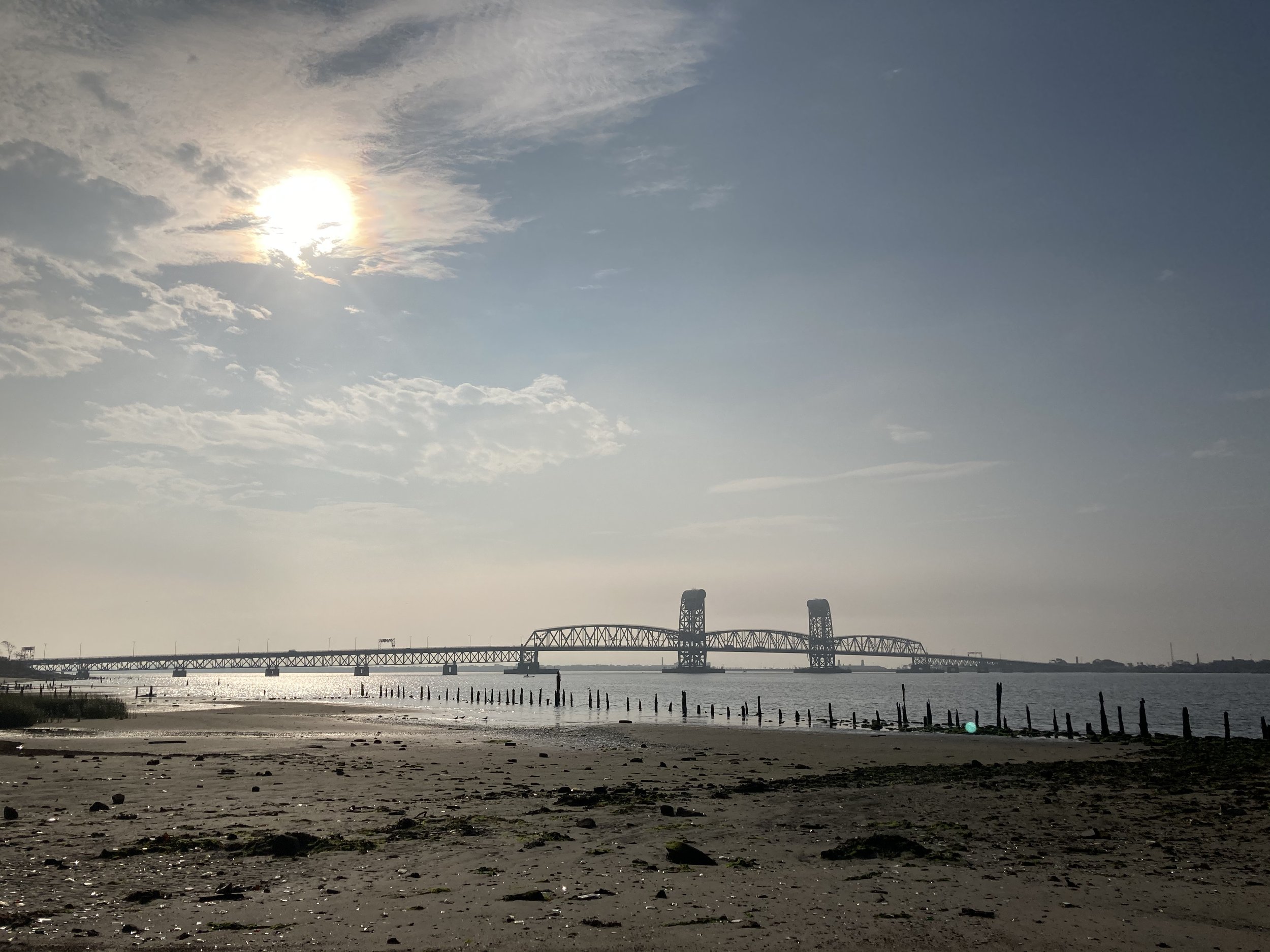
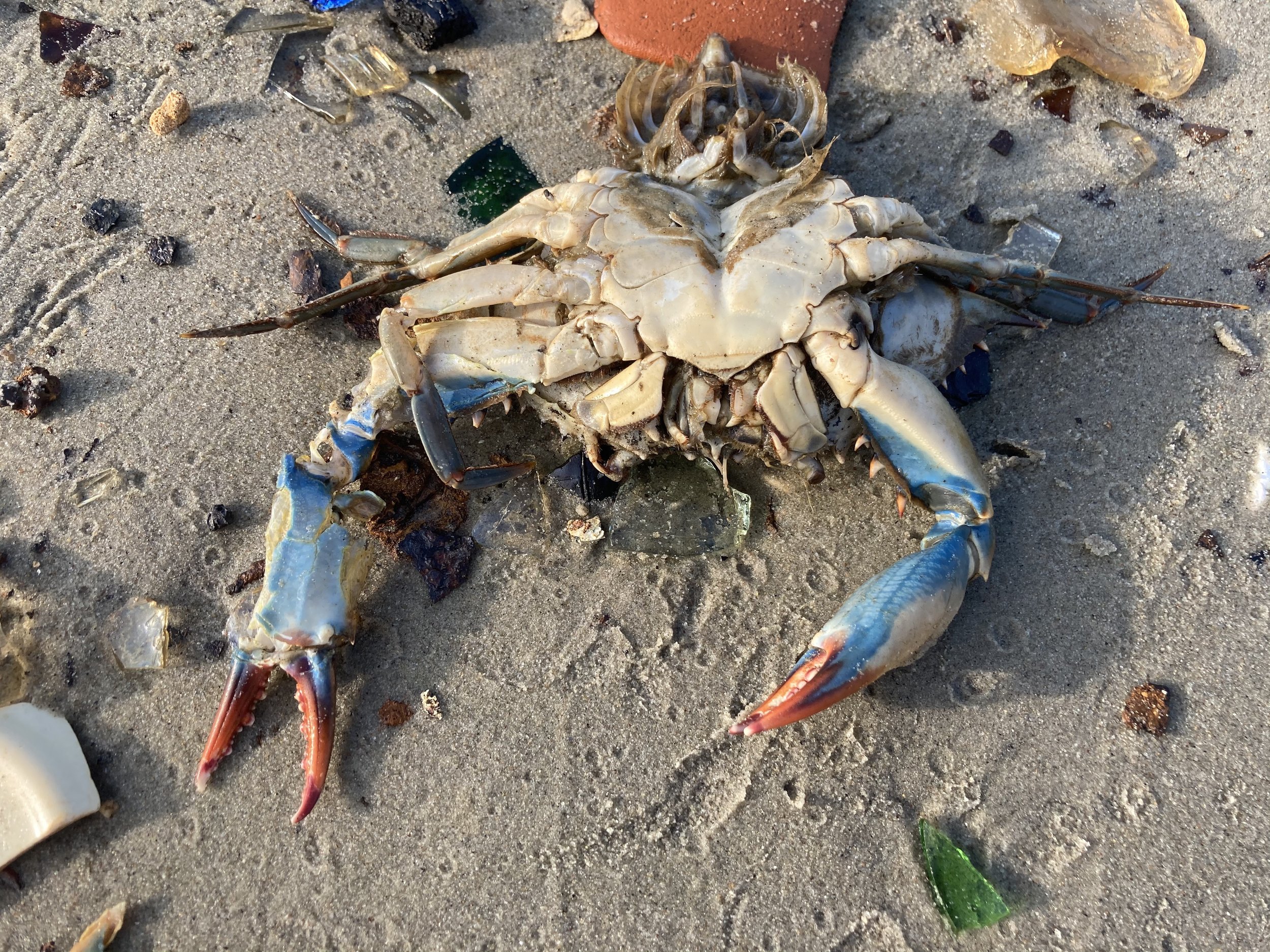
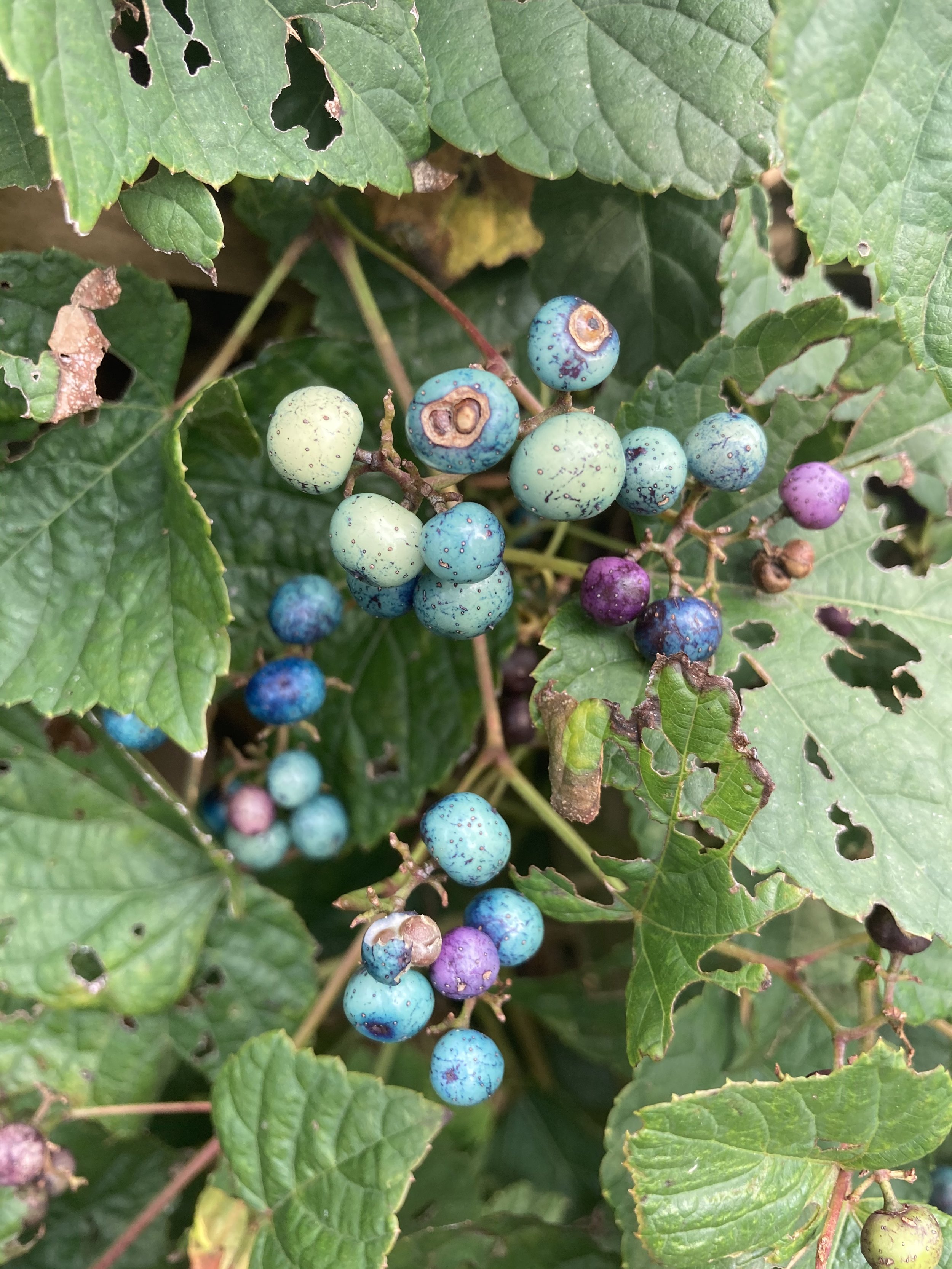
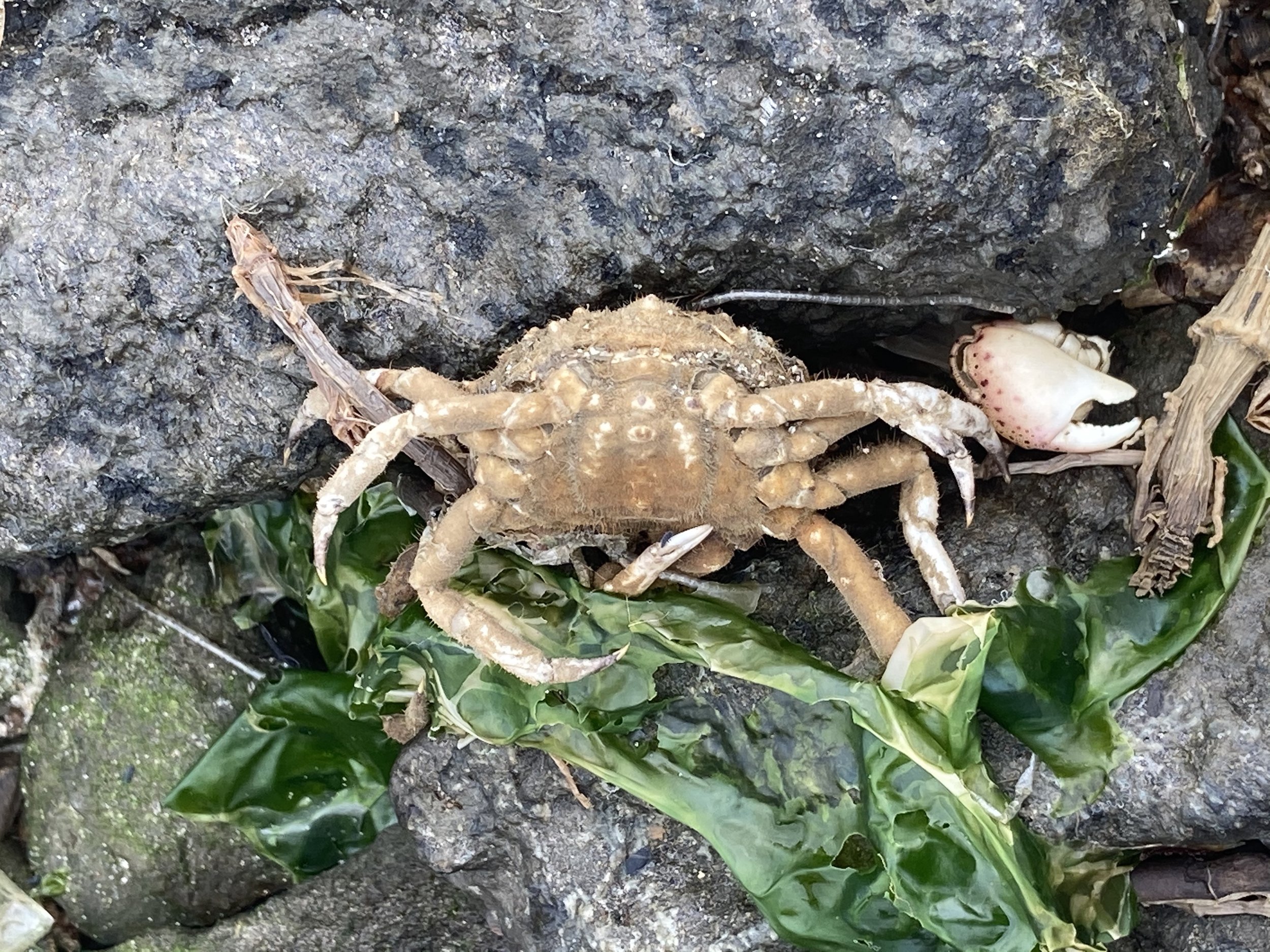

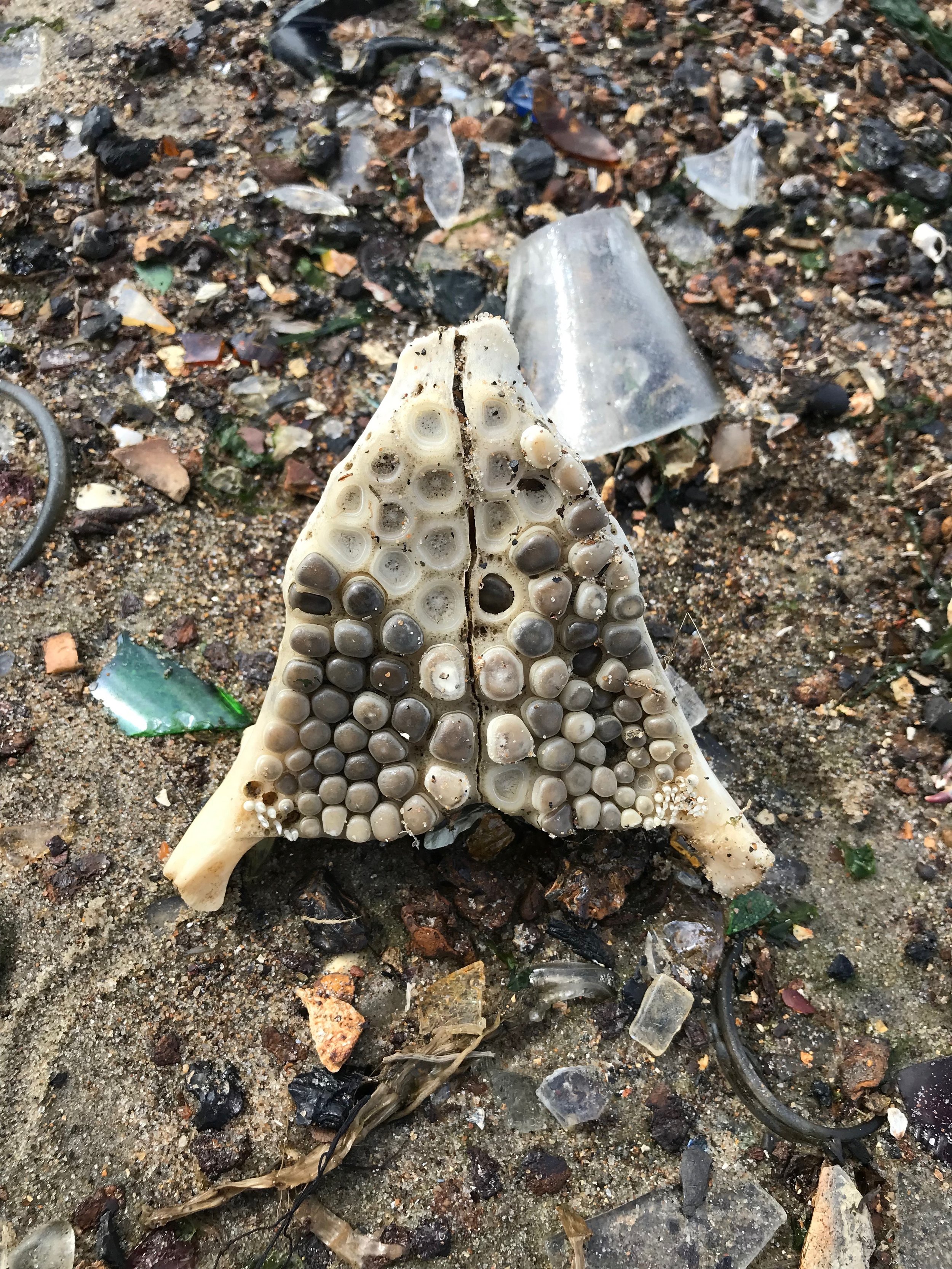
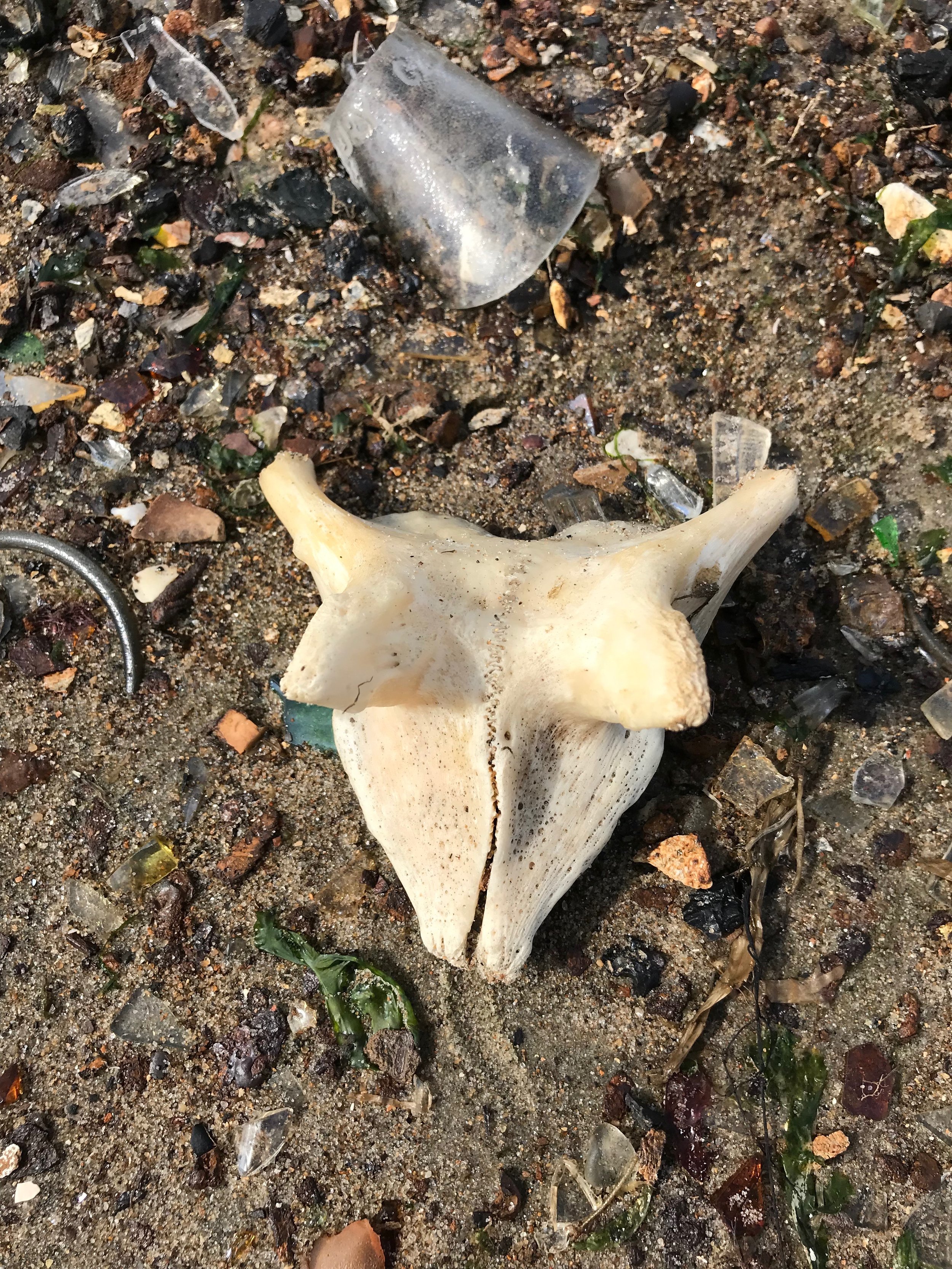
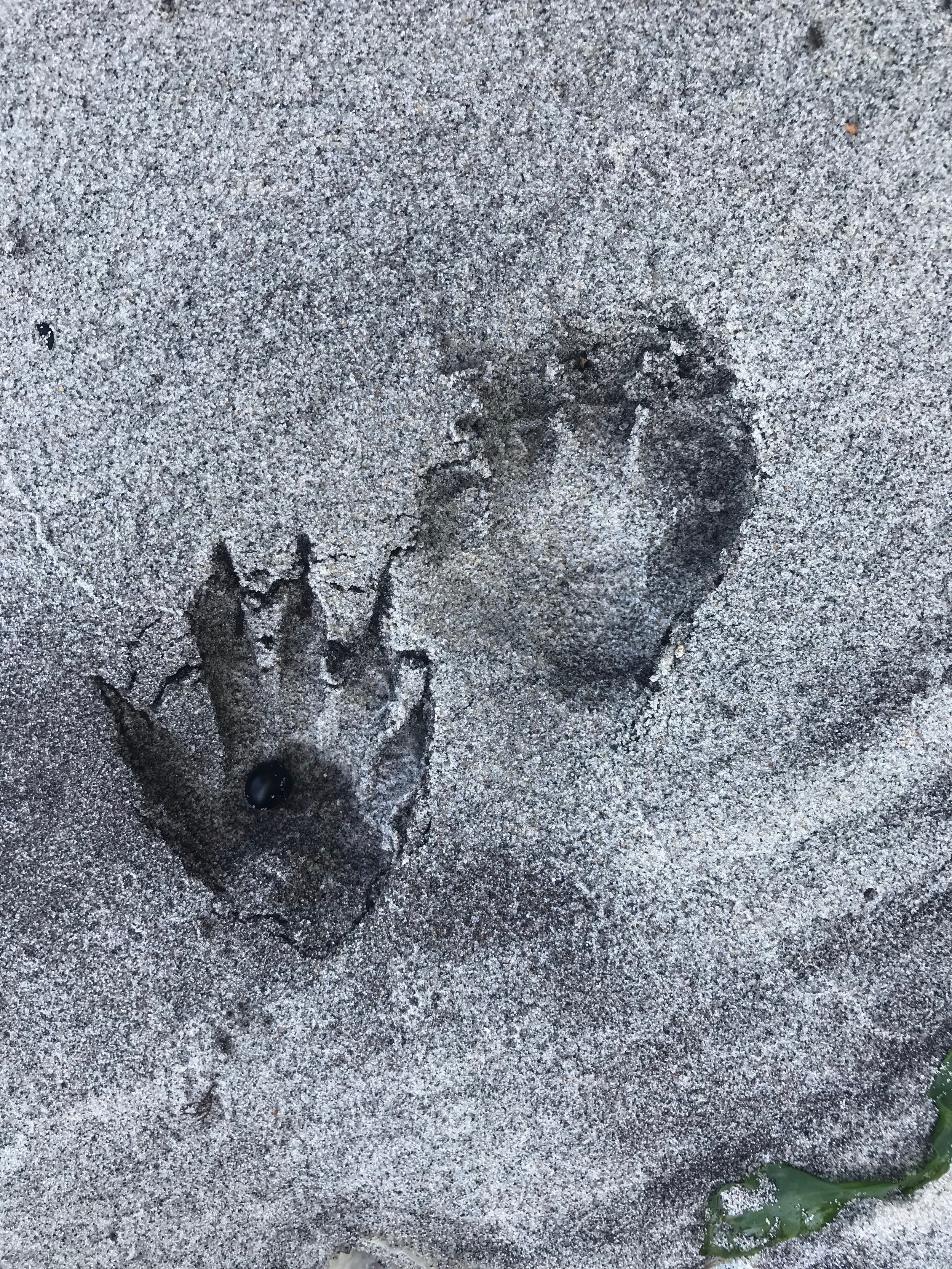
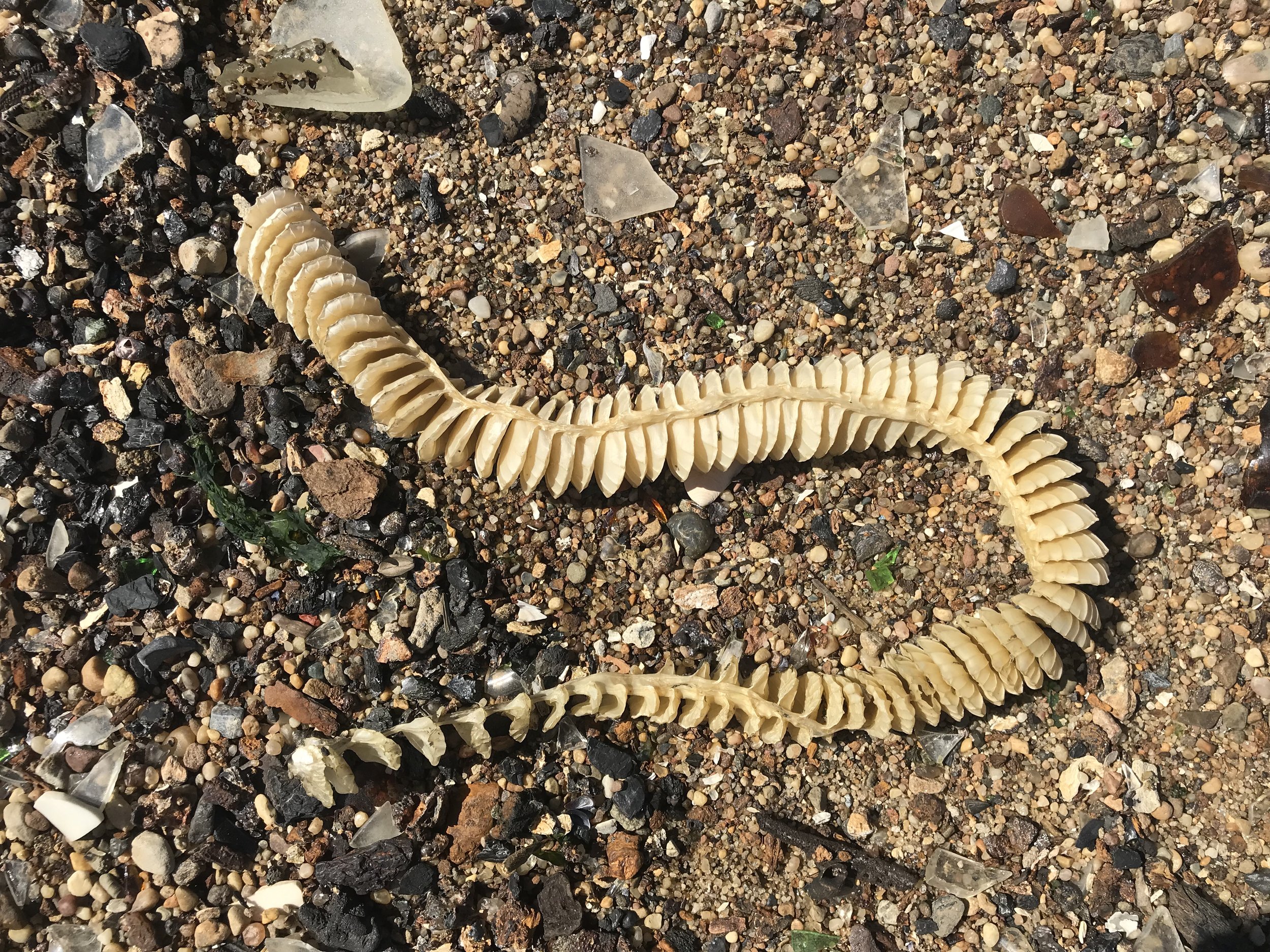


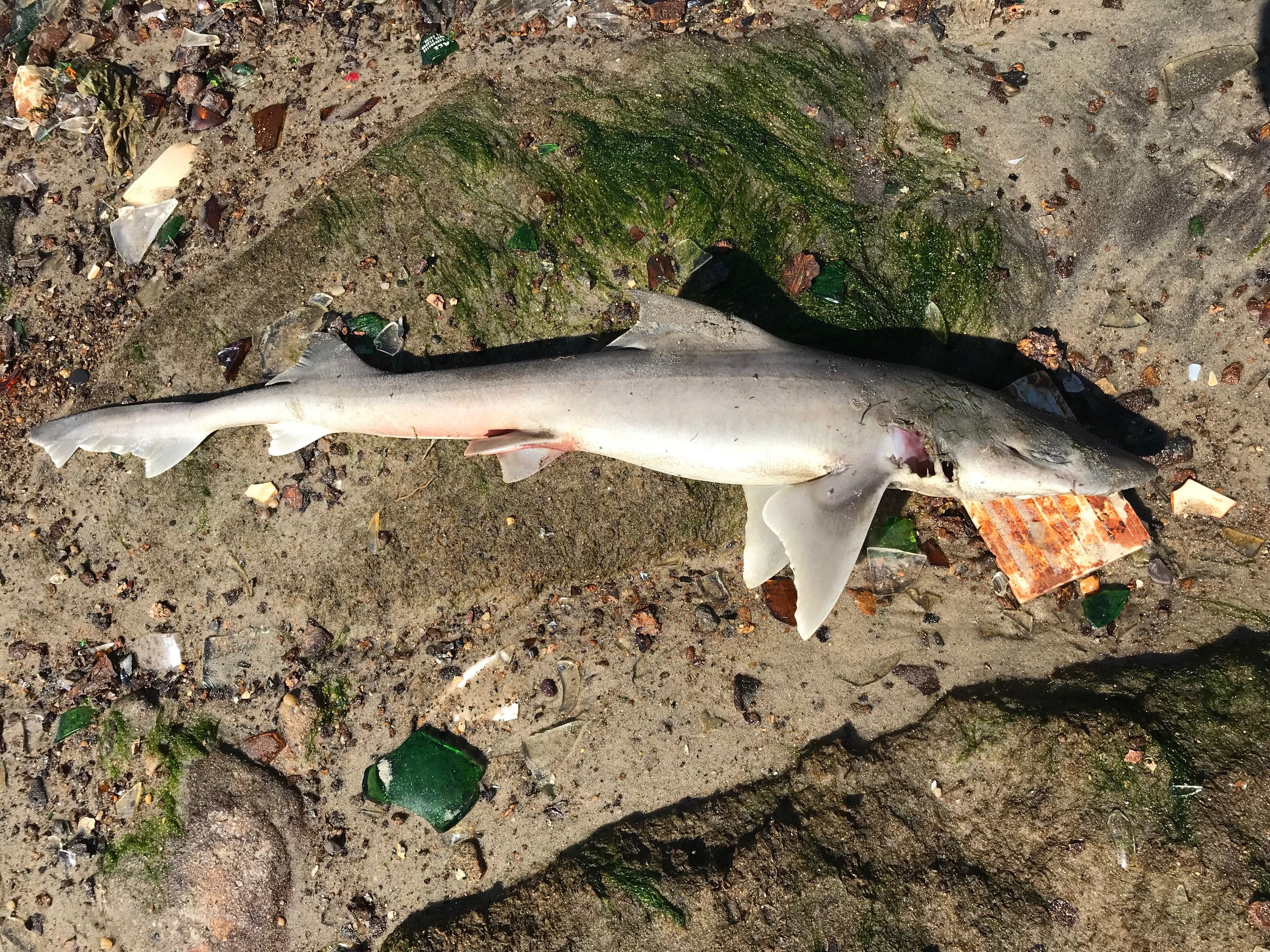
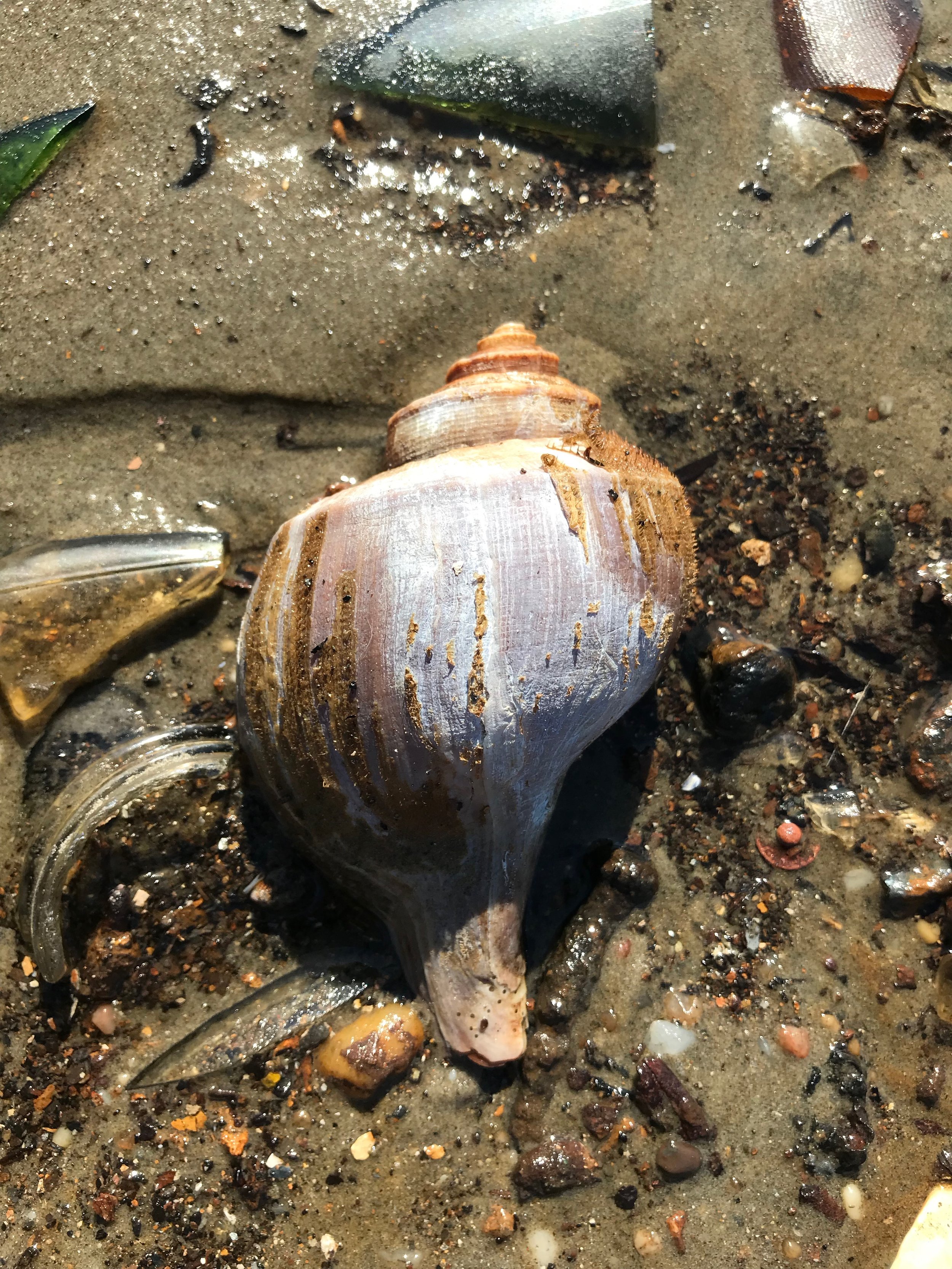


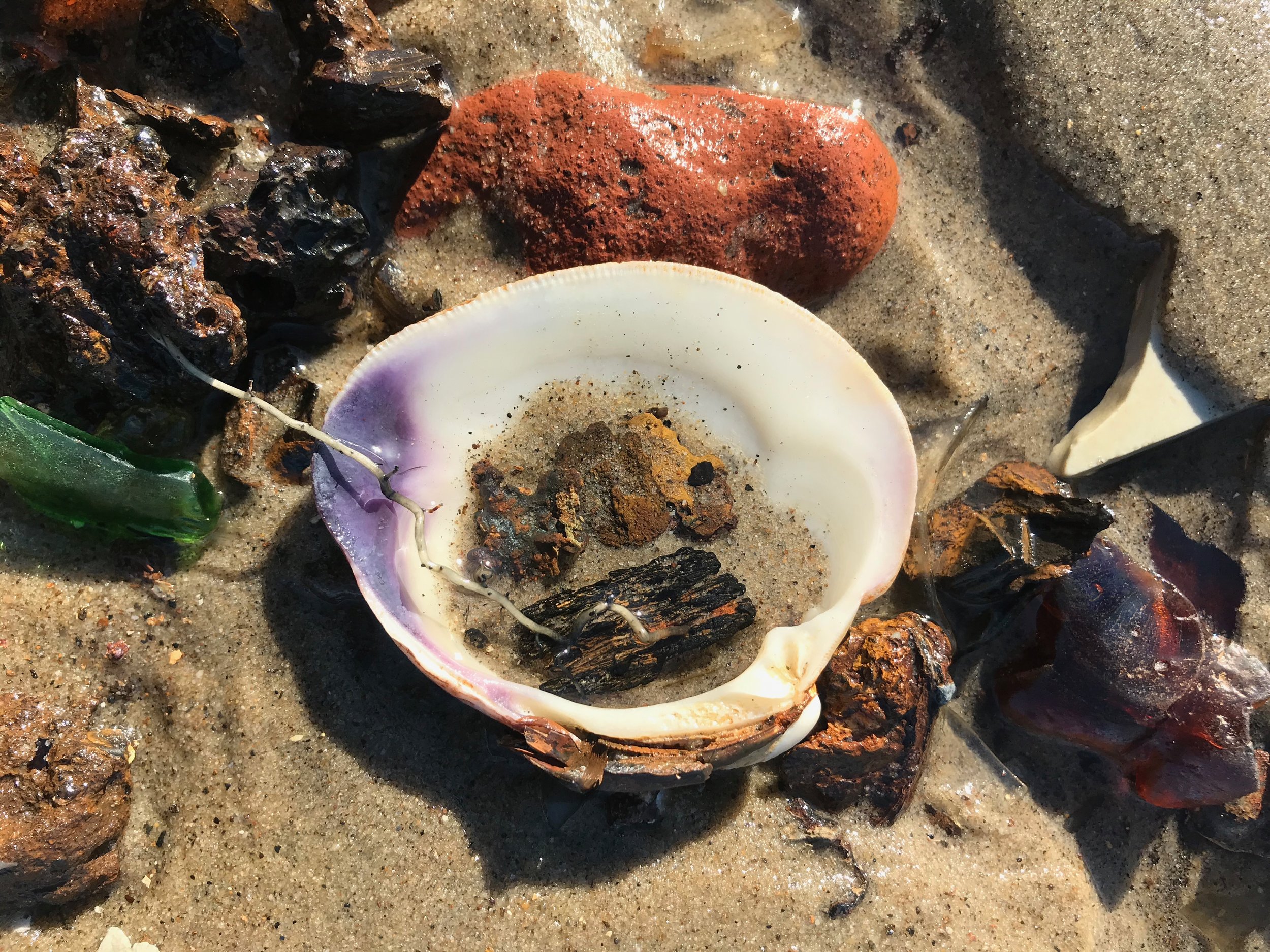
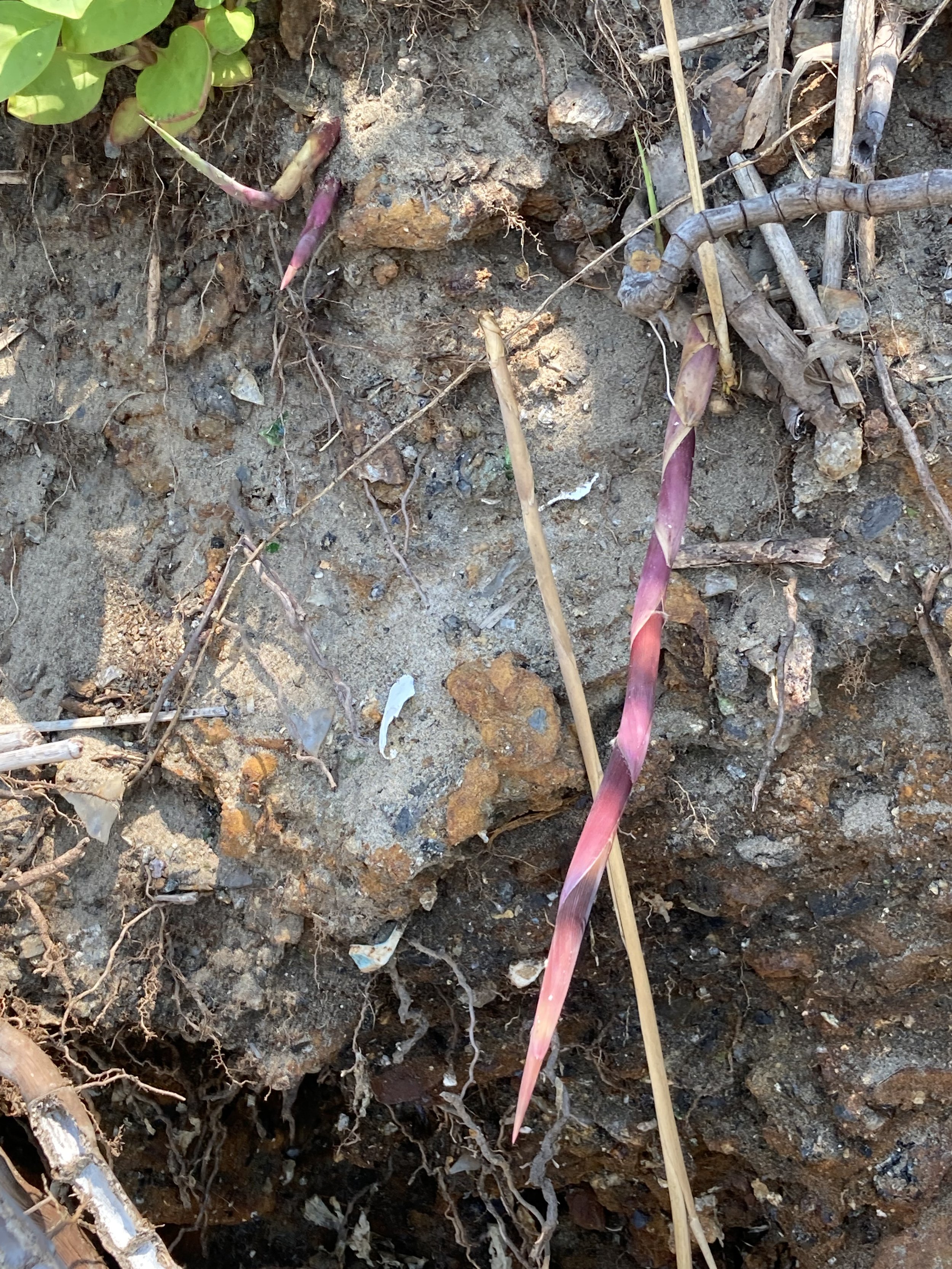

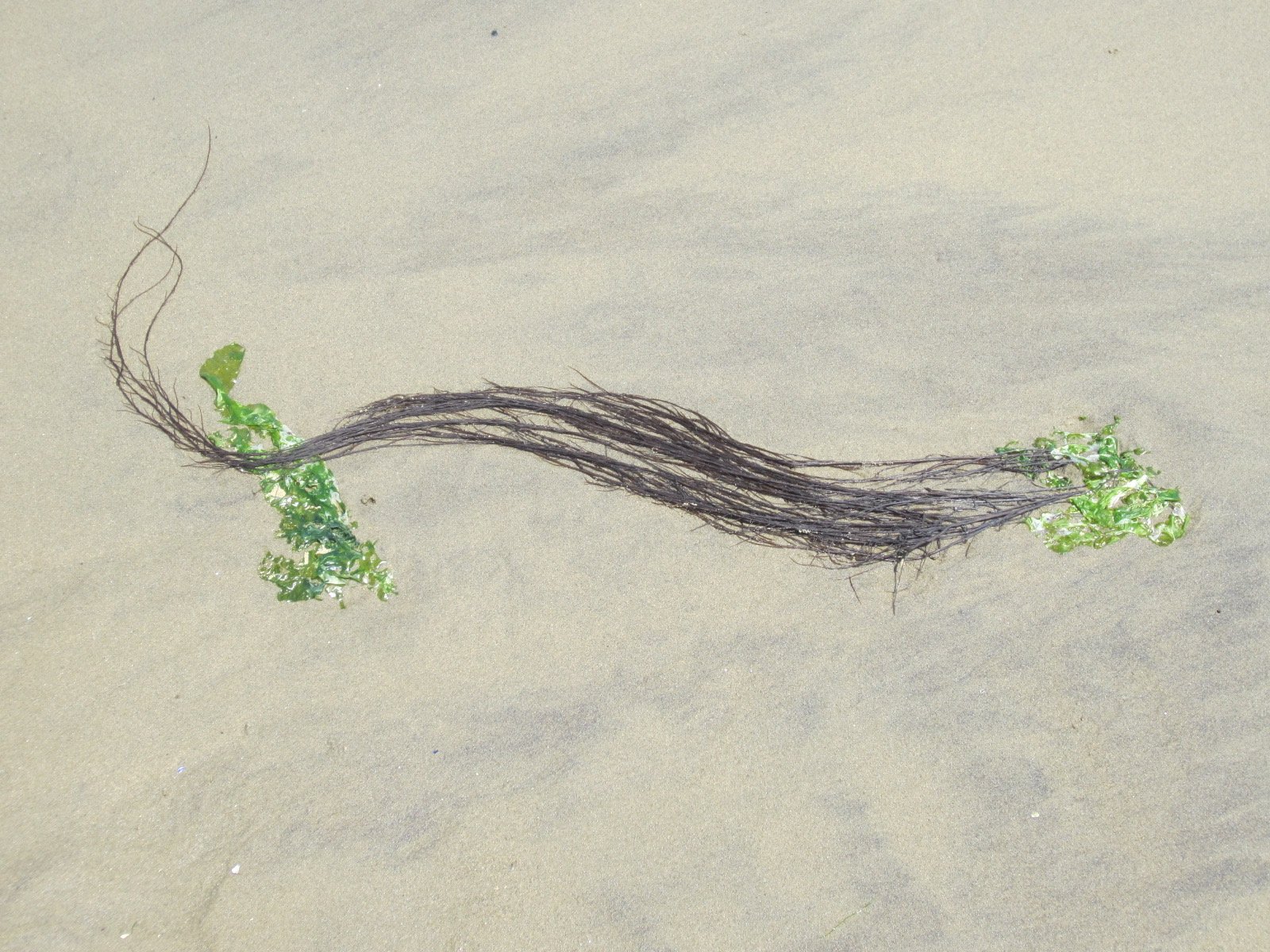
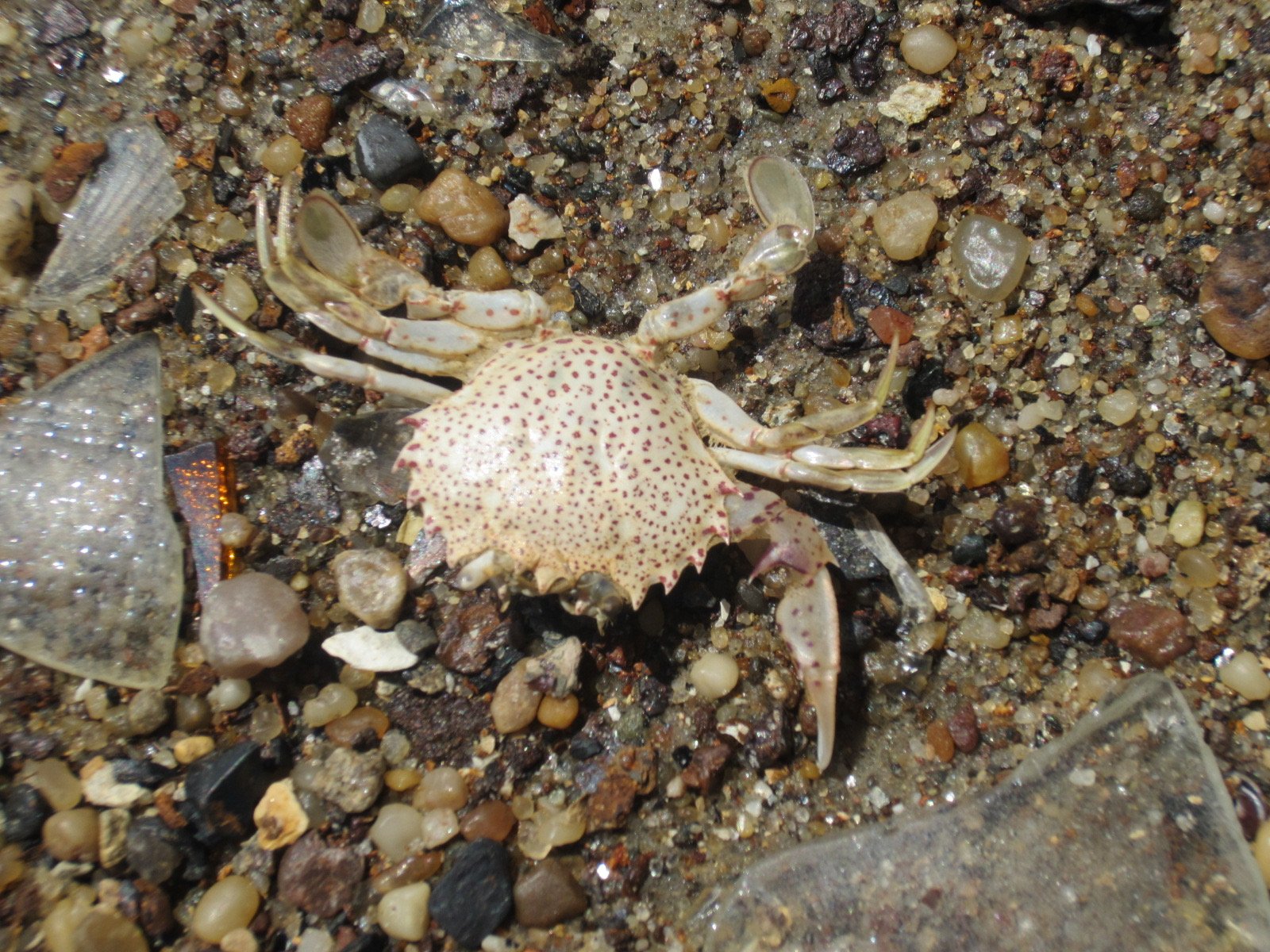
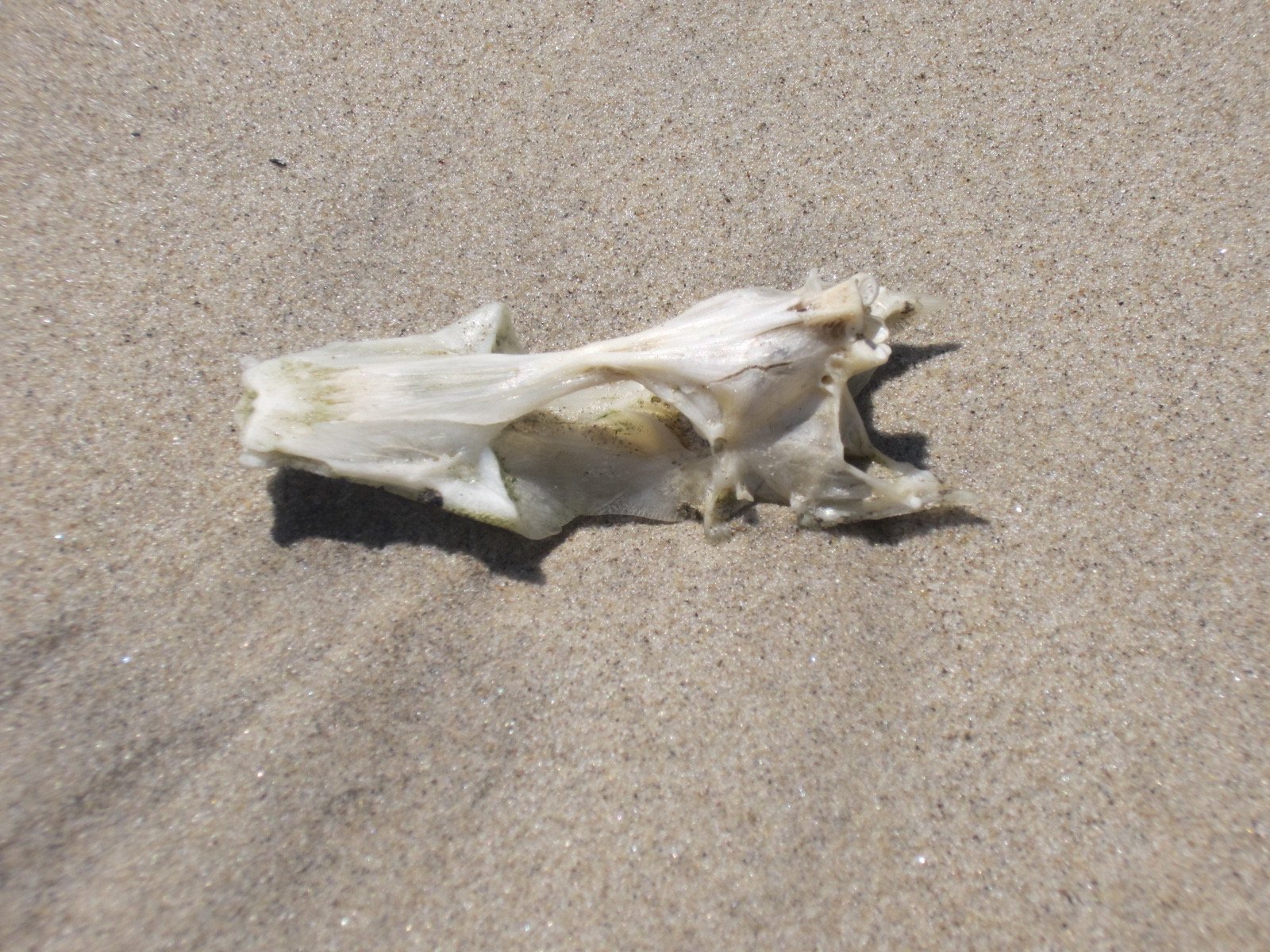
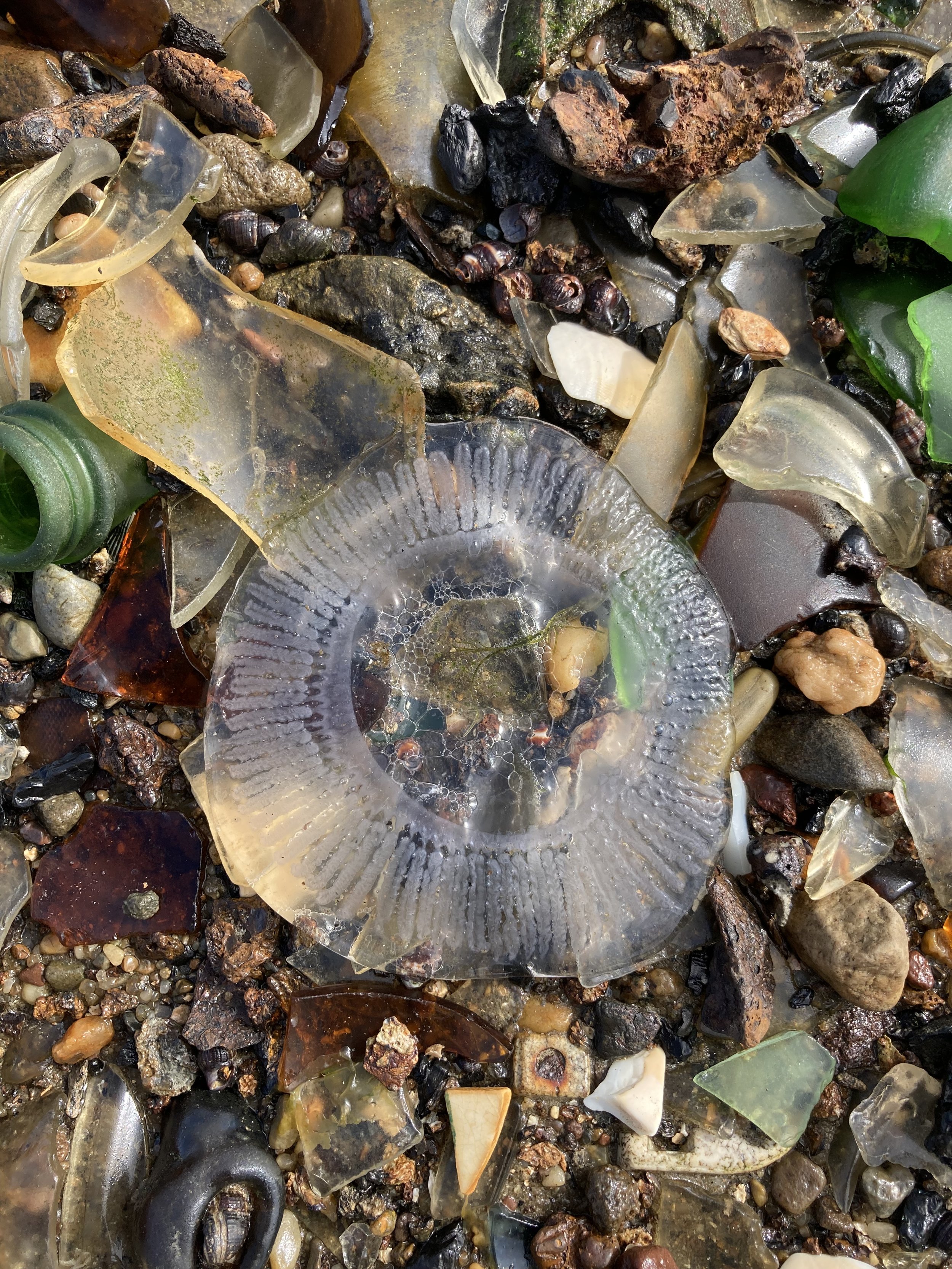
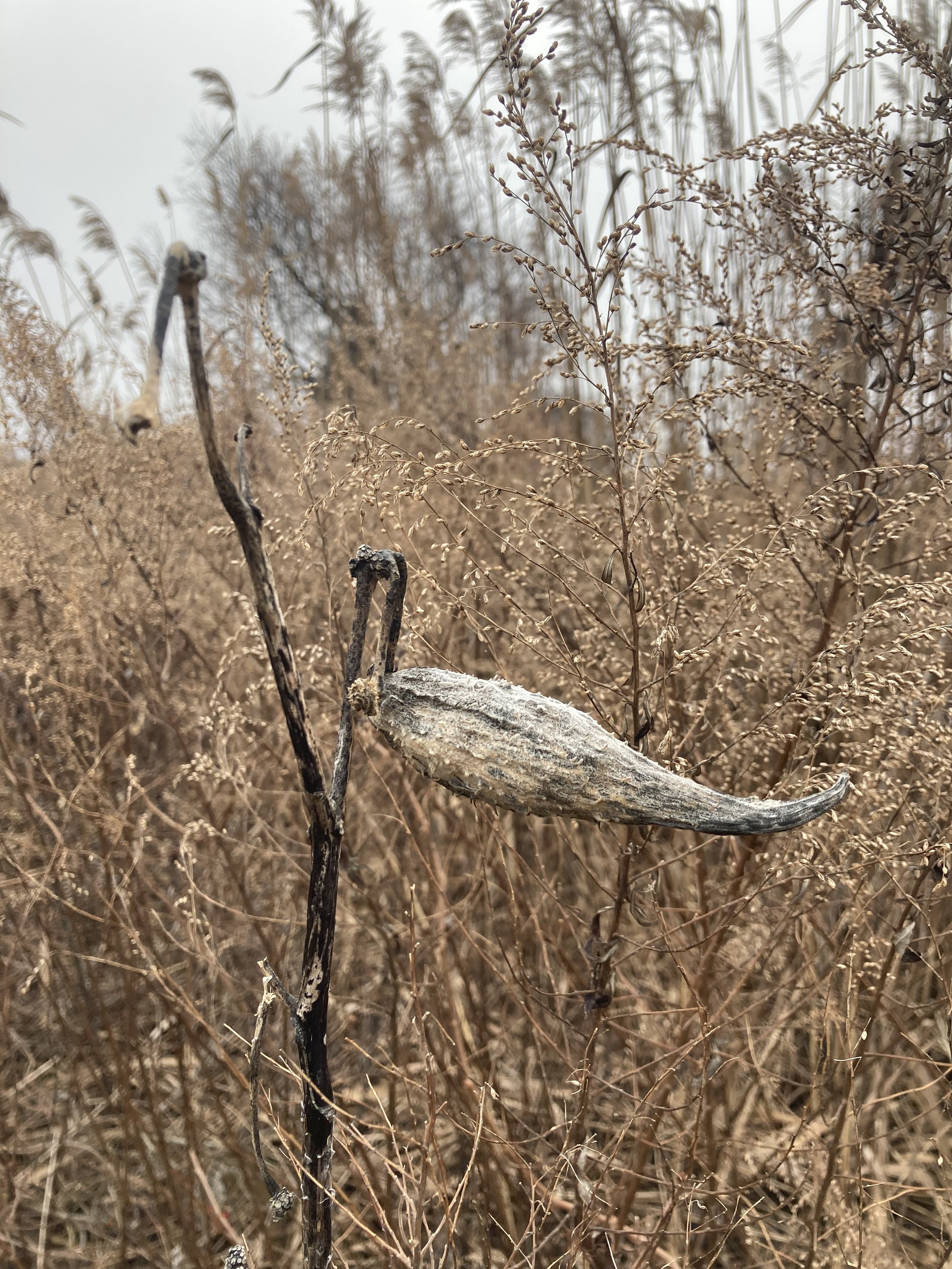
Other Identifiable Objects
Often it’s clear that my “discoveries” on the beach have already been discovered by someone else. Not so with toothpaste or shampoo tubes that are still tightly rolled, with every bit of their contents used up at least seventy years ago. Toiletries can show us a lot, from the craze for chlorophyll toothpaste to the history of deodorant. Fun fact—deodorant was originally marketed only to women, because men were “supposed” to have body odor. And as we can see, toothbrushes (but not their bristles) last for a long time. Toys, combs, and other objects are also frequently found.
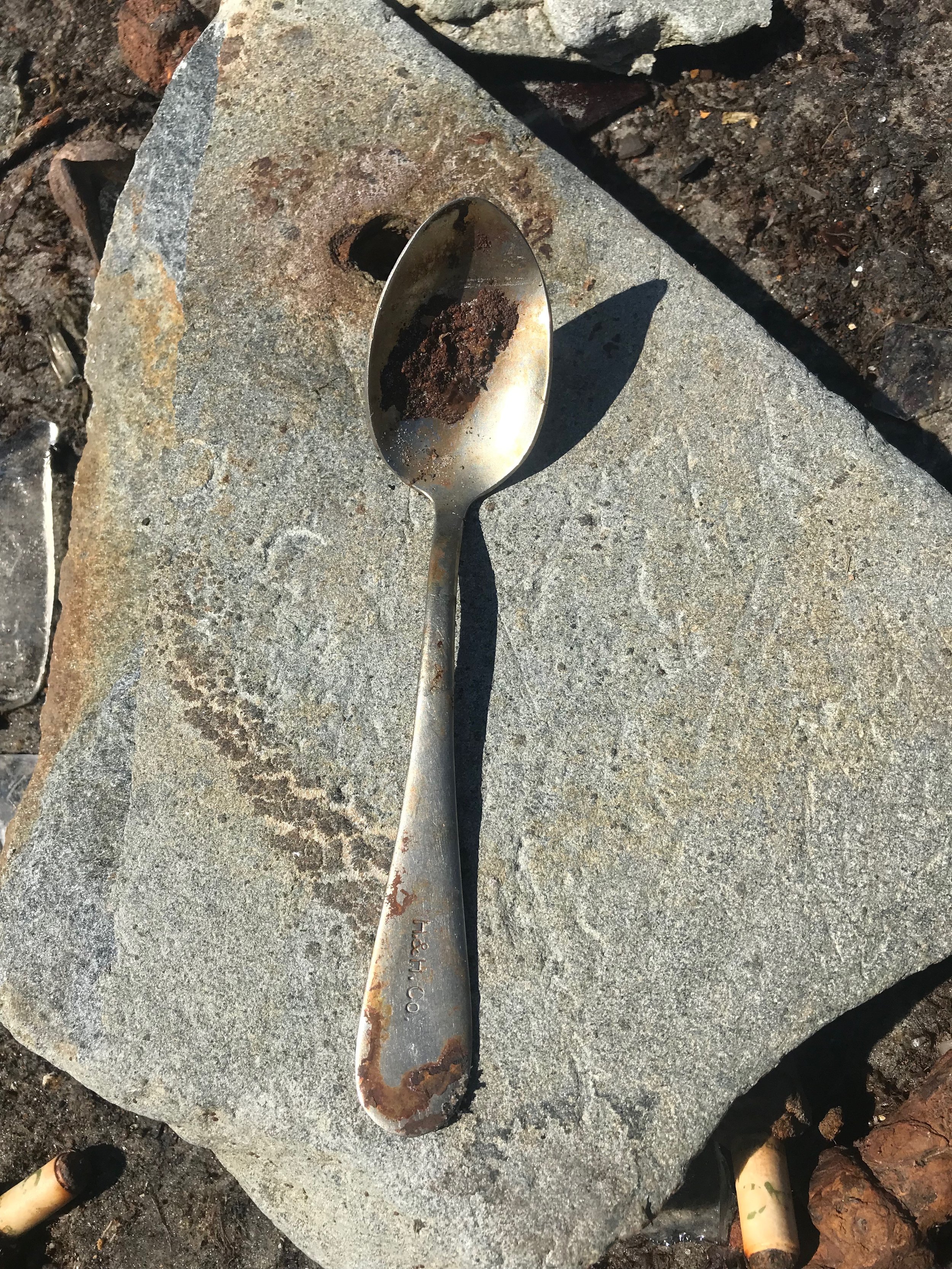
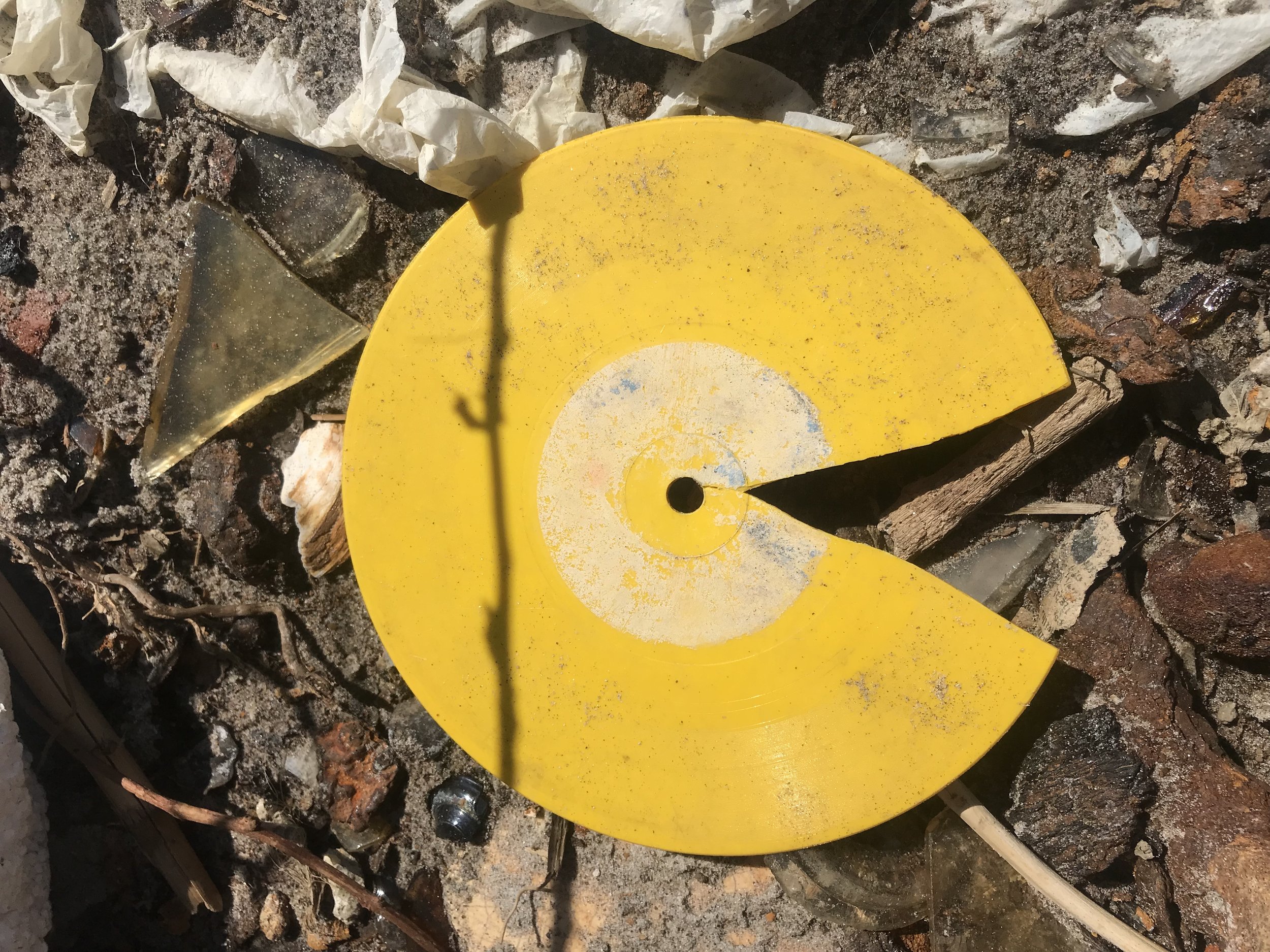
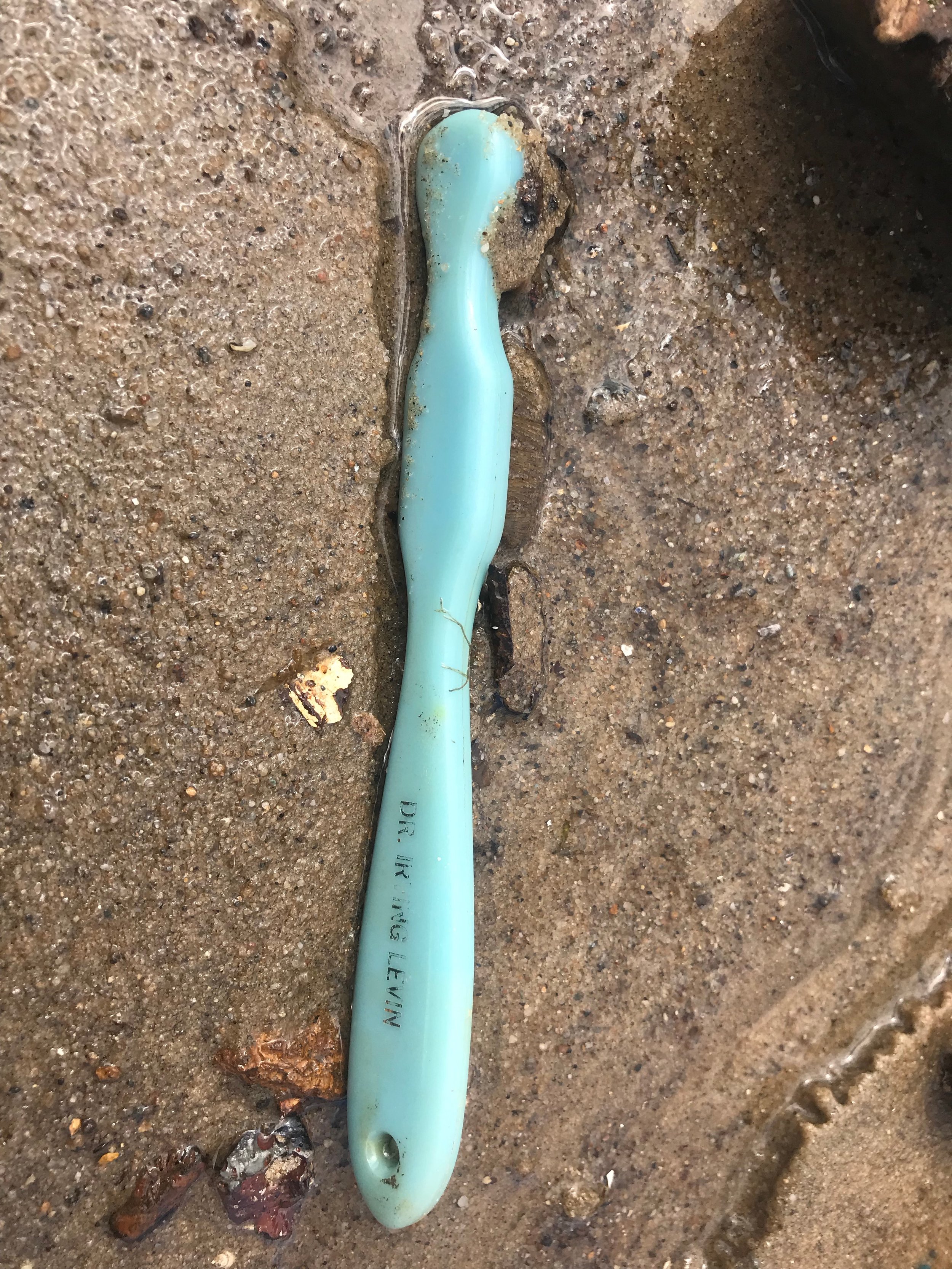
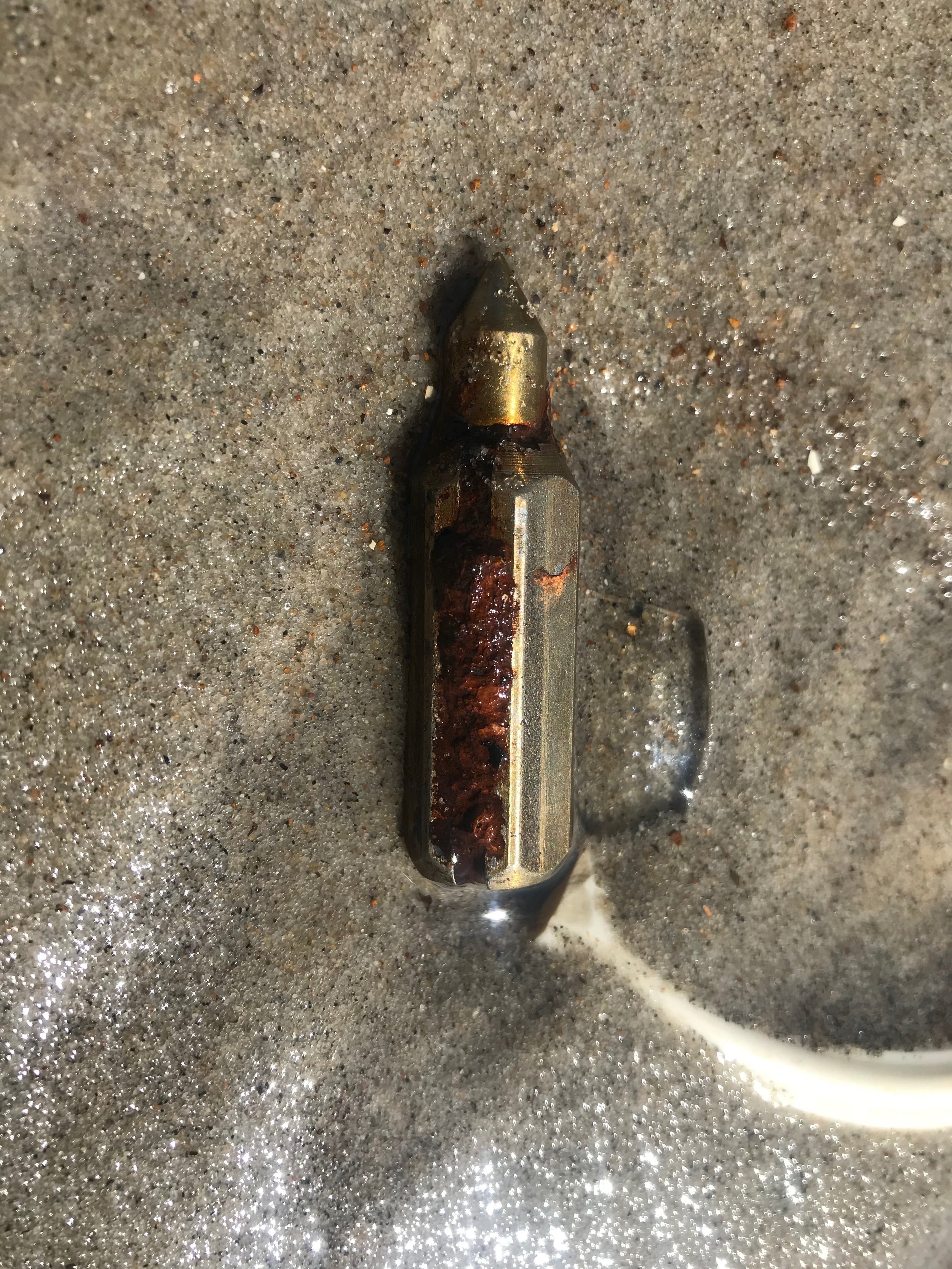
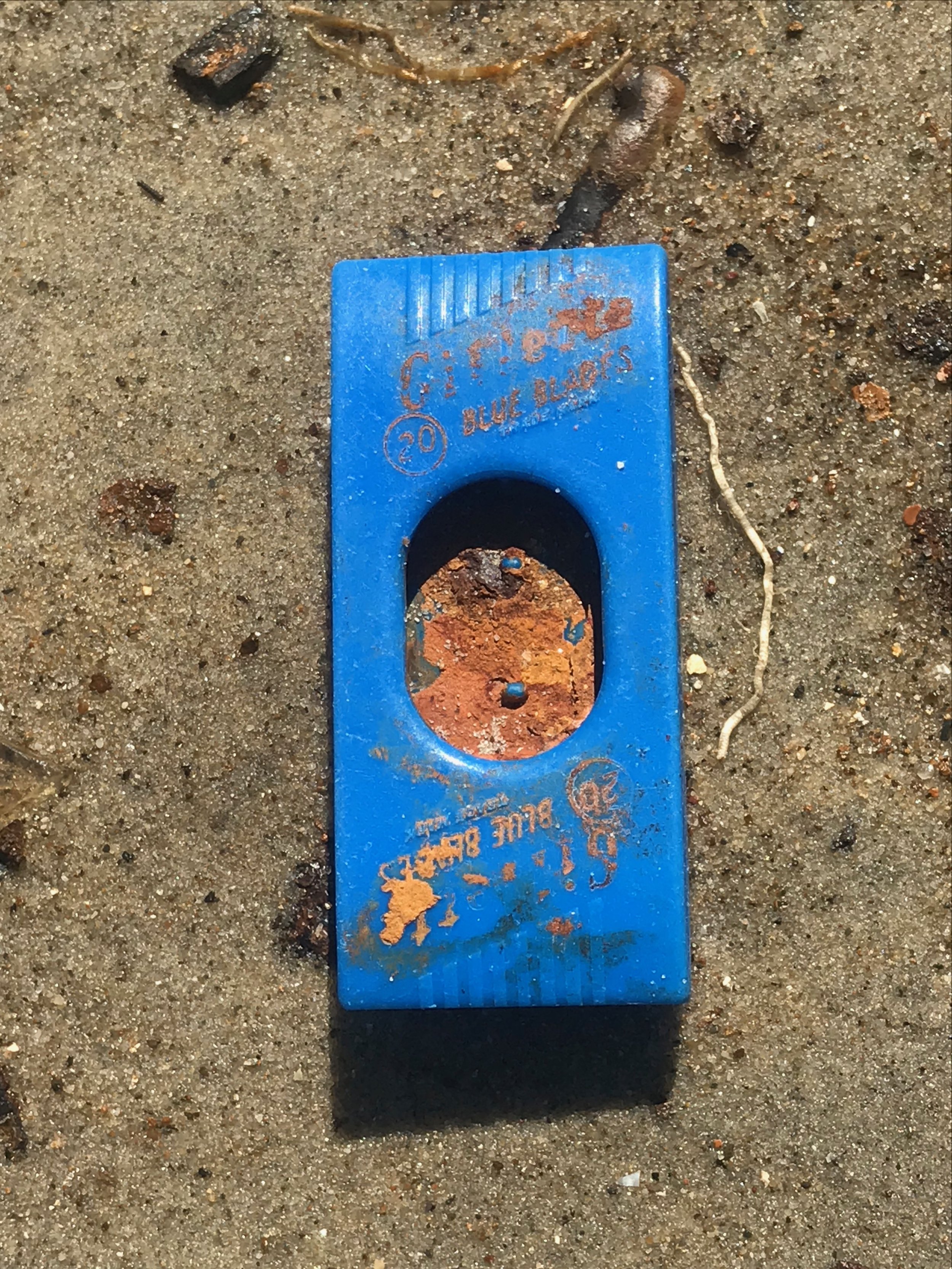
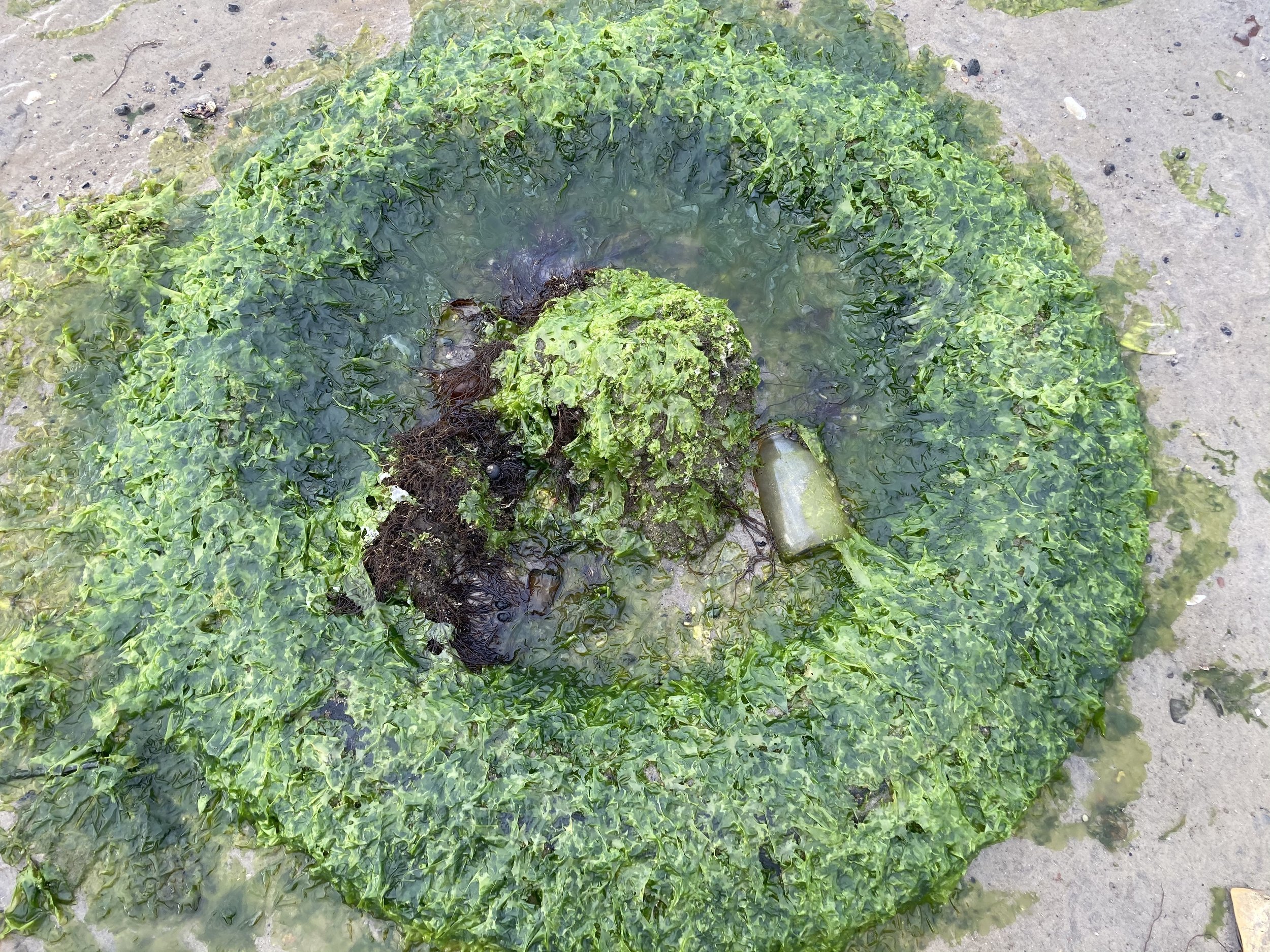
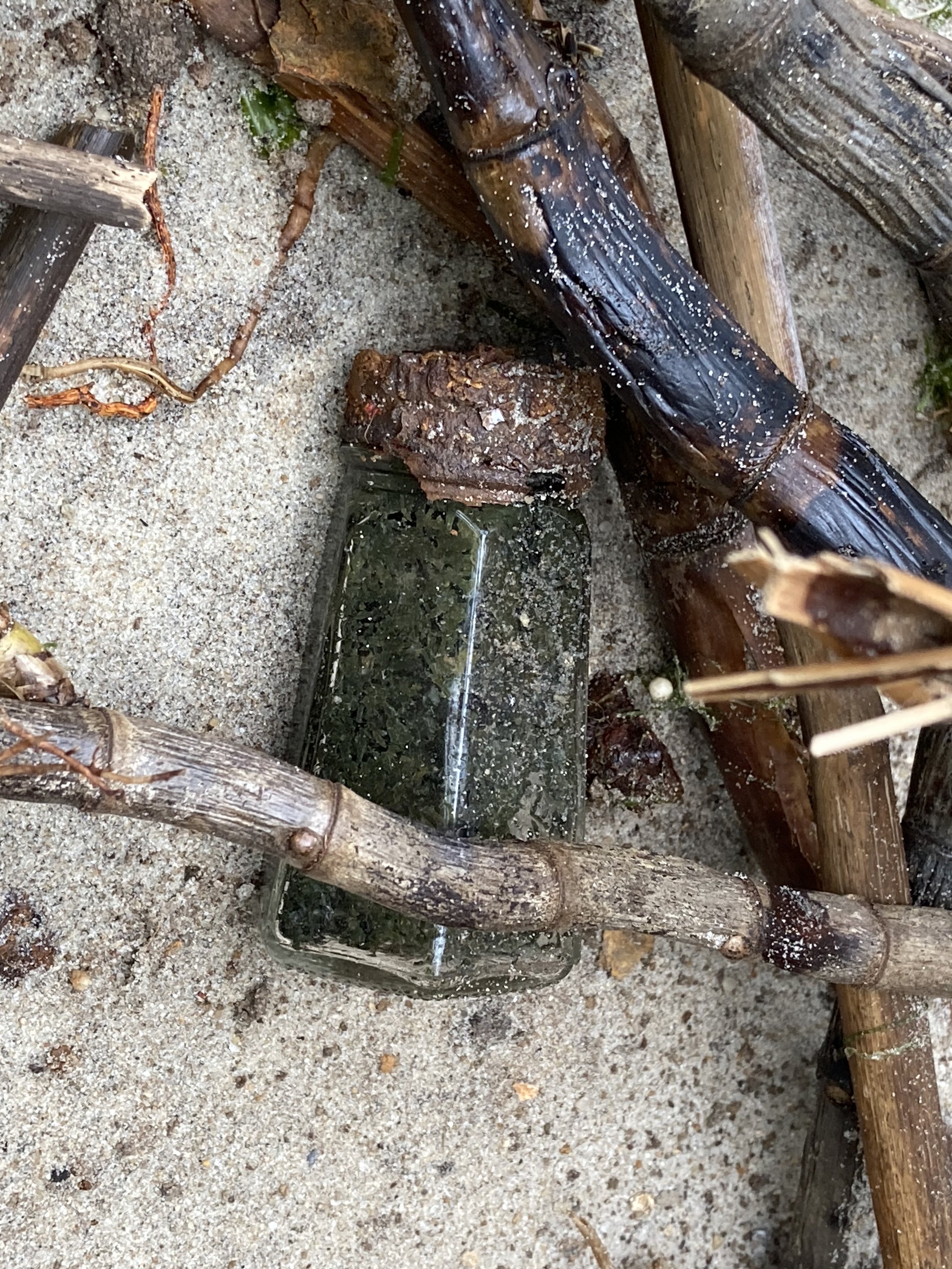
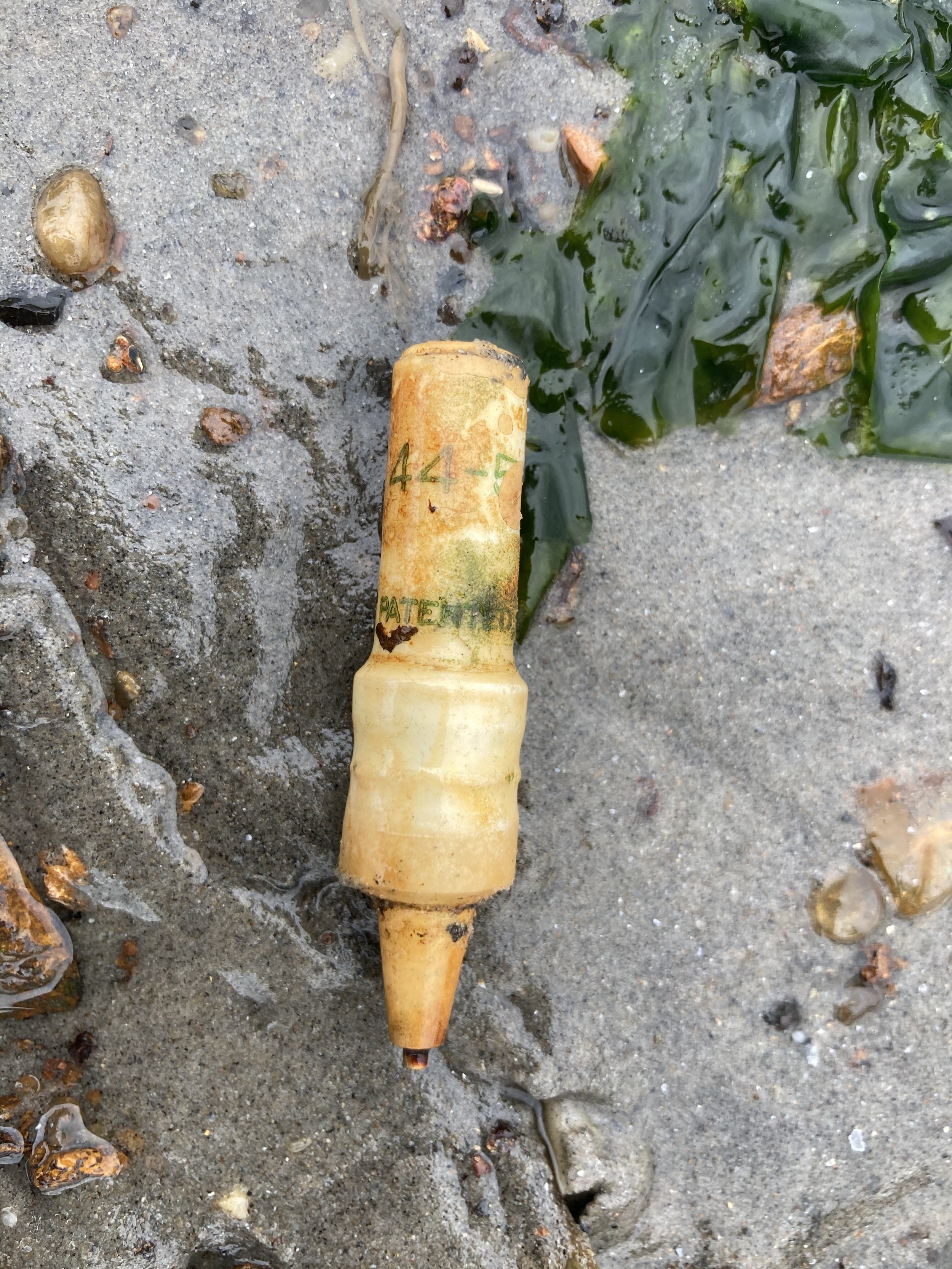
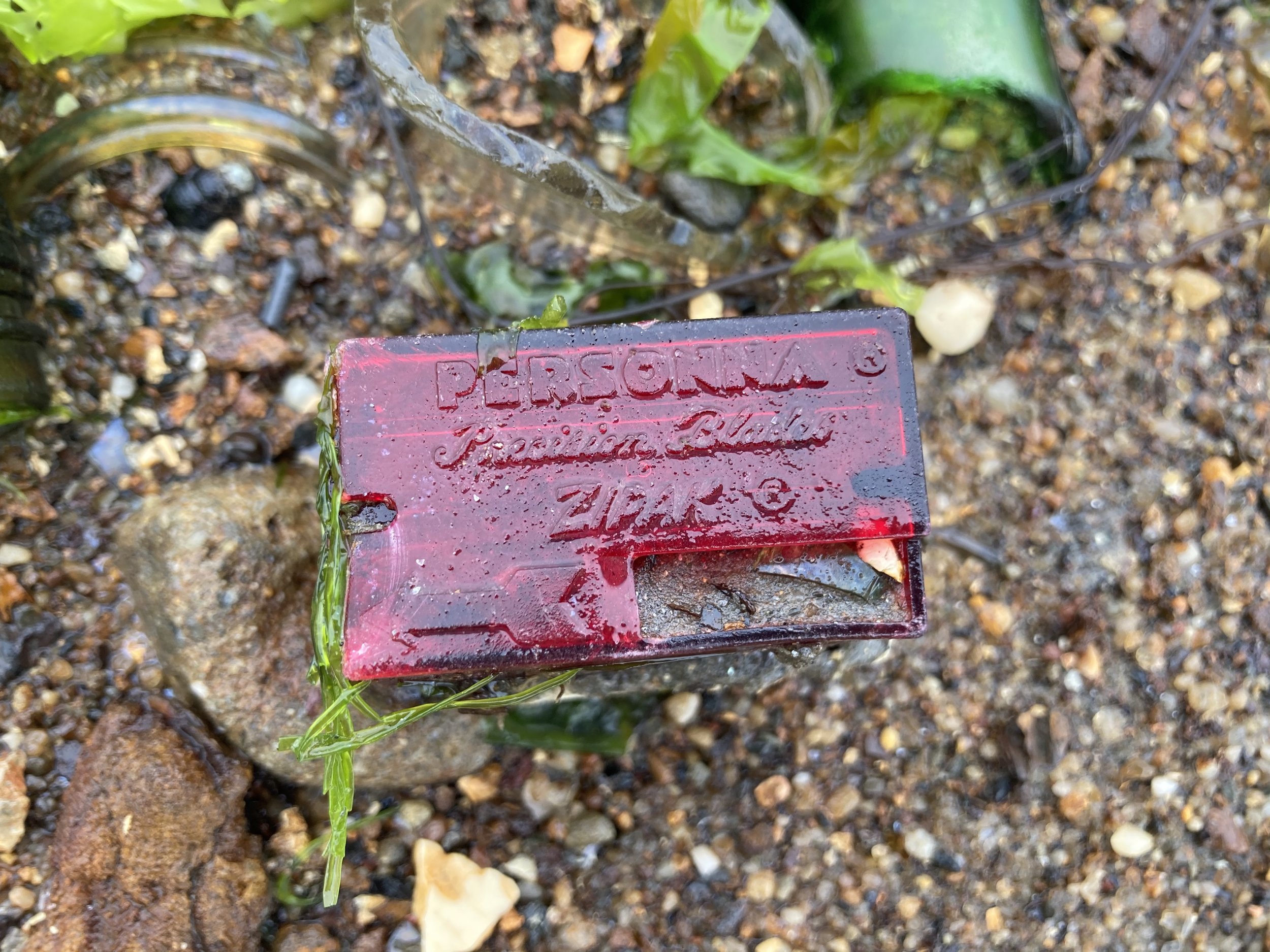
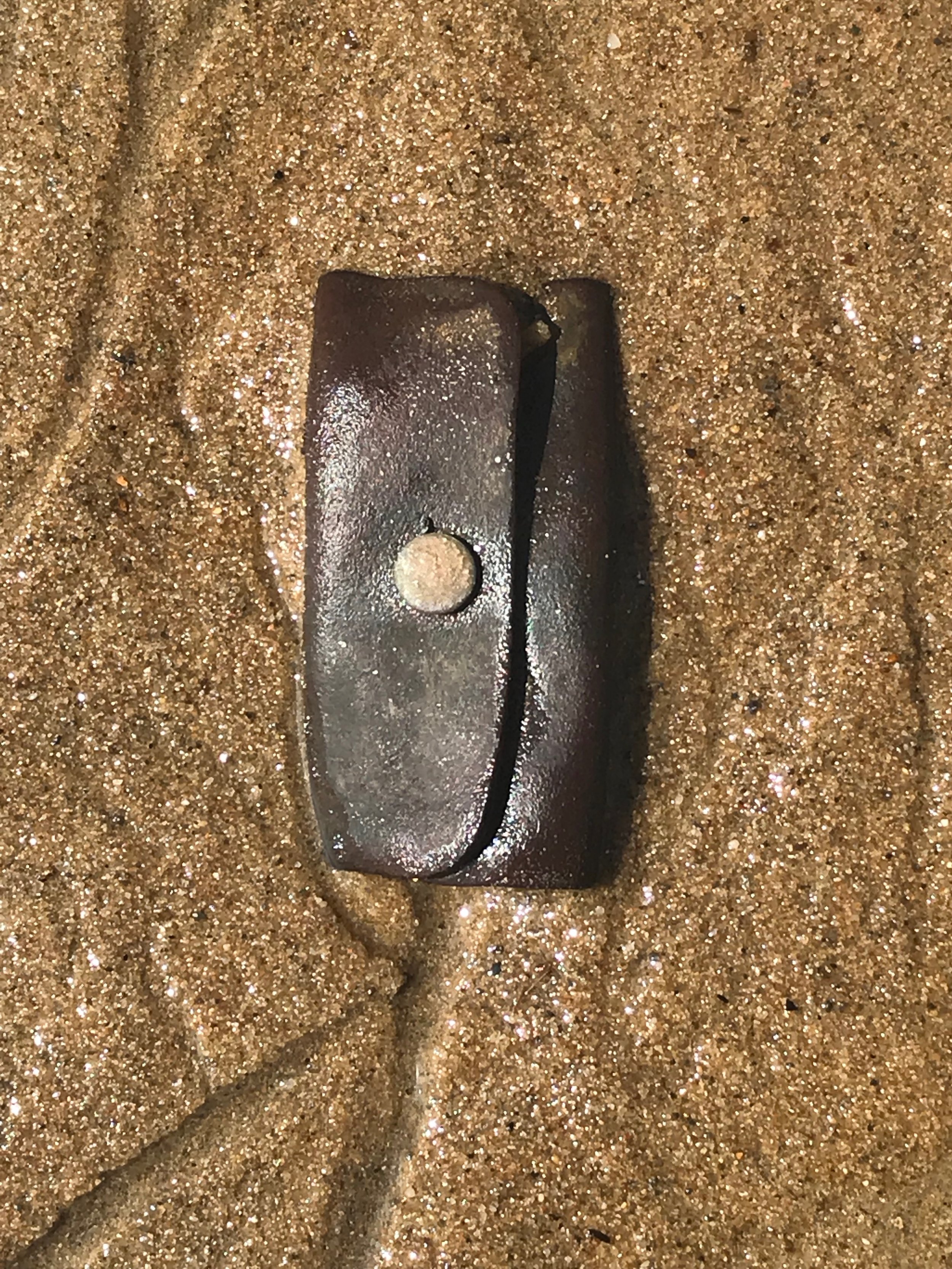
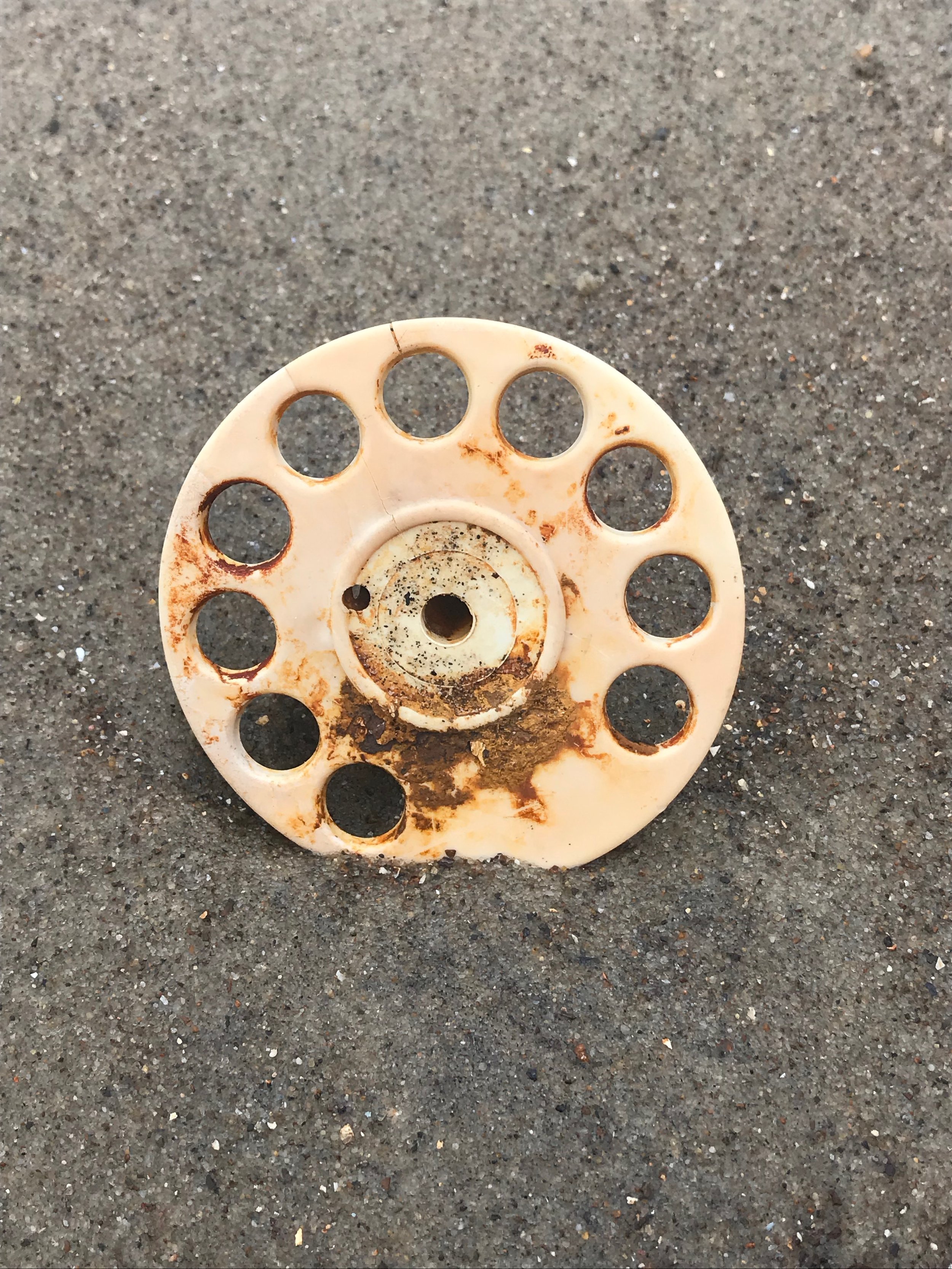
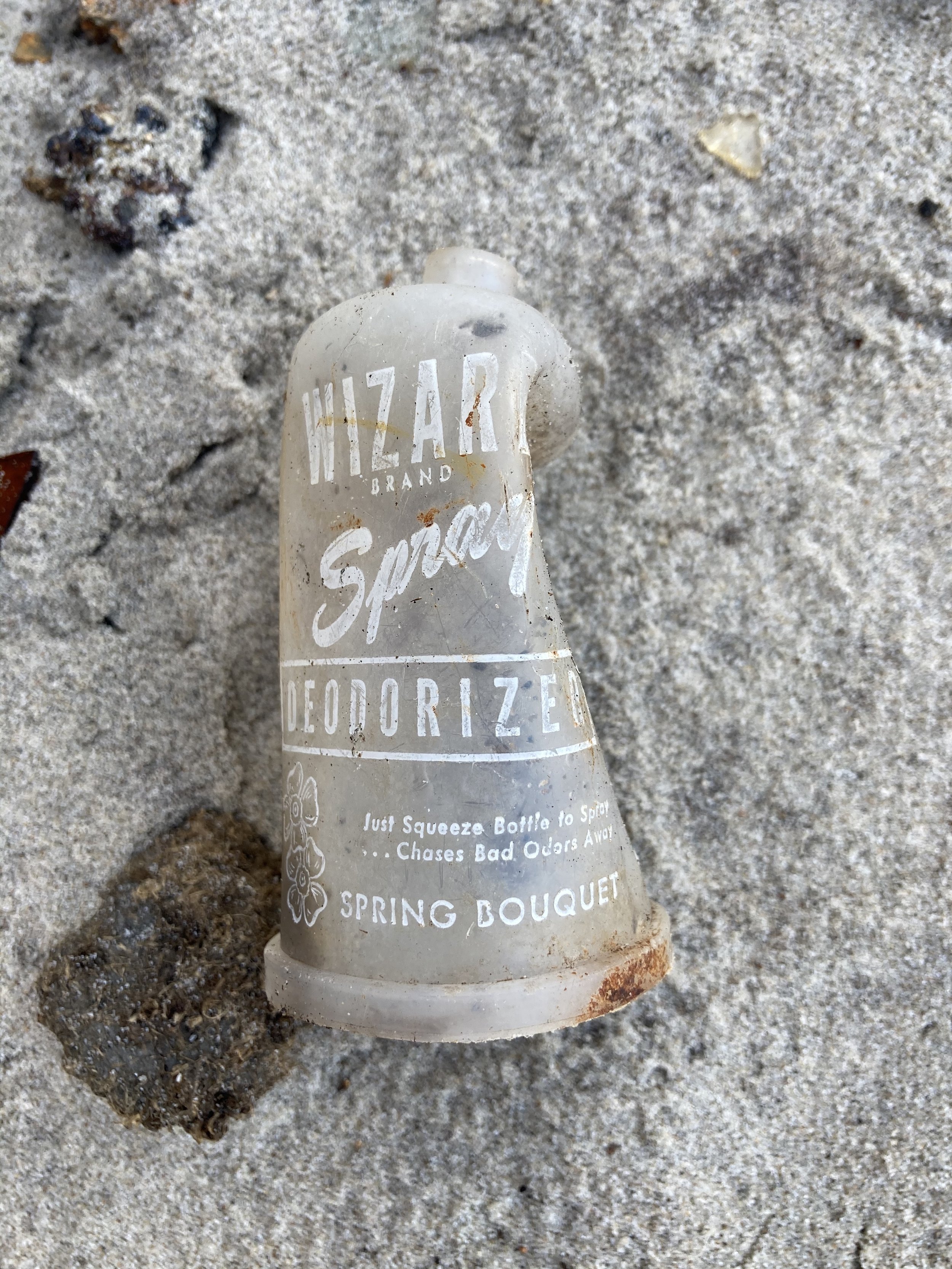
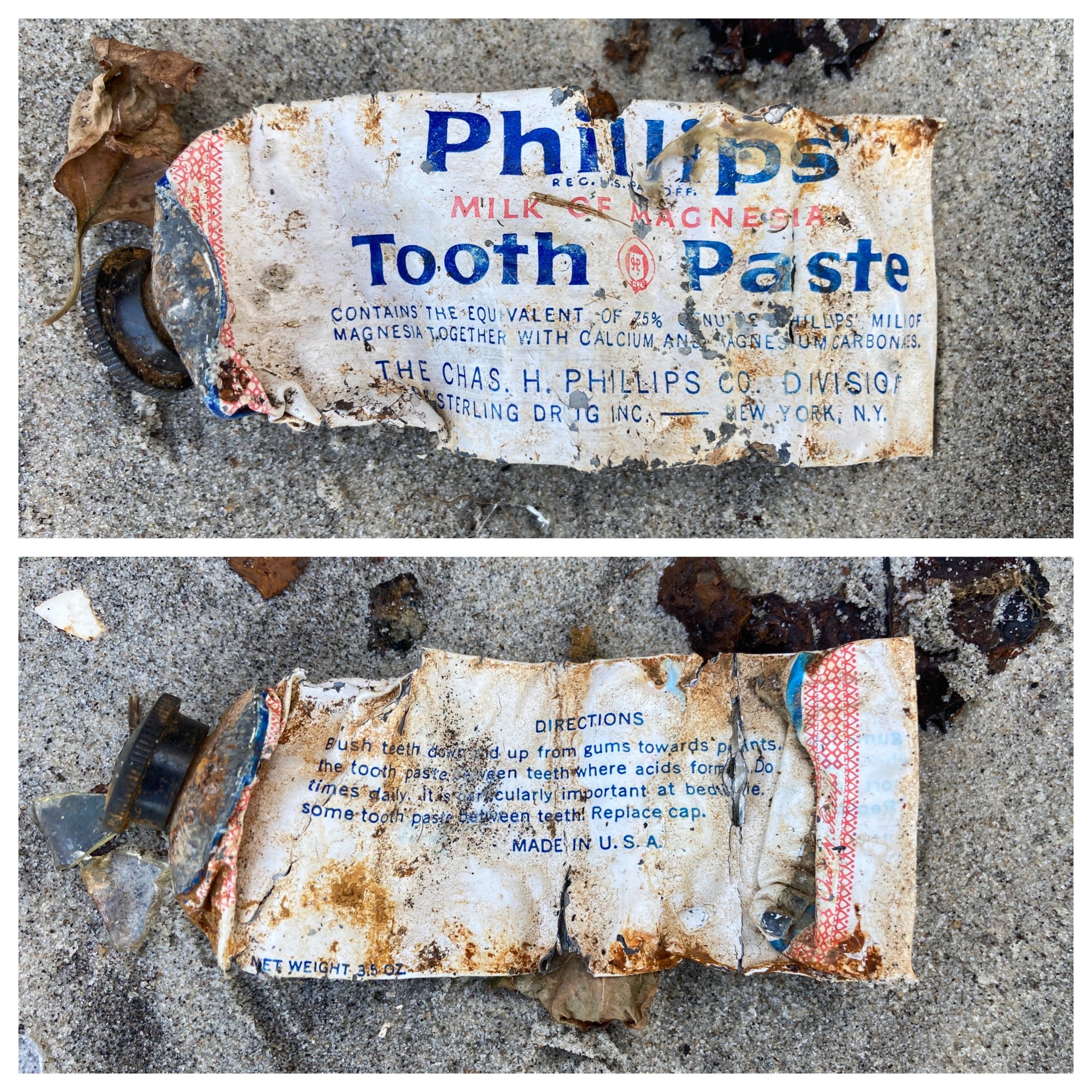
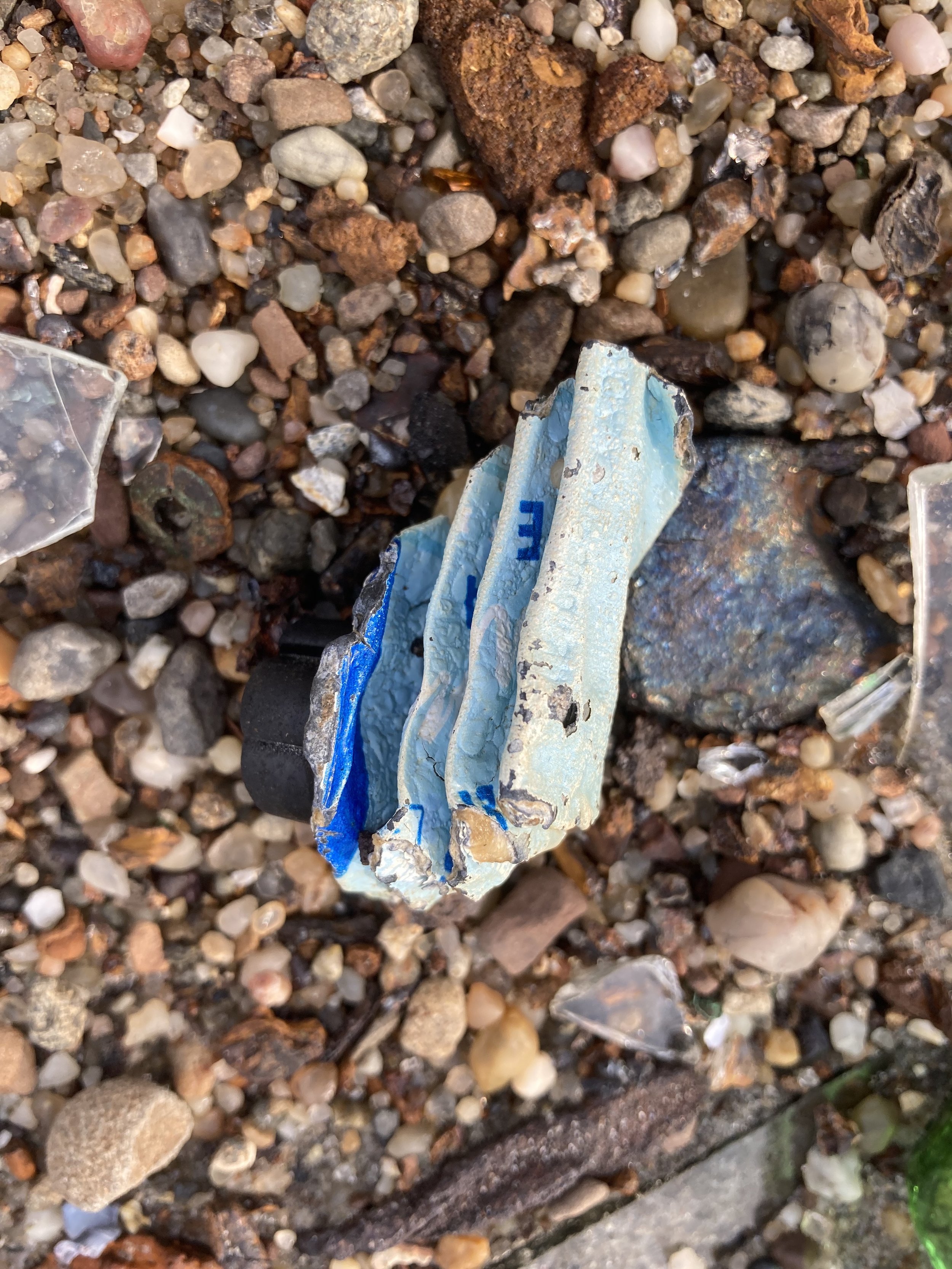
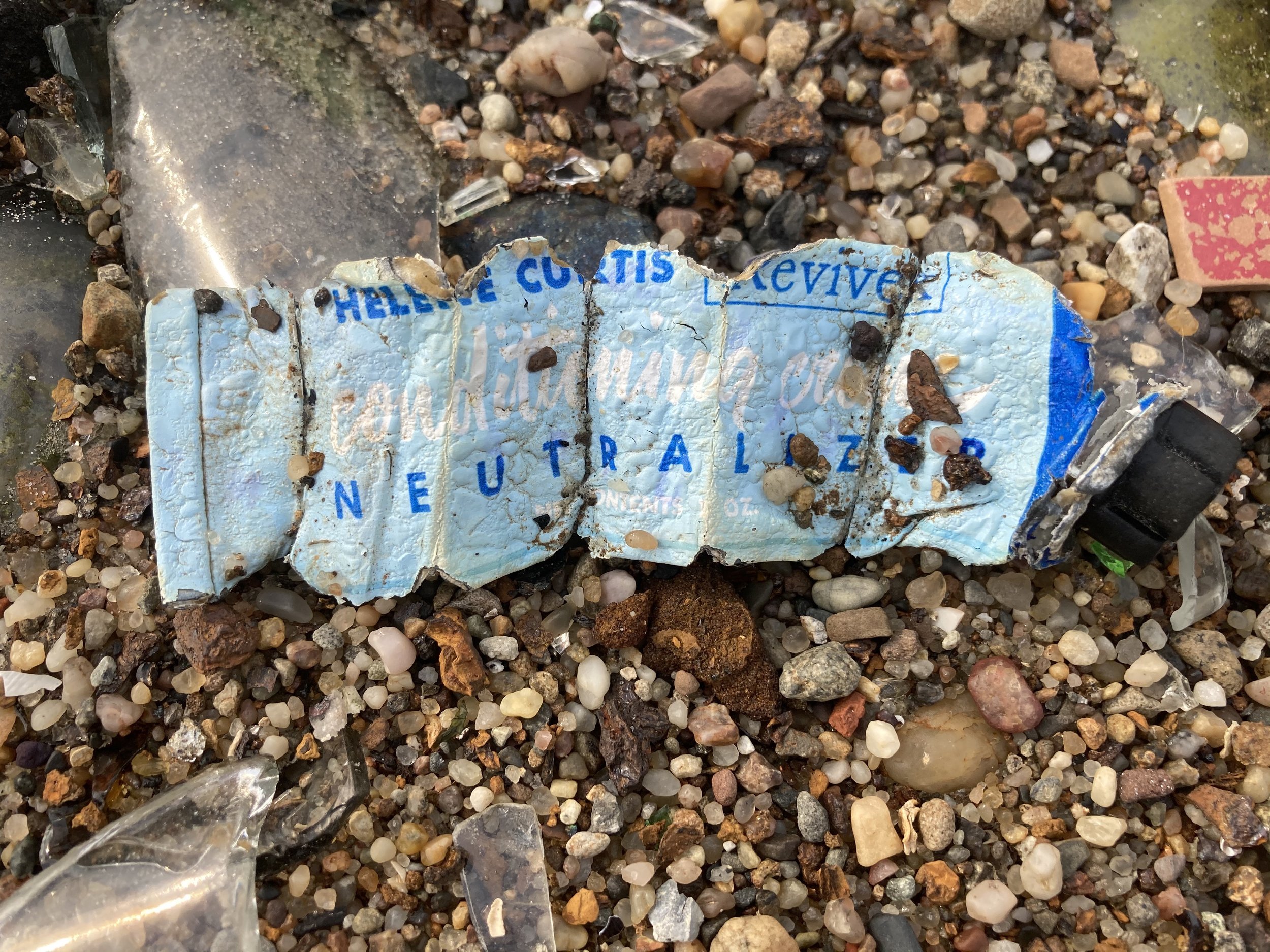
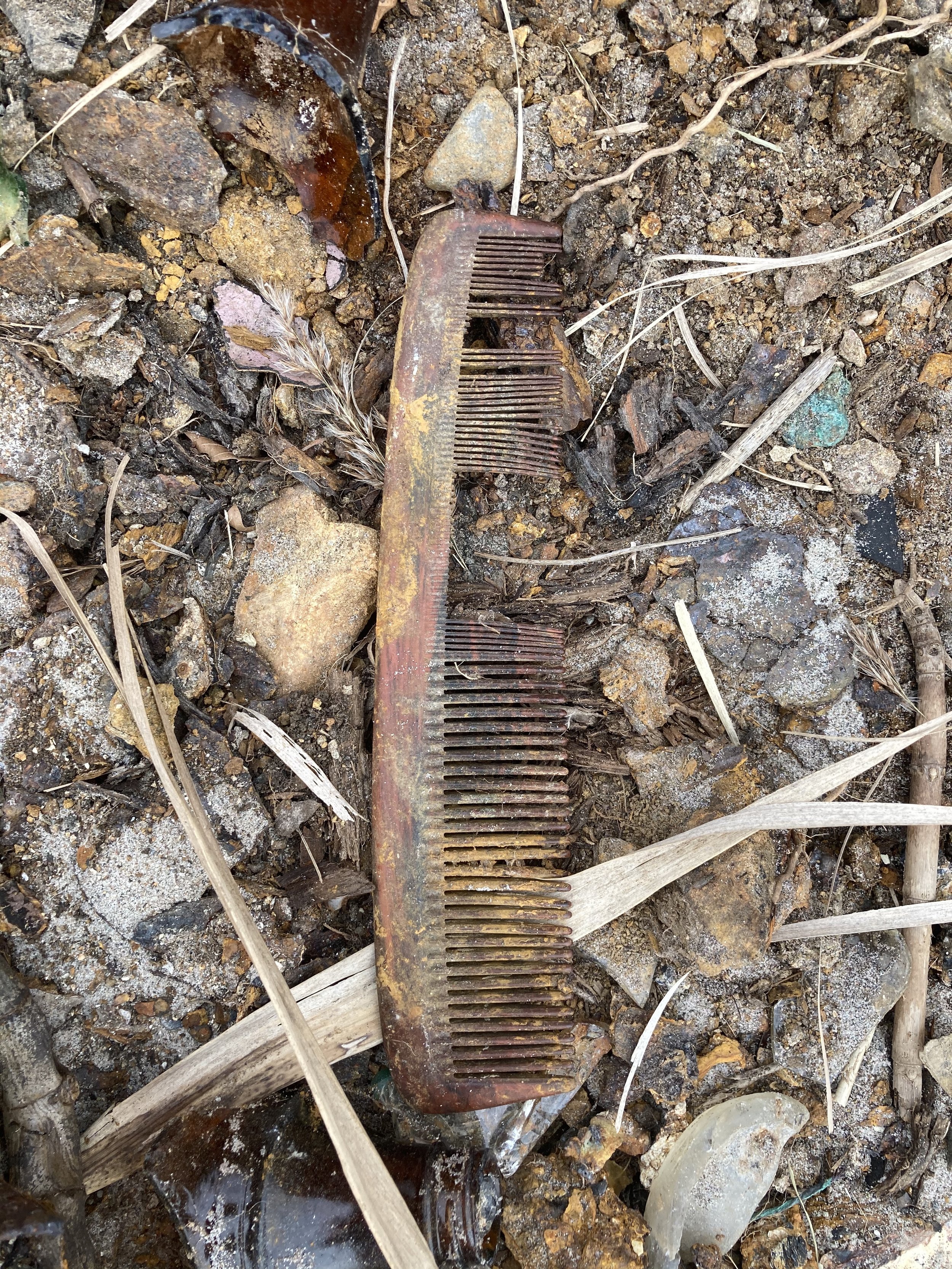
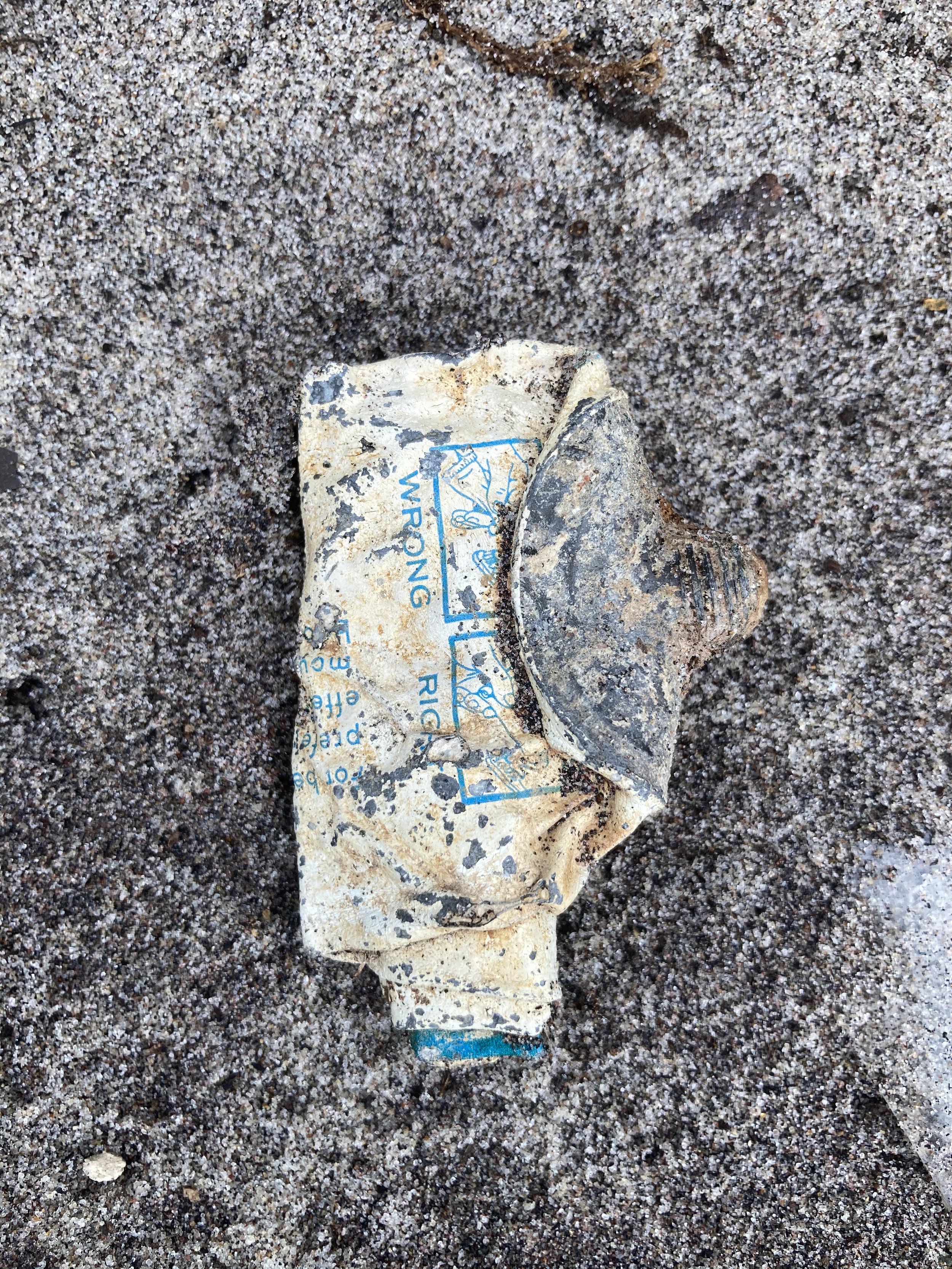
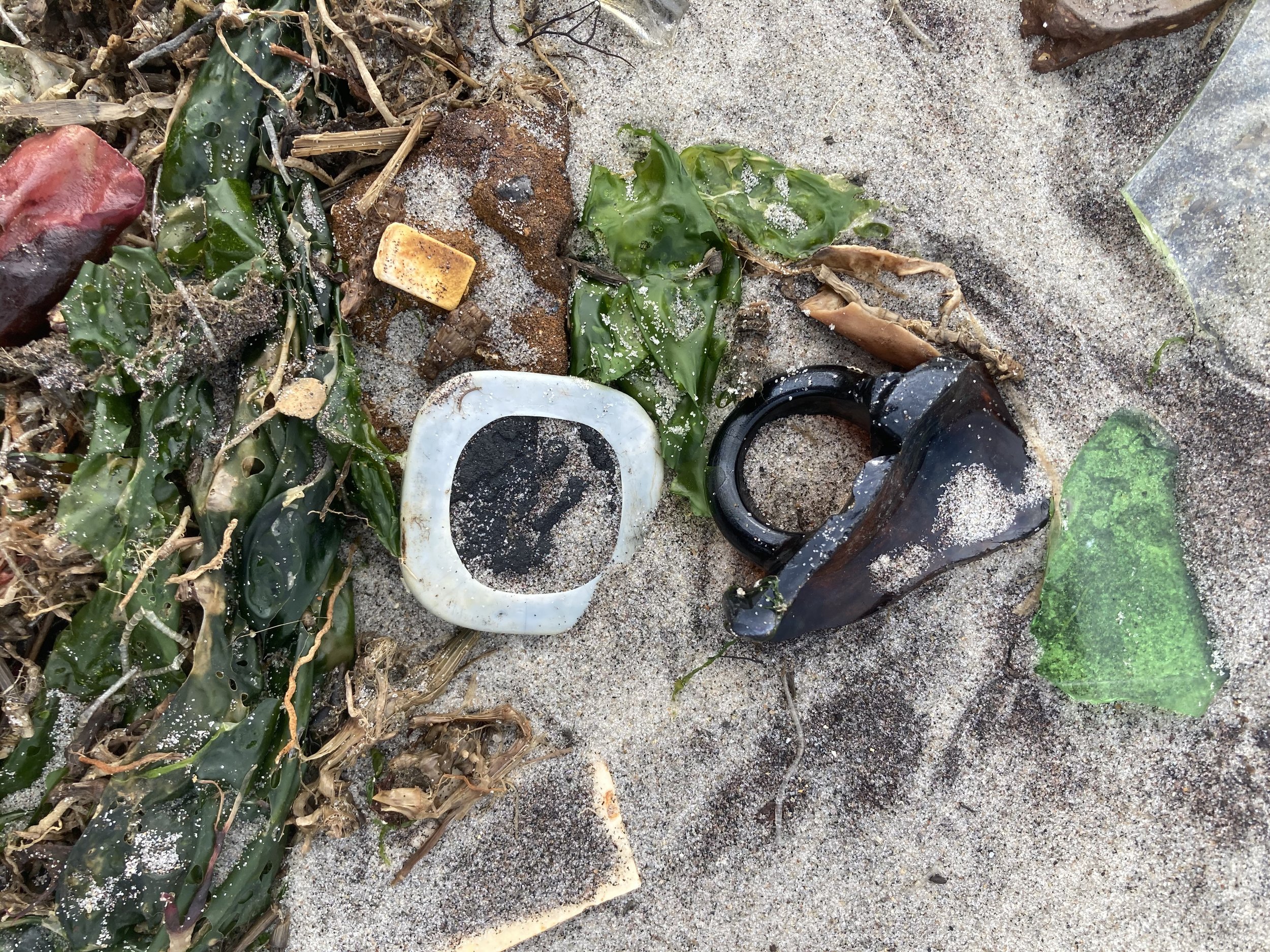

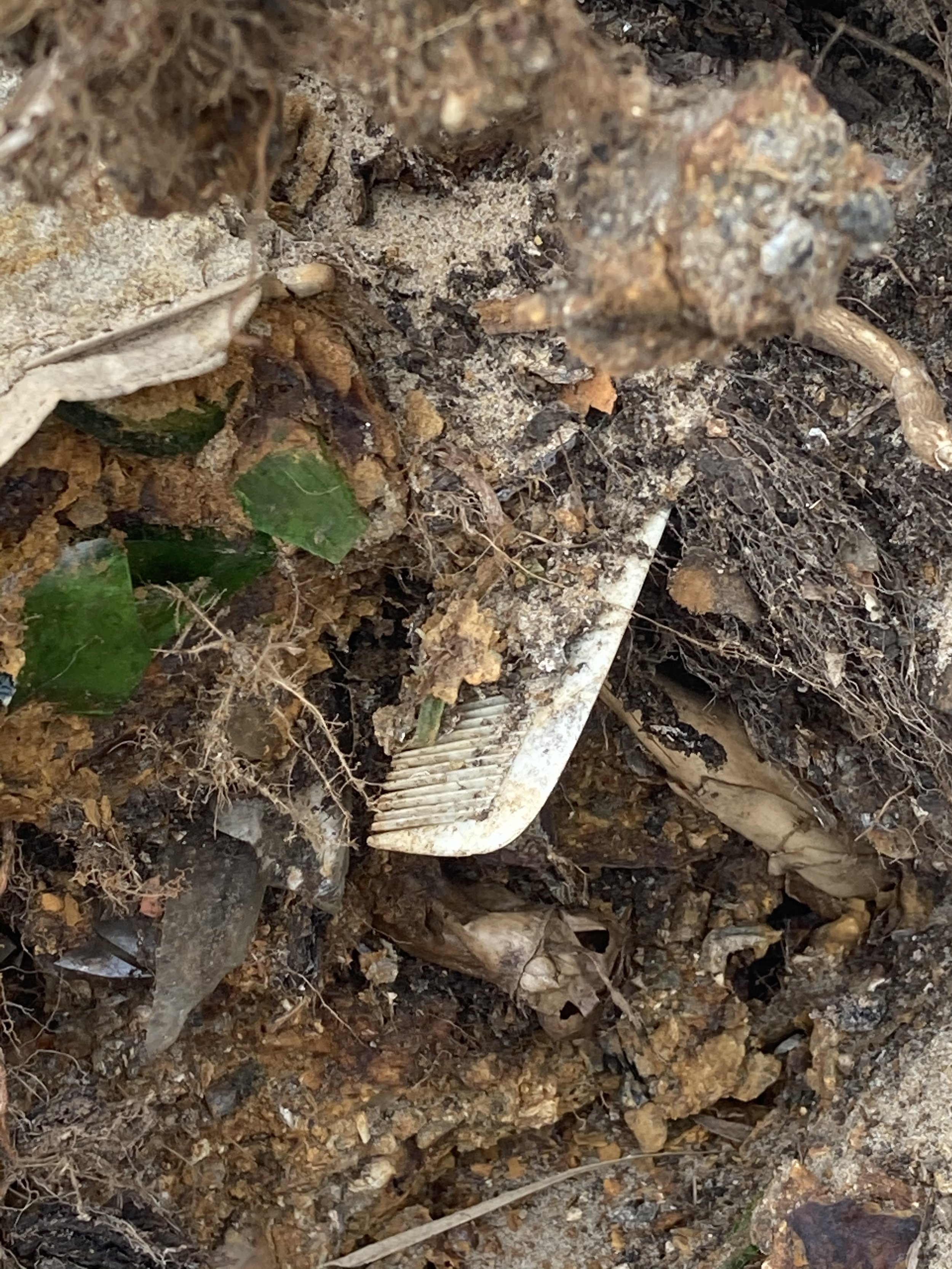
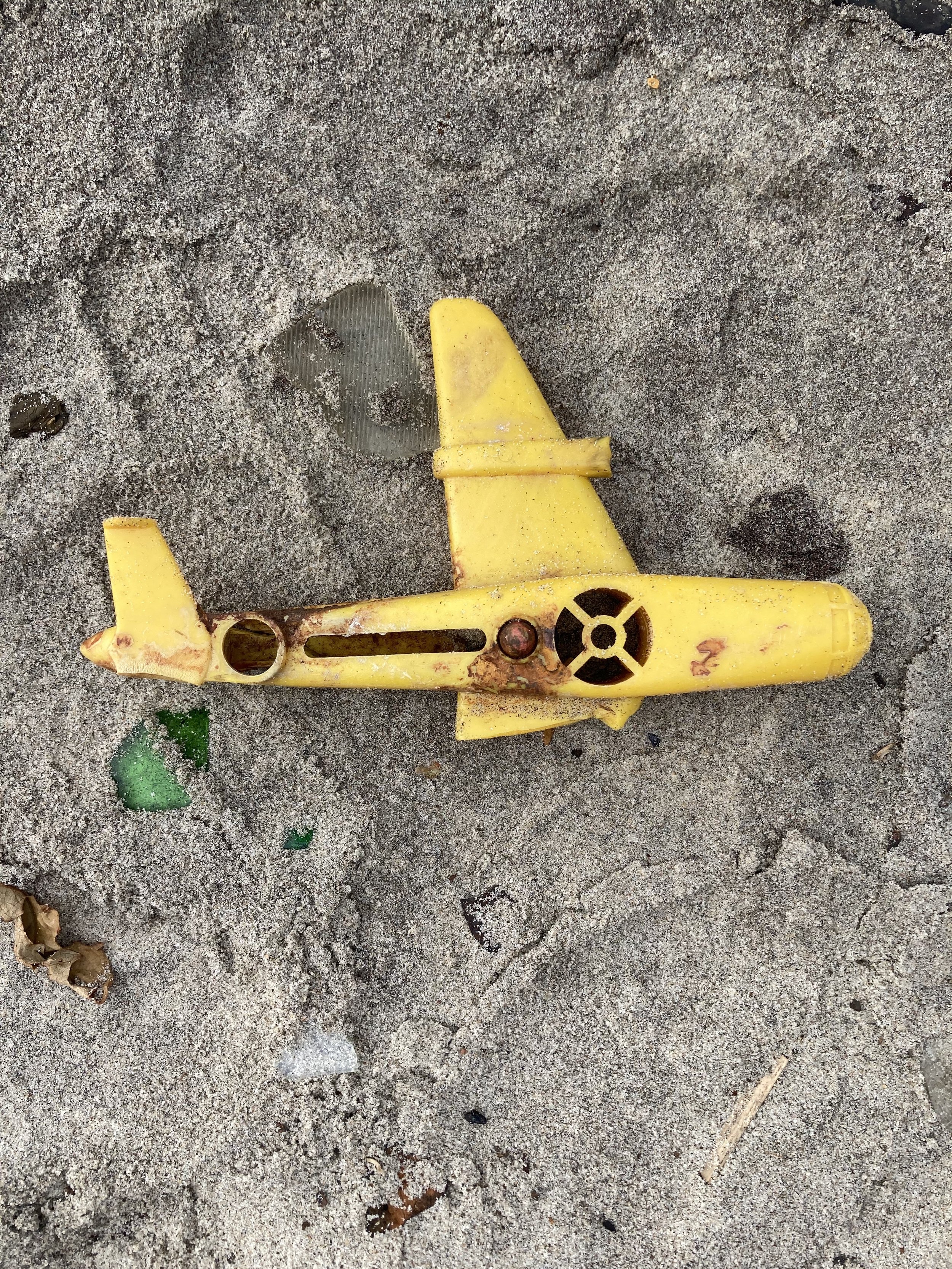
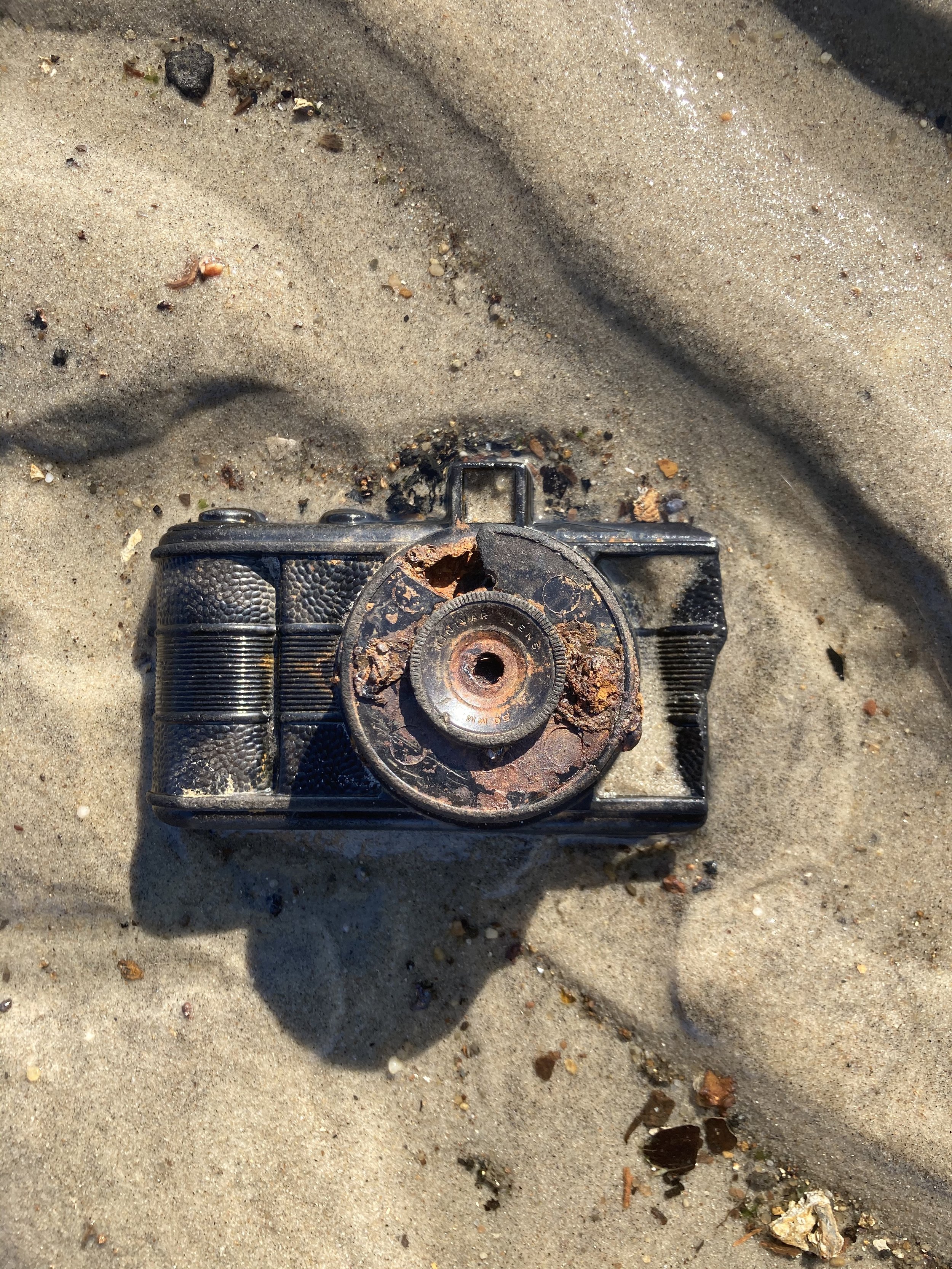
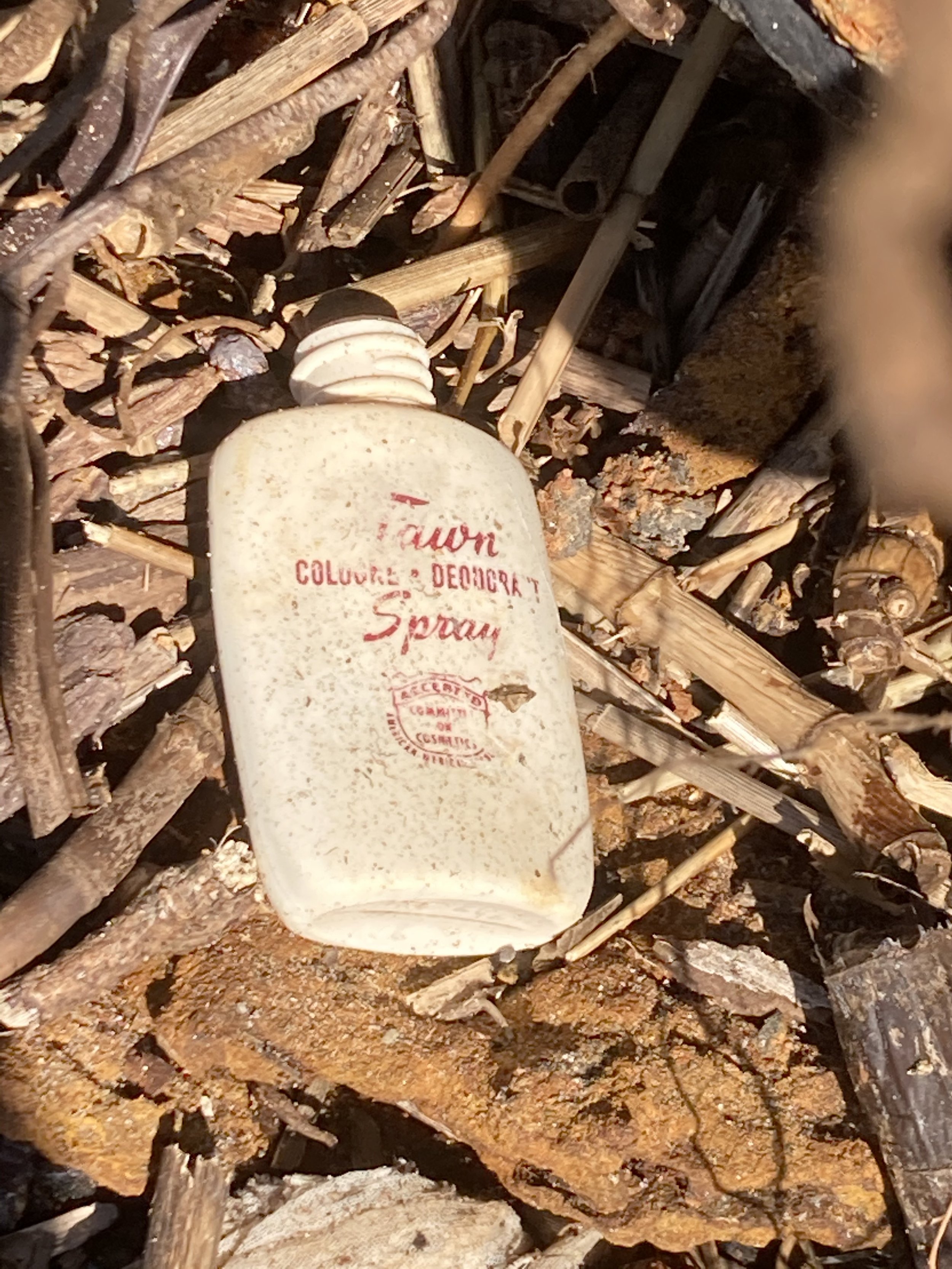
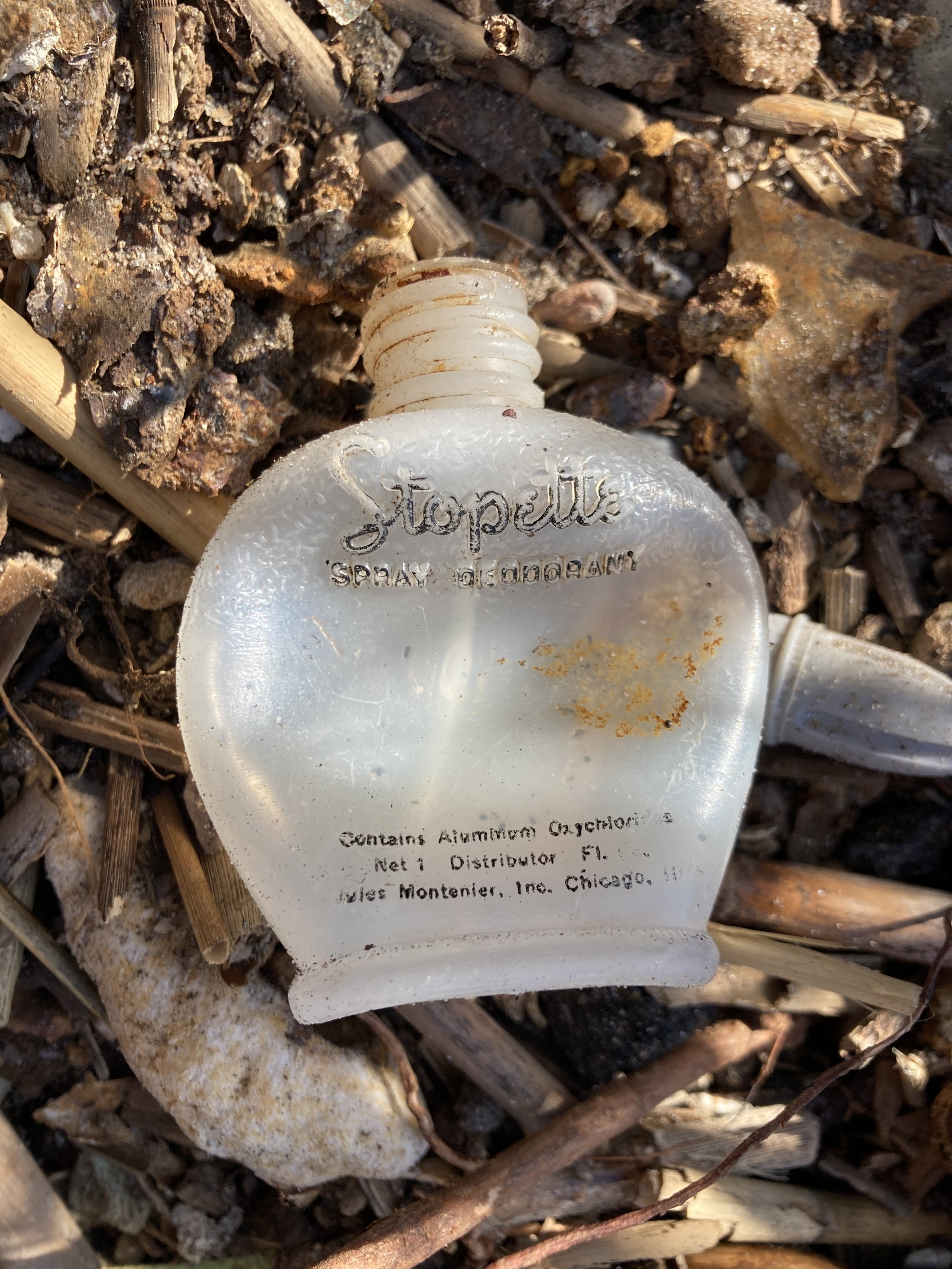

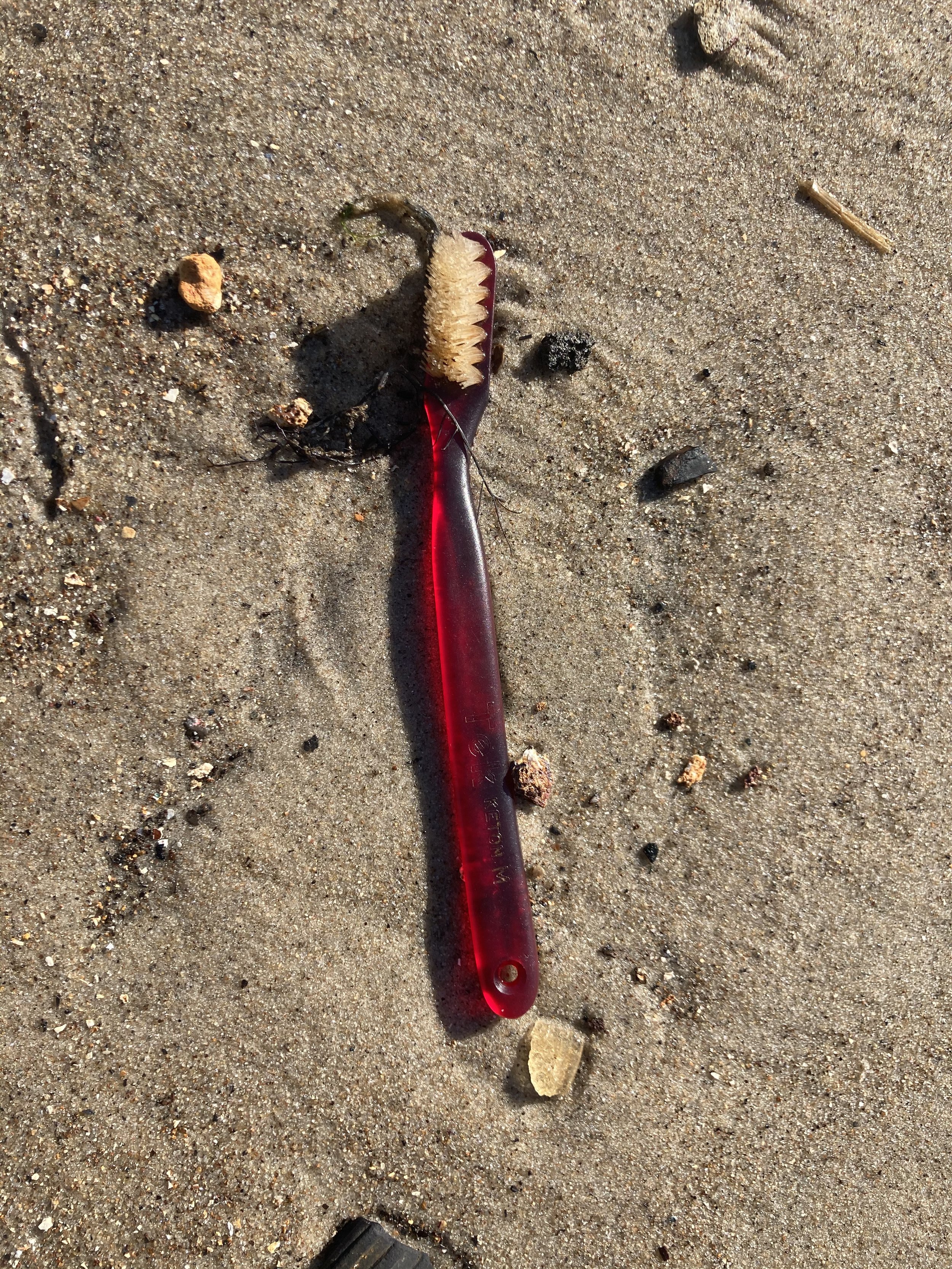
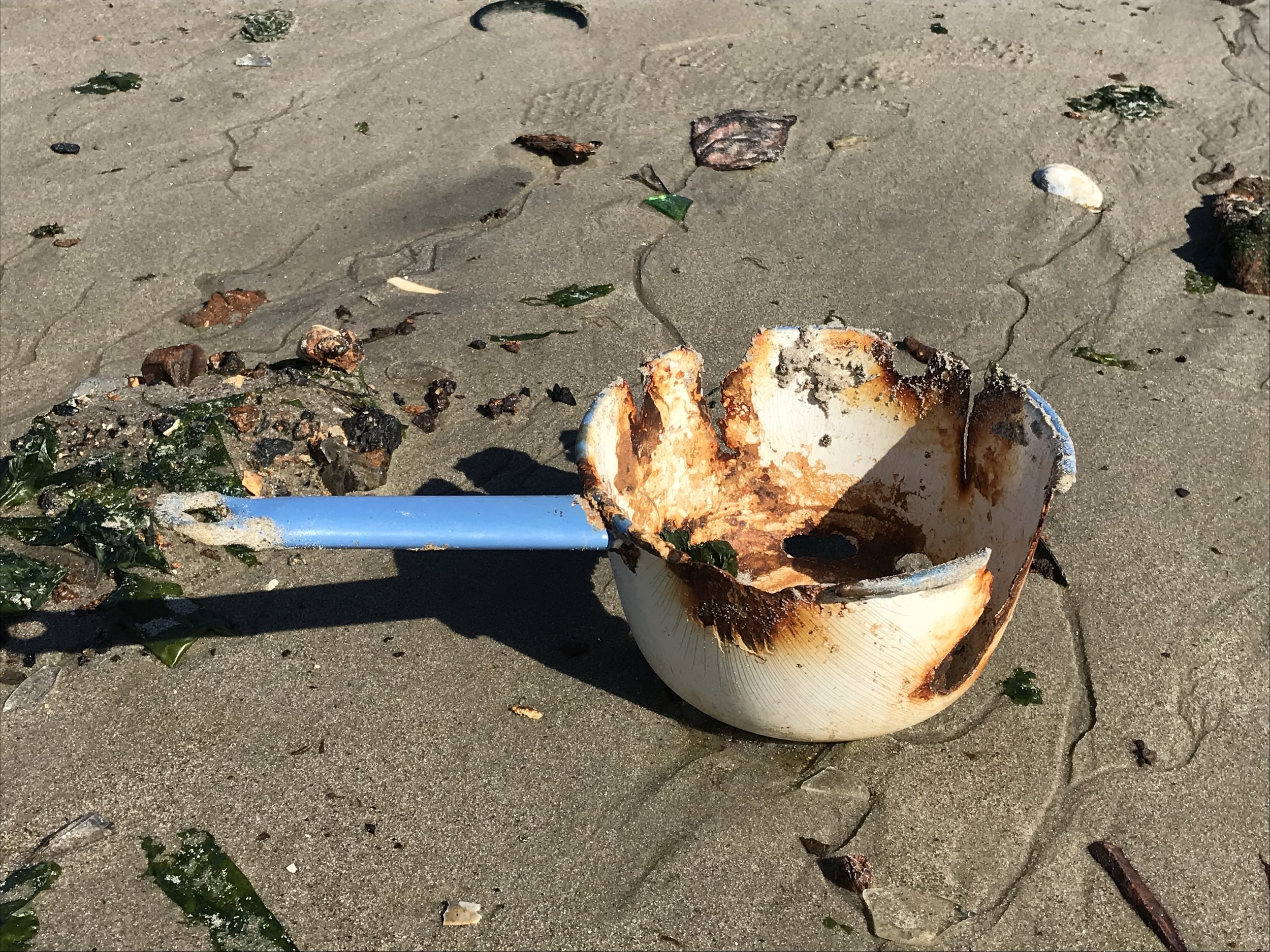
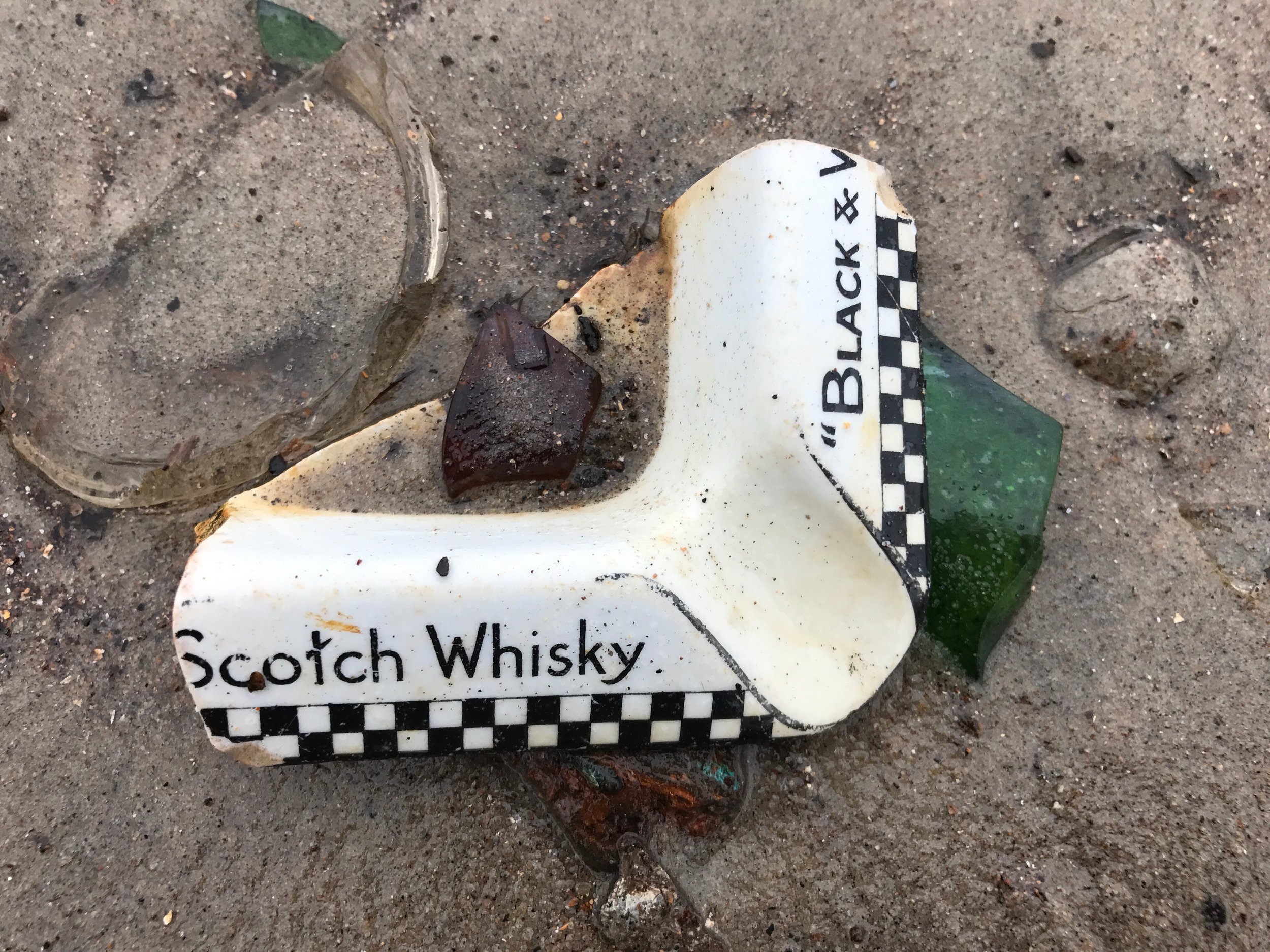


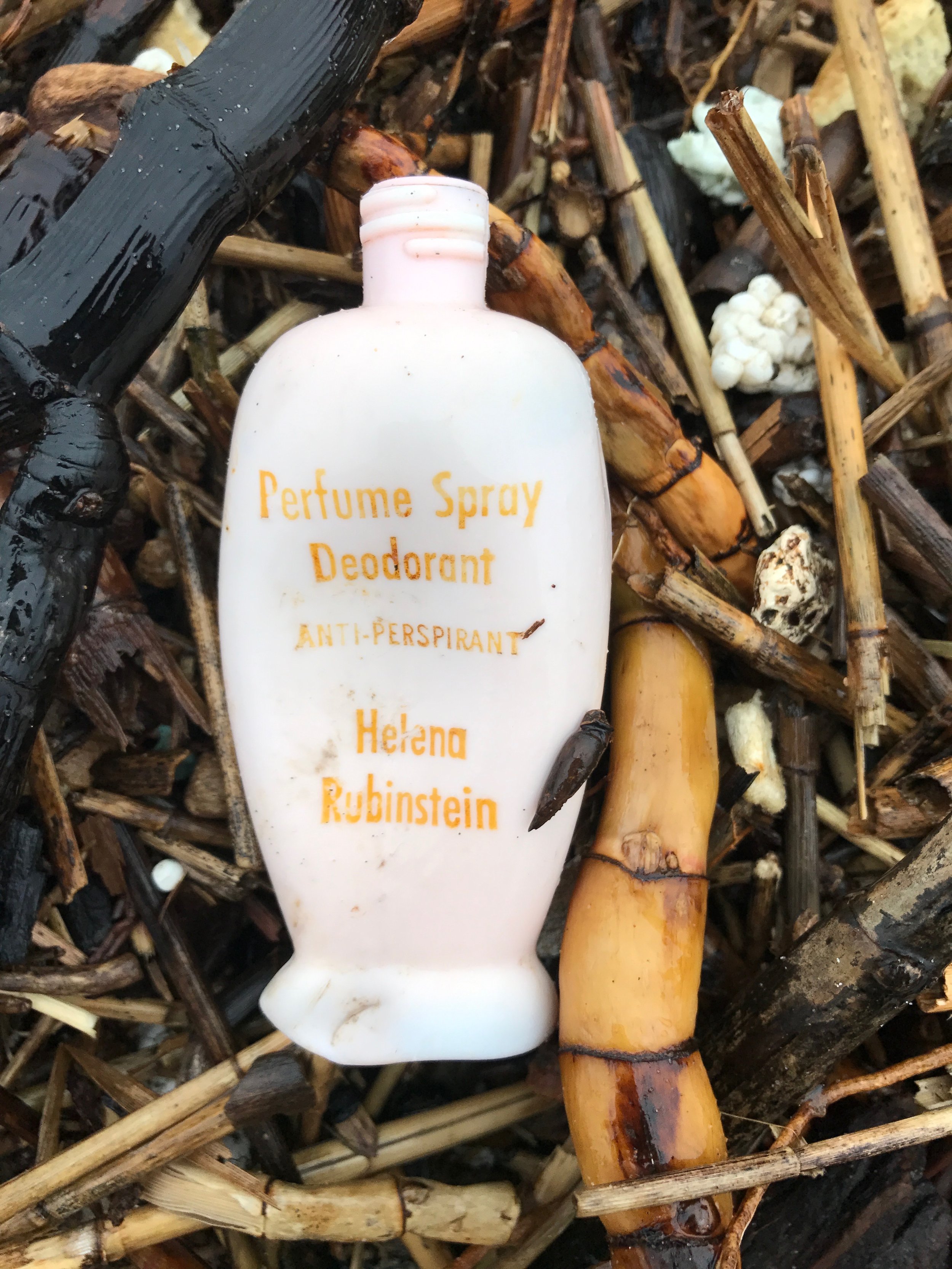
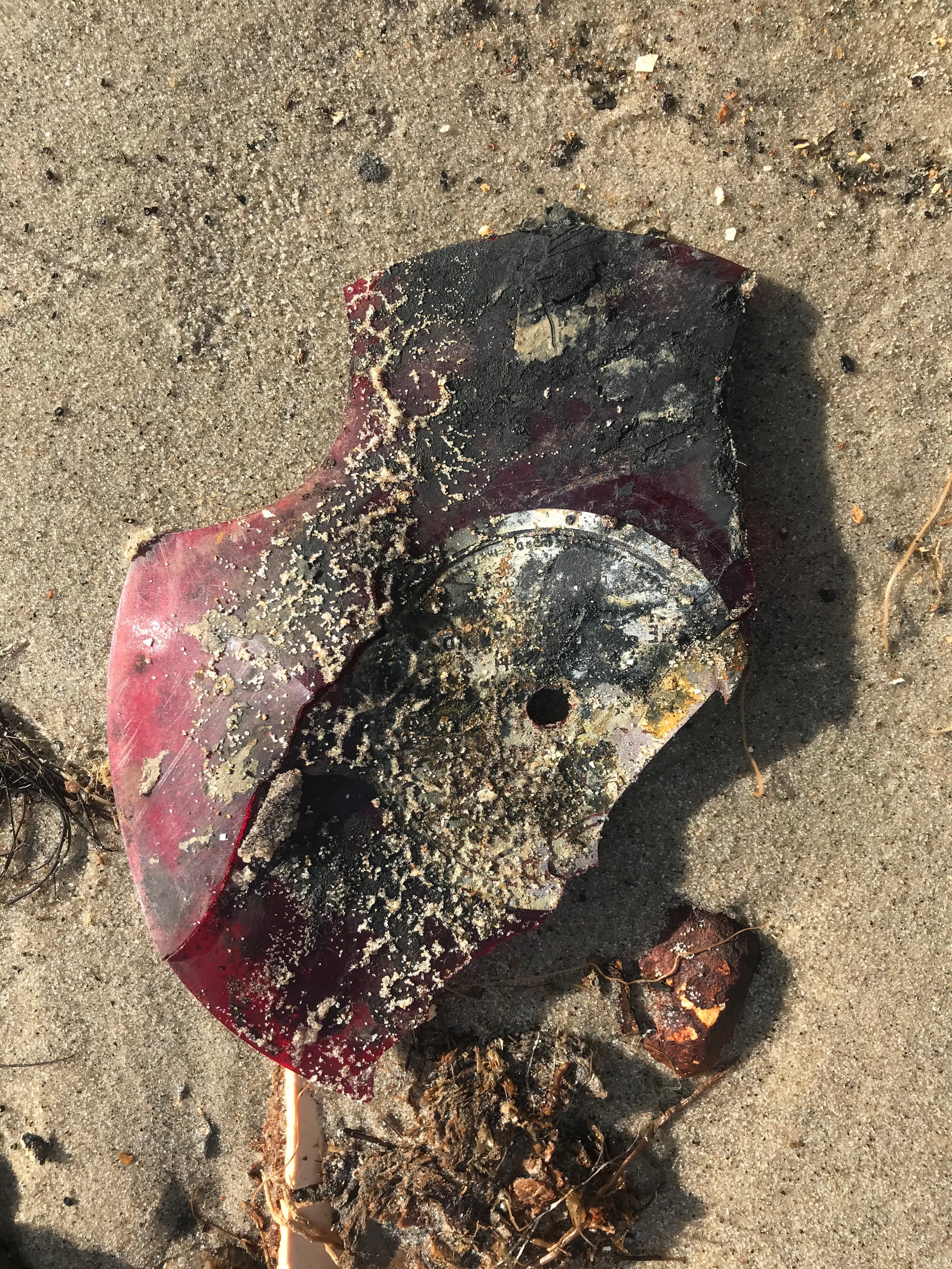
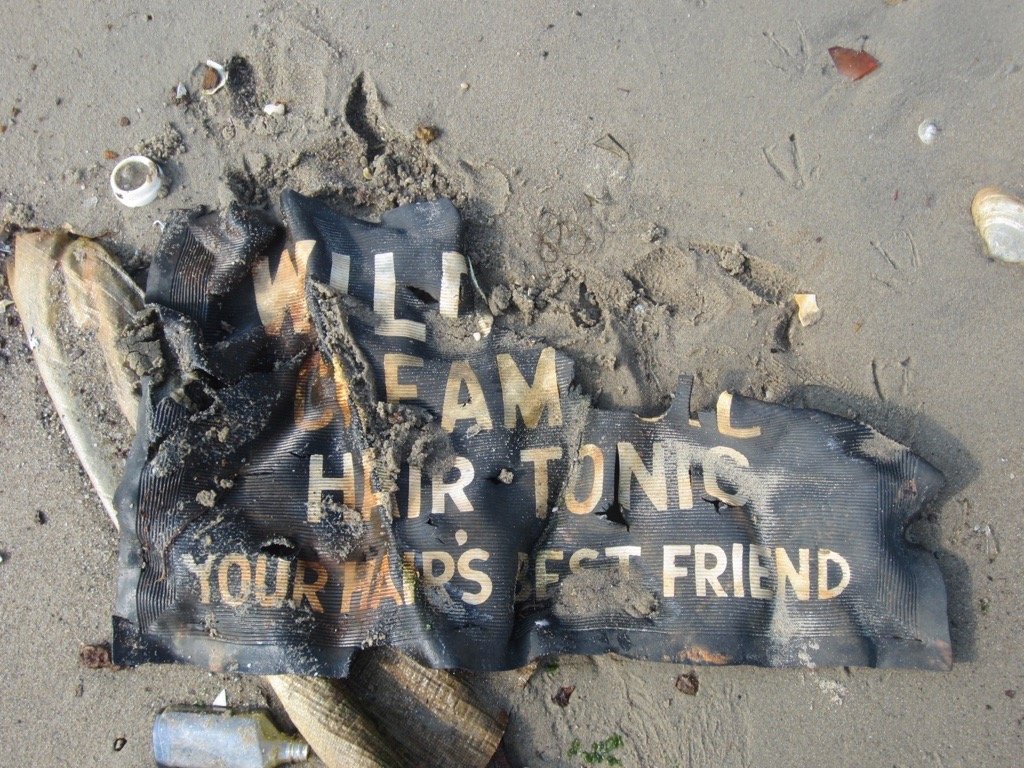







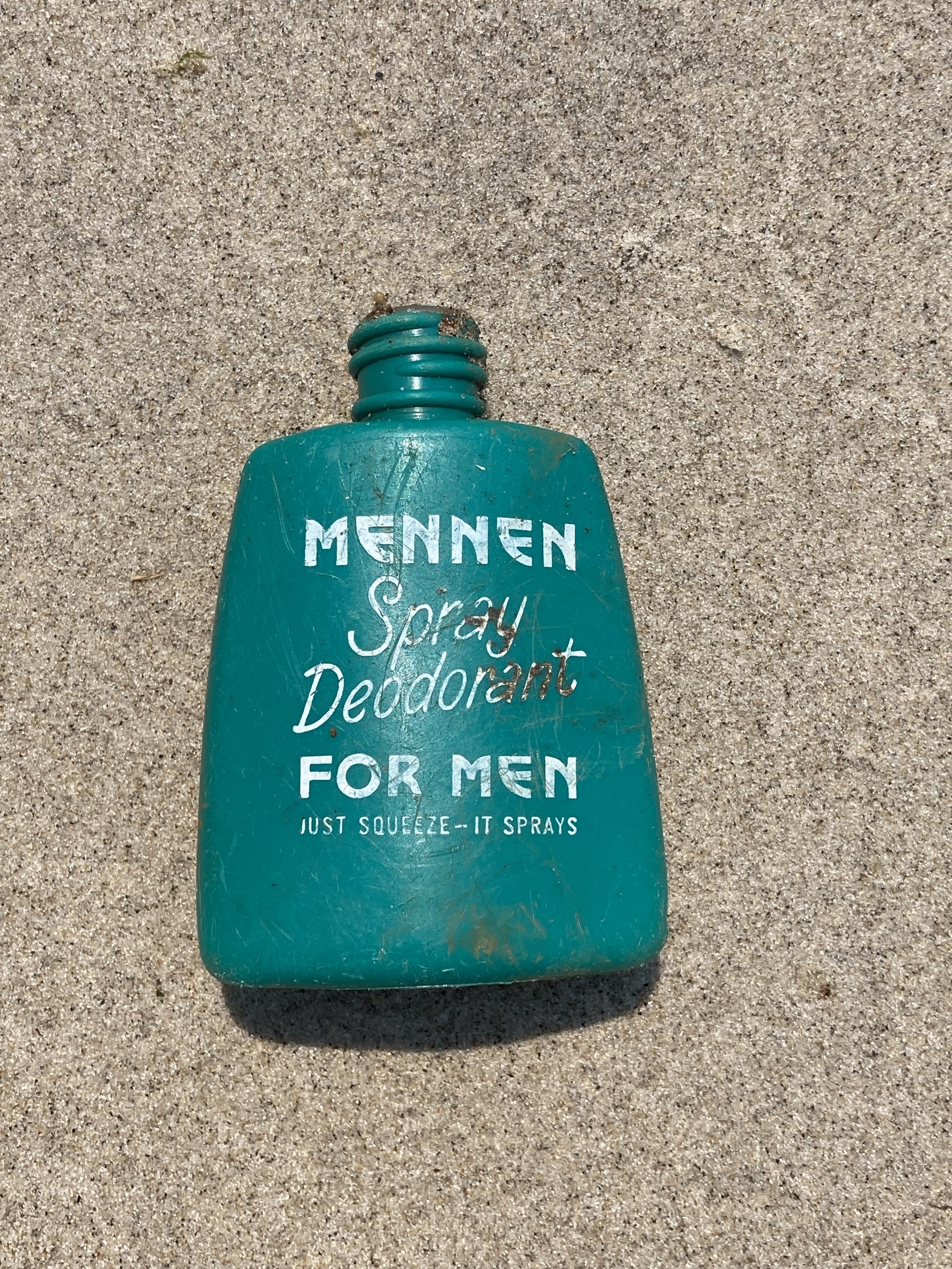
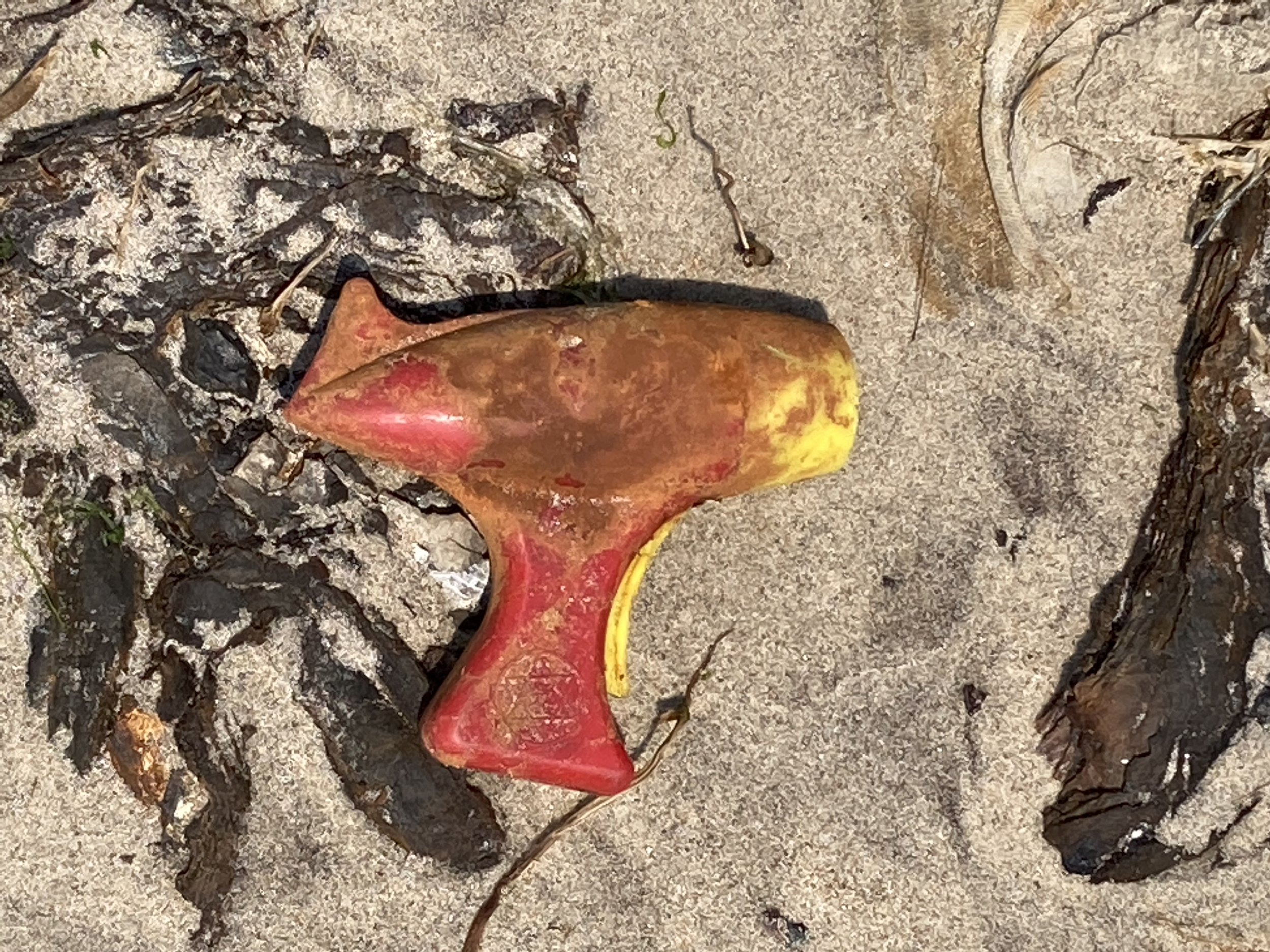
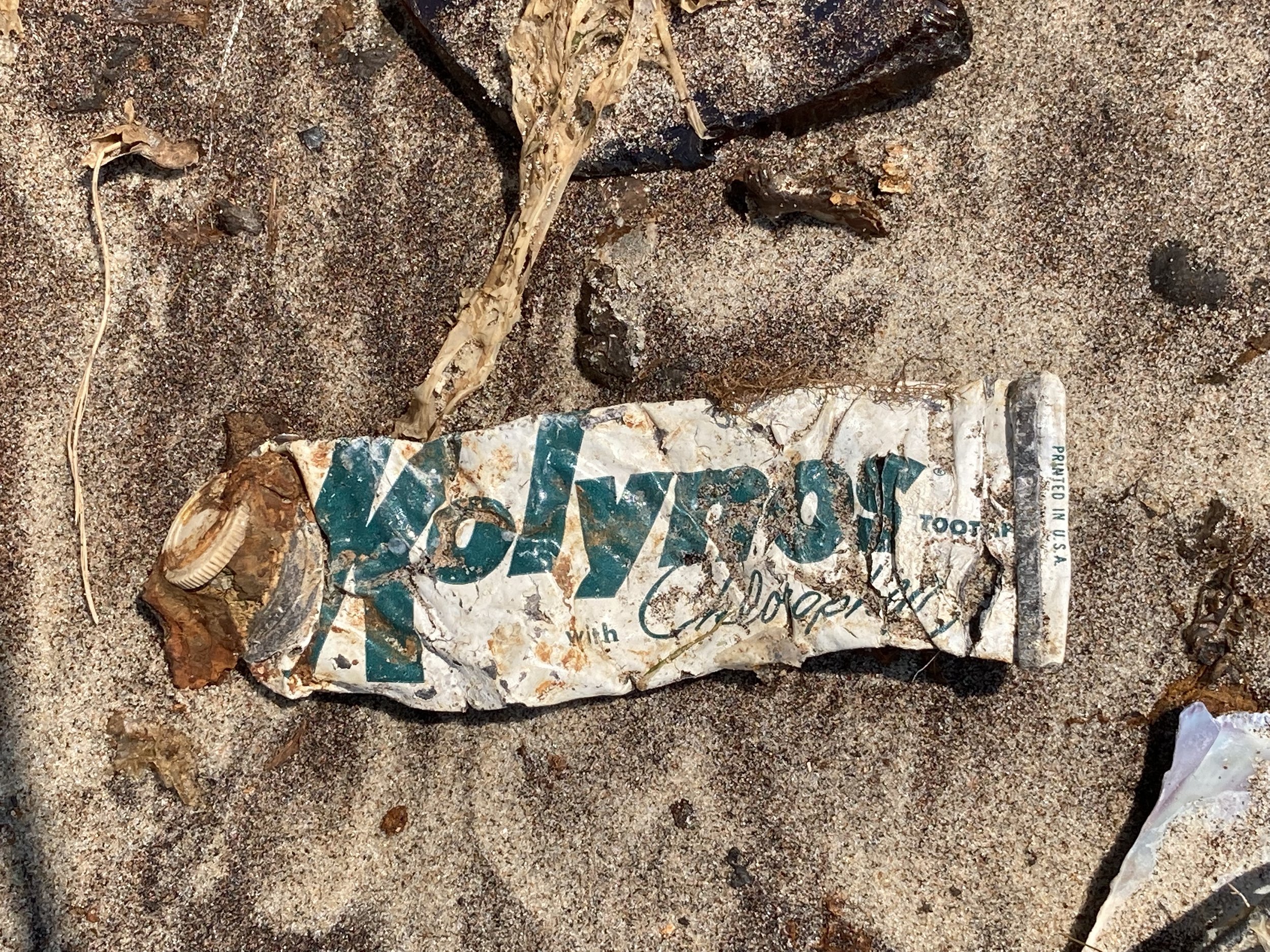


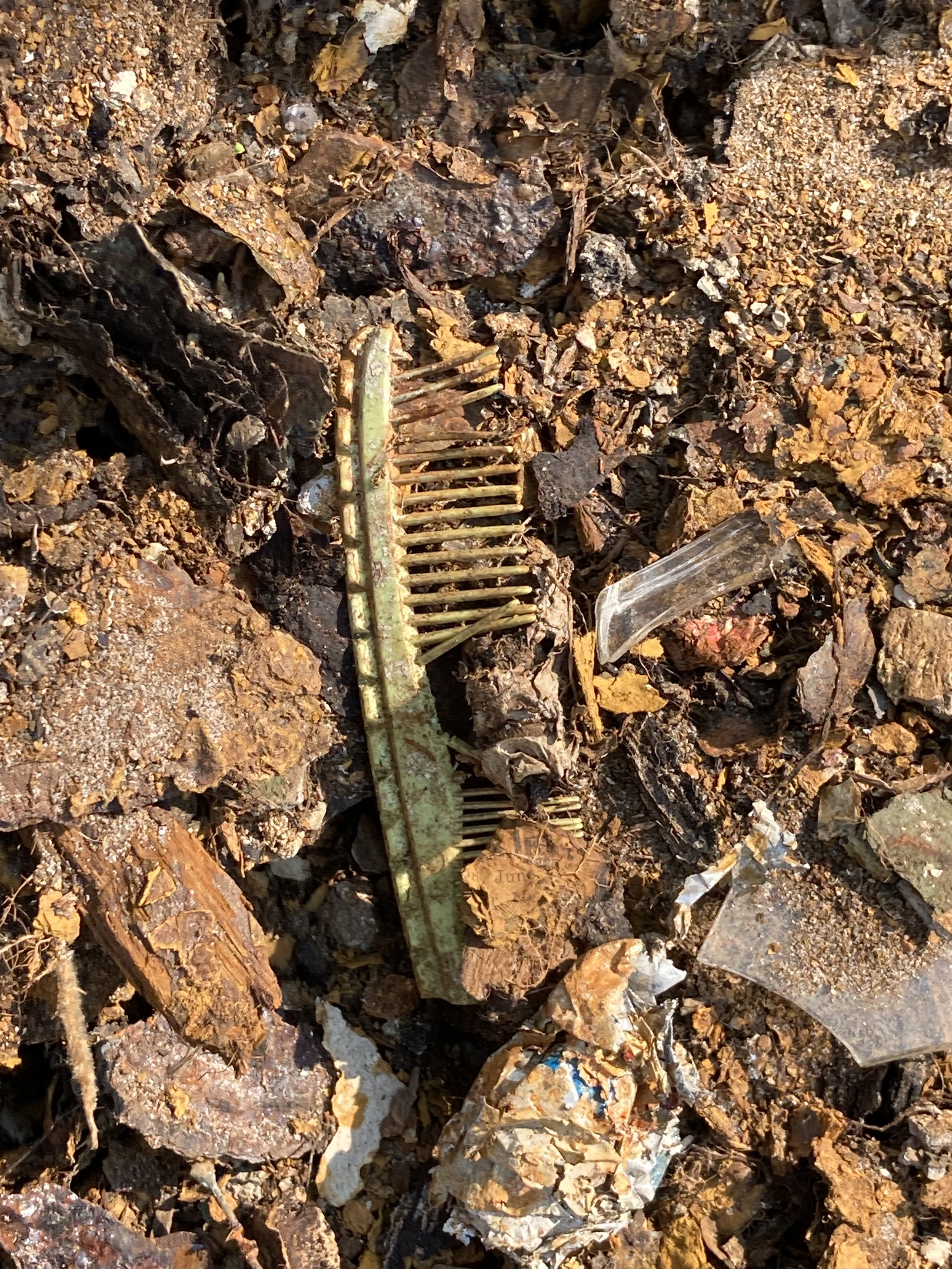
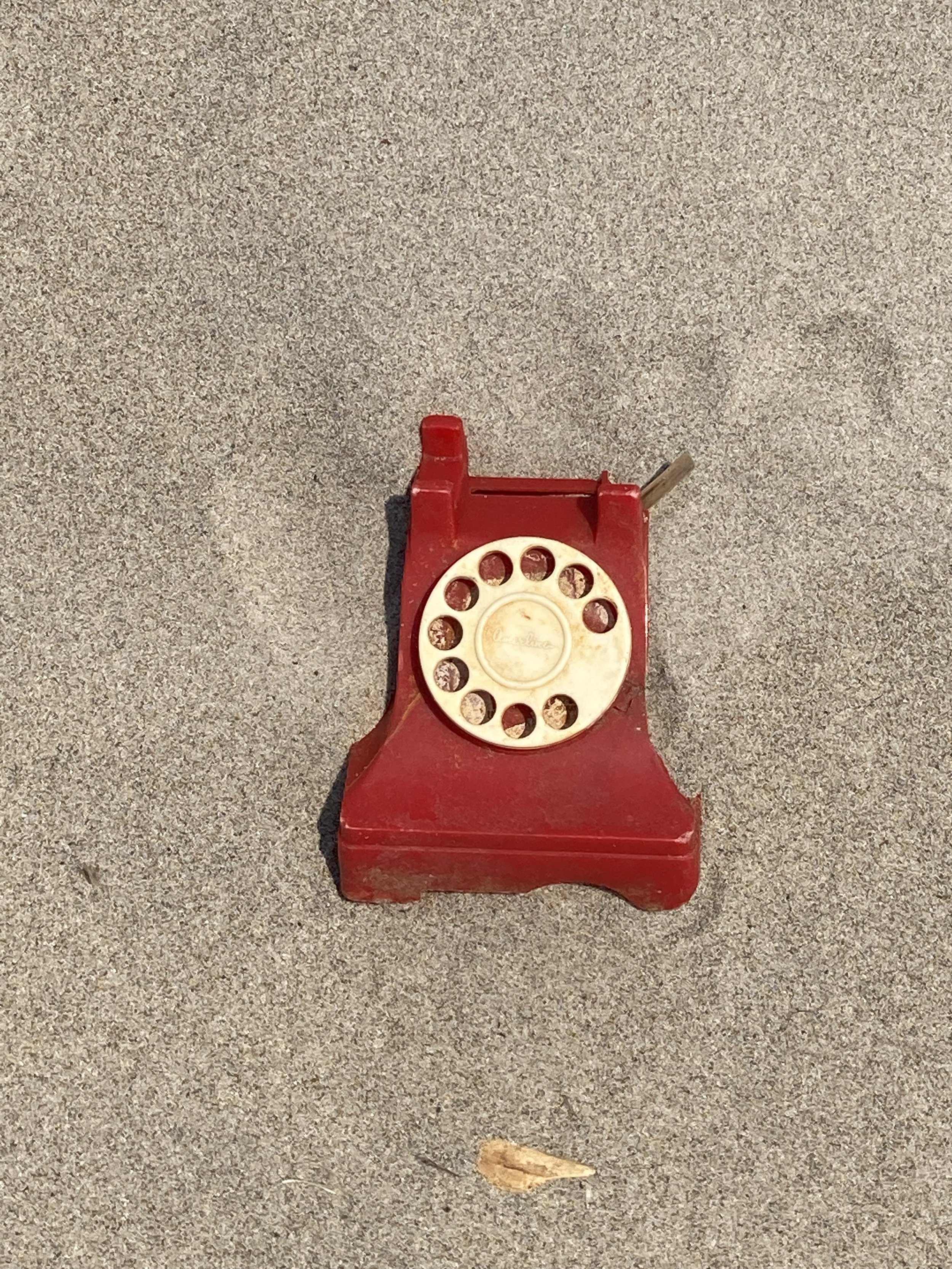

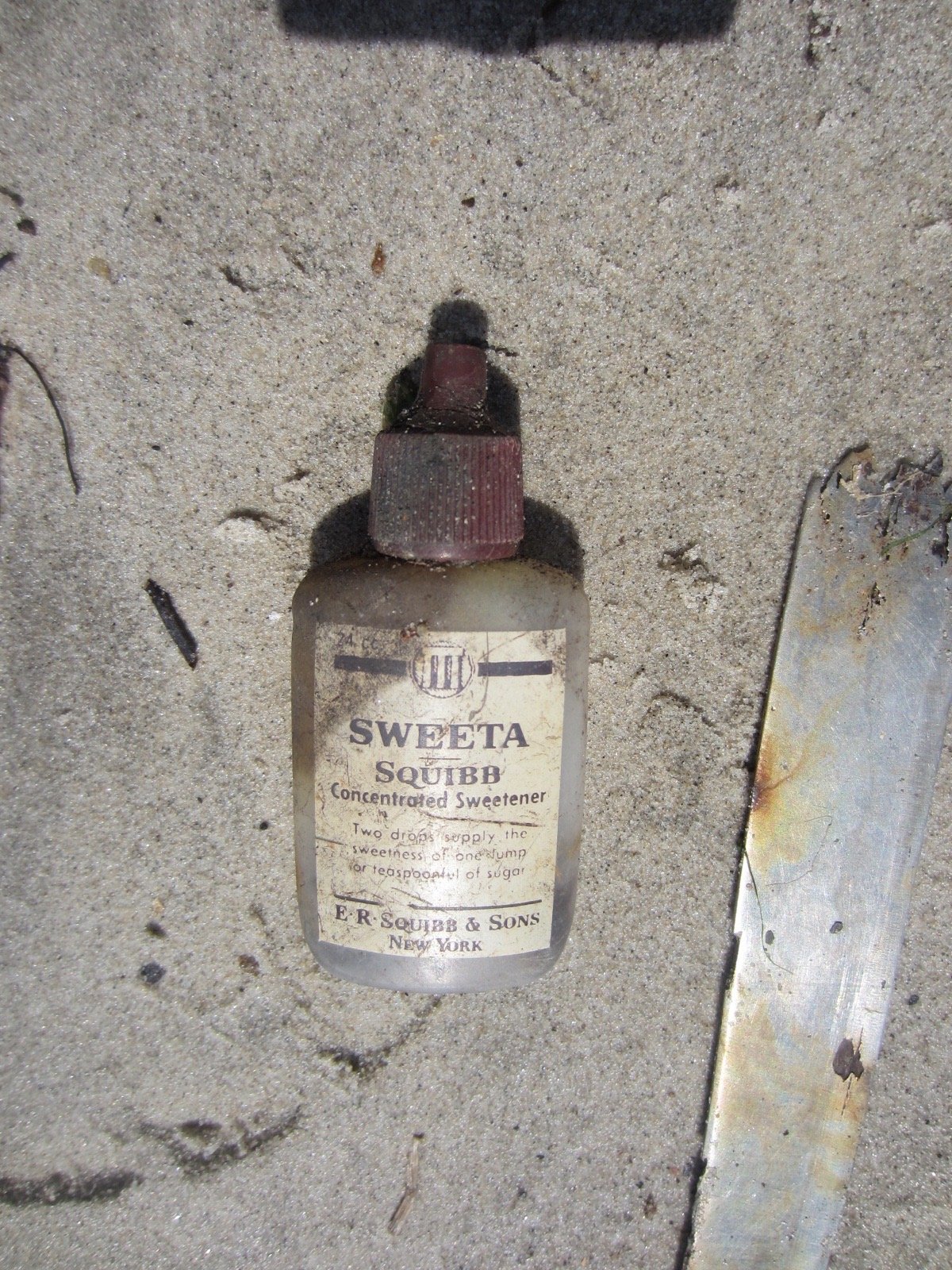
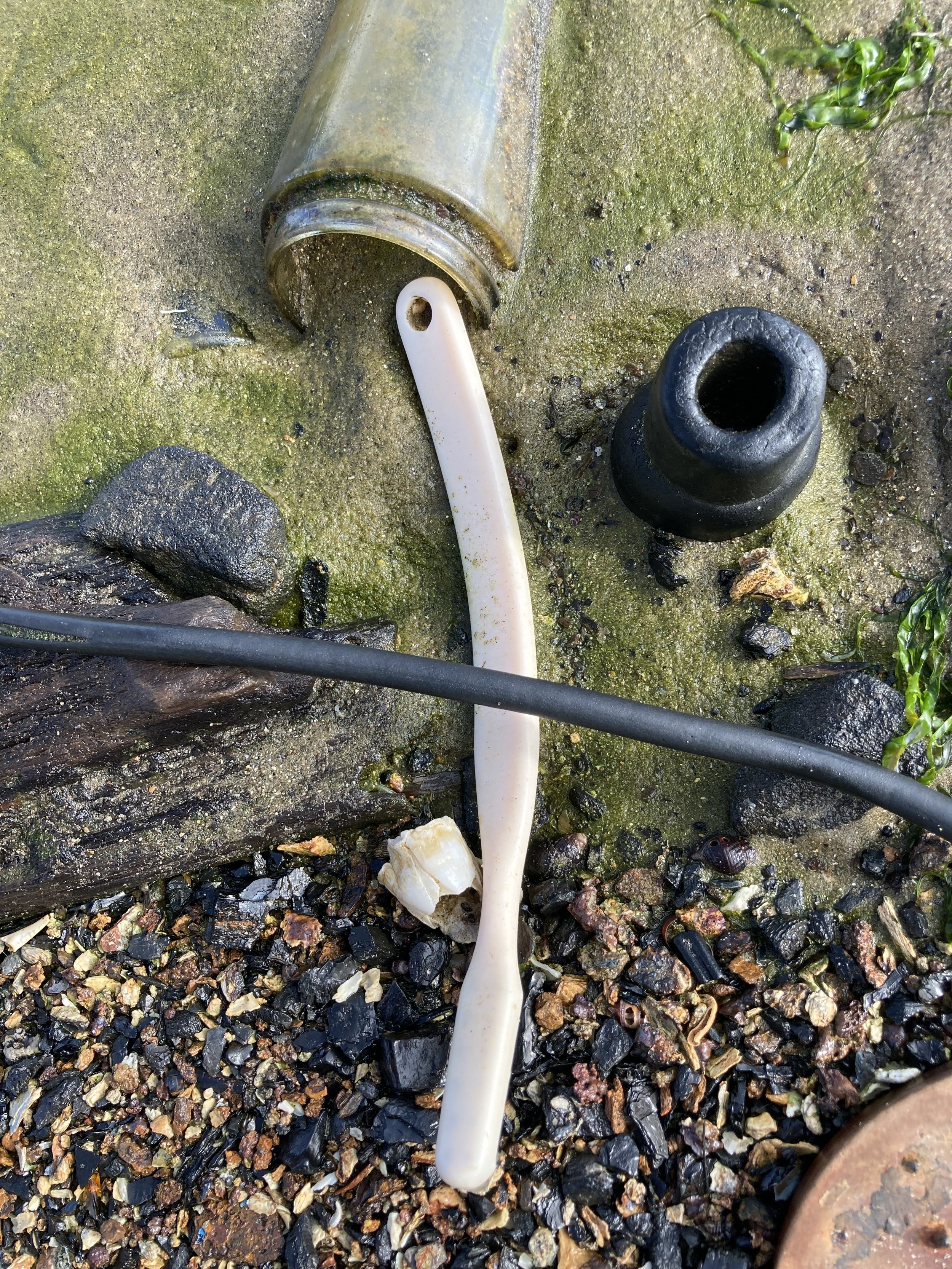
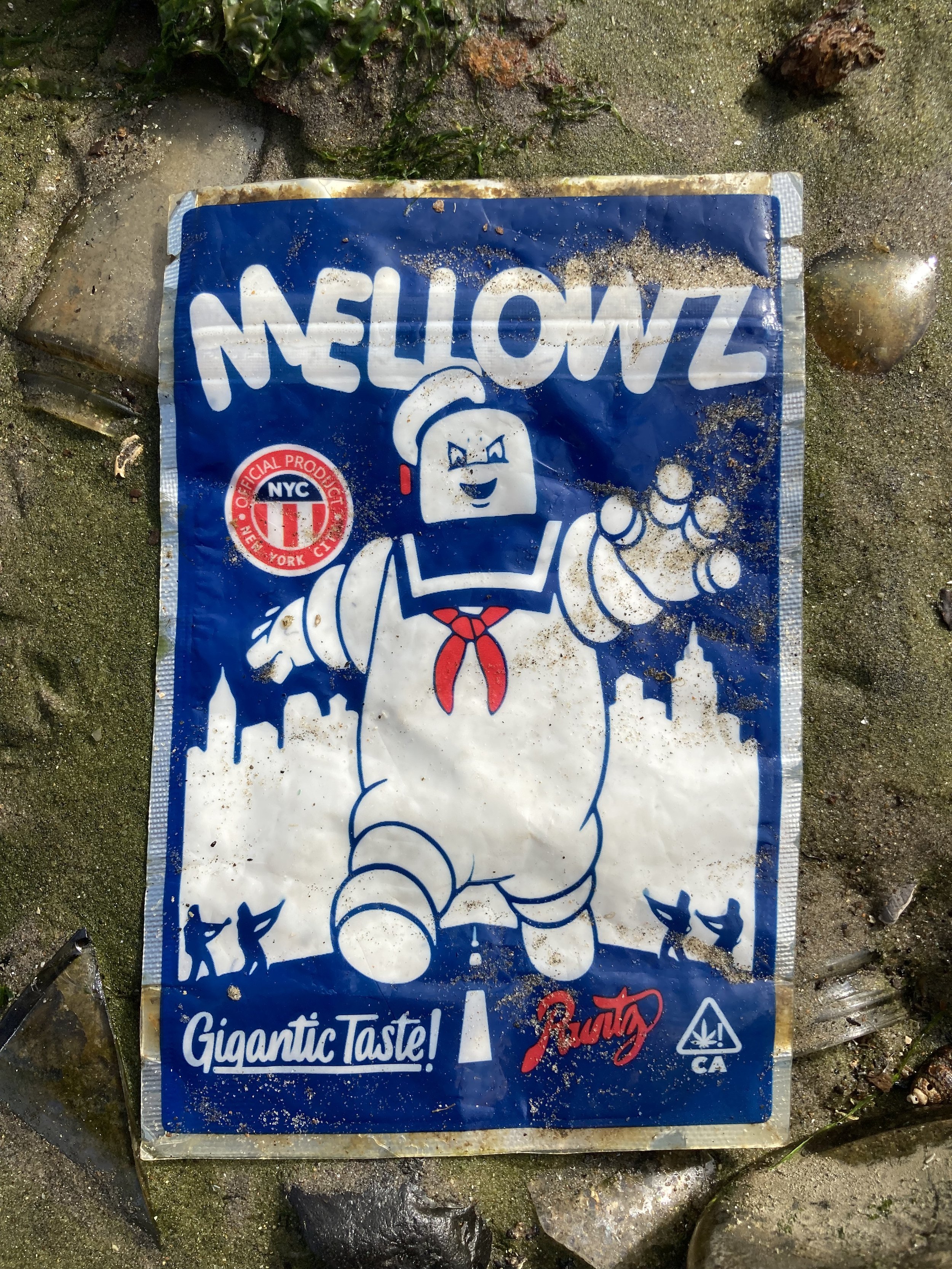
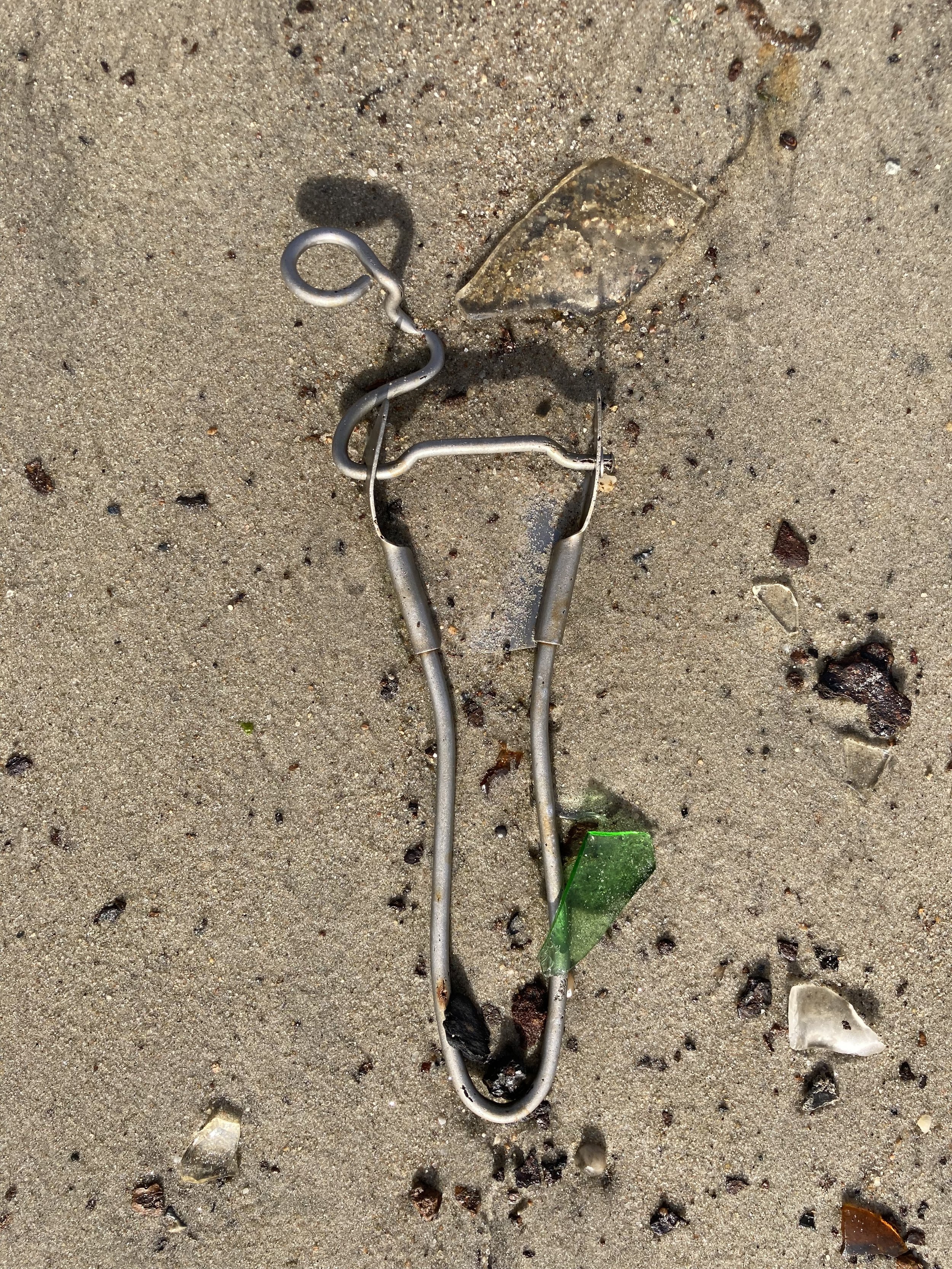
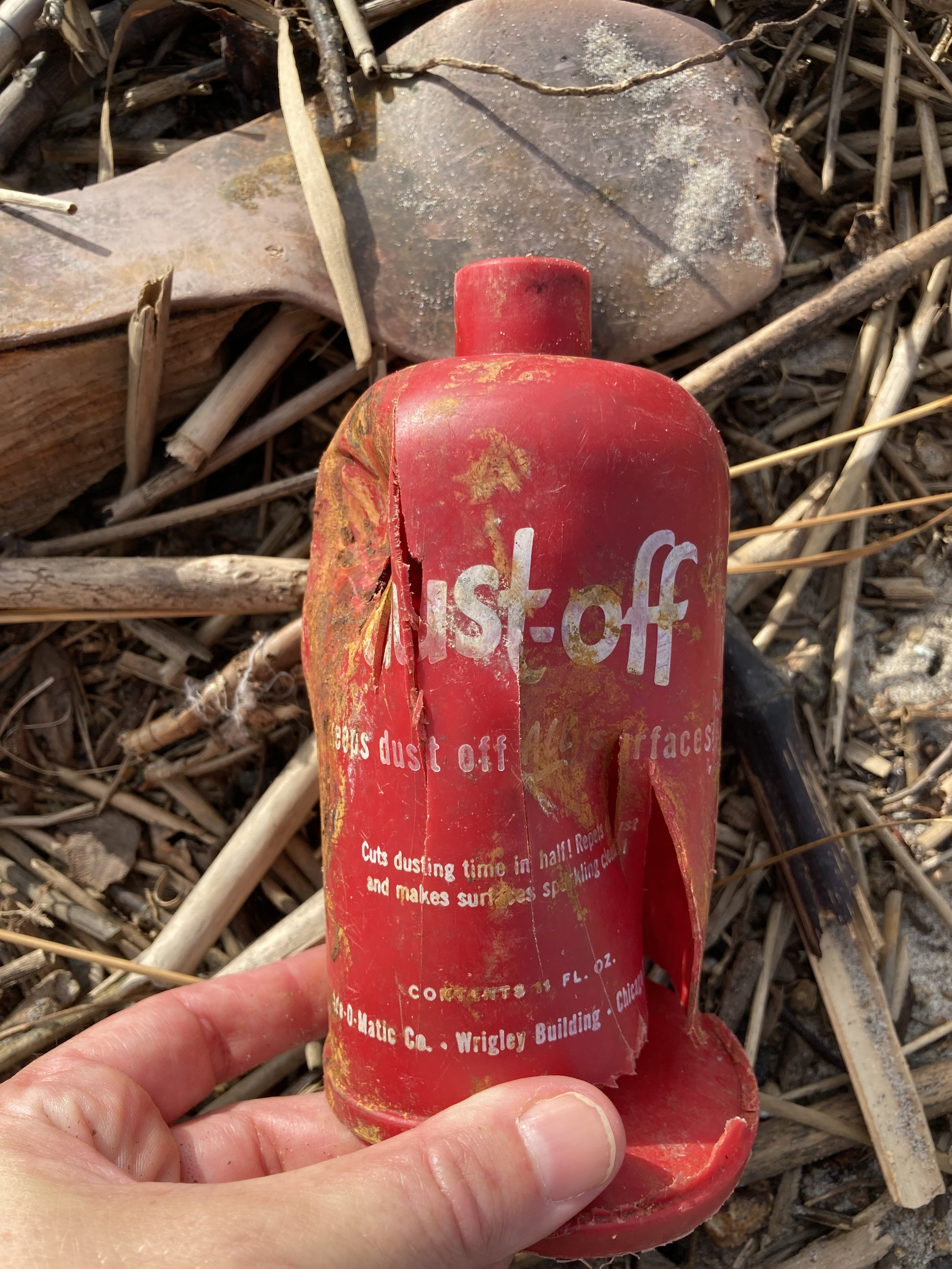
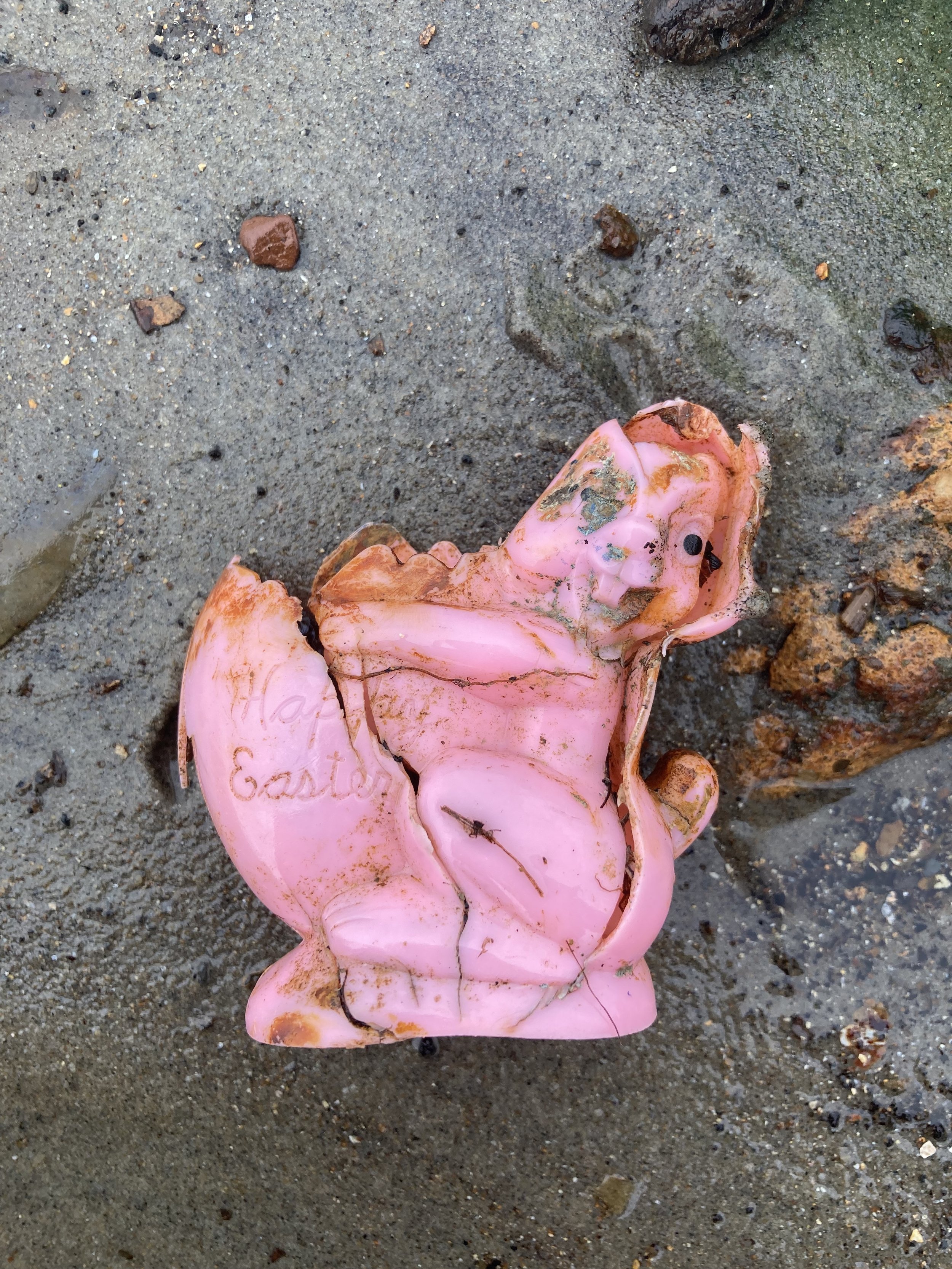

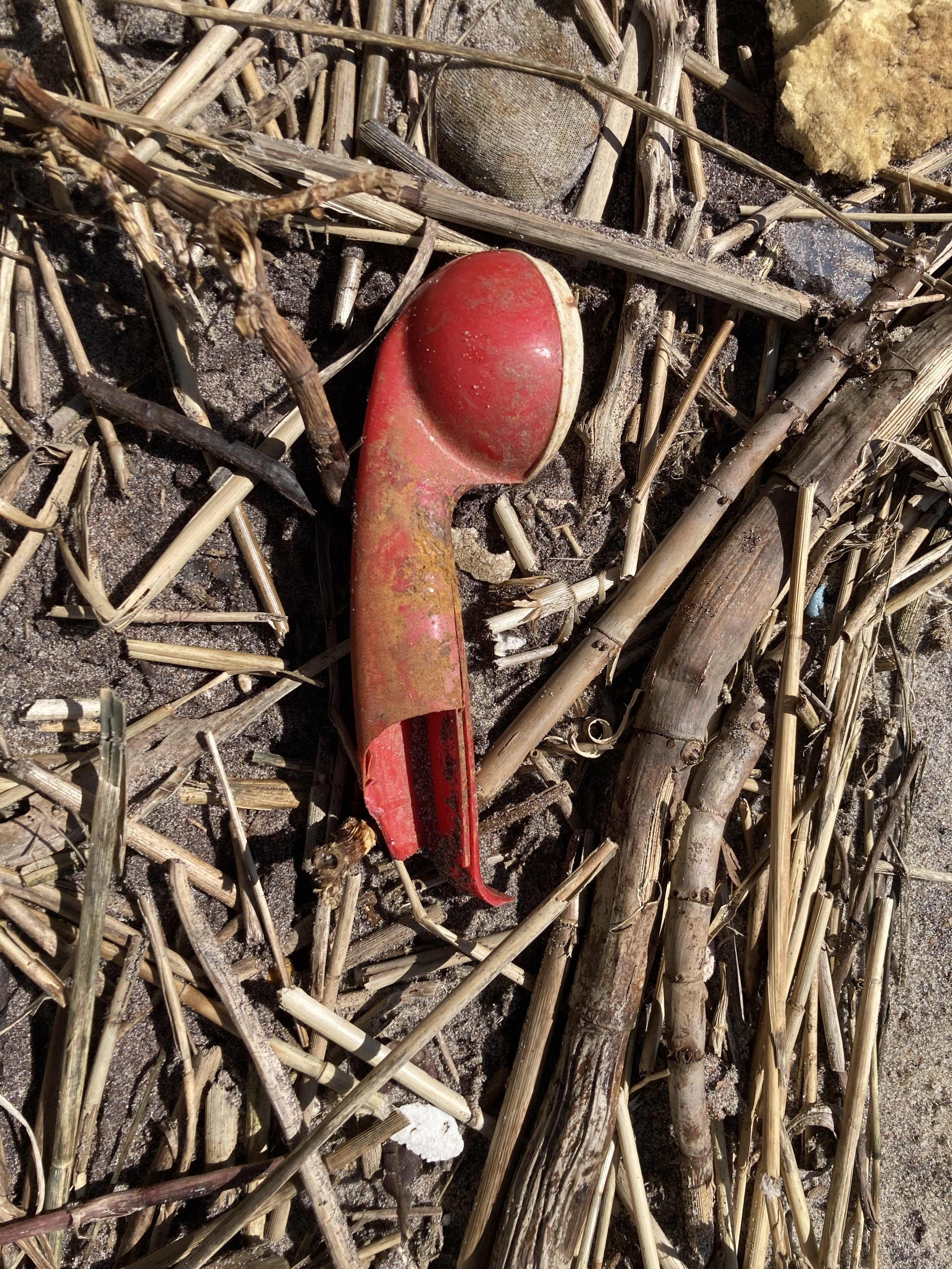
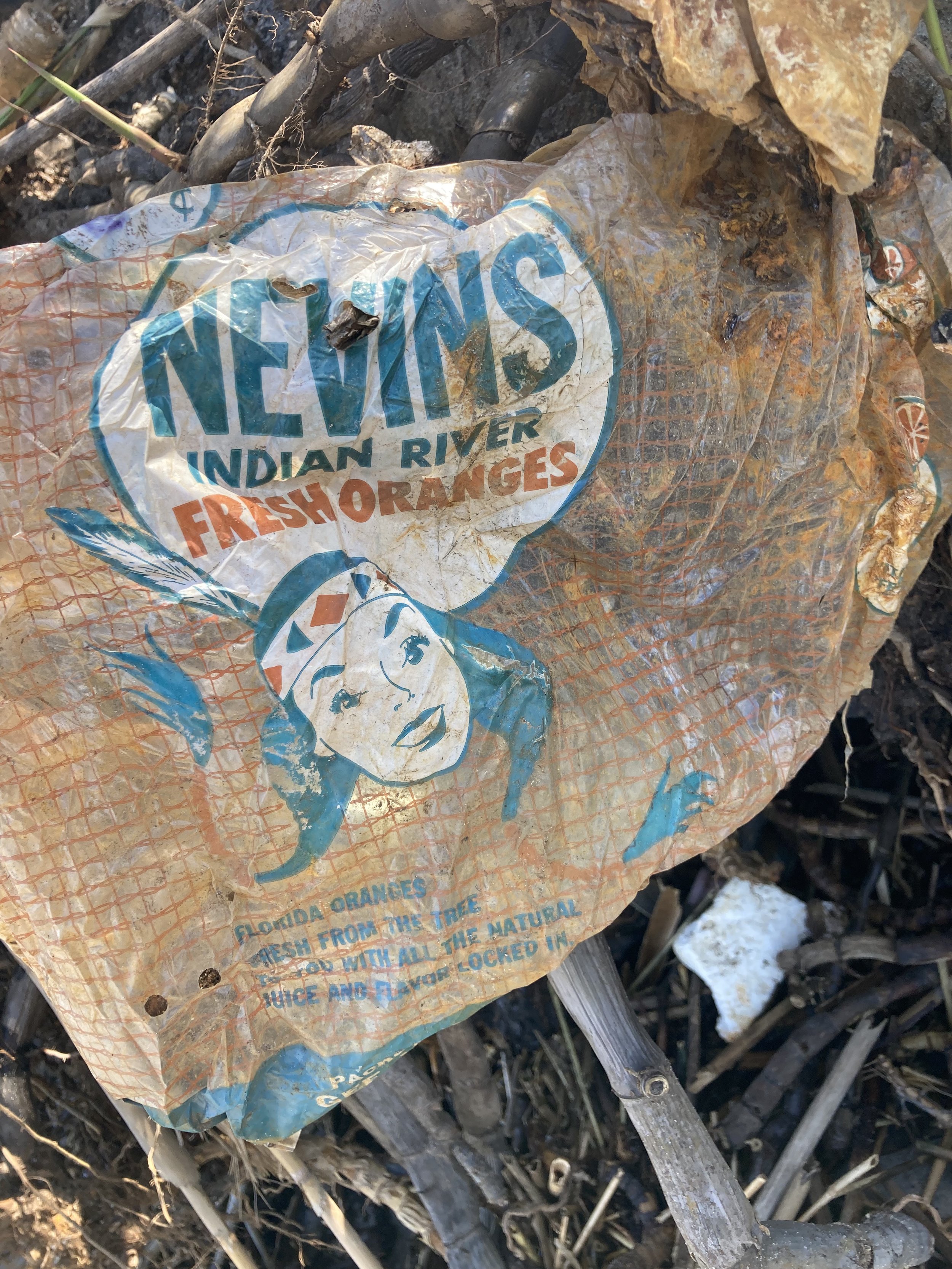


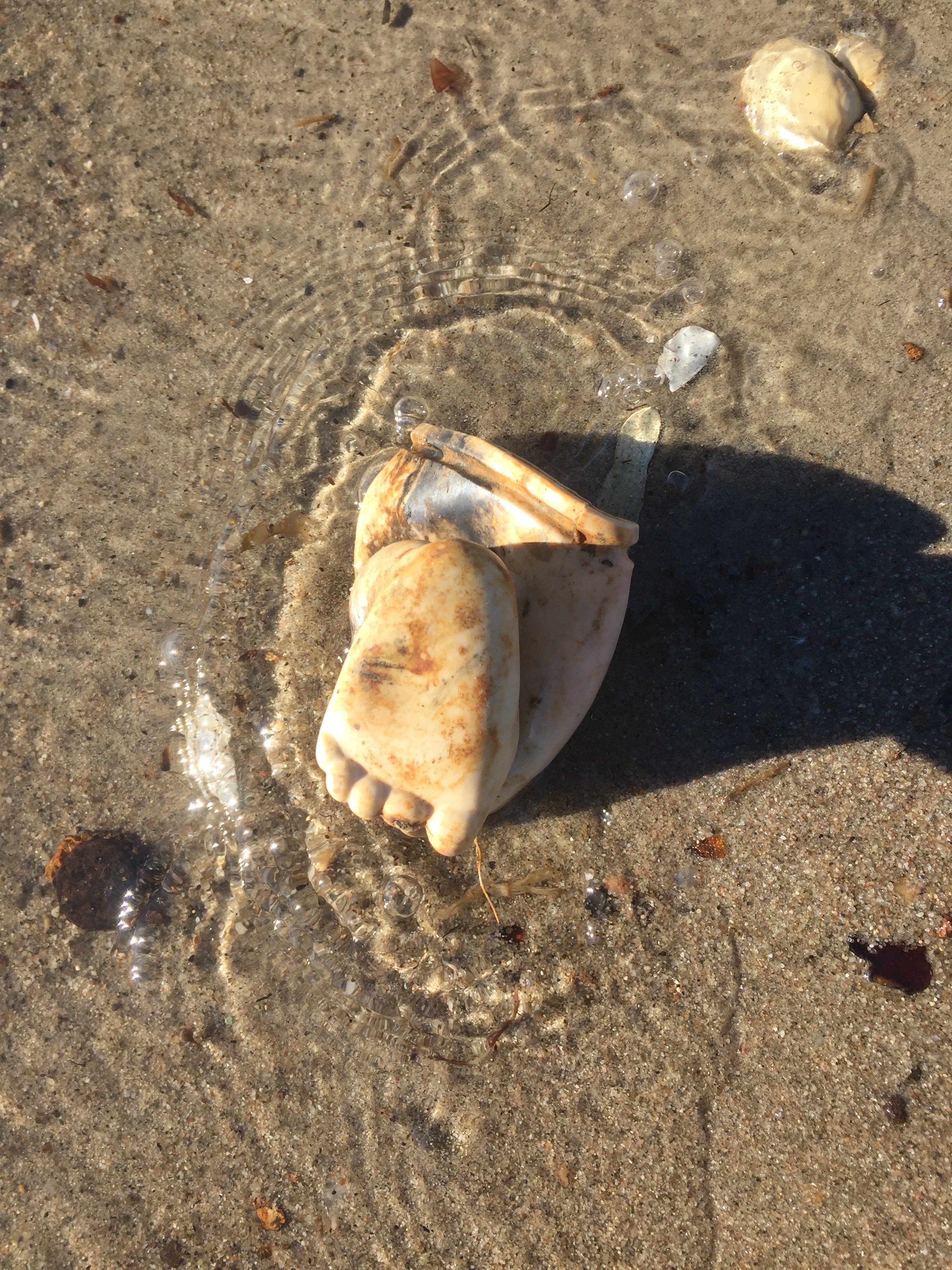

Paper
It can be very surprising to see old newspapers and other paper objects from the early 1950s on the beach, often soaking wet. After all, discarded paper tends to decompose within a few weeks. However, in the landfill, with no oxygen available, paper decays only very slowly, and the paper we see on the beach has only just recently gotten wet. To me one of the enjoyable things about finding newspapers is noticing the retro fonts. Even when we can’t find a date, it’s obvious that this is an old paper! Ads showing the prices of cars, plane tickets, and more remind us how much the value of a dollar has changed over the years.
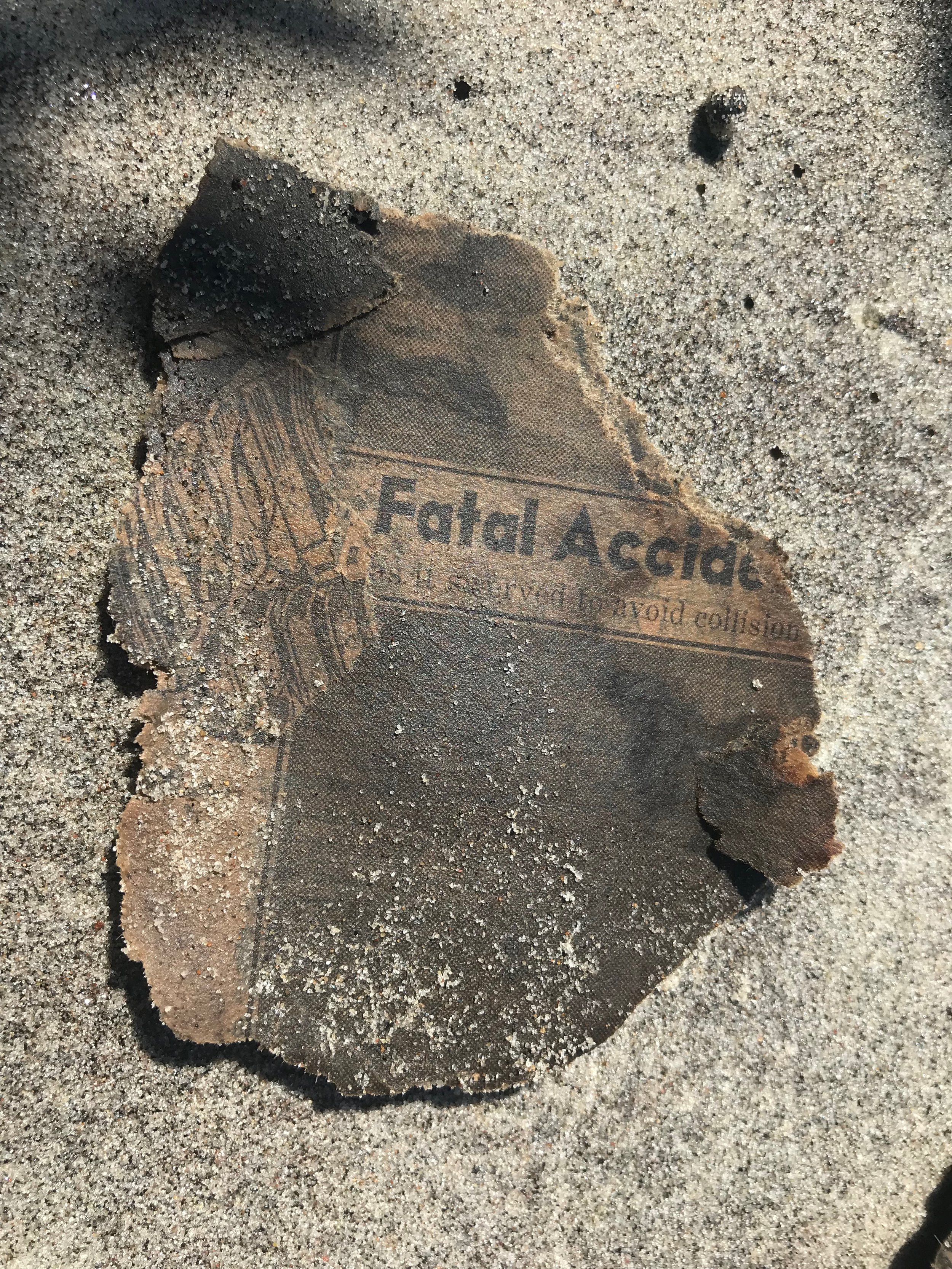
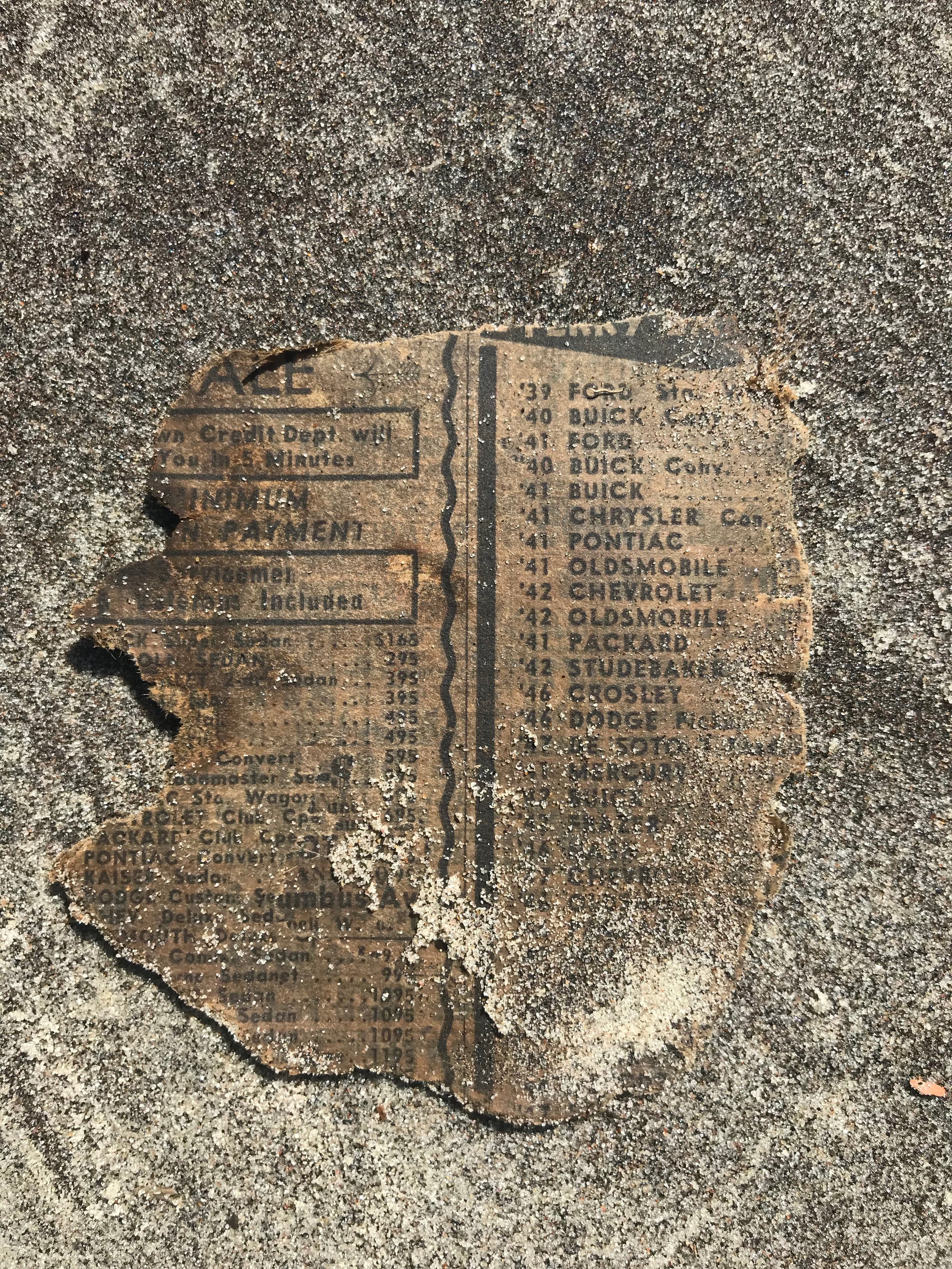

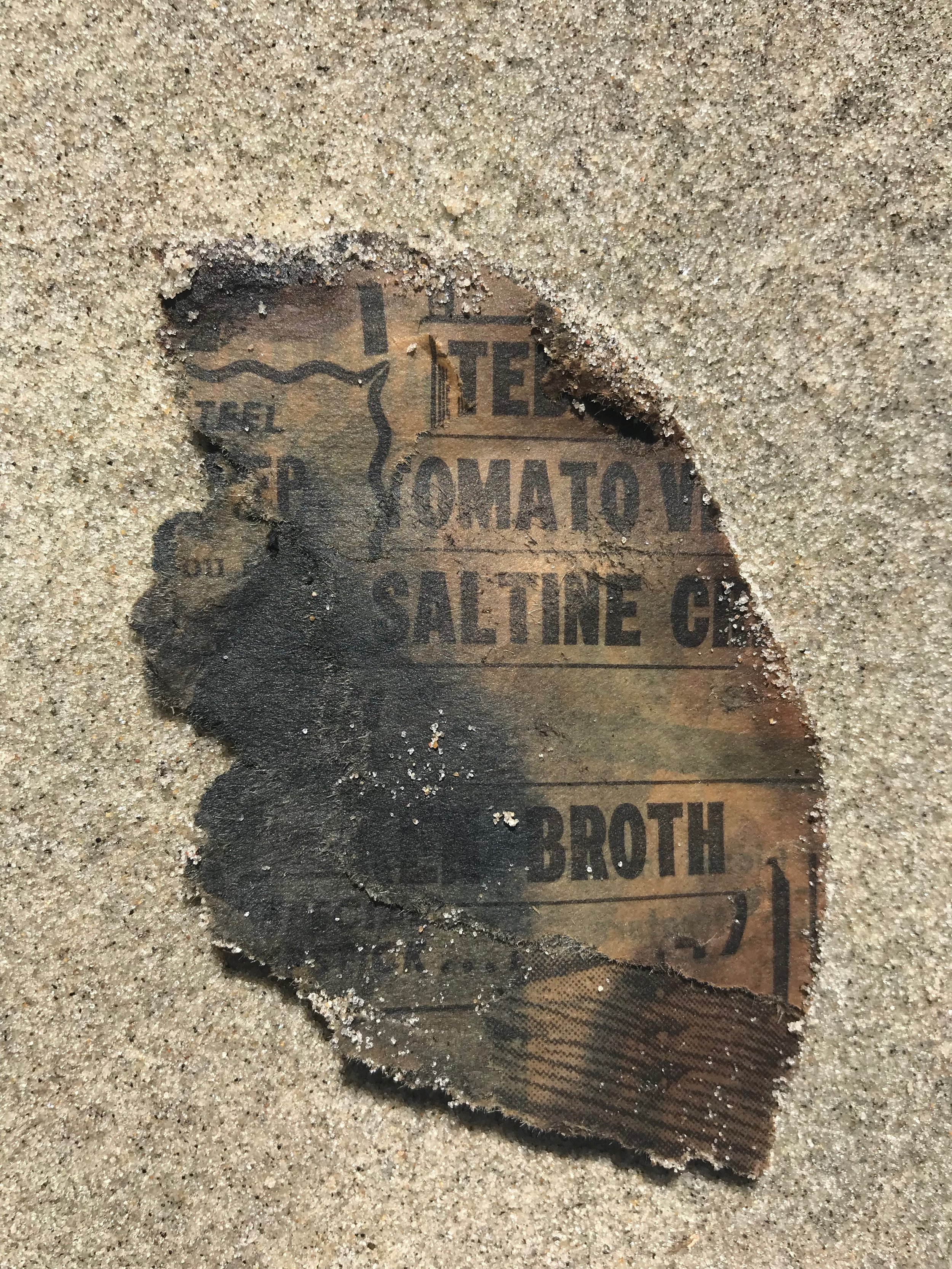




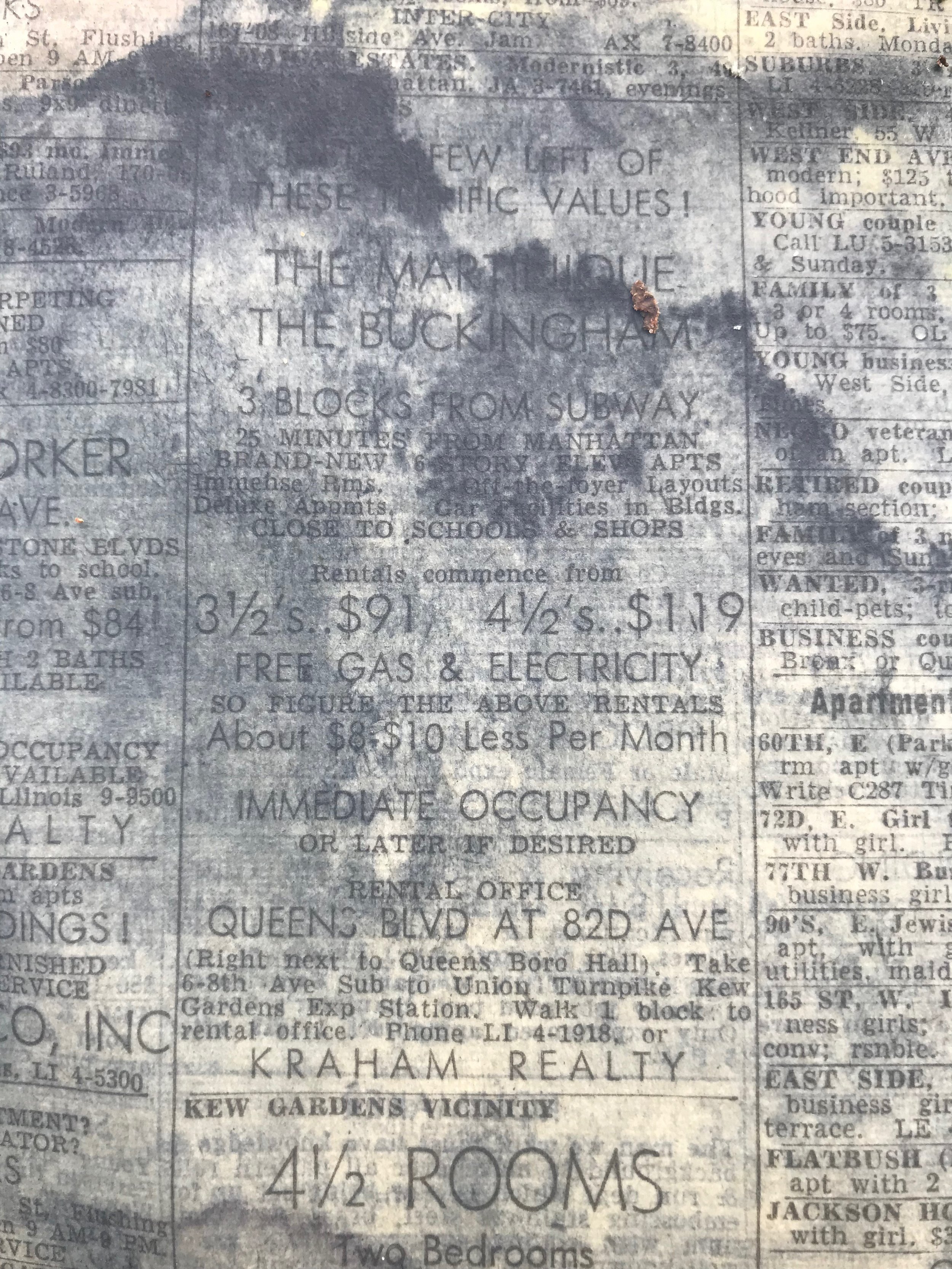

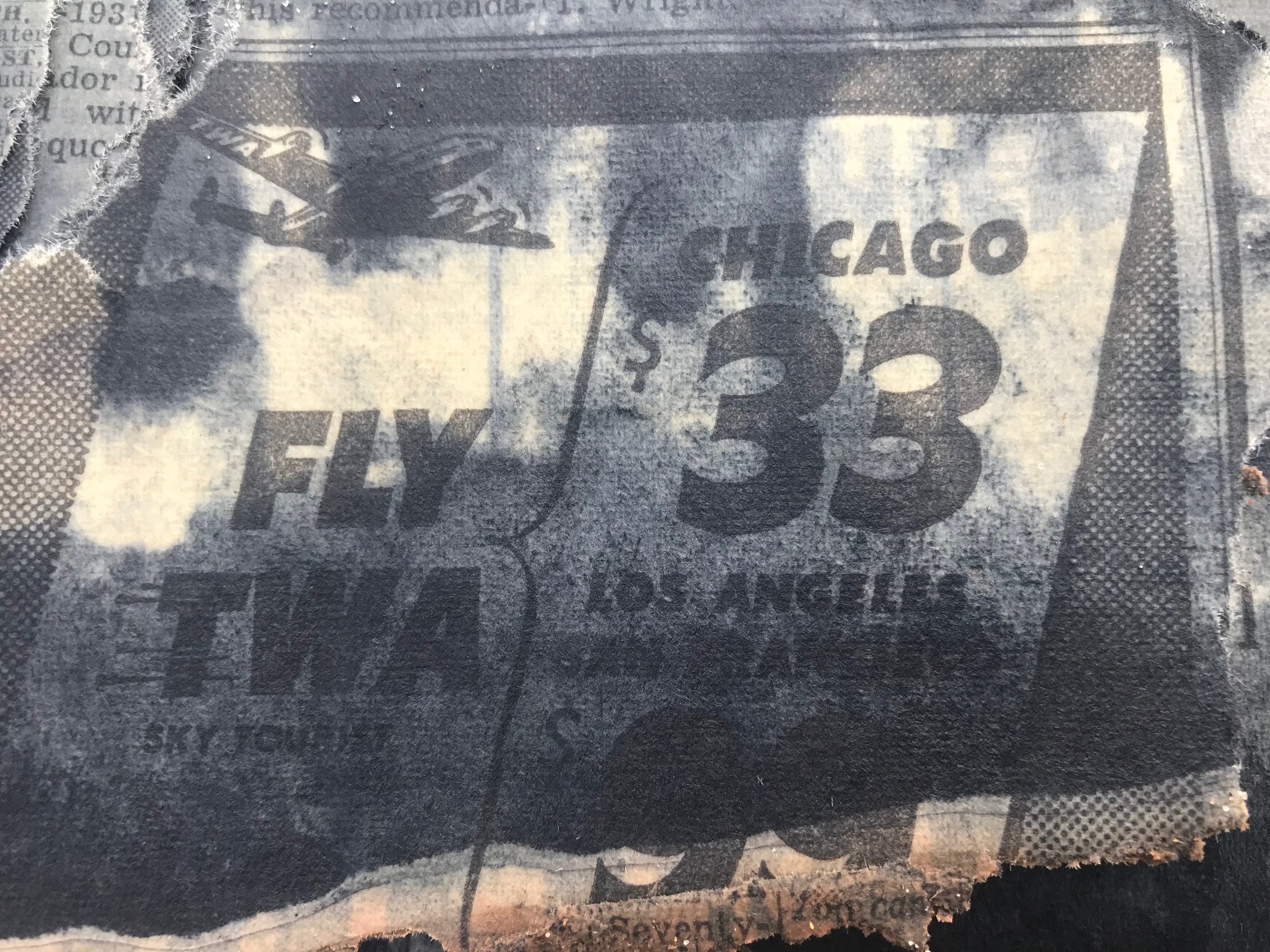
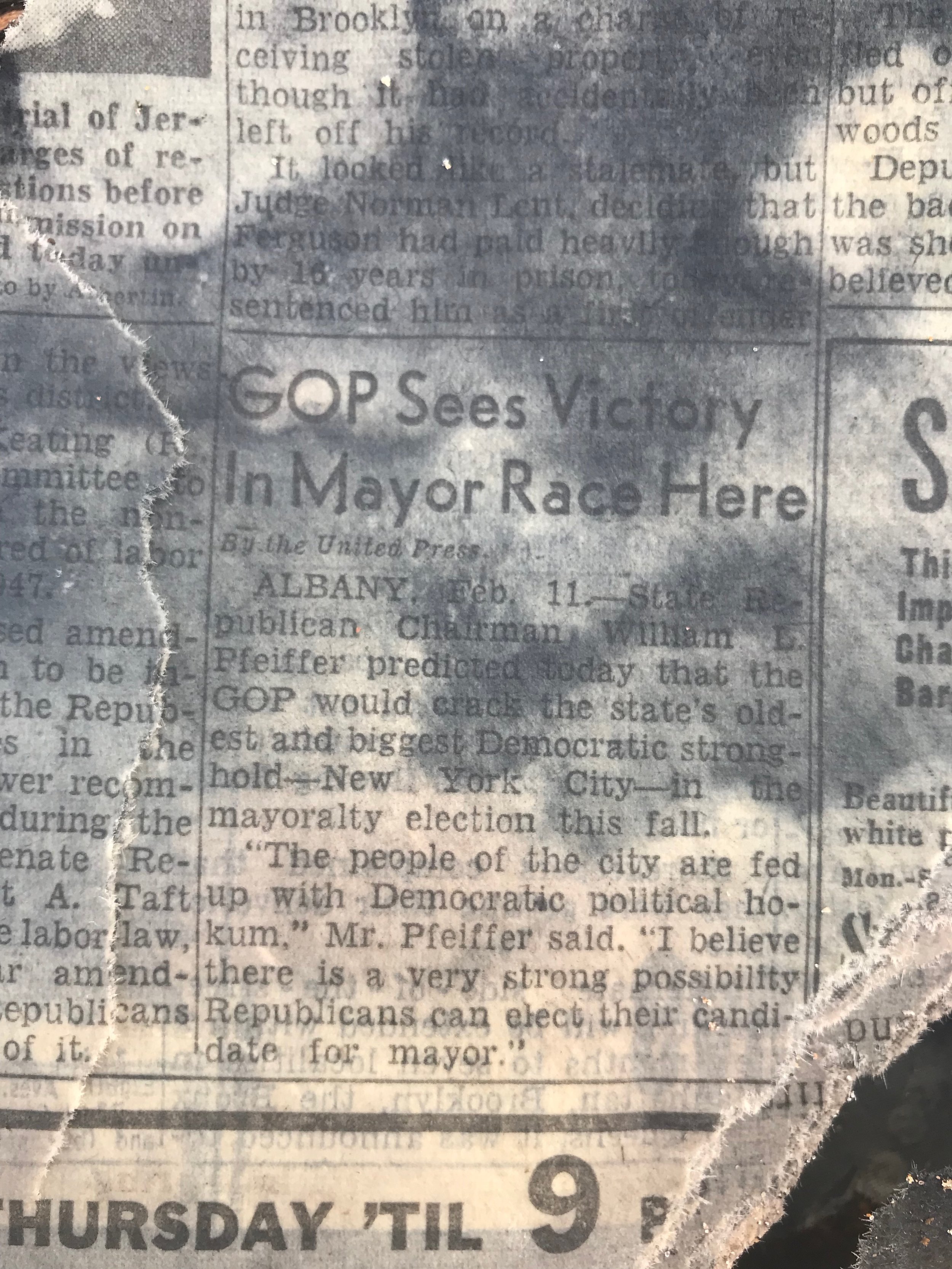
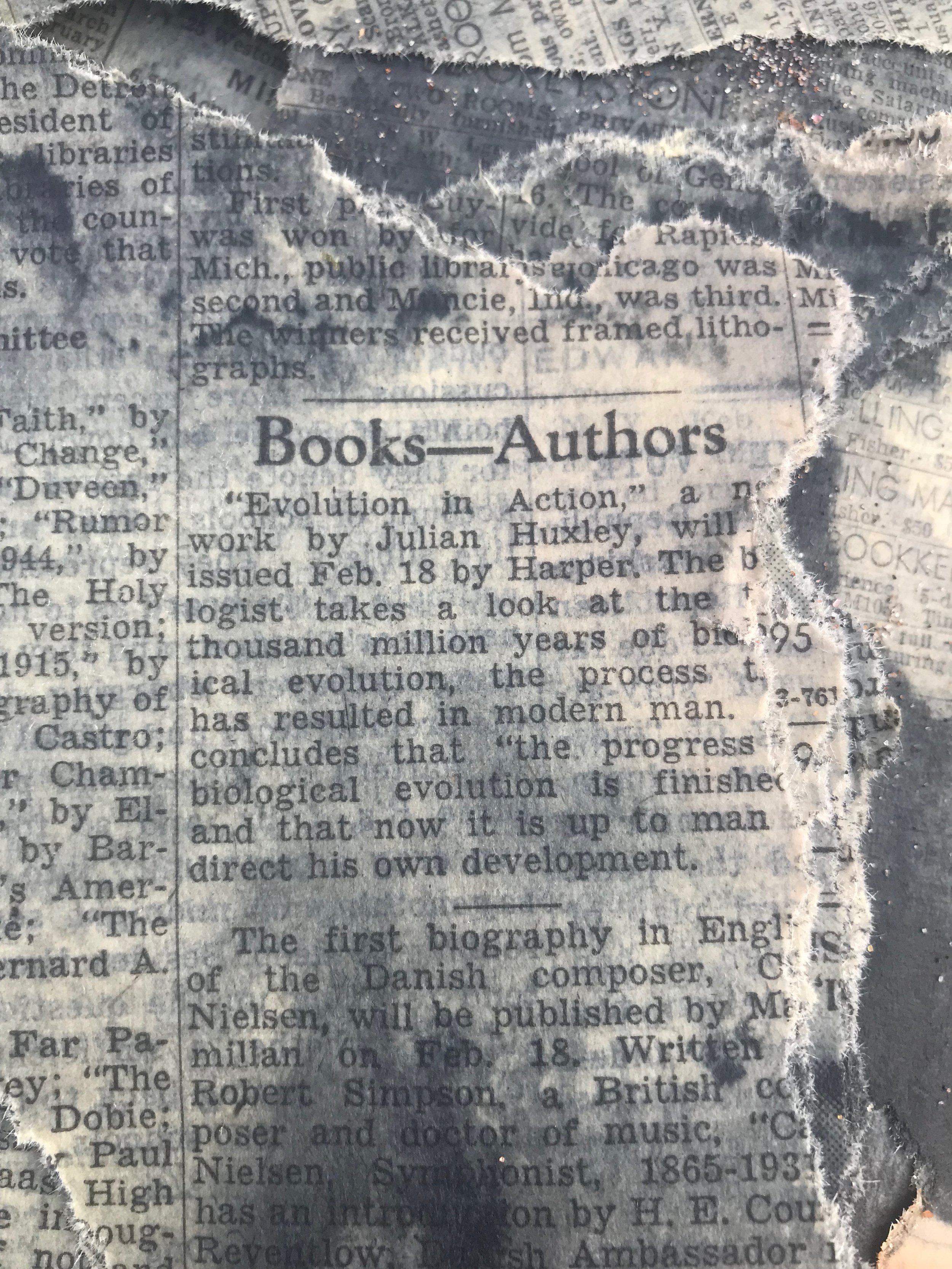
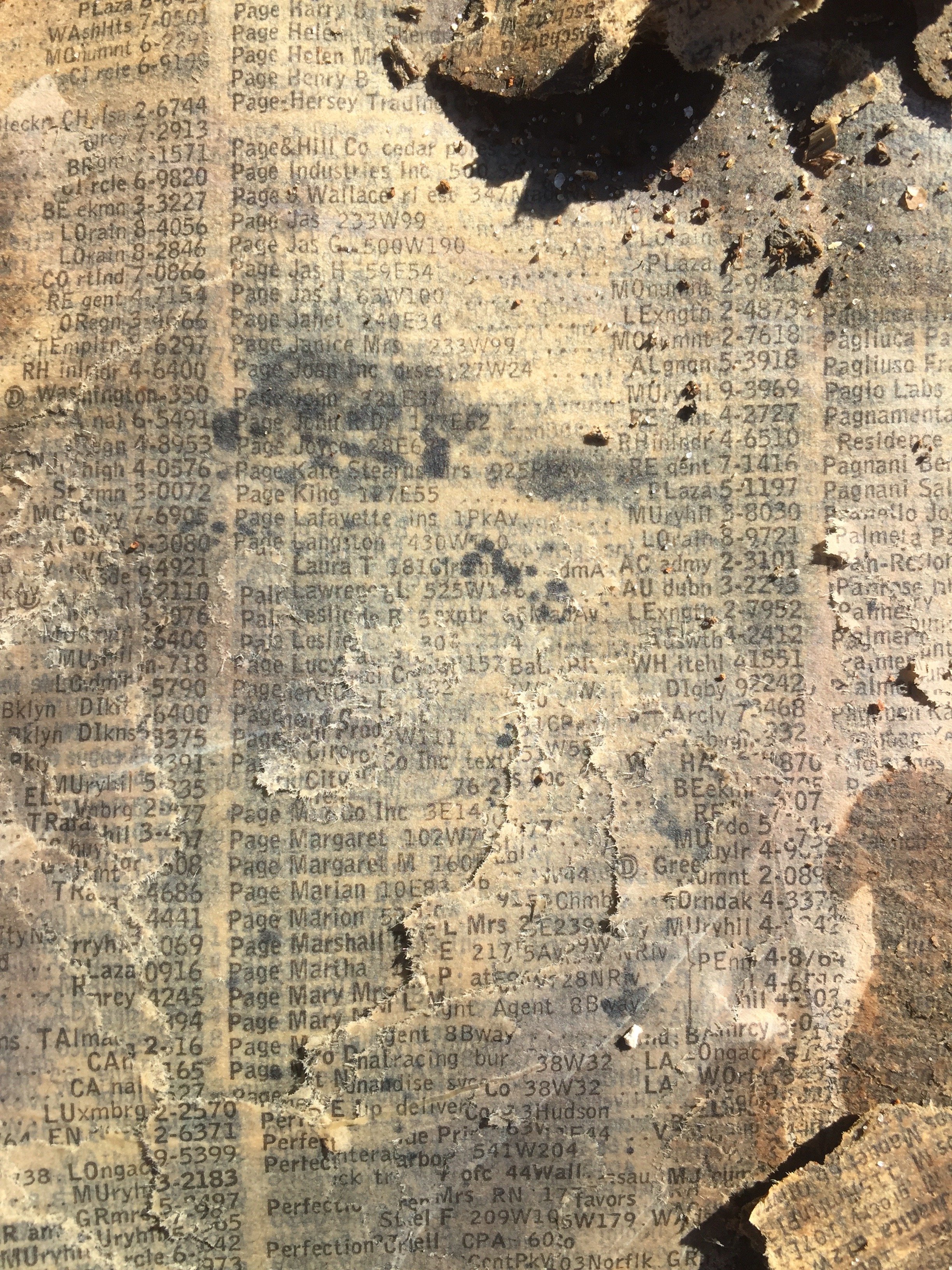

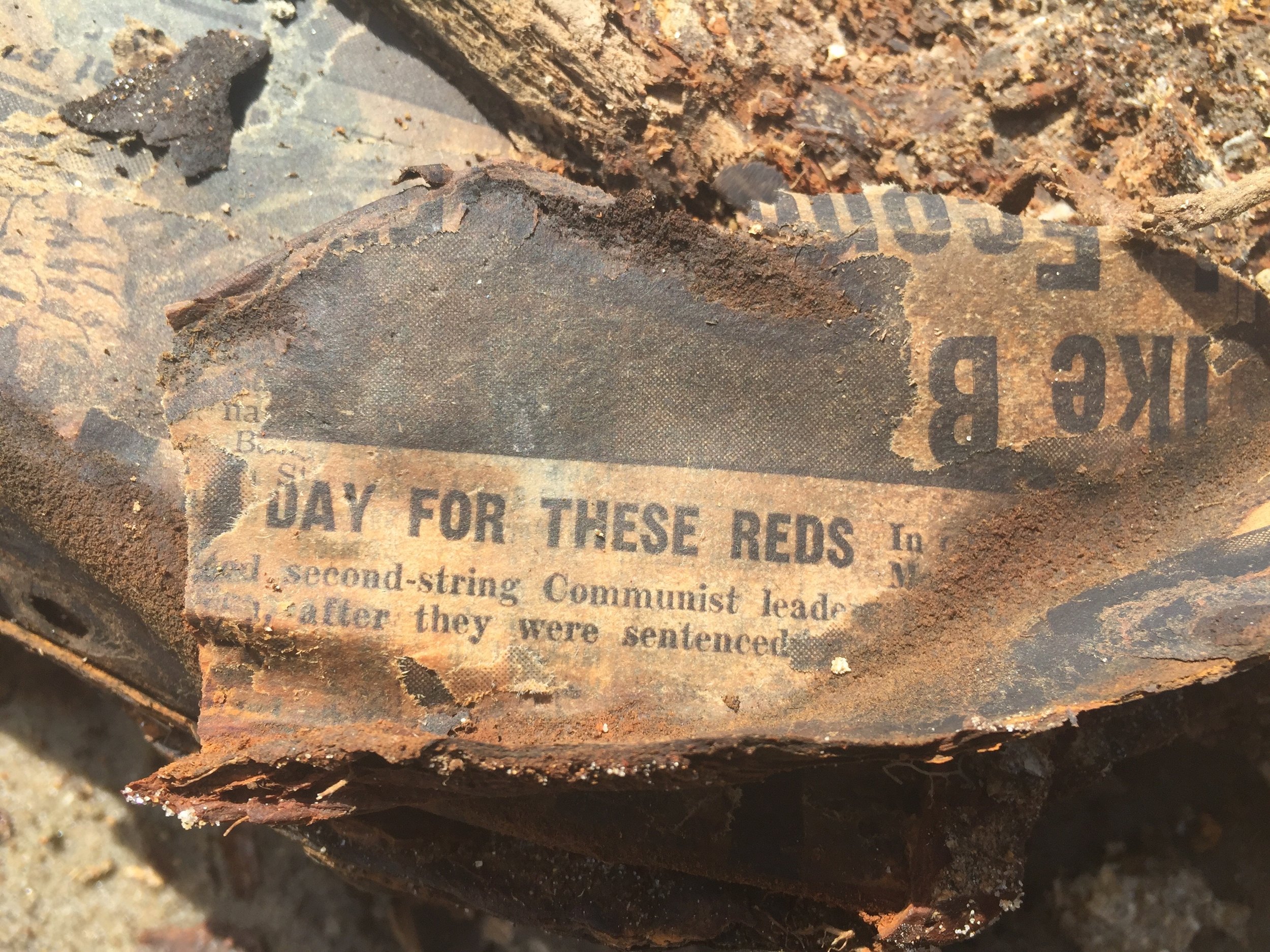
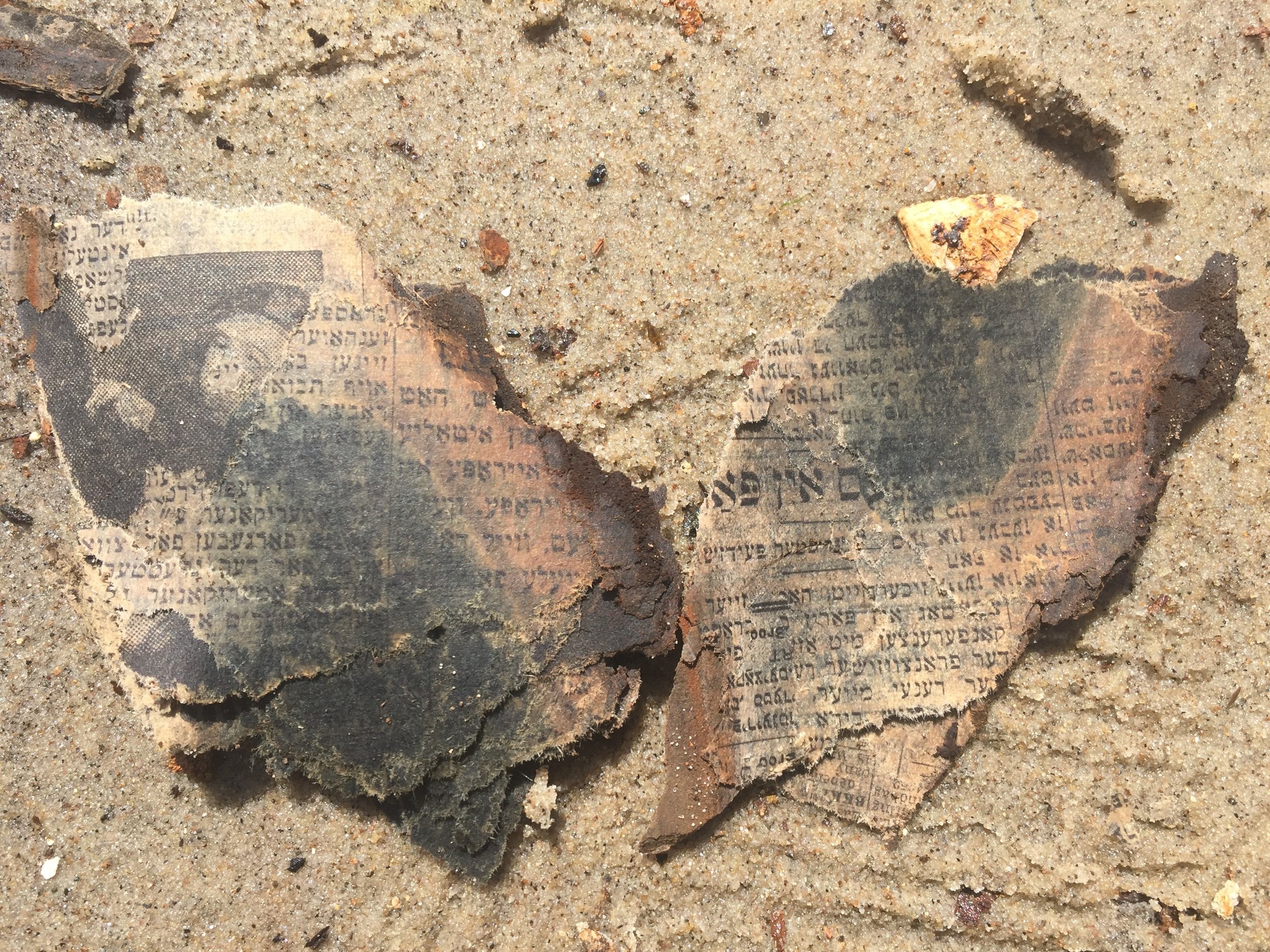
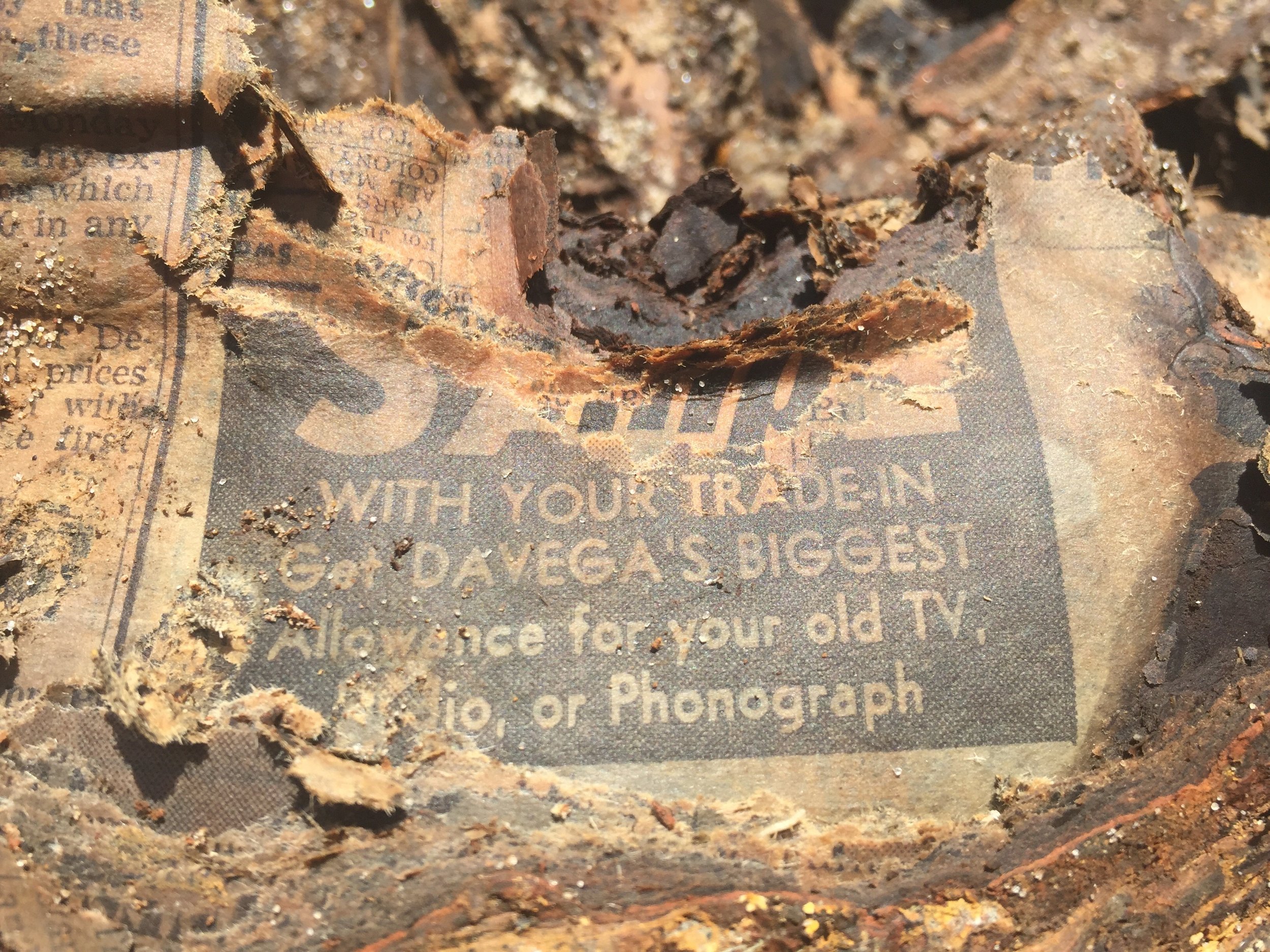
Shoes + Stockings
There are seemingly countless shoes, shoe parts, and stockings strewn across the beach. There must be nothing but bottles that are more numerous. The shoes mostly appear to be made of leather, and somehow have survived 70+ years in a landfill, despite most estimates predicting that leather will decompose within fifty years or so.
Nylon is a form of plastic and is not biodegradable, and it easily gets caught on anything and everything. So it’s not surprising that there are enormous clusters of stockings attached to pretty much everything in this landfill. Nylon stockings were introduced to the market in 1940, and continued to be popular through the 1950s (though they were not manufactured in the U.S. during the war years). Some of the nylon on the beach may also come from fishing nets.
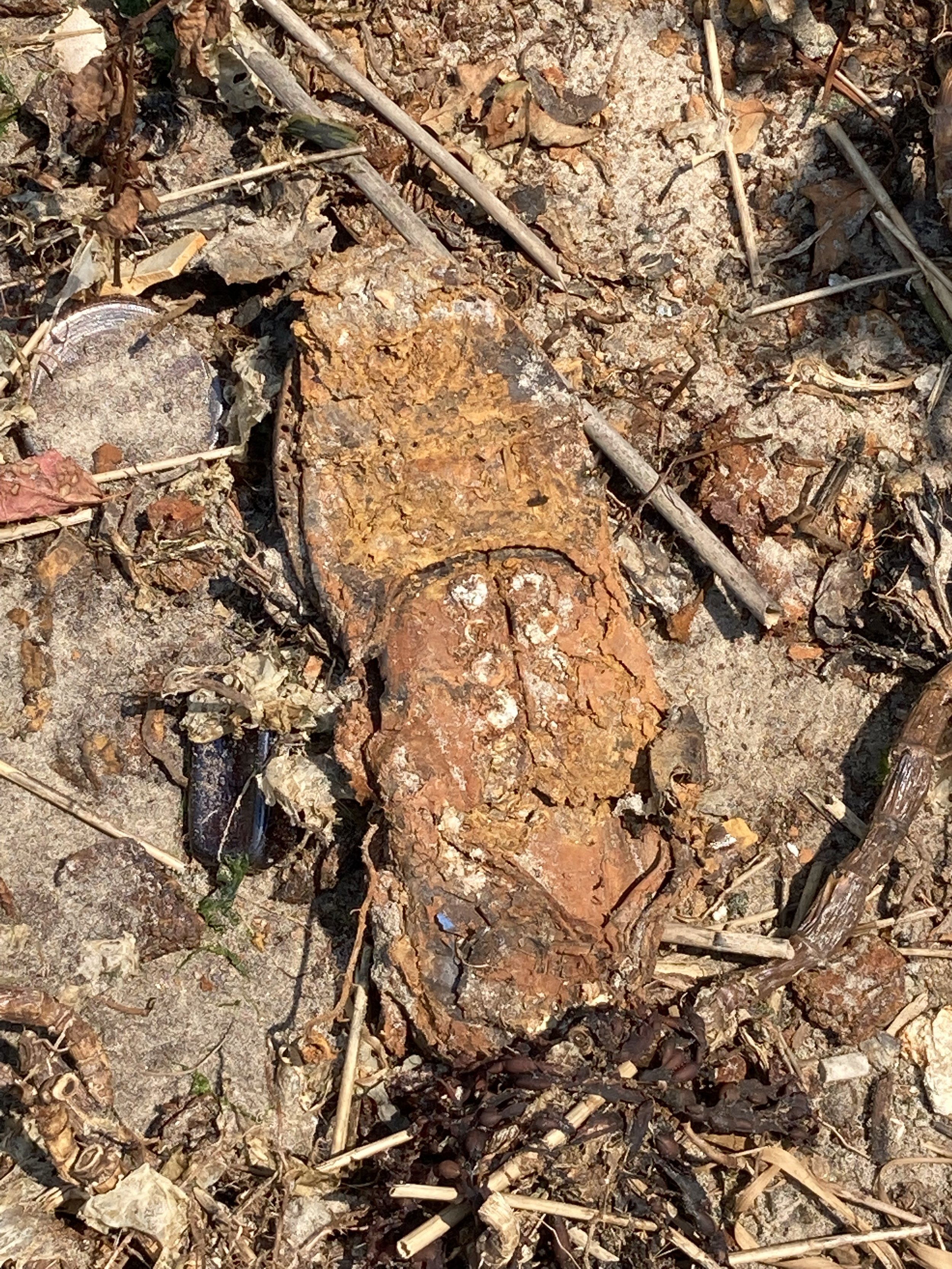
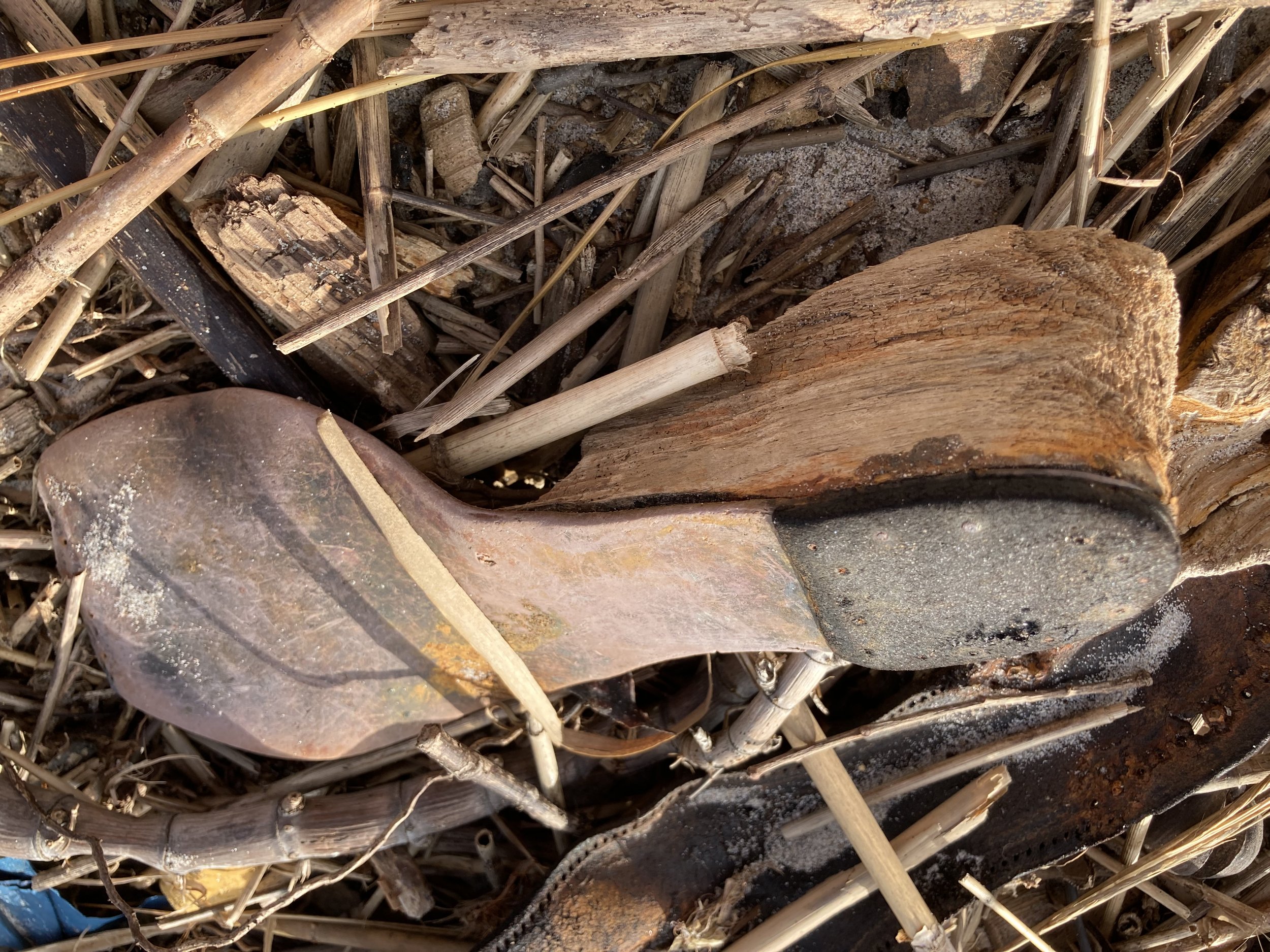
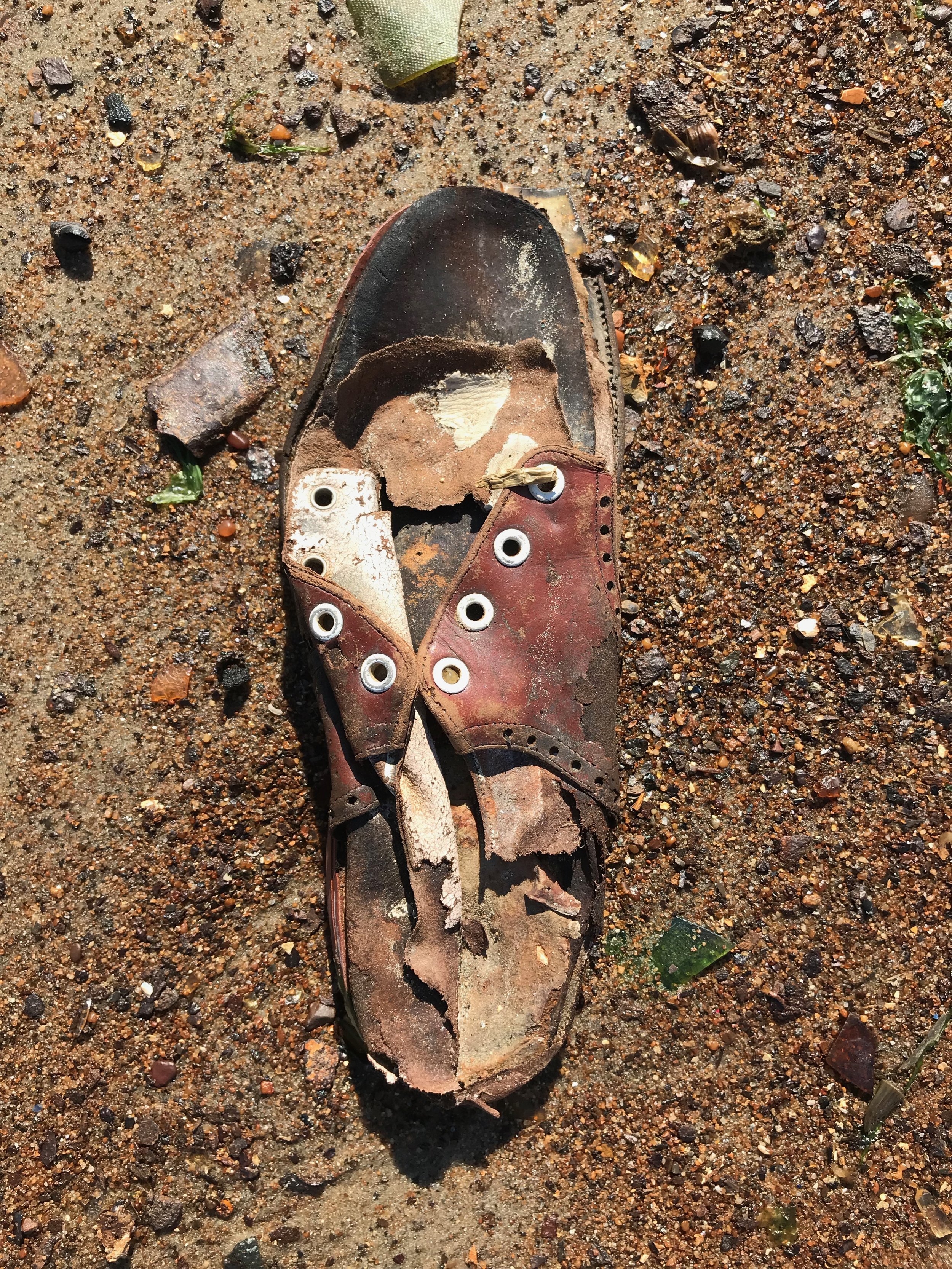
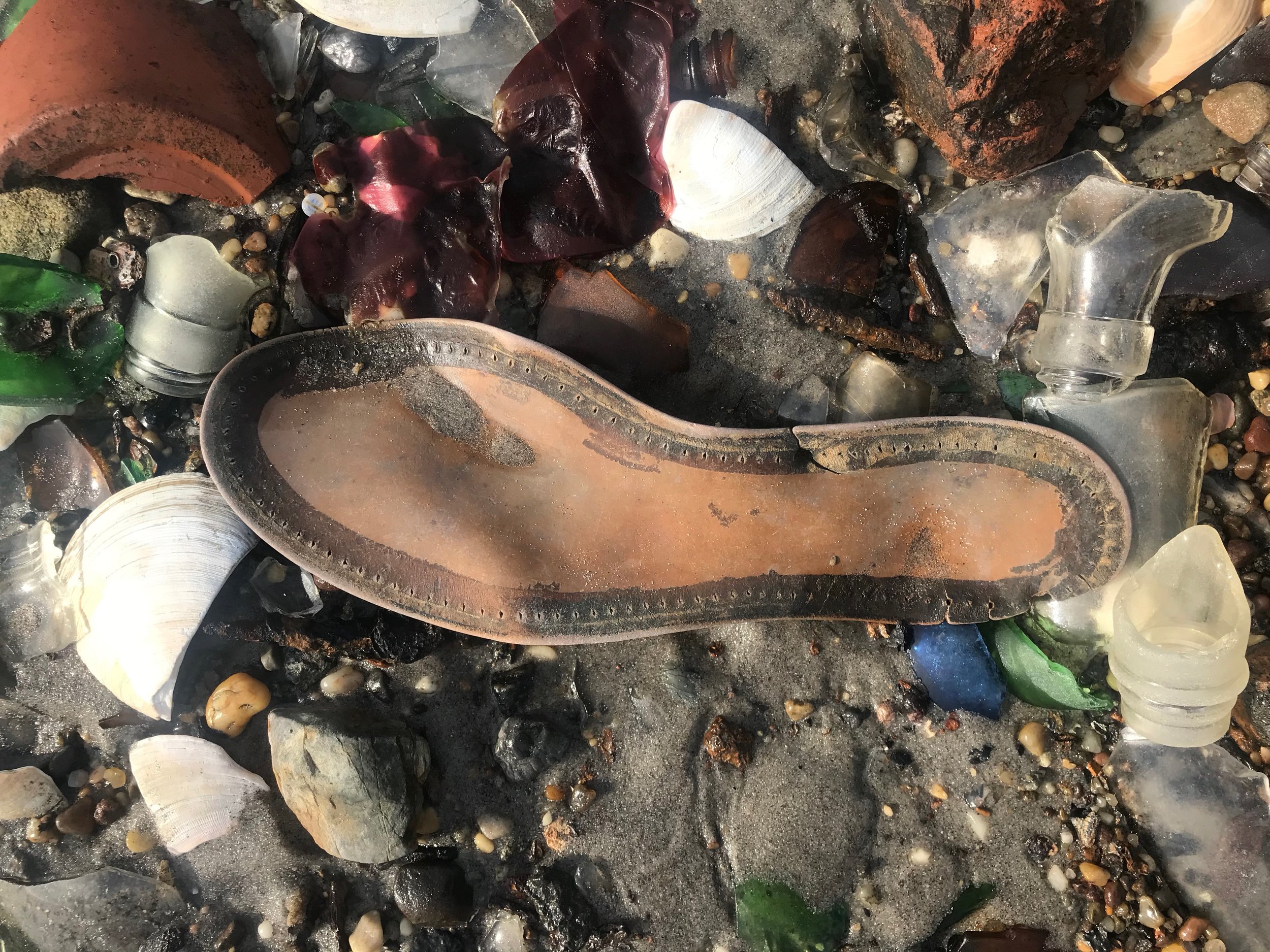


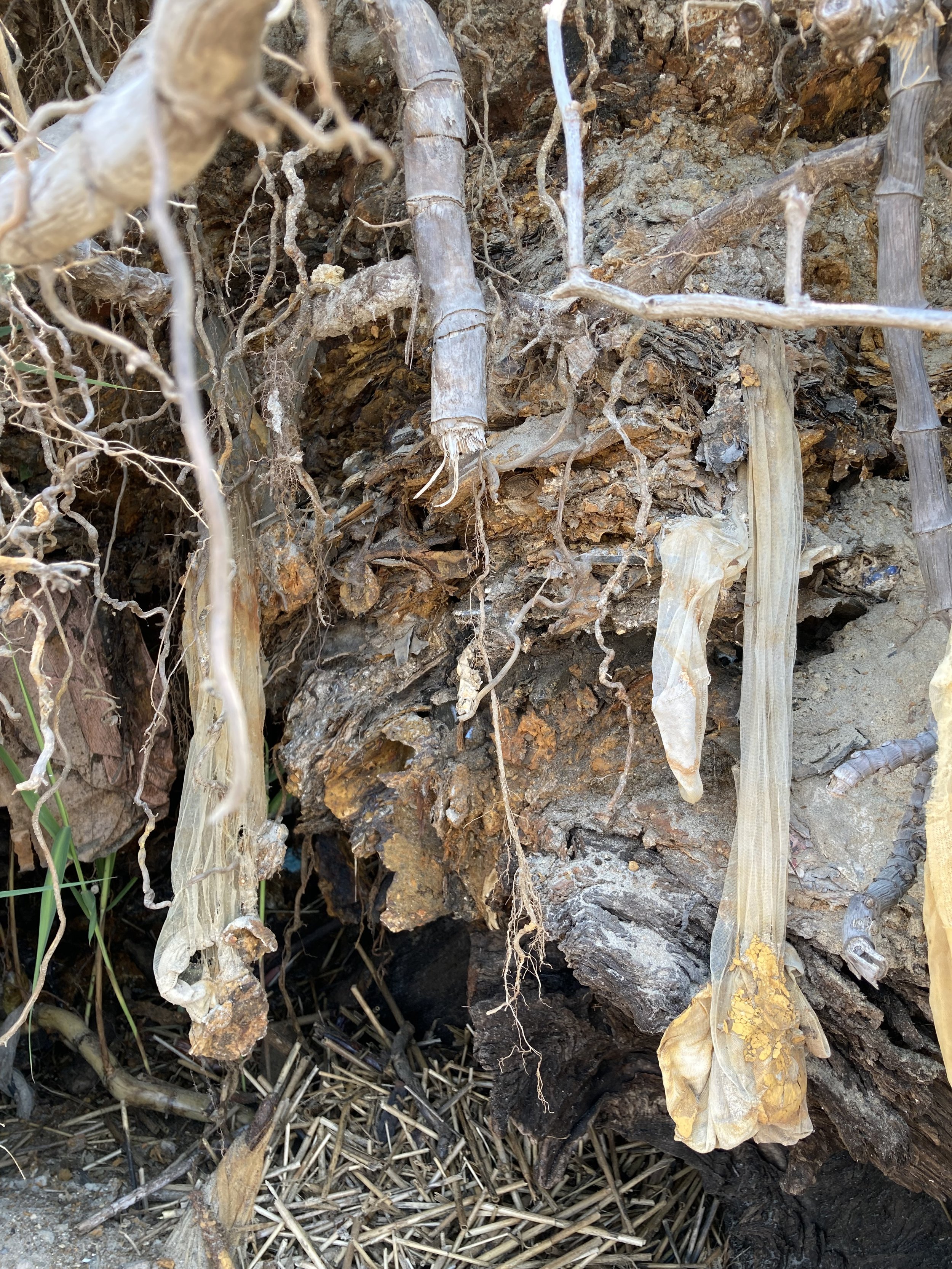
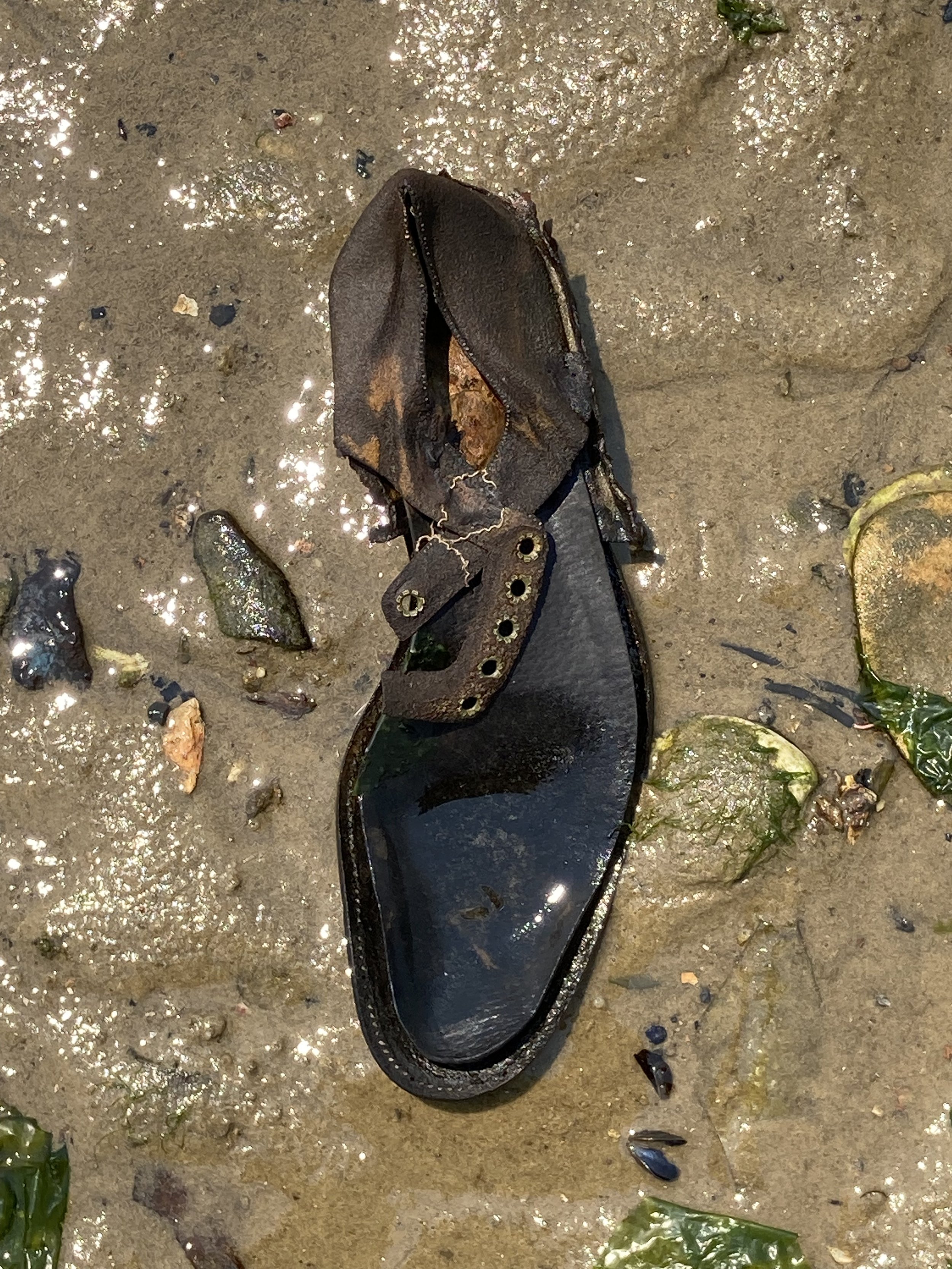

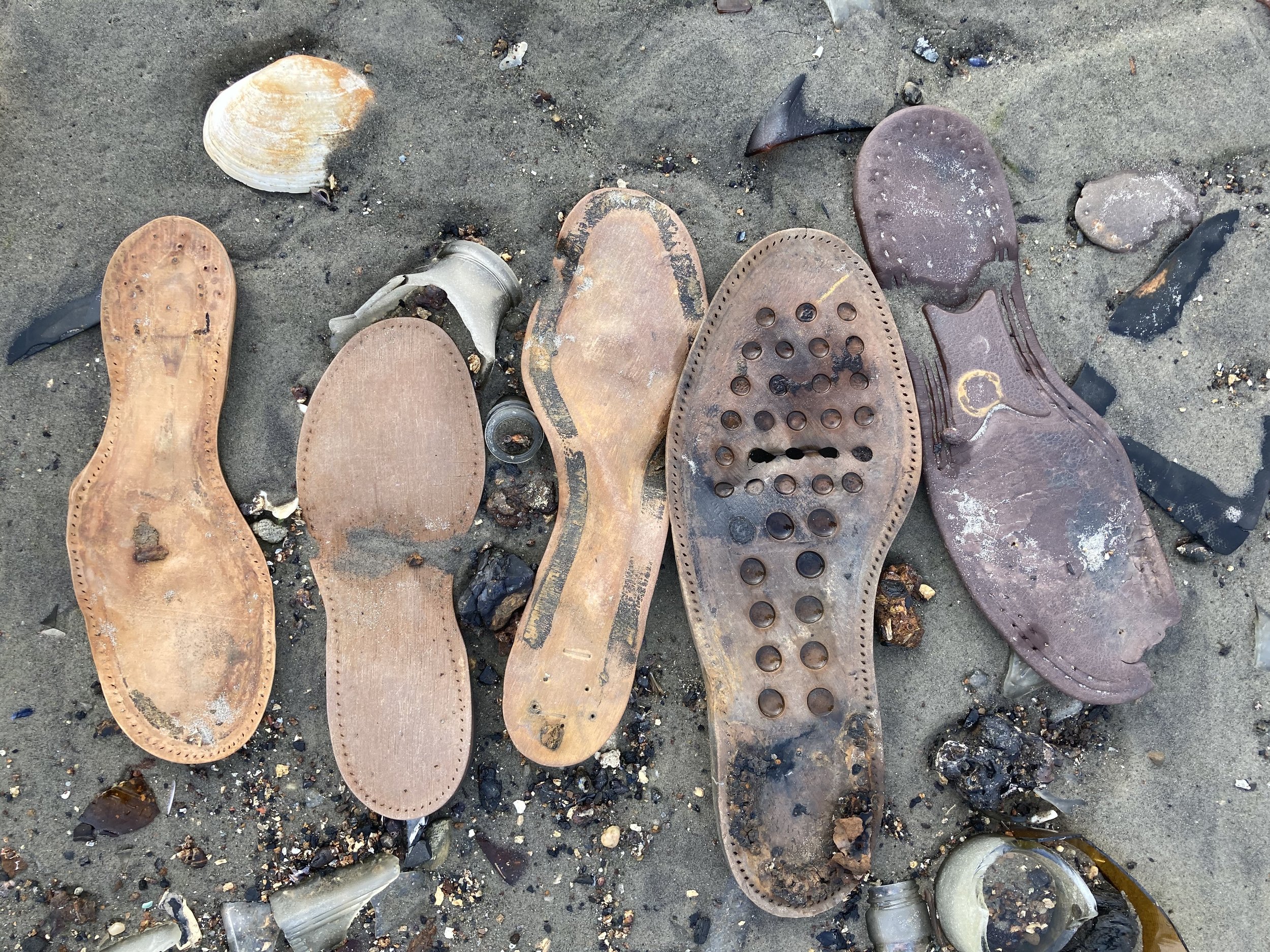
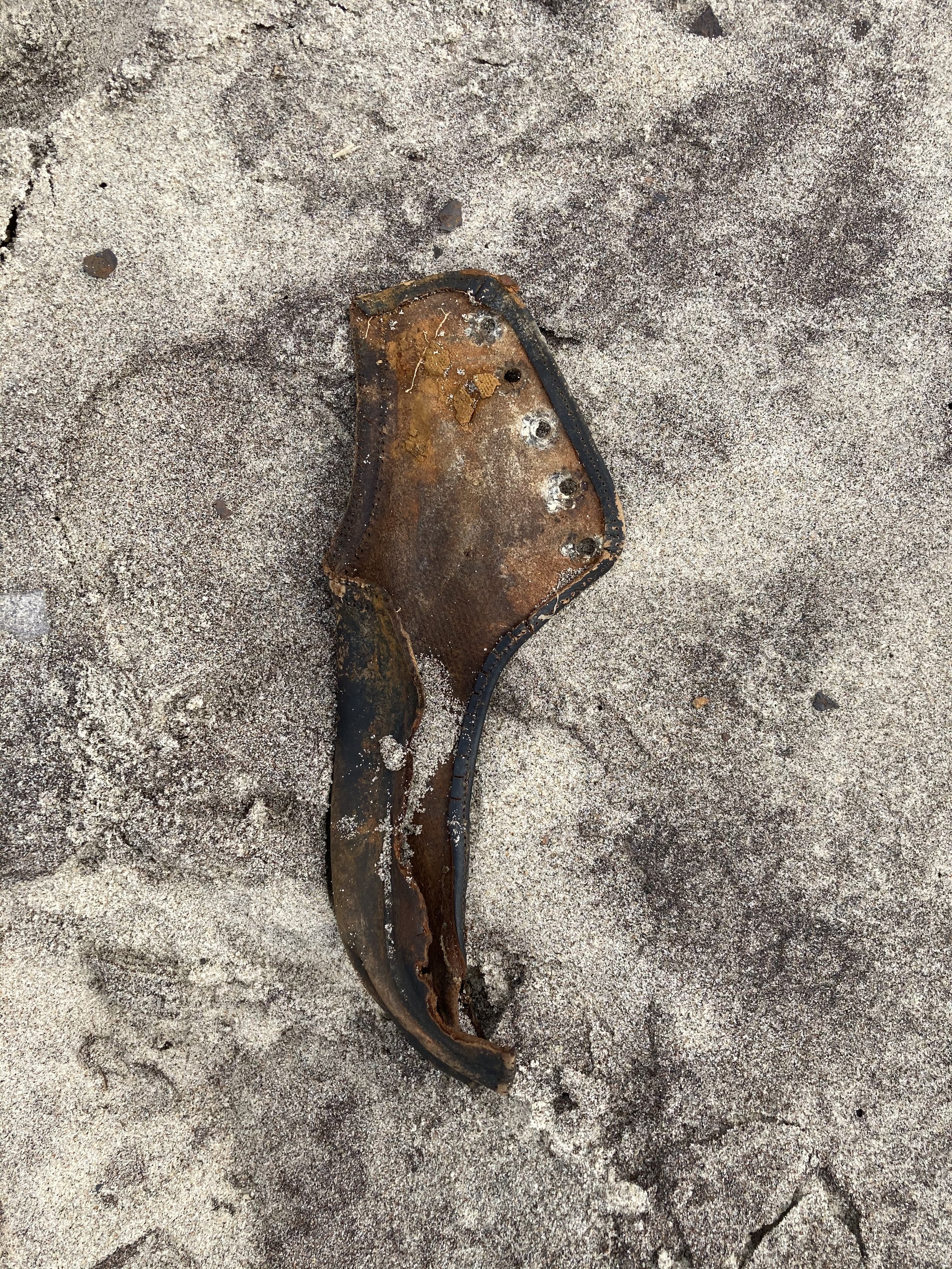
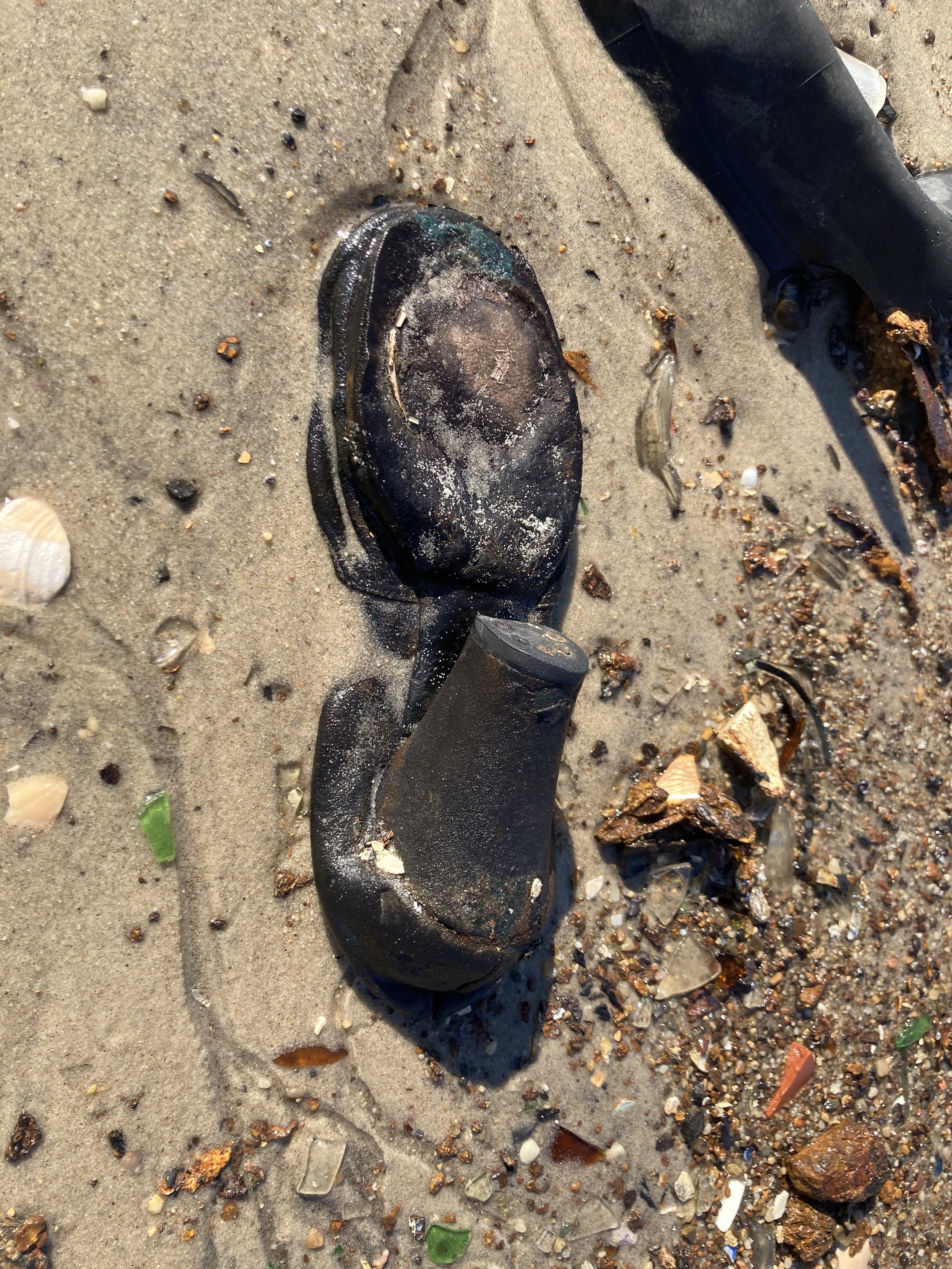
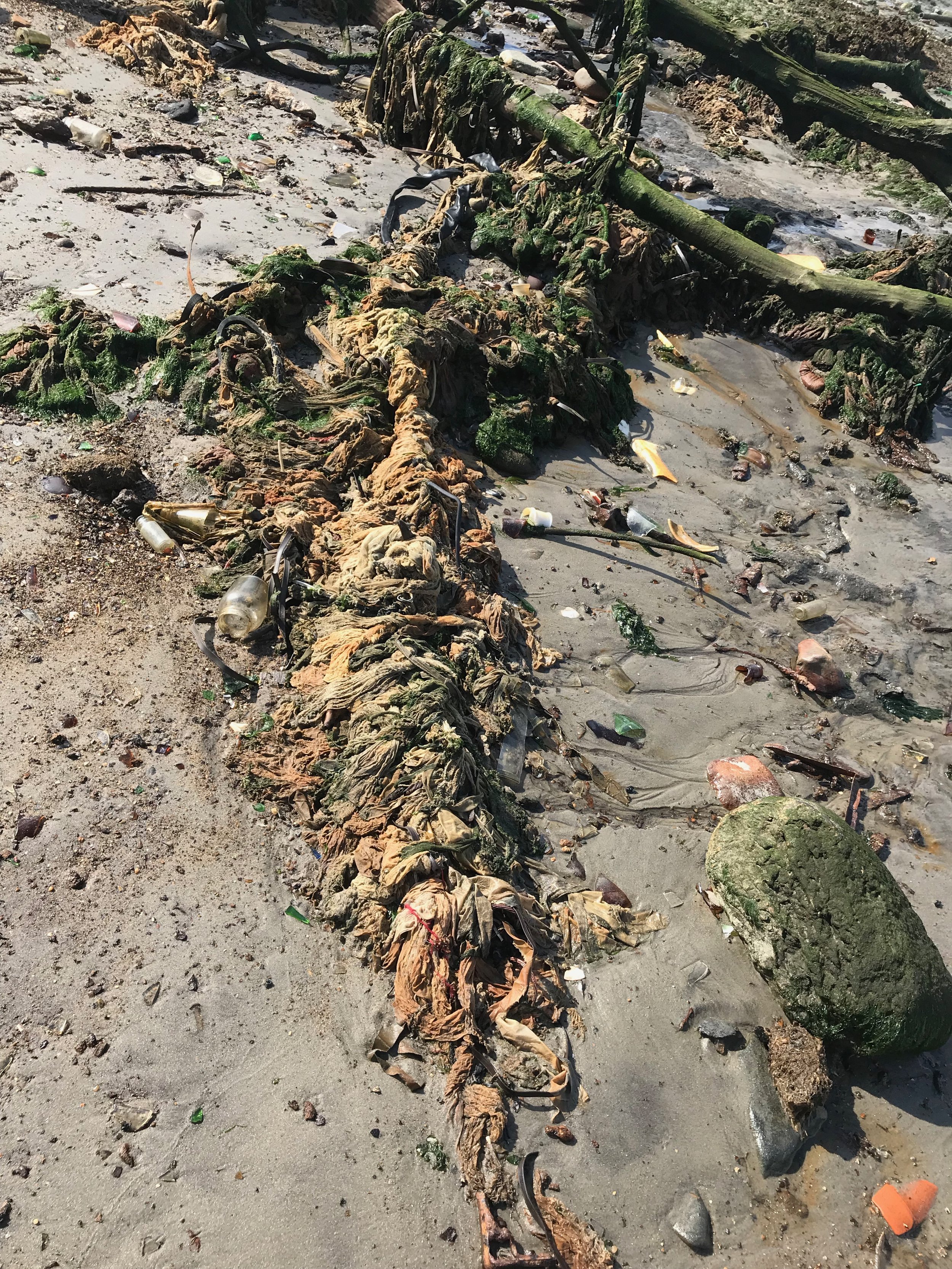
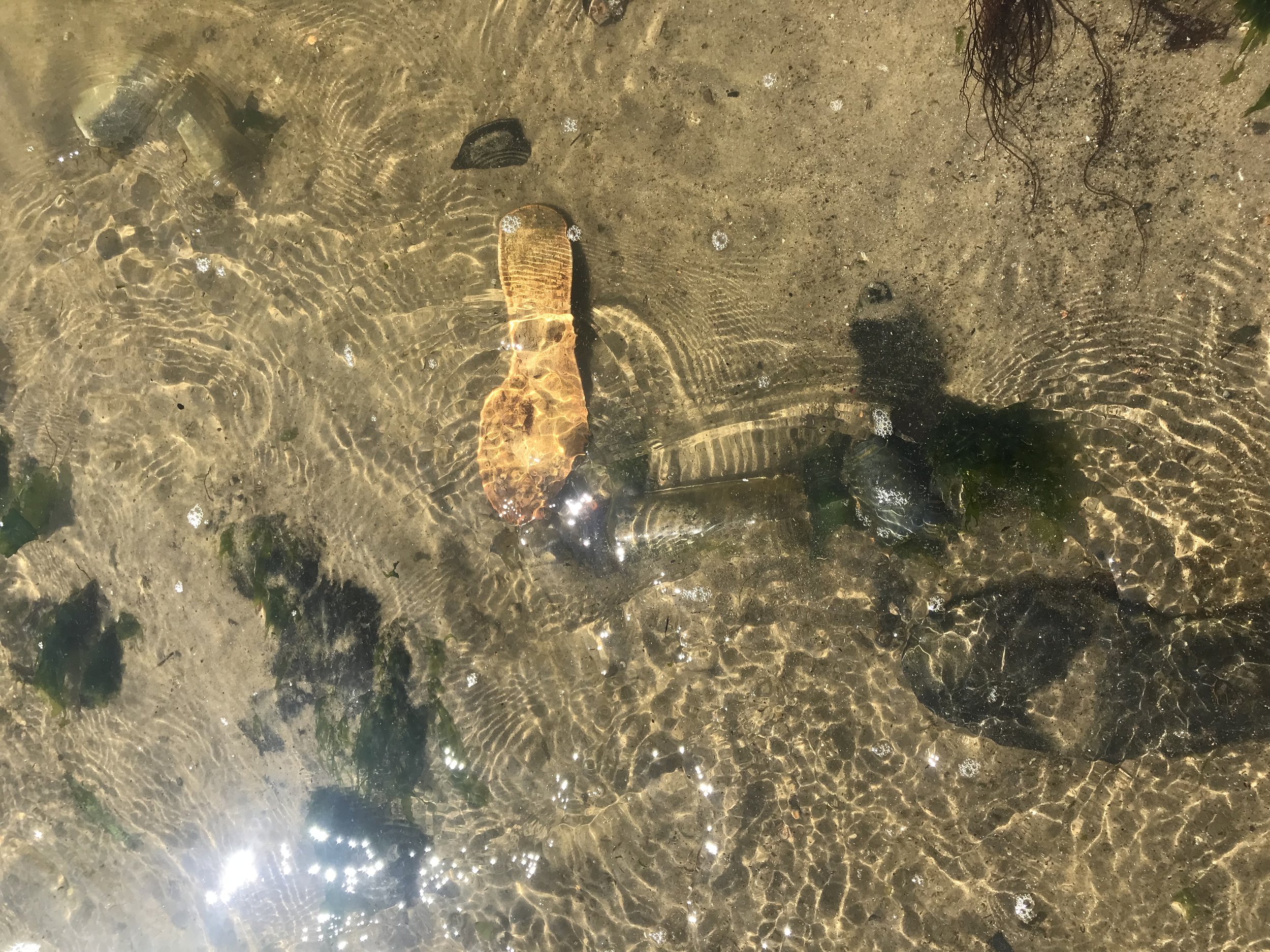

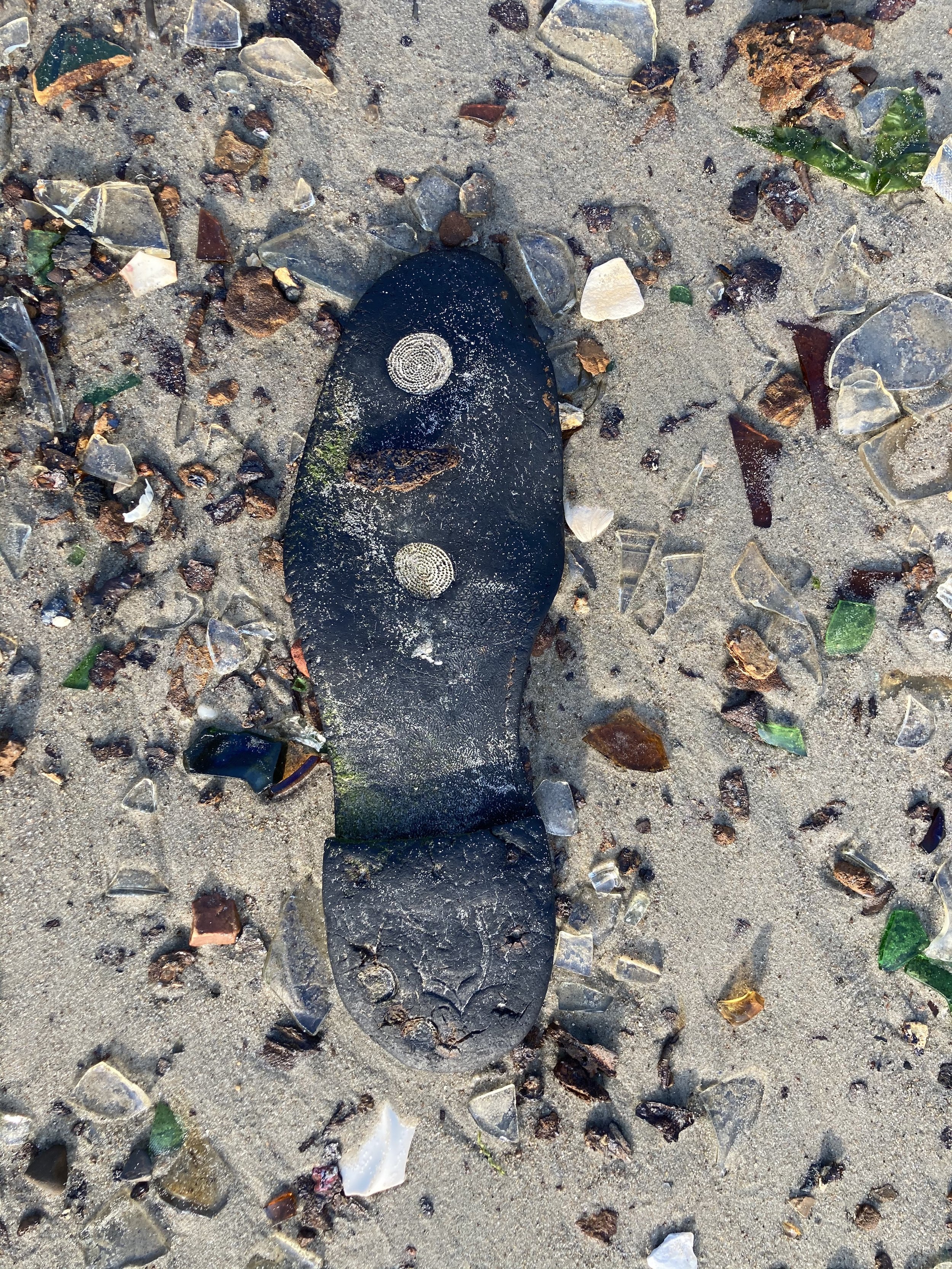
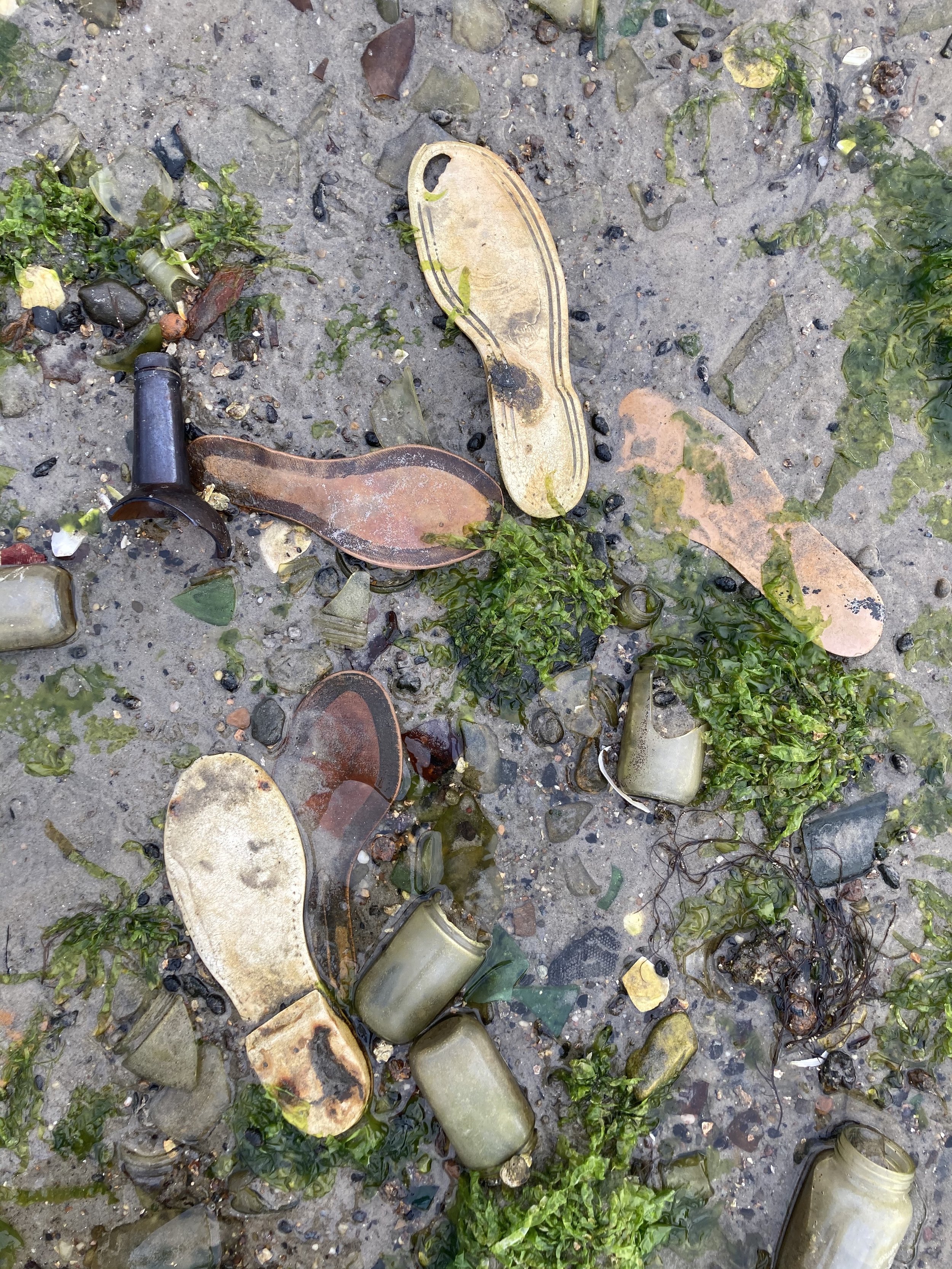
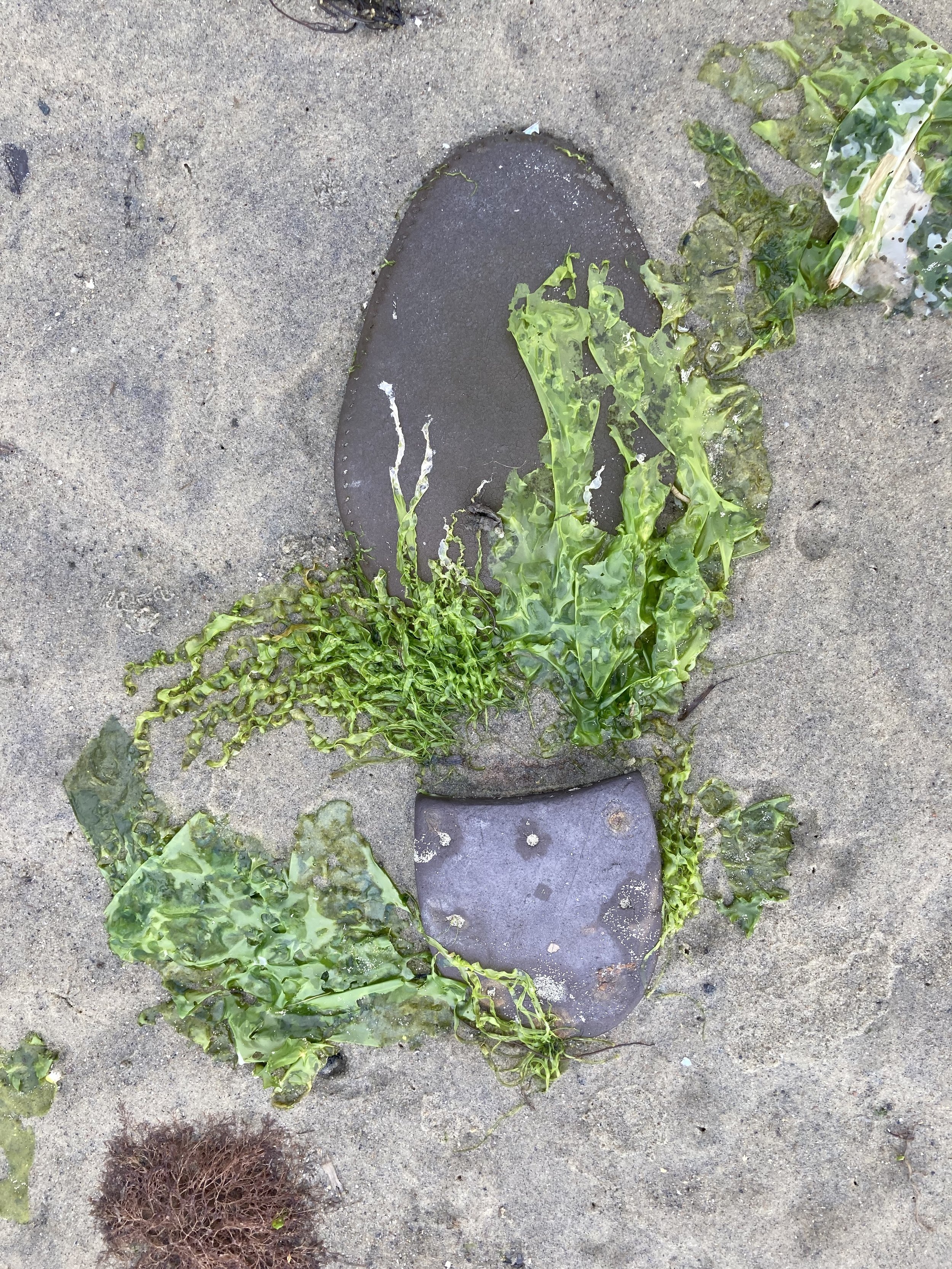
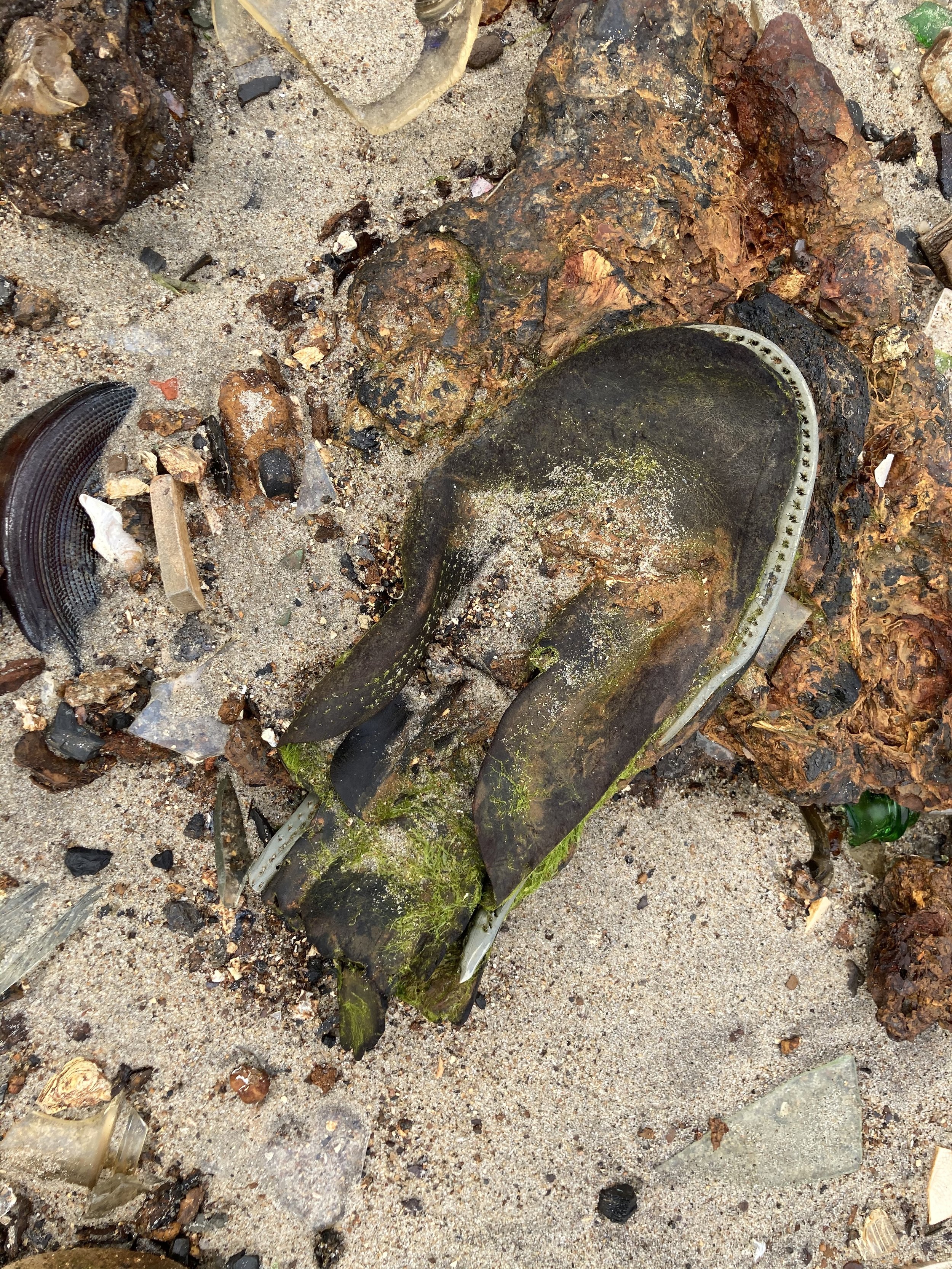
Tile
The pieces of tile found on the beach point to the fact that not only household garbage, but actual buildings, were part of the landfill here. The shiny red tiles are known as smalti. According to the Smithsonian, “Smalti is a traditional enameled-glass mosaic material with highly reflective qualities and a wide range of colors. Made from molten glass poured into flat slabs, cooled, and cut into individual pieces, smalti has been used for more a thousand years throughout the world to produce beautiful mosaic artwork”. So when we see it on the beach, we can think about the manufacturers who made the individual pieces of smalti or other tile, the companies and people who turned it into a floor or wall, and the people in whose homes it existed until the buildings were demolished.
